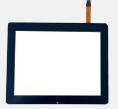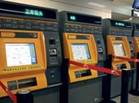Get inside Wall Street with StreetInsider Premium. Claim your 1-week free trial here.
UNITED
STATES
SECURITIES
AND EXCHANGE COMMISSION
Washington,
D.C. 20549
FORM
10
GENERAL
FORM FOR REGISTRATION OF SECURITIES
Pursuant
to Section 12(b) or (g) of The Securities Exchange Act of 1934
WETOUCH
TECHNOLOGY INC.
(Exact
name of registrant as specified in its charter)
| Nevada | 20-4080330 | |
|
(State incorporation or organization) |
(I.R.S. Identification |
| No.29, Third Main Avenue, Shigao Town, Renshou County, Meishan, Sichuan, China |
620500 | |
| (Address of principal executive offices) |
(Zip code) |
Registrant’s
telephone number, including area code: (86) 028-37390666
Copies
to:
Mark
Crone, Esq.
The
Crone Law Group, P.C.
500
Fifth Avenue
Suite
938
New
York, NY 10110
Telephone:
646-861-7891
Securities
to be registered pursuant to Section 12(b) of the Act:
| Title of each class |
Name of each exchange on which |
|
| to be so registered | each class is to be registered |
|
| None | None |
Securities
to be registered pursuant to Section 12(g) of the Act: Common Stock, Par Value $0.001
(Title
of class)
Indicate
by check mark whether the registrant is a large accelerated filer, an accelerated filer, a non-accelerated filer, smaller reporting
company, or an emerging growth company. See the definitions of “large accelerated filer,” “accelerated filer,”
“smaller reporting company,” and “emerging growth company” in Rule 12b-2 of the Exchange Act.
| Large Accelerated Filer |
[ ] | Accelerated Filer |
[ ] |
| Non-Accelerated Filer |
[X] | Smaller reporting company |
[X] |
| Emerging growth company |
[ ] |
If
an emerging growth company, indicate by check mark if the registrant has elected not to use the extended transition period for
complying with any new or revised financial accounting standards provided pursuant to Section 13(a) of the Exchange Act. [ ]
EXPLANATORY
NOTE
We
are filing this General Form for Registration of Securities on Form 10 to register our common stock, par value $0.001 per share
(the “Common Stock”), pursuant to Section 12(g) of the Securities Exchange Act of 1934, as amended (the “Exchange
Act”). Once this Registration Statement is deemed effective, we will be subject to the requirements of Regulation 13A under
the Exchange Act, which will require us to file annual reports on Form 10-K; quarterly reports on Form 10-Q; and current reports
on Form 8-K. We will be required to comply with all other obligations of the Exchange Act applicable to issuers filing registration
statements pursuant to Section 12(g) of the Exchange Act. Unless otherwise noted, references in this Registration Statement to
the “Registrant”, the “Company”, “we”, “our”, or “us” means “Wetouch
Technology Inc.”
FORWARD
LOOKING STATEMENTS
There
are statements in this Registration Statement that are not historical facts or that are based on good faith estimates of management.
These “forward-looking statements” can be identified by use of terminology such as “believe,” “hope,”
“may,” “anticipate,” “should,” “intend,” “plan,” “will,”
“expect,” “estimate,” “project,” “positioned,” “strategy” and similar
expressions. You should be aware that these forward-looking statements are subject to risks and uncertainties that are beyond
our control. For a discussion of these risks, you should read this entire Registration Statement carefully, especially the risks
discussed under the section entitled “Risk Factors.” Although management believes that the assumptions underlying
the forward- looking statements included in this Registration Statement are reasonable, they do not guarantee our future performance,
and actual results could differ from those contemplated by these forward-looking statements. The assumptions used for purposes
of the forward-looking statements specified in the following information represent estimates of future events and are subject
to uncertainty as to possible changes in economic, legislative, industry, and other circumstances. As a result, the identification
and interpretation of data and other information and their use in developing and selecting assumptions from and among reasonable
alternatives require the exercise of judgment. To the extent that the assumed events do not occur, the outcome may vary substantially
from anticipated or projected results, and, accordingly, no opinion is expressed on the achievability of those forward-looking
statements. In light of these risks and uncertainties, there can be no assurance that the results and events contemplated by the
forward-looking statements contained in this Registration Statement will in fact transpire. You are cautioned to not place undue
reliance on these forward-looking statements, which speak only as of their dates. We do not undertake any obligation to update
or revise any forward-looking statements.
TABLE
OF CONTENTS
COMMONLY
USED DEFINED TERMS
Unless
otherwise indicated or the context requires otherwise, references in this disclosure to:
| ● | “China” or the “PRC” are to the People’s Republic of China, excluding Taiwan and the special administrative regions of Hong Kong and Macau for the purposes of this disclosure only; |
|
| ● |
Unless |
|
|
●
● |
“BVI”
“BVI |
|
|
|
● |
“Hong |
| ● | “Sichuan Wetouch” is to Sichuan Wetouch Technology Co., Ltd, a limited liability company organized under the laws of China and a wholly foreign owned subsidiary of Hong Kong Wetouch; |
|
| ● |
“Qixun |
|
● |
“Qihong |
| ● | All references to “RMB” or “Chinese Yuan” is to the legal currency of China; |
|
| ● | All references to “U.S. dollars,” “dollars,” “USD” or “$” are to the legal currency of the United States; and |
|
| ● | “Websites” are to our websites at www.de-wetouch.com and www.wetouch.com.cn, which is only accessible in PRC. |
This
disclosure contains translations of certain RMB amounts into U.S. dollar amounts at specified rates solely for the convenience
of the reader. The relevant exchange rates are listed below:
| For the Six Months Ended June 30, 2020 |
For the Year Ended December 31, 2019 |
For the Year Ended December 31, 2018 |
||||||||||
| Period Ended RMB: USD exchange rate |
7.0651 | 6.9618 | 6.8755 | |||||||||
| Period Average RMB: USD exchange rate |
7.0322 | 6.9081 | 6.6090 | |||||||||
Numerical
figures included in this disclosure have been subject to rounding adjustments. Accordingly, numerical figures shown as totals
in various tables may not be arithmetic aggregations of the figures that precede them.
For
the sake of clarity, this registration statement follows the English naming convention of first name followed by last name,
regardless of whether an individual’s name is Chinese or English. For example, the name of our Chairman will be presented
as “Guangde Cai” even though, in Chinese, Mr. Cai’s name is presented as “Cai Guangde.”
We
have relied on statistics provided by a variety of publicly-available sources regarding China’s expectations of growth.
We did not, directly or indirectly, sponsor or participate in the publication of such materials, and these materials are not incorporated
in this registration statement other than to the extent specifically cited herein. We have sought
to provide current information in this disclosure and believe that the statistics provided in this disclosure remain up-to-date
and reliable, and these materials are not incorporated in this disclosure other than to the extent specifically cited in this
disclosure.
Corporate
History and Structure
Initially
incorporated in August 1992 in Nevada, Gulf West Investment Properties, Inc. was dormant and had no operations for the several
years. On February 26, 2019, the Eighth Judicial District Court in and for Clark County, Nevada, Case No. A-19-787151-B, appointed
Custodian Ventures LLC, an affiliate of David Lazar, as custodian of the Company (the “Custodian”). Mr. Lazar was
appointed as the sole officer and director of the Company. On March 11, 2019, 1,714,286 shares of common stock of the Company
were issued to the Custodian in consideration for the payment of cash and the issuance of a promissory note by the Custodian to
the Company. Effective as of June 11, 2019, the court discharged the Custodian’s duties.
On
June 18, 2020, we consummated the transactions contemplated by a Stock Purchase Agreement among the Company, the Custodian, Qixun
Samoa and Qihong Samoa (Qixun Samoa and Qixun Samoa are referred to as the “Buyers”). Pursuant to the Stock Purchase
Agreement, the Buyers acquired all of the 1,714,286 shares of the Company owned by the Custodian, representing 50.47% of the issued
and outstanding shares of the Company. The Custodian and the Company agreed to indemnify the Buyers from any liabilities of the
Company occurring prior to June 18, 2020, and the promissory note issued by the Custodian to the Company was canceled. Immediately
following the closing, David Lazar resigned as the sole officer and director of the Company and Jiaying Cai was appointed as president,
secretary and treasurer of the Company and as the sole director.
Entry
into a Material Definitive Agreement – Acquisition of BVI Wetouch
On
October 9, 2020, we entered into a share exchange agreement (the “Share Exchange Agreement”) with BVI Wetouch and
all the shareholders of BVI Wetouch (each, a “BVI Shareholder” and collectively the “BVI Shareholders”),
to acquire all the issued and outstanding capital stock of BVI Wetouch in exchange for the issuance to the BVI Shareholders an
aggregate of 28,000,000 shares of our common stock (the “Reverse Merger”). In the Reverse Merger, each ordinary share
of BVI Wetouch was exchanged for 560 shares of common stock of Wetouch. Immediately after the closing of the Reverse Merger on
October 9, 2020, we had a total of 31,396,394 issued and outstanding shares of common stock. As a result of the Reverse Merger,
BVI Wetouch is now our wholly-owned subsidiary.
On
October 12, 2020, Guangde Cai was appointed as an additional director and Chairman of the Company. On October 12, 2020, Mr. Zongyi
Lian was appointed as president and chief executive officer of the Company, and Mr. Yuhua Huang was appointed as chief financial
officer of the Company.
Corporate
History of Wetouch
BVI
Wetouch, a BVI company was established on August 14, 2020 to acquire all the shares of Hong Kong Wetouch. On September 11, 2020,
BVI Wetouch acquired all the outstanding shares of Hong Kong Wetouch from the shareholders of Hong Kong Wetouch in consideration
of the payment of HK$10,000 pursuant to instruments of transfer in accordance with Hong Kong law. As a result of the acquisition,
Hong Kong Wetouch became a wholly-owned subsidiary of BVI Wetouch. The shareholders of HK Wetouch became the shareholders of BVI
Wetouch in said transaction, and therefore the shareholders who controlled HK Wetouch became the controlling shareholders of BVI
Wetouch. See “Security Ownership of Certain Beneficial Owners and Management”.
Hong
Kong Wetouch was incorporated on May 5, 2016 under the laws of Hong Kong. On July 19, 2016, Hong Kong Wetouch acquired all the
shares of Sichuan Wetouch, a PRC company established May 6, 2011. As a result of the acquisition, Sichuan Wetouch became a wholly
owned subsidiary of Hong Kong Wetouch.
As
BVI Wetouch owns all the outstanding shares of Hong Kong Wetouch, which, in turn, owns all the outstanding shares of Sichuan Wetouch,
the Company owns indirectly all the business of Sichuan Wetouch. As a result of the Reverse Merger in which the Company acquired
all the outstanding shares of BVI Wetouch, Hong Kong Wetouch and Sichuan Wetouch become our indirect wholly-owned subsidiaries.
The
Reverse Merger was accounted for as a recapitalization effected by a share exchange, wherein BVI Wetouch is considered the acquirer
for accounting and financial reporting purposes. The assets and liabilities of BVI Wetouch have been brought forward at their
book value and no goodwill has been recognized.
BVI
Wetouch and its shareholders are not U.S. Persons (as that term is defined in Regulation S of the Securities Act of 1933, as amended
(the “Act”)) and they acquired our shares in the Reverse Merger outside of the United States. In issuing the 28,000,000
shares of our common stock to the shareholders of BVI Wetouch, we claim an exemption from the registration requirements of the
Act pursuant to Regulation S promulgated thereunder since, among other things, the offer or sale was made in an offshore transaction
and no directed selling efforts were made in the United States by the issuer, a distributor, any of their respective affiliates,
or any person acting on behalf of any of the foregoing. In addition, each recipient of the shares certified that she/he/it is
not a U.S. person and is not acquiring the securities for the account or benefit of any U.S. person and agreed to resell such
securities only in accordance with the provisions of Regulation S, pursuant to registration under the Act, or pursuant to an available
exemption from registration; and agreed not to engage in hedging transactions with regard to such securities unless in compliance
with the Act.
Name
Change/Reverse Stock Split
Effective
September 30, 2020, we changed our name from Gulf West Investment Properties, Inc. to Wetouch Technology Inc. by filing an Amended
and Restated Articles of Incorporation with the Nevada Secretary of State to give effect to a name change. The Amended and Restated
Articles also effectuated a reverse split of our authorized, issued and outstanding shares of common stock on a 70 for 1 new basis
whereby each 70 shares of outstanding common stock was exchanged for one (1) share of new common stock (the “Reverse Split”
and, for avoidance of doubt, all share amounts set forth herein shall be post Reverse Split unless otherwise specified) and, consequently,
our authorized common stock increased to 300,000,000 shares of common stock and 10,000,000 shares of preferred stock, and our
then issued and outstanding common shares decreased from 237,742,066 to 3,396,394 shares, all with a par value of $0.001.
As
a result of the name change of the company, we changed our trading symbol from “GLFW” to “WETH”.
Unless
specifically stated in this Form 10, all share and per share numbers relating to our common stock prior to the effectiveness of
the Reverse Split have been adjusted to give effect to the Reverse Split.
The
following diagram illustrates our corporate structure:
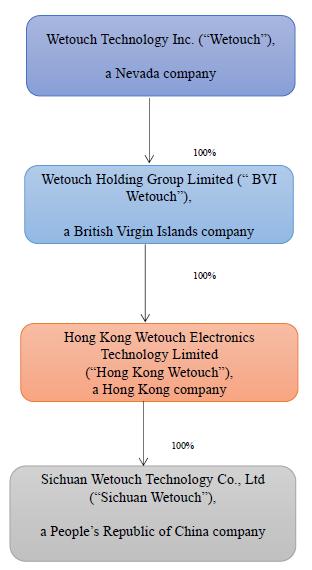
Business
Overview
Through
our indirect wholly-owned subsidiary Sichuan Wetouch, we are engaged in the manufacturing, sales and servicing of medium to large
sized projected capacitive touchscreens. We specialize in large-format touchscreens, which are developed and designed for a wide
variety of markets and industries, including financial, automotive, industrial human-machine interface designed for industrial
applications (“HMI”), point of sale (“POS”), gaming, lottery, medical, human-machine interface, and other
specialized industries. Our product portfolio comprises medium to large sized projected capacitive touchscreens ranging from 7.0
inch to 42 inch screens. In terms of the structures of touch panels, we offer (i) Glass-Glass (“GG”), primarily used
in GPS/car entertainment panels in mid-size and luxury cars, industrial HMI, financial and banking terminals, point of sale and
lottery machines; (ii) Glass-Film-Film (“GFF”), mostly used in high-end GPS and entertainment panels, industrial HMI,
financial and banking terminals, lottery and gaming industry; (iii) Plastic-Glass (“PG”), typically adopted by touchscreens
in GPS/entertainment panels motor vehicle GPS, smart home, robots and charging stations; and (iv) Glass-Film (“GF”),
mostly used in industrial HMI.
Maintaining
the industry standards for product quality and sustainability is one of our core values. Touchscreens produced by the Company
not only have long life span and are low maintenance, but also have strong anti-interference, anti-corrosion, multi-touch capability
and high light-transmittance ratio and stability. We sell our products both domestically in China and internationally, covering
major areas in China, including but not limited to the eastern, southern, northern and southwest regions of China, South Korea,
Taiwan. We have shipped products to several European countries such as Spain and Germany and have established a strong and diversified
client base.
As
a high technology company, we have received certifications from domestic and international institutions, such as ISO9001 Quality
Management Systems (QMS) Certification of Registration, ISO 14001 Environmental Management System (EMS) Certification of Registration,
and RoHS SGS Certification (Restriction of Hazardous Substance Testing Certification).
Background
Since
inception in 2011, Sichuan Wetouch has positioned itself in the professional touchscreen industry. Touchscreen is an input and
output device and layered on top of an electronic visual display of an information processing system, allowing individuals to
access information and interact with the device simply by touching the device’s screen with a finger or a specialized tool.
Accordingly, the ease of use offered by touchscreen-based systems makes the systems well suited both for applications for the
general public and for specialized applications for institutional users and trained computer users.
Although
touchscreen has become mainstream only over the last decade, the concept of a touch-sensitive computer display was developed as
early as 1965. Since the introduction of Apple’s iPhone in 2007, touchscreen technology has made rapid inroads into various
electronics markets, with a number of other significant companies also incorporating this technology into their products (as opposed
to using a mouse, keyboard, keypad or trackball). Viewed today as the most important tool to facilitate interaction between the
individual and machine, touchscreen technology is now an integral part of a wide range of computing products.
Sichuan
Wetouch obtained approximately $2.0 million from the provincial government in China and commenced production of capacitive touchscreens
in September 2013. A capacitive touchscreen is a control display that uses the conductive touch of a human finger or a specialized
device for input and output.
We
generate revenue through sales of our various touchscreen products. For the twelve months ended December 31, 2019, we recognized
approximately $40 million in revenues and approximately $8.8 million for the six-month period ended June 30, 2020. As our products
are medium and large size projected capacitive touchscreens, we believe that we will benefit from our strong position in the overall
touchscreen market.
Products
We
offer medium to large sized projected capacitive touchscreens, which can be categorized as set forth below:
| Product Type |
Description | Application | ||
|
Product
|
This is a double glass layer product, with a Solid clear adhesive (SCA) between a layer of conductive glass and a layer of tempered glass. This type of touch screen has the advantage of being able to be easily manufactured, with relatively low cost. However, products of this type in large sizes will require a greater degree of signal penetration and long distance transmission technology which will be more technically challenging to achieve. |
Medium and high end GPS/car entertainment, finance, POS and lottery machines. |
||
|
Product
|
This product uses a double layer of conductive films, with an optically clear adhesive (OCA) between a layer of a tempered glass. The product’s functionality comes from the interaction between the multiple layers of conductive film and glass, which does not require extensive coating, lithography and etching. This type of product is anti- explosive and has relatively low manufacturing cost. However, products of this type in large sizes will require greater degree of signal penetration and long distance transmission technology which will be more technically challenging to achieve. |
Financial, gaming and lottery, and medical industries |
||
|
Product
|
This product uses a layer of conductive glass, with an optically clear adhesive (OCA) between a layer of surface intensify PMMA (Poly Methyl methacrylate acid). The product’s functionality relies on the interaction between the layers of conductive glass. Like the G+F+F type, this product does not require extensive coating, lithography and etching and has relatively low manufacturing cost. |
Motor vehicle GPS, smart home, robots and charging stations |
||
|
Product
|
This product uses a layer of conductive film, with an optically clear adhesive (OCa) between a layer of tempered glass. The product’s functionality relies on the interaction between the layers of conductive glass. Like the G+F+F type, this product does not require extensive coating, lithography and etching and has relatively low manufacturing cost. |
Industrial HMI |
As
of June 30, 2020, product types G+F+F and G+G constitute our main stream products, accounting for approximately an average of
67.22% and 27.31%, respectively, of our total revenues, with product types P+G and G+F accounting for an average of 2.48% and
3.00%, respectively. As of December 31, 2019, product types G+F+F and G+G constitute our main stream products, accounting for
approximately an average of 42.93% and 47.96%, respectively, of our total revenues, with product types P+G and G+F accounting
for an average of 6.27% and 2.84%, respectively.
Applications
of the Company’s Products
Our
products are used and applied in the production of a variety of products in a wide range of industries. Our products’ areas
of common application are set out below.
Point
of Sale (“POS”) Machines
 |
POS machines, or point of sale machines, are used in a variety of retailers, including in department stores, supermarkets, convenience stores, boutiques, restaurants, hotels, banks, logistics, telecommunication and other service industries. Due to the frequent use of touchscreens on POS machines, Wetouch has adopted the use of high-end materials which give its products’ a competitive advantage through their anti-scratch, high temperature resistance and long use life qualities. |
Car
Navigators and Entertainment Systems
|
|
Touchscreen products for car navigation and entertainment systems take advantage of the popularity of touchscreen consoles in motor vehicles. Wetouch touchscreens are particularly suitable for motor vehicles GPS and entertainment systems, due to their resistance to temperature variation. These touchscreens may be used in both inbuilt and external car systems. |
ATM
Machines and Other Financial Machines
|
|
ATMs and other similar machines use touchscreens or have a touchscreen function. The touchscreens need to have high-endurance capacities as they are used by the general public and are often located outdoors, such that these screens must withstand weathering. Wetouch’s products are particularly suited to use in these machines as they are highly durable. |
Industrial
Equipment
|
|
Touchscreens in the industrial sector have broad application, and play an important role in industrial HMI. Industrial HMI systems and equipment often require touchscreen functions. These touchscreens must be resistant to interference, stable and have good touch sensitivity. Wetouch’s products fully meet these requirements, being temperature variation resistant, dustproof and waterproof. |
Gaming
Machines
|
|
The new generation of gambling machines are commonly adopting a touchscreen function. Gaming machines with a touchscreen function provide an enhanced experience for uses via multi-touch sensory touch systems. Wetouch’s products are therefore popular amongst gambling machine manufacturers. |
Lottery
Machines
|
|
The self-service lottery ticket vending machine is provided with an operator-oriented touch display device, an input device, a modem, a cash register, printer and security authentication function. The touchscreen display facilitates easy and user-friendly operation of the lottery machine. |
Ticket
Machines and Kiosks
|
|
Self-service ticket machines and kiosks contain touchscreen interfaces which are durable and have a long use life. These self-service machines are used in daily lives, and as such there is a continuous demand for high quality and effective touchscreens. Wetouch’s products are widely used in these ticketing machines and kiosks. |
As
of June 30, 2020, we had approximately $2.6 million in revenues generated from the sales of automotive touchscreens, accounting
for 29.5% of our total revenues, with industrial HMI touchscreens accounting for 33.8%, gaming touchscreens accounting for 17%,
POS touchscreens for 7.4%, multi-functional printer touchscreens for 12.1% and other touchscreen products accounting for 0.1%
of our total revenues. For the twelve months ended December 31, 2019, we had approximately $8.0 million in revenues generated
from the sales of automotive touchscreens, accounting for 44.7% of our total revenues, with industrial HMI touchscreens accounting
for 21.3%, gaming touchscreens accounting for 17.8%, POS touchscreens accounting for 8.5%, multi-functional printer touchscreens
accounting for 7.5% and other touchscreen products (applied in financial terminals, ticket vending machines, and self-service
kiosks, etc.) accounting for 0.1% of our total revenues.
Our
Suppliers
We
place purchase orders with suppliers of raw materials for the production of our products. In the past two and half years, we have
entered into over twelve thousand purchase orders. The general terms of the purchase order include:
| ○ | The product name, specification, quantity, price, order amount and delivery date are specified in each order. |
|
| ○ | Delivery method, packaging, inspection, breach terms and dispute resolution are determined in accordance with each order. |
|
| ○ | Payment terms are specified in each order. |
|
| ○ | The products supplied must adhere to the nationally prescribed quality standards or industry standards. Each product order must be accompanied by the supplier’s product quality certification. |
|
| ○ | The supplier will unconditionally accept returns and refund in full the purchase price for the products or make replacements if the products supplied do not meet industry or nationally prescribed quality standards, are damaged or significantly different than the same product. |
We
do not consider any of our suppliers to be material to our business. We do not have any exclusive supply agreement so that we
can utilize any supplier we determine. Also, none of our supply agreements are long-term contracts.
Marketing
and Sales
The
Company has adopted a made-to-order production model as follows:
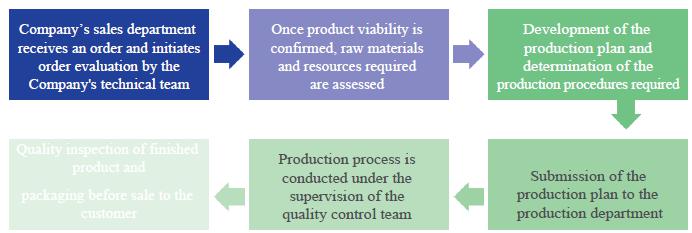
This
process is subject to continuous review and monitoring by the management team in consultation with engineers, electricians and
other technical experts to ensure that finished products are of the highest quality and meet customer requirements and ISO9001
Quality Management Systems (QMS) standard.
In
order to the maintain product safety and a high standard of product quality, the Company implements a strict set of quality control
policies and inspection protocols. These policies and protocols are enforced by the Company’s senior management and officers
along every step of the production to post-production process. Their management guidelines along with key company quality policies
are set out below:
The
Company has strict production standards in place that governs what constitutes acceptable quality for its products. This ensures
that the Company’s products fulfill product certification standards. The production team adheres to the following criteria
when making its product standard assessment:
| Item | Industry Standards |
Wetouch’s Standards |
||
| Reaction time |
Less than or equal to 5 milliseconds |
Less than or equal to 5 milliseconds |
||
| Surface hardness |
6H | 7H~9H | ||
| Operational temperature |
0~70 degrees Celsius |
-30~80 degrees Celsius |
||
| EsD requirement |
6~12KV | 8~15KV | ||
| Transparency | 86% | 88% | ||
| Touch conditions |
Normal touch and ordinary conditions |
Waterproof and anti-saline solution and anti-corrosion and Anti interference |
The
products are inspected before they are delivered and sold to our customers. All products must pass the following inspections:
| ● | Cosmetic inspection: conducted under optimum temperatures (20-22 degrees Celsius) and white fluorescent lighting. The product is observed by the naked eye to spot for any defects, scratches and cracks, panel discoloration, opacity, foreign fibers and spots. The Company has in place quantitative standards with respect to each of these areas to determine the level of cosmetic acceptability. |
|
| ● | Function tests: all products undergo functionality testing. Touchscreen products are connected electronically via standard cabling systems to computers, to measure and test for effective functionality and to screen for any abnormalities. |
|
| ● | Stress testing: all products undergo product stress testing by being subject to humidity, temperature and corrosion stress testing. The products are tested for their functionality in high and low humidity environments as well as in extreme temperatures. The products are inspected to determine whether damage or physical change is caused by exposure to high and low temperatures. |
|
| ● | Third party organizations are engaged to conduct independent testing for hazardous substances. The products are also tested for their corrosive resistance to saline solutions. |
The
Company’s products are produced to order and are marketed directly by its own sales personnel. The Company does not rely
on distributors to sell its products.
Customers
For
the three-month periods ended June 30, 2020 and 2019, five customers accounted for 20.5%, 19.5%, 16.5%, 15.5% and 14.9%, and five
customers accounted for 16.6%, 12.4%, 17.3%, 12.1% and 18.6%, respectively, of the Company’s revenues. For the six-month
periods ended June 30, 2020 and 2019, five customers accounted for 18.5%, 17.4%, 17.0%, 14.9% and 12.1%, and five customers accounted
for 16.5%, 10.8%, 17.9%, 11.1% and 17.2%, respectively, of the Company’s revenues. Each of these customers are subject to
the same terms of the framework agreements described below.
We
source our customers through multiple channels: (i) from our own research through Search Engine Optimization (“SEO”)
and outreach, (ii) through referrals from our present customers, (iii) through our Websites; and (iv) through industry exhibitions/expos.
Our
main target markets are economically developed countries and regions, including eastern, southern, northern and southwest regions
of China, South Korea, Spain and Germany. We believe that we have established a strong client base, including global well-known
institutional customers. Overseas sales were $13.5 million in 2019 as compared to $9.1 million in 2018.
We
target these overseas customers mainly via our online marketing efforts. In order to market our products, occupy more market share
and secure more quality customer, we frequently participate in, and promote our products at, specific touchscreen technology exhibitions
held internationally.
We
have sales framework agreements with our major customers and direct purchase orders with our other customers. In the past two
and half years, we have entered into approximately 569 orders under both sales framework agreements and through direct purchase
orders.
The
key terms of the framework agreements provide:
| ○ | The designated product and scope of services, including but not limited to the latest product brochure, product testing, installation and other support services. |
|
| ○ | Price base and price annual increase, and annual minimum purchase amount. |
|
| ○ | Delivery and quantity subject to purchase order. |
|
| ○ | Delivery method and payment terms. |
|
| ○ | The term of the sale framework agreement, usually five (5) years. |
|
| ○ | After-sale services, technique support and quality guaranty of three (3) years from delivery date. |
|
| ○ | Liability of the parties, including customer’s liability of providing product technique requirements to us, if any. |
|
| ○ | Breach of contract terms, including a late charge of 0.3% per day for each and every date delay of delivery. |
Pursuant
to these agreements, we are obligated to pay a late charge of 0.3% per day for each and every date we delay delivery of our products
without advance negotiations and thus cause losses to our customers; and provide after-sale services to our customers and compensate
their losses if we fail to provide such services. Any violation of the terms of these agreements could result in the termination
of the agreements and we may be responsible for all economic losses.
The
key terms of the purchaser order provide:
| ○ | The product name, specification, quantity, price, order amount and delivery date are specified in each order. |
|
| ○ | Delivery method and packaging requirements are specified in each order |
|
| ○ | Payment terms are specified in each order. |
|
| ○ | Breach of order terms by customers in some orders. |
|
| ○ | Guaranty terms in some orders. |
Pursuant
to the purchaser orders, either through frame agreements or direct orders, we are obligated to provide 1) products per the specific
requirements of the orders, and 2) unconditional defect guaranty for our products. Any violation of the order terms may result
in termination of the orders or replacement of our products.
As
of the date of the disclosure, we never violated any framework agreements or purchase orders and therefore never incurred any
economic losses as a result of our agreements; no penalty has ever been incurred by us due to our delay of delivering products
and we always comply with all terms set forth in the frame agreements and purchase orders.
For
the three months ended June 30, 2020, the revenues generated from our domestic customers amounted to approximately $3.2 million,
constituting approximately 61.2% of our total revenues, with overseas customers accounting for approximately $2 million, constituting
approximately 38.8% of our total revenues, respectively. For the twelve months ended December 31, 2019, the revenues generated
from our domestic customers amounted to approximately $26.5 million, constituting approximately 66.2% of our total revenues. Revenues
generated from our overseas customers amounted to approximately $13.5 million, constituting approximately 33.8% of our total revenues.
Seasonality
of Business
There
is no significant seasonality in our business.
Inventory
Inventory
consists of orders for finished products which have a scheduled shipment date within twelve months of the order, raw materials
and work-in-process products. Because a large percentage of the Company’s orders require products to be shipped in the same
quarter in which the order was received, and because orders in the inventory may be canceled and delivery schedules may be changed,
the Company’s inventory at any particular date is not necessarily indicative of actual sales for any succeeding period.
Research
and Development
The
Company is committed to its own research and development projects as well as partnership initiatives in order to continuously
and systematically upgrade its touchscreen technology. The Company currently employs 10 people in its R&D department.
Intellectual
Property
Our
business is dependent on a combination of trademarks, patents, domain names, trade names, trade secrets and other proprietary
rights in order to protect our intellectual property rights. As of the date of this disclosure, we have one registered trademark
in mainland China and one registered trademark in Australia, and ten registered patents in the PRC.
Trademarks
Set
forth below is a detailed description of our trademarks:
| Country |
Trademark |
Application Date |
Registration Number |
Registration Date |
Classes | Status | ||||||
| China | WeTouch | 09/28/2011 | 10019079 | 01/28/2013 | 9 | Registered | ||||||
| Australia | WeTouch | 1796442 | 9, 42 |
Registered |
Patents
Set
forth below is a detailed description of our registered patents:
| Patent Certificate No. | Patent No. | Patent Name | Patent Application Date | Patent Type | Patent Term | Status | ||||||
| 2223457 | ZL201120357438.7 | Low cost capacitive touchscreen | 09/22/2011 | Utility Model | 10 years from Patent Application Date | Registered | ||||||
| 2235518 | ZL201120357365.1 | Capacitive touchscreen uneasily affected by external interference | 09/22/2011 | Utility Model | 10 years from Patent Application Date | Registered | ||||||
| 3700175 | ZL201420086995.3 | Dispenser tube support structure | 02/28/2014 | Utility Model | 10 years from Patent Application Date | Registered | ||||||
| 3701522 | ZL201420084742.2 | Antistatic capacitive touchscreen | 02/27/2014 | Utility Model | 10 years from Patent Application Date | Registered | ||||||
| 3703829 | ZL201420084735.2 | Anti-electromagnetic interference capacitive touchscreen | 02/27/2014 | Utility Model | 10 years from Patent Application Date | Registered | ||||||
| 3704079 | ZL201420084741.8 | High sensitive and projected capacitive touchscreen | 02/27/2014 | Utility Model | 10 years from Patent Application Date | Registered | ||||||
| 3704825 | ZL201420087006.2 | Compression panels of screen laminating machines | 02/28/2014 | Utility Model | 10 years from Patent Application Date | Registered |
| 6146599 | ZL201620733872.3 | Cooling capacitive touchscreen | July 13, 2016 | Utility Model | 10 years from Patent Application Date | Registered | ||||||
| 6204352 | ZL201620734173.0 | OGS Touchscreen | July 13, 2016 | Utility Model | 10 years from Patent Application Date | Registered | ||||||
| 6387677 | ZL201620733760.8 | Size-adjustable universal type capacitive touchscreen | July 13, 2016 | Utility Model | 10 years from Patent Application Date | Registered |
Patents
registered in China cannot be enforced in other jurisdictions to which the Company supplies its products. We currently have registered
patents only in China. We plan to submit patent registration applications in our target market jurisdictions including United
States, Europe, Australia, Japan, Korea, Taiwan, India and Russia. The estimated costs for these patent registrations would be
approximately $160,000. We estimate that it may take two to three years to obtain the patent registrations in above countries.
Environmental
Issues
Our
business in China is subject to various pollution control regulations in China with respect to noise, water and air pollution
and the disposal of waste. Specifically, the major environmental regulations applicable to us include the PRC Environmental Protection
Law, the PRC Law on the Prevention and Control of Water Pollution, the PRC Law on the Prevention and Control of Air Pollution,
the PRC Law on the Prevention and Control of Solid Waste Pollution, and the PRC Law on the Prevention and Control of Noise Pollution.
We
originally received Pollutant Discharge Permit from Renshou County environmental protection agency which expired on May 15, 2019.
Pursuant to a Statement on Change of Pollutant Discharge Permit to Stationary Pollution Source Registration Form dated September
1, 2020, the environmental protection system in Renshou County, Sichuan, was changed from permission to registration due to local
administrative division change. Therefore, upon submission of all required documentation, we are registered under the new system
by issuance of Stationary Pollution Source Registration Form.
The
Company is not aware of any investigations, prosecutions, disputes, claims or other proceedings in respect of environmental protection,
nor has the Company been punished or can foresee any punishment to be made by any environmental administration authorities of
the PRC.
Competitive
Strength
We
are dedicated to the production of high quality products that are tailored to the customers’ requirements and commercial
needs. Our competitive strengths include:
| ● | Our economy of scale lowers our cost and appeals to big clients with large quantity purchase orders; |
|
| ● | Our centralized manufacturing facility enables us to product all different products within the same location with consistent batch consistency and quality assurance; |
|
| ● | Our proprietary technology allows us to produce touchscreens with high light-transmittance ratio and stability, low maintenance with minimal or no need of recalibration after production, long life span, anti-interference, anti-corrosion and multi-touch capability, supporting up to 20 points of contact with the screen and 20 gestures, and in different structures and sizes for a wide range of different applications. |
Our
Growth Strategies
We
will continue to adhere to our business principles of providing high quality and safe products to our consumers and promoting
social responsibility. We believe that our pursuit of these goals will lead to sustainable growth driven by our capacity expansion
based on market demand, solidify our position in the industry, and create long-term value for our shareholders, employees and
other stakeholders.
Improve
existing technology. We intend to improve our existing technology and occupy more market share. Our products are categorized
into the following three main structures: GG (Glass + Glass), GFF (Glass + Film + Film), and PG (Plastic Glass). GG is mainly
used in automobile and banking & finance industry. We plan to make technological improvements on GG structure and mainly focus
on improving its production capability and delivering quality products for brand customers. GFF is mostly applied in industrial
HMI, lottery and gaming industry. We plan to continue to concentrate on high-end industrial HMI products. PG is primarily employed
in smart home, robots and charging stations industry. We plan to upgrade the production line of PG to improve its production capability
and make it more adaptable to changes in product size. We have developed the industry 4.0 intelligent system, which are still
under testing as of the date of this disclosure. Upon successfully passing the testing and registering the patent, we plan to
apply it to all kinds of manufacture industries. As of the date of this disclosure. we have sufficient funds to effectuate those
plans.
Solidify
our industry position by gaining additional market share. Our goal is to strengthen our market position and accelerate
our expansion by expanding our scale and gaining additional market share. We plan to increase investment in our business and expand
our production capacity through horizontal or vertical acquisitions, strategic partnership and joint venture. We plan to invest
additional capital in technology research and development and acquiring new equipment to increase production capacity. In addition,
we plan to participate in more expos or exhibitions domestically and internationally. With more exposure and promotion, our product
and brand will be better recognized. Currently we have no agreements or letters of intent for any acquisitions, partnerships or
ventures.
Uphold
our commitment to product quality. We intend to uphold our commitment to product quality to ensure consistently high standards
throughout our operations. We intend to achieve greater traceability of our products and maintain the highest quality standards
in all of our business units. To this end, we plan to continue to maintain our quality monitoring systems across the entire operation
by strictly selecting suppliers and meeting client’s technology requirements, closely monitoring quality, keeping records
of everyday operations, and complying with the national and local law and regulations on product quality, employees, environment
sustainability. We believe such practice largely conform with industry’s best practice in China.
Expand
our sales and distribution network. We hope to expand our sales and distribution network to penetrate new geographic markets,
further gaining market share in existing markets and accessing a broader range of customers. We will continue to expand our sales
network, leveraging our local resources to quickly enter new markets, while also minimizing requirements for capital outlay. We
plan to focus on brand clients and concentrate on high-end industry such as industrial HMI, banking and finance, medical instruments,
military, aviation, POS and increase our presence in both new and existing markets.
Enhance
our ability to attract, incentivize and retain talented professionals. We believe our success greatly depends on our ability
to attract, incentivize and retain talented professionals. With a view to maintaining and improving our competitive advantage
in the market, we plan to implement a series of initiatives to attract additional and retain mid- to high-level personnel, including
formulating a market-oriented employee compensation structure and implementing a standardized multi-level performance review mechanism.
Competition
The
markets for touchscreen products are highly competitive and subject to rapid technological change. The Company believes that the
principal competitive factors in its markets are product characteristics such as touch performance, durability, optical clarity
and price, as well as supplier characteristics such as quality, service, delivery time and reputation. The Company believes that
it competes favorably with respect to these factors, although there can be no assurance that the Company will be able to continue
to compete successfully in the future.
In
spite that touchscreen products are highly competitive as a whole, we face few competition as we produce medium to large size
touchscreens which are specially tailored to certain industries, such as industrial HMI, gaming, financing, lottery, automotive,
lottery, medical, POS, HMI, etc, and requires more stable supply, longer guaranty and life span, compared with small size touchscreens
which is characteristic with shorter life cycle and guaranty but more demand in quantity.
We
believe the following companies may be our competitors:
Apex
Material Technology Corp., founded in 1998, is committed to the development and innovation of resistive and projected capacitive
(PCI or PCAP) total touch solutions. With its headquarter based in Keelung, Taiwan and a subsidiary located in Milwaukee, Wisconsin,
it designs and manufactures advanced high-performance touch products for industrial and medical applications. Compared with us,
although it has longer history and geographical advantage, it mainly focuses on resistive touch panels and recently started production
of capacitive touchscreens which are mostly applicable to industrial HMI and medical industry, while our products are more widely
used in a variety of industries.
Elo
Touch Systems Inc., based and headquartered in the United States, has a history of over 40 years for the production of touchscreens.
Its product portfolio includes a broad selection of interactive touchscreen displays from 10-70 inches, all-in-one touchscreen
computers, OEM touchscreens and touchscreen controllers and touchscreen monitors. Compared with us, although it has a longer history
and geographical advantage when it comes to the competition for U.S. customers and other international customers, it just starts
the production of capacitive touchscreens which are mostly applicable to POS and inquiry machines while our products are more
widely used in a variety of industries.
AbonTouch
System Inc, established in 2005, mainly focuses on manufacturing and sales of mid to large size (7”~86”) of “Projective
Capacitive Sensor”, (7”~21.5”) of “Five-Wire Resistive Zero-Bezel Touch Panel and (5”~21.5”)
of “Five- Wire Resistive Touch Panel”. Compared with us, although it has a longer history and geographical advantage,
it mainly focuses on resistive touch panels and just started production of capacitive touchscreens which are mostly applicable
to POS, inquiry machine and industrial HMI, while our products are more widely used in a variety of industries.
Employees
As
of the date of this disclosure, we have a total of 126 employees. We have no part time employees or independent contractors.
As
required by regulations in China, we participate in various employee social security plans that are organized by local governments,
including pension, unemployment insurance, childbirth insurance, work-related injury insurance, medical insurance and housing
insurance. We are required under Chinese law to make contributions to employee benefit plans at specified percentages of the salaries,
bonuses and certain allowances of our employees, up to a maximum amount specified by the local government from time to time.
Our
employees are not represented by a labor organization or covered by a collective bargaining agreement. We believe that we maintain
a good working relationship with our employees and to date, we have not experienced any significant labor disputes.
Regulations
Overview
We
operate our business in the PRC under a legal regime consisting of the National People’s Congress, which is the country’s
highest legislative body, the State Council, which is the highest authority of the executive branch of the PRC central government,
and several ministries and agencies under its authority, including the Ministry of Industry and Information Technology, State
Administration for Industry and Commerce (“SAIC”), the State Administration for Market Regulation and their respective
local offices.
This
section sets forth a summary of the most significant rules and regulations that affect our business activities in the PRC.
Regulations
Relating to Foreign Investment in China
On
March 15, 2019, the National People’s Congress promulgated the Foreign Investment Law, which came into effect on January
1, 2020 and replaced three existing laws on foreign investments in China, namely, the PRC Equity Joint Venture Law, the PRC Cooperative
Joint Venture Law, and the Wholly Foreign-Owned Enterprise Law, together with their implementation rules and ancillary regulations.
The Foreign Investment Law embodies an expected PRC regulatory trend to rationalize its foreign investment regulatory regime in
line with prevailing international practice and the legislative efforts to unify the corporate legal requirements for both foreign-
and domestic-invested enterprises in China. The Foreign Investment Law establishes the basic framework for the access to, and
the promotion, protection, and administration of foreign investments in view of investment protection and fair competition.
Pursuant
to the Foreign Investment Law, “foreign investment” refers to investment activities directly or indirectly conducted
by one or more natural persons, business entities, or otherwise organizations of a foreign country within China, or foreign investors,
and the investment activities include the following situations: (i) a foreign investor, individually or collectively with other
investors, establishes an Foreign Investment Entity (“FIE”) in China; (ii) a foreign investor acquires stock shares,
equity shares, shares in assets, or other similar rights and interests of an enterprise within China; (iii) a foreign investor,
individually or collectively with other investors, invests in a new project in China; and (iv) investments in other means as provided
by laws, administrative regulations, or the State Council.
Investment
activities in the PRC by foreign investors are principally governed by the Guidance Catalogue of Industries for Foreign Investment,
or the Catalogue, which was promulgated and is amended from time to time by the Ministry of Commerce, or the MOFCOM, and the National
Development and Reform Commission, or the NDRC. Industries listed in the Catalogue are divided into three categories: encouraged,
restricted and prohibited. Industries not listed in the Catalogue are generally deemed as constituting a fourth “permitted”
category. According to the Catalogue, touchscreen manufacturing is classified as industry where foreign investments are permitted.
Furthermore,
the Foreign Investment Law provides that FIEs established according to the existing laws regulating foreign investment may maintain
their structure and corporate governance within five years after the implementation of the Foreign Investment Law.
In
addition, the Foreign Investment Law also provides several protective rules and principles for foreign investors and their investments
in China, including, among others, that local governments must abide by their commitments to the foreign investors; FIEs are allowed
to issue stocks and corporate bonds; expropriation or requisition of the investment of foreign investors is prohibited except
for special circumstances, in which case statutory procedures must be followed and fair and reasonable compensation must be made
in a timely manner; mandatory technology transfer is prohibited; and the capital contributions, profits, capital gains, proceeds
out of asset disposal, licensing fees of intellectual property rights, indemnity or compensation legally obtained, or proceeds
received upon settlement by foreign investors in China may be freely remitted inward and outward in Renminbi or foreign currencies.
Also, foreign investors or FIEs should be imposed legal liabilities for failing to report investment information in accordance
with the requirements.
On
December 26, 2019, the PRC State Council approved the Implementation Rules of Foreign Investment Law, which came into effect on
January 1, 2020. The Implementation Rules of Foreign Investment Law restates certain principles of the Foreign Investment Law
and further provides that, among others, (i) if the legal form or the governing structure of an FIE established prior to the effective
date of the Foreign Investment Law does not comply with the compulsory provisions of the PRC Company Law or the PRC Partnership
Enterprises Law, such FIE should complete amendment registration accordingly no later than January 1, 2025; if it fails to do
so, the enterprise registration authority will not process other registration matters of the FIE and may publicize such non-compliance;
and (ii) the provisions regarding transfer of equity interests, distribution of profits and remaining assets as stipulated in
the joint venture contracts of an existing FIE may survive the Foreign Investment Law during its joint venture term.
Regulations
on Environmental Protection
Environmental
Protection Law
The
Environmental Protection Law of the PRC, or the Environmental Protection Law, was promulgated and effective on December
26, 1989, and most recently amended on April 24, 2014. This Environmental Protection Law has been formulated for the purpose of
protecting and improving both the living environment and the ecological environment, preventing and controlling pollution, other
public hazards and safeguarding people’s health.
According
to the provisions of the Environmental Protection Law, in addition to other relevant laws and regulations of the PRC, the
Ministry of Environmental Protection and its local counterparts take charge of administering and supervising said environmental
protection matters. Pursuant to the Environmental Protection Law, the environmental impact statement on any construction
project must assess the pollution that the project is likely to produce and its impact on the environment, and stipulate preventive
and curative measures; the statement shall be submitted to the competent administrative department of environmental protection
for approval. Installations for the prevention and control of pollution in construction projects must be designed, built and commissioned
together with the principal part of the project.
Permission
to commence production at or utilize any construction project shall not be granted until its installations for the prevention
and control of pollution have been examined and confirmed to meet applicable standards by the appropriate administrative department
of environmental protection that examined and approved the environmental impact statement. Installations for the prevention and
control of pollution shall not be dismantled or left idle without authorization. Where it is absolutely necessary to dismantle
any such installation or leave it idle, prior approval shall be obtained from the competent local administrative department of
environmental protection.
The
Environmental Protection Law makes it clear that the legal liabilities of any violation of said law include warning, fine,
rectification within a time limit, compulsory cease operation, compulsory reinstallation of dismantled installations of the prevention
and control of pollution or compulsory reinstallation of those left idle, compulsory shutout or closedown, or even criminal punishment.
Order
on Ecosystem by The Ministry of Ecology and Environment 2019 Classification-based Management on Fixed Pollutant Source
Pursuant
to the Order on Ecosystem by The Ministry of Ecology and Environment, which was issued on July 28, 2017 and most recently amended
on December 20, 2019, The Ministry of Ecology and Environment implements a classification-based management on the environmental
impact assessment, or EIA, of pollutants according to pollutant amount and the impact of the pollutants on the environment as
below
| ● | For those pollutant discharge units with large amount of pollutants and significant environmental impacts, the key management on a pollutant discharge permit is required; |
| ● | For those pollutant discharge units with small amount of pollutants and small environmental impacts, the simplified management on a pollutant discharge permit is required; and |
| ● | For those pollutant discharge units with very small amount of pollutants and very small environmental impacts, the pollutant discharge registration form is required. |
The
touchscreen manufacturing is classified as to fill in a Registration Form. Pursuant to a Statement on Change of Pollutant Discharge
Permit to Stationary Pollution Source Registration Form by the local government dated September 1, 2020, the environmental protection
system in Renshou County, Sichuan, was changed from permission to registration due to local administrative division change. Therefore,
upon submission of all required documentation, we are registered under the new system by filling in Stationary Pollution Source
Registration Form.
Regulations
on Consumer Rights Protection
Our
business is subject to a variety of consumer protection laws, including the PRC Consumer Rights and Interests Protection Law,
which was amended in 2013 and became effective on March 15, 2014. It imposes stringent requirements and obligations on business
operators. Failure to comply with these consumer protection laws could subject us to administrative sanctions, such as the issuance
of a warning, confiscation of illegal income, imposition of fines, an order to cease business operations, revocation of business
licenses, and potential civil or criminal liabilities.
As
of the date of this disclosure, we are not aware of any warning, investigations, prosecutions, disputes, claims or other proceedings
in respect of customer rights protection, nor have we been punished or can foresee any punishment to be made by any government
authorities of the PRC.
Regulations
on Intellectual Property Rights
Regulations
on Trademark
Trademarks
are protected by the PRC Trademark Law adopted in 1982 and subsequently amended as well as the Implementation Regulation of the
PRC Trademark Law adopted by the State Council in 2002 and subsequently amended. The Trademark Office under the SAIC handles trademark
registrations. Trademarks can be registered for a term of ten years and can be extended for another ten years if requested upon
expiry of the first or any renewed ten-year term. The PRC Trademark Law has adopted a “first-to-file” principle with
respect to trademark registration. Where a trademark for which a registration application has been made is identical or similar
to another trademark which has already been registered or been subject to a preliminary examination and approval for use on the
same type of or similar commodities or services, the application for such trademark registration may be rejected. Any person applying
for the registration of a trademark may not prejudice the existing right first obtained by others, nor may any person register
in advance a trademark that has already been used by another party and has already gained a “sufficient degree of reputation”
through such another party’s use. Trademark license agreements must be filed with the Trademark Office or its regional offices.
As of June 30, 2020, we had 1 registered trademark in China.
Regulations
on Patent Law
According
to the PRC Patent Law (2008 Revision), the State Intellectual Property Office is responsible for administering patent law in China.
The patent administration departments of the provincial, autonomous region, or municipal governments are responsible for administering
patent law within their respective jurisdictions. The PRC patent system adopts a first-to-file principle, which means that when
more than one person files different patent applications for the same invention, only the person who files the application first
is entitled to obtain a patent of the invention. To be patentable, an invention or a utility model must meet three criteria: novelty,
inventiveness, and practicability. A patent is valid for twenty years in the case of an invention and ten years in the case of
utility models and designs. As of June 30, 2020, we had 10 registered patents in China.
Regulations
on Foreign Exchange
General
Administration of Foreign Exchange
Under
the PRC Foreign Currency Administration Rules promulgated on January 29, 1996 and most recently amended on August 5, 2008 and
various regulations issued by the SAFE, and other relevant PRC government authorities, Renminbi is convertible into other currencies
for current account items, such as trade-related receipts and payments and payment of interest and dividends. The conversion of
Renminbi into other currencies and remittance of the converted foreign currency outside China for capital account items, such
as direct equity investments, loans, and repatriation of investment, requires the prior approval from the SAFE or its local office.
Payments
for transactions that take place in China must be made in Renminbi. Unless otherwise approved, PRC companies may not repatriate
foreign currency payments received from abroad or retain the same abroad. FIEs may retain foreign exchange in accounts with designated
foreign exchange banks under the current account items subject to a cap set by the SAFE or its local branch. Foreign exchange
proceeds under the current accounts may be either retained or sold to a financial institution engaged in settlement and sale of
foreign exchange pursuant to relevant SAFE rules and regulations. For foreign exchange proceeds under the capital accounts, approval
from the SAFE is generally required for the retention or sale of such proceeds to a financial institution engaged in settlement
and sale of foreign exchange.
Pursuant
to the Circular of the SAFE on Further Improving and Adjusting Foreign Exchange Administration Policies for Direct Investment,
which was promulgated on November 19, 2012, became effective on December 17, 2012, and was further amended on May 4, 2015, October
10, 2018, and December 30, 2019, approval of the SAFE is not required for opening a foreign exchange account and depositing foreign
exchange into the accounts relating to the direct investments. This circular also simplifies foreign exchange-related registration
required for foreign investors to acquire equity interests of PRC companies and further improve the administration on foreign
exchange settlement for FIEs.
The
Circular on Further Simplifying and Improving the Foreign Currency Management Policy on Direct Investment, or SAFE Circular 13,
which became effective on June 1, 2015 and was amended on December 30, 2019, cancels the administrative approvals of foreign exchange
registration of direct domestic investment and direct overseas investment and simplifies the procedure of foreign exchange-related
registration. Pursuant to SAFE Circular 13, investors should register with banks for direct domestic investment and direct overseas
investment.
The
Circular on Reforming the Management Approach Regarding the Settlement of Foreign Capital of Foreign-Invested Enterprise, which
was promulgated on March 30, 2015, became effective on June 1, 2015, and was amended on December 30, 2019, provides that an FIE
may, according to its actual business needs, settle with a bank the portion of the foreign exchange capital in its capital account
for which the relevant foreign exchange administration has confirmed monetary capital contribution rights and interests (or for
which the bank has registered the injection of the monetary capital contribution into the account). Pursuant to this circular,
for the time being, FIEs are allowed to settle 100% of their foreign exchange capital on a discretionary basis; an FIE should
truthfully use its capital for its own operational purposes within the scope of its business; where an ordinary FIE makes domestic
equity investment with the amount of foreign exchanges settled, the FIE must first go through domestic re-investment registration
and open a corresponding account for foreign exchange settlement pending payment with the foreign exchange administration or the
bank at the place where it is registered.
The
Circular on Reforming and Regulating Policies on the Control over Foreign Exchange Settlement of Capital Accounts, which was promulgated
and became effective on June 9, 2016, provides that enterprises registered in China may also convert their foreign debts from
foreign currency into Renminbi on a self-discretionary basis. This circular also provides an integrated standard for conversion
of foreign exchange under capital account items (including, but not limited to, foreign currency capital and foreign debts) on
a self-discretionary basis, which applies to all enterprises registered in China.
On
January 26, 2017, SAFE promulgated the Circular on Further Improving Reform of Foreign Exchange Administration and Optimizing
Genuineness and Compliance Verification, which stipulates several capital control measures with respect to the outbound remittance
of profit from domestic entities to offshore entities, including: (i) banks should check board resolutions regarding profit distribution,
the original version of tax filing records, and audited financial statements pursuant to the principle of genuine transactions;
and (ii) domestic entities should hold income to account for previous years’ losses before remitting the profits. Moreover,
pursuant to this circular, domestic entities should make detailed explanations of the sources of capital and utilization arrangements,
and provide board resolutions, contracts, and other proof when completing the registration procedures in connection with an outbound
investment.
On
October 25, 2019, the SAFE promulgated the Notice for Further Advancing the Facilitation of Cross-border Trade and Investment,
which, among other things, allows all FIEs to use Renminbi converted from foreign currency-denominated capital for equity investments
in China, as long as the equity investment is genuine, does not violate applicable laws, and complies with the negative list on
foreign investment. However, since this circular is newly promulgated, it is unclear how the SAFE and competent banks will carry
it out in practice.
According
to the Administrative Rules on the Company Registration, which were promulgated by the State Council on June 24, 1994, became
effective on July 1, 1994, and were amended on February 6, 2016, and other laws and regulations governing FIEs and company registrations,
the establishment of an FIE and any capital increase and other major changes in an FIE should be registered with the State Administration
for Market Regulation or its local counterparts and filed via the enterprise registration system.
Pursuant
to SAFE Circular 13 and other laws and regulations relating to foreign exchange, when setting up a new FIE, the enterprise should
register with the bank located at its registered place after obtaining the business license, and if there is any change in capital
or other changes relating to the basic information of the FIE, including, without limitation, any increase in its registered capital
or total investment, the FIE must register such changes with the bank located at its registered place after obtaining approval
from or completing the filing with relevant authorities. Pursuant to the relevant foreign exchange laws and regulations, such
foreign exchange registration with the banks will typically take less than four weeks upon the acceptance of the registration
application.
Based
on the foregoing, if we intend to provide funding to our wholly foreign-owned subsidiaries through capital injection at or after
their establishment, we must register the establishment of and any follow-on capital increase in our wholly foreign-owned subsidiaries
with the State Administration for Market Regulation or its local counterparts, file such via the enterprise registration system,
and register such with the local banks for the foreign exchange related matters.
Regulations
on Offshore Financing
Under
the Circular of the SAFE on Issues Concerning the Foreign Exchange Administration over the Overseas Investment and Financing and
Round-Trip Investment by Domestic Residents via Special Purpose Vehicles, or SAFE Circular 37, effective on July 4, 2014, PRC
residents are required to register with the local SAFE branch prior to the establishment or control of an offshore special purpose
vehicle, which is defined as an offshore enterprise directly established or indirectly controlled by PRC residents for investment
and financing purposes, with the enterprise assets or interests PRC residents hold in China or overseas. The term “control”
means to obtain the operation rights, right to proceeds, or decision-making power of a special purpose vehicle through acquisition,
trust, holding shares on behalf of others, voting rights, repurchase, convertible bonds, or other means. At the same time, the
SAFE has issued the Operation Guidance for the Issues Concerning Foreign Exchange Administration over Round-Trip Investment regarding
the procedures for SAFE registration under SAFE Circular 37, which became effective on July 4, 2014 as an attachment of SAFE Circular
37.
The
PRC residents are also required to amend the registration or filing with the local SAFE branch any material change in the offshore
company, such as any change of basic information (including change of such PRC residents, name and operation term), increase or
decreases in investment amount, transfers or exchanges of shares, or merger or divisions. On February 28, 2015, SAFE promulgated
the Notice on Further Simplifying and Improving Foreign Exchange Administration Policy on Direct Investment, or SAFE Notice 13,
which became effective on June 1, 2015. Pursuant to SAFE Notice 13, instead of applying for approvals regarding foreign exchange
registrations of foreign direct investment and overseas direct investment from SAFE as required under current laws, entities and
individuals will be required to apply for such foreign exchange registrations, including those required under the SAFE Circular
37, from qualified banks. The qualified banks, under the supervision of SAFE, will directly examine the applications and conduct
the registration.
Failure
to comply with the registration procedures set forth in the SAFE Circular 37, or making misrepresentation on or failure to disclose
controllers of foreign-invested enterprise that is established through round-trip investment, may result in restrictions being
imposed on the foreign exchange activities of the relevant onshore company, including the increase of its registered capital,
the payment of dividends and other distributions to its offshore parent or affiliate and the capital inflow from the offshore
entities, and may also subject relevant PRC residents to penalties under PRC foreign exchange administration regulations. PRC
residents who directly or indirectly hold any shares in our company from time to time are required to register with SAFE in connection
with their investments in us. We have requested PRC residents holding direct or indirect interest in our company to our knowledge
to make the necessary applications, filings and amendments as required under the SAFE Circular 37 and other related rules.
As
of the date of this disclosure, the PRC residents have either not completed, or have not applied for, foreign exchange registration
under the SAFE Circular 37 and other related rules. Although they are either in the process of making foreign exchange registration
or plan to make foreign exchange registrations, they may still face with the above said possible fines in accordance with the
PRC Laws.
Regulations
on Dividend Distribution
The
principal laws and regulations regulating the distribution of dividends by FIEs in China include the PRC Company Law, as amended
in 2004, 2005, 2013, and 2018, and the 2019 PRC Foreign Investment Law and its Implementation Rules. Under the current regulatory
regime in China, FIEs in China may pay dividends only out of their retained earnings, if any, determined in accordance with PRC
accounting standards and regulations. A PRC company is required to set aside as statutory reserve funds at least 10% of its after-tax
profit, until the cumulative amount of such reserve funds reaches 50% of its registered capital unless laws regarding foreign
investment provide otherwise. A PRC company cannot distribute any profits until any losses from prior fiscal years have been offset.
Profits retained from prior fiscal years may be distributed together with distributable profits from the current fiscal year.
We
currently intend to retain most, if not all, of our available funds and any future earnings to fund the development and growth
of our business. As a result, we do not expect to pay any cash dividends in the foreseeable future. Therefore, you should not
rely on an investment in our common stock as a source for any future dividend income.
Regulation
on M&A Rules
In
August 2006, six PRC governmental agencies jointly promulgated the Regulations on Mergers and Acquisitions of Domestic Enterprises
by Foreign Investors, or the M&A Rule, as most recently amended in 2009. The M&A Rule requires offshore special purpose
vehicles formed to pursue overseas listing of equity interests in PRC companies and controlled directly or indirectly by PRC companies
or individuals to obtain the approval of the China Securities Regulatory Commission (“CSRC”) prior to the listing
and trading of such special purpose vehicle’s securities on any stock exchange overseas.
The
application of the M&A Rules remains unclear. We believe that, to our understanding, based on the current PRC laws, rules
and regulations, prior approval from the CSRC is not required under the M&A Rules for the listing and trading of our shares.
because (i) the CSRC currently has not issued any definitive rule or interpretation concerning whether offerings under the document
are subject to the M&A Rules; (ii) the PRC Subsidiary is directly established as wholly foreign-owned enterprises, and the
Company has not acquired any equity interest or assets of a PRC domestic company owned by PRC companies or individuals as defined
under the M&A Rules that are the Company’s beneficial owners after the effective date of the M&A Rules. However,
uncertainties still exist as to how the M&A Rules will be interpreted and implemented and our opinions summarized above are
subject to any new laws, rules and regulations or detailed implementations and interpretations in any form relating to the M&A
Rules.
Regulations
on Taxation
Enterprise
Income Tax
On
March 16, 2007, the National People’s Congress promulgated the PRC Enterprise Income Tax Law, which was amended on February
24, 2017 and December 29, 2018. On December 6, 2007, the State Council enacted the Regulations for the Implementation of the Enterprise
Income Tax Law, which became effective on January 1, 2008 and amended on April 23, 2019. Under the Enterprise Income Tax Law and
the relevant implementation regulations, both resident enterprises and non-resident enterprises are subject to tax in China. Resident
enterprises are defined as enterprises that are established in China in accordance with PRC laws, or that are established in accordance
with the laws of foreign countries but are actually or in effect controlled from within China. Non-resident enterprises are defined
as enterprises that are organized under the laws of foreign countries and whose actual management is conducted outside China,
but have established institutions or premises in China, or have no such established institutions or premises but have income generated
from inside China. Under the Enterprise Income Tax Law and relevant implementing regulations, a uniform corporate income tax rate
of 25% is applied. However, if non-resident enterprises have not formed permanent establishments or premises in China, or if they
have formed permanent establishment or premises in China but there is no actual relationship between the relevant income derived
in China and the established institutions or premises set up by them, enterprise income tax is set at the rate of 10% with respect
to their income sourced from inside the PRC.
Value-Added
Tax
The
PRC Provisional Regulations on Value-Added Tax were promulgated by the State Council on December 13, 1993, which became effective
on January 1, 1994 and were subsequently amended from time to time. The Detailed Rules for the Implementation of the PRC Provisional
Regulations on Value-Added Tax (2011 Revision) was promulgated by the Ministry of Finance on December 25, 1993 and subsequently
amended on December 15, 2008 and October 28, 2011. On November 19, 2017, the State Council promulgated the Decisions on Abolishing
the PRC Provisional Regulations on Business Tax and Amending the PRC Provisional Regulations on Value-Added Tax. Pursuant to these
regulations, rules and decisions, all enterprises and individuals engaged in sale of goods, provision of processing, repair, and
replacement services, sales of services, intangible assets, real property, and the importation of goods within the PRC territory
are VAT taxpayers. On March 21, 2019, the Ministry of Finance, the SAT, and the General Administration of Customs jointly issued
the Announcement on Relevant Policies on Deepen the Reform of Value-Added Tax. Sales revenue represents the invoiced value of
goods, net of VAT. The VAT is based on gross sales price and VAT rates range up to 17%, starting from May 1, 2018, VAT rate was
lowered to 16%, and starting from April 1, 2019, VAT rate was further lowered to 13%.
Dividend
Withholding Tax
The
Enterprise Income Tax Law provides that since January 1, 2008, an income tax rate of 10% will normally be applicable to dividends
declared to non-PRC resident investors that do not have an establishment or place of business in China, or that have such establishment
or place of business but the relevant income is not effectively connected with the establishment or place of business, to the
extent such dividends are derived from sources within China.
Pursuant
to the Arrangement Between the Mainland of China and the Hong Kong Special Administrative Region for the Avoidance of Double Taxation
and the Prevention of Fiscal Evasion with Respect to Taxes on Income and Capital, and other applicable PRC laws, if a Hong Kong
resident enterprise is determined by the competent PRC tax authority to have met the relevant conditions and requirements under
this arrangement and other applicable laws, the 10% withholding tax on the dividends the Hong Kong resident enterprise receives
from a PRC resident enterprise may be reduced to 5%. However, based on the Circular on Certain Issues with Respect to the Enforcement
of Dividend Provisions in Tax Treaties issued on February 20, 2009, if the relevant PRC tax authorities determine, in their discretions,
that a company benefits from such reduced income tax rate due to a structure or arrangement that is primarily tax-driven, such
PRC tax authorities may adjust the preferential tax treatment. Pursuant to the Circular on Several Questions regarding the “Beneficial
Owner” in Tax Treaties, which was issued on February 3, 2018 by the SAT and became effective on April 1, 2018, when determining
the applicant’s status as the “beneficial owner” regarding tax treatments in connection with dividends, interests,
or royalties in the tax treaties, several factors, including, without limitation, whether the applicant is obligated to pay more
than 50% of his or her income in twelve months to residents in third country or region, whether the business operated by the applicant
constitutes the actual business activities, and whether the counterparty country or region to the tax treaties does not levy any
tax or grant any tax exemption on relevant incomes or levy tax at an extremely low rate, will be taken into account, and such
factors will be analyzed according to the actual circumstances of the specific cases. This circular further provides that an applicant
who intends to prove his or her status as the “beneficial owner” must submit the relevant documents to the relevant
tax bureau pursuant to the Announcement on Issuing the Measures for the Administration of Non-Resident Taxpayers’ Enjoyment
of the Treatment under Tax Agreements.
Regulations
on Employment Laws
In
accordance with the PRC National Labor Law, which became effective in January 1995 and amended from time to time, and the PRC
Labor Contract Law, which became effective in January 2008, as amended subsequently, employers must execute written labor contracts
with full-time employees in order to establish an employment relationship. All employers must compensate their employees equal
to at least the local minimum wage standards. All employers are required to establish a system for labor safety and sanitation,
strictly abide by state rules and standards and provide employees with appropriate workplace safety training. In addition, employers
in China are obliged to pay contributions to the social insurance plan and the housing fund plan for employees.
Investing
in our common stock involves a high degree of risk. You should carefully consider the following risks, together with all of the
other information contained in this Form 10 Registration Statement, including our consolidated financial statements and related
notes, before making a decision to invest in our common stock. Any of the following risks could have an adverse effect on our
business, operating results, financial condition and prospects, and could cause the trading price of our common stock to decline,
which would cause you to lose all or part of your investment. Our business, operating results, financial condition and prospects
could also be harmed by risks and uncertainties not currently known to us or that we currently do not believe are material.
We
consider the following to be the material risks for an investor regarding our common stock. Our Company should be viewed as a
high-risk investment and speculative in nature. An investment in our common stock may result in a complete loss of the invested
amount. An investment in our common stock is highly speculative, and should only be made by persons who can afford to lose their
entire investment in us. You should carefully consider the following risk factors and other information in this Registration Statement
before deciding to become a holder of our common stock. If any of the following risks actually occur, our business and financial
results could be negatively affected to a significant extent.
Risks
Related to Our Business and Industry
The
current COVID-19 pandemic, as well as other epidemics, natural disasters, terrorist activities, political unrest, and other outbreaks
could disrupt our delivery and operations, which could materially and adversely affect our business, financial condition, and
results of operations.
As
of June 30, 2020, our revenues were approximately $5.3 million, a decrease of 52.3% from $11.1 million in the second quarter of
2019. The current COVID-19 pandemic adversely affected many aspects of our business, including production, supply chain, and sales
and delivery. Our manufacturing facility underwent temporary yet prolonged closure in February 2020 as part of China’s nationwide
efforts to contain the spread of the novel coronavirus. Even though our business is currently operational, our production capacity
and operational efficiency are still adversely affected by the COVID-19 pandemic due to insufficient workforce in production,
sales, and delivery as a result of temporary travel restrictions in China and the necessity to comply with disease control protocols
in our business establishments and manufacturing facility. Our suppliers’ abilities to timely deliver raw materials, parts
and components, or other services were also adversely affected for similar reasons. The global spread of COVID-19 may also affect
our overseas sales. As a result of varying levels of travel and other restrictions for public health concerns in various regions
of China, we also temporarily postponed the delivery of our products to our customers. While the duration of the impact of the
pandemic on our business and related financial impacts cannot be reasonably estimated at this time, our results of operations
for the first half of 2020 were adversely affected with potential continuing impacts on subsequent periods. In addition, we expect
that the COVID-19 pandemic may adversely affect our manufacturing ability, our delivery and after-sale services in China, which
may adversely affect our sales and delivery growth in 2020. COVID-19 has had a global economic impact on the financial markets.
The global spread of COVID-19 pandemic may result in global economic distress, and the extent to which it may affect our results
of operations will depend on future developments, which are highly uncertain and cannot be predicted. We cannot assure you that
the COVID-19 pandemic can be eliminated or contained in the near future, or at all, or a similar outbreak will not occur again.
If the COVID-19 pandemic and the resulting disruption to our business were to extend over a prolonged period, it could materially
and adversely affect our business, financial condition, and results of operations.
Global
pandemics, epidemics in China or elsewhere in the world, or fear of spread of contagious diseases, such as Ebola virus disease
(EVD), coronavirus disease 2019 (COVID-19), Middle East respiratory syndrome (MERS), severe acute respiratory syndrome (SARS),
H1N1 flu, H7N9 flu, and avian flu, as well as hurricanes, earthquakes, tsunamis, or other natural disasters could disrupt our
business operations, reduce or restrict our supply of products and services, incur significant costs to protect our employees
and facilities, or result in regional or global economic distress, which may materially and adversely affect our business, financial
condition, and results of operations. Actual or threatened war, terrorist activities, political unrest, civil strife, and other
geopolitical uncertainty could have a similar adverse effect on our business, financial condition, and results of operations.
Any one or more of these events may impede our production and delivery efforts and adversely affect our sales results, or even
for a prolonged period of time, which could materially and adversely affect our business, financial condition, and results of
operations.
We
are also vulnerable to natural disasters and other calamities. We cannot assure you that we are adequately protected from the
effects of fire, floods, typhoons, earthquakes, power loss, telecommunications failures, break-ins, war, riots, terrorist attacks,
or similar events. Any of the foregoing events may give rise to interruptions, damage to our property, delays in production, breakdowns,
system failures, technology platform failures, or internet failures, which could cause the loss or corruption of data or malfunctions
of our manufacturing facility as well as adversely affect our business, financial condition, and results of operations.
Our
operating history may not be indicative of our future growth or financial results and we may not be able to sustain our historical
growth rates.
Our
operating history may not be indicative of our future growth or financial results. There is no assurance that we will be able
to grow in future periods. Our growth rates may decline for any number of possible reasons and some of them are beyond our control,
including decreasing customer demand, increasing competition, declining growth of the touchscreen industry in general, emergence
of alternative business models, or changes in government policies or general economic conditions. We will continue to expand our
sales network and product offerings to bring greater convenience to our customers and to increase our customer base and number
of transactions. However, the execution of our expansion plan is subject to uncertainty and the total number of items sold and
number of transacting customers may not grow at the rate we expect for the reasons stated above. If our growth rates decline,
investors’ perceptions of our business and prospects may be adversely affected and the market price of our common stock
could decline.
We
are heavily dependent on our top customers. If we fail to acquire new customers or retain existing customers in a cost-effective
manner, our business, financial condition and results of operations may be materially and adversely affected.
We
are heavily dependent on our top customers. We currently sell our products primarily through direct customers in the PRC and to
some extent, the overseas customers in European countries and East Asia such as South Korea and Taiwan. For the year ended December
31, 2019 and for the six months ended June 30, 2020, our top five customers accounted for an aggregate of approximately 70% of
our revenues.
Our
ability to cost-effectively attract new customers and retain existing customers, especially our top customers, is crucial to driving
net revenues growth and achieving profitability. We have invested significantly in branding, sales and marketing to acquire and
retain customers since our inception. For example, we attend domestic and international expos and exhibitions in marketing our
products and attracting new customers. We also expect to continue to invest significantly to acquire new customers and retain
existing ones, especially our top customers. There can be no assurance that new customers will stay with us, or the net revenues
from new customers we acquire will ultimately exceed the cost of acquiring those customers. In addition, if our existing customers,
especially our existing top customers no longer find our products appealing, or if our competitors offer more attractive products,
prices, discounts or better customer services, our existing customers may lose interest in us, decrease their orders or even stop
ordering from us. If we are unable to retain our existing customers, especially our top customers or to acquire new customers
in a cost-effective manner, our revenues may decrease and our results of operations will be adversely affected.
Failure
to maintain the quality and safety of our products could have a material and adverse effect on our reputation, financial condition
and results of operations.
The
quality and safety of our products are critical to our success. We pay close attention to quality control, monitoring each step
in the process from procurement to production and from warehouse to delivery. Yet, maintaining consistent product quality depends
significantly on the effectiveness of our quality control system, which in turn depends on a number of factors, including but
not limited to the design of our quality control system, employee training to ensure that our employees adhere to and implement
our quality control policies and procedures and the effectiveness of monitoring any potential violation of our quality control
policies and procedures. There can be no assurance that our quality control system will always prove to be effective.
In
addition, the quality of the products or services provided by our suppliers or service providers is subject to factors beyond
our control, including the effectiveness and the efficiency of their quality control system, among others. There can be no assurance
that our suppliers or service providers may always be able to adopt appropriate quality control systems and meet our stringent
quality control requirements in respect of the products or services they provide. Any failure of our suppliers or service providers
to provide satisfactory products or services could harm our reputation and adversely impact our operations. In addition, we may
be unable to receive sufficient compensation from suppliers and service providers for the losses caused by them.
We
face intense competition in the touchscreen industry in general. If we fail to compete effectively, we may lose market share and
customers, and our business, financial condition and results of operations may be materially and adversely affected.
The
touchscreen industry is intensely competitive in general. We face few competition as we produce medium to large size capacitive
touchscreens which are specially tailored to certain industries, such as industrial HMI, gaming, financing, lottery, automotive,
lottery, medical, POS, HMI, etc, and requires more stable supply, longer guaranty and life span, compared with small size touchscreens
which is characteristic with shorter life cycle and guaranty but more demand in quantity. However, we still have some competitors
competing in China and globally with us. Our competitors may have more financial, technical, geographical advantage, marketing
and other resources than we do and may be more experienced and able to devote greater resources to the development, promotion
and support of their business. Some competitors are well-established in China and globally and any defensive measures they take
in response to our expansion could hinder our growth and adversely affect our sales and results of operations.
Furthermore,
increased competition may reduce our market share and profitability and require us to increase our sales and marketing efforts
and capital commitment in the future, which could negatively affect our results of operations or force us to incur further losses.
Although we have accumulated some and continuously growing our customer base, there is no assurance that we will be able to continue
to do so in the future against current or future competitors, and such competitive pressures may have a material adverse effect
on our business, financial condition and results of operations.
Mr.
Guangde Cai, our Chairman, beneficially owns 21.5% of our outstanding shares and his interests may differ from the interests of
other shareholders, which could cause a material decline in the value of our shares.
Since
Mr. Guangde Cai, our Chairman, beneficially owns 21.5% of our outstanding shares, he could have significant influence on determining
the outcome of any matters submitted to the shareholders for approval, including mergers, consolidations, the election of directors
and other significant corporate actions. Without his consent, we may be prevented from entering into transactions that could be
beneficial to us or our minority shareholders. His interest may differ from the interests of our other shareholders. The concentration
in the ownership of our shares may cause a material decline in the value of our shares.
We
cannot assure you that Mr. Cai will act in our best interests given Mr. Cai’s ability to control related parties, such as
Chengdu Wetouch, Meishan Wetouch and Xinjiang Wetouch Electronic Technology Co., Ltd. See “Certain Relationships and
Related Transactions, and Director Independence”.
Any
adjustment of related party transaction pricing could lead to additional taxes, and therefore substantially reduce our consolidated
net income and the value of your investment.
The
tax regime in China is rapidly evolving and there is significant uncertainty for taxpayers in China as PRC tax laws may be interpreted
in significantly different ways. The PRC tax authorities may assert that we or our subsidiaries owe and/or are required to pay
additional taxes on previous or future revenue or income. In particular, under applicable PRC laws, rules and regulations, arrangements
and transactions among related parties may be subject to audit or challenge by the PRC tax authorities. If the PRC tax authorities
determine that any contractual arrangements were not entered into on an arm’s length basis and therefore constitute a favorable
transfer pricing, the PRC tax liabilities of the relevant subsidiaries could be increased, which could increase our overall tax
liabilities. In addition, the PRC tax authorities may impose late payment interest. Our net income may be materially reduced if
our tax liabilities increase.
If
our preferential tax treatments and government subsidies are revoked or become unavailable or if the calculation of our tax liability
is successfully challenged by the PRC tax authorities, we may be required to pay tax, interest and penalties in excess of our
tax provisions.
The
Chinese government has provided tax incentives to our subsidiary in China, including reduced enterprise income tax rates. For
example, under the PRC Enterprise Income Tax Law and its implementation rules, the statutory enterprise income
tax rate is 25%. However, the income tax of an enterprise that has been determined to be a qualified enterprise located in western
region of PRC can be reduced to a preferential rate of 15%. The qualification of preferential tax rate is effective for a renewable
three-year permitted. If our PRC subsidiary fails to renew the qualification of preferential tax rate benefit, our PRC subsidiary
will be subject to the statutory enterprise income tax rate of 25%. Further, in the ordinary course of our business, we are subject
to complex income tax and other tax regulations, and significant judgment is required in the determination of a provision for
income taxes. Although we believe our tax provisions are reasonable, if the PRC tax authorities successfully challenge our position
and we are required to pay tax, interest, and penalties in excess of our tax provisions, our financial condition and results of
operations would be materially and adversely affected.
A
significant interruption in the operations of our third-party suppliers could potentially disrupt our operations.
We
have limited control over the operations of our third-party suppliers and other business partners and any significant interruption
in their operations may have an adverse impact on our operations. For example, a significant interruption in the operations of
our supplier’s manufacturing facilities could cause delay or termination of shipment of the raw materials to us, which may
cause delay or termination of shipment of our products to our customers, thus resulting in penalties or fines due to our breach
of contract. If we could not solve the impact of the interruptions of operations of our third-party suppliers, our business operations
and financial results may be materially and adversely affected.
We
face the risk of fluctuations in the cost, availability and quality of our raw materials, which could adversely affect our results
of operations.
The
cost, availability and quality of the raw materials, such as indium tin oxide glasses, panels, are important to our operations.
If the cost of raw materials increases due to large market price fluctuation or due to any other reason, our business and results
of operations could be adversely affected. Lack of availability of these raw materials, whether due to shortages in supply, delays
or interruptions in processing, failure of timely delivery or otherwise, could interrupt our operations and adversely affect our
financial results.
We
are dependent upon key executives and highly qualified managers and we cannot assure their retention.
Our
success depends, in part, upon the continued services of key members of our management. Our executives’ and managers’
knowledge of the market, our business and our Company represents a key strength of our business, which cannot be easily replicated.
The success of our business strategy and our future growth also depend on our ability to attract, train, retain and motivate skilled
managerial, sales, administration, development and operating personnel.
There
can be no assurance that our existing personnel will be adequate or qualified to carry out our strategy, or that we will be able
to hire or retain experienced, qualified employees to carry out our strategy. The loss of one or more of our key management or
operating personnel, or the failure to attract and retain additional key personnel, could have a material adverse effect on our
business, financial condition and results of operations.
We
do not have long term contracts with our suppliers and they can reduce order quantities or terminate their sales to us at any
time.
We
do not have long term contracts with our suppliers. At any time, our suppliers can reduce the quantities of products they sell
to us, or cease selling products to us altogether. Such reductions or terminations could have a material adverse impact on our
revenues, profits and financial condition.
If
we fail to adopt new technologies to evolving customer needs or emerging industry standards, our business may be materially and
adversely affected.
To
remain competitive, we must continue to stay abreast of the constantly evolving industry trends and to enhance and improve our
technology accordingly. Our success will depend, in part, on our ability to identify, develop, acquire or license leading technologies
useful in our business. There can be no assurance that we will be able to use new technologies effectively or meet customer’s
requirements. If we are unable to adapt in a cost-effective and timely manner in response to changing market conditions or customer
preferences, whether for technical, legal, financial or other reasons, our business may be materially and adversely affected.
We
may experience significant liability claims or complaints from customers, or adverse publicity involving our products and our
services.
We
face an inherent risk of liability claims or complaints from our customers. We take our customers’ complaints seriously
and endeavor to reduce such complaints by implementing various remedial measures. Nevertheless, we cannot assure you that we can
successfully prevent or address all customer complaints.
Any
complaints or claims against us, even if meritless and unsuccessful, may divert management attention and other resources from
our business and adversely affect our business and operations. Customers may lose confidence in us and our brand, which may adversely
affect our business and results of operations. Furthermore, negative publicity including but not limited to negative online reviews
on social media and crowd-sourced review platforms, industry findings or media reports related to safety and quality of our products,
whether or not accurate, and whether or not concerning our products, can adversely affect our business, results of operations
and reputation.
PRC
regulations relating to the establishment of offshore special purpose companies by PRC residents may subject our PRC resident
beneficial owners or our PRC subsidiary to liability or penalties, limit our ability to inject capital into our PRC subsidiary,
limit our PRC subsidiary’ ability to increase their registered capital or distribute profits to us, or may otherwise adversely
affect us.
In
July 2014, SAFE promulgated the Circular on Relevant Issues Concerning Foreign Exchange Control on Domestic Residents’ Offshore
Investment and Financing and Roundtrip Investment Through Special Purpose Vehicles, or SAFE Circular 37, to replace the Notice
on Relevant Issues Concerning Foreign Exchange Administration for Domestic Residents’ Financing and Roundtrip Investment
Through Offshore Special Purpose Vehicles, or SAFE Circular 75, which ceased to be effective upon the promulgation of SAFE Circular
37. SAFE Circular 37 requires PRC residents (including PRC individuals and PRC corporate entities) to register with SAFE or its
local branches in connection with their direct or indirect offshore investment activities. SAFE Circular 37 is applicable to our
shareholders who are PRC residents and may be applicable to any offshore acquisitions that we make in the future.
Under
SAFE Circular 37, PRC residents who make, or have prior to the implementation of SAFE Circular 37 made, direct or indirect investments
in offshore special purpose vehicles, or SPVs, will be required to register such investments with SAFE or its local branches.
In addition, any PRC resident who is a direct or indirect shareholder of an SPV is required to update its filed registration with
the local branch of SAFE with respect to that SPV, to reflect any material change. Moreover, any subsidiary of such SPV in China
is required to urge the PRC resident shareholders to update their registration with the local branch of SAFE. If any PRC shareholder
of such SPV fails to make the required registration or to update the previously filed registration, the subsidiary of such SPV
in China may be prohibited from distributing its profits or the proceeds from any capital reduction, share transfer or liquidation
to the SPV, and the SPV may also be prohibited from making additional capital contributions into its subsidiary in China. On February 13,
2015, the SAFE promulgated a Notice on Further Simplifying and Improving Foreign Exchange Administration Policy on Direct Investment,
or SAFE Notice 13, which became effective on June 1, 2015. Under SAFE Notice 13, applications for foreign exchange registration
of inbound foreign direct investments and outbound overseas direct investments, including those required under SAFE Circular 37,
will be filed with qualified banks instead of SAFE. The qualified banks will directly examine the applications and accept registrations
under the supervision of SAFE.
Some
of our shareholders that we are aware of are subject to SAFE regulations, and we expect all of these shareholders will have completed
all necessary registrations with the local SAFE branch or qualified banks as required by SAFE Circular 37. We cannot assure you,
however, that all of these shareholders may continue to make required filings or updates in a timely manner, or at all. We can
provide no assurance that we are or will in the future continue to be informed of identities of all PRC residents holding direct
or indirect interest in our company. Any failure or inability by such shareholders to comply with SAFE regulations may subject
us to fines or legal sanctions, such as restrictions on our cross-border investment activities or our PRC subsidiaries’
ability to distribute dividends to, or obtain foreign exchange-denominated loans from, our company or prevent us from making distributions
or paying dividends. As a result, our business operations and our ability to make distributions to you could be materially and
adversely affected.
Furthermore,
as these foreign exchange regulations are still relatively new and their interpretation and implementation have been constantly
evolving, it is unclear how these regulations, and any future regulation concerning offshore or cross-border transactions, will
be interpreted, amended and implemented by the relevant government authorities. For example, we may be subject to a more stringent
review and approval process with respect to our foreign exchange activities, such as remittance of dividends and foreign-currency-denominated
borrowings, which may adversely affect our financial condition and results of operations. In addition, if we decide to acquire
a PRC domestic company, we cannot assure you that we or the owners of such company, as the case may be, will be able to obtain
the necessary approvals or complete the necessary filings and registrations required by the foreign exchange regulations. This
may restrict our ability to implement our acquisition strategy and could adversely affect our business and prospects.
As
of the date of this disclosure, the PRC residents have either not completed, or have not applied for, foreign exchange registration
under the SAFE Circular 37 and other related rules. Although they are either in the process of making foreign exchange registration
or plan to make foreign exchange registrations, they may still face with the above said possible fines in accordance with the
PRC Laws.
Economic
recessions could have a significant, adverse impact on our business.
Our
revenues are generated from sales of our capacitive touchscreen products both domestically and internationally and we anticipate
that revenues from such sales will continue to represent the substantial portion of our total revenues in the near future. Our
sales and earnings can also be affected by changes in the general economy.
The
touchscreen industry historically has experienced cyclical fluctuations in financial results due to economic recession, downturns
in business cycles of our customers, interest rate fluctuations, and other economic factors beyond our control. Deterioration
in the economic environment subjects our business to various risks, which may have a material and adverse impact on our operating
results and cause us to not reach our long-term growth goals. For example, a downturn in the economy could directly affect the
discretionary spending power of our customers and in turn, depress the number of orders for our products.
We
may be subject to intellectual property infringement claims, which may be expensive to defend and may disrupt our business and operations.
We
cannot be certain that our operations or any aspects of our business do not or will not infringe upon or otherwise violate intellectual
property rights held by third parties. We have not but in the future may be, subject to legal proceedings and claims relating
to the intellectual property rights of others. There could also be existing intellectual property of which we are not aware that
our products may inadvertently infringe. We cannot assure you that holders of intellectual property purportedly relating to some
aspect of our technology or business, if any such holders exist, would not seek to enforce such intellectual property against
us in China, or any other jurisdictions. If we are found to have violated the intellectual property rights of others, we may be
subject to liability for our infringement activities or may be prohibited from using such intellectual property, and we may incur
licensing fees or be forced to develop alternatives of our own. In addition, we may incur significant expenses, and may be forced
to divert management’s time and other resources from our business and operations to defend against these infringement claims,
regardless of their merits. Successful infringement or licensing claims made against us may result in significant monetary liabilities
and may materially disrupt our business and operations by restricting or prohibiting our use of the intellectual property in question,
and our business, financial position and results of operations could be materially and adversely affected.
Further,
the application and interpretation of China’s patent laws and the procedures and standards for granting patents in China
are still evolving and are uncertain, and we cannot assure you that PRC courts or regulatory authorities would agree with our
analysis.
We
may not be able to prevent others from unauthorized use of our intellectual property, which could harm our business and competitive
position.
We
regard our trademark, patents, know-how, proprietary technologies, and similar intellectual property as critical to our success.
We may become an attractive target to intellectual property attacks in the future with the increasing recognition of our brand.
Any of our intellectual property rights could be challenged, invalidated, circumvented or misappropriated, or such intellectual
property may not be sufficient to provide us with competitive advantages. In addition, there can be no assurance that (i) all
of our intellectual property rights will be adequately protected, or (ii) our intellectual property rights will not be challenged
by third parties or found by a judicial authority to be invalid or unenforceable.
Changes
in U.S. and international trade policies, particularly with regard to China, may adversely impact our business and operating results.
The
U.S. government has recently made statements and taken certain actions that may lead to potential changes to U.S. and international
trade policies, including recently-imposed tariffs affecting certain products manufactured in China. It is unknown whether and
to what extent new tariffs (or other new laws or regulations) will be adopted, or the effect that any such actions would have
on us or our industry and customers. Although cross-border business may not be an area of our focus, if we plan to sell our products
internationally in the future, any unfavorable government policies on international trade, such as capital controls or tariffs,
may affect the demand for our products and services, impact the competitive position of our products or prevent us from being
able to sell products in certain countries. If any new tariffs, legislation and/or regulations are implemented, or if existing
trade agreements are renegotiated or, in particular, if the U.S. government takes retaliatory trade actions due to the recent
U.S.-China trade tension, such changes could have an adverse effect on our business, financial condition, results of operations.
We
have no business liability or disruption insurance, which could expose us to significant costs and business disruption.
The
insurance industry in China is still at an early stage of development, and insurance companies in China currently offer limited
business-related insurance products. We do not have any business liability or disruption insurance to cover our operations. We
have determined that the costs of insuring for these risks and the difficulties associated with acquiring such insurance on commercially
reasonable terms make it impractical for us to have such insurance. Any uninsured risks may result in substantial costs and the
diversion of resources, which could adversely affect our results of operations and financial condition.
We
may incur liabilities that are not covered by insurance.
While
we seek to maintain appropriate levels of insurance, not all claims are insurable and we may experience major incidents of a nature
that are not covered by insurance. We do not have other insurances that cover, among other things, employee-related accidents
and injuries, product or business liability and other property damage and liability deriving from our activities. Furthermore,
insurance companies in China currently do not offer as extensive an array of insurance products as insurance companies in more
developed economies. We have determined that the costs of insuring for these risks and the difficulties associated with acquiring
such insurance on commercially reasonable terms make it impractical for us to have such insurance. We maintain an amount of insurance
protection that we believe is adequate, but there can be no assurance that such insurance will continue to be available on acceptable
terms or that our insurance coverage will be sufficient or effective under all circumstances and against all liabilities to which
we may be subject. If we were to incur substantial losses or liabilities due to fire, explosions, floods, other natural disasters
or accidents or business interruption, our results of operations could be materially and adversely affected. We could, for example,
be subject to substantial claims for damages upon the occurrence of several events within one calendar year. In addition, our
insurance costs may increase over time in response to any negative development in our claims history or due to material price
increases in the insurance market in general.
Risks
Related to Doing Business in China
Labor
laws in the PRC may adversely affect our results of operations.
The
PRC National People’s Congress promulgated the Labor Contract Law which became effective on January 1, 2008 and was amended
on December 28, 2012, and the State Council promulgated implementing rules for the labor contract law on September 18,
2008. The labor contract law and the implementing rules impose requirements concerning, among others, the execution of written
contracts between employers and employees, the time limits for probationary periods, and the length of employment contracts. The
interpretation and implementation of these regulations are still evolving, our employment practices may violate the labor contract
law and related regulations and we could be subject to penalties, fines or legal fees as a result. If we are subject to severe
penalties or incur significant legal fees in connection with labor law disputes or investigations, our business, financial condition
and results of operations may be adversely affected.
Further,
the law requires certain terminations be based upon seniority and not merit. In the event that we decide to significantly change
or decrease our workforce, the Labor Contract Law could adversely affect our ability to enact such changes in a manner that is
most advantageous to our business or in a timely and cost-effective manner, thus materially and adversely affecting our financial
condition and results of operations.
Non-compliance
with labor-related laws and regulations of the PRC may have an adverse impact on our financial condition and results of operation.
We
have been subject to stricter regulatory requirements in terms of entering into labor contracts with our employees and paying
various statutory employee benefits, including pensions, housing fund, medical insurance, work-related injury insurance, unemployment
insurance and childbearing insurance to designated government agencies for the benefit of our employees. Pursuant to the PRC Labor
Contract Law, or the Labor Contract Law, that became effective in January 2008 and its implementing rules that became effective
in September 2008 and was amended in July 2013, employers are subject to stricter requirements in terms of signing labor contracts,
minimum wages, paying remuneration, determining the term of employees’ probation and unilaterally terminating labor contracts.
In the event that we decide to terminate some of our employees or otherwise change our employment or labor practices, the Labor
Contract Law and its implementation rules may limit our ability to effect those changes in a desirable or cost-effective manner,
which could adversely affect our business and results of operations.. We believe our current practice complies with the Labor
Contract Law and its amendments. However, the relevant governmental authorities may take a different view and impose fines on
us.
As
the interpretation and implementation of labor-related laws and regulations are still evolving, we cannot assure you that our
employment practice does not and will not violate labor-related laws and regulations in China, which may subject us to labor disputes
or government investigations. If we are deemed to have violated relevant labor laws and regulations, we could be required to provide
additional compensation to our employees and our business, financial condition and results of operations could be materially and
adversely affected.
We
may be exposed to liabilities under the Foreign Corrupt Practices Act and Chinese anti-corruption law.
In
connection with this offering, we will become subject to the U.S. Foreign Corrupt Practices Act (“FCPA”), and other
laws that prohibit improper payments or offers of payments to foreign governments and their officials and political parties by
U.S. persons and issuers as defined by the statute for the purpose of obtaining or retaining business. We are also subject to
Chinese anti-corruption laws, which strictly prohibit the payment of bribes to government officials. We have operations, agreements
with third parties, and make sales in China, which may experience corruption. Our activities in China may create the risk of unauthorized
payments or offers of payments by one of the employees of our company, because sometimes these employees are out of our control.
Violations of the FCPA or Chinese anti-corruption laws may result in severe criminal or civil sanctions, and we may be subject
to other liabilities, which could negatively affect our business, operating results and financial condition. In addition, the
government may seek to hold our Company liable for successor liability FCPA violations committed by companies in which we invest
or that we acquire.
Our
business may be materially and adversely affected if our PRC subsidiary declares bankruptcy or becomes subject to a dissolution
or liquidation proceeding.
The
Enterprise Bankruptcy Law of the PRC, or the Bankruptcy Law, came into effect on June 1, 2007. The Bankruptcy Law provides that
an enterprise will be liquidated if the enterprise fails to settle its debts as and when they fall due and if the enterprise’s
assets are, or are demonstrably, insufficient to clear such debts.
Our
PRC subsidiary holds certain assets that are important to our business operations. If our PRC subsidiary undergoes a voluntary
or involuntary liquidation proceeding, unrelated third-party creditors may claim rights to some or all of these assets, thereby
hindering our ability to operate our business, which could materially and adversely affect our business, financial condition and
results of operations.
According
to the SAFE’s Notice of the State Administration of Foreign Exchange on Further Improving and Adjusting Foreign Exchange
Administration Policies for Direct Investment, effective on December 17, 2012, and the Provisions for Administration of Foreign
Exchange Relating to Inbound Direct Investment by Foreign Investors, effective May 13, 2013, if our PRC subsidiary undergoes a
voluntary or involuntary liquidation proceeding, prior approval from the SAFE for remittance of foreign exchange to our shareholders
abroad is no longer required, but we still need to conduct a registration process with the SAFE local branch. It is not clear
whether “registration” is a mere formality or involves the kind of substantive review process undertaken by SAFE and
its relevant branches in the past.
Changes
in China’s economic, political or social conditions or government policies could have a material adverse effect on our business
and operations.
Substantially
all of our assets and operations are located in China. Accordingly, our business, financial condition, results of operations and
prospects may be influenced to a significant degree by political, economic and social conditions in China generally. The Chinese
economy differs from the economies of most developed countries in many respects, including the level of government involvement,
level of development, growth rate, control of foreign exchange and allocation of resources. Although the Chinese government has
implemented measures emphasizing the utilization of market forces for economic reform, the reduction of state ownership of productive
assets, and the establishment of improved corporate governance in business enterprises, a substantial portion of productive assets
in China is still owned by the government. In addition, the Chinese government continues to play a significant role in regulating
industry development by imposing industrial policies.
The
Chinese government also exercises significant control over China’s economic growth through allocating resources, controlling
payment of foreign currency-denominated obligations, setting monetary policy, and providing preferential treatment to particular
industries or companies.
While
the Chinese economy has experienced significant growth over the past decades, growth has been uneven, both geographically and
among various sectors of the economy. Any adverse changes in economic conditions in China, in the policies of the Chinese government
or in the laws and regulations in China could have a material adverse effect on the overall economic growth of China. Such developments
could adversely affect our business and operating results, lead to reduction in demand for our services and adversely affect our
competitive position. The Chinese government has implemented various measures to encourage economic growth and guide the allocation
of resources. Some of these measures may benefit the overall Chinese economy, but may have a negative effect on us. For example,
our financial condition and results of operations may be adversely affected by government control over capital investments or
changes in tax regulations. In addition, in the past the Chinese government has implemented certain measures, including interest
rate adjustment, to control the pace of economic growth. These measures may cause decreased economic activity in China, which
may adversely affect our business and operating results.
Uncertainties
with respect to the PRC legal system and changes in laws and regulations in China could adversely affect us.
Our
operations in China are governed by PRC laws and regulations. Our wholly foreign-owned PRC operating subsidiary Sichuan Wetouch
is subject to laws and regulations applicable to foreign investment in China. The PRC legal system is a civil law system based
on written statutes. Unlike the common law system, prior court decisions under the civil law system may be cited for reference
but have limited precedential value. In addition, any new or changes in PRC laws and regulations related to foreign investment
in China could affect the business environment and our ability to operate our business in China.
From
time to time, we may have to resort to administrative and court proceedings to enforce our legal rights. Any administrative and
court proceedings in China may be protracted, resulting in substantial costs and diversion of resources and management attention.
Since PRC administrative and court authorities have significant discretion in interpreting and implementing statutory provisions
and contractual terms, it may be more difficult to evaluate the outcome of administrative and court proceedings and the level
of legal protection we enjoy than in more developed legal systems. These uncertainties may impede our ability to enforce the contracts
we have entered into and could materially and adversely affect our business and results of operations.
Furthermore,
the PRC legal system is based in part on government policies and internal rules, some of which are not published on a timely basis
or at all and may have retroactive effect. As a result, we may not be aware of our violation of any of these policies and rules
until sometime after the violation. Such unpredictability towards our contractual, property and procedural rights could adversely
affect our business and impede our ability to continue our operations.
You
may experience difficulties in effecting service of legal process, enforcing foreign judgments or bringing actions in China against
us or our management named in this registration statement based on foreign laws.
We
are a company incorporated under the laws of the United States and we conduct substantially all of our operations in China. In
addition, our officers and directors reside within China and are PRC nationals. As a result, it may be difficult for you to effect
service of process upon us or those persons inside mainland China. It may also be difficult for you to enforce in U.S. courts
judgments obtained in U.S. courts based on the civil liability provisions of the U.S. federal securities laws against
us and our officers and directors as none of them currently resides in the United States or has substantial assets located
in the United States. In addition, there is uncertainty as to whether the courts of the PRC would recognize or enforce judgments
of U.S. courts against us or such persons predicated upon the civil liability provisions of the securities laws of the United States
or any state.
The
recognition and enforcement of foreign judgments are provided for under the PRC Civil Procedures Law. PRC courts may recognize
and enforce foreign judgments in accordance with the requirements of the PRC Civil Procedures Law based either on treaties between
China and the country where the judgment is made or on principles of reciprocity between jurisdictions. China does not have any
treaties or other forms of written arrangement with the United States that provide for the reciprocal recognition and enforcement
of foreign judgments. In addition, according to the PRC Civil Procedures Law, the PRC courts will not enforce a foreign judgment
against us or our directors and officers if they decide that the judgment violates the basic principles of PRC laws or national
sovereignty, security or public interest. As a result, it is uncertain whether and on what basis a PRC court would enforce a judgment
rendered by a court in the United States.
Government
control of currency conversion may affect the value of your investment.
The
PRC government imposes controls on the convertibility of the Renminbi, or “RMB” into foreign currencies and, in certain
cases, the remittance of currency out of China. We receive some revenue and incur some expenses in U.S. dollars but incur other
expenses primarily in RMB. Although our main business is based in mainland China or based in Hong Kong with Chinese operating
subsidiary, some of our business may require us to use U.S. dollars. We choose quotations based on price competitiveness.
Fluctuations
in exchange rates could have a material and adverse effect on our results of operations and the value of your investment.
The
value of the Renminbi against the U.S. dollar and other currencies may fluctuate and is affected by, among other things,
changes in political and economic conditions in China and by China’s foreign exchange policies. On July 21, 2005,
the PRC government changed its decade-old policy of pegging the value of the Renminbi to the U.S. dollar, and the
Renminbi appreciated more than 20% against the U.S. dollar over the following three years. Between July 2008 and
June 2010, this appreciation halted and the exchange rate between the Renminbi and the U.S. dollar remained within a
narrow band. Since June 2010, the Renminbi has fluctuated against the U.S. dollar, at times significantly and
unpredictably. On November 30, 2015, the Executive Board of IMF completed the regular five-year review of the basket of
currencies that make up the Special Drawing Right, or the SDR, and decided that with effect from October 1, 2016,
Renminbi is determined to be a freely usable currency and will be included in the SDR basket as a fifth currency, along with
the U.S. dollar, the Euro, the Japanese yen and the British pound. In the fourth quarter of 2016, the Renminbi has
depreciated significantly in the backdrop of a surging U.S. dollar and persistent capital outflows of China. This
depreciation halted in 2017, and the RMB appreciated approximately 7% against the U.S. dollar during this one-year
period. With the development of the foreign exchange market and progress towards interest rate liberalization and Renminbi
internationalization, the PRC government may in the future announce further changes to the exchange rate system, and we
cannot assure you that the Renminbi will not appreciate or depreciate significantly in value against the U.S. dollar in
the future. It is difficult to predict how market forces or PRC or U.S. government policy may impact the exchange rate
between the Renminbi and the U.S. dollar in the future.
Significant
revaluation of the Renminbi may have a material and adverse effect on our operations. For example, to the extent that we need
to convert U.S. dollars into Renminbi for our operations, appreciation of the Renminbi against the U.S. dollar would
have an adverse effect on the Renminbi amount we would receive from the conversion. Conversely, if we decide to convert our Renminbi
into U.S. dollars for the purpose of making payments for dividends on our shares of Common Stock or for other business purposes,
appreciation of the U.S. dollar against the Renminbi would have a negative effect on the U.S. dollar amount available
to us.
Very
limited hedging options are available in China to reduce our exposure to exchange rate fluctuations. To date, we have not entered
into any hedging transactions in an effort to reduce our exposure to foreign currency exchange risk. While we may decide to enter
into hedging transactions in the future, the availability and effectiveness of these hedges may be limited and we may not be able
to adequately hedge our exposure or at all. In addition, our currency exchange losses may be magnified by PRC exchange control
regulations that restrict our ability to convert Renminbi into foreign currency.
Governmental
control of currency conversion may limit our ability to utilize our revenues effectively and affect the value of your investment.
The
PRC government imposes controls on the convertibility of the Renminbi into foreign currencies and, in certain cases, the remittance
of currency out of China. We receive substantially all of our revenues in Renminbi. Under existing PRC foreign exchange regulations,
payments of current account items, including profit distributions, interest payments and trade and service-related foreign exchange
transactions, can be made in foreign currencies without prior approval of SAFE by complying with certain procedural requirements.
Specifically, under the existing exchange restrictions, without prior approval of SAFE, cash generated from the operations of
our PRC subsidiary in China may be used to pay dividends to our company. However, approval from or registration with appropriate
government authorities is required where Renminbi is to be converted into foreign currency and remitted out of China to pay capital
expenses such as the repayment of loans denominated in foreign currencies. As a result, we need to obtain SAFE approval to use
cash generated from the operations of our PRC subsidiary to pay off their respective debt in a currency other than Renminbi owed
to entities outside China, or to make other capital expenditure payments outside China in a currency other than Renminbi.
In
light of the flood of capital outflows of China, the PRC government may from time to time impose more restrictive foreign exchange
policies and step up scrutiny of major outbound capital movement. More restrictions and substantial vetting process may be required
by SAFE or other government authorities to regulate cross-border transactions falling under the capital account. The PRC government
may at its discretion restrict access to foreign currencies for current account transactions in the future. If the foreign exchange
control system prevents us from obtaining sufficient foreign currencies to satisfy our foreign currency demands, we may not be
able to pay dividends in foreign currencies to our shareholders, including holders of our Common Stock.
The
approval of the China Securities Regulatory Commission may be required in connection with the filing of this Form 10, and, if
required, we cannot predict whether we will be able to obtain such approval.
The
Regulations on Mergers and Acquisitions of Domestic Companies by Foreign Investors, or the M&A Rules, adopted by six PRC regulatory
agencies requires an overseas special purpose vehicles that are controlled by PRC companies or individuals formed for the purpose
of seeking a public listing on an overseas stock exchange through acquisitions of PRC domestic companies using shares of such
special purpose vehicles or held by its shareholders as considerations to obtain the approval of the China Securities Regulatory
Commission, or the CSRC, prior to the listing and trading of such special purpose vehicle’s securities on an overseas stock
exchange. However, the application of the M&A Rules remains unclear. If CSRC approval is required, it is uncertain whether
it would be possible for us to obtain the approval, and any failure to obtain or delay in obtaining CSRC approval for this offering
would subject us to sanctions imposed by the CSRC and other PRC regulatory agencies.
Our
PRC counsel has advised us based on their understanding of the current PRC laws, rules and regulations that the CSRC’s approval
may not be required for the listing and trading of our Common Stock, given that our PRC subsidiary was incorporated as a wholly
foreign-owned enterprise by means of direct investment rather than by merger or acquisition of equity interest or assets of a
PRC domestic company owned by PRC companies or individuals as defined under the M&A Rules that are our beneficial owners.
However,
our PRC counsel has further advised us that there remains some uncertainty as to how the M&A Rules will be interpreted or
implemented in the context of an overseas offering and its opinions summarized above are subject to any new laws, rules and regulations
or detailed implementations and interpretations in any form relating to the M&A Rules. We cannot assure you that relevant
PRC government agencies, including the CSRC, would reach the same conclusion as we do. If it is determined that CSRC approval
is required in connection with the filing of this Form 10, we may face sanctions by the CSRC or other PRC regulatory agencies
for failure to seek CSRC approval for the filing of this Form 10.
Certain
political and economic considerations relating to the PRC could adversely affect our Company.
While
the PRC’s government has pursued economic reforms since its adoption of the open-door policy in 1978, a large portion of
the PRC’s economy is still operating under five-year plans and annual state plans. Through these plans and other economic
measures, such as control on foreign exchange, taxation and restrictions on foreign participation in the domestic market of various
industries, the PRC’s government exerts considerable direct and indirect influence on the economy. Many of the economic
reforms carried out by the PRC’s government are unprecedented or experimental, and are expected to be refined and improved.
Other political, economic and social factors can also lead to further readjustment of such reforms. This refining and readjustment
process may not necessarily have a positive effect on our operations or future business development. Our operating results may
be adversely affected by changes in the PRC’s economic and social conditions as well as by changes in the policies of the
PRC government, such as changes in laws and regulations (or the official interpretation thereof), measures which may be introduced
to control inflation, changes in the interest rate or method of taxation, and the imposition of restrictions on currency conversion.
The
Chinese government exerts substantial influence over the manner in which we must conduct our business activities.
The
Chinese government has exercised and continues to exercise substantial control over virtually every sector of the Chinese economy
through regulation and state ownership. Our ability to operate in China may be harmed by changes in its laws and regulations,
including those relating to taxation, environmental regulations, land use rights, property and other matters. The central or respective
local governments may impose new, stricter regulations or interpretations of existing regulations that would require additional
expenditures and efforts on our part to ensure our compliance with such regulations or interpretations.
Failure
to comply with the individual foreign exchange rules relating to the overseas direct investment or the engagement in the issuance
or trading of securities overseas by our PRC resident stockholders may subject such stockholders to fines or other liabilities.
Other
than Notice 37, our ability to conduct foreign exchange activities in the PRC may be subject to the interpretation and enforcement
of the Implementation Rules of the Administrative Measures for Individual Foreign Exchange promulgated by SAFE in January 2007
(as amended and supplemented, the “Individual Foreign Exchange Rules”). Under the Individual Foreign Exchange Rules,
any PRC individual seeking to make a direct investment overseas or engage in the issuance or trading of negotiable securities
or derivatives overseas must make the appropriate registrations in accordance with SAFE provisions. PRC individuals who fail to
make such registrations may be subject to warnings, fines or other liabilities.
We
may not be fully informed of the identities of all our beneficial owners who are PRC residents. For example, because the investment
in or trading of our shares will happen in an overseas public or secondary market where shares are often held with brokers in
brokerage accounts, it is unlikely that we will know the identity of all of our beneficial owners who are PRC residents. Furthermore,
we have no control over any of our future beneficial owners and we cannot assure you that such PRC residents will be able to complete
the necessary approval and registration procedures required by the Individual Foreign Exchange Rules.
It
is uncertain how the Individual Foreign Exchange Rules will be interpreted or enforced and whether such interpretation or enforcement
will affect our ability to conduct foreign exchange transactions. Because of this uncertainty, we cannot be sure whether the failure
by any of our PRC resident stockholders to make the required registration will subject our PRC subsidiaries to fines or legal
sanctions on their operations, delay or restriction on repatriation of proceeds of this offering into the PRC, restriction on
remittance of dividends or other punitive actions that would have a material adverse effect on our business, results of operations
and financial condition.
If
we are unable to obtain business insurance in the PRC, we may not be protected from risks that are customarily covered by insurance
in the United States.
Business
insurance is not readily available in the PRC. To the extent that we suffer a loss of a type that would normally be covered by
insurance in the United States, such as product liability and general liability insurance, we would incur significant expenses
in both defending any action and in paying any claims that result from a settlement or judgment. We have not obtained fire, casualty
and theft insurance, and there is no insurance coverage for our raw materials, goods and merchandise, furniture or buildings in
China. Any losses incurred by us will have to be borne by us without any assistance, and we may not have sufficient capital to
cover material damage to, or the loss of, our production facility due to fire, severe weather, flood or other causes, and such
damage or loss may have a material adverse effect on our financial condition, business and prospects.
If
our PRC operating subsidiary’s preferential tax treatments and government subsidies are revoked or become unavailable or
if the calculation of our tax liability is successfully challenged by the PRC tax authorities, we may be required to pay tax,
interest and penalties in excess of our tax provisions.
The
local Chinese government has provided tax incentives to our operating subsidiary Sichuan Wetouch in China, including reduced enterprise
income tax rates. For example, under the PRC Enterprise Income Tax Law and its implementation rules, the statutory enterprise
income tax rate is 25%. However, the income tax of an enterprise that has been determined to be a qualified enterprise located
in western region of PRC can be reduced to a preferential rate of 15%. The qualification of preferential tax rate is effective
for a renewable three-year permitted. If our PRC subsidiary fails to renew the qualification of preferential tax rate benefit,
our PRC subsidiary will be subject to the statutory enterprise income tax rate of 25%.
Further,
in the ordinary course of our business, we are subject to complex income tax and other tax regulations, and significant judgment
is required in the determination of a provision for income taxes. Although we believe our tax provisions are reasonable, if the
PRC tax authorities successfully challenge our position and we are required to pay tax, interest, and penalties in excess of our
tax provisions, our financial condition and results of operations would be materially and adversely affected.
If
we are classified as a PRC resident enterprise for PRC enterprise income tax purposes, such classification could result in unfavorable
tax consequences to us and our non-PRC shareholders and the common stockholders.
Under
the PRC Enterprise Income Tax Law and its implementation rules, an enterprise established outside of the PRC with its
“de facto management body” within the PRC is considered a “resident enterprise” and will
be subject to the enterprise income tax on its global income at the rate of 25%. The implementation rules define the term
“de facto management body” as the body that exercises full and substantial control and overall
management over the business, productions, personnel, accounts and properties of an enterprise. In 2009, the State
Administration of Taxation, or SAT, issued a circular, known as SAT Circular 82, which provides certain specific criteria for
determining whether the “de facto management body” of a PRC-controlled enterprise that is
incorporated offshore is located in China. Although this circular applies only to offshore enterprises controlled by PRC
enterprises or PRC enterprise groups, not those controlled by PRC individuals or foreigners, the criteria set forth in the
circular may reflect the SAT’s general position on how the “de facto management body” text
should be applied in determining the tax resident status of all offshore enterprises. According to SAT Circular 82, an
offshore incorporated enterprise controlled by a PRC enterprise or a PRC enterprise group will be regarded as a PRC tax
resident by virtue of having its “de facto management body” in China, and will be subject to PRC
enterprise income tax on its global income only if all of the following conditions are met: (i) the primary location of
the day-to-day operational management is in the PRC; (ii) decisions relating to the enterprise’s financial and human
resource matters are made or are subject to approval by organizations or personnel in the PRC; (iii) the enterprise’s
primary assets, accounting books and records, company seals, and board and shareholder resolutions are located or maintained
in the PRC; and (iv) at least 50% of voting board members or senior executives habitually reside in the PRC.
We
believe our Company is not a PRC resident enterprise for PRC tax purposes. However, the tax resident status of an enterprise is
subject to determination by the PRC tax authorities and uncertainties remain with respect to the interpretation of the term “de
facto management body.” If the PRC tax authorities determine that our company is a PRC resident enterprise for enterprise
income tax purposes, we would be subject to PRC enterprise income on our worldwide income at the rate of 25%. Furthermore, we
would be required to withhold a 10% tax from dividends we pay to our shareholders that are non-resident enterprises. In addition,
non-resident enterprise shareholders (including the common stockholders) may be subject to PRC tax on gains realized on the sale
or other disposition of the common stock, if such income is treated as sourced from within the PRC. Furthermore, if we are deemed
a PRC resident enterprise, dividends paid to our non-PRC individual shareholders (including the common stock holders) and any
gain realized on the transfer of the common stock or ordinary shares by such shareholders may be subject to PRC tax at a rate
of 20% (which, in the case of dividends, may be withheld at source by us). These rates may be reduced by an applicable tax treaty,
but it is unclear whether non-PRC shareholders of our company would be able to claim the benefits of any tax treaties between
their country of tax residence and the PRC in the event that we are treated as a PRC resident enterprise. Any such tax may reduce
the returns on your investment in our common stock.
The
PRC government may issue further restrictive measures in the future.
We
cannot assure you that the PRC’s government will not issue further restrictive measures in the future. The PRC government’s
restrictive regulations and measures could increase our operating costs in adapting to these regulations and measures, limit our
access to capital resources or even restrict our business operations, which could further adversely affect our business and prospects.
Interpretation
of PRC laws and regulations involve uncertainty.
Our
business is conducted within China and is governed by PRC’s laws and regulations. The PRC’s legal system is based
on written statutes, and prior court decisions can only be used as a reference. Since 1979, the PRC’s government has promulgated
laws and regulations in relation to economic matters such as foreign investment, corporate organization and governance, commerce,
taxation and trade, with a view to developing a comprehensive system of commercial law, including laws relating to property ownership
and development. However, due to the fact that these laws and regulations have not been fully developed, and because of the limited
volume of published cases and the non-binding nature of prior court decisions, interpretation of PRC’s laws and regulations
involves a degree of uncertainty. Some of these laws may be changed without immediate publication or may be amended with retroactive
effect. Depending on the government agency or how an application or case is presented to such agency, we may receive less favorable
interpretations of laws and regulations than our competitors, particularly if a competitor has long been established in the locality
of, and has developed a relationship with such agency. In addition, any litigation in China may be protracted and result in substantial
costs and a diversion of resources and management attention. All of these uncertainties may cause difficulties in the enforcement
of our land use rights, entitlements under our permits and other statutory and contractual rights and interests.
Risks
Related to Our Common Stock
An
active trading market for our common stock may not develop.
There
has been no active public market for our common stock, and we cannot assure you that a liquid public market for our common stock
will develop. If an active public market for our common stock does not develop, the market price and liquidity of our common stock
may be materially and adversely affected. We can provide no assurance that the trading price of our common stock will not decline.
As a result, investors in our securities may experience a significant decrease in the value of their common stock.
The
trading price of our common stock is likely to be volatile, which could result in substantial losses to investors.
The
trading price of our common stock is likely to be volatile and could fluctuate widely due to factors beyond our control. This
may happen because of broad market and industry factors, including the performance and fluctuation of the market prices of other
companies with business operations located mainly in China that have listed their securities in the United States. In addition
to market and industry factors, the price and trading volume for our common stock may be highly volatile for factors specific
to our own operations, including the following:
| ● | variations in our revenues, earnings and cash flow; |
|
| ● | announcements of new investments, acquisitions, strategic partnerships or joint ventures by us or our competitors; |
|
| ● | announcements of new offerings, solutions and expansions by us or our competitors; |
|
| ● | detrimental adverse publicity about us, our brand, our services or our industry; |
|
| ● | additions or departures of key personnel; and |
|
| ● | potential litigation or regulatory investigations. |
Any
of these factors may result in large and sudden changes in the volume and price at which our common stock will trade.
In
the past, shareholders of public companies have often brought securities class action suits against those companies following
periods of instability in the market price of their securities. If we were involved in a class action suit, it could divert a
significant amount of our management’s attention and other resources from our business and operations and require us to
incur significant expenses to defend the suit, which could harm our results of operations. Any such class action suit, whether
or not successful, could harm our reputation and restrict our ability to raise capital in the future. In addition, if a claim
is successfully made against us, we may be required to pay significant damages, which could have a material adverse effect on
our financial condition and results of operations.
Short
sellers of our stock may be manipulative and may drive down the market price of our common stock.
Short
selling is the practice of selling securities that the seller does not own but rather has borrowed or intends to borrow from a
third party with the intention of buying identical securities at a later date to return to the lender. A short seller hopes to
profit from a decline in the value of the securities between the sale of the borrowed securities and the purchase of the replacement
shares, as the short seller expects to pay less in that purchase than it received in the sale. As it is therefore in the short
seller’s interest for the price of the stock to decline, some short sellers publish, or arrange for the publication of,
opinions or characterizations regarding the relevant issuer, its business prospects and similar matters calculated to or which
may create negative market momentum, which may permit them to obtain profits for themselves as a result of selling the stock short.
Issuers whose securities have historically had limited trading volumes and/or have been susceptible to relatively high volatility
levels can be particularly vulnerable to such short seller attacks.
The
publication of any such commentary regarding us by a short seller may bring about a temporary, or possibly long term, decline
in the market price of our common stock. No assurances can be made that we will not become a target of such commentary and declines
in the market price of our common stock will not occur in the future, in connection with such commentary by short sellers or otherwise
Shares
eligible for future sale may adversely affect the market price of our common stock, as the future sale of a substantial amount
of outstanding common stock in the public marketplace could reduce the price of our common stock.
The
market price of our shares could decline as a result of sales of substantial amounts of our shares in the public market, or the
perception that these sales could occur. In addition, these factors could make it more difficult for us to raise funds through
future offerings of our common stock.
If
we fail to maintain an effective system of internal controls, we may not be able to accurately report our financial results or
prevent fraud.
The
SEC, as required by Section 404 of the Sarbanes-Oxley Act of 2002, adopted rules requiring every public company to include a management
report on such company’s internal controls over financial reporting in its annual report, which contains management’s
assessment of the effectiveness of internal controls over financial reporting.
Our
reporting obligations as a public company place a significant strain on our management and operational and financial resources
and systems. Effective internal controls, particularly those related to revenue recognition, are necessary for us to produce reliable
financial reports and are important to prevent fraud. As a result, our failure to achieve and maintain effective internal controls
over financial reporting may result in the loss of investor confidence in the reliability of our financial statements, which in
turn may harm our business and negatively impact the trading price of our stock. Furthermore, we anticipate that we will continue
to incur considerable costs and use significant management time and other resources in an effort to comply with Section 404 and
other requirements of the Sarbanes-Oxley Act.
Our
majority stockholder may have significant influence over the outcome of matters submitted to our stockholders for approval, which
may prevent us from engaging in certain transactions.
As
of the date of this filing, Mr. Guange Cai, our Chairman, beneficially owns 21.5% of our outstanding common stock through
his indirect ownership of our two majority shareholders. As a result, this majority stockholder may exercise significant influence
over all matters requiring stockholder approval, including the appointment of our directors and the approval of significant corporate
transactions. This ownership and control may also have the effect of delaying or preventing a future change in control, impeding
a merger, consolidation, takeover or other business combination that may be in the best interest of the Company. Mr. Cai is the
father of Ms. Jiaying Cai, our secretary and a director.
There
is a limited market for our common stock, which may make it difficult for holders of our common stock to sell their stock.
Our
common stock currently trades on the OTC Pink Markets under the symbol “WETH” and currently there is minimal trading
in our common stock. Accordingly, there can be no assurance as to the liquidity of any markets that may develop for our common
stock, the ability of holders of our common stock to sell our common stock, or the prices at which holders may be able to sell
our common stock. Further, many brokerage firms will not process transactions involving low price stocks, especially those that
come within the definition of a “penny stock.” If we cease to be quoted, holders of our common stock may find it more
difficult to dispose of, or to obtain accurate quotations as to the market value of our common stock, and the market value of
our common stock would likely decline.
We
are subject to the penny stock rules which will make shares of our common stock more difficult to sell.
We
are currently subject to the SEC’s “penny stock” rules as our shares of common stock sell below $5.00 per share. Penny
stocks generally are equity securities with a price of less than $5.00. The penny stock rules require broker-dealers to deliver
a standardized risk disclosure document prepared by the SEC which provides information about penny stocks and the nature and level
of risks in the penny stock market. The broker-dealer must also provide the customer with current bid and offer quotations for
the penny stock, the compensation of the broker-dealer and its salesperson, and monthly account statements showing the market
value of each penny stock held in the customer’s account. The bid and offer quotations, and the broker-dealer and salesperson
compensation information must be given to the customer orally or in writing prior to completing the transaction and must be given
to the customer in writing before or with the customer’s confirmation.
In
addition, the penny stock rules require that prior to a transaction, the broker dealer must make a special written determination
that the penny stock is a suitable investment for the purchaser and receive the purchaser’s written agreement to the transaction. The
penny stock rules are burdensome and may reduce purchases of any offerings and reduce the trading activity for shares of our common
stock. As long as our shares of common stock are subject to the penny stock rules, the holders of such shares of common stock
may find it more difficult to sell their securities.
If
we become directly subject to the scrutiny, criticism and negative publicity involving U.S. listed Chinese companies, we may have
to expend significant resources to investigate and resolve the matter which could harm our business, operations and reputations,
which could result in a loss of your investment in our common stock.
U.S.
public companies that have substantially all of their operations in China, have been the subject of intense scrutiny, criticism
and negative publicity by investors, financial commentators and regulatory agencies, such as the SEC. Much of the scrutiny, criticism
and negative publicity has centered around financial and accounting irregularities, a lack of effective internal controls over
financial accounting, inadequate corporate governance policies or a lack of adherence thereto and, in some cases, allegations
of fraud. As a result of the scrutiny, criticism and negative publicity, the publicly traded stock of many U.S. listed Chinese
companies has sharply decreased in value and, in some cases, has become virtually worthless. Many of these companies are now subject
to shareholder lawsuits and SEC enforcement actions and are conducting internal and external investigations into the allegations.
It is not clear what effect this sector-wide scrutiny, criticism and negative publicity will have on our business. If we become
the subject of any unfavorable allegations, whether such allegations are proven to be true or untrue, we will have to expend significant
resources to investigate such allegations and/or defend the Company. This situation may be a major distraction to our management.
If such allegations are not proven to be groundless, our company and business operations will be severely hampered and your investment
in our shares could be rendered worthless.
The
sale or availability for sale of substantial amounts of our common stock could adversely affect their market price.
Sales
of substantial amounts of our common stock in the public market after the filing of this Form 10, or the perception that these
sales could occur, could adversely affect the market price of our common stock and could materially impair our ability to raise
capital through equity offerings in the future. Shares held by our existing shareholders may be sold in the public market in the
future subject to the restrictions in Rule 144 and Rule 701 under the Securities. We currently have 31,396,394 shares
of common stock outstanding. We cannot predict what effect, if any, market sales of securities held by our significant shareholders
or any other shareholder or the availability of these securities for future sale will have on the market price of our common stock.
Because
we do not expect to pay dividends in the foreseeable future after the filing of this Form 10, you must rely on a price appreciation
of our common stock for return on your investment.
We
currently intend to retain most, if not all, of our available funds and any future earnings to fund the development and growth
of our business. As a result, we do not expect to pay any cash dividends in the foreseeable future. Therefore, you should not
rely on an investment in our common stock as a source for any future dividend income.
Our
board of directors has complete discretion as to whether to distribute dividends., Even if our board of directors decides to declare
and pay dividends, the timing, amount and form of future dividends, if any, will depend on our future results of operations and
cash flow, our capital requirements and surplus, the amount of distributions, if any, received by us from our subsidiaries, our
financial condition, contractual restrictions and other factors deemed relevant by our board of directors. Accordingly, the return
on your investment in our common stock will likely depend entirely upon any future price appreciation of our common stock. There
is no guarantee that our common stock will appreciate in value after the filing of this Form 10, or even maintain the price at
which you purchased the common stock. You may not realize a return on your investment in our common stock and you may even lose
your entire investment in our common stock.
If
relations between the United States and China worsen, our stock price may decrease and we may have difficulty accessing the U.S.
capital markets.
At
various times during recent years, the United States and China have had disagreements over political and economic issues. Controversies
may arise in the future between these two countries. Any political or trade conflicts between the United States and China could
adversely affect the market price of our common stock and our ability to access U.S. capital markets.
Management’s
Discussion and Analysis of Financial Condition and Results of Operations
We
make forward-looking statements in this report, in other materials we file with the Securities and Exchange Commission (the “SEC”)
or otherwise release to the public, and on our website. In addition, our senior management might make forward-looking statements
orally to analysts, investors, the media and others. Statements concerning our future operations, prospects, strategies, financial
condition, future economic performance (including growth and earnings) and demand for our products and services, and other statements
of our plans, beliefs, or expectations, including the statements contained in this Item 2 “Management’s Discussion
and Analysis of Financial Condition and Results of Operation,” regarding our future plans, strategies and expectations are
forward-looking statements. In some cases, these statements are identifiable through the use of words such as “anticipate,”
“believe,” “estimate,” “expect,” “intend,” “plan,” “project,”
“target,” “can,” “could,” “may,” “should,” “will,” “would”
and similar expressions. We intend such forward-looking statements to be covered by the safe harbor provisions contained in Section
27A of the Securities Act of 1933, as amended (the “Securities Act”) and in Section 21E of the Securities Exchange
Act of 1934, as amended (the “Exchange Act”). You are cautioned not to place undue reliance on these forward-looking
statements because these forward-looking statements we make are not guarantees of future performance and are subject to various
assumptions, risks, and other factors that could cause actual results to differ materially from those suggested by these forward-looking
statements. Thus, our ability to predict results or the actual effect of future plans or strategies is inherently uncertain. Factors
which could have a material adverse effect on our operations and future prospects include, but are not limited to, changes in:
economic conditions generally and the automotive modified plastics market specifically, legislative or regulatory changes that
affect our business, including changes in regulation, the availability of working capital, the introduction of competing products,
and other risk factors described herein. These risks and uncertainties, together with the other risks described from time-to-time
in reports and documents that we filed with the SEC should be considered in evaluating forward-looking statements and undue reliance
should not be placed on such statements. Indeed, it is likely that some of our assumptions will prove to be incorrect. Our actual
results and financial position will vary from those projected or implied in the forward-looking statements and the variances may
be material. We expressly disclaim any obligation to update or revise any forward-looking statements, whether as a result of new
information, future events or otherwise, except as required by law.
The
forward-looking statements are not historical facts, but rather are based on current expectations, estimates, assumptions and
projections about our industry, business and future financial results. The forward-looking statements speak only as of the date
on which they are made, and, except to the extent required by federal securities laws, we undertake no obligation to update any
forward-looking statements to reflect events or circumstances after the date on which the statements are made or to reflect the
occurrence of unanticipated events. Our actual results could differ materially from the results contemplated by these forward-looking
statements due to a number of factors, including those discussed under “Item 1A. Risk Factors” and other sections
in this Form 10.
Overview
We
were originally incorporated under the laws of the state of Nevada in August 1992. On October 9, 2020, we entered into a share
exchange agreement (the “Share Exchange Agreement”) with Wetouch Holding Group Limited, a British Virgin Islands (“BVI”)
company incorporated on August 14, 2020 under the laws of the British Virgin Islands (“BVI Wetouch”), and all the
shareholders of BVI Wetouch (each a “Shareholder” and collectively the “Shareholders”), to acquire all
the issued and outstanding capital stock of BVI Wetouch in exchange for the issuance to the Shareholders an aggregate of 28 million
shares of our common stock (the “Reverse Merger”). The Reverse Merger closed on October 9, 2020. Immediately after
the closing of the Reverse Merger, we had a total of 31,396,394 issued and outstanding shares of common stock. As a result of
the Reverse Merger, BVI Wetouch is now our wholly-owned subsidiary.
Through
our wholly-owned subsidiaries, Wetouch Holding Group Limited (“BVI Wetouch”), Hong Kong Wetouch Electronics Technology
Limited (“Hong Kong Wetouch”) and Sichuan Wetouch Technology Co. Ltd. (“Sichuan Wetouch”), we are engaged
in the research, development, manufacturing, sales and servicing of medium to large sized projected capacitive touchscreens. We
are specialized in large-format touchscreens, which are developed and designed for a wide variety of markets and used in by the
financial terminals, automotive, point of sale (“POS”), gaming, lottery, medical, industrial
human-machine interface designed for industrial applications (“HMI”), point of sale (“POS”), gaming, lottery,
medical, human-machine interface, and other specialized industries. Our product portfolio comprises medium to large sized projected
capacitive touchscreens ranging from 7.0 inch to 42 inch screens. In terms of the structures of touch panels, we offer (i) Glass-Glass
(“GG”), primarily used in GPS/car entertainment panels in mid-size and luxury cars, industrial HMI, financial and
banking terminals, point of sale and lottery machines; (ii) Glass-Film-Film (“GFF”), mostly used in high-end GPS and
entertainment panels, industrial HMI, financial and banking terminals, lottery and gaming industry; (iii) Plastic-Glass (“PG”),
typically adopted by touchscreens in GPS/entertainment panels motor vehicle GPS, smart home, robots and charging stations; and
(iv) Glass-Film (“GF”), mostly used in industrial HMI. The following discussion and analysis pertain financial condition
and results of operations of our subsidiaries HK Wetouch and Sichuan Wetouch for the three months periods ended June 30, 2020
and 2019, the six months period ended June 30, 2020 and 2019 and the twelve months periods ended December 30, 2019
and 2018.
Due
to the COVID-19 pandemic, the Company’s subsidiary Sichuan Wetouch was temporarily shut down from early February 2020 to
early March 2020 in accordance with the requirement of the local governments. The Company’s business was negatively impacted
and generated lower revenue and net income during the period from February to April 2020. The extent of the impact of COVID-19
on the Company’s results of operations and financial condition will depend on the virus’ future developments, including
the duration and spread of the outbreak and the impact on the Company’s customers, which are still uncertain and cannot
be reasonably estimated at this point of time.
Highlights
for the three-month period ended June 30, 2020 include:
●
Revenues were $5.3 million, a decrease of 52.3% from $11.1 million in the second quarter of 2019
●
Gross profit was $2.7 million, a decrease of 50.9% from $5.5 million in the second quarter of 2019
●
Gross profit margin was 50.9%, compared to 49.5% in the second quarter of 2019
●
Net income was $2.0 million, compared to $4.2 million in the second quarter of 2019
●
Total volume shipped was 289,668 units, a decrease of 54.4% from 635,373 units in the second quarter of 2019
Results
of Operations
The
following table sets forth, for the periods indicated, statements of income data:
|
(in US Dollar millions, except percentage) |
Three-Month Period Ended June 30, |
Change | Six-Month Period Ended June 30, |
Change | ||||||||||||||||||||
| 2020 | 2019 | % | 2020 | 2019 | % | |||||||||||||||||||
| Revenues | $ | 5.3 | $ | 11.1 | (52.3 | )% | $ | 8.8 | $ | 18.0 | (51.1 | )% | ||||||||||||
| Cost of revenues | (2.6 | ) | (5.6 | ) | (53.6 | )% | (4.5 | ) | (9.2 | ) | (51.1 | )% | ||||||||||||
| Gross profit | 2.7 | 5.5 | (50.9 | )% | 4.3 | 8.8 | (51.1 | )% | ||||||||||||||||
| Total operating expenses | (0.4 | ) | (0.6 | ) | (33.3 | )% | (0.6 | ) | (1.2 | ) | (50.0 | )% | ||||||||||||
| Operating income | 2.3 | 4.9 | (53.1 | )% | 3.7 | 7.6 | (51.3 | )% | ||||||||||||||||
| Income before income taxes | 2.3 | 5.0 | (54.0 | )% | 3.8 | 6.9 | (44.9 | )% | ||||||||||||||||
| Income tax benefit (expense) | (0.3 | ) | (0.8 | ) | (62.5 | )% | (0.5 | ) | (1.2 | ) | (58.3 | )% | ||||||||||||
| Net income | $ | 2.0 | $ | 4.2 | (52.4 | )% | $ | 3.3 | $ | 5.7 | (42.1 | )% | ||||||||||||
Three-month
period ended June 30, 2020 compared to three-month period ended June 30, 2019
Revenues
Revenues
were US5.3 million in the second quarter ended June 30, 2020, a decrease of $5.3 million, or 52.8%, compared to $11.1 million
in the same period of last year. This was due to the decrease of 54.4% in sales volume,
and 1.3% negative impact from exchange rate due to depreciation of RMB against US dollars, partially offset by an increase of
3.4% in the average selling price of our products, as compared with those of the same period of last year.
| For the Three-Month Ended June 30, | ||||||||||||||||||||||||
| 2020 | 2019 | Change | Change | |||||||||||||||||||||
| Amount | % | Amount | % | Amount | % | |||||||||||||||||||
| (in US Dollar millions except percentage) | ||||||||||||||||||||||||
| Revenue from sales to customers in PRC | $ | 3,2 | 60.4 | % | $ | 7,4 | 66.7 | % | $ | (4,2 | ) | (56.5 | )% | |||||||||||
| Revenue from sales to customers overseas | 2,0 | 39.6 | % | 3,7 | 33.3 | % | (1,7 | ) | (45.3 | )% | ||||||||||||||
| Total Revenues | $ | 5,3 | 100 | % | $ | 11,1 | 100 | % | $ | (5,9 | ) | (52.8 | )% | |||||||||||
| For the Three-Month Ended June 30, | ||||||||||||||||||||||||
| 2020 | 2019 | Change | Change | |||||||||||||||||||||
| Unit | % | Unit | % | Unit | % | |||||||||||||||||||
| (in UNIT, except percentage) | ||||||||||||||||||||||||
| Units sold to customers in PRC | 181,227 | 62.6 | % | 441,074 | 69.4 | % | (259,847 | ) | (58.9 | )% | ||||||||||||||
| Units sold to customers overseas | 108,441 | 37.4 | % | 194,299 | 30.6 | % | (85,858 | ) | (44.2 | )% | ||||||||||||||
| Total Units Sold | 289,668 | 100 | % | 635,373 | 100 | % | (345,705 | ) | (54.4 | )% | ||||||||||||||
(i)
Domestic market
For
the three months ended June 30, 2020, revenue from domestic market decreased by $4.2 million or 56.5% as
a combined result of: (i) a decrease of 58.9% in sales volume, and partially offset by (ii) an increase of 6.0% in the average
selling price of our products, as compared with those of last year.
As
for the RMB selling price, the increase of 6.0% was mainly due to the increased
sales of new models of higher-end products of such as touchscreens used in gaming machine with higher selling price in
domestic market during the three-month period ended June 30, 2020.
The
weakening in macroeconomic conditions since the outbreak of COVID-19 pandemic in January 2020 continued to exacerbate touch screen
business environment. The Company’s business was negatively impacted and has generated lower revenues during the period
from February to April 2020. We had sales decrease in every geographic regions of China, including 100% in North China, 84.4%
in South China, 42.6% in East China, 21.3% in Southwest China.
(ii)
Overseas market
For
the three-month period ended June 30, 2020, revenues from overseas market was $2.1 million as compared to $3.7 million of the
same period of 2019. The outbreak of COVID-19 had negatively impacted our overseas sales by a decrease of 44.2% in sales volume,
partially offset by an increase of 3.4% in averaging selling price of our products.
|
Revenues For the Three-Month Ended June 30, |
||||||||||||||||||||||||
| 2020 | 2019 | Change | Change | |||||||||||||||||||||
| Amount | % | Amount | % | Amount | Margin% | |||||||||||||||||||
| (in US Dollars, except percentage) | ||||||||||||||||||||||||
| Product categories by end applications | ||||||||||||||||||||||||
| Automotive Touchscreens | $ | 1,602,244 | 30.5 | % | $ | 4,596,095 | 41.3 | % | $ | (2,993,851 | ) | (65.1 | )% | |||||||||||
| Industrial HMI Touchscreens | 1,940,685 | 36.9 | % | 2,776,688 | 25.0 | % | (836,003 | ) | (30.1 | )% | ||||||||||||||
| Gaming Touchscreens | 865,519 | 16.5 | % | 1,893,489 | 17.0 | % | (1,027,970 | ) | (54.3 | )% | ||||||||||||||
| POS Touchscreens | 62,297 | 1.2 | % | 986,164 | 8.9 | % | (923,867 | ) | (93.7 | )% | ||||||||||||||
| Multi-Functional Printer Touchscreens | 783,827 | 14.9 | % | 854,575 | 7.7 | % | (70,748 | ) | (8.3 | )% | ||||||||||||||
| Others* | 1,488 | 0.0 | % | 20,559 | 0.1 | % | (19,071 | ) | (92.8 | )% | ||||||||||||||
| Total Revenues | $ | 5,256,060 | 100.0 | % | $ | 11,127,570 | 100.0 | % | $ | (5,871,510 | ) | (52.8 | )% | |||||||||||
*Others
include applications in self-service kiosks, ticket vending machine and financial terminals.
The
Company continued to shift production mix from traditional lower-end products such as touchscreens used in automotive and industrial
HMI industries to high-end products such as touchscreens used in self-service kiosks, ticket vending machine and financial
terminals., primarily due to (i) greater growth potential of computer screen models in China, (ii) the stronger demand and better
quality demand from consumers’ recognition of higher-end touch screens made by better raw materials.
Gross
Profit and Gross Profit Margin
|
Three-Month Period Ended June 30, |
Change | |||||||||||||||
| (in millions, except percentage) | 2020 | 2019 | Amount | % | ||||||||||||
| Gross Profit | $ | 2.7 | $ | 5.5 | $ | (2.8 | ) | (50.9 | )% | |||||||
| Gross Profit Margin | 50.9 | % | 49.5 | % | 1.4 | % | ||||||||||
Gross
profit was $2.7 million in the second quarter ended June 30, 2020, compared to $5.5 million in the same period of 2019. Our gross
profit margin increased to 50.9% for the second quarter ended June 30, 2020 as compared to 49.5% for the same period of 2019,
primarily due to product mix shift to higher gross profit margin products such as self-service kiosks, ticket vending machine
and financial terminals.
General
and Administrative Expenses
|
Three-Month Period Ended June 30, |
Change | |||||||||||||||
| (in millions, except percentage) | 2020 | 2019 | Amount | % | ||||||||||||
| General and Administrative Expenses | $ | 0.3 | $ | 0.4 | $ | (0.1 | ) | (25.0 | )% | |||||||
| as a percentage of revenues | 5.7 | % | 3.6 | % | 2.1 | % | ||||||||||
General
and administrative (G&A) expenses were $0.3 million for the quarter ended June 30, 2020 compared to $0.4 million in the same
period in 2019, representing a decrease of 25.0%, or $0.1 million. The decrease was primarily
due to the decrease of salary and welfare and miscellaneous expenses as a result of management’s cost reduction measure
to cope with impact from the COVID-19.
Research
and Development Expenses
|
Three-Month Period Ended June 30, |
Change | |||||||||||||||
| (in millions, except percentage) | 2020 | 2019 | Amount | % | ||||||||||||
| Research and Development Expenses | $ | 0.0 | $ | 0.0 | $ | 0.0 | 0.0 | % | ||||||||
| as a percentage of revenues | 0.3 | % | 0.3 | % | 0.0 | % | ||||||||||
Research
and development (R&D) expenses were $17,956 for the quarter ended June 30, 2020 compared to $35,035 in the same period in
2019, representing a decrease $17,079. The decrease was primarily due to the decrease of
salary and welfare expenses of R&D personnel and material assumption used in R&D activities due to the negative
impact from the COVID-19.
Operating
Income
Total
operating income was $2.3 million in the second quarter ended June 30, 2020 compared to $4.9 million in the same period of 2019,
representing a decrease of $2.6 million or 53.1%. This decrease is primarily due to the
lower gross profit, and partially offset by the lower operating expenses.
Income
Taxes
|
Three-Month Period Ended June 30, |
Change | |||||||||||||||
| (in millions, except percentage) | 2020 | 2019 | Amount | % | ||||||||||||
| Income before Income Taxes | $ | 2.3 | $ | 5.0 | $ | (2.7 | ) | (54.0 | )% | |||||||
| Income Tax (Expense) | (0.3 | ) | (0.8 | ) | 0.5 | (62.5 | )% | |||||||||
| Effective income tax rate | 14.9 | % | 15.4 | % | (0.5 | )% | ||||||||||
The
effective income tax rates for the three-month periods ended June 30, 2020 and 2019 were 14.9% and 15.4%, respectively. The effective
income tax rate decreased from 15.4% for the three-month period ended June 30, 2019 to 14.9% for the three-month period ended
June 30, 2020, primarily due to the lower gross profits and lower income before taxes generated for the three-month period ended
June 30, 2020.
Our
PRC subsidiary Sichuan Wetouch had $19.2 million of cash and cash equivalents of June 30, 2020, which are planned to be indefinitely
reinvested in PRC. The distributions from our PRC subsidiary are subject to the U.S. federal income tax at 21%, less any applicable
foreign tax credits. Due to our policy of indefinitely reinvesting our earnings in our PRC business, we have not provided for
deferred income tax liabilities related to PRC withholding income tax on undistributed earnings of our PRC subsidiaries.
Net
Income
As
a result of the above factors, we had a net income of $2.0 million in the second quarter of 2020 compared to a net income of $4.2
million in the same quarter of 2019.
Six-month
period ended June 30, 2020 compared to six-month period ended June 30, 2019
Revenues
Revenues
were $8.8 million in the six-month period ended June 30, 2020, a decrease of $9.2 million, or 51.1%, compared with $18.0 million
in the same period of last year. This was due to the decrease of 54.1% in sales volume, and 3.3% negative impact from exchange
rate due to depreciation of RMB against US dollars, partially offset by an increase of 6.3% in the average selling price of our
products, as compared with those of the same period of last year.
| For the Six-Month Ended June 30, | ||||||||||||||||||||||||
| 2020 | 2019 | Change | Change | |||||||||||||||||||||
| Amount | % | Amount | % | Amount | % | |||||||||||||||||||
| (in US Dollar millions, except percentage) | ||||||||||||||||||||||||
| Revenue from sales to customers in PRC | $ | 5,533,318 | 62.5 | % | $ | 11,735,808 | 65.6 | % | $ | (6,202,490 | ) | (52.9 | )% | |||||||||||
| Revenue from sales to customers overseas | 3,231,834 | 37.5 | % | 6,264,447 | 34.4 | % | (3,032,613 | ) | (48.4 | )% | ||||||||||||||
| Total Revenues | $ | 8,765,152 | 100 | % | $ | 18,000,255 | 100 | % | $ | (9,235,103 | ) | (51.3 | )% | |||||||||||
| For the Six-Month Ended June 30, | ||||||||||||||||||||||||
| 2020 | 2019 | Change | Change | |||||||||||||||||||||
| Unit | % | Unit | % | Unit | % | |||||||||||||||||||
| (in UNIT, except percentage) | ||||||||||||||||||||||||
| Units sold to customers in PRC | 298,274 | 63.6 | % | 701,477 | 68.7 | % | (403,203 | ) | (57.5 | )% | ||||||||||||||
| Units sold to customers overseas | 170,986 | 36.4 | % | 320,272 | 31.3 | % | (149,286 | ) | (46.6 | )% | ||||||||||||||
| Total Units Sold | 469,260 | 100 | % | 1,021,749 | 100 | % | (552,489 | ) | (54.1 | )% | ||||||||||||||
(i)
Domestic market
For
the six-month period ended June 30, 2020, revenue from domestic market decreased by $6.2
million or 52.9%, as a combined result of (i) a decrease of 57.5% in sales volume, and partially offset by (ii) an increase of
11.4% in the average selling price of our products, as compared with those of last year.
The
weakening in macroeconomic conditions since the outbreak of COVID-19 pandemic in January 2020 continued to exacerbate touch screen
business environment. The Company’s business was negatively impacted and has generated lower revenue during the period from
February to April 2020. We had decrease in sales
by 82.4% in South China, 61.6% in North China, 47.2% in Northwest China, 33.5% in East China, and 18.6% in Southwest China for
the six-month period ended June 30, 2020 as compared to the same period of 2019.
As
for the RMB selling price, the increase of 10.1% was mainly due to the increased
sales of new models of higher-end products of touchscreens used in gaming machine and ticket vending machine with higher selling
price in domestic market during the six-month period ended June 30, 2020.
(ii)
Overseas market
For
the six-month period ended June 30, 2020, revenues from overseas market was $3.3 million as compared to and $6.3 million of the
same period of 2019. Our product sales were negatively impacted due to the global COVID-19 outbreak, leading to decrease by 46.6%
in sales volume and 3.6% in average selling price.
The
following table summarizes the breakdown of revenues by categories in US dollars:
|
Revenues For the Six-Month Ended June 30, |
||||||||||||||||||||||||
| 2020 | 2019 | Change | Change | |||||||||||||||||||||
| Amount | Margin% | Amount | Margin% | Amount | Margin% | |||||||||||||||||||
| (in US Dollars, except percentage) | ||||||||||||||||||||||||
| Product categories by end applications | ||||||||||||||||||||||||
| Automotive Touchscreens | $ | 2,586,470 | 29.5 | % | $ | 8,053,439 | 44.7 | % | $ | (5,466,969 | ) | (67.9 | )% | |||||||||||
| Industrial HMI Touchscreens | 2,965,104 | 33.8 | % | 3,827,452 | 21.3 | % | (862,348 | ) | (22.5 | )% | ||||||||||||||
| Gaming Touchscreens | 1,493,507 | 17.1 | % | 3,197,920 | 17.8 | % | (1,704,413 | ) | (53.3 | )% | ||||||||||||||
| POS Touchscreens | 647,176 | 7.4 | % | 1,528,695 | 8.5 | % | (881,519 | ) | (57.7 | )% | ||||||||||||||
| Multi-Functional Printer Touchscreens | 1,064,345 | 12.1 | % | 1,353,721 | 7.5 | % | (289,376 | ) | (21.4 | )% | ||||||||||||||
| Others* | 8,550 | 0.1 | % | 39,028 | 0.2 | % | (30,478 | ) | (78.1 | )% | ||||||||||||||
| Total Revenues | $ | 8,765,152 | 100.0 | % | $ | 18,000,255 | 100.0 | % | $ | (9,235,103 | ) | (51.3 | )% | |||||||||||
*Others
include applications in financial terminals, ticket vending machines, and self-service kiosks.
The
Company continued to shift production mix from traditional lower-end products such as touchscreens used in automotive and industrial
HMI industries to high-end products such as touchscreens used in gaming machine, self-service kiosks and ticket vending
machine, primarily due to (i) greater growth potential of computer screen models in China, (ii) the stronger demand and better
quality demand from consumers’ recognition of higher-end touch screens made by better raw materials.
Gross
Profit and Gross Profit Margin
|
Six-Month Period Ended June 30, |
Change | |||||||||||||||
| (in millions, except percentage) | 2020 | 2019 | Amount | % | ||||||||||||
| Gross Profit | $ | 4.3 | $ | 8.8 | $ | (4.5 | ) | (51.1 | )% | |||||||
| Gross Profit Margin | 48.9 | % | 48.9 | % | 0.0 | % | ||||||||||
Gross
profit was $4.3 million during the six-month period ended June 30, 2020, as compared to $8.8 million in the same period of 2019.
Our gross margin remained stable at 48.9% during the six-month period ended June 30, 2020 and 2019 primarily due to the decrease
of $4.7 million cost of materials as a result of the decreased sales and the factory shutdown due to COVID-19.
General
and Administrative Expenses
|
Six-Month Period Ended June 30, |
Change | |||||||||||||||
| (in millions, except percentage) | 2020 | 2019 | Amount | % | ||||||||||||
| General and Administrative Expenses | $ | 0.6 | $ | 1.0 | $ | (0.4 | ) | (40.0 | )% | |||||||
| as a percentage of revenues | 6.8 | % | 5.6 | % | 1.2 | % | ||||||||||
General
and administrative (G&A) expenses were $0.6 million in the six-month period ended June 30, 2020 compared to $1.0 million in
the same period in 2019, representing a decrease of $0.4 million, or 40.0%. The decrease was primarily due to the decrease of
salary and welfare and miscellaneous expenses as a result of management’s cost reduction measure to cope with impact from
the COVID-19.
Research
and Development Expenses
|
Six-Month Period Ended June 30, |
Change | |||||||||||||||
| (in millions, except percentage) | 2020 | 2019 | Amount | % | ||||||||||||
| Research and Development Expenses | $ | 0.0 | $ | 0.1 | $ | (0.1 | ) | (100.0 | )% | |||||||
| as a percentage of revenues | 0.4 | % | 0.4 | % | 0.0 | % | ||||||||||
Research
and development (R&D) expenses were $33,299 in the six-month period ended June 30, 2020 compared to $70,645 in the same period
in 2019, representing a decrease of $37,346, or 100.0%. The decrease was primarily due to the decrease of salary and welfare expenses
of R&D personnel and cost assumption used in R&D activities due to the negative impact from the COVID-19.
Operating
Income
Total
operating income was $3.7 million for the six-month period ended June 30, 2020 compared to $7.6 million in the same period of
2019, representing a decrease of $3.9 million or 51.3%. This decrease is primarily due to the lower gross margin, and partially
offset by the lower operating expenses.
Late
Penalty on Loan
|
Six-Month Period Ended June 30, |
Change | |||||||||||||||
| (in millions, except percentage) | 2020 | 2019 | Amount | % | ||||||||||||
| Late Penalty on Loan | $ | – | $ | (0.9 | ) | $ | 0.9 | 0.0 | % | |||||||
| as a percentage of revenues | 0.0 | % | 5.0 | % | (5.0 | )% | ||||||||||
Late
penalty on loan was $0.9 million in 2019 was recognized due to a loan default penalty by Sichuan Wetouch obtained from Chengdu
Bank in 2013 and guaranteed by a third party Chengdu SME Credit Guarantee Co., Ltd. (“Chengdu SME”). Such penalty
was paid and settled in September 2020. (see Note 6 to the June 30, 2020 (unaudited) financial statements)).
Income
Taxes
|
Six-Month Period Ended June 30, |
Change | |||||||||||||||
| (in millions, except percentage) | 2020 | 2019 | Amount | % | ||||||||||||
| Income before Income Taxes | $ | 3.8 | $ | 6.9 | $ | (3.1 | ) | (44.9 | )% | |||||||
| Income Tax Benefit (Expense) | (0.5 | ) | (1.2 | ) | 0.5 | (41.7 | )% | |||||||||
| Effective income tax rate | 15.0 | % | 17.0 | % | (2.0 | )% | ||||||||||
The
effective income tax rates for the six-month periods ended June 30, 2020 and 2019 were 15.0% and 17.0%, respectively. The effective
income tax rate decreased from 17.0% for the six-month period ended June 30, 2019 to 15.0% for the six-month period ended June
30, 2020, primarily due to the decreased income before income taxes resulting from the COVID-19 negative impact. The effective
income tax rate for the six-month period ended June 30, 2020 differs from the PRC statutory income tax rate of 25% primarily due
to Sichuan Wetouch’s preferential income tax rate.
Our
PRC subsidiary Sichuan Wetouch had $19.2 million of cash and cash equivalents of June 30, 2020, which are planned to be indefinitely
reinvested in PRC. The distributions from our PRC subsidiary are subject to the U.S. federal income tax at 21%, less any applicable
foreign tax credits. Due to our policy of indefinitely reinvesting our earnings in our PRC business, we have not provided for
deferred income tax liabilities related to PRC withholding income tax on undistributed earnings of our PRC subsidiaries.
Net
Income
As
a result of the above factors, we had a net income of $3.3 million for the six-month period ended June 30, 2020 compared to net
income of $5.7 million in the same period of 2019.
LIQUIDITY
AND CAPITAL RESOURCES
Historically,
our primary uses of cash have been to finance working capital needs. We expect that we will be able to meet our needs to fund
operations, capital expenditures and other commitments in the next 12 months primarily with our cash and cash equivalents, operating
cash flows and bank borrowings.
We
may, however, require additional cash resources due to changes in business conditions or other future developments. If these sources
are insufficient to satisfy our cash requirements, we may seek to sell additional equity or debt securities or obtain a credit
facility. The sale of additional equity or equity-linked securities could result in additional dilution to stockholders. The incurrence
of indebtedness would result in increased debt service obligations and could result in operating and financial covenants that
would restrict operations. Financing may not be available in amounts or on terms acceptable to us, or at all.
The
following table sets forth a summary of our cash flows for the periods indicated.
|
Six-Month Period Ended June 30, |
||||||||
| (in US Dollar millions) | 2020 | 2019 | ||||||
| Net cash provided by operating activities | $ | 5.6 | $ | 4.2 | ||||
| Net cash used in investing activities | – | – | ||||||
| Net cash used in financing activities | (0.4 | ) | – | |||||
| Effect of foreign currency exchange rate changes on cash and cash equivalents | (0.3 | ) | 0.4 | |||||
| Net increase in cash and cash equivalents | 4.9 | 4.6 | ||||||
| Cash and cash equivalents at the beginning of period | 14.3 | 18.3 | ||||||
| Cash and cash equivalents at the end of period | $ | 19.2 | $ | 22.9 | ||||
Operating
Activities
Net
cash provided by operating activities was $5.6 million for the six-month period ended June 30, 2020, as compared to $4,2 million
provided by operating activities for the six-month period ended June 30, 2019, primarily due to (i) the decrease of $5.1 million
of accounts receivable due to the collection as a result of the negative impact of COVID-19 for the six-month period ended June
30, 2020, partially offset by (ii) the decrease of $2.5 million net income for the six-month period ended June 30, 2020 as compared
to the same period of 2019, (iii) the increase of $0.6 million due to related parties, (iv) the decrease of $0.4 million accrued
expenses and other current liabilities and (v) the decrease of $0.4 million of income tax payable due to the decreased taxable
income for the six-month period ended June 30, 2020.
Investing
Activities
There
were no investing activities for the six-month periods ended June 30, 2020 and 2019.
Financing
Activities
Net
cash used in the financing activities was $0.4 million for the six-month period ended June 30, 2020, as compared to nil for the
same period of last year, primarily as a result of $0.4 million of repayments of bank borrowings during the six-month period ended
June, 30, 2020.
As
of June 30, 2020, our cash and cash equivalents was $19.2 million, as compared to $14.3 million at December 31, 2019.
Based
on past performance and current expectations, we believe our cash and cash equivalents provided by operating activities and financing
activities will satisfy our working capital needs, capital expenditures and other liquidity requirements associated with our operations
for at least the next 12 months.
The
majority of the Company’s revenues and expenses were denominated primarily in Renminbi (“RMB”), the currency
of the People’s Republic of China. There is no assurance that exchange rates between the RMB and the U.S. Dollar will remain
stable. Inflation has not had a material impact on the Company’s business.
COMMITMENTS
AND CONTINGENCIES
Off-Balance
Sheet Arrangements
For
the six-month period ended June 30, 2020, the Company and Mr. Guangde Cai had provided guarantees for seven different loans for
parties related to the Company and Mr. Cai.
As
of October 9, 2020, the Company and Mr. Guangde Cai have been unconditionally and fully released from all such guarantees. See
“Certain Relationships and Related Transactions, and Director Independence” and Item 13- Financial Statements-
Note 9 to the June 30, 2020 (unaudited) financial statements.
Twelve-month
period ended December 31, 2020 compared to fiscal year period ended December 31, 2019
Results
of Operations
The
following table sets forth, for the periods indicated, statements of income data:
| (in US Dollar millions, except percentage) |
For the Years ended December 31, 2019 |
|||||||||||||||||||
| 2019 | 2018 | |||||||||||||||||||
| Amount | % | Change % | Amount | % | ||||||||||||||||
| Revenues | $ | 40.0 | 100.0 | % | 8.9 | % | $ | 36.7 | 100.0 | % | ||||||||||
| Cost of revenues | (20.3 | ) | (50.7 | )% | (0.5 | )% | (20.4 | ) | (55.6 | )% | ||||||||||
| Gross profit | 19.7 | 49.3 | % | 20.9 | % | 16.3 | 44.4 | % | ||||||||||||
| Total operating expenses | (2.7 | ) | (6.8 | )% | 35.0 | % | (1.9 | ) | (5.4 | )% | ||||||||||
| Operating income | 17.0 | 42.5 | % | 18.1 | % | 14.4 | 39.0 | % | ||||||||||||
| Income before income taxes | 16.4 | 41.0 | % | 18.0 | % | 13.9 | 37.9 | % | ||||||||||||
| Income tax benefit (expense) | (2.7 | ) | (6.8 | )% | 28.6 | % | (2.1 | ) | (5.7 | )% | ||||||||||
| Net income | $ | 13.7 | 34.2 | % | 16.1 | % | $ | 11.8 | 32.2 | % | ||||||||||
Revenues
Revenues
were $40.0 million in 2019, an increase of $3.3 million, or 8.9%, compared to $36.7 million in 2018. This
was due to the increase of 24.8% in the average selling price of our products, partially offset by the decrease of 13.1% in sales
volume, and 2.8% negative impact from exchange rate due to depreciation of RMB against US dollars, as compared with those of the
same period of last year.
| For the Years Ended December 31, | ||||||||||||||||||||||||
| 2019 | 2018 | Change | Change | |||||||||||||||||||||
| Amount | % | Amount | % | Amount | % | |||||||||||||||||||
| (in US dollar, except percentage) | ||||||||||||||||||||||||
| Revenues from sales to customers in PRC | $ | 26,496,302 | 66.2 | % | $ | 27,663,998 | 75.3 | % | $ | (1,167,696 | ) | (4.2 | )% | |||||||||||
| Revenues from sales to customers overseas | 13,507,801 | 33.8 | % | 9,081,617 | 24.7 | % | 4,426,184 | 48.7 | % | |||||||||||||||
| Total Revenues | $ | 40,004,103 | 100 | % | $ | 36,745,615 | 100 | % | $ | 3,258,488 | 8.9 | % | ||||||||||||
| For the Years Ended December 31, | ||||||||||||||||||||||||
| 2019 | 2018 | Change | Change | |||||||||||||||||||||
| Unit | % | Unit | % | Unit | % | |||||||||||||||||||
| (in UNIT, except percentage) | ||||||||||||||||||||||||
| Units sold to customers in PRC | 1,534,906 | 67.7 | % | 2,109,820 | 80.9 | % | (574,914 | ) | (27.2 | )% | ||||||||||||||
| Units sold to customers overseas | 731,644 | 32.3 | % | 497,158 | 19.1 | % | 234,486 | 47.2 | % | |||||||||||||||
| Total Revenues | 2,266,550 | 100 | % | 2,606,978 | 100 | % | (340,428 | ) | (13.1 | )% | ||||||||||||||
1)
Domestic market
For
the year ended December 31, 2019, revenue from domestic market decreased by 4.2% or $1.2 million, as a result of (i) a decrease
of 27.2% in sales volume, and partially offset by (ii) an increase of 32.1 % in the average selling price of our products; as
compared with those of last year.
Thanks
to our positive efforts to expand our marketing areas and customer bases and to meet their new requirements, the Company has achieved
sales growth of 881.8% in Southwest China, 112.9% in North China, 50.1% in East China, partially offset by the sales decrease
of 48.6% in South China. No sales in Northeast China, Northwest China and Central China yet.
As
for the RMB selling price, the increase of 32.1% was mainly due to increased sales of new models of higher-end products of touchscreens
for gaming industry with higher selling price in domestic market during the year ended December 31, 2019.
2)
Overseas market
Overseas
sales were $13.5 million in 2019 as compared to $9.1 million in 2018, as a result of an increase of 47.2% in sales volume, and
an increase of 1.1% in the average selling price of our products, as compared with those of last year.
The
Company has established business relationships with customers in South Korea, Taiwan, and shipped products to the several European
countries such as Spain and Germany.
The
following table summarizes the breakdown of revenues by categories in US dollars:
|
Revenues For the Years Ended December 31, |
||||||||||||||||||||||||
| 2019 | 2018 | Change | Change | |||||||||||||||||||||
| Amount | % | Amount | % | Amount | % | |||||||||||||||||||
| (in US Dollars, except percentage) | ||||||||||||||||||||||||
| Product categories by end applications | ||||||||||||||||||||||||
| Automotive Touchscreens | $ | 15,809,566 | 39.5 | % | $ | 19,687,492 | 53.6 | % | $ | (3,877,926 | ) | (19.7 | )% | |||||||||||
| Industrial HMI Touchscreens | 9,700,059 | 24.2 | % | 11,326,889 | 30.8 | % | (1,626,830 | ) | (14.4 | )% | ||||||||||||||
| Gaming Touchscreens | 7,050,384 | 17.6 | % | 3,302,964 | 9.0 | % | 3,747,420 | 113.5 | % | |||||||||||||||
| POS Touchscreens | 3,961,154 | 9.9 | % | 214,677 | 0.6 | % | 3,746,477 | 1,745.2 | % | |||||||||||||||
| Multi-Functional Printer Touchscreens | 3,260,538 | 8.2 | % | 2,179,494 | 5.9 | % | 1,081,044 | 49.6 | % | |||||||||||||||
| Others* | 222,402 | 0.6 | % | 34,099 | 0.1 | % | 188,303 | 552.2 | % | |||||||||||||||
| Total Revenues | $ | 40,004,103 | 100.0 | % | $ | 36,745,615 | 100.0 | % | $ | 3,258,488 | 8.9 | % | ||||||||||||
*Others
include applications in financial terminals, ticket vending machines, and self-service kiosks.
The
Company continued to shift production mix from traditional lower-end products such as touchscreens used in automotive and industrial
HMI industries to high-end products such as touchscreens used in gaming machine, self-service kiosks and ticket
vending machine, primarily due to (i) greater growth potential of computer screen models in China, (ii) the stronger demand and
better quality demand from consumers’ recognition of higher-end touch screens made by better raw materials.
Gross
Profit and Gross Profit Margin
|
For the Years Ended December 31, |
Change | |||||||||||||||
| (in US Dollar millions, except percentage) | 2019 | 2018 | Amount | % | ||||||||||||
| Gross Profit | $ | 19.7 | $ | 16.3 | $ | 3.4 | 20.9 | % | ||||||||
| Gross Profit Margin | 49.3 | % | 44.4 | % | – | 4.9 | % | |||||||||
Gross
profit was $19.7 million in 2019, compared to $16.3 million in 2018. Our gross profit margin increased to 49.3% during 2019 as
compared to 44.4% in 2018, primarily due to increased sales of higher margin products such as gaming machine, self-service kiosks
and partially offset by the decreased margin from product used in ticket vending machine and multi-functional printers resulting
from model change in 2019.
Selling
Expenses
|
For the Years Ended December 31, |
Change | |||||||||||||||
| (in US Dollar millions, except percentage) | 2019 | 2018 | Amount | % | ||||||||||||
| Selling Expenses | $ | 0.3 | $ | 0.2 | $ | 0.1 | 50.0 | % | ||||||||
| as a percentage of revenues | 0.8 | % | 0.5 | % | – | 0.3 | % | |||||||||
Selling
expenses were $0.3 million in 2019 compared to $0.2 million in 2018, representing an increase of 50.0%, or $0.1 million. This
increase was primarily due to the increase of salaries and wages for marketing personnel
due to market expansion.
General
and Administrative Expenses
|
For the Years Ended December 31 |
Change | |||||||||||||||
| (in US Dollar millions, except percentage) | 2019 | 2018 | Amount | % | ||||||||||||
| General and Administrative Expenses | $ | 2.3 | $ | 1.6 | $ | 0.7 | 43.8 | % | ||||||||
| as a percentage of revenues | 5.8 | % | 4.4 | % | – | 1.4 | % | |||||||||
General
and administrative (G&A) expenses were $2.3 million in 2019 compared to $1.6 million in 2018, representing an increase of
43.8%, or $0.7 million. The increase was primarily due to the (i) $1.5 million withholding
taxes paid for profit appropriation to shareholders in September 2019, partially offset by (ii) $0.3 million foreign exchange
translation gain, (iii) a decrease of $0.2 million for guarantee fees paid to loan in 2018, and (iv) a decrease of $0.1 million
wages & salaries.
Research
and Development Expenses
|
For the Years Ended December 31 |
Change | |||||||||||||||
| (in US Dollar millions, except percentage) | 2019 | 2018 | Amount | % | ||||||||||||
| Research and Development Expenses | $ | 0.1 | $ | 0.1 | $ | 0.0 | 0.0 | % | ||||||||
| as a percentage of revenues | 0.3 | % | 0.5 | % | – | (0.2 | )% | |||||||||
Research
and development (R&D) expenses were remained stable for the years ended December 31, 2019 and 2018, respectively.
Operating
Income
Total
operating income was $17.0 million in 2019, compared to $14.4 million in 2018, representing an increase of $2.7 million or 18.1%.
This increase is primarily due to the higher gross profit, and partially offset by the higher
operating expenses.
Late
Penalty on Loan
|
For the Years Ended December 31 |
Change | |||||||||||||||
| (in US Dollar millions, except percentage) | 2019 | 2018 | Amount | % | ||||||||||||
| Late Penalty on Loan | $ | (0.9 | ) | $ | – | $ | (0.9 | ) | N/A | |||||||
| as a percentage of revenues | 2.3 | % | 0.0 | % | – | 2.3 | % | |||||||||
Late
penalty on loan was $0.9 million in 2019 as compared to nil in 2018, due to a loan default penalty by Sichuan Wetouch obtained
from Chengdu Bank in 2013 and guaranteed by a third party Chengdu SME Credit Guarantee Co., Ltd. (“Chengdu SME”) as
of December 31, 2019 (see Item 13- Financial Statements- Note 12 to the December 31, 2019 (audited) financial statements).
Income
Taxes
|
For the Years Ended December 31, |
Change | |||||||||||||||
| (in millions, except percentage) | 2019 | 2020 | Amount | % | ||||||||||||
| Income before Income Taxes | $ | 16.4 | $ | 13.9 | $ | 2.5 | 18.0 | % | ||||||||
| Income Tax (Expense) | (2.7 | ) | (2.1 | ) | (0.6 | ) | 28.6 | % | ||||||||
| Effective income tax rate | 16.5 | % | 15.1 | % | – | 1.4 | % | |||||||||
The
effective income tax rate in 2019 and 2018 was 16.5% and 15.1%, respectively.
The
increase of effective income tax rate in 2019 was primarily due to the increased non-deductible expense in Sichuan Wetouch. The
effective income tax rate for the year ended December 31, 2019 differs from the PRC statutory income tax rate of 25% primarily
due to Sichuan Wetouch’s preferential income tax rate.
Our
PRC subsidiary Sichuan Wetouch had $14.3 million of cash and cash equivalents of December 31, 2019, which are planned to be indefinitely
reinvested in PRC. The distributions from our PRC subsidiary are subject to the U.S. federal income tax at 21%, less any applicable
foreign tax credits. Due to our policy of indefinitely reinvesting our earnings in our PRC business, we have not provided for
deferred income tax liabilities related to PRC withholding income tax on undistributed earnings of our PRC subsidiaries.
Net
Income
As
a result of the above factors, we had a net income of $13.7 million in 2019, as compared to $11.8 million in 2018.
LIQUIDITY
AND CAPITAL RESOURCES
The
following table sets forth a summary of our cash flows for the periods indicated.
| For the Years Ended December 31, | ||||||||
| (in US Dollar millions | 2019 | 2018 | ||||||
| Net cash provided by operating activities | $ | 10.1 | $ | 8.9 | ||||
| Net cash used in investing activities | 0.0 | 0.0 | ||||||
| Net cash used in financing activities | (13.5 | ) | (7.5 | ) | ||||
| Effect of foreign currency exchange rate changes on cash and cash equivalents | (0.6 | ) | (1.1 | ) | ||||
| Net increase in cash and cash equivalents | (4.0 | ) | 0.3 | |||||
| Cash and cash equivalents at the beginning of period | 18.3 | 18.0 | ||||||
| Cash and cash equivalents at the end of period | $ | 14.3 | $ | 18.3 | ||||
Operating
Activities
Net
cash provided by operating activities was $10.1 million for the year ended December 31, 2019, as compared to $8.9 million provided
by operating activities for the year ended December 31, 2018, primarily due to (i) the increase of $1.9 million net income for
the year ended December 31, 2019 as compared to the same period of last year, ( ii) the increase of $0.9 million of penalty related
to a loan default for the year ended December 31, 2019 (see note 12), partially offset by (iii) a decrease of $0.9 million account
receivable due to increased sales for the year ended December 31, 2019, (iv) the decrease of $0.3 million of accounts payable
due to decreased turnover days of payable in 32 days for the year ended December 31, 2019 as compared to 67 days for the same
period of last year, and (v) the decrease of $0.4 income tax payable due to more taxable income for the year ended December 31,
2019.
Investing
Activities
There
were no investing activities for the twelve-month periods ended December 31, 2019 and 2018.
Financing
Activities
Net
cash used in the financing activities was $13.5 million for the year ended December 31, 2019, as compared to $7.5 million for
the same period of last year, primarily due to (i) $13.5 million in repayment of interest-free advances from related parties in
2019, partially offset by (ii) the increase of $8.0 million repayments of bank borrowings, and (iii) decrease of $0.3 million
proceeds from interest-free advances from related parties and (iv) decrease of $0.2 million from bank borrowings.
As
of December 31, 2019, our cash, cash equivalents balance was $14.3 million, compared to $18.3 million at December 31, 2018.
Days
Sales Outstanding (“DSO”) has remained stable at 133 days for the year ended December 31, 2019 and 135 for the year
ended December 31, 2019.
COMMITMENTS
AND CONTINGENCIES
Off-Balance
Sheet Arrangements
For
the years ended December 31, 2019 and 2018, the Company and Mr. Guangde Cai had provided guarantees for seven different loans
for parties related to the Company and Mr. Cai.
As
of October 9, 2020, the Company and Mr. Guangde Cai have been unconditionally and fully released from all such guarantees. Please
refer to Item 13- Financial Statements- Note 12 to the December 31, 2019 (audited) financial statements.
Critical
Accounting Policies
An
accounting policy is considered critical if it requires an accounting estimate to be made based on assumptions about matters that
are highly uncertain at the time such estimate is made, and if different accounting estimates that reasonably could have been
used, or changes in the accounting estimates that are reasonably likely to occur periodically, could materially impact the consolidated
financial statements.
We
prepare our financial statements in conformity with U.S. GAAP, which requires us to make judgments, estimates and assumptions.
We continually evaluate these estimates and assumptions based on the most recently available information, our own historical experiences
and various other assumptions that we believe to be reasonable under the circumstances. Since the use of estimates is an integral
component of the financial reporting process, actual results could differ from our expectations as a result of changes in our
estimates. Some of our accounting policies require a higher degree of judgment than others in their application and require us
to make significant accounting estimates.
The
following descriptions of critical accounting policies, judgments and estimates should be read in conjunction with our consolidated
financial statements and accompanying notes and other disclosures included in this registration statement. When reviewing
our financial statements, you should consider (i) our selection of critical accounting policies, (ii) the judgments and other
uncertainties affecting the application of such policies and (iii) the sensitivity of reported results to changes in conditions
and assumptions.
Revenue
recognition
The
Company adopted Accounting Standards Codification (“ASC”) 606 using the modified retrospective approach. The adoption
of this standard did not have a material impact on the Company’s consolidated financial statements. Therefore, no adjustments
to opening retained earnings were necessary.
ASC
606, Revenue from Contracts with customers, establishes principles for reporting information about the nature, amount, timing
and uncertainty of revenue and cash flows arising from the entity’s contracts to provide goods or services to customers.
The core principle requires an entity to recognize revenue to depict the transfer of goods or services to customers in an amount
that reflects the consideration that it expects to be entitled to receive in exchange for those goods or services recognized as
performance obligations are satisfied.
ASC
606 requires the use of a five-step model to recognize revenue from customer contracts. The five-step model requires that the
Company (i) identify the contract with the customer, (ii) identify the performance obligations in the contract, (iii) determine
the transaction price, including variable consideration to the extent that it is probable that a significant future reversal will
not occur, (iv) allocate the transaction price to the respective performance obligations in the contract, and (v) recognize revenue
when (or as) the Company satisfies the performance obligation. The application of the five-step model to the revenue streams compared
to the prior guidance did not result in significant changes in the way the Company records its revenue. The Company has assessed
the impact of the guidance by reviewing its existing customer contracts and current accounting policies and practices to identify
differences that would result from applying the new requirements, including the evaluation of its performance obligations, transaction
price, customer payments, transfer of control and principal versus agent considerations. Based on the assessment, the Company
concluded that there was no change to the timing and pattern of revenue recognition for its current revenue streams.
In
accordance to ASC 606, the Company recognizes revenue when it transfers its goods and services to customers in an amount that
reflects the consideration to which the Company expects to be entitled in such exchange. The Company accounts for the revenue
generated from sales of its products primarily to its customers in PRC and overseas, as the Company is acting as a principal in
these transactions, is subject to inventory risk, has latitude in establishing prices, and is responsible for fulfilling the promise
to provide customers the specified goods, which the Company has control of the goods and has the ability to direct the use of
goods to obtain substantially all the benefits. All of the Company’s contracts have one single performance obligation as
the promise is to transfer the individual goods to customers, and there is no separately identifiable other promises in the contracts.
The Company’s revenue streams are recognized at a point in time when title and risk of loss passes and the customer accepts
the goods, which generally occurs at delivery. The Company’s products are sold with no right of return and the Company does
not provide other credits or sales incentive to customers. The Company’s sales are net of value added tax (“VAT”)
and business tax and surcharges collected on behalf of tax authorities in respect of product sales.
Contract
Assets and Liabilities
Payment
terms are established on the Company’s pre-established credit requirements based upon an evaluation of customers’
credit quality. Contract assets are recognized for in related accounts receivable. Contract liabilities are recognized for contracts
where payment has been received in advance of delivery. The contract liability balance can vary significantly depending on the
timing when an order is placed and when shipment or delivery occurs. As of December 31, 2019 and 2018, other than accounts receivable
and advances from customers, the Company had no other material contract assets, contract liabilities or deferred contract costs
recorded on its consolidated balance sheet. Costs of fulfilling customers’ purchase orders, such as shipping, handling and
delivery, which occur prior to the transfer of control, are recognized in selling, general and administrative expense when incurred.
Disaggregation
of Revenues
The
Company disaggregates its revenue from contracts by geography, as the Company believes it best depicts how the nature, amount,
timing and uncertainty of the revenue and cash flows are affected by economic factors. The Company’s disaggregation of revenues
for the years ended December 31, 2019 and 2018 are disclosed in Note 13 to the financial statements.
Use
of estimates
In
preparing the consolidated financial statements in conformity with accounting principles generally accepted in the United States
of America (“US GAAP”), management makes estimates and assumptions that affect the reported amounts of assets and
liabilities and disclosure of contingent assets and liabilities at the date of the financial statements and the reported amounts
of revenues and expenses during the reporting period. These estimates are based on information as of the date of the consolidated
financial statements. Significant estimates required to be made by management include, but are not limited to, the allowance for
estimated uncollectible receivables, inventory valuations, useful lives of property, plant and equipment, intangible assets, the
recoverability of long-lived assets, provision necessary for contingent liabilities, revenue recognition and realization of deferred
tax assets. Actual results could differ from those estimates.
Inventories
Inventory
consists of raw materials, work-in-process and finished goods and is stated at the lower of cost or net realizable value. Cost
is determined using a weighted average. For work-in-process and manufactured inventories, cost consists of raw materials, direct
labor and an allocated portion of the Company’s production overhead. The Company writes down excess and obsolete inventory
to its estimated net realizable value based upon assumptions about future demand and market conditions. For finished goods and
work-in-process, if the estimated net realizable value for an inventory item, which is the estimated selling price in the ordinary
course of business, less reasonably predicable costs to completion and disposal, is lower than its cost, the specific inventory
item is written down to its estimated net realizable value. Net realizable value for raw materials is based on replacement cost.
Provisions for inventory write-downs are included in the cost of revenues in the consolidated statements of operations. Inventories
are carried at this lower cost basis until sold or scrapped. No inventory reserve was recorded for the years ended December 31,
2019 and 2018, respectively.
Income
taxes
The
Company accounts for current income taxes in accordance with the laws of the relevant tax authorities. Deferred income taxes are
recognized when temporary differences exist between the tax bases of assets and liabilities and their reported amounts in the
consolidated financial statements. Deferred tax assets and liabilities are measured using enacted tax rates expected to apply
to taxable income in the years in which those temporary differences are expected to be recovered or settled. The effect on deferred
tax assets and liabilities of a change in tax rates is recognized in income in the period including the enactment date. Valuation
allowances are established, when necessary, to reduce deferred tax assets to the amount expected to be realized.
An
uncertain tax position is recognized only if it is “more likely than not” that the tax position would be sustained
in a tax examination. The amount recognized is the largest amount of tax benefit that is greater than 50% likely of being realized
on examination. For tax positions not meeting the “more likely than not” test, no tax benefit is recorded. Penalties
and interest incurred related to underpayment of income tax are classified as income tax expense in the period incurred. No significant
penalties or interest relating to income taxes have been incurred during the years ended December 31, 2019 and 2018. The Company
does not believe there was any uncertain tax provision at December 31, 2019 and 2018.
The
Company’s operating subsidiary in China is subject to the income tax laws of the PRC. No significant income was generated
outside the PRC for the fiscal years ended December 31, 2019 and 2018. As of December 31, 2019, all of the Company’s tax
returns of its PRC Subsidiary remain open for statutory examination by PRC tax authorities.
Property,
plant and equipment, net
Property,
plant and equipment are stated at cost less accumulated depreciation and amortization. Depreciation and amortization of property
and equipment is provided using the straight-line method over their expected useful lives, as follows:
| Useful life | ||
| Buildings | 20 years | |
| Machinery and equipment | 10 years | |
| Office and electric equipment | 3 years |
Expenditures
for maintenance and repairs, which do not materially extend the useful lives of the assets, are charged to expense as incurred.
Expenditures for major renewals and betterments which substantially extend the useful life of assets are capitalized. The cost
and related accumulated depreciation of assets retired or sold are removed from the respective accounts, and any gain or loss
is recognized in the consolidated statements of income and other comprehensive income in other income or expenses.
Intangible
assets, net
The
Company’s intangible assets primarily includes land use rights and patent right. A land use right in the PRC represents
an exclusive right to occupy, use and develop a piece of land during the contractual term of the land use right. The cost of a
land use right is usually paid in one lump sum at the date the right is granted. The prepayment usually covers the entire period
of the land use right. The lump sum advance payment is capitalized and recorded as land use right and then charged to expense
on a straight-line basis over the period of the right, which is normally 50 years.
Patents
are recognized at cost of acquisition. They have a finite life and are carried at cost less any accumulated amortization and any
impairment losses.
| Useful life |
||
| Land use right |
50 years |
|
| Patents | 10 years |
Impairment
of long-lived Assets
Long-lived
assets, such as property, plant and equipment, land use rights, are reviewed for impairment when events or changes in circumstances
indicate that the carrying value of such assets may not be recoverable. Recoverability of a long-lived asset or asset group to
be held and used is measured by a comparison of the carrying amount of an asset or asset group to the estimated undiscounted future
cash flows expected to be generated by the asset or asset group. If the carrying value of an asset or asset group exceeds its
estimated undiscounted future cash flows, an impairment charge is recognized by the amount that the carrying value exceeds the
estimated fair value of the asset or asset group. Fair value is determined through various valuation techniques including discounted
cash flow models, quoted market values and third party independent appraisals, as considered necessary. Assets to be disposed
are reported at the lower of carrying amount or fair value less costs to sell, and are no longer depreciated. No impairment of
long-lived assets was recognized for any of the years presented.
Comprehensive
income
Comprehensive
income (loss) consists of two components, net income and other comprehensive income (loss). The foreign currency translation gain
or loss resulting from translation of the financial statements expressed in RMB to US$ is reported in other comprehensive income
(loss) in the consolidated statements of income and comprehensive income.
Recently
issued accounting guidance
The
Company considers the applicability and impact of all accounting standards updates (“ASUs”). Management periodically
reviews new accounting standards that are issued.
In
June 2016, the FASB issued ASU 2016-13, Financial Instruments – Credit Losses (Topic 326), which introduces new guidance
for the accounting for credit losses on instruments within its scope. The new guidance introduces an approach based on expected
losses to estimate credit losses on certain types of financial instruments. It also modifies the impairment model for available-for-sale
(AFS) debt securities and provides for a simplified accounting model for purchased financial assets with credit deterioration
since their origination. The pronouncement will be effective for public business entities that are SEC filers in fiscal years
beginning after December 15, 2022, including interim periods within those fiscal years. Early application of the guidance will
be permitted for all entities for fiscal years beginning after December 15, 2019, including interim periods within those fiscal
years. The Company does not anticipate the guidance will have a material impact on its financial statements.
In
December 2019, the FASB issued ASU 2019-12, “Income Taxes (Topic 740): Simplifying the Accounting for Income Taxes”.
The amendment simplifies the accounting for income taxes by eliminating some exceptions to the general approach in ASC 740,
Income Taxes. It also clarifies certain aspects of the existing guidance to promote more consistent application, among other things.
The guidance is effective for interim and annual reporting periods beginning within 2021 with early adoption permitted.
From
time to time, the FASB or other standards setting bodies issue new accounting pronouncements. Updates to the FASB ASCs are communicated
through issuance of ASUs. Unless otherwise discussed, the Company believes that the recently issued guidance, whether adopted
or to be adopted in the future, is not expected to have a material impact on its consolidated financial statements upon adoption.
Quantitative
and Qualitative Disclosures about Market Risks
Interest
Rate Risk
Our
exposure to interest rate risk primarily relates to the interest income generated by excess cash, which is mostly held in interest-bearing
bank deposits. Interest-earning instruments carry a degree of interest rate risk. We have not been exposed to material risks due
to changes in interest rates, and we have not used any derivative financial instruments to manage our interest risk exposure.
Foreign
Currency Exchange Rates
The
some of our revenues are collected in and our expenses are paid in RMB. We face foreign currency rate translation risks when our
results are translated to U.S. dollars.
The
RMB was relatively stable against the U.S. dollar at approximately 8.28 RMB to the US$1.00 until July 21, 2005 when the Chinese
currency regime was altered resulting in a 2.1% revaluation versus the U.S. dollar. From July 21, 2005 to September 30, 2010,
the RMB exchange rate was no longer linked to the U.S. dollar but rather to a basket of currencies with a 0.3% margin of fluctuation
resulting in further appreciation of the RMB against the U.S. dollar. Since September 30, 2009, the exchange rate had remained
stable at 6.8307 RMB to 1.00 U.S. dollar until September 30, 2010 when the People’s Bank of China allowed a further appreciation
of the RMB by 0.43% to 6.798 RMB to 1.00 U.S. dollar. The People’s Bank of China allowed the RMB and U.S. dollar exchange
rate to fluctuate within 1% on April 16, 2012 and 2% on March 17, 2014, respectively. On June 30, 2020, the RMB traded at 7.0651
RMB to 1.00 U.S. dollar.
There
remains international pressure on the Chinese government to adopt an even more flexible currency policy and the exchange rate
of RMB is subject to changes in China’s government policies which are, to a large extent, dependent on the economic and
political development both internationally and locally and the demand and supply of RMB in the domestic market. There can be no
assurance that such exchange rate will continue to remain stable in the future amongst the volatility of currencies, globalization
and the unstable economies in recent years. Since (i) our revenues and net income of our PRC operating entities are denominated
in RMB, and (ii) the payment of dividends, if any, will be in U.S. dollars, any decrease in the value of RMB against U.S. dollars
would adversely affect the value of the shares and dividends payable to shareholders, in U.S. dollars.
Inflation
To
date, inflation in China has not materially affected our results of operations. According to the National Bureau of Statistics
of China, the year-over-year percent changes in the consumer price index for December 2019, 2018 and 2017 were increases of 2.9%,
2.1% and 1.6%, respectively. Although we have not been materially affected by inflation in the past, we may be affected if China
experiences higher rates of inflation in the future.
We
own approximately nine separate buildings covering a total area of approximately 735,745 square feet at No.29, Third Main Avenue,
Shigao Town, Renshou County, Meishan City, Sichuan, China (previously known as 22 Xingan Ave., Section 2, Shigao Town, Sichuan,
China) where we maintain our executive offices, research and development facilities, factories and other facilities. We believe
that this property is sufficient for our current and proposed business.
ITEM 4. SECURITY OWNERSHIP OF CERTAIN BENEFICIAL OWNERS AND MANAGEMENT.
The
following table lists, as of October 13, 2020, the number of shares of common stock beneficially owned by (i) each person, entity
or group (as that term is used in Section 13(d)(3) of the Securities Exchange Act of 1934) known to the Company to be the beneficial
owner of more than 5% of the outstanding common stock; (ii) each of our directors (iii) each of our Named Executive Officers and
(iv) all executive officers and directors as a group. Information relating to beneficial ownership of common stock by our principal
stockholders and management is based upon information furnished by each person using “beneficial ownership” concepts
under the rules of the SEC. Under these rules, a person is deemed to be a beneficial owner of a security if that person directly
or indirectly has or shares voting power, which includes the power to vote or direct the voting of the security, or investment
power, which includes the power to dispose or direct the disposition of the security. The person is also deemed to be a beneficial
owner of any security of which that person has a right to acquire beneficial ownership within 60 days. Under the SEC rules, more
than one person may be deemed to be a beneficial owner of the same securities, and a person may be deemed to be a beneficial owner
of securities as to which he or she may not have any pecuniary interest. Except as noted below, each person has sole voting and
investment power with respect to the shares beneficially owned and each stockholder’s address is c/o Wetouch Technology
Limited, No.29, Third Main Avenue, Shigao Town, Renshou County, Meishan, Sichuan, China 620500.
The
percentages below are calculated based on 31,396,394 shares of common stock issued and outstanding as of October 13, 2020.
| Name of Beneficial Owner | Shares | Percentage | ||||||
| Executive Officers and Directors: | ||||||||
| Guangde Cai (1) | 6,754,286 | 21.51 | % | |||||
| Jiaying Cai(2) | 0 | 0 | ||||||
| Zongyi Lian | 0 | 0 | ||||||
| Yuhua Huang | 0 | 0 | ||||||
| All officers and directors as a group (4 persons) | 6,754,286 | 21.51 | % | |||||
| 5% or Greater Holders: | ||||||||
| Qixun Technology (Samoa) Limited(1)(3)(4) | 4,497,143 | 14.32 | % | |||||
| Qihong Technology (Samoa) Limited(1)(5) | 2,257,143 | 7.19 | % | |||||
| Lu Zhongge(6) | 2,240,000 | 7.13 | % | |||||
| (1) | Mr. Guangde Cai, the Chairman of our Board, is the indirect majority shareholder of Qixun Technology (Samoa) Limited and Qihong Technology (Samoa) Limited. The number indicated includes the shares of the Company owned by each of Qixun Technology (Samoa) Limited and Qihong Technology (Samoa) Limited. |
|
| (2) | Ms. Jiaying Cai, our director and secretary, owns no shares in the Company. Her father, Guange Cai, is the indirect majority shareholder of Qixun Technology (Samoa) Limited and Qihong Technology (Samoa) Limited. Ms. Cai disclaims beneficial ownership of the shares owned by Qixun Technology (Samoa) Limited and Qihong Technology (Samoa) Limited. |
|
| (3) | Each of Qixun Technology (Samoa) Limited and Qihong Technology (Samoa) Limited purchased 857,143 shares from the Custodian in June 2020. The Samoan corporations are indirectly controlled and partially owned by Mr. Guange Cai, our Chairman. |
|
| (4) | Includes 3,640,000 shares received for the exchange of 6,500 shares in BVI Wetouch in the Reverse Merger. |
|
| (5) | Includes 1,400,000 received for the exchange of 2,500 shares in BVI Wetouch in the Reverse Merger. |
|
| (6) | These shares were received for the exchange of 4,000 shares in BVI Wetouch in the Reverse Merger. |
ITEM
5. DIRECTORS AND EXECUTIVE OFFICERS.
The
following table sets forth information regarding our current directors and executive officers:
| Name | Age | Position | ||
| Guangde Cai |
52 | Chairman, Director |
||
| Zongyi Lian |
60 | President and Chief Executive Officer |
||
| Yuhua Huang |
46 | Chief Financial Officer |
||
| Jiaying Cai |
25 | Secretary, Director |
Guangde
Cai – Chairman and Director
Mr.
Cai, age 52, has been our Company’s Chairman and Director since October 12, 2020. Mr. Cai has extensive experience in financing
and touchscreen industry. From August 1992 to August 1996, he worked at Hong Kong Lixin Group, first serving as Financial Manager
and later as Financial Director of the group. From September 1996 to June 2003, he worked as Financial Director at Guangdong Midea
Group. From July 2003 to December 2015, he worked as Project Manager at Mictouch China, responsible for the research, development,
production and sales of infrared touchscreens. In 2006, he co-founded Damai and acted as General Manager, focusing on the research,
development, production and sales of high-end five-wire resistive screen. By the end of 2007, Damai was relocated to Chengdu and
renamed as Chengdu Wetouch where he works as General Manager. In 2011, he co-founded Sichuan Wetouch and in 2012, he founded Meishan
Wetouch. Mr. Cai holds a Bachelor’s degree in Accounting from Sun Yat-sen University and a Master degree in Economics from
Zhongnan University of Economics and Law. Mr. Cai’s management and extensive experience and his role as founder of Sichuan
Wetouch led to the conclusion that he should serve as a director.
Zongyi
Lian – Chief Executive Officer and President
Mr.
Lien, age 60, was appointed Chief Executive Officer and President on October 12, 2020. He has served as Chief Executive Officer
of Sichuan Wetouch since November 21, 2017. In 2006, he co-founded Chongqing Damai Touchscreen Computer Co., Ltd (“Damai”)
(later renamed Chengdu Wetouch) and served as Vice Technique General Manager. In 2011, he co-founded Sichuan Wetouch and served
as Vice Technique General Manager. Mr. Lien holds a Masters degree in Automatic Control from National Chiao Tung University.
Yuhua
Huang – Chief Financial Officer
Mr.
Huang, age 46, was appointed our Chief Financial Officer on October 12, 2020. He concurrently serves as Chief Financial Officer
of Sichuan Wetouch, a position he has held since March 2018. From 2010 to 2013, he worked as accountant at Liugong Group and from
2014 to 2017, he served as Financial Manager at Shanghai Oriental Pearl Group Co., Ltd. Mr. Huang holds a Bachelor’s degree
in accounting from Sichuan Institute of Industrial Technology. He was qualified as CPA in China in 2004 and as auditor in 2014,
respectively.
Jiaying
Cai – Secretary and Director
Ms.
Cai, age 25, has been our Company’s Secretary and Director since June 2020. She concurrently serves as the Chief Executive
Officer and director of BVI Wetouch, our wholly-owned subsidiary, since its inception on August 14, 2020. From February 2017 to
May 2019, Ms. Cai worked at Chengdu Wetouch Technology Co., Ltd, an affiliate of Guangde Cai, which specializes in the research,
development, manufacturing and sales of capacitive touchscreens widely used in HMI and military industries, where she served as
staff of financial department, human resources department and purchasing department. In April 2020, she joined Chengdu Haobot
Technology Co., Ltd and has been serving as its Legal Representative and General Manager until present. Ms. Cai holds a Bachelor’s
degree in Music from The Sichuan Conservatory of Music and an EMBA degree from Sichuan University. Mr. Cai’s role at
Chengu Wetouch led to the conclusion that she should serve as a director.
Our
directors hold office until the next annual meeting of shareholders of the Company and until their successors have been elected
and qualified. Our officers are elected by the board of directors and serve at the discretion of the board of directors.
Family
Relationships
Ms.
Jiaying Cai, the Secretary and Director of the Company, is the daughter of Mr. Guangde Cai. Mr. Guange Cai, the Chairman and Director
of the Company, is the indirect majority shareholder of Qixun Technology (Samoa) Limited and the indirect sole shareholder of
Qihong Technology (Samoa) Limited, which together own 21.5% of the issued and outstanding shares of the Company.
Involvement
in Certain Legal Proceedings
During
the past ten years no current director, executive officer, promoter or control person of the Company has been involved in the
following:
(1)
A petition under the Federal bankruptcy laws or any state insolvency law which was filed by or against, or a receiver, fiscal
agent or similar officer was appointed by a court for the business or property of such person, or any partnership in which he
was a general partner at or within two years before the time of such filing, or any corporation or business association of which
he was an executive officer at or within two years before the time of such filing;
(2)
Such person was convicted in a criminal proceeding or is a named subject of a pending criminal proceeding (excluding traffic violations
and other minor offenses);
(3)
Such person was the subject of any order, judgment, or decree, not subsequently reversed, suspended or vacated, of any court of
competent jurisdiction, permanently or temporarily enjoining him from, or otherwise limiting, the following activities:
i.
Acting as a futures commission merchant, introducing broker, commodity trading advisor, commodity pool operator, floor broker,
leverage transaction merchant, any other person regulated by the Commodity Futures Trading Commission, or an associated person
of any of the foregoing, or as an investment adviser, underwriter, broker or dealer in securities, or as an affiliated person,
director or employee of any investment company, bank, savings and loan association or insurance company, or engaging in or continuing
any conduct or practice in connection with such activity;
ii.
Engaging in any type of business practice; or
iii.
Engaging in any activity in connection with the purchase or sale of any security or commodity or in connection with any violation
of Federal or State securities laws or Federal commodities laws;
(4)
Such person was the subject of any order, judgment or decree, not subsequently reversed, suspended or vacated, of any Federal
or State authority barring, suspending or otherwise limiting for more than 60 days the right of such person to engage in any activity
described in paragraph (f)(3)(i) of this section, or to be associated with persons engaged in any such activity;
(5)
Such person was found by a court of competent jurisdiction in a civil action or by the Commission to have violated any Federal
or State securities law, and the judgment in such civil action or finding by the Commission has not been subsequently reversed,
suspended, or vacated;
(6)
Such person was found by a court of competent jurisdiction in a civil action or by the Commodity Futures Trading Commission to
have violated any Federal commodities law, and the judgment in such civil action or finding by the Commodity Futures Trading Commission
has not been subsequently reversed, suspended or vacated;
(7)
Such person was the subject of, or a party to, any Federal or State judicial or administrative order, judgment, decree, or finding,
not subsequently reversed, suspended or vacated, relating to an alleged violation of:
i.
Any Federal or State securities or commodities law or regulation; or
ii.
Any law or regulation respecting financial institutions or insurance companies including, but not limited to, a temporary or permanent
injunction, order of disgorgement or restitution, civil money penalty or temporary or permanent cease-and-desist order, or removal
or prohibition order; or
iii.
Any law or regulation prohibiting mail or wire fraud or fraud in connection with any business entity; or
(8)
Such person was the subject of, or a party to, any sanction or order, not subsequently reversed, suspended or vacated, of any
self-regulatory organization (as defined in Section 3(a)(26) of the Exchange Act (15 U.S.C. 78c(a)(26))), any registered entity
(as defined in Section 1(a)(29) of the Commodity Exchange Act (7 U.S.C. 1(a)(29))), or any equivalent exchange, association, entity
or organization that has disciplinary authority over its members or persons associated with a member.
Board
Committees
The
Company does not have a formal Audit Committee, Nominating Committee and Compensation Committee. As the Company’s business
expands, the directors will evaluate the necessity of such committees.
Code
of Ethics
The Company has not currently adopted
a code of ethics to apply to its principal executive officer, principal financial officer, principal accounting officer and controller,
or persons performing similar functions given the size of its management.
ITEM
6. EXECUTIVE COMPENSATION.
The
following table sets forth information concerning all cash and non-cash compensation awarded to, earned by or paid to our Chief
Executive Officer and the other executive officer with compensation exceeding $100,000 during 2019 and 2018 (each a “Named
Executive Officer”).
SUMMARY
COMPENSATION TABLE
| Name and Principal Position | Year |
Salary ($) |
Bonus ($) |
Option Awards ($)(2) |
All Other Compensation ($) |
Total ($) |
||||||||||||||||||
| Zongyi Lian(1) | 0 | 0 | 0 | 0 | 0 | |||||||||||||||||||
| David Lazar | 2019 | 0 | 0 | 0 | 0 | 0 | ||||||||||||||||||
| 2018 | 0 | 0 | 0 | 0 | 0 | |||||||||||||||||||
(1)
Mr. Lian was appointed Chief Executive Officer and President on October 12, 2020.
Employment
Agreements with Key Executives of Sichuan Wetouch
On
November 27, 2017, Sichuan Wetouch entered into an employment agreement with its Chief Executive Officer, Zongyi Lian, pursuant
to which he receives an annual base salary of $23,890 plus other remuneration, including but not limited to position salary, confidentiality
fee and subsidies. Mr. Lien’s employment is for an initial term of three (3) years and may be renewed by the parties within
30 days prior to the expiration of the employment agreement. Amount reflects salary paid to Mr. Lien for services rendered to
our operating subsidiary, Sichuan Wetouch.
On
November 11, 2017, Sichuan Wetouch entered into an employment agreement with its Chief Financial Officer, Yuhua Huang, pursuant
to which he receives an annual base salary of $11,945 plus other remuneration, including but not limited to position salary, confidentiality
fee and subsidies. Mr. Huang’s employment is for an initial term of three (3) years and may be renewed by the parties within
30 days prior to the expiration of the employment agreement. Amount reflects salary paid to Mr. Huang for services rendered to
our operating subsidiary, Sichuan Wetouch.
Under
these agreements, each of the individuals is employed for a specified time period and is entitled to receive annual salary plus
other remuneration, pension insurance, medical insurance, maternity insurance, unemployment insurance, work-related injury insurance,
housing provident funds and other benefits pursuant to PRC law. We and the individuals may terminate the employment upon mutual
agreement. Provided that the individuals propose earlier termination and the agreement is terminated upon mutual agreement. The
persons are not entitled to compensation. The persons may terminate the employment by giving thirty days advance written notice.
We may terminate their employment for cause, at any time, without notice or remuneration, for certain acts of the person, such
as serious violation of Sichuan Wetouch’s rules and regulations, and gross neglect of duty and misconduct resulting in large
economic losses to Sichuan Wetouch. We may also terminate the employment for cause, with thirty days advance written notice and
one month’s salary, for certain acts of the executive officer, such as illness or non-work related injury resulting in inability
to work in the previous position or newly assigned position after recovery, inability to perform the assigned work and after training
or adjustment of position, still failure to perform the assigned work. The employment agreements will be terminated upon (1) expiry
of the employment, (2) the entitlement of the named executive officers to the pension insurance, (3) the death of the named executive
officers, (4) the bankruptcy of Sichuan Wetouch, and (5) other circumstances regulated by laws and regulations.
Each
individual is not permitted to (1) hold any side job during the employment, and (2) operate on their own or on behalf of other
individuals or enterprises any business providing same or similar competitive products or services.
We
have entered into confidentiality and non-competition agreements with each of the individuals. Each individual has agreed (1)
to keep all confidential information confidential and return them together with any copy to Sichuan Wetouch upon termination of
employment; (2) not to disclose the confidential information of Sichuan Wetouch to any third party; (3) not to allow any third
party to use or acquire the confidential information of Sichuan Wetouch, except as required in the performance of his or her duties
in connection with the employment or pursuant to the instruction of the Company; (4) not to use the confidential information of
Sichaun Wetouch for its own benefits; and (4) to keep other confidential obligations. As a compensation, each individual is entitled
to receive a monthly confidentiality fee at a different rate. Each individual has also agreed to hold, after the termination or
expiry of his employment agreement, in strict confidence, any of our confidential information without any extra compensation.
Each
officer has agreed to be bound by non-competition restrictions during the term of his employment and for two years following termination
of the employment. The executive officers are not allowed to (1) directly or indirectly invest, establish, or be hired by, any
individual or enterprises engaging in the same or similar business, or competitive business, (2) directly or indirectly persuade,
induce, encourage, or cause any employee of the Company to terminate the employment with Sichuan Wetouch or its subsidiaries;
and (3) directly or indirectly persuade, induce, encourage, or cause any customers of Sichuan Wetouch to terminate the business
relationship with Sichuan Wetouch or its subsidiaries.
Each officer is obligated to pay $7,110 to $14,220 (equivalent to RMB50,000 to RMB100,000) as a penalty, together with
any earnings generated from the use or disclose of the confidential information, to Sichuan Wetouch for violation of the confidentiality
and non-competition agreements.
Director
Compensation
2019
Director Compensation Table
|
Name |
Fees Earned or Paid in Cash |
Stock Awards |
Option Awards | Non-Equity Incentive Plan Compensation |
Nonqualified Deferred Compensation Earnings |
All Other Compensation |
Total | |||||||||||||||||||||
| Jiaying Cai | 0 | 0 | 0 | 0 | 0 | 0 | ||||||||||||||||||||||
| Guangde Cai | 0 | 0 | 0 | 0 | 0 | 0 | ||||||||||||||||||||||
| David Lazar |
2019 2018 |
0 | ||||||||||||||||||||||||||
Ms.
Cai became a director of the Company on June 18, 2020 and Mr. Cai became a director on October 12, 2020.
There
is currently no agreement or arrangement to pay either of our two directors for their services as our directors.
Outstanding
Equity Awards at Fiscal Year-End
There
are no current outstanding equity awards to our executive officers as of December 31, 2019.
Long-Term
Incentive Plans
There
are no arrangements or plans in which we provide pension, retirement or similar benefits for directors or executive officers.
Compensation
Committee
We
currently do not have a compensation committee of the Board of Directors. The Board of Directors as a whole determines executive
compensation.
Compensation
of Directors
For
the years ended December 31, 2018 and 2019, no members of our board of directors received compensation in their capacity as directors.
ITEM
7. CERTAIN RELATIONSHIPS AND RELATED TRANSACTIONS, AND DIRECTOR INDEPENDENCE.
Certain
Relationships and Related Transactions
In
addition to the executive officer and director compensation arrangements discussed in “Executive Compensation,” below
we describe transactions since incorporation, to which we have been a participant, in which the amount involved in the transaction
is material to our company and in which any of the following is a party: (a) enterprises that directly or indirectly through one
or more intermediaries, control or are controlled by, or are under common control with, our Company; (b) associates; (c) individuals
owning, directly or indirectly, an interest in the voting power of our Company that gives them significant influence over our
Company, and close members of any such individual’s family; (d) key management personnel, that is, those persons having
authority and responsibility for planning, directing and controlling the activities of our Company, including directors and senior
management of companies and close members of such individuals’ families; and (e) enterprises in which a substantial interest
in the voting power is owned, directly or indirectly, by any person described in (c) or (d) or over which such a person is able
to exercise significant influence.
On
March 11, 2019, the Company issued 1,714,286 shares of common stock to Custodian Ventures, LLC in consideration for the payment
of cash and the issuance of a promissory note by the Custodian in the principal amount of $96,025 to the Company. As of December
31, 2019, a total of $97,814, consisted of $96,025 in the principal amount and $1,789 as accrued interest was due to the Company.
On June 18, 2020, the Company discharged Custodian from all obligations under the Note, including the payment of the total outstanding
principal amount and accrued interest.
On
June 15, 2020, Custodian entered into a stock purchase agreement (the “Purchase Agreement”) with Qihong Technology
(Samoa) Limited and Qixun Technology (Samoa) Limited (each a “Buyer” and, collectively, the “Buyers”).
Pursuant to the terms of the Purchase Agreement, on June 18, 2020, Custodian sold and transferred to the Buyers 1,714,286 shares
for the total purchase price of $280,000 in cash. In connection with the closing of the transactions pursuant to the Purchase
Agreement, David Lazar resigned as the sole officer and director of the Company, and Jiaying Cai was appointed as the sole director,
President, Secretary and Treasurer of the Company. This transaction constituted a change of control of the Company. There is no
family relationship or other relationship between the Seller and the Buyers. On June 18, 2020, in connection with the closing
of the transactions pursuant to the Purchase Agreement, the Consulting Agreement between the Company and Custodian Ventures was
terminated, and the Company released and discharged Custodian from all obligations to the Company under the Note, including the
principal amount and accrued interest, in consideration for the services provided by Custodian, and Custodian forgave $8,465,
the remaining outstanding amount of the loan due to Custodian by the Company. During the period June 16, 2020 through June 30,
2020, $1,800 in OTC registration and state filing fees with the state of Nevada expenses were paid on behalf of the Company by
a related party of the company. As of June 30, 2020, $1,800 remains outstanding. This loan is unsecured, non-interest bearing,
and has no specific terms for repay.
Material
Transactions with Related Parties
Sales
of Products to Related Parties
Meishan
Wetouch Technology Co.,Ltd (“Meishan Wetouch”)
Sichuan
Wetouch sells capacitive touchscreens to Meishan Wetouch from time to time. For the years ended December 31, 2018, 2019 and six
months ended June 30, 2020, sales from Sichuan Wetouch to Meishan Wetouch was approximately $4,720, $184,212 and $0, respectively.
There are no written agreements between Sichuan Wetouch and Meishan Wetouch. Mr. Guangde Cai, Chairman and director of the Company
and our indirect majority shareholder, owns 95% of Meishan Wetouch.
Amounts
due from Related Parties
For
the years ended December 31, 2019 and 2018 and for the six months ended June 30, 2020, the total amounts due from related parties
were $71,884, $107,603 and $114, 286, respectively. These advances are non-interest bearing and due on demand.
Amounts
due to Related Parties
For
the years ended December 31, 2019 and 2018 and for the six months ended June 30, 2020, the total amounts due to related parties
were $5,000,803, $18,496,401 and $4,697,882, respectively. These advances are non-interest bearing and due on demand, with the
details provided below:
Chengdu
Wetouch Technology Co.,Ltd (“Chengdu Wetouch”)
For
the years ended December 31, 2019 and 2018 and for the six months ended June 30, 2020, the operating expenses advanced by Chengdu
Wetouch to Sichuan Wetouch were $121,306, $117,607 and $82,951, respectively, These advances are non-interest bearing and due
on demand.
Chengdu
Wetouch specializes in the research, development, manufacturing and sales of resistive touchscreens widely used in HMI and military
industries. There are no written agreements between Sichuan Wetouch and Chengdu Wetouch. Mr. Guangde Cai, is the majority shareholder
of Chengdu Wetouch.
Meishan
Wetouch
For
the years ended December 31, 2019 and 2018 and for the six months ended June 30, 2020, the operating expenses advanced by Meishan
Wetouch to Sichuan Wetouch were $397,947, $0 and $413,573, respectively, These advances are non-interest bearing and due on demand.
Australia
Vtouch Technolody Co., Ltd. (“Australia Vtouch”)
For
the years ended December 31, 2019 and 2018 and for the six months ended June 30, 2020, Sichuan Wetouch owed Australia Vtouch,
a related party, $4,233,949, $4,287,092 and $4,172,043, respectively. These loans are non-interest bearing and due on demand.
Nine shareholders of Australia Vtouch lend Sichuan Wetouch these funds for working capital purposes.
Sichuan
Wetouch Trading Co., Ltd (“Wetouch Trading”)
For
the years ended December 31, 2019 and 2018 and for the six months ended June 30, 2020, the operating expenses advanced by Wetouch
Trading, an affiliate of Mr. Guangde Cai, to Sichuan Wetouch were $0, $18,991 and $0, respectively. These advances are non-interest
bearing and due on demand.
Mr.
Guangde Cai, Ms. Jiaying Cai and Mr. Shengyong Li
For
the year ended December 31, 2018, Sichuan Wetouch owned Mr. Guangde Cai, Ms. Jiaying Cai and Mr. Shengyong Li, the related parties
of the Company, a total amount of approximately $14,000,000 (equivalent to RMB93.5M). On July 19, 2016, pursuant to a share transfer
agreement, HK Wetouch acquired 100% of Sichuan Wetouch with loans from Mr. Guangde Cai, Ms. Jiaying Cai and Mr. Shengyong Li in
the total amount of approximately $14,000,000 (equivalent to RMB93.5M). These loans were unsecured and non-interest bearing and
due on demand. On September 30, 2019, Sichuan Wetouch made full repayment of the $14,000,000 to Mr. Guangde Cai, Ms. Jiaying Cai
and Mr. Shengyong Li, respectively.
For
the year ended December 31, 2019 and for the six months ended June 30, 2020, Sichuan Wetouch owed Mr. Guangde Cai $215,031 and
$0, respectively. These advances are non-interest bearing and due on demand.
Guarantees
from Related Parties
Mr.
Guangde Cai, our Chairman, and Sichuan Wetouch had provided guarantees for seven different loans for parties related to the Company
and Mr. Cai.
As
of October 9, 2020, the Company and Mr. Guangde Cai have been unconditionally and fully released from all such guarantees. Set
forth below is a description of these related party guarantees:
Mr.
Guangde Cai
On
July 5, 2013, Mr. Guangde Cai guaranteed the repayment of a loan owed by Sichuan Wetouch in the principal amount of RMB60,000,000
(equivalent to approximately $8,570,000). Although the principal was paid in full as of December 31, 2018, the default penalties
remained unpaid. On September 16, 2020, the default penalties of RMB11.8 million (equivalent to $1,7,00,000) related to the loan
were paid in full and Mr. Guangde Cai was released and discharged from his guarantee.
Chengdu
Wetouch
On
July 5, 2013, Chuengdu Wetouch guaranteed the repayment of a loan owed by Sichuan Wetouch in the principal amount of RMB60,000,000
(equivalent to approximately $8,570,000). Although the principal was paid in full as of December 31, 2018, the default penalties
remained unpaid. As of September 16, 2020, Sichuan Wetouch paid off the default penalties of RMB11.8 million (equivalent to US$1,700,000)
in full and Chuengdu Wetouch was released and discharged.
Guarantor
to Related Parties
On
July 29, 2014, Sichuan Wetouch and Mr. Guangde Cai guaranteed the repayment of a loan owed by Chengdu Wetouch to Bank of ChengDu
Bank Co., Ltd (“Chengdu Bank”) in the principal amount of RMB21,000,000 (equivalent to approximately $3,000,000) and
then to Chengdu SME Credit Guarantee Co., Ltd. (“Chengdu SME”) since they repaid the loan balance on behalf Chengdu
Wetouch. Chengdu Wetouch defaulted and litigation was commenced by Chengdu SME on July 2, 2018 at Chengdu Intermediate People’s
Court against Chengdu Wetouch, Sichuan Wetouch, Mr. Guangde Cai and other guarantors. On October 9, 2020, Sichuan Wetouch and
Mr. Guangde Cai were unconditionally and fully released from such loan.
On
April 21, 2014 and May 26, 2015, respectively, Sichuan Wetouch and Mr. Guangde Cai guaranteed the repayment of a loan in the principal
amount of RMB 9,000,000 (equivalent to approximately $1,300,000) and a loan principal of RMB15,000,000.00 (equivalent to approximately
$2,100,000) owed by Chengdu Wetouch to Deyang Bank Chengdu Branch (“Deyang Bank”), the unpaid balance of which was
assigned to Tianhong Innovative Assets Management Co., Ltd (“Tianhong Assets”). Chengdu Wetouch defaulted on both
loans and litigation was commenced by Tianhong Assets on May 3, 2017 at Chengdu Qingyang People’s Court against Chengdu
Wetouch, Sichuan Wetouch, Mr. Guangde Cai and other guarantors. On October 9, 2020, Sichuan Wetouch and Mr. Guangde Cai were unconditionally
and fully released from both loans.
On
July 7, 2014, Sichuan Wetouch and Mr. Guangde Cai guaranteed the repayment of a loan owed by Chengdu Wetouch to Sichuan Tianfu
Bank Co., Ltd. Chengdu Wenjiang Branch (“Tianfu Bank”) in the principal amount of RMB15,000,000 (equivalent to approximately
$2,100,000). Chengdu Wetouch defaulted and litigation was commenced on April 29, 2016 at Chengdu Intermediate People’s Court
against Chengdu Wetouch, Sichuan Wetouch, Mr. Guangde Cai and other guarantors. On October 9, 2020, Sichuan Wetouch and Mr. Guangde
Cai were unconditionally and fully released from such loan.
On
March 19, 2014, Sichuan Wetouch, Hong Kong Wetouch and Mr. Guangde Cai guaranteed the repayment of a loan owed by Chengdu Wetouch
to Chengdu Bank in the principal amount of RMB15,000,000 (equivalent to approximately $2,100,000) and then to Chengdu Hi-tech
Investment Group Co., Ltd. (“CDHT Investment”) and Sichuan Renshou Shigaotianfu Investment Co., Ltd. and Renshou Tengyi
Landscaping Co., Ltd. who repaid loan balance on behalf of Chengdu Wetouch. Litigation was commenced by CDHT Investment on August
16, 2018 at Chengdu Railway Transport Court against Chengdu Wetouch, Sichuan Wetouch, Hong Kong Wetouch and Mr. Guangde Cai for
repayment of the partial loan balance it advanced. On October 9, 2020, Sichuan Wetouch, Hong Kong Wetouch and Mr. Guangde Cai
were unconditionally and fully released from such loan.
On
May 23, 2014, Sichuan Wetouch and Mr. Guangde Cai guaranteed the repayment of a loan owed by Chengdu Wetouch to Agricultural Bank
of China Co., Ltd. (“Agricultural Bank”) in the principal amount of RMB20,000,000 (equivalent to approximately $3,700,000).
Chengdu Wetouch defaulted and litigation commenced by Agricultural Bank on February 3, 2017 at Chengdu Wenjiang People’s
Court against Chengdu Wetouch, Sichuan Wetouch, Mr. Guangde Cai and other guarantors. On October 9, 2020, Sichuan Wetouch and
Mr. Guangde Cai were unconditionally and fully released from such loan.
On
March 19, 2014, Sichuan Wetouch and Mr. Guangde Cai guaranteed the repayment of a loan owed by Chengdu Wetouch to Chengdu Bank
in the principal amount of RMB15,000,000 (equivalent to approximately $2,100,000) and then to CDHT Investment who repaid loan
balance on behalf Chengdu Wetouch. Chengdu Wetouch defaulted and litigation was commenced by CDHT Investment on August 16, 2018
at Chengdu Intermediate People’s Court against Chengdu Wetouch, Sichuan Wetouch, Mr. Guangde Cai and other guarantors. On
October 9, 2020, Sichuan Wetouch and MR. Guangde Cai were unconditionally and fully released from such loan.
On
October 21, 2014, Sichuan Wetouch and Mr. Guangde Cai guaranteed the repayment of a loan owed by Meishan Wetouch to Meishan Rural
Commercial Bank Co., Ltd. (“MRC Bank”) in the principal amount of RMB26,000,000 (equivalent to approximately $3,700,000).
Meishan Wetouch defaulted and litigation was commenced by MRC Bank on June 1, 2018 at Meishan Intermediate People’s Court
against Meishan Wetouch, Sichuan Wetouch, Mr. Guangde Cai and other guarantors. On October 9, 2020, Sichuan Wetouch and Mr. Guangde
Cai were unconditionally and fully released from such loan.
Review,
Approval and Ratification of Related Party Transactions
Given
our small size and limited financial resources, we have not adopted formal policies and procedures for the review, approval or
ratification of transactions, such as those described above, with our executive officer(s), Director(s) and significant stockholders.
We intend to establish formal policies and procedures in the future, once we have sufficient resources and have appointed additional
Directors, so that such transactions will be subject to the review, approval or ratification of our Board of Directors, or an
appropriate committee thereof. On a moving forward basis, our Directors will continue to approve any related party transaction.
Director
Independence
Our
board of directors is currently composed of two members, neither of whom qualify as independent directors in accordance with the
published listing requirements of the NASDAQ Global Market. The NASDAQ independence definition includes a series of objective
tests, such as that the director is not, and has not been for at least three years, one of our employees and that neither the
director, nor any of his family members has engaged in various types of business dealings with us. In addition, our board of directors
has not made a subjective determination as to each director that no relationships exist which, in the opinion of our board of
directors, would interfere with the exercise of independent judgment in carrying out the responsibilities of a director, though
such subjective determination is required by the NASDAQ rules. Had our board of directors made these determinations, our board
of directors would have reviewed and discussed information provided by the directors and us with regard to each director’s
business and personal activities and relationships as they may relate to us and our management.
We
know of no material, active, pending or threatened proceeding against us or our subsidiaries, nor are we, or any subsidiary, involved
as a plaintiff or defendant in any material proceeding or pending litigation.
From time to time, the Company and its
affiliates are parties to various legal actions arising in the ordinary course of business. Although Sichuan Wetouch, Hong Kong
Wetouch and Mr. Guangde Cai were named as defendants in several litigation matters, as of the date of this disclosure, all
such matters have been settled and Sichuan Wetouch, Hong Kong Wetouch and our Chairman Mr. Guangde Cai were unconditionally and
fully discharged and released therefrom. See “Certain Relationships and Related Transactions, and Director Independence”.
Accordingly, there are no pending material legal proceedings against the Company or Mr. Cai.
ITEM
9. MARKET PRICE OF AND DIVIDENDS ON THE REGISTRANT’S COMMON EQUITY AND RELATED STOCKHOLDER MATTERS.
Our
common stock is currently quoted on the OTC Pink under the trading symbol “WETH”. Trading in stocks quoted on the
OTC Pink is often thin and is characterized by wide fluctuations in trading prices due to many factors that may have little to
do with a company’s operations or business prospects. We cannot assure you that there will be a market for our common stock
in the future.
There
is not active trading market for our common stock.
As
of October 12, 2020, we had 31,396,394 shares of our Common Stock, par value $0.001, issued and outstanding. There were 160 record
holders of our Common Stock.
Penny
Stock Regulations
The
Securities and Exchange Commission has adopted regulations which generally define “penny stock” to be an equity security
that has a market price of less than $5.00 per share. Our Common Stock is currently within the definition of a penny stock and
will be subject to rules that impose additional sales practice requirements on broker-dealers who sell such securities to persons
other than established customers and accredited investors (generally those with assets in excess of $1,000,000, or annual incomes
exceeding $200,000 individually, or $300,000, together with their spouse).
For
transactions covered by these rules, the broker-dealer must make a special suitability determination for the purchase of such
securities and have received the purchaser’s prior written consent to the transaction. Additionally, for any transaction,
other than exempt transactions, involving a penny stock, the rules require the delivery, prior to the transaction, of a risk disclosure
document mandated by the SEC relating to the penny stock market. The broker-dealer also must disclose the commissions payable
to both the broker-dealer and the registered representative, current quotations for the securities and, if the broker-dealer is
the sole market-maker, the broker-dealer must disclose this fact and the broker-dealer’s presumed control over the market.
Finally, monthly statements must be sent disclosing recent price information for the penny stock held in the account and information
on the limited market in penny stocks. Consequently, the “penny stock” rules may restrict the ability of broker-dealers
to sell our Common Stock and may affect the ability of investors to sell their Common Stock in the secondary market.
In
addition to the “penny stock” rules promulgated by the Securities and Exchange Commission, the Financial Industry
Regulatory Authority (“FINRA”) has adopted rules that require that in recommending an investment to a customer, a
broker-dealer must have reasonable grounds for believing that the investment is suitable for that customer. Prior to recommending
speculative low priced securities to their non-institutional customers, broker-dealers must make reasonable efforts to obtain
information about the customer’s financial status, tax status, investment objectives and other information. Under interpretations
of these rules, FINRA believes that there is a high probability that speculative low-priced securities will not be suitable for
at least some customers. The FINRA requirements make it more difficult for broker-dealers to recommend that their customers buy
our Common Stock, which may limit the investors’ ability to buy and sell our stock.
Dividend
Policy
We
have not paid any cash dividends since our inception. Any future determination as to the declaration and payment of dividends
on shares of our Common Stock will be made at the discretion of our board of directors out of funds legally available for such
purpose. We are under no contractual obligations or restrictions to declare or pay dividends on our shares of Common Stock. In
addition, we currently have no plans to pay such dividends. Our board of directors currently intends to retain all earnings for
use in the business for the foreseeable future.
Equity
Compensation Plan Information
Currently,
there is no equity compensation plan in place.
Purchases
of Equity Securities by the Registrant and Affiliated Purchaser
We
have not repurchased any shares of our common stock during the fiscal years ended December 31, 2019, or 2018, respectively.
ITEM
10. RECENT SALES OF UNREGISTERED SECURITIES.
The
following information represents securities sold by the Company within the past three years which were not registered under the
Securities Act. Included are sales of reacquired securities, as well as new issues, securities issued in exchange for property,
services, or other securities, and new securities resulting from the modification of outstanding securities.
On
March 11, 2019, the Company issued 1,714,286 shares of common stock to Custodian Ventures, LLC in consideration for the payment
of cash and the issuance of a promissory note by the Custodian to the Company.
On
October 9, 2020, the Company issued 28,000,000 shares of common stock to the 50 shareholders of Wetouch Holding Group Limited,
a British Virgin Islands company, in connection with the acquisition of the shares of Wetouch Holding Group Limited.
BVI
Wetouch and its shareholders are not U.S. Persons (as that term is defined in Regulation S of the Securities Act of 1933, as amended
(the “Act”)) and they acquired our shares in the Reverse Merger outside of the United States. In issuing the 28,000,000
shares of our common stock to the shareholders of BVI Wetouch, we claim an exemption from the registration requirements of the
Act pursuant to Regulation S promulgated thereunder since, among other things, the offer or sale was made in an offshore transaction
and no directed selling efforts were made in the United States by the issuer, a distributor, any of their respective affiliates,
or any person acting on behalf of any of the foregoing. In addition, each recipient of the shares certified that she/he/it is
not a U.S. person and is not acquiring the securities for the account or benefit of any U.S. person and agreed to resell such
securities only in accordance with the provisions of Regulation S, pursuant to registration under the Act, or pursuant to an available
exemption from registration; and agreed not to engage in hedging transactions with regard to such securities unless in compliance
with the Act.
ITEM
11. DESCRIPTION OF REGISTRANT’S SECURITIES TO BE REGISTERED.
Common
Stock
This
Form 10 relates to our common stock, $0.001 par value per share (the “Common Stock”). We are authorized to issue 300,000,000
shares of Common Stock. As of the date of this Report, there were 31,396,394 shares of Common Stock issued and outstanding.
The
holders of our Common Stock have equal ratable rights to dividends from funds legally available therefore, when, as and if declared
by our board of directors. Holders of Common Stock are also entitled to share ratably in all of our assets available for distribution
to holders of Common Stock upon liquidation, dissolution or winding up of the affairs.
The
holders of shares of our Common Stock do not have cumulative voting rights, which means that the holders of more than 50% of such
outstanding shares, voting for the election of directors, can elect all of the directors to be elected, if they so choose, and
in such event, the holders of the remaining shares will not be able to elect any of our directors. The holders of 50% percent
of the outstanding Common Stock constitute a quorum at any meeting of shareholders, and the vote by the holders of a majority
of the outstanding shares or a majority of the shareholders at a meeting at which quorum exists are required to effect certain
fundamental corporate changes, such as liquidation, merger or amendment of our articles of incorporation.
Voting
Rights
Except
as otherwise required by law or as may be provided by the resolutions of the Board of Directors authorizing the issuance of common
stock, all rights to vote and all voting power shall be vested in the holders of common stock. Each share of common stock shall
entitle the holder thereof to one vote.
No
Cumulative Voting
Except
as may be provided by the resolutions of the Board of Directors authorizing the issuance of common stock, cumulative voting by
any shareholder is expressly denied.
Rights
upon Liquidation, Dissolution or Winding-Up of the Company
Upon
any liquidation, dissolution or winding-up of the corporation, whether voluntary or involuntary, the remaining net assets of the
Company shall be distributed pro rata to the holders of the common stock.
We
refer you to our Articles of Incorporation, any amendments thereto, Bylaws, and the applicable provisions of the Nevada Revised
Statutes for a more complete description of the rights and liabilities of holders of our securities.
ITEM
12. INDEMNIFICATION OF DIRECTORS AND OFFICERS.
Under
our Bylaws, every person who was or is a party to, or is threatened to be made a party to, or is involved in any action, suit,
or proceeding, whether civil, criminal, administrative, or investigative, by reason of the fact that he, or a person of whom he
is the legal representative, is or was a director or officer of the Company, or is or was serving at the request of the Company
as a director or officer of another corporation, or as its representative in a partnership, joint venture, trust, or other enterprise,
shall be indemnified and held harmless to the fullest extent legally permissible under the laws of the State of Nevada from time
to time against all expenses, liability, and loss (including attorneys’ fees judgments, fines, and amounts paid or to be
paid in settlement) reasonably incurred or suffered by him in connection therewith. Such right of indemnification shall be a contract
right, which may be enforced in any manner desired by such person. The expenses of officers and directors incurred in defending
a civil or criminal action, suit, or proceeding must be paid by the Company as they are incurred and in advance of the final disposition
of the action, suit, or proceeding, upon receipt of an undertaking by or on behalf of the director or officer to repay the amount
if it is ultimately determined by a court of competent jurisdiction that he is not entitled to be indemnified by the company.
Such right of indemnification shall not be exclusive of any other right which such directors, officers, or representatives may
have or hereafter acquire, and, without limiting the generality of such statement, they shall be entitled to their respective
rights of indemnification under any bylaw, agreement, vote of shareholders, provision of law, or otherwise.
Without
limiting the application of the foregoing, the Board of Directors may adopt bylaws from time to time with respect to indemnification,
to provide at all times the fullest indemnification permitted by the laws of the State of Nevada, and may cause the Company to
purchase and maintain insurance on behalf of any person who is or was a director or officer of the Company, or is or was serving
at the request of the Company as a director or officer of another corporation, or as its representative in a partnership, joint
venture, trust, or other enterprise against any liability asserted against such person and incurred in any such capacity or arising
out of such status, whether or not the Company would have the power to indemnify such person. The indemnification provided shall
continue as to a person who has ceased to be a director, officer, employee, or agent, and shall inure to the benefit of the heirs,
executors and administrators of such person.
Insofar
as indemnification for liabilities arising under the Securities Act of 1933 may be permitted to directors, officers or persons
controlling the Company pursuant to the foregoing provisions, the Company has been informed that in the opinion of the SEC such
indemnification is against public policy as expressed in the Securities Act and is therefore unenforceable.
We
have not entered into any agreements with our directors and executive officers that require us to indemnify these persons against
expenses, judgments, fines, settlements and other amounts actually and reasonably incurred (including expenses of a derivative
action) in connection with any proceeding, whether actual or threatened, to which any such person may be made a party by reason
of the fact that the person is or was a director or officer of our Company or any of our affiliated enterprises. We do not maintain
any policy of directors’ and officers’ liability insurance that insures its directors and officers against the cost
of defense, settlement or payment of a judgment under any circumstances.
ITEM
13. FINANCIAL STATEMENTS AND SUPPLEMENTARY DATA
HONG
KONG WETOUCH ELECTRONICS TECHNOLOGY LIMITED AND SUBSIDIARY
INDEX TO CONSOLIDATED
FINANCIAL STATEMENTS
JUNE
30, 2020 (UNAUDITED)
HONG
KONG WETOUCH ELECTRONICS TECHNOLOGY LIMITED AND SUBSIDIARY
INDEX
TO CONDENSED CONSOLIDATED FINANCIAL STATEMENTS
HONG
KONG WETOUCH ELECTRONICS TECHNOLOGY LIMITED AND SUBSIDIARY
CONDENSED
CONSOLIDATED BALANCE SHEETS (Unaudited)
| As of June 30, | As of December 31, | |||||||
| 2020 | 2019 | |||||||
| ASSETS | ||||||||
| CURRENT ASSETS | ||||||||
| Cash | $ | 19,209,424 | $ | 14,279,797 | ||||
| Accounts receivable, net of US$69,838 and US$70,874 allowance of doubtful accounts as of June 30, 2020 and December 31, 2019, respectively |
12,987,761 | 16,049,453 | ||||||
| Inventories | 215,492 | 203,778 | ||||||
| Due from related parties | 114,286 | 71,884 | ||||||
| Prepaid expenses and other current assets | 477,669 | 283,269 | ||||||
| TOTAL CURRENT ASSETS | 33,004,632 | 30,888,181 | ||||||
| Property, plant and equipment, net | 9,244,433 | 9,867,584 | ||||||
| Intangible assets, net | 945,907 | 989,052 | ||||||
| TOTAL ASSETS | $ | 43,194,972 | $ | 41,744,817 | ||||
| LIABILITIES AND SHAREHOLDERS’ EQUITY | ||||||||
| CURRENT LIABILITIES | ||||||||
| Short-term bank loans | $ | – | $ | 430,923 | ||||
| Accounts payable | 773,111 | 795,480 | ||||||
| Due to related parties | 4,697,882 | 5,000,803 | ||||||
| Income tax payable | 345,796 | 642,967 | ||||||
| Accrued expenses and other current liabilities | 2,195,484 | 2,340,858 | ||||||
| Deferred grants | 226,465 | 229,826 | ||||||
| TOTAL CURRENT LIABILITIES | 8,238,738 | 9,440,857 | ||||||
| Deferred grants-non current | 513,321 | 635,851 | ||||||
| TOTAL LIABILITIES | $ | 8,752,059 | $ | 10,076,708 | ||||
| COMMITMENTS AND CONTINGENCIES (Note 9) | ||||||||
|
STOCKHOLDERS’ |
||||||||
| Common stock, $0.1288 par value, 10,000 shares authorized, 10,000 issued and outstanding as of June 30, 2020 and December 31, 2019, respectively | $ | 1,288 | $ | 1,288 | ||||
| Additional paid in capital | 40,746 | 40,746 | ||||||
| Statutory reserve | 2,003,569 | 2,003,569 | ||||||
| Retained earnings | 34,610,464 | 31,357,494 | ||||||
| Accumulated other comprehensive loss | (2,213,154 | ) | (1,734,988 | ) | ||||
| TOTAL STOCKHOLDERS’ EQUITY | 34,442,913 | 31,668,109 | ||||||
| TOTAL LIABILITIES AND STOCKHOLDERS’ EQUITY | $ | 43,194,972 | $ | 41,744,817 | ||||
The
accompanying notes are an integral part of these condensed consolidated financial statements.
HONG
KONG WETOUCH ELECTRONICS TECHNOLOGY LIMITED AND SUBSIDIARY
CONDENSED
CONSOLIDATED STATEMENTS OF INCOME AND COMPREHENSIVE INCOME (Unaudited)
| Three-Month Period Ended | Six-Month Period Ended | |||||||||||||||
| June 30, | June 30, | |||||||||||||||
| 2020 | 2019 | 2020 | 2019 | |||||||||||||
| REVENUES | $ | 5,256,060 | $ | 11,127,570 | $ | 8,765,152 | $ | 18,000,255 | ||||||||
| COST OF REVENUES | (2,591,100 | ) | (5,660,043 | ) | (4,463,883 | ) | (9,197,232 | ) | ||||||||
| GROSS PROFIT | 2,664,960 | 5,467,527 | 4,301,269 | 8,803,023 | ||||||||||||
| OPERATING EXPENSES | ||||||||||||||||
| Selling expenses | (26,227 | ) | (76,816 | ) | (44,932 | ) | (143,099 | ) | ||||||||
| General and administrative expenses | (351,660 | ) | (430,854 | ) | (559,937 | ) | (979,586 | ) | ||||||||
| Research and development expenses | (17,956 | ) | (35,035 | ) | (33,299 | ) | (70,645 | ) | ||||||||
| OPERATING EXPENSES | (395,843 | ) | (542,705 | ) | (638,168 | ) | (1,193,330 | ) | ||||||||
| INCOME FROM OPERATIONS | 2,269,117 | 4,924,822 | 3,663,101 | 7,609,693 | ||||||||||||
| Interest income | 19,992 | 19,331 | 39,609 | 38,634 | ||||||||||||
| Interest expense | (2,924 | ) | (3,240 | ) | (5,893 | ) | (6,597 | ) | ||||||||
| Government grant | 56,335 | 56,560 | 127,983 | 134,013 | ||||||||||||
| Late penalty on debt | – | – | – | (873,999 | ) | |||||||||||
| TOTAL OTHER INCOME (EXPENSES), NET | 73,403 | 72,651 | 161,699 | (707,949 | ) | |||||||||||
| INCOME BEFORE INCOME TAX EXPENSE | 2,342,520 | 4,997,473 | 3,824,800 | 6,901,744 | ||||||||||||
| INCOME TAX EXPENSE | (349,043 | ) | (767,280 | ) | (571,830 | ) | (1,173,482 | ) | ||||||||
| NET INCOME | $ | 1,993,477 | $ | 4,230,193 | $ | 3,252,970 | $ | 5,728,262 | ||||||||
| OTHER COMPREHENSIVE INCOME (LOSS) | ||||||||||||||||
| Foreign currency translation adjustment | 72,252 | (359,248 | ) | (478,166 | ) | 485,249 | ||||||||||
| COMPREHENSIVE INCOME | $ | 2,065,729 | $ | 3,870,945 | $ | 2,774,804 | $ | 6,213,511 | ||||||||
| EARNINGS PER COMMON SHARE | ||||||||||||||||
| Basic and diluted | $ | 199.3 | $ | 423.0 | $ | 325.3 | $ | 572.8 | ||||||||
| WEIGHTED AVERAGE NUMBER OF SHARES OUTSTANDING | 10,000 | 10,000 | 10,000 | 10,000 | ||||||||||||
The
accompanying notes are an integral part of these condensed consolidated financial statements.
HONG
KONG WETOUCH ELECTRONICS TECHNOLOGY LIMITED AND SUBSIDIARY
CONDENSED
CONSOLIDATED STATEMENTS OF CHANGES IN STOCKHOLDERS’ EQUITY
FOR THE THREE-MONTH AND SIX-MONTH PERIODS ENDED JUNE 30, 2020
AND 2019
(Unaudited)
| Common stock | Additional paid-in | Statutory | Retained | Accumulated other comprehensive | Total stockholders’ | |||||||||||||||||||||||
| Shares | Amount | capital | reserve | Earnings | (income) loss | equity | ||||||||||||||||||||||
| Balance at December 31, 2019 | 10,000 | $ | 1,288 | $ | 40,746 | $ | 2,003,569 | $ | 31,357,494 | $ | (1,734,988 | ) | $ | 31,668,109 | ||||||||||||||
| Net income | – | – | – | – | 1,259,493 | – | 1,259,493 | |||||||||||||||||||||
| Foreign currency translation adjustment | – | – | – | – | – | (550,418 | ) | (550,418 | ) | |||||||||||||||||||
| Balance at March 31, 2020 | 10,000 | $ | 1,288 | $ | 40,746 | $ | 2,003,569 | $ | 32,616,987 | $ | (2,285,406 | ) | $ | 32,377,184 | ||||||||||||||
| Net income | – | – | – | – | 1,993,477 | – | 1,993,477 | |||||||||||||||||||||
| Foreign currency translation adjustment | – | – | – | – | – | 72,252 | 72,252 | |||||||||||||||||||||
| Balance at June 30, 2020 | 10,000 | $ | 1,288 | $ | 40,746 | $ | 2,003,569 | $ | 34,610,464 | $ | (2,213,154 | ) | $ | 34,442,913 | ||||||||||||||
HONG
KONG WETOUCH ELECTRONICS TECHNOLOGY LIMITED AND SUBSIDIARY
CONDENSED
CONSOLIDATED STATEMENTS OF CHANGES IN STOCKHOLDERS’ EQUITY
FOR THE THREE-MONTH AND SIX-MONTH PERIODS ENDED JUNE 30, 2019
AND 2018
(Unaudited)
| Common stock | Additional paid-in | Statutory | Retained | Accumulated other comprehensive | Total stockholders’ | |||||||||||||||||||||||
| Shares* | Amount | capital | reserve | Earnings | (income) loss | equity | ||||||||||||||||||||||
| Balance at December 31, 2018 | 10,000 | $ | 1,288 | $ | 40,746 | $ | 288,045 | $ | 19,356,405 | $ | (890,796 | ) | $ | 18,795,688 | ||||||||||||||
| Net income | – | – | – | – | 1,498,069 | – | 1,498,069 | |||||||||||||||||||||
| Foreign currency translation adjustment | – | – | – | – | – | 844,497 | 844,497 | |||||||||||||||||||||
| Balance at March 31, 2019 | 10,000 | $ | 1,288 | $ | 40,746 | $ | 288,045 | $ | 20,854,474 | $ | (46,299 | ) | $ | 21,138,254 | ||||||||||||||
| Net income | – | – | – | – | 4,230,193 | – | 4,230,193 | |||||||||||||||||||||
| Foreign currency translation adjustment | – | – | – | – | – | (359,248 | ) | (359,248 | ) | |||||||||||||||||||
| Balance at June 30, 2019 | 10,000 | $ | 1,288 | $ | 40,746 | $ | 288,045 | $ | 25,084,667 | $ | (405,547 | ) | $ | 25,009,199 | ||||||||||||||
The
accompanying notes are an integral part of these condensed consolidated financial statements.
HONG
KONG WETOUCH ELECTRONICS TECHNOLOGY LIMITEDAND SUBSIDIARY
CONDENSED
CONSOLIDATED STATEMENTS OF CASH FLOWS
(Unaudited)
|
For the six-months ended June 30, |
||||||||
| 2020 | 2019 | |||||||
| Cash flows from operating activities | ||||||||
| Net income | $ | 3,252,970 | $ | 5,728,262 | ||||
| Adjustments to reconcile net income to cash provided by operating activities | ||||||||
| Depreciation and amortization | 509,934 | 528,225 | ||||||
| Changes in operating assets and liabilities: | ||||||||
| Accounts receivable | 2,840,257 | (2,302,964 | ) | |||||
| Amounts due from related parties | (43,747 | ) | 101,185 | |||||
| Inventories | (14,763 | ) | (74,815 | ) | ||||
| Prepaid expenses and other current assets | (199,125 | ) | 6,657 | |||||
| Accounts payable | (10,788 | ) | (477,583 | ) | ||||
| Amounts due to related parties | (230,879 | ) | 347,401 | |||||
| Tax payable | (289,117 | ) | 161,598 | |||||
| Accrued expenses and other current liabilities | (111,683 | ) | 332,195 | |||||
| Deferred grants | (113,762 | ) | (119,752 | ) | ||||
| Net cash provided by operating activities | 5,589,297 | 4,230,409 | ||||||
| Cash flows from investing activities | ||||||||
| Net cash used in investing activities | – | – | ||||||
| Cash flows from financing activities | ||||||||
| Repayment of bank borrowings | (426,609 | ) | – | |||||
| Net cash used in financing activities | (426,609 | ) | – | |||||
| Effect of changes of foreign exchange rates on cash | (233,061 | ) | 310,876 | |||||
| Net increase in cash | 4,926,627 | 4,541,285 | ||||||
| Cash, beginning of period | 14,279,797 | 18,327,462 | ||||||
| Cash, end of period | $ | 19,209,424 | $ | 22,868,747 | ||||
| Supplemental disclosure of cash flow information | ||||||||
| Cash paid for interest expense | $ | 42,661 | $ | – | ||||
| Cash paid for income tax | $ | 860,947 | $ | 1,027,627 | ||||
The
accompanying notes are an integral part of these condensed consolidated financial statements.
HONG
KONG WETOUCH ELECTRONICS TECHNOLOGY LIMITEDAND SUBSIDIARY
Notes to Condensed Consolidated Financial
Statements (Unaudited)
NOTE
1 – DESCRIPTION OF BUSINSS
Hong
Kong Wetouch Electronics Technology Limited (“HK Wetouch”), formerly known as Hong Kong Vtouch Electronics Technology
Limited, is a holding company that is incorporated under the laws of Hong Kong Special Administrative Region (“SAR”).
It’s wholly owned subsidiary, Sichuan Wetouch Technology Co., Ltd (“Sichuan Wetouch”), (collectively with HK
Wetouch referred to hereinafter as the “Company”), is primarily engaged in the business of research development, manufacture,
distribution of touchscreen displays to customers both in domestic China and overseas. The touchscreen products, which are manufactured
by the Company, are primarily for use in the computer components.
Note
2 — BASIS OF PRESENTATION
The
accompanying unaudited condensed consolidated financial statements have been prepared in accordance with accounting principles
generally accepted in the United States of America (“U.S. GAAP”). Certain information and footnote disclosures normally
included in financial statements prepared in accordance with U.S. GAAP have been condensed or omitted as permitted by rules and
regulations of the United States Securities and Exchange Commission (“SEC”). The condensed consolidated balance sheet
as of December 31, 2019 was derived from the audited consolidated financial statements of HK Wetouch and its subsidiary Sichuan
Wetouch. The accompanying unaudited condensed consolidated financial statements should be read in conjunction with the consolidated
balance sheet of the Company as of December 31, 2019, and the related consolidated statements of comprehensive income, changes
in equity and cash flows for the year then ended.
In
the opinion of the management, all adjustments (which include normal recurring adjustments) necessary to present a fair statement
of the financial position as of June 30, 2020, the results of operations and cash flows for the six-month periods ended June 30,
2020 and 2019, have been made.
Use
of Estimates
The
preparation of condensed financial statements in conformity with U.S. GAAP requires management to make estimates and assumptions
that affect the reported amounts of assets, liabilities, revenues and expenses, as well as the related disclosure of contingent
assets and liabilities. Actual results could differ from those estimates.
On
an ongoing basis, management evaluates the Company’s estimates, including those related to the bad debt allowance, fair
values of financial instruments, intangible assets and property and equipment, income taxes, and contingent liabilities, among
others. The Company bases its estimates on assumptions, both historical and forward looking, that are believed to be reasonable,
the results of which form the basis for making judgments about the carrying values of assets and liabilities.
Significant
Accounting Policies
For
a detailed discussion about HK Wetouch’s significant accounting policies, refer to Note 2 — “Summary of Significant
Accounting Policies,” in HK Wetouch’ consolidated financial statements included in Company’s 2019 audited consolidated
financial statements. During the six-month periods ended June 30, 2020, there were no significant changes made to HK Wetouch’s
significant accounting policies.
NOTE
3— PROPERTY, PLANT AND EQUIPMENT, NET
Property,
plant and equipment, net, consists of the following:
| June 30, 2020 |
December |
|||||||
| Buildings | $ | 9,541,019 | $ | 9,682,590 | ||||
| Machinery, equipment and furniture | 5,384,753 | 5,464,652 | ||||||
| Subtotal | 14,925,772 | 15,147,242 | ||||||
| Less: accumulated depreciation | (5,681,339 | ) | (5,279,658 | ) | ||||
| Property, plant and equipment, net | $ | 9,244,433 | $ | 9,867,584 | ||||
Depreciation
expense was $238,710 and $241,831 for the three-month period ended June 30, 2020 and 2019, and $481,116 and $492,444 for the six-month
period ended June 30, 2020 and 2019, respectively.
NOTE
4 RELATED PARTY TRANSACTIONS
Amounts
due from related parties are as follows:
| Amounts due from related parties | Relationship |
June 30, 2020 |
December 31, 2019 |
Note | ||||||||
| Mr. Guangde Cai | Chairman and CEO of the Company | $ | 43,453 | $ | – | Employee advance | ||||||
| Mr. Shengyong Li | General Manager of Sichuan Wetouch | 71 | 72 | |||||||||
| Vision Touch Technology AG | 100% owned by Mr. Yong Yang, Sales Director of Sichuan Wetouch | 70,762 | 71,812 | Operating expense paid on behalf of the related party/Company | ||||||||
| Total amounts due from related parties | $ | 114,286 | $ | 71,884 | ||||||||
Amounts
due to related parties are as follows:
| Relationship | June 30, 2020 | December 31, 2019 | Note | |||||||||
| Chengdu Wetouch Technology Co., Ltd (“Chengdu Wetouch”) | 94% owned by Mr. Guangde Cai & 2% by Mr. Shengyong Li | $ | 82,951 | $ | 121,306 | Operating expense paid on behalf of the Company | ||||||
| Meishan Vtouch Electronics Technology Co., Ltd. | 95% owned by Mr. Guangde Cai and 5% by Chengdu Wetouch | 413,573 | 397,947 | Operating expense paid on behalf of the Company | ||||||||
| Australia Vtouch Technolody Co., Ltd. (i) | 35.36% owned by Mr. Guangde Cai | 4,172,043 | 4,233,949 | Interest- free loan | ||||||||
| Mr. Guangde Cai | Chairman and CEO of HK Wetouch | – | 215,031 | Payable to employee | ||||||||
| Mr. Yong Yang | Sales Director of Sichuan Wetouch | 29,315 | 32,570 | Employee advance/Payable to employee | ||||||||
| Total amounts due to related parties | $ | 4,697,882 | $ | 5,000,803 | ||||||||
(i)
RMB29.5 million (equivalent to US$4.2 million) was interest free advance provided by nine shareholders of Australian Vtouch Techonolody
Co., Ltd, a related party, for the working capital purposes.
For
other related party guarantees, please refer to Note 9.
NOTE
5 — INCOME TAXES
Pursuant
to an approval from the local tax authority in October 2017, Sichuan Wetouch became a qualified enterprise located in the western
region of the PRC, which entitled it to a preferential income tax rate of 15% from October 11, 2017 to October 11, 2020.
The
effective income tax rates for the six-month periods ended June 30, 2020 and 2019 were 15.0% and 17.0%, respectively. The effective
income tax rate for the six-month period ended June 30, 2020 differs from the PRC statutory income tax rate of 25% primarily due
to Sichuan Wetouch’s preferential income tax rate.
NOTE
6— ACCRUED EXPENSES AND OTHER CURRENT LIABILITIES
Accrued
expenses and other current liabilities consist of the following:
|
June 30, 2020 |
December |
|||||||
| Advance from customers | $ | 9,799 | $ | 11,719 | ||||
| Accrued payroll and employee benefits | 176,908 | 248,745 | ||||||
| Accrued interest expenses | – | 37,140 | ||||||
| Other tax payables (i) | 320,125 | 324,670 | ||||||
| Penalty related to a loan default (ii) | 1,677,102 | 1,701,986 | ||||||
| Others (iii) | 11,550 | 16,598 | ||||||
| Accrued expenses and other current liabilities | $ | 2,195,484 | $ | 2,340,858 | ||||
(i)
Other tax payables are mainly value added tax payable.
(ii)
Penalty payable of RMB6.0 million (equivalent to US$0.9 million) and RMB5.8 million (equivalent to US$0.8 million) was accrued
for a loan default by Sichuan Wetouch obtained from Chengdu Bank in 2013 and guaranteed by a third party Chengdu SME Credit Guarantee
Co., Ltd. (“Chengdu SME”) as of June 30, 2020 and December 31, 2019, respectively. (see Note 9).
On
September 16, 2020, Sichuan Wetouch made a full repayment of RMB11.8 million (equivalent to US$1.7 million) of the above loan
default penalties to Chengdu SME.
(iii)
Others mainly represent accrued employee reimbursement payable and other accrued miscellaneous operating expenses.
NOTE
7— DEFERRED GRANTS
On
January 14, 2013 and January 27, 2014, Sichuan Wetouch received RMB11.2 million (equivalent to US$1.8 million) and RMB4.8 million
(equivalent to US$0.8 million) government subsidies, respectively, from Sichuan Provincial Government in supporting the initial
set-up and construction of production facility. The Company completed the construction of the plant in June 2013 and there were
no other unfulfilled conditions and/or other contingencies attaching to government assistance which has been recognized as income.
Since
the funding is related to the construction of long-term assets, the amounts were recognized as government grant, which is included
in deferred grants on the consolidated balance sheets, and to be recognized as other income in the consolidated statements of
comprehensive income (loss) over the periods and in the proportions in which depreciation expense on the long-term assets is recognized.
As
of June 30, 2020, the remaining deferred grants as below:
| Years ended December 31 | ||||
| Six month ended December 31, 2020 |
$ | 114,913 | ||
| 2021 | 229,826 | |||
| 2022 | 229,826 | |||
| 2023 | 165,221 | |||
| Total deferred grants | 739,786 | |||
| less: current portion | (226,465 | ) | ||
| Deferred grants- non-current |
513,321 | |||
NOTE
8- RISKS AND UNCERTAINTIES
Credit
Risk – The carrying amount of accounts receivable included in the balance sheet represents the Company’s exposure
to credit risk in relation to its financial assets. No other financial asset carries a significant exposure to credit risk. The
Company performs ongoing credit evaluations of each customer’s financial condition. The Company maintains allowances for
doubtful accounts and such allowances in the aggregate have not exceeded management’s estimates.
The
Company has its cash in bank deposits primarily at state owned banks located in the PRC. Historically, deposits in PRC banks have
been secured due to the state policy of protecting depositors’ interests. The PRC promulgated a Bankruptcy Law in August
2006, effective June 1, 2007, which contains provisions for the implementation of measures for the bankruptcy of PRC banks. The
bank deposits with financial institutions in the PRC are insured by the government authority for up to RMB500,000.
Interest
Rate Risk – The Company is exposed to the risk arising from changing interest rates, which may affect the ability
of repayment of existing debts and viability of securing future debt instruments within the PRC.
Currency
Risk – A majority of the Company’s revenue and expense transactions are denominated in RMB and a significant portion
of the Company’s assets and liabilities are denominated in RMB. RMB is not freely convertible into foreign currencies. In
the PRC, certain foreign exchange transactions are required by law to be transacted only by authorized financial institutions
at exchange rates set by the People’s Bank of China (“PBOC”). Remittances in currencies other than RMB by the
Company in China must be processed through the PBOC or other China foreign exchange regulatory bodies which require certain supporting
documentation in order to affect the remittance.
Concentrations
– The Company sells its products primarily through direct customers in the PRC and to some extent, the overseas customers
in European countries and East Asia such as South Korea and Taiwan. Sales to customers individually exceeded 10% of the Company’s
revenues for the three-month and six-month periods ended June 30, 2020 and 2019, are as follows:
The
Company sells its products primarily through direct customers in the PRC and to some extent, the overseas customers in
European countries and East Asia such as South Korea and Taiwan. For the three-month periods ended June 30, 2020 and 2019,
five customers accounted for 20.5%, 19.5%, 16.5%,
15.5% and 14.9%, and five customers accounted for
16.6%, 12.4%, 17.3%, 12.1% and 18.6%, respectively, of the Company’s revenues.
For the
six-month periods ended June 30, 2020 and 2019, five customers accounted for 18.5%, 17.4%, 17.0%, 14.9% and 12.1%, and five
customers accounted for 16.5%, 10.8%, 17.9%, 11.1% and 17.2%, respectively, of the Company’s revenues.
And
the Company’s top ten customers aggregately accounted for 81.8% and 98.5 % of the total revenue for the three-month
periods ended June 30, 2020 and 2019, and 88.9% and 98.7% for the six-month periods ended June 30, 2020 and
2019.
As
of June 30, 2020, five customers accounted for 23.3%, 19.2%, 17.4%, 16.4% and 15.7% of the total accounts receivable balance,
respectively.
The
Company purchases its raw materials through various suppliers. Raw material purchases from these suppliers which individually
exceeded 10% of the Company’s total raw material purchases, accounted for approximately 26.2% (two suppliers) and 22.7%
(two suppliers) for the three-month periods ended June 30, 2020 and 2019, respectively, and 34.3% (three suppliers) and 23.1%
(two suppliers) of the Company’s total raw materials purchases for the six-month periods ended June 30, 2020 and 2019, respectively.
NOTE
9 — COMMITMENTS AND CONTINGENCIES
Legal
Proceedings
From
time to time, the Company is a party to various legal actions arising in the ordinary course of business. The Company accrues
costs associated with these matters when they become probable and the amount can be reasonably estimated. Legal costs incurred
in connection with loss contingencies are expensed as incurred. For the six-month periods ended June 30, 2020, the Company had
several legal claims or litigation that, individually or in aggregate, could have a material adverse impact on the Company’s
consolidated financial position, results of operations and cash flows.
i)
Legal case with Chengdu SME Credit Guarantee Co., Ltd. on a loan default penalty of RMB11.8 million (equivalent to $1.7 million)
On
July 5, 2013, Sichuan Wetouch obtained a one-year loan of RMB60.0 million (equivalent to $9.8million) from Bank of Chengdu, at
an annual interest rate of 8.61%. Chengdu SME Credit Guarantee Co., Ltd (“Chengdu SME”), a third party, provided a
70% guarantee and Bank of Chengdu retained 30% of the risk, while Chengdu Wetouch and Mr. Guangde Cai (related parties, see Note
4) provided joint and several liability guarantee for 100% of the loan.
On
July 31, 2014, Sichuan Wetouch repaid RMB5.0 million (equivalent to $0.8 million). The remaining loan of RMB55.0 million (equivalent
to $8.9 million) was twice extended to be due on August 22, 2018. Upon the loan becoming due, but unpaid by the Company, Chengdu
SME paid the outstanding balance of RMB55 million (equivalent to $8.0 million) to Bank of Chengdu. The Company subsequently repaid
RMB55 million (equivalent to $8.0 million) to Chengdu SME; however, Chengdu SME filed two separate lawsuits against the Company
to recover loan default penalties from the Company. The loan default penalties were (a) RMB5.8 million (equivalent to $0.8 million)
related to the 30% of the remaining loan balance repaid by Chengdu SME and (b) RMB6.0 million (equivalent to $0.9 million) related
to the 70% of the remaining loan balance repaid by Chengdu SME. During the year ended December 31, 2017, the Company recorded
loan default penalties, and related liabilities, of $1.7 million.
Chengdu
SME applied to the Chengdu High-tech Court for enforcement for the above mentioned loan default penalties of RMB5.8 million (equivalent
to $0.8 million) and RMB6.0 million (equivalent to $0.9 million) on December 30, 2018. On March 12, 2020, the Enforcement Settlement
Agreement issued by the Chengdu High-tech Court confirmed that Sichuan Wetouch still owed RMB5.8 million (equivalent to $0.8 million)
and RMB6.0 million (equivalent to $0.9 million) of loan default penalties.
On
September 16, 2020, Sichuan Wetouch made a full repayment of RMB11.8 million (equivalent to US$1.7 million) of the above loan
default penalties to Chengdu SME.
ii)
Legal case with Sichuan Renshou Shigao Tianfu Investment Co., Ltd and Renshou Tengyi Landscaping Co., Ltd. on an asset recovery
of RMB12.0 million (equivalent to $1.7 million)
On
March 19, 2014, Chengdu Wetouch, a related party, obtained a two and half-year loan of RMB15.0 million (equivalent to $2.2 million)
from Chengdu Bank Co., Ltd. Gaoxin Branch (“Chengdu Bank Gaoxin Branch”) , with Chengdu Hi-tech Investment Group Co.,
Ltd. (“CDHT Investment”) acting as guarantor to pay off the loan principal and related interests, while Sichuan Wetouch
and Hong Kong Wetouch as guarantors, were jointly and severally liable for such debts.
Upon
the loan due in January 2017, Chengdu Wetouch defaulted the loan, thus, CDHT Investment filed a lawsuit against Chengdu Wetouch
, Sichuan Wetouch, and Hong Kong Wetouch demanding a full repayment of such debts.
To
support the local economic development as well as Chengdu Wetouch, two government-backed companies, Sichuan Renshou Shigao Tianfu
Investment Co., Ltd. (“Shigaotianfu Investment”) and Renshou Tengyi Landscaping Co., Ltd. (“Renshou Tenyi”)
provided their bank deposits of RMB 12.0 million (equivalent to US$1.7 million) as pledge, while Mr. Guangde Cai and Sichuan Wetouch
also provided counter-guarantee.
Upon
the expiration of the guarantee, Chengdu Wetouch still defaulted repayment of above pledge. As a result, CDHT Investment
levied this collateral of RMB12.0 million On November 21, 2019. Subsequently, Shigaotianfu Investment and Renshou Tengyi
filed with Chengdu Intermediate People’s Court a lawsuit demanding an asset recovery of RMB12.0 million (equivalent to
$1.7 million) pursuant to the counter guarantee agreement.
On
December 2, 2019, pursuant to the reconciling agreement issued by Chengdu Intermediate People’s Court, the parties
agreed to cancel the demand to seize property of Sichuan Wetouch rather than the property of Chengdu Wetouch, and to waive
freezing Guangde Cai’s 60% shareholding equity
in Xinjiang Wetouch.
On
October 9, 2020, pursuant to a settlement and release agreement, Sichuan Wetouch, Hong Kong Wetouch and Guangde Cai are fully discharged and released from
any and all obligations under the outstanding debts, and from all liabilities under guarantee. Chengdu Wetouch was solely responsible
for repaying the outstanding RMB12.0 million by end of December 31, 2020.
Guarantees
i)
Guarantee to Chengdu Wetouch for a loan of RMB17.0 million (equivalent to $2.6 million)
In
July 2014, Chengdu Wetouch, a related party, obtained a loan of RMB17.0 million (equivalent to $2.6 million) from Bank of Chengdu,
with third party Chengdu SME as a joint guarantor, while Sichuan Wetouch, Mr. Guangde Cai and his 60% controlled Xinjiang Wetouch
and his 95% controlled Meishan Wetouch, as well as two unrelated individuals acting as counter guarantors for this loan.
On
July 2, 2018, as Chengdu Wetouch defaulted the loan, Chengdu SME filed a lawsuit demanding the full repayment.
As
of December 31, 2019 and 2018, there was a lawsuit in progress on this loan repayment. Above mentioned counter guarantors
were obliged for the joint responsibilities.
On
May 13, 2020, with Xinjiang Wetouch partially repaying RMB5.9 million and Chengdu Wetouch still obligated to repay the balance
prior to December 31, 2020, Xinjiang Wetouch, Meishan Wetouch and the other two unrelated individuals were under joint and several
liabilities for the balance.
On
October 9, 2020, pursuant to a settlement and release agreement Sichuan Wetouch and Mr. Guangde Cai are unconditionally and fully released and discharged from all and only obligations
under the outstanding debts.
ii)
Guarantee to Chengdu Wetouch for a loan of RMB9.0 million (equivalent to $1.3 million)
On April 21, 2014, Sichuan Wetouch,
Mr. Guangde Cai provided counter guarantee to Chengdu Wetouch obtaining a loan of RMB9.0 million (equivalent to $1.3 million)
from Deyang Bank Co., Ltd., Chengdu Branch, with third party Tianhong Asset Management Co., Ltd.(“Tianhong Asset”)
as a guarantor.
Upon
the loan due, Chengdu Wetouch failed to pay the debts on schedule. On May 3, 2017, Tianhong Asset brought a lawsuit to the local
court.
As
of December 31, 2019 and 2018, this lawsuit was in progress on the loan repayment. Sichuan Wetouch and Mr. Guangde Cai were under
joint and several guarantee liability for the agreed principal and interest and corresponding fees.
On
October 9, 2020, pursuant to a settlement and release agreement, Sichuan Wetouch and Guangde Cai are unconditionally and fully released and discharged from all and only obligations
under the outstanding debts, with Chengdu Wetouch obliged to repay the balance in a lump sum by the end of December 31, 2020.
iii)
Guarantee to Chengdu Wetouch for a loan of RMB15.0 million (equivalent to $2.2 million)
On May
26, 2015, Sichuan Wetouch, Mr. Guangde Cai provided guarantee to Chengdu Wetouch obtaining a loan of RMB15.0 million
(equivalent to $2.2 million) from Deyang Bank Co., Ltd., Chengdu Branch, with third party Tianhong Asset Management Co.,
Ltd.(“Tianhong Asset”) as a guarantor.
Upon
the loan due, Chengdu Wetouch failed to pay the debts on schedule. On May 3, 2017, Tianhong Asset brought a lawsuit to the local
court.
As
of December 31, 2019 and 2018, this lawsuit was in progress on the loan repayment. Sichuan Wetouch and Mr. Guangde Cai were under
joint and several guarantee liability for the agreed principal and interest and corresponding fees.
On
October 9, 2020, pursuant to a settlement and release agreement, Sichuan Wetouch and Guangde Cai are unconditionally and fully released and discharged from all and only obligations
under the outstanding debts, with Chengdu Wetouch obliged to repay the balance by the end of December 31, 2020.
iv)
Guarantee to Chengdu Wetouch for a loan of RMB14.9 million (equivalent to $2.3 million)
On
July 4, 2014, Sichuan Wetouch, Mr. Guangde Cai and another unrelated individual provided joint guarantee to Chengdu Wetouch obtaining
a loan of RMB14.9 million (equivalent to $2.3 million) from Sichuan Tianfu Bank Co., Ltd. Chengdu Wenjiang Branch (formerly known
as Nanchong Commercial Bank Wenjiang Branch). Upon the loan due, Sichuan Wetouch, Mr. Cai and another unrelated individual were
jointly liable for the agreed principal and interests.
Upon
the loan due, Chengdu Wetouch failed to pay the debts on schedule. On December 16, 2015, the bank thus brought a lawsuit to the
local court.
As
of December 31, 2019 and 2018, there was a lawsuit in progress on the loan repayment. Sichuan Wetouch, Mr. Guangde Cai and another
unrelated individual for the joint guarantee responsibility.
On
October 9, 2020, pursuant to a settlement and release agreement, Wetouch and Mr. Guangde Cai are unconditionally and fully released and discharged from all and only obligations
under the outstanding debts, with Chengdu Wetouch and another unrelated individual being obliged to repay the balance by the end
of December 31, 2020.
v)
Guarantee to Chengdu Wetouch for a loan of RMB17.3 million (equivalent to $2.7 million)
On
May 23, 2014, Sichuan Wetouch and Mr. Guangde Cai provided guarantee to Chengdu Wetouch obtaining a loan of RMB17.3 million (equivalent
to $2.7 million) from Agricultural Bank of China Co., Ltd. Chengdu Wenjiang Branch (“Agricultural Bank Wenjiang Branch”),
with two unrelated two parties also providing guarantee. Upon the loan due, the four guarantors were jointly obliged to repay
the loan and its interests.
On
February 3, 2017, Agricultural Bank Wenjiang Branch filed a lawsuit demanding the full repayments of the above mentioned loan
and its interests.
As
of December 31, 2019 and 2018, there was a lawsuit in progress on the loan repayment. Sichuan Wetouch and Mr. Guangde Cai and
two other unrelated parties were obliged to take joint guarantee responsibility.
On
October 9, 2020, pursuant to a settlement and release agreement, Sichuan Wetouch, and Mr. Guangde Cai are unconditionally and fully released and discharged from all and only obligations
under the outstanding debts, with Chengdu Wetouch being obliged to repay the outstanding debts by the end of December 31, 2020.
vi)
Guarantee to Chengdu Wetouch for a loan of RMB15.0 million (equivalent to $2.2 million)
On
March 19, 2014, Sichuan Wetouch, Mr. Guangde Cai and HK Wetouch provided counter guarantee to Chengdu Wetouch obtaining a loan
of RMB15.0 million (equivalent to $2.2 million) from Chengdu Bank Co., Ltd. Gaoxin Branch (“Chengdu Bank Gaoxin Branch”),
with a third party Chengdu Hi-tech Investment Group Co., Ltd. (“CDHT Investment”) as a guarantor. Sichuan Wetouch
and Mr. Guangde Cai and Chengdu Wetouch were jointly and severally liable for such debts.
Upon
the loan defaulted, CDHT paid off the above loan principal and interests to the bank on behalf of Chengdu Wetouch on January 10,
2017. On August 16, 2018, CDHT Investment brought a lawsuit to Chengdu Railway Transport Court. (See above Legal Case #2- Note
9)
As
of December 31, 2019 and 2018, there was a lawsuit in progress on the loan repayment. Sichuan Wetouch, Mr. Guangde Cai and Hong
Kong Wetouch were obliged to take joint guarantee responsibility for the above loan and its interests.
On
October 9, 2020, pursuant to a settlement and release, Sichuan Wetouch, Mr. Guangde Cai and HK Wetouch are unconditionally and fully released and discharged from all
and only obligations under the outstanding debts, with Chengdu Wetouch being obliged to repay the outstanding debts by the end
of December 31, 2020.
vii)
Guarantee to Meishan Wetouch for a loan of RMB26.0 million (equivalent to $3.5 million)
On
October 21, 2014, Sichuan Wetouch, Chengdu Wetouch, Mr.Guangde Cai and his 60% owned Xinjiang Wetouch, together with one unrelated
guarantee company Sichuan Yitong Financing Guarantee Co., Ltd. (“Yitong Guarantee”) provided joint guarantee to Meishan
Wetouch obtaining a two-year loan of RMB26.0 million (equivalent to $3.5 million) from Meishan Rural Commercial Bank Co., Ltd.
(“Meishan Rural Commercial Bank”) and later extended to October 20, 2017. Upon the loan due, the guarantors were jointly
obliged for the responsibility of repaying the loan and its interests.
On
June 1, 2018, Meishan Rural Commercial Bank filed a lawsuit demanding the full repayments of the due loan and its interests.
On
September 11, 2019, Meishan Wetouch made a partial repayment of RMB10.5 million (equivalent to US$1.5 million).
As
of December 31, 2019 and 2018, there was a lawsuit in progress on the loan remaining balance repayment. Sichuan Wetouch, Chengdu
Wetouch and Mr. Guangde Cai, and Xinjing Wetouch as well as Yitong Guarantee were under guarantee responsibility.
On
October 9, 2020, pursuant to a settlement and release agreement, Sichuan Wetouch and Mr. Guangde Cai are unconditionally and
fully released and discharged from all and only obligations under the outstanding debts, with Meishan Wetouch being obliged
to repay the outstanding debts by the end of December 31, 2020, and Chengdu Wetouch and Xinjiang Wetouch sharing the joint
responsibilities.
Capital
expenditure commitment
The
Company does not have any capital commitments as of June 30, 2020.
NOTE
10 — REVENUES
The
Company’s geographical revenue information is set forth below:
|
Three-Month Period Ended June 30, |
Six-Month Period Ended June 30, |
|||||||||||||||
| 2020 | 2019 | 2020 | 2019 | |||||||||||||
| US$ | US$ | US$ | US$ | |||||||||||||
| Sales in PRC | $ | 3,217,320 | $ | 7,400,339 | $ | 5,524,338 | $ | 11,760,638 | ||||||||
| Sales in Overseas | ||||||||||||||||
| —Republic of China (ROC, or Taiwan) | 1,076,038 | 1,818,523 | 1,624,546 | 2,945,917 | ||||||||||||
| -South Korea | 865,135 | 1900,483 | 1,493,507 | 3,197,920 | ||||||||||||
| -Others | 97,567 | 8,225 | 122,761 | 95,780 | ||||||||||||
| Sub-total | 2,038,740 | 3,727,231 | 3,240,814 | 6,239,617 | ||||||||||||
| Total Revenue | $ | 5,256,060 | $ | 11,127,570 | $ | 8,765,152 | $ | 18,000,255 | ||||||||
NOTE
11— SUBSEQUENT EVENTS
i)
On August 14, 2020, Wetouch Holding Group Limited (“Wetouch Holding”) was incorporated under the laws of British Virgin
Islands. It became the holding company of HK Wetouch on September 11, 2020.
HONG
KONG WETOUCH ELECTRONICS TECHNOLOGY LIMITED AND SUBSIDIARY
CONSOLIDATED FINANCIAL STATEMENTS
DECEMBER
31, 2019 AND 2018
(AUDITED)
HONG
KONG WETOUCH ELECTRONICS TECHNOLOGY LIMITED AND SUBSIDIARY
INDEX TO CONSOLIDATED FINANCIAL STATEMENTS
REPORT
OF INDEPENDENT REGISTERED PUBLIC ACCOUNTING FIRM
To
the shareholders and the board of directors of Hong Kong Wetouch Electronics Technology Limited
Opinion
on the Financial Statements
We
have audited the accompanying consolidated balance sheets of Hong Kong Wetouch Electronics Technology Limited (the “Company”)
as of December 31, 2019 and 2018, the related consolidated balance sheets and consolidated statements of income and comprehensive
income, consolidated statements of changes in stockholders’ equity, and cash flows for each of the two years in the period
ended December 31, 2019, and the related notes (collectively referred to as the “financial statements”). In our opinion,
the financial statements present fairly, in all material respects, the financial position of the Company as of December 31, 2019
and 2018, and the results of its operations and its cash flows for the each of the two years in the period ended December 31,
2019, in conformity with accounting principles generally accepted in the United States.
Basis
for Opinion
These
financial statements are the responsibility of the Company’s management. Our responsibility is to express an opinion on
the Company’s financial statements based on our audits. We are a public accounting firm registered with the Public Company
Accounting Oversight Board (United States) (“PCAOB”) and are required to be independent with respect to the Company
in accordance with the U.S. federal securities laws and the applicable rules and regulations of the Securities and Exchange Commission
and the PCAOB.
We
conducted our audits in accordance with the standards of the PCAOB. Those standards require that we plan and perform the audit
to obtain reasonable assurance about whether the financial statements are free of material misstatement, whether due to error
or fraud. The Company is not required to have, nor were we engaged to perform, an audit of its internal control over financial
reporting. As part of our audits we are required to obtain an understanding of internal control over financial reporting but not
for the purpose of expressing an opinion on the effectiveness of the Company’s internal control over financial reporting.
Accordingly, we express no such opinion.
Our
audits included performing procedures to assess the risks of material misstatement of the financial statements, whether due to
error or fraud, and performing procedures that respond to those risks. Such procedures included examining, on a test basis, evidence
regarding the amounts and disclosures in the financial statements. Our audits also included evaluating the accounting principles
used and significant estimates made by management, as well as evaluating the overall presentation of the financial statements.
We believe that our audits provide a reasonable basis for our opinion.
| /s/ B F Borgers CPA PC |
We
have served as the Company’s auditor since 2019.
Lakewood,
Colorado
October
14, 2020
HONG
KONG WETOUCH ELECTRONICS TECHNOLOGY LIMITED AND SUBSIDIARY
| As of December 31, | ||||||||
| 2019 | 2018 | |||||||
| ASSETS | ||||||||
| CURRENT ASSETS | ||||||||
| Cash | $ | 14,279,797 | $ | 18,292,780 | ||||
| Accounts receivable, net | 16,049,453 | 13,904,413 | ||||||
| Inventories | 203,778 | 216,967 | ||||||
| Due from a related party | 71,884 | 107,603 | ||||||
| Prepaid expenses and other current assets | 283,269 | 365,590 | ||||||
| TOTAL CURRENT ASSETS | 30,888,181 | 32,887,353 | ||||||
| Property, plant and equipment, net | 9,867,584 | 10,970,323 | ||||||
| Intangible assets, net | 989,052 | 1,060,416 | ||||||
| TOTAL ASSETS | $ | 41,744,817 | $ | 44,918,092 | ||||
| LIABILITIES AND SHAREHOLDERS’ EQUITY | ||||||||
| CURRENT LIABILITIES | ||||||||
| Short-term bank loans | $ | 430,923 | $ | 436,332 | ||||
| Accounts payable | 795,480 | 2,851,682 | ||||||
| Due to related parties | 5,000,803 | 18,496,401 | ||||||
| Income tax payable | 642,967 | 598,954 | ||||||
| Accrued expenses and other current liabilities | 2,340,858 | 2,629,784 | ||||||
| Deferred grants | 229,826 | 232,710 | ||||||
| TOTAL CURRENT LIABILITIES | 9,440,857 | 25,245,862 | ||||||
| Deferred grants-non current | 635,851 | 876,542 | ||||||
| TOTAL LIABILITIES | $ | 10,076,708 | $ | 26,122,404 | ||||
|
COMMITMENTS AND CONTINGENCIES (Note 12) |
||||||||
|
STOCKHOLDERS’ EQUITY |
||||||||
| Common stock, $0.1288 par value, 10,000 shares authorized, 10,000 issued and outstanding as of December 31, 2019 and 2018, respectively | $ | 1,288 | $ | 1,288 | ||||
| Additional paid in capital | 40,746 | 40,746 | ||||||
| Statutory reserve | 2,003,569 | 288,045 | ||||||
| Retained earnings | 31,357,494 | 19,356,405 | ||||||
| Accumulated other comprehensive loss | (1,734,988 | ) | (890,796 | ) | ||||
| TOTAL STOCKHOLDERS’ EQUITY | 31,668,109 | 18,795,688 | ||||||
| TOTAL LIABILITIES AND STOCKHOLDERS’ EQUITY | $ | 41,744,817 | $ | 44,918,092 | ||||
The
accompanying notes are an integral part of these consolidated financial statements.
HONG
KONG WETOUCH ELECTRONICS TECHNOLOGY LIMITED AND SUBSIDIARY
CONSOLIDATED
STATEMENTS OF INCOME AND COMPREHENSIVE INCOME
|
For the years ended December 31, |
||||||||
| 2019 | 2018 | |||||||
| REVENUES | $ | 40,004,103 | $ | 36,745,376 | ||||
| COST OF REVENUES | (20,265,509 | ) | (20,404,903 | ) | ||||
| GROSS PROFIT | 19,738,594 | 16,340,473 | ||||||
| OPERATING EXPENSES | ||||||||
| Selling expenses | (270,752 | ) | (214,187 | ) | ||||
| General and administrative expenses | (2,330,322 | ) | (1,579,684 | ) | ||||
| Research and development expenses | (136,433 | ) | (169,171 | ) | ||||
| Total operating expenses | (2,737,507 | ) | (1,963,042 | ) | ||||
| INCOME FROM OPERATIONS | 17,001,087 | 14,377,431 | ||||||
| OTHER INCOME (EXPENSES) | ||||||||
| Interest income | 76,201 | 50,108 | ||||||
| Interest expense | (16,884 | ) | (741,936 | ) | ||||
| Government grant | 249,330 | 252,264 | ||||||
| Late penalty on debt | (868,546 | ) | – | |||||
| TOTAL OTHER (EXPENSES), NET | (559,812 | ) | (439,564 | ) | ||||
| INCOME BEFORE INCOME TAX EXPENSE | 16,441,275 | 13,937,867 | ||||||
| INCOME TAX EXPENSE | (2,724,662 | ) | (2,136,180 | ) | ||||
| NET INCOME | 13,716,613 | 11,801,687 | ||||||
| OTHER COMPREHENSIVE INCOME (LOSS) | ||||||||
| Foreign currency translation adjustment | (844,192 | ) | (1,633,382 | ) | ||||
| COMPREHENSIVE INCOME | $ | 12,872,421 | $ | 10,168,305 | ||||
| EARNINGS PER COMMON SHARE | ||||||||
| Basic and diluted | $ | 1,371.7 | $ | 1,180.2 | ||||
| WEIGHTED AVERAGE NUMBER OF SHARES OUTSTANDING | ||||||||
| Basic and diluted | 10,000 | 10,000 | ||||||
The
accompanying notes are an integral part of these consolidated financial statements.
HONG
KONG WETOUCH ELECTRONICS TECHNOLOGY LIMITED AND SUBSIDIARY
CONSOLIDATED
STATEMENTS OF CHANGES IN STOCKHOLDERS’ EQUITY
FOR THE YEARS ENDED DECEMBER 31, 2019 AND 2018
| Common stock | Additional paid-in | Statutory | Retained | Accumulated other comprehensive | Total stockholders’ | ||||||||||||||||||||||||
| Shares | Amount | capital | reserve | Earnings | (income) loss | equity | |||||||||||||||||||||||
| Balance at December 31, 2017 | 10,000 | $ | 1,288 | $ | 40,746 | $ | 288,045 | $ | 7,554,718 | $ | 742,586 | $ | 8,267,383 | ||||||||||||||||
| Net income | – | – | – | – | 11,801,687 | – | 11,801,687 | ||||||||||||||||||||||
| Foreign currency translation adjustment | – | – | – | – | – | (1,633,382 | ) | (1,633,382 | ) | ||||||||||||||||||||
| Balance at December 31, 2018 | 10,000 | $ | 1,288 | $ | 40,746 | $ | 288,045 | $ | 19,356,405 | $ | (890,796 | ) | $ | 18,795,688 | |||||||||||||||
| Appropriation to statutory reserve | – | – | 1,715,524 | (1,715,524 | ) | – | – | ||||||||||||||||||||||
| Net income | – | – | – | – | 13,716,613 | – | 13,716,613 | ||||||||||||||||||||||
| Foreign currency translation adjustment | – | – | – | – | – | (844,192 | ) | (844,192 | ) | ) | |||||||||||||||||||
| Balance at December 31 2019 | 10,000 | $ | 1,288 | $ | 4,0746 | $ | 2,003,569 | $ | 31,357,494 | $ | (1,734,988 | ) | $ | 31,668,109 | |||||||||||||||
The
accompanying notes are an integral part of these consolidated financial statements.
HONG
KONG WETOUCH ELECTRONICS TECHNOLOGY LIMITEDAND SUBSIDIARY
CONSOLIDATED
STATEMENTS OF CASH FLOWS
|
For the years ended December 31, |
||||||||
| 2019 | 2018 | |||||||
| Cash flows from operating activities | ||||||||
| Net income | $ | 13,716,613 | $ | 11,801,687 | ||||
| Adjustments to reconcile net income to cash provided by operating activities | ||||||||
| Bad debts expenses | – | 21,583 | ||||||
| Depreciation and amortization | 1,037,941 | 1,046,608 | ||||||
| Changes in operating assets and liabilities: | ||||||||
| Accounts receivable | (2,334,513 | ) | (1,410,957 | ) | ||||
| Amounts due from related parties | 34,603 | (212,438 | ) | |||||
| Inventories | 10,581 | (118,641 | ) | |||||
| Prepaid expenses and other current assets | 78,393 | (35,043 | ) | |||||
| Accounts payable | (2,036,549 | ) | (1,728,040 | ) | ||||
| Amounts due to related parties | 94,714 | 362,609 | ||||||
| Income tax payable | 51,838 | 503,802 | ||||||
| Accrued expenses and other current liabilities | (258,357 | ) | (1,067,435 | ) | ||||
| Deferred grants | (231,611 | ) | (242,093 | ) | ||||
| Net cash provided by operating activities | 10,163,653 | 8,921,642 | ||||||
| Cash flows from investing activities | ||||||||
| Purchase of property and equipment | (5,006 | ) | (5,679 | ) | ||||
| Net cash used in investing activities | (5,006 | ) | (5,679 | ) | ||||
| Cash flows from financing activities | ||||||||
| Proceeds from bank borrowings | – | 302,616 | ||||||
| Repayment of bank borrowings | – | (7,999,418 | ) | |||||
| Proceedings(Repayment) of interest-free advances from related parties | (13,529,422 | ) | 226,962 | |||||
| Net cash used in financing activities | (13,529,422 | ) | (7,469,840 | ) | ||||
| Effect of changes of foreign exchange rates on cash | (642,208 | ) | (1,120,494 | ) | ||||
| Net increase ( decrease) in cash | (4,012,983 | ) | 325,629 | |||||
| Cash, beginning of year | 18,292,780 | 17,967,151 | ||||||
| Cash, end of year | $ | 14,279,797 | $ | 18,292,780 | ||||
| Supplemental disclosure of cash flow information | ||||||||
| Cash paid for interest expense | $ | – | $ | 688,750 | ||||
| Cash paid for income tax | $ | 4,176,694 | $ | 1,569,117 | ||||
The
accompanying notes are an integral part of these consolidated financial statements.
HONG KONG WETOUCH ELECTRONICS TECHNOLOGY LIMITEDAND SUBSIDIARY
Notes to Consolidated Financial Statements
NOTE
1 – DESCRIPTION OF BUSINSS
Hong
Kong Wetouch Electronics Technology Limited (“HK Wetouch”), formerly known as Hong Kong Vtouch Electronics Technology
Limited, is a holding company that is incorporated under the laws of Hong Kong Special Administrative Region (“SAR”).
It’s wholly owned subsidiary, Sichuan Wetouch Technology Co., Ltd (“Sichuan Wetouch”), (collectively with HK
Wetouch referred to hereinafter as the “Company”), is primarily engaged in the business of research and development,
manufacture, and distribution of touchscreen displays to customers both in domestic China and overseas. The touchscreen products,
which are manufactured by the Company, are primarily for use in computer components.
The
Company’s operations are primarily conducted through Sichuan Wetouch in the People’s Republic of China (“PRC”).
HK Wetouch has initiated no business activity and is currently not engaging in any active business operations.
Sichuan
Wetouch was formed on May 6, 2011 in the PRC and became Wholly Foreign-Owned Enterprise in PRC on February 23, 2017. On July 19,
2016, Sichuan Wetouch was 100% held by HK Wetouch.
Note
2 — SUMMARY OF SIGNIFICANT ACCOUNTING POLICIES
(a)
Basis of Presentation and Principles of Consolidation
The
accompanying consolidated financial statements have been prepared in accordance with accounting principles generally accepted
in the United States of America (“U.S. GAAP”) and pursuant to the rules and regulations of the Securities and Exchange
Commission (“SEC”). The accompanying consolidated financial statements include the financial statements of the HK
Wetouch and its wholly owned subsidiary Sichuan Wetouch. All significant intercompany transactions and balances have been eliminated
upon consolidation.
(b)
Uses of estimates
In
preparing the consolidated financial statements in conformity with accounting principles generally accepted in the United States
of America (“US GAAP”), management makes estimates and assumptions that affect the reported amounts of assets and
liabilities and disclosure of contingent assets and liabilities at the date of the financial statements and the reported amounts
of revenues and expenses during the reporting period. These estimates are based on information as of the date of the consolidated
financial statements. Significant estimates required to be made by management include, but are not limited to, the allowance for
estimated uncollectible receivables, inventory valuations, useful lives of property, plant and equipment, intangible assets, the
recoverability of long-lived assets, provision necessary for contingent liabilities, revenue recognition and realization of deferred
tax assets. Actual results could differ from those estimates.
(c)
Foreign Currency Translation
The
functional currency for HK Wetouch is Hong Kong dollar. The functional currency of Sichuan Wetouch is the Chinese Yuan (“RMB”).
The Company’s consolidated financial statements have been translated into US$. Assets and liabilities accounts are translated
using the exchange rate at each reporting period end date. Equity accounts are translated at historical rates. Income and expense
accounts are translated at the average rate of exchange during the reporting period. The resulting translation adjustments are
reported under other comprehensive income (loss). Gains and losses resulting from the translations of foreign currency transactions
and balances are reflected in the results of operations.
The
RMB is not freely convertible into foreign currency and all foreign exchange transactions must take place through authorized institutions.
No representation is made that the RMB amounts could have been, or could be, converted into US$ at the rates used in translation.
The
following table outlines the currency exchange rates that were used in creating the consolidated financial statements in this
report:
| December 31, 2019 |
December 31, 2018 |
|||||||
| Year-end spot rate | US$1=RMB 6.9618 | US$1=RMB 6.8755 | ||||||
| Average rate | US$1=RMB 6.9081 | US$1=RMB 6.6090 |
(d)
Cash and cash equivalents
Cash
includes currency on hand and deposits held by banks that can be added or withdrawn without limitation.
(e)
Accounts receivables, net
Accounts
receivables are presented net of allowance for doubtful accounts. The Company determines the adequacy of reserves for doubtful
accounts based on individual account analysis and historical collection trend. The Company establishes a provision for doubtful
receivables when there is objective evidence that the Company may not be able to collect amounts due. The allowance is based on
management’s best estimate of specific losses on individual exposures, as well as a provision on historical trends of collections.
Actual amounts received may differ from management’s estimate of credit worthiness and the economic environment. Delinquent
account balances are written-off against the allowance for doubtful accounts after management has determined that the collection
is not probable. Allowance for uncollectable balances amounted to $70,874 and $71,764 as of December 31, 2019 and 2018, respectively.
There were nil and US$21,583 bad debts provided for the years ended December 31, 2019 and 2018, respectively.
(f)
Inventory
Inventory
consists of raw materials, work-in-process and finished goods and is stated at the lower of cost or net realizable value. Cost
is determined using a weighted average. For work-in-process and manufactured inventories, cost consists of raw materials, direct
labor and an allocated portion of the Company’s production overhead. The Company writes down excess and obsolete inventory
to its estimated net realizable value based upon assumptions about future demand and market conditions. For finished goods and
work-in-process, if the estimated net realizable value for an inventory item, which is the estimated selling price in the ordinary
course of business, less reasonably predicable costs to completion and disposal, is lower than its cost, the specific inventory
item is written down to its estimated net realizable value. Net realizable value for raw materials is based on replacement cost.
Provisions for inventory write-downs are included in the cost of revenues in the consolidated statements of operations. Inventories
are carried at this lower cost basis until sold or scrapped. No inventory reserve was recorded for the years ended December 31,
2019 and 2018, respectively.
(g)
Fair value of financial instruments
Fair
value is defined as the price that would be received to sell an asset or paid to transfer a liability in an orderly transaction
between market participants at the measurement date. A three-level fair value hierarchy prioritizes the inputs used to measure
fair value. The hierarchy requires entities to maximize the use of observable inputs and minimize the use of unobservable inputs.
The three levels of inputs used to measure fair value are as follows:
| ● | Level 1 — inputs to the valuation methodology are quoted prices (unadjusted) for identical assets or liabilities in active markets. |
|
| ● | Level 2 — inputs to the valuation methodology include quoted prices for similar assets and liabilities in active markets, quoted market prices for identical or similar assets in markets that are not active, inputs other than quoted prices that are observable and inputs derived from or corroborated by observable market data. |
|
| ● | Level 3 — inputs to the valuation methodology are unobservable. |
Unless
otherwise disclosed, the fair value of the Company’s financial instruments, including cash, accounts receivable, prepaid
expenses and other current assets, accounts payable, short-term bank loans, accrued expenses and other current liabilities, taxes
payable and due to related parties, approximate the fair value of the respective assets and liabilities as of December 31, 2019
and 2018 based upon the short-term nature of the assets and liabilities.
(h)
Property, plant and equipment, net
Property,
plant and equipment are stated at cost less accumulated depreciation and amortization. Depreciation and amortization of property
and equipment is provided using the straight-line method over their expected useful lives, as follows:
| Useful life | ||
| Buildings | 20 years | |
| Machinery and equipment | 10 years | |
| Office and electric equipment | 3 years |
Expenditures
for maintenance and repairs, which do not materially extend the useful lives of the assets, are charged to expense as incurred.
Expenditures for major renewals and betterments which substantially extend the useful life of assets are capitalized. The cost
and related accumulated depreciation of assets retired or sold are removed from the respective accounts, and any gain or loss
is recognized in the consolidated statements of income and other comprehensive income in other income or expenses.
(i)
Intangible assets, net
The
Company’s intangible assets primarily includes land use rights and patent right. A land use right in the PRC represents
an exclusive right to occupy, use and develop a piece of land during the contractual term of the land use right. The cost of a
land use right is usually paid in one lump sum at the date the right is granted. The prepayment usually covers the entire period
of the land use right. The lump sum advance payment is capitalized and recorded as land use right and then charged to expense
on a straight-line basis over the period of the right, which is normally 50 years.
Patents
are recognized at cost of acquisition. They have a finite life and are carried at cost less any accumulated amortization and any
impairment losses.
| Useful life | ||
| Land use right | 50 years | |
| Patents | 10 years |
(j)
Impairment of long-lived Assets
Long-lived
assets, such as property, plant and equipment, land use rights, are reviewed for impairment when events or changes in circumstances
indicate that the carrying value of such assets may not be recoverable. Recoverability of a long-lived asset or asset group to
be held and used is measured by a comparison of the carrying amount of an asset or asset group to the estimated undiscounted future
cash flows expected to be generated by the asset or asset group. If the carrying value of an asset or asset group exceeds its
estimated undiscounted future cash flows, an impairment charge is recognized by the amount that the carrying value exceeds the
estimated fair value of the asset or asset group. Fair value is determined through various valuation techniques including discounted
cash flow models, quoted market values and third party independent appraisals, as considered necessary. Assets to be disposed
are reported at the lower of carrying amount or fair value less costs to sell, and are no longer depreciated. No impairment of
long-lived assets was recognized for any of the years presented.
(k)
Revenue recognition
The
Company adopted Accounting Standards Codification (“ASC”) 606 using the modified retrospective approach. The adoption
of this standard did not have a material impact on the Company’s consolidated financial statements. Therefore, no adjustments
to opening retained earnings were necessary.
ASC
606, Revenue from Contracts with customers, establishes principles for reporting information about the nature, amount, timing
and uncertainty of revenue and cash flows arising from the entity’s contracts to provide goods or services to customers.
The core principle requires an entity to recognize revenue to depict the transfer of goods or services to customers in an amount
that reflects the consideration that it expects to be entitled to receive in exchange for those goods or services recognized as
performance obligations are satisfied.
ASC
606 requires the use of a five-step model to recognize revenue from customer contracts. The five-step model requires that the
Company (i) identify the contract with the customer, (ii) identify the performance obligations in the contract, (iii) determine
the transaction price, including variable consideration to the extent that it is probable that a significant future reversal will
not occur, (iv) allocate the transaction price to the respective performance obligations in the contract, and (v) recognize revenue
when (or as) the Company satisfies the performance obligation. The application of the five-step model to the revenue streams compared
to the prior guidance did not result in significant changes in the way the Company records its revenue. The Company has assessed
the impact of the guidance by reviewing its existing customer contracts and current accounting policies and practices to identify
differences that would result from applying the new requirements, including the evaluation of its performance obligations, transaction
price, customer payments, transfer of control and principal versus agent considerations. Based on the assessment, the Company
concluded that there was no change to the timing and pattern of revenue recognition for its current revenue streams.
In
accordance to ASC 606, the Company recognizes revenue when it transfers its goods and services to customers in an amount that
reflects the consideration to which the Company expects to be entitled in such exchange. The Company accounts for the revenue
generated from sales of its products primarily to its customers in PRC and overseas, as the Company is acting as a principal in
these transactions, is subject to inventory risk, has latitude in establishing prices, and is responsible for fulfilling the promise
to provide customers the specified goods, which the Company has control of the goods and has the ability to direct the use of
goods to obtain substantially all the benefits. All of the Company’s contracts have one single performance obligation as
the promise is to transfer the individual goods to customers, and there is no separately identifiable other promises in the contracts.
The Company’s revenue streams are recognized at a point in time when title and risk of loss passes and the customer accepts
the goods, which generally occurs at delivery. The Company’s products are sold with no right of return and the Company does
not provide other credits or sales incentive to customers. The Company’s sales are net of value added tax (“VAT”)
and business tax and surcharges collected on behalf of tax authorities in respect of product sales.
Contract
Assets and Liabilities
Payment
terms are established on the Company’s pre-established credit requirements based upon an evaluation of customers’
credit quality. Contract assets are recognized for in related accounts receivable. Contract liabilities are recognized for contracts
where payment has been received in advance of delivery. The contract liability balance can vary significantly depending on the
timing when an order is placed and when shipment or delivery occurs. As of December 31, 2019 and 2018, other than accounts receivable
and advances from customers, the Company had no other material contract assets, contract liabilities or deferred contract costs
recorded on its consolidated balance sheet. Costs of fulfilling customers’ purchase orders, such as shipping, handling and
delivery, which occur prior to the transfer of control, are recognized in selling, general and administrative expense when incurred.
Disaggregation
of Revenues
The
Company disaggregates its revenue from contracts by geography, as the Company believes it best depicts how the nature, amount,
timing and uncertainty of the revenue and cash flows are affected by economic factors. The Company’s disaggregation of revenues
for the years ended December 31, 2019 and 2018 are disclosed in Note 13 to the financial statements.
(l)
Selling, General and Administrative Expenses
Selling
expenses represents primarily costs of payroll, benefits, commissions for sales representatives and advertising expenses. General
and administrative expenses represents primarily payroll and benefits costs for administrative employees, rent and operating costs
of office premises, depreciation and amortization of office facilities, professional fees and other administrative expenses.
(m)
Research and Development Expense
Research
and development costs are expensed as incurred.
(n)
Government grant
The
Company follows other authoritative accounting guidance since there is no clear guidance with regard to government grants. Government
grants are recognized at fair value where there is reasonable assurance that the grant will be received and all grant conditions
will be met. Grants relating to expense items are recognized as income over the periods necessary to match the grant to the costs
it is compensating. Grants relating to assets are credited to deferred income at fair value and are credited to income over the
expected useful life of the asset on a straight-line basis.
(o)
Income taxes
The
Company accounts for current income taxes in accordance with the laws of the relevant tax authorities. Deferred income taxes are
recognized when temporary differences exist between the tax bases of assets and liabilities and their reported amounts in the
consolidated financial statements. Deferred tax assets and liabilities are measured using enacted tax rates expected to apply
to taxable income in the years in which those temporary differences are expected to be recovered or settled. The effect on deferred
tax assets and liabilities of a change in tax rates is recognized in income in the period including the enactment date. Valuation
allowances are established, when necessary, to reduce deferred tax assets to the amount expected to be realized.
An
uncertain tax position is recognized only if it is “more likely than not” that the tax position would be sustained
in a tax examination. The amount recognized is the largest amount of tax benefit that is greater than 50% likely of being realized
on examination. For tax positions not meeting the “more likely than not” test, no tax benefit is recorded. Penalties
and interest incurred related to underpayment of income tax are classified as income tax expense in the period incurred. No significant
penalties or interest relating to income taxes have been incurred during the years ended December 31, 2019 and 2018. The Company
does not believe there was any uncertain tax provision at December 31, 2019 and 2018.
The
Company’s operating subsidiary in China is subject to the income tax laws of the PRC. No significant income was generated
outside the PRC for the fiscal years ended December 31, 2019 and 2018. As of December 31, 2019, all of the Company’s tax
returns of its PRC Subsidiary remain open for statutory examination by PRC tax authorities.
(p)
Value added tax (“VAT”)
Sales
revenue represents the invoiced value of goods, net of VAT. The VAT is based on gross sales price and VAT rates range up to 17%
(starting from May 1, 2018, VAT rate was lowered to 16%, and starting from April 1, 2019, VAT rate was further lowered to 13%),
depending on the type of products sold. The VAT may be offset by VAT paid by the Company on raw materials and other materials
included in the cost of producing or acquiring its finished products. The Company recorded a VAT payable or recoverable net of
VAT payments in the accompanying consolidated financial statements.
For
export sales, VAT is not imposed on gross sales price, but the VAT related to purchasing raw materials is refunded after the export
is completed.
(q)
Earnings per Share
The
Company computes earnings per share (“EPS”) in accordance with ASC 260, “Earnings per Share” (“ASC
260”). ASC 260 requires companies with complex capital structures to present basic and diluted EPS. Basic EPS is measured
as net income divided by the weighted average common shares outstanding for the period. Diluted presents the dilutive effect on
a per share basis of potential common shares (e.g., convertible securities, options and warrants) as if they had been converted
at the beginning of the periods presented, or issuance date, if later. Potential common shares that have an anti-dilutive effect
(i.e., those that increase income per share or decrease loss per share) are excluded from the calculation of diluted EPS. As of
December 31, 2019 and 2018, there were no dilutive shares.
(r)
Comprehensive income (loss)
Comprehensive
income (loss) consists of two components, net income and other comprehensive income (loss). The foreign currency translation gain
or loss resulting from translation of the financial statements expressed in RMB to US$ is reported in other comprehensive income
(loss) in the consolidated statements of income and comprehensive income.
(s)
Recent Accounting Pronouncements
The
Company considers the applicability and impact of all accounting standards updates (“ASUs”). Management periodically
reviews new accounting standards that are issued.
In
June 2016, the FASB issued ASU 2016-13, Financial Instruments – Credit Losses (Topic 326), which introduces new guidance
for the accounting for credit losses on instruments within its scope. The new guidance introduces an approach based on expected
losses to estimate credit losses on certain types of financial instruments. It also modifies the impairment model for available-for-sale
(AFS) debt securities and provides for a simplified accounting model for purchased financial assets with credit deterioration
since their origination. The pronouncement will be effective for public business entities that are SEC filers in fiscal years
beginning after December 15, 2022, including interim periods within those fiscal years. Early application of the guidance will
be permitted for all entities for fiscal years beginning after December 15, 2019, including interim periods within those fiscal
years. The Company does not anticipate the guidance will have a material impact on its financial statements.
In
December 2019, the FASB issued ASU 2019-12, “Income Taxes (Topic 740): Simplifying the Accounting for Income Taxes”.
The amendment simplifies the accounting for income taxes by eliminating some exceptions to the general approach in ASC 740,
Income Taxes. It also clarifies certain aspects of the existing guidance to promote more consistent application, among other things.
The guidance is effective for interim and annual reporting periods beginning within 2021 with early adoption permitted.
From
time to time, the FASB or other standards setting bodies issue new accounting pronouncements. Updates to the FASB ASCs are communicated
through issuance of ASUs. Unless otherwise discussed, the Company believes that the recently issued guidance, whether adopted
or to be adopted in the future, is not expected to have a material impact on its consolidated financial statements upon adoption.
NOTE
3— PROPERTY, PLANT AND EQUIPMENT, NET
Property,
plant and equipment, net, consists of the following:
|
December |
December |
|||||||
| Buildings | $ | 9,682,590 | $ | 9,804,124 | ||||
| Machinery, equipment and furniture | 5,464,652 | 5,528,214 | ||||||
| Subtotal | 15,147,242 | 15,332,338 | ||||||
| Less: accumulated depreciation | (5,279,658 | ) | (4,362,015 | ) | ||||
| Property, plant and equipment, net | $ | 9,867,584 | $ | 10,970,323 | ||||
Depreciation
expense was $979,270 and $1,025,012 for the years ended December 31, 2019 and 2018, respectively.
NOTE
4 – INTANGIBLE ASSETS, NET
Intangible
assets, net mainly consist of the following:
|
December |
December |
|||||||
| Patents | $ | 391,697 | $ | 396,614 | ||||
| Land use rights | 952,455 | 964,410 | ||||||
| Subtotal | 1,344,152 | 1,361,024 | ||||||
| Less: accumulated amortization for patents | (234,456 | ) | (197,738 | ) | ||||
| Accumulated amortization for land use right | (120,644 | ) | (102,870 | ) | ||||
| Subtotal | (355,100 | ) | (300,608 | ) | ||||
| Intangible assets, net | $ | 989,052 | $ | 1,060,416 | ||||
Amortization
expense was $58,671 and $61,326 for the years ended December 31, 2019 and 2018, respectively.
Estimated
future amortization expense for intangible assets is as follows:
| December 31, |
Total amortization expense |
|||
| 2020 | $ | 58,671 | ||
| 2021 | 58,671 | |||
| 2022 | 58,671 | |||
| 2023 | 57,038 | |||
| 2024 | 27,432 | |||
| Thereafter | 728,569 | |||
| Total expense | $ | 989,052 | ||
NOTE
5 — BORROWINGS
The
Company has short-term bank loans as described below:
(1)
On September 2, 2016, Sichuan Wetouch obtained a six-month loan of RMB1.0 million (equivalent to US$143,641 and US$145,444 as
of December 31, 2019 and 2018, respectively) from Sichuan Renshou Shigao Tianfu Investment Co., Ltd. (“Renshou Shigao”),
a local government investment vehicle at an annual interest rate of 8.2% per annum, which can be waived and converted to government
grant upon the Company’s successful going public. This loan was guaranteed by the personal shareholding of Mr. Cai, the
Chairman and CEO of Sichuan Wetouch, and director of HK Wetouch. Subsequently, this loan was extended to December 31, 2018, and
then to December 31, 2020.
(2)
On April 2, 2017, Sichuan Wetouch obtained a six-month loan of RMB2.0 million (equivalent to US$287,282 and US$290,888 as of December
31, 2019 and 2018, respectively) from Renshou Shigao at an annual interest rate of 8.2% per annum, which can be waived and converted
to government grant upon the Company’s successful going public. This loan was guaranteed by the personal shareholding of
Mr. Cai, the Chairman and CEO of the Sichuan Wetouch, and director of HK Wetouch. Subsequently, this loan was extended to December
31, 2018, and then to December 31, 2020.
On
June 15, 2020, Sichuan Wetouch made a full repayment of above mentioned RMB3.0 million (equivalent to US$430,923).
For
the above-mentioned loans, the Company recorded a total interest expense of $12,707 and $24,433 for the years ended December 31,
2019 and 2018, respectively.
NOTE
6 — RELATED PARTY TRANSACTIONS
Amounts
due from related parties are as follows:
| Amounts due from | December 31, |
|||||||||||
| related parties | Relationship | 2019 | 2018 | Note | ||||||||
| Meishan Wetouch Electronics Technology Co., Ltd. |
95% owned by Mr. Guangde Cai and 5% by Chengdu Wetouch Technology Co., Ltd (“Chengdu Wetouch”) |
$ | – | $ | 107,603 | Operating expense paid on behalf of the related party |
||||||
| Mr. Shengyong Li |
General Manager of Sichuan Wetouch |
72 | – | Employee advance | ||||||||
| Vision Touch Technology AG |
100% owned by Mr. Yong Yang, Sales Director of Sichuan Wetouch |
71,812 | – | Operating expense paid on behalf of the related party |
||||||||
| Total amounts due from related parties |
$ | 71,884 | $ | 107,603 | ||||||||
Amounts
due to related parties are as follows:
| Amounts due to | December 31, | |||||||||||
| related parties | Relationship | 2019 | 2018 | Note | ||||||||
| Chengdu Wetouch Technology Co., Ltd (“Chengdu Wetouch”) | 94% owned by Mr. Guangde Cai & 2% by Mr. Shengyong Li | $ | 121,306 | $ | 117,607 | Operating expense paid on behalf of the Company | ||||||
| Meishan Wetouch Electronics Technology Co., Ltd. (“Meishan Wetouch”) | 95% owned by Mr. Guangde Cai and 5% by Chengdu Wetouch | 397,947 | – | Operating expense paid on behalf of the Company | ||||||||
| Australia Vtouch Technolody Co., Ltd.(i) | 35.36% owned by Mr. Guangde Cai | 4,233,949 | 4,287,092 | Interest- free loan | ||||||||
| Sichuan Vtouch Trading Co., Ltd. | 100% owned by Mr. Guangde Cai | – | 18,991 | Operating expense paid on behalf of the Company | ||||||||
| Mr. Guangde Cai (ii) | Chairman and CEO of the Company | 215,031 | 13,423,113 | Payable to employee/Interest free advance | ||||||||
| Mr. Guanying Cai (ii) | Daughter of Mr. Guangde Cai | – | 622,628 | Interest- free advance | ||||||||
| Mr. Shengyong Li (ii) | General Manager of Sichuan Wetouch | – | 2,695 | Interest- free advance | ||||||||
| Mr. Yong Yang | Sales Director of Sichuan Wetouch | 32,570 | 24,275 | Employee advance/payable to employee | ||||||||
| Total amounts due to related parties | $ | 5,000,803 | $ | 18,496,401 | ||||||||
(i)
RMB29.5million (equivalent to US$4.2 million) was interest free advance provided by nine shareholders of Australian Vtouch
Techonolody Co., Ltd, a related party, for the working capital purposes.
(ii)
On July 19, 2016, pursuant to a share transfer agreement, HK Wetouch acquired 100% of Sichuan Wetouch with advances from Mr. Guangde
Cai, Ms. Guanying Cai and Mr. Shengyong Li. Thus RMB93.5 million (equivalent to US$14.0 million) was recorded as payable to related
parties as non-interest bearing advances from our shareholders and senior management mentioned above. On September 30, 2019, the
Company made full repayment of above US$14.0 million to Mr. Guangde Cai, Ms. Guanying Cai and Mr. Shengyong Li.
For
other related party guarantees, please refer to Note 12.
NOTE
7 — INCOME TAXES
Hong
Kong
HK
Wetouch is incorporated in Hong Kong and is subject to profit taxes in Hong Kong at a progressive rate of 16.5%.
HK
Wetouch did not generate any assessable profits derived from Hong Kong sources for the fiscal years ended December 31, 2019 and
2018, and accordingly no provision for Hong Kong profits tax has been made in these periods.
PRC
Sichuan
Wetouch files income tax returns in the PRC. Effective from January 1, 2008, the PRC statutory income tax rate is 25% according
to the Corporate Income Tax (“CIT”) Law which was passed by the National People’s Congress on March 16, 2007.
Under
PRC CIT Law, domestic enterprises and Foreign Investment Enterprises (“FIEs”) are usually subject to a unified 25%
enterprise income tax rate while preferential tax rates, tax holidays and even tax exemption may be granted on a case-by-case
basis by local government as preferential tax treatment to High and New Technology Enterprises (“HNTEs”). Under this
preferential tax treatment, HNTEs are entitled to an income tax rate of 15%, subject to a requirement that they re-apply for their
HNTE status every three years. Sichuan Wetouch was approved as a HNTE and is entitled to a reduced income tax rate of 15% beginning
October 11, 2014 and renewed with a new term from October 11, 2017 to October 11, 2020. CIT is typically governed by the local
tax authority in PRC. Each local tax authority at times may grant tax holidays to local enterprises as a way to encourage entrepreneurship
and stimulate local economy.
The
CIT Law and its implementation rules impose a withholding income tax at 10%, unless reduced by a tax treaty or arrangement, on
the amount of dividends distributed by a PRC-resident enterprise to its immediate holding company outside the PRC that are related
to earnings accumulated beginning on January 1, 2008. Dividends relating to undistributed earnings generated prior to January
1, 2008 are exempt from such withholding income tax.
The
components of the income tax provision (benefit) are as follows:
| For the Years Ended December 31, | ||||||||
| 2019 | 2018 | |||||||
| Current tax provision | ||||||||
| Hong Kong | $ | – | $ | – | ||||
| China | 2,724,662 | 2,136,180 | ||||||
| 2,724,662 | 2,136,180 | |||||||
| Deferred tax provision (benefit) | ||||||||
| Hong Kong | – | – | ||||||
| China | – | – | ||||||
| – | – | |||||||
| Income tax provision | $ | 2,724,662 | $ | 2,136,180 | ||||
The
following table reconciles the China statutory rates to the Company’s effective tax rate for the years ended December 31,
2019 and 2018:
| For the Years Ended December 31, | ||||||||
| 2019 | 2018 | |||||||
| PRC statutory income tax rate | 25.0 | % | 25.0 | % | ||||
| Effect of income tax holiday | (10.0 | )% | (10.0 | )% | ||||
| Non-deductible expenses in PRC | 1.6 | % | 0.3 | % | ||||
| Effective tax rate | 16.6 | % | 15.3 | % | ||||
Deferred
tax assets
The
Company’s has no deferred tax assets are as of December 31, 2019 and 2018, respectively.
The
Company follows ASC 740, “Income Taxes”, which requires the recognition of deferred tax assets and liabilities
for the expected future tax consequences of events that have been included in the financial statements or tax returns. Under this
method, deferred income taxes are recognized for the tax consequences in future years of differences between the tax bases of
assets and liabilities and their financial reporting amounts at each period end based on enacted tax laws and statutory tax rates,
applicable to the periods in which the differences are expected to affect taxable income. Valuation allowances are established,
when necessary, to reduce deferred tax assets to the amount expected to be realized.
The
Company continually evaluates expiring statutes of limitations, audits, proposed settlements, changes in tax law and new authoritative
rulings. As of December 31, 2019 and 2018, Sichuan Wetouch remains open for statutory examination by PRC tax authorities.
NOTE
8 — ACCRUED EXPENSES AND OTHER CURRENT LIABILITIES
Accrued
expenses and other current liabilities consist of the following:
|
December |
December |
|||||||
| Advance from customers |
$ | 11,719 | $ | 94,956 | ||||
| Accrued payroll and employee benefits |
248,745 | 187,919 | ||||||
| Accrued interest expenses |
37,140 | 24,433 | ||||||
| Other tax payables (i) |
324,670 | 755,742 | ||||||
| Penalty related to a loan default (ii) |
1,701,986 | 850,686 | ||||||
| Others (iii) |
16,598 | 716,048 | ||||||
| Accrued expenses and other current liabilities |
$ | 2,340,858 | $ | 2,629,784 | ||||
(i)
Other tax payables are mainly value added tax payable.
(ii)
Penalty payable of RMB6.0 million (equivalent to US$0.9 million) and RMB5.8 million (equivalent to US$0.8 million) was accrued
for a loan default by Sichuan Wetouch obtained from Chengdu Bank in 2013 and guaranteed by a third party Chengdu SME Credit Guarantee
Co., Ltd. (“Chengdu SME”) as of December 31, 2019. On September 16, 2020, Sichuan Wetouch made a full repayment of
RMB11.8 million (equivalent to US$1.7 million) of the loan default penalty to Chengdu SME (see Note 12).
(iii)
Others mainly represent accrued employee reimbursement payable and other accrued miscellaneous operating expenses.
NOTE
9— DEFERRED GRANTS
On
January 14, 2013 and January 27, 2014, Sichuan Wetouch received RMB11.2 million (equivalent to US$1.8 million) and RMB4.8 million
(equivalent to US$0.8 million) government subsidies, respectively, from Sichuan Provincial Government in supporting the initial
set-up and construction of production facility. The Company completed the construction of the plant in June 2013 and there were
no other unfulfilled conditions and/or other contingencies attaching to government assistance which has been recognized as income.
Since
the funding is related to the construction of long-term assets, the amounts were recognized as government grant, which is included
in deferred grants on the consolidated balance sheets, and to be recognized as other income in the consolidated statements of
comprehensive income (loss) over the periods and in the proportions in which depreciation expense on the long-term assets is recognized.
As
of December 31, 2019, the remaining deferred grants are as below:
| US$ | |||||
| Years ended December 31 | |||||
| 2020 | $ | 229,826 | |||
| 2021 | 229,826 | ||||
| 2023 | 229,826 | ||||
| 2024 | 176,199 | ||||
| Total deferred grants | 865,677 | ||||
| less: current portion | (229,826 | ) | |||
| Deferred grants- non-current | 623,851 | ||||
NOTE
10— SHAREHOLDERS’ EQUITY
Ordinary
Shares
The
Company’s authorized number of ordinary shares was 10,000 shares with par value of HK$1.00 (equivalent to US$0.1288) and
10,000 shares were issued.
Statutory
reserve and restricted net assets
Under
PRC rules and regulations, Sichuan Wetouch is required to appropriate 10% of their net income to a statutory surplus reserve until
the reserve balance reaches 50% of their registered capital. The appropriation to this statutory surplus reserve must be made
before distribution of dividends can be made. The statutory reserve is non-distributable, other than during liquidation, and can
be used to fund previous years losses, if any, and may be converted into share capital by issuing new shares to existing shareholders
in proportion to their shareholders or by increasing the par value of the shares currently outstanding, provided that the remaining
balance of the statutory reserve after such issue is not less than 25% of the registered capital.
Appropriations
to the discretionary surplus reserve are made at the discretion of the board of directors. The statutory reserve may be applied
against prior year losses, if any, and may be used for general business expansion and production or increase in registered capital,
but are not distributable as cash dividends.
For
the years ended December 31, 2019 and 2018, Sichuan Wetouch made appropriations to the reserve fund of RMB12,216,247 (equivalent
to US$1,715,524) and nil, respectively.
NOTE
11— RISKS AND UNCERTAINTIES
Credit
Risk – The carrying amount of accounts receivable included in the balance sheet represents the
Company’s exposure to credit risk in relation to its financial assets. No other financial asset carries a significant
exposure to credit risk. The Company performs ongoing credit evaluations of each customer’s financial condition. The
Company maintains allowances for doubtful accounts and such allowances in the aggregate have not exceeded management’s
estimates.
The
Company has its cash in bank deposits primarily at state owned banks located in the PRC. Historically, deposits in PRC banks have
been secured due to the state policy of protecting depositors’ interests. The PRC promulgated a Bankruptcy Law in August
2006, effective June 1, 2007, which contains provisions for the implementation of measures for the bankruptcy of PRC banks.
The bank deposits with financial institutions in the PRC are insured by the government authority for up to RMB500,000.
Interest
Rate Risk– The Company is exposed to the risk arising from changing interest rates, which may affect the
ability of repayment of existing debts and viability of securing future debt instruments within the PRC.
Currency
Risk – A majority of the Company’s revenue and expense transactions are denominated in RMB and a significant portion
of the Company’s assets and liabilities are denominated in RMB. RMB is not freely convertible into foreign currencies. In
the PRC, certain foreign exchange transactions are required by law to be transacted only by authorized financial institutions
at exchange rates set by the People’s Bank of China (“PBOC”). Remittances in currencies other than RMB by the
Company in China must be processed through the PBOC or other China foreign exchange regulatory bodies which require certain supporting
documentation in order to affect the remittance.
Concentrations
– The Company sells its products primarily through direct customers in the PRC and to some extent, the overseas customers
in European countries and East Asia such as South Korea and Taiwan. For the year ended December 31, 2019, five customers accounted
for 16.7%, 16.6%, 13.1%, 12.6%, and 11.6%, respectively, of the Company’s revenue. For year ended December 31, 2018, four customers accounted for 25.5%, 17.6%, 15.3%, and 10.2%, respectively, of the Company’s
revenue.
And the Company’s top
ten customers aggregately accounted for 98.6% and 99.0 % of the total revenue for the years ended December 31, 2019 and 2018,
respectively.
As
of December 31, 2019, four customers accounted for 18.6%, 17.4%, 15.8% and 14.0% of the total accounts receivable balance, respectively.
As of December 31, 2018, four customers accounted for 17.3%, 14.7%, 14.0% and 13.7% of the total accounts receivable balance,
respectively.
The
Company purchases its raw materials through various suppliers. Raw material purchases from these suppliers which individually
exceeded 10% of the Company’s total raw material purchases, accounted for approximately 33.7% (three suppliers) and
14.8% (one supplier) of the Company’s total raw material purchases for the years ended December 31, 2019 and 2018, respectively.
NOTE
12 — COMMITMENTS AND CONTINGENCIES
Legal
Proceedings
From
time to time, the Company is a party to various legal actions arising in the ordinary course of business. The Company accrues
costs associated with these matters when they become probable and the amount can be reasonably estimated. Legal costs incurred
in connection with loss contingencies are expensed as incurred. For the years ended December 31, 2019 and 2018, the Company had
several legal claims or litigation that, individually or in aggregate, could have a material adverse impact on the Company’s
consolidated financial position, results of operations and cash flows.
i)
Legal case with Chengdu SME Credit Guarantee Co., Ltd. on a loan default penalty of RMB11.8 million (equivalent to $1.7 million)
On
July 5, 2013, Sichuan Wetouch obtained a one-year loan of RMB60.0 million (equivalent to $9.8million) from Bank of Chengdu, at
an annual interest rate of 8.61%. Chengdu SME Credit Guarantee Co., Ltd (“Chengdu SME”), a third party, provided a
70% guarantee and Bank of Chengdu retained 30% of the risk, while Chengdu Wetouch and Mr. Guangde Cai (related parties, see Note
6) provided joint and several liability guarantee for 100% of the loan.
On
July 31, 2014, Sichuan Wetouch repaid RMB5.0 million (equivalent to $0.8 million). The remaining loan of RMB55.0 million (equivalent
to $8.9 million) was twice extended to be due on August 22, 2018. Upon the loan becoming due, but unpaid by the Company, Chengdu
SME paid the outstanding balance of RMB55 million (equivalent to $8.0 million) to Bank of Chengdu. The Company subsequently repaid
RMB55 million (equivalent to $8.0 million) to Chengdu SME; however, Chengdu SME filed two separate lawsuits against the Company
to recover loan default penalties from the Company. The loan default penalties were (a) RMB5.8 million (equivalent to $0.8 million)
related to the 30% of the remaining loan balance repaid by Chengdu SME and (b) RMB6.0 million (equivalent to $0.9 million) related
to the 70% of the remaining loan balance repaid by Chengdu SME. During the year ended December 31, 2017, the Company recorded
loan default penalties, and related liabilities, of $1.7 million.
Chengdu
SME applied to the Chengdu High-tech Court for enforcement for the above mentioned loan default penalties of RMB5.8 million (equivalent
to $0.8 million) and RMB6.0 million (equivalent to $0.9 million) on December 30, 2018. On March 12, 2020, the Enforcement Settlement
Agreement issued by the Chengdu High-tech Court confirmed that Sichuan Wetouch still owed RMB5.8 million (equivalent to $0.8 million)
and RMB6.0 million (equivalent to $0.9 million) of loan default penalties.
On
September 16, 2020, Sichuan Wetouch made a full repayment of RMB11.8 million (equivalent to US$1.7 million) of the above loan
default penalties to Chengdu SME.
ii)
Legal case with Sichuan Renshou Shigao Tianfu Investment Co., Ltd and Renshou Tengyi Landscaping Co., Ltd. on an asset recovery
of RMB12.0 million (equivalent to $1.7 million)
On
March 19, 2014, Chengdu Wetouch, a related party, obtained a two and half-year loan of RMB15.0 million (equivalent to $2.2 million)
from Chengdu Bank Co., Ltd. Gaoxin Branch (“Chengdu Bank Gaoxin Branch”) , with Chengdu Hi-tech Investment Group Co.,
Ltd. (“CDHT Investment”) acting as guarantor to pay off the loan principal and related interests, while Sichuan Wetouch
and Hong Kong Wetouch as guarantors, were jointly and severally liable for such debts.
Upon
the loan due in January 2017, Chengdu Wetouch defaulted the loan, thus, CDHT Investment filed a lawsuit against Chengdu Wetouch
, Sichuan Wetouch, and Hong Kong Wetouch demanding a full repayment of such debts.
To
support the local economic development as well as Chengdu Wetouch, two government-backed companies, Sichuan Renshou Shigao Tianfu
Investment Co., Ltd. (“Shigaotianfu Investment”) and Renshou Tengyi Landscaping Co., Ltd. (“Renshou Tenyi”)
provided their bank deposits of RMB 12.0 million (equivalent to US$1.7 million) as pledge, while Mr. Guangde Cai and Sichuan Wetouch
also provided counter-guarantee.
Upon
the expiration of the guarantee, Chengdu Wetouch still defaulted repayment of above pledge. As a result, CDHT Investment levied
this collateral of RMB12.0 million on November 21, 2019. Subsequently, Shigaotianfu Investment and Renshou Tengyi filed with Chengdu
Intermediate People’s Court a lawsuit demanding an asset recovery of RMB12.0 million (equivalent to $1.7 million) pursuant
to the counter guarantee agreement.
On
December 2, 2019, pursuant to the reconciling agreement issued by Chengdu Intermediate People’s Court, the parties
agreed to cancel the demand to seize property of Sichuan Wetouch rather than the property of Chengdu Wetouch, and to waive
freezing Guangde Cai’s 60% shareholding equity
in Xinjiang Wetouch.
On
October 9, 2020, pursuant to a settlement and release agreement, Sichuan Wetouch, Hong Kong Wetouch and Guangde Cai are fully discharged and released from
any and all obligations under the outstanding debts, and from all liabilities under guarantee. Chengdu Wetouch was solely responsible
for repaying the outstanding RMB12.0 million by end of December 31, 2020.
Guarantees
i)
Guarantee to Chengdu Wetouch for a loan of RMB17.0 million (equivalent to $2.6 million)
In
July 2014, Chengdu Wetouch, a related party, obtained a loan of RMB17.0 million (equivalent to $2.6 million) from Bank of Chengdu,
with third party Chengdu SME as a joint guarantor, while Sichuan Wetouch, Mr. Guangde Cai and his 60% controlled Xinjiang Wetouch
and his 95% controlled Meishan Wetouch, as well as two unrelated individuals acting as counter guarantors for this loan.
On
July 2, 2018, as Chengdu Wetouch defaulted the loan, Chengdu SME filed a lawsuit demanding the full repayment.
As
of December 31, 2019 and 2018, there was a lawsuit in progress on this loan repayment. Above mentioned counter guarantors
were obliged for the joint responsibilities.
On
May 13, 2020, with Xinjiang Wetouch partially repaying RMB5.9 million and Chengdu Wetouch still obligated to repay the balance
prior to December 31, 2020, Xinjiang Wetouch, Meishan Wetouch and the other two unrelated individuals were under joint and several
liabilities for the balance.
On
October 9, 2020, pursuant to a settlement and release agreement, Sichuan Wetouch and Mr. Guangde Cai are unconditionally and fully released and discharged from all and only obligations
under the outstanding debts.
ii)
Guarantee to Chengdu Wetouch for a loan of RMB9.0 million (equivalent to $1.3 million)
On
April 21, 2014, Sichuan Wetouch, Mr. Guangde Cai provided counter guarantee to Chengdu Wetouch obtaining a loan of RMB9.0 million
(equivalent to $1.3 million) ) from Deyang Bank Co., Ltd., Chengdu Branch, with third party Tianhong Asset Management Co., Ltd.(“Tianhong
Asset”) as a guarantor.
Upon
the loan due, Chengdu Wetouch failed to pay the debts on schedule. On May 3, 2017, Tianhong Asset brought a lawsuit to the local
court.
As
of December 31, 2019 and 2018, this lawsuit was in progress on the loan repayment. Sichuan Wetouch and Mr. Guangde Cai were under
joint and several guarantee liability for the agreed principal and interest and corresponding fees.
On
October 9, 2020, pursuant to a settlement and release agreement, Sichuan Wetouch and Guangde Cai are unconditionally and fully released and discharged from all and only obligations
under the outstanding debts, with Chengdu Wetouch obliged to repay the balance in a lump sum by the end of December 31, 2020.
iii)
Guarantee to Chengdu Wetouch for a loan of RMB15.0 million (equivalent to $2.2 million)
On May
26, 2015, Sichuan Wetouch, Mr. Guangde Cai provided guarantee to Chengdu Wetouch obtaining a loan of RMB15.0 million
(equivalent to $2.2 million) from Deyang Bank Co., Ltd., Chengdu Branch, with third party Tianhong Asset Management Co.,
Ltd.(“Tianhong Asset”) as a guarantor.
Upon
the loan due, Chengdu Wetouch failed to pay the debts on schedule. On May 3, 2017, Tianhong Asset brought a lawsuit to the local
court.
As
of December 31, 2019 and 2018, this lawsuit was in progress on the loan repayment. Sichuan Wetouch and Mr. Guangde Cai were under
joint and several guarantee liability for the agreed principal and interest and corresponding fees.
On
October 9, 2020, pursuant to a settlement and release agreement, Sichuan Wetouch and Guangde Cai are unconditionally and fully released and discharged from all and only obligations
under the outstanding debts, with Chengdu Wetouch obliged to repay the balance by the end of December 31, 2020.
iv)
Guarantee to Chengdu Wetouch for a loan of RMB14.9 million (equivalent to $2.3 million)
On
July 4, 2014, Sichuan Wetouch, Mr. Guangde Cai and another unrelated individual provided joint guarantee to Chengdu Wetouch obtaining
a loan of RMB14.9 million (equivalent to $2.3 million) from Sichuan Tianfu Bank Co., Ltd. Chengdu Wenjiang Branch (formerly known
as Nanchong Commercial Bank Wenjiang Branch). Upon the loan due, Sichuan Wetouch, Mr. Cai and another unrelated individual were
jointly liable for the agreed principal and interests.
Upon
the loan due, Chengdu Wetouch failed to pay the debts on schedule. On December 16, 2015, the bank thus brought a lawsuit to the
local court.
As
of December 31, 2019 and 2018, there was a lawsuit in progress on the loan repayment. Sichuan Wetouch, Mr. Guangde Cai and another
unrelated individual for the joint guarantee responsibility.
On
October 9, 2020, pursuant to a settlement and release agreement, Wetouch and Mr. Guangde Cai are unconditionally and fully
released and discharged from all and only obligations under the outstanding debts, with Chengdu Wetouch and another unrelated
individual being obliged to repay the balance by the end of December 31, 2020.
v)
Guarantee to Chengdu Wetouch for a loan of RMB17.3 million (equivalent to $2.7 million)
On
May 23, 2014, Sichuan Wetouch and Mr. Guangde Cai provided guarantee to Chengdu Wetouch obtaining a loan of RMB17.3 million (equivalent
to $2.7 million) from Agricultural Bank of China Co., Ltd. Chengdu Wenjiang Branch (“Agricultural Bank Wenjiang Branch”),
with two unrelated two parties also providing guarantee. Upon the loan due, the four guarantors were jointly obliged to repay
the loan and its interests.
On
February 3, 2017, Agricultural Bank Wenjiang Branch filed a lawsuit demanding the full repayments of the above mentioned loan
and its interests.
As
of December 31, 2019 and 2018, there was a lawsuit in progress on the loan repayment. Sichuan Wetouch and Mr. Guangde Cai and
two other unrelated parties were obliged to take joint guarantee responsibility.
On
October 9, 2020, pursuant to a settlement and release agreement, Sichuan Wetouch, and Mr. Guangde Cai are unconditionally and fully released and discharged from all and only obligations
under the outstanding debts, with Chengdu Wetouch being obliged to repay the outstanding debts by the end of December 31, 2020.
vi)
Guarantee to Chengdu Wetouch for a loan of RMB15.0 million (equivalent to $2.2 million)
On
March 19, 2014, Sichuan Wetouch, Mr. Guangde Cai and HK Wetouch provided counter guarantee to Chengdu Wetouch obtaining a loan
of RMB15.0 million (equivalent to $2.2 million) from Chengdu Bank Co., Ltd. Gaoxin Branch (“Chengdu Bank Gaoxin Branch”),
with a third party Chengdu Hi-tech Investment Group Co., Ltd. (“CDHT Investment”) as a guarantor. Sichuan Wetouch
and Mr. Guangde Cai and Chengdu Wetouch were jointly and severally liable for such debts.
Upon
the loan defaulted, CDHT paid off the above loan principal and interests to the bank on behalf of Chengdu Wetouch on January 10,
2017. On August 16, 2018, CDHT Investment brought a lawsuit to Chengdu Railway Transport Court. (See above Legal Case #2- Note
12)
As
of December 31, 2019 and 2018, there was a lawsuit in progress on the loan repayment. Sichuan Wetouch, Mr. Guangde Cai and Hong
Kong Wetouch were obliged to take joint guarantee responsibility for the above loan and its interests.
On
October 9, 2020, pursuant to a settlement and release, Sichuan Wetouch, Mr. Guangde Cai and HK Wetouch are unconditionally
and fully released and discharged from all and only obligations under the outstanding debts, with Chengdu Wetouch being
obliged to repay the outstanding debts by the end of December 31, 2020.
vii)
Guarantee to Meishan Wetouch for a loan of RMB26.0 million (equivalent to $3.5 million)
On
October 21, 2014, Sichuan Wetouch, Chengdu Wetouch, Mr.Guangde Cai and his 60% owned Xinjiang Wetouch, together with one unrelated
guarantee company Sichuan Yitong Financing Guarantee Co., Ltd. (“Yitong Guarantee”) provided joint guarantee to Meishan
Wetouch obtaining a two-year loan of RMB26.0 million (equivalent to $3.5 million) from Meishan Rural Commercial Bank Co., Ltd.
(“Meishan Rural Commercial Bank”) and later extended to October 20, 2017. Upon the loan due, the guarantors were jointly
obliged for the responsibility of repaying the loan and its interests.
On
June 1, 2018, Meishan Rural Commercial Bank filed a lawsuit demanding the full repayments of the due loan and its interests.
On
September 11, 2019, Meishan Wetouch made a partial repayment of RMB10.5 million (equivalent to US$1.5 million).
As
of December 31, 2019 and 2018, there was a lawsuit in progress on the loan remaining balance repayment. Sichuan Wetouch, Chengdu
Wetouch and Mr. Guangde Cai, and Xinjing Wetouch as well as Yitong Guarantee were under guarantee responsibility.
On
October 9, 2020, pursuant to a settlement and release agreement, Sichuan Wetouch and Mr. Guangde Cai are unconditionally and fully
released and discharged from all and only obligations under the outstanding debts, with Meishan Wetouch being obliged to repay
the outstanding debts by the end of December 31, 2020, and Chengdu Wetouch and Xinjiang Wetouch sharing the joint responsibilities.
Capital
expenditure commitment
The
Company does not have any capital commitments as of December 31, 2019 and 2018.
NOTE
13 — REVENUES
The
Company’s geographical revenue information is set forth below:
| For the Years Ended December 31, | ||||||||
| 2019 | 2018 | |||||||
| Sales in PRC | $ | 26,496,302 | $ | 27,663,759 | ||||
| Sales in Overseas | ||||||||
| —Republic of China (ROC, or Taiwan) | 6,725,155 | 5,790,988 | ||||||
| -South Korea | 6,697,864 | 3,138,336 | ||||||
| -Others | 84,782 | 152,293 | ||||||
| Sub-total | 13,507,801 | 9,081,617 | ||||||
| Total revenues | $ | 40,004,103 | $ | 36,745,376 | ||||
NOTE
14— SUBSEQUENT EVENTS
i)
In December 2019, a novel strain of COVID-19 was reported in Wuhan, China. On March 11, 2020, the World Health Organization categorized
it as a pandemic. To reduce the spread of the COVID-19, the Chinese government has employed measures including city lockdowns,
quarantines, travel restrictions, suspension of business activities and school closures. Due to difficulties resulting from the
COVID-19 outbreak, including, but not limited to, the temporary closure of the Company’s factory and operations beginning
in early February, limited support from the Company’s employees, delayed access to raw material supplies and inability to
deliver products to customers on a timely basis, the Company’s business was negatively impacted and is expected to generate
lower revenue and net income during the period from February to April 2020. The Company resumed operations on March 2, 2020 and,
as such, the extent of the impact of COVID-19 on the Company’s results of operations and financial condition will depend
on future developments, including the duration and spread of the outbreak and the impact on the Company’s customers, which
are still uncertain and cannot be reasonably estimated at this point in time.
ii)
On June 11, 2020, Sichuan Wetouch entered into a repayment agreement with Renshou Shigao for the RMB3.0 million (equivalent to
US$430,923) loan obtained by the Company in 2016 and 2017 from Renshou Shigao (see Note 5 – Borrowing). Pursuant to the agreement,
Renshou Shigao reduced the interest payable from RMB0.8 million (equivalent to US$0.1 million) to RMB0.3 million (equivalent to
US$0.04 million). On June 15, 2020, Sichuan Wetouch made full repayment of above principal and interests.
iii)
On August 14, 2020, Wetouch Holding Group Limited (“Wetouch Holding”) was incorporated under the laws of British
Virgin Islands. It became the holding company of HK Wetouch on September 11, 2020.
WETOUCH
TECHNOLOGY INC
UNAUDITED
PRO FORMA CONDENSED CONSOLIDATED
FINANCIAL
STATEMENTS
June
30, 2020 and December 31, 2019
(Unaudited)
WETOUCH
TECHNOLOGY INC
INDEX
TO UNAUDITED PRO FORMA CONDENSED CONSOLIDATED
FINANCIAL
STATEMENTS
WETOUCH
TECHNOLOGY INC
INTRODUCTION
TO UNAUDITIED PRO FORMA CONDENSED CONSOLIDATED FINANCIAL STATEMENTS
On
October 9, 2020, Wetouch Technology Inc (“Wetouch entered into a share exchange agreement (the “Share Exchange Agreement”)
with BVI Wetouch and all the shareholders of BVI Wetouch (each, a “BVI Shareholder” and collectively
the “BVI Shareholders”), to acquire all the issued and outstanding capital stock of BVI Wetouch in exchange
for the issuance to the BVI Shareholders an aggregate of 28,000,000 shares of our common stock (the “Reverse Merger”).
In the Reverse Merger, each ordinary share of BVI Wetouch was exchanged for 560 shares of common stock of Wetouch.
Immediately after the closing of the Reverse Merger on October 9, 2020, we had a total of 31,396,394 issued and outstanding shares
of common stock. As a result of the Reverse Merger, BVI Wetouch is now our wholly-owned subsidiary.
BVI Wetouch,
a BVI company was established on August 14, 2020 to acquire all the shares of Hong Kong Wetouch. On September 11, 2020, BVI Wetouch acquired
all the outstanding shares of Hong Kong Wetouch from the shareholders of Hong Kong Wetouch in consideration
of the payment of HK$10,000 pursuant to instruments of transfer in accordance with Hong Kong law. As a result of the acquisition,
Hong Kong Wetouch became a wholly-owned subsidiary of BVI Wetouch. The shareholders of HK Wetouch became
the shareholders of BVI Wetouch in said transaction, and therefore the shareholders who controlled HK Wetouch became
the controlling shareholders of BVI Wetouch. See “Security Ownership of Certain Beneficial Owners and Management”.
Hong
Kong Wetouch was incorporated on May 5, 2016 under the laws of Hong Kong. On July 19, 2016, Hong Kong Wetouch acquired
all the shares of Sichuan Wetouch, a PRC company established May 6, 2011. As a result of the acquisition, Sichuan Wetouch became
a wholly owned subsidiary of Hong Kong Wetouch.
As
BVI Wetouch owns all the outstanding shares of Hong Kong Wetouch, which, in turn, owns all the outstanding shares
of Sichuan Wetouch, the Company owns indirectly all the business of Sichuan Wetouch. As a result of the Reverse Merger
in which the Company acquired all the outstanding shares of BVI Wetouch, Hong Kong Wetouch and Sichuan Wetouch become
our indirect wholly-owned subsidiaries.
The
Reverse Merger was accounted for as a recapitalization effected by a share exchange, wherein BVI Wetouch is considered
the acquirer for accounting and financial reporting purposes. The assets and liabilities of BVI Wetouch have been brought
forward at their book value and no goodwill has been recognized.
BVI Wetouch and
its shareholders are not U.S. Persons (as that term is defined in Regulation S of the Securities Act of 1933, as amended (the
“Act”)) and they acquired our shares in the Reverse Merger outside of the United States. In issuing the 28,000,000
shares of our common stock to the shareholders of BVI Wetouch, we claim an exemption from the registration requirements of
the Act pursuant to Regulation S promulgated thereunder since, among other things, the offer or sale was made in an offshore transaction
and no directed selling efforts were made in the United States by the issuer, a distributor, any of their respective affiliates,
or any person acting on behalf of any of the foregoing. In addition, each recipient of the shares certified that she/he/it is
not a U.S. person and is not acquiring the securities for the account or benefit of any U.S. person and agreed to resell such
securities only in accordance with the provisions of Regulation S, pursuant to registration under the Act, or pursuant to an available
exemption from registration; and agreed not to engage in hedging transactions with regard to such securities unless in compliance
with the Act.
Name
Change/Reverse Stock Split
Effective
September 30, 2020, we changed our name from Gulf West Investment Properties, Inc. to Wetouch Technology Inc. by filing
an Amended and Restated Articles of Incorporation with the Nevada Secretary of State to give effect to a name change. The Amended
and Restated Articles also effectuated a reverse split of our authorized, issued and outstanding shares of common stock on
a 70 for 1 new basis whereby each 70 shares of outstanding common stock was exchanged for one (1) share of new common stock
(the “Reverse Split” and, for avoidance of doubt, all share amounts set forth herein shall be post Reverse Split unless
otherwise specified) and, consequently, our authorized common stock increased to 300,000,000 shares of common stock and 10,000,000
shares of preferred stock, and our then issued and outstanding common shares decreased from 237,742,066 to 3,396,394 shares,
all with a par value of $0.001.
As
a result of the name change of the company, we changed our trading symbol from “GLFW” to “WETH”.
The
accompanying unaudited pro forma condensed consolidated balance sheet has been presented with consolidated subsidiaries at June
30, 2020 and December 31, 2019. The unaudited pro forma condensed consolidated statement of income for the six months ended June
30, 2020 and for the year ended December 31, 2019 has been presented as if the acquisition had occurred January 1, 2019.
The
unaudited pro forma condensed consolidated statements do not necessarily represent the actual results that would have been achieved
had the companies been combined at the beginning of last fiscal year, nor may they be indicative of future operations. These unaudited
pro forma condensed financial statements should be read in conjunction with the companies’ respective historical financial
statements and notes included thereto.
UNAUDITED
PRO FORMA CONDENSED CONSOLIDATED BALANCE SHEET
JUNE 30, 2020
| Wetouch Technology Inc | BVI Wetouch | HK Wetouch | Adjustments | Note | ProForma | |||||||||||||||||
| ASSETS | ||||||||||||||||||||||
| CURRENT ASSETS | ||||||||||||||||||||||
| Cash | $ | – | $ | – | $ | 19,209,424 | $ | $ | 19,209,424 | |||||||||||||
| Accounts receivable, net | – | – | 12,987,761 | 12,987,761 | ||||||||||||||||||
| Inventories | – | – | 215,492 | 215,492 | ||||||||||||||||||
| Due from related parties | – | 50,000 | 114,286 | 164,286 | ||||||||||||||||||
| Prepaid expenses and other current assets | – | – | 477,669 | 477,669 | ||||||||||||||||||
| TOTAL CURRENT ASSETS | – | 50,000 | 33,004,632 | 33,054,632 | ||||||||||||||||||
| Long-term investment | 1,288 | (1,288 | ) | a | – | |||||||||||||||||
| Property, plant and equipment, net | – | – | 9,244,433 | 9,244,433 | ||||||||||||||||||
| Intangible assets, net | – | – | 945,907 | 945,907 | ||||||||||||||||||
| TOTAL ASSETS | $ | – | $ | 51,288 | $ | 43,194,972 | $ | 43,244,972 | ||||||||||||||
| LIABILITIES AND SHAREHOLDERS’ EQUITY | ||||||||||||||||||||||
| CURRENT LIABILITIES | ||||||||||||||||||||||
| Short-term bank loans | $ | – | $ | $ | – | $ | – | |||||||||||||||
| Accounts payable | 159 | – | 773,111 | 773,270 | ||||||||||||||||||
| Due to related parties | 1,800 | 1,288 | 4,697,882 | (1,288 | ) | a | 4699682 | |||||||||||||||
| Income tax payable | – | – | 345,796 | 345,796 | ||||||||||||||||||
| Accrued expenses and other current liabilities | – | – | 2,195,484 | 2,195,484 | ||||||||||||||||||
| Deferred grants | – | – | 226,465 | 226,465 | ||||||||||||||||||
| TOTAL CURRENT LIABILITIES | 1,959 | 1,288 | 8,238,738 | 8,240,697 | ||||||||||||||||||
| Deferred grants-non current | – | – | 513,321 | 513,321 | ||||||||||||||||||
| TOTAL LIABILITIES | $ | 1,959 | $ | 1,288 | $ | 8,752,059 | $ | 8,754,018 | ||||||||||||||
| COMMITMENTS AND CONTINGENCIES | ||||||||||||||||||||||
| STOCKHOLDERS’ EQUITY | ||||||||||||||||||||||
| Preferred stock, par value $0.001 per share; 10,000,000 shares authorized; none outstanding as of June 30, 2020 | $ | – | $ | – | $ | – | $ | – | $ | – | ||||||||||||
| Common stock, par value $0.001 per share; 300,000,000 shares authorized; 31,396,394 shares issued and outstanding as of June 30, 2020 (i) | 237,742 | 50,000 | 1,288 | (285,890 | ) | a,b | 3,140 | |||||||||||||||
| Additional paid in capital | 2,230,105 | – | 40,746 | (2,090,935 | ) | a,b | 177,957 | |||||||||||||||
| Statutory reserve | – | – | 2,003,569 | – | 2,003,569 | |||||||||||||||||
| Retained earnings | (2,469,806 | ) | – | 34,610,464 | 2,378,784 | a,b | 34,519,442 | |||||||||||||||
| Accumulated other comprehensive loss | – | – | (2,213,154 | ) | (2,213,154 | ) | ||||||||||||||||
| TOTAL STOCKHOLDERS’ EQUITY | (1,959 | ) | 50,000 | 34,442,913 | 34,490,954 | |||||||||||||||||
| TOTAL LIABILITIES AND STOCKHOLDERS’ EQUITY | $ | 0 | $ | 51,288 | $ | 43,194,972 | $ | 43,244,972 | ||||||||||||||
(i)
Common stock:
-Wetouch
Technology Inc has common stock, par value $0.001 per share; 300,000,000 shares authorized; 237,742,066 shares issued and outstanding
as of June 30, 2020
Upon
reverse merger, Wetouch Technology Inc has common stock, par value $0.001 per share; 300,000,000 shares authorized; 31,396,394
shares issued and outstanding as of June 30, 2020
-BVI
Wetouch has common stock, par value $1.00 per share; 50,000 share authorized and issued as of June 30, 2020
-HK
Wetouch has common stock, $0.1288 par value, 10,000 shares authorized, 10,000 issued and outstanding as of June 30, 2020
(ii)
Represents reverse acquisition showing the assets and liabilities of Hong Kong Wetouch Only.
See
Notes to unaudited Pro forma condensed consolidated financial statements
UNAUDITED PRO FORMA CONDENSED CONSOLIDATED STATEMENT OF OPERATIONS
FOR SIX MONTHS ENDED JUNE 30, 2020
| Wetouch Technology Inc | BVI Wetouch | HK Wetouch | Adjustments | Note | Pro forma | |||||||||||||||||
| REVENUES | $ | – | $ | – | $ | 8,765,152 | $ | $ | 8,765,152 | |||||||||||||
| COST OF REVENUES | – | – | (4,463,883 | ) | (4,463,883 | ) | ||||||||||||||||
| GROSS PROFIT | – | – | 4,301,269 | – | 4,301,269 | |||||||||||||||||
| OPERATING EXPENSES | ||||||||||||||||||||||
| Selling expenses | – | – | (44,932 | ) | (44,932 | ) | ||||||||||||||||
| General and administrative expenses | (2,822 | ) | – | (559,937 | ) | (562,759 | ) | |||||||||||||||
| Research and development expenses | – | – | (33,299 | ) | (33,299 | ) | ||||||||||||||||
| OPERATING EXPENSES | (2,822 | ) | – | (638,168 | ) | – | (640,990 | ) | ||||||||||||||
| INCOME FROM OPERATIONS | (2,822 | ) | – | 3,663,101 | – | 3,660,279 | ||||||||||||||||
| Interest income | 2,197 | – | 39,609 | – | 41,806 | |||||||||||||||||
| Interest expense | – | – | (5,893 | ) | – | (5,893 | ) | |||||||||||||||
| Government grant | – | – | 127,983 | – | 127,983 | |||||||||||||||||
| Late penalty on debt | – | – | – | – | – | |||||||||||||||||
| TOTAL OTHER INCOME (EXPENSES), NET | 2,197 | – | 161,699 | – | 163,896 | |||||||||||||||||
| INCOME BEFORE INCOME TAX EXPENSE | (625 | ) | – | 3,824,800 | – | 3,824,175 | ||||||||||||||||
| INCOME TAX EXPENSE | – | – | (571,830 | ) | – | (571,830 | ) | |||||||||||||||
| NET INCOME | $ | (625 | ) | $ | – | $ | 3,252,970 | – | $ | 3,252,345 | ||||||||||||
| OTHER COMPREHENSIVE INCOME (LOSS) | ||||||||||||||||||||||
| Foreign currency translation adjustment | – | – | (478,166 | ) | – | (478,166 | ) | |||||||||||||||
| COMPREHENSIVE INCOME | $ | (625 | ) | $ | – | $ | 2,774,804 | – | $ | 2,774,179 | ||||||||||||
| EARNINGS PER COMMON SHARE | ||||||||||||||||||||||
| Basic and diluted | $ | 0.0 | $ | 0.0 | $ | 325.3 | (325.3 | ) | b | $ | 0.10 | |||||||||||
| WEIGHTED AVERAGE NUMBER OF SHARES OUTSTANDING | 237,742,066 | 50,000 | 10,000 | – | 31,396,394 | |||||||||||||||||
See
Notes to unaudited Pro forma condensed consolidated financial statements
UNAUDITED
PRO FORMA CONDENSED CONSOLIDATED BALANCE SHEET
DECEMBER 31, 2019
| WETOUCH TECHNOLOGY INC |
BVI Wetouch |
HK Wetouch |
Adjustments | Note | ProForma | |||||||||||||||||
| ASSETS | ||||||||||||||||||||||
| CURRENT ASSETS | ||||||||||||||||||||||
| Cash | $ | – | $ | – | $ | 14,279,797 | $ | $ | 14,279,797 | |||||||||||||
| Accounts receivable, net | – | – | 16,049,453 | 16,049,453 | ||||||||||||||||||
| Inventories | – | – | 203,778 | 203,778 | ||||||||||||||||||
| Due from related parties | 99,024 | 50,000 | 71,884 | 220,908 | ||||||||||||||||||
| Prepaid expenses and other current assets | – | – | 283,269 | 283,269 | ||||||||||||||||||
| TOTAL CURRENT ASSETS | 99,024 | 50,000 | 30,888,181 | 31,037,205 | ||||||||||||||||||
| Long-term investment | 1,288 | (1,288 | ) | a | – | |||||||||||||||||
| Property, plant and equipment, net | – | – | 9,867,584 | 9,867,584 | ||||||||||||||||||
| Intangible assets, net | – | – | 989,052 | 989,052 | ||||||||||||||||||
| TOTAL ASSETS | $ | 99,024 | $ | 51,288 | $ | 41,744,817 | $ | 41,893,841 | ||||||||||||||
| LIABILITIES AND SHAREHOLDERS’ EQUITY | ||||||||||||||||||||||
| CURRENT LIABILITIES | ||||||||||||||||||||||
| Short-term bank loans | $ | – | $ | $ | 430923 | $ | $ | 430923 | ||||||||||||||
| Accounts payable | – | – | 795,480 | 795,480 | ||||||||||||||||||
| Due to related parties | 8,002 | 1,288 | 5,000,803 | (1,288 | ) | a | 5,008,805 | |||||||||||||||
| Income tax payable | – | – | 642,967 | 642,967 | ||||||||||||||||||
| Accrued expenses and other current liabilities | – | – | 2,340,858 | 2,340,858 | ||||||||||||||||||
| Deferred grants | – | – | 229,826 | 229,826 | ||||||||||||||||||
| TOTAL CURRENT LIABILITIES | 8,002 | 1,288 | 9,440,857 | 9,448,859 | ||||||||||||||||||
| Deferred grants-non current | – | 0 | 635,851 | 635,851 | ||||||||||||||||||
| TOTAL LIABILITIES | $ | 8,002 | $ | 1,288 | $ | 10,076,708 | $ | 10,084,710 | ||||||||||||||
| COMMITMENTS AND CONTINGENCIES | ||||||||||||||||||||||
| STOCKHOLDERS’ EQUITY | ||||||||||||||||||||||
| Preferred stock, par value $0.001 per share; 10,000,000 shares authorized; none outstanding as of December 31, 2019 |
$ | – | $ | – | $ | – | $ | $ | – | |||||||||||||
| Common stock, par value $0.001 per share; 300,000,000 shares authorized; 31,396,394 shares issued and outstanding as of December 31, 2019 | 237,742 | 50,000 | 1,288 | (285,890 | ) | a,b | 3140 | |||||||||||||||
| Additional paid in capital | 2,322,461 | – | 40,746 | (2,183,291 | ) | a,b | 179,916 | |||||||||||||||
| Statutory reserve | – | – | 2,003,569 | – | 2,003,569 | |||||||||||||||||
| Retained earnings | (2,469,181 | ) | – | 31,357,494 | 2,469,181 | a,b | 31,357,494 | |||||||||||||||
| Accumulated other comprehensive loss | – | – | (1,734,988 | ) | (1,734,988 | ) | ||||||||||||||||
| TOTAL STOCKHOLDERS’ EQUITY | 91,022 | 50,000 | 31,668,109 | – | 31,809,131 | |||||||||||||||||
| TOTAL LIABILITIES AND STOCKHOLDERS’ EQUITY | $ | 99,024 | $ | 51,288 | $ | 41,744,817 | – | $ | 41,893,841 | |||||||||||||
(i)
Common stock
–
Wetouch Technology Inc has common stock, par value $0.001 per share; 300,000,000 shares authorized; 237,742,066 shares issued
and outstanding as of June 30, 2020
Upon
reverse merger, Wetouch Technology Inc has common stock, par value $0.001 per share; 300,000,000 shares authorized;
31,396,394 shares issued and outstanding as of June 30, 2020
-BVI
Wetouch has common stock, par value $1.00 per share; 50,000 share authorized and issued as of June 30, 2020
-HK
Wetouch has common stock, $0.1288 par value, 10,000 shares authorized, 10,000 issued and outstanding as of June 30, 2020
(ii)
Represents reverse acquisition showing the assets and liabilities of Hong Kong Wetouch Only.
See
Notes to unaudited Pro forma condensed consolidated financial statements
UNAUDITED PRO FORMA CONSOLIDATED STATEMENT OF OPERATIONS
FOR THE YEAR ENDED DECEMBER 31, 2019
| Wetouch Technology Inc | BVI Wetouch | HK Wetouch | Adjustments | Note | Pro forma | |||||||||||||||||
| REVENUES | $ | – | $ | – | $ | 40,004,103 | $ | $ | 40,004,103 | |||||||||||||
| COST OF REVENUES | – | – | (20,265,509 | ) | (20,265,509 | ) | ||||||||||||||||
| GROSS PROFIT | – | – | 19,738,594 | 19,738,594 | ||||||||||||||||||
| OPERATING EXPENSES | ||||||||||||||||||||||
| Selling expenses | – | – | (270,752 | ) | (270,752 | ) | ||||||||||||||||
| General and administrative expenses | (31,977 | ) | – | (2,330,322 | ) | (2,362,299 | ) | |||||||||||||||
| Research and development expenses | – | – | (136,433 | ) | (136,433 | ) | ||||||||||||||||
| Total operating expenses | (31,977 | ) | – | (2,737,507 | ) | (2,769,484 | ) | |||||||||||||||
| INCOME FROM OPERATIONS | (31,977 | ) | – | 17,001,087 | 16,969,110 | |||||||||||||||||
| OTHER INCOME (EXPENSES) | – | |||||||||||||||||||||
| – | ||||||||||||||||||||||
| Interest income | – | – | 76,201 | 76,201 | ||||||||||||||||||
| Interest expense | – | – | (16,884 | ) | (16,884 | ) | ||||||||||||||||
| Government grant | – | – | 249,330 | 249,330 | ||||||||||||||||||
| Late penalty on debt | – | – | (868,546 | ) | (868,546 | ) | ||||||||||||||||
| TOTAL OTHER (EXPENSES), NET | – | – | (559,812 | ) | (559,812 | ) | ||||||||||||||||
| INCOME BEFORE INCOME TAX EXPENSE | (31,977 | ) | – | 16,441,275 | 16,409,298 | |||||||||||||||||
| INCOME TAX EXPENSE | – | – | (2,724,662 | ) | (2,724,662 | ) | ||||||||||||||||
| NET INCOME | (31,977 | ) | 13,716,613 | 13,684,636 | ||||||||||||||||||
| – | ||||||||||||||||||||||
| OTHER COMPREHENSIVE INCOME (LOSS) | – | |||||||||||||||||||||
| Foreign currency translation adjustment | – | – | (844,192 | ) | (844,192 | ) | ||||||||||||||||
| COMPREHENSIVE INCOME | $ | (31,977 | ) | $ | 12,872,421 | $ | $ | 12,840,444 | ||||||||||||||
| EARNINGS PER COMMON SHARE | ||||||||||||||||||||||
| Basic and diluted | $ | 0.0 | 0.0 | $ | 1,371.7 | $ | (1371.21 | ) | b | $ | 0.44 | |||||||||||
| WEIGHTED AVERAGE NUMBER OF SHARES OUTSTANDING | ||||||||||||||||||||||
| Basic and diluted | 237,742,066 | 50,000 | 10,000 | 31,396,394 | ||||||||||||||||||
See
Notes to unaudited Pro forma condensed consolidated financial statements
NOTES
TO THE UNAUDITED PRO FORMA CONDENSED CONSOLIDATED
FINANCIAL STATEMENTS
The
following unaudited pro forma adjustments are included in the accompanying unaudited pro forma condensed consolidated balance
sheet as of June 30, 2020 and December 31, 2019, and the unaudited pro forma condensed consolidated statement of income for the
six months ended June 30, 2020 and for the year ended December 31, 2019 to reflect the acquisition of by the Merger Sub and the
Parent:
| a. | To record the spin-off of the Parent’s assets and liabilities prior to the reverse acquisition; |
|
| b. | These adjustments reflect the recapitalization as a result of the transactions related to the share exchange. |
ITEM
14 CHANGES IN AND DISAGREEMENTS WITH ACCOUNTANTS ON ACCOUNTING AND FINANCIAL DISCLOSURE.
None
ITEM
15. FINANCIAL STATEMENTS AND EXHIBITS.
a)
Financial Statements and Schedules
The
consolidated financial statements required to be field as part of this registration statement are included in Item 13 hereof.
b)
Exhibits.
The
following exhibits are either filed as a part hereof or are incorporated by reference. Exhibit numbers correspond to the numbering
system in Item 601 of Regulation S-K.
Pursuant
to the requirements of the Securities Exchange Act of 1934, the registrant has duly caused this report to be signed on its behalf
by the undersigned thereunto duly authorized.
| WETOUCH TECHNOLOGY INC. |
||
| Date: October 14, 2020 |
By: | /s/ Zongyi Lian |
| Name: | Zongyi Lian |
|
| Title: | President and Chief Executive officer (Principal Executive Officer) |
|
| Date: October 14, 2020 |
By: | /s/ Yuhua Huang |
| Name: | Yuhua Huang |
|
| Title: | Chief Financial Officer (Principal Financial and Accounting Officer) |
|
Exhibit
2.1
STOCK
EXCHANGE AGREEMENT
THIS
STOCK EXCHANGE AGREEMENT (this “Agreement”), dated October 9, 2020, is by and among Wetouch Technology Inc.
f/k/a Gulf West Investment Properties, Inc., a Nevada corporation (the “Purchaser”), Wetouch Holding Group
Limited, a British Virgin Islands corporation (“BVI Wetouch”), the 100% shareholder of Hong Kong Wetouch Electronics
Technology Limited, a company incorporated under the laws of Hong Kong (“HK Wetouch”), each of the individuals
and entities set forth on Schedule A attached hereto, constituting all the shareholders of BVI Wetouch (each, a “Seller”
and collectively, the “Sellers”) and Fengfei Zhang, acting solely in her capacity as the administrative agent
on behalf of the Sellers (the “Administrative Agent”).
RECITALS
WHEREAS,
the Purchaser, a company quoted on The OTC Pink tier of the OTC Markets Group, Inc., is desirous of obtaining the business and
operations of Sichuan Wetouch Technology Co. Ltd., a company incorporated under the laws of the People’s Republic of China
(the “Company”);
WHEREAS,
all the equity interests of the Company are owned by HK Wetouch, which in turn is owned 100% by BVI Wetouch;
WHEREAS,
the Sellers own all right, title and interest in and to all the issued and outstanding shares of BVI Wetouch (the “Shares”);
and
WHEREAS,
subject to the terms and conditions contained in this Agreement, Purchaser desires to purchase, acquire, and assume from Seller,
and Seller desires to sell, transfer and assign to Purchaser, the Shares, as more fully set forth herein.
AGREEMENT
NOW,
THEREFORE, in consideration of the premises and of the mutual covenants of the Parties hereinafter expressed, and other good and
valuable consideration, the receipt and adequacy of which are hereby acknowledged, and intending to be legally bound by this Agreement,
it is hereby agreed as follows:
Article
I
DEFINITIONS
Section
1.1 Defined Terms. As used herein, the terms below shall have the following meanings.
(a)
“Affiliate” means, with respect to any Person, any other Person which directly or indirectly through one or
more intermediaries, controls, is controlled by or is under common control with such Person. For these purposes, “controlling”,
“controlled by”, or “under common control with” means the possession, directly or indirectly, of the power
to direct or cause the direction of the management of such Person, whether through ownership of voting securities, by Contract,
or otherwise.
(b)
“BVI” means the British Virgin Islands.
(c)
“Contract” means any written or oral contract, subcontract, or other legally binding agreement, understanding,
commitment, arrangement or instrument, and each and every amendment, extension, exhibit, attachment, schedule, addendum, appendix,
statement of work, change order and any other similar instrument or document relating thereto.
(d)
“Conversion Rate” means 1:560, meaning that each outstanding share of BVI Wetouch shall be exchanged for 560
shares of the Purchaser.
(e)
“Fraud” means the actual and intentional common law fraud (and not a promissory fraud, equitable fraud, constructive
fraud, negligent misrepresentation or omission, or any form of fraud based on recklessness or negligence) by a Party to this Agreement
with respect to the making of a representation or warranty set forth in Article III, Article IV or Article V
of this Agreement.
(f)
“Governmental Authority” means any BVI, PRC or United States federal, state, local, municipal, county, foreign
or other governmental, quasi-governmental, administrative or regulatory authority, body, agency, court, tribunal, commission or
other similar governmental entity (including any branch, department, agency or political subdivision thereof), any self-regulating
body of similar standing or any arbitrator or arbitral body.
(g)
“Indemnitees” means, as applicable, the Seller Indemnitees or the Purchaser Indemnitees.
(h)
“Intellectual Property” means all intellectual property rights and other proprietary rights and protections,
including (i) patents and statutory invention registrations (including any continuations, continuations-in-part, divisions, extensions,
provisionals, reexaminations, reissues, renewals and revisions), inventions, discoveries, improvements, methods and processes;
(ii) copyrights and other published and unpublished works of authorship, including audiovisual works, collective works, software,
compilations, databases, derivative works, literary works, mask works, and sound recordings; (iii) trademarks, service marks,
trade dress, trade names, corporate names and other source identifiers, together with all goodwill associated therewith; (iv)
Internet domain names; and (v) confidential information, proprietary information, technical information, know-how and trade secrets
under applicable law, in each case including all applications, disclosures, registrations, issuances and extensions with respect
thereto.
(i)
“Liability” means any direct or indirect liability, indebtedness, obligation, guarantee or endorsement, whether
known or unknown, whether accrued or unaccrued, whether absolute or contingent, whether due or to become due, or whether liquidated
or unliquidated.
(j)
“Liens” means all liens, mortgages, options, leases, covenants, restrictions, claims, security interests, pledges,
hypothecations, encumbrances or third-party rights of any nature, including without limitation, any agreement, understanding or
restriction affecting the incidents of record or beneficial ownership pertaining thereto.
(k)
“Loss” means losses, damages, liabilities, deficiencies, actions, judgments, awards, penalties, fines, costs
or expenses of whatever kind, including reasonable attorneys’ fees and the cost of enforcing any right to indemnification
hereunder; but excluding, in each case, any exemplary, punitive or unforeseeable consequential damages, except to the extent such
damages are finally awarded and actually paid by an Indemnitee to an un-Affiliated third party in connection with a legal proceeding
against such Indemnitee.
(l)
“Party” or “Parties” means the Purchaser, BVI Wetouch, HK Wetouch and the Sellers.
(m)
“Person” means any person or entity, whether an individual, trustee, corporation, partnership, limited partnership,
limited liability company, trust, unincorporated organization, business association, firm, joint venture or other juridical person
or Governmental Authority.
(n)
“Proceeding” means any action, audit, lawsuit, litigation, investigation or arbitration (in each case, whether
civil, criminal or administrative) pending by or before any Governmental Authority or arbitrator.
(o)
“PRC” means the People’s Republic of China.
(p)
“Purchaser Indemnitees” means (i) Purchaser, (ii) Purchaser’s shareholders, directors, officers, parents,
employees, agents, and representatives, including without limitation, its legal counsel, (iii) the Affiliates of the Persons listed
in clauses (i) and (ii), and (iv) Purchaser’s successors and assigns.
(q)
“SEC” means the Securities and Exchange Commission.
(r)
“Securities Act” means the Securities Act of 1933, as amended, and the rules and regulations promulgated thereunder.
(s)
“Seller Indemnitees” means (i) each of HK Wetouch, BVI Wetouch and a Seller, (ii) such parties’ respective
members, managers, officers, parents, employees, agents, and representatives, (iii) the Affiliates of the Persons listed in clauses
(i) and (ii), and (iv) their successors and assigns and heirs and representatives.
“Transaction Expenses” means all of the following amounts, without duplication, to the extent not paid before
Closing: all outstanding legal, financial advisory and accounting fees and expenses incurred in connection with the negotiation
and consummation of the transactions contemplated hereby.
(u)
“Taxes” means any and all taxes fees, duties and other assessments, including income, license, registration,
excise, severance, occupation, premium, windfall profits, ad valorem, environmental, capital stock, franchise, profits, payroll
or employment, withholding, health insurance, social security (or similar), unemployment, disability, real property, personal
property, alternative or add-on minimum or estimated taxes imposed by any Governmental Authority, including any related interest,
fines or penalties.
Article
II
PURCHASE
AND SALE; CLOSING; ADMINISTRATIVE AGENT
Section
2.1 Purchase and Sale. Subject to the terms and conditions hereof, at the closing of the transactions contemplated by this
Agreement (the “Closing”), Sellers shall sell to Purchaser, and Purchaser shall purchase and acquire from Sellers,
all of Sellers’ right, title and interest in and to the Shares, free and clear of all Liens, other than applicable securities
laws and regulations.
Section
2.2 Purchase Price. At the Closing, Purchaser shall deliver to each Seller the number of shares of the common stock of
Purchaser (the “Purchase Price”) based on the Conversion Rate so that each Seller receives his pro rata amount
of the Purchase Price based on his respective equity ownership in BVI Wetouch. The Purchase Price for 100% of the shares of BVI
Wetouch from the Sellers is 28 million shares of common stock of the Purchaser.
Section
2.3 Closing. The Closing shall take place at the offices of counsel to the Purchaser within five (5) business days after
the date on which the conditions set forth in this Agreement shall be satisfied or duly waived, or such other place and date as
the Purchaser and the Administrative Agent may agree in writing (such date and time of the Closing is referred to herein as the
“Closing Date”). The Closing shall take place remotely via the exchange of documents and signatures related
to the transactions contemplated hereby.
Section
2.4 Closing Deliveries of the Sellers and HK Wetouch. At or before Closing, in addition to any other documents required
to be delivered under other provisions of this Agreement, the Administrative Agent, on behalf of the Sellers and/or HK Wetouch,
shall deliver (or cause to be delivered) to the Purchaser the following:
(a)
stock certificates evidencing the Shares, each signature medallion guaranteed (or a waiver and indemnity in lieu thereof in the
form and substance, if any, which may be satisfactory to the Purchaser), in negotiable form, duly endorsed in blank, for the transfer
of the Shares to the Purchaser and government issued identification from each of the Sellers;
(b)
a certificate issued by the appropriate Governmental Authority as to the good standing of each of (i) BVI Wetouch, (ii) HK Wetouch
and (iii) the Company, each as of a date no later than five business days after Closing;
(c)
a true and complete copy of the Articles and Memorandum of Association of each of (i) BVI Wetouch, (ii) HK Wetouch and (iii) the
Company, as in effect as of the date of the Closing, certified by the Secretary of each appropriate Party;
(d)
resolutions of the board of directors each of (i) BVI Wetouch, and (ii) HK Wetouch authorizing all transactions contemplated by
this Agreement;
(e)
the Company’s original minute books containing the resolutions and actions by written consent of the directors and shareholders
of the Company and the Company’s other original books and records;
(f)
the Company’s financial and accounting records (including the Company’s general ledger), all banking records and federal
and state tax and other regulatory filings, in whatever media they exist, including paper and electronic media;
(g)
the consents and approvals of third parties required by BVI Wetouch, HK Wetouch to effectuate the transactions contemplated by
this Agreement;
(h)
all the Schedules to this Agreement and the information contained therein, which, notwithstanding anything contained herein to
the contrary, shall be delivered no later than ten business days prior to the Closing Date;
(i)
the legal opinion requested by counsel to the Purchaser; and
(j)
such other instruments and certificates as may be reasonably requested by the Purchaser.
Section
2.5 Closing Deliveries of Purchaser. At or before Closing, in addition to any other documents required to be delivered
under other provisions of this Agreement, the Purchaser shall deliver (or cause to be delivered) to the Administrative Agent the
Purchase Price; alternatively, the Purchaser shall deliver to the transfer agent of the Company an irrevocable instruction letter
directing said transfer agent to register the appropriate amount of the Purchase Price in the name of each respective Seller and
deliver the stock certificates representing the Purchase Price to the Administrative Agent.
Section
2.6 Administrative Agent.
(a)
Appointment of Administrative Agent. Each of the Sellers hereby irrevocably constitutes and appoints, effective as of the
date hereof, Fengfei Zhang, acting individually (together with her permitted successors, the “Administrative Agent”),
as the true and lawful agent and attorney-in-fact to: (i) enter into any agreement in connection with the transactions contemplated
by this Agreement, (ii) exercise any or all of the powers, authority and discretion conferred on him under this Agreement and
any such agreement, (iii) sign stock powers and any other instruments effecting the transfer of the Shares at the Closing under
the terms and conditions of this Agreement, and to enter into any amendments thereto as approved by the Administrative Agent;
(iv) waive or amend any terms and conditions of any agreement in connection with the transactions contemplated by this Agreement,
to give and receive notices on such Sellers’ behalves and to be his exclusive representative with respect to any matter
or claim arising with respect to any transaction contemplated by any such agreement, including, without limitation, the defense,
settlement or compromise of any claim for which any Indemnified Persons may be entitled to indemnification, and the Administrative
Agent agrees to act as, and to undertake the duties and responsibilities of, such agent and attorney-in-fact.
(b)
Exclusive Interface. Purchasers and any Indemnified Persons shall be entitled to deal exclusively with the Administrative
Agent on all matters in connection with the transactions contemplated herein, and shall be entitled to rely exclusively (without
further evidence of any kind whatsoever) on any document executed or purported to be executed on behalf of any of the Sellers
by the Administrative Agent, and on any other action taken or purported to be taken on behalf of any of the Sellers by the Administrative
Agent, as fully binding upon the Sellers with respect to the transactions contemplated herein.
(c)
Limit on Liability. The Administrative Agent shall not be liable to any Person for any action taken or not taken by him
in good faith or for any mistake of fact or law for anything that he may do or refrain from doing in connection with his obligations
under this Agreement (i) with the consent of the Sellers who owned a majority of the outstanding Shares, or (ii) in the absence
of his own gross negligence or willful misconduct. Any action taken or not taken pursuant to the written advice of counsel shall
be conclusive evidence of the absence of gross negligence or willful misconduct. The Sellers shall, jointly and severally, indemnify
and hold the Administrative Agent harmless from any and all liability and expenses that may arise out of any action taken or omitted
by him as Administrative Agent in accordance with this Agreement, except such liability and expense as may result from the gross
negligence or willful misconduct of the Administrative Agent.
(d)
Reliance on Signatures. The Administrative Agent may rely and shall be protected in relying or refraining from acting on
any instrument reasonably believed to be genuine and to have been signed or presented by the proper party or parties. The Administrative
Agent shall not be liable for any other Persons or Parties’ forgeries, fraud or false representations.
Article
III
REPRESENTATIONS
AND WARRANTIES OF BVI WETOUCH AND HK WETOUCH
BVI
Wetouch and HK Wetouch, joint and severally, hereby represent and warrant to Purchaser as of the date hereof and as of the Closing,
except as set forth in the Disclosure Schedules delivered to Purchaser (the “Company Disclosure Schedules”),
as follows:
Section
3.1 Organization; Capitalization.
(a)
The Company is a corporation duly formed and validly existing and in good standing under the laws of the PRC with full power and
authority to conduct its business as it is presently being conducted, to own or lease, as applicable, and operate its assets and
properties. The Company is not qualified or licensed to do business in the United States. The total authorized and issued capital
stock of the Company as of the date of this Agreement are owned by HK Wetouch. There are no shares of any class of security other
than the common stock owned by HK Wetouch. The Company has no shares reserved for issuance pursuant to any stock option plan or
pursuant to securities exercisable for, or convertible into or exchangeable for shares of common stock. All of the issued and
outstanding shares of capital stock of the Company (i) are duly authorized, validly issued, fully paid and nonassessable and (ii)
were issued in compliance with all applicable laws. No shares of capital stock of Company are subject to preemptive rights or
any other similar rights. There are (i) no outstanding options, warrants, scrip, rights to subscribe for, puts, calls, rights
of first refusal, agreements, understandings, claims or other commitments or rights of any character whatsoever relating to, or
securities or rights convertible into or exchangeable for any shares of capital stock of the Company or arrangements by which
the Company is or may become bound to issue additional shares of capital stock of the Company, (ii) no agreements or arrangements
under which the Company is obligated to register the sale of any of its or their securities under the Securities Act or any other
securities law, and (iii) no anti-dilution or price adjustment provisions contained in any security issued by the Company (or
in any agreement providing any such rights). The shares of the Company are owned by HK Wetouch free and clear of all Liens, including
but not limited to any restriction on the use, voting, transfer or other exercise of any attributes of ownership. Neither the
Company, HK Wetouch, BVI Wetouch nor any of its respective shareholders is a party to any agreement, voting trust, proxy, option,
right of first refusal or any other agreement or understanding with respect to the Shares or its respective equity interests.
(b)
HK Wetouch is a corporation duly formed and validly existing and in good standing under the laws of the PRC with full power and
authority to conduct its business as it is presently being conducted, to own or lease, as applicable, and operate its assets and
properties. HK Wetouch is not qualified or licensed to do business in the United States. The total authorized and issued capital
stock of HK Wetouch as of the date of this Agreement is 10,000_ shares of common stock, of which 10,000 shares are issued and
outstanding. All of the issued and outstanding shares of HK Wetouch are owned by BVI Wetouch. There are no shares of any class
of security other than the common stock. HK Wetouch has no shares reserved for issuance pursuant to any stock option plan or pursuant
to securities exercisable for, or convertible into or exchangeable for shares of common stock. All of the issued and outstanding
shares of capital stock of HK Wetouch (i) are duly authorized, validly issued, fully paid and nonassessable and (ii) were issued
in compliance with all applicable laws. There are (i) no outstanding options, warrants, scrip, rights to subscribe for, puts,
calls, rights of first refusal, agreements, understandings, claims or other commitments or rights of any character whatsoever
relating to, or securities or rights convertible into or exchangeable for any shares of capital stock of HK Wetouch or arrangements
by which HK Wetouch is or may become bound to issue additional shares of capital stock of HK Wetouch, (ii) no agreements or arrangements
under which HK Wetouch is obligated to register the sale of any of its or their securities under the Securities Act or any other
securities law, and (iii) no anti-dilution or price adjustment provisions contained in any security issued by HK Wetouch (or in
any agreement providing any such rights). The shares of HK Wetouch are owned by BVI Wetouch free and clear of all Liens, including
but not limited to any restriction on the use, voting, transfer or other exercise of any attributes of ownership.
(c)
BVI Wetouch is a corporation duly formed and validly existing and in good standing under the laws of the BVI with full power and
authority to conduct its business as it is presently being conducted, to own or lease, as applicable, and operate its assets and
properties. BVI Wetouch is not qualified or licensed to do business in the United States. The total authorized and issued capital
stock of BVI Wetouch as of the date of this Agreement is 50,000 shares of common stock, of which 50,000 shares are issued and
outstanding. All of the issued and outstanding shares of BVI Wetouch are owned by the Sellers as provided on Schedule A.
There are no shares of any class of security other than as listed on Schedule A. BVI Wetouch has no shares reserved for
issuance pursuant to any stock option plan or pursuant to securities exercisable for, or convertible into or exchangeable for
shares of common stock. All of the issued and outstanding shares of capital stock of BVI Wetouch (i) are duly authorized, validly
issued, fully paid and nonassessable and (ii) were issued in compliance with all applicable laws. There are (i) no outstanding
options, warrants, scrip, rights to subscribe for, puts, calls, rights of first refusal, agreements, understandings, claims or
other commitments or rights of any character whatsoever relating to, or securities or rights convertible into or exchangeable
for any shares of capital stock of BVI Wetouch or arrangements by which BVI Wetouch is or may become bound to issue additional
shares of capital stock of BVI Wetouch, (ii) no agreements or arrangements under which BVI Wetouch is obligated to register the
sale of any of its or their securities under the Securities Act or any other securities law, and (iii) no anti-dilution or price
adjustment provisions contained in any security issued by BVI Wetouch (or in any agreement providing any such rights). The shares
of BVI Wetouch are owned by the Sellers free and clear of all Liens, including but not limited to any restriction on the use,
voting, transfer or other exercise of any attributes of ownership.
(d)
Upon the Closing, the Purchaser will own all of the issued and outstanding shares of BVI Wetouch, free and clear of any Liens
or restrictions of any kind, including but not limited to any restriction on the use, voting, transfer or other exercise of any
attributes of ownership.
Section
3.2 Authority. Each of BVI Wetouch and HK Wetouch has all requisite corporate power and authority to enter into this Agreement
and to consummate the transactions contemplated hereby. The execution and delivery by each of BVI Wetouch and HK Wetouch of this
Agreement and the consummation of the transactions contemplated hereby have been duly authorized by all necessary action on the
part of each of BVI Wetouch and HK Wetouch and no further action is required on the part of any Person, including the respective
board of directors and shareholders, to authorize this Agreement and the transactions contemplated hereby. This Agreement has
been duly executed and delivered by each of BVI Wetouch and HK Wetouch and, assuming the due authorization, execution and delivery
by the other parties hereto, constitutes the valid and binding obligation of each of BVI Wetouch and HK Wetouch, enforceable against
each of them in accordance with its terms.
Section
3.3 Title to Assets. The Company has good and marketable title to all of its assets, free and clear of all Liens.
Section
3.4 Intellectual Property.
(a)
Section 3.4(a) of the Company Disclosure Schedule sets forth a list of all Intellectual Property of the Company (collectively,
the “Company Intellectual Property”). The Company owns or is the licensee of the Company Intellectual Property
as indicated therein.
(b)
The Company has taken all commercially reasonable steps necessary to maintain the secrecy of its confidential information comprising
Company Intellectual Property.
(c)
Except as set forth on Section 3.4(c) of the Company Disclosure Schedule, Company has not received written notice that the any
Company Intellectual Property as used in the business of Company infringes, misappropriates, or otherwise violates the Intellectual
Property rights of a third party, and Company has not received written notice of any facts that would indicate the foregoing.
No Person is infringing, misappropriating or otherwise violating any Intellectual Property right of Company.
(d)
Section 3.4(d) of the Company Disclosure Schedule: (i) lists all patents, patent applications, registered copyrights and copyright
applications, registered trademarks and trademark applications included in the Company Intellectual Property (“Company’s
Registered Intellectual Property”); and (ii) identifies all third parties that share rights to Company’s Registered
Intellectual Property with the Company, including, without limitation, joint owners and/or co-applicants.
(e)
The Company has not granted any license or other right in the Company Intellectual Property to any third party.
Section
3.5 Contracts. Section 3.5 of the Company Disclosure Schedule lists each material Contract to which Company is a party
or by which Company or any of its assets are bound (each a “Company Contract’), including without limitation,
those Company Contracts relating directly or indirectly to the Company Intellectual Property. Each Company Contract is a legal,
valid and binding obligation of the Company, is in full force and effect, and is enforceable against the Company and the other
parties thereto. The Company is not in breach, violation or default under any Company Contract and no event has occurred that,
with notice or lapse of time or both, would constitute such a breach, violation or default by the Company or the other parties
thereto.
Section
3.6 Insurance. The Company has at all times maintained insurance in full force and effect as required by law or under any
agreement to which Company is or has been a party in connection with the operation of its business. Section 3.6 of the Company
Disclosure Schedule contains a list of all policies of insurance held by the Company, or for the benefit of the Company as of
the Closing relating to the assets, business, operations, employees, officers or directors of Company, including any self-insurance
or co-insurance programs. There are currently no claims pending against the Company under any insurance policies currently in
effect and covering any of the assets, business, operations, employees, members, managers or officers of the Company as to which
coverage has been questioned, denied or disputed, and all premiums due and payable with respect to the policies maintained by
the Company have been paid to date. There is no threatened termination of any such policies or arrangements.
Section
3.7 Compliance with Law, Governing Documents and Other Agreements.
(a)
The Company has conducted its business in compliance with, and is not in default under or in breach or violation of (i) any applicable
statute, law, ordinance, decree, order, rule, or regulation of any Governmental Authority or the provisions of any franchise,
permit or license with respect to the operation of its business, or (ii) any lease, Contract, instrument, license, agreement or
other document affecting its business or its assets.
(b)
The execution and the delivery of this Agreement does not, and the consummation of the transactions contemplated herein and compliance
with the provisions hereof will not (i) conflict with, result in a breach of, constitute a default (with or without notice or
lapse of time, or both) under or violation of, or result in the creation of any Lien pursuant to (A) any provision of the organizational
documents of the Company, or (B) any mortgage, indenture, lease, Contract or other agreement or instrument, permit, concession,
franchise, license, judgment, order, decree, statute, law, ordinance, rule or regulation applicable to the Company or any of its
assets, (ii) require on the part of the Company any filing with, or any permit, authorization, consent or approval of, any Governmental
Authority, (iii) require any notice, consent or waiver under any Company Contract, (iv) result in the imposition of any Lien upon
any of Company’s assets, (v) violate any order, writ, injunction, or decree applicable to Company, or (vi) violate any statute,
rule, regulation or other law applicable to Company.
(c)
Section 3.7(c) of the Company Disclosure Schedule sets forth a complete and accurate list of all permits, licenses, authorizations,
consents and/or approvals of any Governmental Authority (each, a “Permit” and collectively, the “Permits”)
that are used or held by Company in connection with the operation of its business.
Section
3.8 Broker’s Fees. Neither BVI Wetouch, HK Wetouch, the Company or any of the Sellers has not retained any broker,
finder or agent or agreed to pay any brokerage fees, finder’s fees or commissions with respect to the transactions contemplated
by this Agreement.
Section
3.9 Taxes. Except as set forth on Section 3.9 of the Company Disclosure Schedule, the Company has timely filed all tax
returns, estimates, declarations, reports, forms, claims for refund, information returns or statements relating to Taxes, including
any schedule or attachment thereto, and including any amendment thereof (“Tax Returns”) required to be filed
by Company on or before the Closing. All such Tax Returns were true, correct and complete in all material respects when filed
or made. Except as set forth on Section 3.9 of the Company Disclosure Schedule, all Taxes of the Company which are due and payable
(whether or not shown on any Tax Return) have been paid in full by the Company. There are no Liens on any of Company’s assets
that arose in connection with any failure (or alleged failure) to pay or withhold any Tax. There are no pending audits, disputes,
examinations, actions, Proceedings, investigations, assessments or claims with respect to any Tax Returns filed by the Company,
and there have been no audits, disputes, examinations, actions, Proceedings, investigations, assessments or claims with respect
to the Company or its business by or with any taxing authority.
Section
3.10 Financial Statements. The Company has furnished to Purchaser copies of its audited balance sheet and profit and loss
statement for the year ended December 31, 2018 and December 31, 2019 and its unaudited financial statements for the period ended
June 30, 2020 (collectively referred to as the “Company Financial Statements”), which are attached as Section
3.10 of the Company Disclosure Schedule. The Financial Statements, including, to the extent applicable, the notes or schedules
thereto, (a) although not prepared in accordance with generally accepted accounting principles (“GAAP”), otherwise
present fairly, in all material respects, the financial position, results of operations and changes in financial position of the
Company as of such dates and for the periods then ended, and (b) are materially complete, correct and in accordance in all material
respects with the books of account and records of the Company.
Section
3.11 Litigation. Other than as described on Schedule 3.11 to the Company Disclosure Schedule, there are no actions pending
before any Governmental Authority, or threatened or reasonably expected, against the Company. There is no judgment, decree or
order against the Company or any of its assets.
Section
3.12 No Undisclosed Liabilities. The Company has no Liabilities except (a) to the extent specifically reflected and accrued
for or specifically reserved against in Company’s most recent Financial Statement, (b) for current Liabilities incurred
subsequent to the most recent Financial Statement in the ordinary course of business consistent with past practice not in excess
of $10,000and (c) Liabilities that would not reasonably be expected to be material, individually or in the aggregate, to the Company.
Article
IV
REPRESENTATIONS
AND WARRANTIES OF SELLERS
Each
Seller hereby jointly but not severally represents and warrants to Purchaser as of the date hereof and as of the Closing, as follows:
Section
4.1 Title, No Liens, etc. Seller owns of record and beneficially (with good, valid and indefeasible title to) all right,
title and interest in and to the Shares as indicated on Schedule A, free and clear of all Liens including but not limited to any
restriction on the use, voting, transfer or other exercise of any attributes of ownership.. There are no existing options, rights,
warrants, Contracts or instruments of any kind to which the Shares are subject, under or pursuant to which any Person shall be
given, provided or otherwise afforded the right, option, occasion, possibility or opportunity to purchase, encumber, foreclose
upon, acquire or obtain all or any portion of any of the Shares. There is no right of first refusal or other restriction on transfer
or sale of the Shares. The Seller is not a party to any options, warrants, scrip, rights to subscribe for, puts, calls, rights
of first refusal, agreements, understandings, claims or other commitments or rights of any character whatsoever relating to the
Shares. The Seller is not a party to any agreement, voting trust, proxy, option, right of first refusal or any other agreement
or understanding with respect to the Shares or its respective equity interests in BVI Wetouch.
Section
4.2 Authority. The Seller has all requisite power and authority to enter into this Agreement and to consummate the transactions
contemplated hereby. The execution and delivery by Seller of this Agreement and the consummation of the transactions contemplated
hereby and thereby have been duly authorized by all necessary action on the part of Seller, if the Seller is an entity, and no
further action is required on the part of Seller to authorize this Agreement and the transactions contemplated hereby. This Agreement
has been duly executed and delivered by Seller and assuming the due authorization, execution and delivery by the other parties
hereto, and constitutes the valid and binding obligations of Seller enforceable against Seller in accordance with the terms hereof.
Section
4.3 Compliance with Law and Other Instruments. The execution and delivery of this Agreement, the consummation of the transactions
contemplated hereby and the performance of Seller’s obligations hereunder will not (and will not, with the passage of time
or the giving of notice or both) conflict with, or result in any breach, violation of or default under, any provision of any governing
instrument applicable to Seller, or any applicable Contract or instrument to which Seller is a party or by which Seller, the Shares
or Seller’s properties are bound, or any permit, franchise, judgment, decree, statute, rule or regulation applicable to
Seller, the Shares or Seller’s business or properties.
Section
4.4 Litigation. There are no actions pending before any Governmental Authority, or threatened or reasonably expected, against
Seller, which questions or challenges the validity of this Agreement or any of the transactions contemplated herein.
Section
4.5 Securities Laws Representations.
(a)
Seller is acquiring the shares of common stock of the Purchaser (the “Purchaser Shares”) for its own account
with the present intention of holding such Purchaser Shares for purposes of investment and Seller is not acquiring the Purchaser
Shares with a view to or for distribution thereof, within the meaning of the Securities Act. Seller is acquiring the Purchaser
Shares for its own account as principal, not as a nominee or agent, for investment purposes only, and not with a view to, or for,
resale, distribution or fractionalization thereof in whole or in part, and no other Person has a direct or indirect beneficial
interest in the restricted Purchaser Shares the Seller is acquiring herein. Further, the Seller does not have any Contract with
any Person to sell, transfer or grant participations to such person or to any third person, with respect to the Purchaser Shares
the Seller is acquiring.
(b)
Seller acknowledges and understands that the Purchaser Shares have not been registered under the Securities Act or qualified under
the securities or “blue sky” laws of applicable states in reliance upon exemptions from registration or qualification
thereunder and the Purchaser Shares may not be sold, offered, transferred, assigned, pledged, hypothecated or otherwise disposed
of or encumbered, except in compliance with the Securities Act and such rules and regulations.
(c)
Seller has such knowledge and experience in financial and business matters that it is capable of evaluating the merits and risks
of an investment in the Purchaser Shares.
(d)
Seller has received and reviewed all information regarding Purchaser and the Purchaser Shares and has, to the extent it has deemed
necessary or advisable, reviewed the aforementioned information and this Agreement with its investment, tax, accounting and legal
advisors. Seller and such advisors have been given a reasonable opportunity to ask questions of and to receive answers from Purchaser
concerning the acquisition of the Purchaser Shares and have received or been given access to such information and documents as
Seller believes, in the context of the information provided by Purchaser, are necessary to verify the accuracy of the information
furnished to Seller concerning the Purchaser Shares as Seller or such advisors have requested, it being understood and agreed
that the foregoing does not constitute a representation by Seller as to the completeness or accuracy of information provided to
it by Purchaser.
(e)
Seller certifies that he or she is a non-U.S. person.
(f)
Seller understands that the Purchaser is under no obligation to register the Purchaser Shares under the Securities Act, or to
assist the Seller in complying with the Securities Act or the securities laws of any state of the United States or of any foreign
jurisdiction.
(g)
Seller understands that an investment in the Purchaser Shares is a speculative investment which involves a high degree of risk
and the potential loss of its entire investment.
(h)
The Purchaser Shares are “restricted” (as that term is defined in Rule 144 promulgated under the Securities Act),
and the certificate representing the Purchaser Shares shall be endorsed with one or more of the following restrictive legends,
in addition to any other legend required to be placed thereon by applicable federal or state securities laws:
“THESE
SECURITIES HAVE NOT BEEN REGISTERED UNDER THE SECURITIES ACT OF 1933, AS AMENDED. THEY MAY NOT BE SOLD, OFFERED FOR SALE, PLEDGED
OR HYPOTHECATED IN THE ABSENCE OF A REGISTRATION STATEMENT IN EFFECT WITH RESPECT TO THE SECURITIES UNDER SUCH ACT OR AN OPINION
OF COUNSEL SATISFACTORY TO THE COMPANY THAT SUCH REGISTRATION IS NOT REQUIRED OR UNLESS TRANSFERRED PURSUANT TO ANY VALID EXEMPTION
FROM REGISTRATION AVAILABLE UNDER SUCH ACT.”
(i)
Any sale or transfer of the Purchaser Shares in any jurisdiction outside of the United States will be made in compliance with
the securities laws of such jurisdiction. The Seller will not offer to sell or sell the Purchaser Shares in any jurisdiction unless
the undersigned obtains all required consents, if any.
(j)
The Seller understands that the Purchaser Shares are being offered and sold in reliance on an exemption from the registration
requirements of United States federal and state securities laws and that the Purchaser is relying upon the truth and accuracy
of the representations, warranties, agreements, acknowledgments and understandings of the Seller contained in this Agreement in
order to determine the applicability of such exemptions and the suitability of the undersigned to exchange the Shares for the
Purchaser Shares. In this regard, the Seller represents, warrants and agrees that:
| 1. | Neither the Seller nor any person acting on his behalf has undertaken or carried out any activity for the purpose of, or that could reasonably be expected to have the effect of, conditioning the market in the United States, its territories or possessions, for any of the Purchaser Shares. |
|
| 2. | The Seller agrees not to cause any advertisement of the Purchaser Shares to be published in any newspaper or periodical or posted in any public place and not to issue any circular relating to the Purchaser Shares, and only in compliance with any local applicable securities laws. |
|
| 3. | The offer to exchange the Shares for the Purchaser Shares was directly communicated to the Seller by an affiliate of the Purchaser. The Seller is not exchanging the Shares he owns for the Purchaser Shares as a result of any advertisement, article, notice, or other communication published in any newspaper, magazine or similar media or broadcast over television, radio, internet or presented in any seminar or any other general solicitation or general advertisement. |
| 4. | The transactions contemplated by this Agreement are not part of a plan or scheme to evade the registration requirements of the Securities Act. |
|
| 5. | The Seller’s overall commitment to investments which are not readily marketable is not disproportionate to his net worth, and an investment in the Purchaser Shares will not cause such overall commitment to become excessive. |
|
| 6. | The Seller has received all documents, records, books and other information pertaining to his investment in the Purchaser that has been requested by the Seller. The Seller has reviewed all reports and other documents filed by the Purchaser with the OTC Markets. |
|
| 7. | The Seller represents and warrants to the Purchaser that all information that the undersigned has provided to the Purchaser, including, without limitation, the representations and warranties made herein is correct and complete as of the date hereof. |
|
| 8. | Other than as set forth herein, the Seller is not relying upon any other information, representation or warranty by the Purchaser or any affiliate, officer, director, stockholder, agent or representative of the Purchaser in determining to exchange his Shares for the Purchaser Shares. The undersigned has consulted, to the extent deemed appropriate by the undersigned, with the Seller’s own advisers as to the financial, tax, legal and related matters concerning an investment in the Purchaser and on that basis believes that his investment in the Purchaser Shares is suitable and appropriate for the undersigned. |
|
| 9. | The undersigned is aware that no federal or state agency has (i) made any finding or determination as to the fairness of this investment, (ii) made any recommendation or endorsement of the Purchaser Shares of the Purchaser, or (iii) guaranteed or insured any investment in the Purchaser or of the Purchaser Shares. |
|
| 10. | The Seller understands that the Conversion Ratio bears no relation to the assets, book value or net worth of the Purchaser and were determined arbitrarily by the Purchaser. The Seller further understands that there is a substantial risk of further dilution on his investment in the Company. |
(k)
The Seller has checked the Office of Foreign Assets Control (“OFAC”) website at http://www.treas.gov/ofac before
making the following representations.
| 11. | The Seller represents that the amounts invested by it in the Shares which are being exchanged for Purchaser Shares were not and are not directly or indirectly derived from activities that contravene federal, state or international laws and regulations, including anti-money laundering laws and regulations. |
| 12. | The Seller is aware to the fact that Federal regulations and Executive Orders administered by OFAC prohibit, among other things, the engagement in transactions with, and the provision of services to, certain foreign countries, territories, entities and individuals. The lists of OFAC prohibited countries, territories, persons and entities can be found on the OFAC website. |
|
| 13. | The Seller is aware that in addition, the programs administered by OFAC (the “OFAC Programs”) prohibit dealing with individuals ( include specially designated nationals, specially designated narcotics traffickers and other parties subject to OFAC sanctions and embargo programs ) and/or entities in certain countries regardless of whether such individuals or entities appear on the OFAC lists. |
|
| 14. | To the best of the Seller’s knowledge, none of: (1) the Seller; (2) any person controlling or controlled by the Seller; (3) if the Seller is a privately-held entity, any person having a beneficial interest in the Seller; or (4) any person for whom the Seller is acting as agent or nominee in connection with this investment is a country, territory, individual or entity named on an OFAC list, or a person or entity prohibited under the OFAC Programs. |
|
| 15. | The Seller acknowledges that the Purchaser may not accept any amounts from a prospective investor if such prospective investor cannot make the representation set forth in the preceding paragraph. |
|
| 16. | The Seller agrees to promptly notify the Purchaser should the Seller become aware of any change in the information set forth in these representations. |
|
| 17. | The Seller understands and acknowledges that, by law, the Purchaser may be obligated to “freeze the account” of the Seller, either by prohibiting additional subscriptions from the Seller, declining any redemption requests and/or segregating the assets in the account in compliance with governmental regulations, and the Purchaser may also be required to report such action and to disclose the Seller’s identity to OFAC. |
|
| 18. | The Seller further acknowledges that the Purchaser may, by written notice to the Seller, suspend the redemption rights, if any, of the Seller if the Purchaser reasonably deems it necessary to do so to comply with anti-money laundering regulations applicable to the Purchaser or the Company or any of the other service providers of the Purchaser or the Company. These individuals include specially designated nationals, specially designated narcotics traffickers and other parties subject to OFAC sanctions and embargo programs. |
|
| 19. | To the best of the Seller’s knowledge, none of: (1) the Seller; (2) any person controlling or controlled by the Seller; (3) if the Seller is a privately-held entity, any person having a beneficial interest in the Seller; or (4) any person for whom the Seller is acting as agent or nominee in connection with this investment is a senior foreign political figure,1 or any immediate family2 member or close associate3 of a senior foreign political figure, as such terms are defined in the footnotes below. |
| 20. | If the Seller is affiliated with a non-U.S. banking institution (a “Foreign Bank”), or receives deposits from, makes payments on behalf of, or handles other financial transactions related to a Foreign Bank, the Seller represents and warrants to the Purchaser that: (1) the Foreign Bank has a fixed address, other than solely an electronic address, in a country in which the Foreign Bank is authorized to conduct banking activities; (2) the Foreign Bank maintains operating records related to its banking activities; (3) the Foreign Bank is subject to inspection by the banking authority that licensed the Foreign Bank to conduct banking activities; and (4) the Foreign Bank does not provide banking services to any other Foreign Bank that does not have a physical presence in any country and that is not a regulated affiliate. |
Section
4.6 Restrictions on Transfer.
(a)
The Purchaser Shares shall not be sold, pledged, or otherwise transferred, and the Purchaser may determine not to recognize, and
may issue stop-transfer instructions to its transfer agent with respect to, any such sale, pledge, or transfer, except upon the
conditions specified in this Section 4.6, which conditions are intended to ensure compliance with the provisions of the Securities
Act. Seller will cause any proposed purchaser, pledgee, or transferee of the Purchaser Shares to be acquired by Seller to agree
to take and hold such securities subject to the provisions and upon the conditions specified in this Section 4.6.
1
A “senior foreign political figure” is defined as a senior official in the executive, legislative, administrative,
military or judicial branches of a foreign government (whether elected or not), a senior official of a major foreign political
party, or a senior executive of a foreign government-owned corporation. In addition, a “senior foreign political figure”
includes any corporation, business or other entity that has been formed by, or for the benefit of, a senior foreign political
figure.
2
“Immediate family” of a senior foreign political figure typically includes the figure’s parents, siblings,
spouse, children and in-laws.
3
A “close associate” of a senior foreign political figure is a person who is widely and publicly known to maintain
an unusually close relationship with the senior foreign political figure, and includes a person who is in a position to conduct
substantial domestic and international financial transactions on behalf of the senior foreign political figure.
(b)
The holder of the Purchaser Shares, by acceptance of ownership thereof, agrees to comply in all respects with the provisions of
applicable securities laws and this Section 4.6. Before any proposed sale, pledge, or transfer of any Purchaser Shares, unless
there is in effect a registration statement under the Securities Act covering the proposed transaction, Seller thereof shall give
notice to Purchaser of such holder’s intention to effect such sale, pledge, or transfer. Each such notice shall describe
the manner and circumstances of the proposed sale, pledge, or transfer in sufficient detail and, if reasonably requested by Purchaser,
shall be accompanied at such holder’s expense by either (i) a written opinion of legal counsel acceptable to Purchaser who
shall, and whose legal opinion shall, be reasonably satisfactory to Purchaser, addressed to Purchaser, to the effect that the
proposed transaction may be effected without registration under the Securities Act; (ii) a “no action” letter from
the SEC to the effect that the proposed sale, pledge, or transfer of such Purchaser Shares without registration will not result
in a recommendation by the staff of the SEC that action be taken with respect thereto; or (iii) any other evidence reasonably
satisfactory to counsel to Purchaser to the effect that the proposed sale, pledge, or transfer of the Purchaser Shares may be
effected without registration under the Securities Act, whereupon such holder shall be entitled to sell, pledge, or transfer such
Purchaser Shares in accordance with the terms of the notice given by such holder to Purchaser.
Article
V
REPRESENTATIONS
AND WARRANTIES OF PURCHASER
Purchaser
hereby represents and warrants to BVI Wetouch, HK Wetouch and the Sellers as of the date hereof and as of the Closing, except
as set forth in the Disclosure Schedules delivered to Seller dated as of the date of this Agreement (the “Purchaser Disclosure
Schedules”), as follows:
Section
5.1 Organization. Purchaser is a corporation duly formed and validly existing and in good standing under the laws of the
State of Nevada with full power and authority to conduct its business as it is presently being conducted, to own or lease, as
applicable, and operate its assets and properties.
Section
5.2 Capitalization. The authorized capital stock of Purchaser consists of 300,000,000 shares of common stock and 10,000,000
shares of preferred stock, of which 3,396,394 shares of common stock are issued and outstanding.
Section
5.3 Authority; Issuance of Purchaser Shares. Purchaser has all requisite corporate power and authority to enter into this
Agreement and to consummate the transactions contemplated hereby, including to issue the Purchaser Shares at the Closing. The
execution and delivery by Purchaser of this Agreement and the consummation of the transactions contemplated hereby have been duly
authorized by all necessary action on the part of Purchaser and no further action is required on the part of Purchaser to authorize
this Agreement and the transactions contemplated hereby. This Agreement has been duly executed and delivered by Purchaser and
assuming the due authorization, execution and delivery by the other parties hereto and thereto, constitutes the valid and binding
obligations of Purchaser enforceable against Purchaser in accordance with their respective terms, subject to applicable bankruptcy,
insolvency, moratorium or other similar laws relating to creditors’ rights and general principles of equity. The Purchaser
Shares, when issued in accordance with the terms of this Agreement, be validly issued, fully paid and nonassessable, and free
of restrictions on transfer other than restrictions on transfer under applicable state and federal securities laws. Assuming the
accuracy of the representations of the Seller in Section 4.6 of this Agreement, the Purchaser Shares will be issued in compliance
with all applicable federal and state securities laws.
Section
5.4 Compliance with Law, Governing Documents and Other Agreements.
(a)
Purchaser has, in all material respects, conducted its business in compliance with, and is not in material default under or in
material breach or material violation of (i) any applicable statute, law, ordinance, decree, order, rule, or regulation of any
Governmental Authority or the provisions of any franchise, permit or license with respect to the operation of its business, or
(ii) any lease, Contract, instrument, license, agreement or other document affecting its business or its assets.
(b)
The execution and the delivery by Purchaser of this Agreement, does not, and the consummation of the transactions contemplated
herein and compliance with the provisions hereof will not (i) conflict with, result in a breach of, constitute a default (with
or without notice or lapse of time, or both) under or violation of, or result in the creation of any Lien pursuant to (A) any
provision of the organizational documents of Purchaser, or (B) any mortgage, indenture, lease, Contract or other agreement or
instrument, permit, concession, franchise, license, judgment, order, decree, statute, law, ordinance, rule or regulation applicable
to Purchaser or any of its assets, (ii) require on the part of Purchaser any filing with, or any permit, authorization, consent
or approval of, any Governmental Authority, other than the filing of a notification to OTC Markets, (iii) require any notice,
consent or waiver under any Purchaser Contract, (iv) result in the imposition of any Lien upon any of Purchaser’s assets,
(v) violate any order, writ, injunction, or decree applicable to Purchaser, or (vi) violate any statute, rule, regulation or other
law applicable to Purchaser.
Section
5.5 Broker’s Fees. Purchaser has not retained any broker, finder or agent or agreed to pay any brokerage fees, finder’s
fees or commissions with respect to the transactions contemplated by this Agreement.
Article
VI
COVENANTS
Section
6.1 Confidentiality. From and after the date hereof, the Parties shall, and shall cause their respective agents, advisors,
Affiliates and representatives (collectively with the Parties, the “Recipients”) to, keep confidential any
information relating to the Parties, this Agreement, and the transactions contemplated hereunder, except for any such information
that (i) is available to the public as of the Closing other than as a result of a breach by a Party of the provisions herein,
(ii) thereafter becomes available to the public other than as a result of a disclosure by a Recipient, or (iii) is or becomes
available to a Recipient on a non-confidential basis from a source that to such Recipient’s Knowledge is not prohibited
from disclosing such information to Recipient by a legal, contractual or fiduciary obligation to any other Person. If a Recipient
is required to disclose any such information in response to a governmental order or as otherwise required by law, it shall inform
the other Party in writing of such request or obligation as soon as possible after Recipient is informed of it and, if possible,
before any information is disclosed, so that a protective order or other appropriate remedy may be obtained by the disclosing
party. If such Recipient is obligated to make such disclosure, it shall only make such disclosure to the extent to which it is
so obligated, but not further or otherwise.
Section
6.2 Public Disclosure. Without limiting any other provision of this Agreement, neither BVI Wetouch, HK Wetouch, the Company,
any of the Sellers, on the one hand, nor Purchaser on the other hand, nor any of the respective directors, officers or employees
shall, without the prior written consent of the other Party, disclose the terms of this Agreement or the transactions contemplated
hereby or make or issue any press release or public statement (including communications with employees, customers, suppliers and
other business relations of Seller) with respect to this Agreement or the transactions contemplated hereby. Notwithstanding anything
contained herein to the contrary, Purchaser shall disclose this Agreement and other public statements as required under applicable
law.
Section
6.3 Cooperation. Each Party shall, from time to time at the reasonable request of the other Party or Parties hereto, and
without further consideration, execute and deliver such other instruments of sale, transfer, conveyance, assignment, clarification
and termination, and take such other action as the Party making the request may reasonably require to effectuate the intentions
of the Parties and the transactions contemplated hereunder and related hereto.
Article
VII
INDEMNIFICATION
Section
7.1 Survival. All representations and warranties contained in this Agreement shall survive the Closing until the date that
is twenty four (24) months after the Closing. All covenants and agreements contained in this Agreement shall survive the Closing
until performed and satisfied in accordance with its terms. An Indemnitee shall have no right to assert a claim after expiration
of the foregoing survival periods.
Section
7.2 Indemnification Obligations of Seller. HK Wetouch, BVI Wetouch and the Sellers, jointly but not severally (the “Seller
Indemnitor”), shall indemnify and hold harmless the Purchaser Indemnitees from, against, for and in respect of any and
all Losses asserted against, relating to, imposed upon or incurred by a Purchaser Indemnitee by reason of, resulting from, based
upon or arising out of any of the following:
(a)
the breach or inaccuracy of any representation or warranty of HK Wetouch, BVI Wetouch or a Seller contained in or made pursuant
to this Agreement;
(b)
the breach or nonperformance of any covenant or agreement of HK Wetouch, BVI Wetouch or a Seller contained in this Agreement;
(c)
all Taxes of Company for any period prior to the Closing;
(d)
Fraud by HK Wetouch, BVI Wetouch, the Sellers or the Company in connection with this Agreement and the transactions contemplated
hereby; and
(e)
all claims, actions, suits, Proceedings, demands, assessments, judgments, costs and expenses incident to any of the foregoing.
Section
7.3 Indemnification Obligations of Purchaser. Purchaser shall indemnify and hold harmless the Seller Indemnitees from,
against, for and in respect of any and all Losses asserted against, relating to, imposed upon or incurred by a Seller Indemnitee
by reason of, resulting from, based upon or arising out of any of the following:
(a)
the breach or inaccuracy of any representation or warranty of Purchaser contained in or made pursuant to this Agreement;
(b)
the breach or nonperformance of any covenant or agreement of Purchaser contained in this Agreement;
(c)
Fraud by Purchaser or any of its Affiliates in connection with this Agreement and the transactions contemplated hereby; and
(d)
all claims, actions, suits, Proceedings, demands, assessments, judgments, costs and expenses incident to any of the foregoing.
Section
7.4 Limitations.
(a)
Liability Cap. The maximum aggregate amount that the Purchaser Indemnitees are entitled to recover from a Seller that owns
less than five percent (5%) of the issued and outstanding shares of BVI Wetouch prior to the Closing shall not exceed the market
value of a Purchaser Share plus ten percent (10%).
(b)
Applicability Liability Cap. The limitation set forth in Sections 7.4(a) shall not apply in the case of Fraud or to the
representations and warranties of a Seller in Article IV.
(c)
Exclusive Remedy. Claims for indemnification, compensation and reimbursement brought in accordance with and subject to
this Article VII shall be the sole and exclusive remedy of any Indemnitee for monetary claims from and after the Closing with
respect to breaches of this Agreement by the applicable party. Without limiting the generality of the foregoing, nothing contained
in this Agreement shall limit the rights of any Indemnitee to seek or obtain injunctive relief, including specific performance,
or any other equitable remedy to which such Indemnitee is otherwise entitled, and attorney’s fees and costs.
Section
7.5 Indemnification Procedure. Whenever any claim shall arise for indemnification hereunder, the Indemnitee shall promptly
provide written notice of such claim to the indemnifying Party (the “Indemnifying Party”). In connection with
any claim giving rise to indemnity hereunder resulting from or arising out of any action by a Person who is not a party to this
Agreement, the Indemnifying Party, at its sole cost and expense and upon written notice to the Indemnitee, may assume the defense
of any such action with counsel reasonably satisfactory to the Indemnitee; provided, however, that the Indemnifying Party
shall not be entitled to defend a third party claim that (a) involves an actual conflict of interest, (b) seeks an injunction
or other equitable relief against an Indemnitee or (c) is asserted by a Person who is a customer, supplier, partner or reseller
of the Indemnitee or any Affiliate thereof. The Indemnitee shall be entitled to participate in the defense of any such action,
with its counsel and at its own cost and expense. If the Indemnifying Party does not assume the defense of any such action, the
Indemnitee may, but shall not be obligated to, defend against such action in such manner as it may deem appropriate, including
settling such action, after giving notice of it to the Indemnifying Party, on such terms as the Indemnitee may deem appropriate
and no action taken by the Indemnitee in accordance with such defense and settlement shall relieve the Indemnifying Party of its
indemnification obligations herein provided with respect to any damages resulting therefrom. The Indemnifying Party shall not
settle any action without the Indemnitee’s prior written consent (which consent may be withheld in the Indemnitee’s
sole discretion).
Article
VIII
MISCELLANEOUS
Section
8.1 Assignment; Binding Agreement.
(a)
Neither this Agreement nor any of the rights or obligations hereunder may be assigned without the prior written consent of the
other Parties, except that Purchaser can assign this Agreement to a wholly-owned subsidiary.
(b)
This Agreement shall be binding upon and shall inure to the benefit of the Parties and to their respective successors and permitted
assigns and heirs and representatives.
Section
8.2 Entire Agreement, Modification and Waivers. This Agreement, together with any agreement related to the transactions
contemplated hereby and the other documents and instruments referred to herein and all exhibits and schedules hereto, constitutes
the entire agreement among the Parties pertaining to the subject matter hereof and supersedes all prior agreements, understandings,
negotiations and discussions, whether oral or written, of the Parties. This Agreement may be supplemented, modified or amended
by the written agreement of all the Parties hereto. No supplement, modification or other amendment or waiver of this Agreement
shall be binding unless executed in writing by the Party to be bound thereby. No waiver of any of the provisions of this Agreement
shall be deemed or shall constitute a waiver of any other provision hereof (whether or not similar), nor shall such waiver constitute
a continuing waiver unless otherwise expressly provided.
Section
8.3 Severability. If any provision of this Agreement is deemed or held to be illegal, invalid or unenforceable, this Agreement
shall be considered divisible and inoperative as to such provision to the extent it is deemed to be illegal, invalid or unenforceable,
and in all other respects this Agreement shall remain in full force and effect; provided, however, that if any provision
of this Agreement is deemed or held to be illegal, invalid or unenforceable the Parties agree to replace such illegal, invalid
or unenforceable provision with a provision that is legal, valid and enforceable that achieves the original intent of the Parties
as closely as possible. Further, if any provision contained in this Agreement is reformed or rewritten by any judicial body of
competent jurisdiction, such provision, as so reformed or rewritten, shall be binding upon all Parties.
Section
8.4 Counterparts; Electronic Signatures. This Agreement may be executed in two or more identical counterparts, each of
which shall be deemed an original but all of which together will constitute one and the same instrument. This Agreement, any and
all agreements and instruments executed and delivered in accordance herewith, along with any amendments hereto and thereto, to
the extent signed and delivered by means of email or other electronic transmission, shall be treated in all manner and respects
and for all purposes as an original signature, agreement or instrument and shall be considered to have the same binding legal
effect as if it were the original signed version thereof delivered in person.
Section
8.5 Headings; Interpretation. In this Agreement, unless the context otherwise requires, references: (a) to the recitals,
articles, sections, exhibits or schedules are to a Recital, Article or Section of, or Exhibit or Schedule to, this Agreement;
(b) to any agreement (including this Agreement), Contract, statute, regulation or law are to the agreement, Contract, statute,
regulation or law as amended, modified, supplemented or replaced from time to time, and to any Section of any statute or law are
to any successor to the section; (c) to any Governmental Authority include any successor to that Governmental Authority and (d)
to this Agreement are to this Agreement and the exhibits and schedules to it, taken as a whole. The table of contents and headings
contained herein are for reference purposes only and do not limit or otherwise affect any of the provisions of this Agreement.
Whenever the words “include”, “includes” or “including” are used in this Agreement, they shall
be deemed to be followed by the words “without limitation”. Whenever the words “herein” or “hereunder”
are used in this Agreement, they shall be deemed to refer to this Agreement as a whole and not to any specific Section, unless
otherwise indicated. The terms defined in the singular shall have a comparable meaning when used in the plural, and vice versa,
and words denoting any gender include all genders.
Section
8.6 Governing Law. This Agreement shall be construed, interpreted and the rights of the Parties determined in accordance
with the laws of the State of Nevada (without reference to any choice of law rules that would require the application of the laws
of any other jurisdiction).
Section
8.7 Payment of Fees and Expenses. Except as explicitly provided for herein, BVI Wetouch, HK Wetouch and the Sellers, on
the one hand, and Purchaser, on the other hand, shall be responsible for their own fees and expenses incurred in connection with
the negotiation, preparation and execution of this Agreement and the consummation of the transaction contemplated hereby.
Section
8.8 Notices. All notices, requests, demands and other communications under this Agreement will be in writing and will be
deemed to have been duly given (a) on the date of service if served personally on the Party to whom notice is to be given, (b)
on the date sent by email (with confirmation of transmission) or (c) one Business Day after delivery to a reputable overnight
delivery service for next Business Day delivery. If the day on which a notice or other communication is deemed given under this
Section 8.8 is not a Business Day, then such notice or other communication will instead be deemed given on the next Business
Day. Such notices, requests, demands and other communications will be addressed to the Parties as follows:
If
to Purchaser:
Gulf
West Investment Properties, Inc.
No.29,
Third Main Boulevard
Shigao
Economic Development Area, Renshou County
Meishan,
Sichuan, China
Attn:
Jiaying Cai
74149676
l@qq.cor
With
copy (which shall not constitute notice) to:
The
Crone Law Group, P.C.
500
Fifth Avenue, Suite 938
New
York, New York 10110
Attn:
Eleanor Osmanoff, Esq.
Email:
eosmanoff@cronelawgroup.com
If
to BVI Wetouch or HK Wetouch:
[●]
[●]
[●]
No.29, Third Main Avenue, Shigao Town, Renshou County, Meishan, Sichuan, China
Attn:
Ms Jiaying Cai
Email:
Any
Party may, from time to time, designate any other address to which any such notice to such Party shall be sent. Any such notice
shall be deemed to have been delivered upon receipt.
Section
8.9 Schedules. The Schedules and the Exhibits referenced in this Agreement are a material part hereof and shall be treated
as if fully incorporated into the body of the Agreement.
Section
8.10 No Third-Party Beneficiaries. Nothing expressed or referred to in this Agreement will be construed to give any Person
other than the Parties (and their successors and assigns) any legal or equitable right, remedy, or claim under or with respect
to this Agreement or any provision of this Agreement.
Section
8.11 Submission to Jurisdiction; Waivers; Consent to Service of Process. Except as otherwise provided in this Agreement,
each Party irrevocably agrees that any legal action or Proceeding with respect to this Agreement or for recognition and enforcement
of any judgment in respect hereof brought by another Party or its successors or assigns shall be brought exclusively in the state
and federal courts of the State of New York and each of the Parties hereby (x) irrevocably submits with regard to any such action
or Proceeding for itself and in respect to its property, generally and unconditionally, to the exclusive personal jurisdiction
of the aforesaid courts in the event any dispute arises out of this Agreement or any transaction contemplated hereby, (y) agrees
that it will not attempt to deny or defeat such personal jurisdiction by motion or other request for leave from any such court
and (z) agrees that it will not bring any action relating to this Agreement or any transaction contemplated hereby in any court
other than the aforesaid courts. Any service of process to be made in such action or Proceeding may be made by delivery of process
in accordance with the notice provisions contained in Section 8.8. Each of the Parties hereby irrevocably waives, and agrees not
to assert, by way of motion, as a defense, counterclaim or otherwise, in any action or Proceeding with respect to this Agreement,
(a) the defense of sovereign immunity, (b) any claim that it is not personally subject to the jurisdiction of the above-named
courts for any reason other than the failure to serve process in accordance with this Section 8.11, (c) that it or its property
is exempt or immune from jurisdiction of any such court or from any legal process commenced in such courts (whether through service
of notice, attachment prior to judgment, attachment in aid of execution of judgment, execution of judgment or otherwise), and
(d) to the fullest extent permitted by applicable laws and regulations that (i) the action or Proceeding in any such court is
brought in an inconvenient forum, (ii) the venue of such action or Proceeding is improper and (iii) this Agreement, or the subject
matter hereof, may not be enforced in or by such courts.
Section
8.12 Other Remedies. Any and all remedies expressly conferred under this Agreement upon a Party will be deemed cumulative
with, and not exclusive of, any other remedy conferred by law or equity upon such Party, and the exercise by a Party of any one
remedy will not preclude the exercise of any other remedy.
Section
8.13 No Strict Construction. The Parties have participated jointly in the negotiation and drafting of this Agreement. If
an ambiguity or question of intent or interpretation arises, this Agreement shall be construed as if drafted jointly by the Parties,
and no presumption or burden of proof shall arise favoring or disfavoring any Party by virtue of the authorship of any of the
provisions of this Agreement.
Section
8.14 Waiver of Jury Trial. EACH PARTY HEREBY WAIVES, TO THE FULLEST EXTENT PERMITTED BY APPLICABLE REGULATIONS, ANY RIGHT
IT MAY HAVE TO A TRIAL BY JURY IN ANY LEGAL PROCEEDING DIRECTLY OR INDIRECTLY ARISING OUT OF OR RELATING TO THIS AGREEMENT OR
THE TRANSACTIONS CONTEMPLATED HEREBY (WHETHER BASED ON CONTRACT, TORT OR ANY OTHER THEORY). EACH PARTY (A) CERTIFIES THAT NO REPRESENTATIVE,
AGENT OR ATTORNEY OF ANY OTHER PARTY HAS REPRESENTED, EXPRESSLY OR OTHERWISE, THAT SUCH OTHER PARTY WOULD NOT, IN THE EVENT OF
LITIGATION, SEEK TO ENFORCE THE FOREGOING WAIVER AND (B) ACKNOWLEDGES THAT IT AND THE OTHER PARTIES HAVE BEEN INDUCED TO ENTER
INTO THIS AGREEMENT BY, AMONG OTHER THINGS, THE MUTUAL WAIVERS AND CERTIFICATIONS IN THIS SECTION.
IN
WITNESS WHEREOF, the Parties have executed this Agreement or caused this Agreement to be duly executed on their respective behalf,
by their respective duly authorized officers, all as of the day and year first above written.
| Wetouch Technology Inc. |
||
| By: |
/s/ Jiaying Cai |
|
| Name: |
Jiaying Cai |
|
| Title: |
President | |
| Wetouch Holding Group Limited |
||
| By: |
/s/ Jiaying Cai |
|
| Name: |
Jiaying Cai |
|
| Title: |
Sole Officer and Director |
|
| Hong Kong Wetouch Electronics Technology Limited |
||
| By: |
/s/ Guangde Cai |
|
| Name: |
Guangde Cai |
|
| Title: |
CEO | |
| SELLER: | |
| ADMININSTRATIVE AGENT: |
|
| /s/ Feifei Zhang |
|
| Fengfei Zhang |
REGULATION
S CERTIFICATION
(For
Non “U.S. Person” Individual or Entity Purchasers Only)
This
Regulation S Certification (“Certification”) is being delivered in connection with the STOCK PURCHASE AGREEMENT
(this “Agreement”) by and among Wetouch Technology Inc. f/k/a Gulf West Investment Properties, Inc., Wetouch
Holding Group Limited, Hong Kong Wetouch Electronics Technology Limited and each of the individuals and entities signatory thereto.
This Certification may be relied upon by the Purchaser, its transfer agent and its counsel in connection with the transactions
contemplated by the Agreement and the issuance of the Purchaser Shares contemplated by the Agreement. The undersigned Seller,
being a party to the Agreement hereby certifies that the following statements are true, correct, and complete as of the date of
this Certification. Capitalized terms used and not defined herein shall have the meanings assigned to them in the Agreement.
1.
Seller is familiar with Regulation S (“Regulation S”) promulgated by the U.S. Securities and Exchange Commission
(the “SEC”) under the U.S. Securities Act of 1933, as amended (the “Securities Act”).
2.
Seller is not a “U.S. Person,” as defined in Regulation S and as set forth in the Agreement. Seller is not acquiring
the Purchaser Shares for the account of any U.S. Person.
3.
Seller understands and acknowledge that (A) the Purchaser Shares have not been registered under the Securities Act, are being
sold in reliance upon an exemption from registration afforded by Regulation S; and that such Purchaser Shares have not been registered
with any state securities commission or authority; (B) pursuant to the requirements of Regulation S, the Purchaser Shares may
not be transferred, sold or otherwise exchanged unless in compliance with the provisions of Regulation S and/or pursuant to registration
under the Securities Act, or pursuant to another available exemption thereunder; (C) the Seller is under no obligation to register
the Purchaser Shares under the Securities Act or any state securities law, or to take any action to make any exemption from any
such registration provisions available; and (D) the Seller will refuse to register any transfer of Purchaser Shares not made in
accordance with the provisions of Regulation S, and/or pursuant to registration under the Securities Act of pursuant to another
available exemption thereunder.
4.
Seller was not formed specifically for the purpose of acquiring the Purchaser Shares pursuant to the Agreement.
5.
The offer leading to the exchange for the Purchaser Shares to the Seller was made in an “offshore transaction” as
defined in Regulation S. For purposes of Regulation S, Seller understands that an “offshore transaction” as defined
under Regulation S is any offer or sale not made to a person in the United States and either (A) at the time the buy order is
originated, the purchaser is outside the United States, or the seller or any person acting on his/her behalf reasonably believes
that the purchaser is outside the United States; or (B) for purposes of (1) Rule 903 of Regulation S, the transaction is executed
in, or on or through a physical trading floor of an established foreign exchange that is located outside the United States or
(2) Rule 904 of Regulation S, the transaction is executed in, on or through the facilities of a designated offshore securities
market, and neither the seller nor any person acting on its behalf knows that the transaction has been prearranged with a buyer
in the U.S.
6.
Neither Seller, nor any affiliate or any person or entity acting on Seller’s behalf, nor any Unit Holder, has made or is
aware of any “directed selling efforts” in the United States, which is defined in Regulation S to be any activity
undertaken for the purpose of, or that could reasonably be expected to have the effect of, conditioning the market in the United
States for any of the Securities.
7.
Seller understands that the Purchaser is the issuer of the Purchaser Shares which are the subject of the Agreement, and that,
for purpose of Regulation S, a “distributor” is any underwriter, dealer or other person who participates, pursuant
to a contractual arrangement, in the distribution of securities offered or sold in reliance on Regulation S and that an “affiliate”
is any partner, officer, director or any person directly or indirectly controlling, controlled by or under common control with
any person in question. Seller agrees that Seller will not, during the Restricted Period set forth under Rule 903(b)(iii)(A),
act as a distributor, either directly or through any affiliate, nor shall he/she sell, transfer, hypothecate or otherwise convey
the Purchased Shares other than to a non-U.S. Person.
Resale
Restrictions
8.
Seller is purchasing the Purchaser Shares for its own account and risk and not for the account or benefit of a U.S. Person (as
defined in Regulation S). Seller understands, acknowledges and agrees that he/she must bear the economic risk of an investment
in the Purchaser Shares for an indefinite period of time and that prior to any such offer or sale, the Purchaser may require,
as a condition to effecting a transfer of the Purchaser Shares, an opinion of counsel, acceptable to the Purchaser, as to the
registration or exemption therefrom under the Securities Act and any state securities acts, if applicable.
9.
Seller will, during and after the expiration of the distribution compliance period, as set forth under Regulation S Rule 903(b)(3)(iii)(A),
offer, sell, pledge or otherwise transfer the Purchaser Shares only in accordance with Regulation S, or pursuant to an available
exemption under the Securities Act. The issuance of the Purchaser Shares pursuant to the Agreement has neither been pre-arranged
with a purchaser who is in the U.S. or who is a U.S. Person, nor is it part of a plan or scheme to evade the registration provisions
of the United States federal securities laws. During such distribution compliance period, Seller will not engage in hedging transactions
with regard to the common stock of the Purchaser, unless in compliance with the Securities Act.
Legends
10.
Seller acknowledges that substantially the following legend may appear on any certificates that may be issued in respect of the
Purchased Shares:
THE
SECURITIES REPRESENTED BY THIS CERTIFICATE HAVE BEEN OFFERED AND SOLD IN AN “OFFSHORE TRANSACTION” IN RELIANCE UPON
REGULATION S AS PROMULGATED BY THE SECURITIES AND EXCHANGE COMMISSION. ACCORDINGLY, THE SECURITIES REPRESENTED BY THIS CERTIFICATE
HAVE NOT BEEN REGISTERED UNDER THE SECURITIES ACT OF 1933 (THE “SECURITIES ACT”) AND MAY NOT BE TRANSFERRED OTHER
THAN IN ACCORDANCE WITH REGULATION S, PURSUANT TO REGISTRATION UNDER THE SECURITIES ACT, OR PURSUANT TO AN AVAILABLE EXEMPTION
FROM REGISTRATION UNDER THE SECURITIES ACT, THE AVAILABILITY OF WHICH IS TO BE ESTABLISHED TO THE SATISFACTION OF THE BORROWER.
THE SECURITIES REPRESENTED BY THIS CERTIFICATE CANNOT BE THE SUBJECT OF HEDGING TRANSACTIONS UNLESS SUCH TRANSACTIONS ARE CONDUCTED
IN COMPLIANCE WITH THE SECURITIES ACT.
IN
WITNESS WHEREOF, the undersigned has executed this Regulation S Certification as of the date set forth below.
| SELLER: | ||
| NAME: |
||
| By: |
||
| Title: |
||
| DATED: |
[Signature
Page to Regulation S Certification]
Exhibit 3.1.1
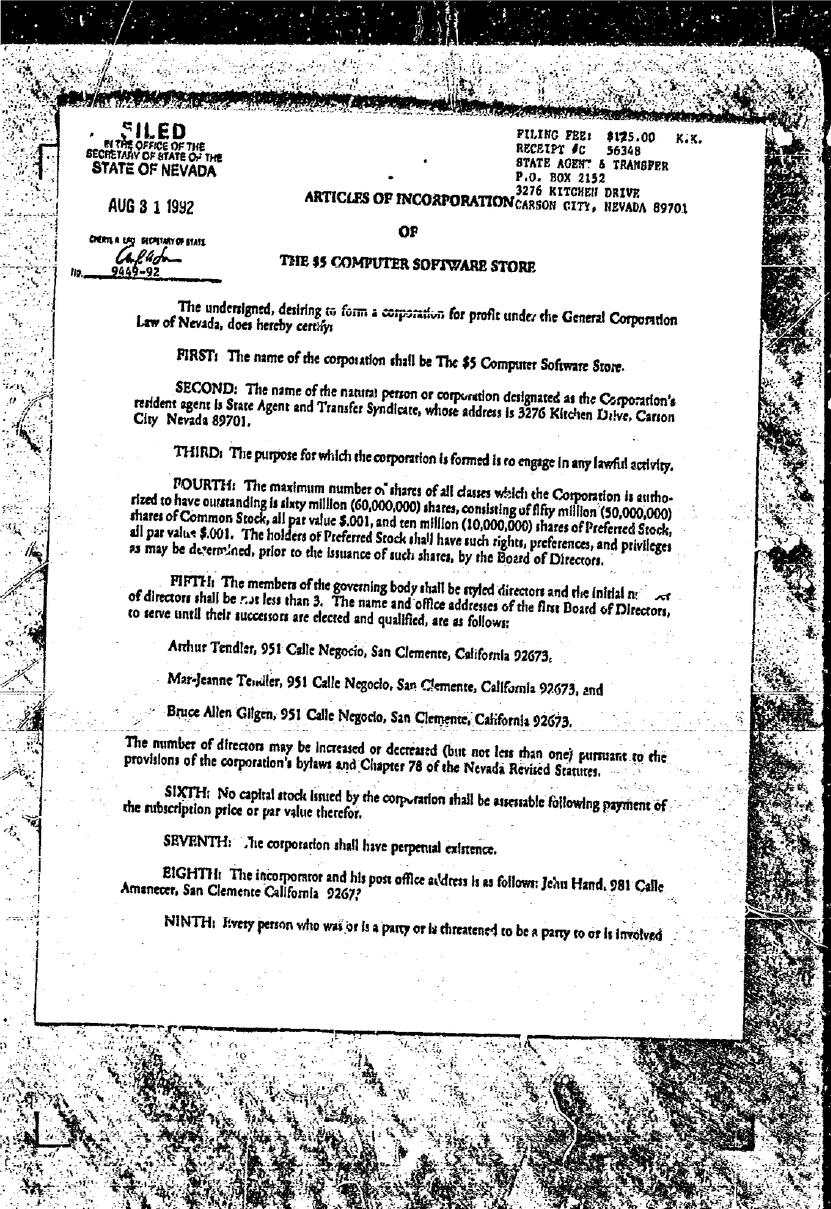
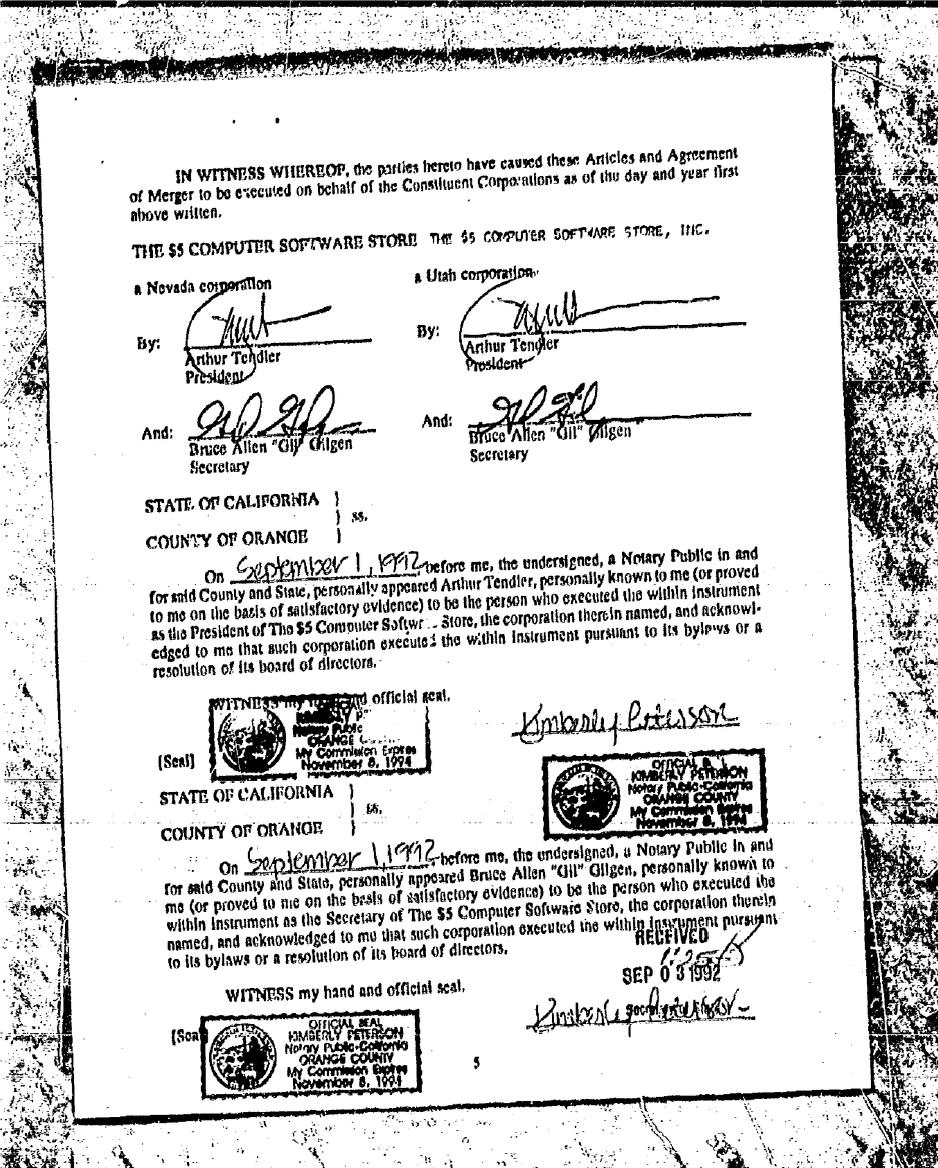
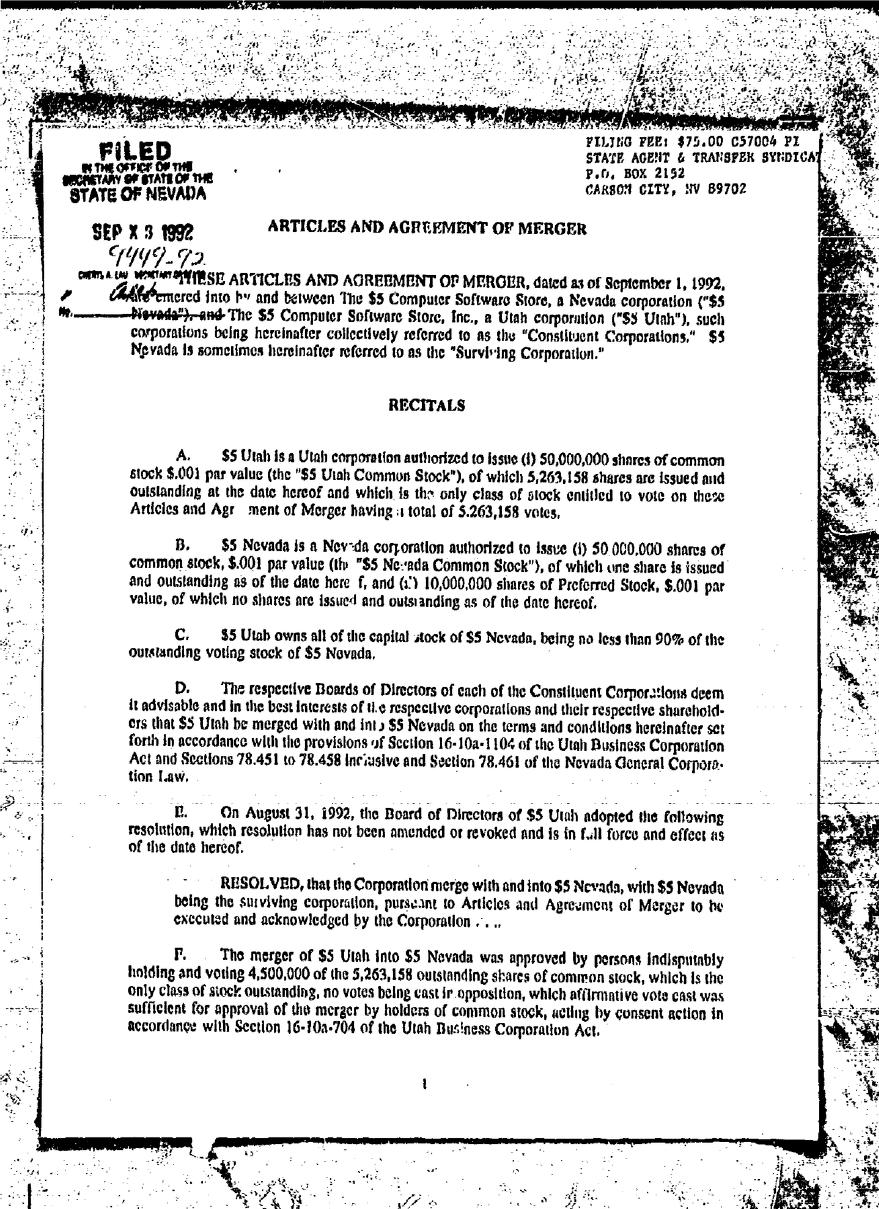
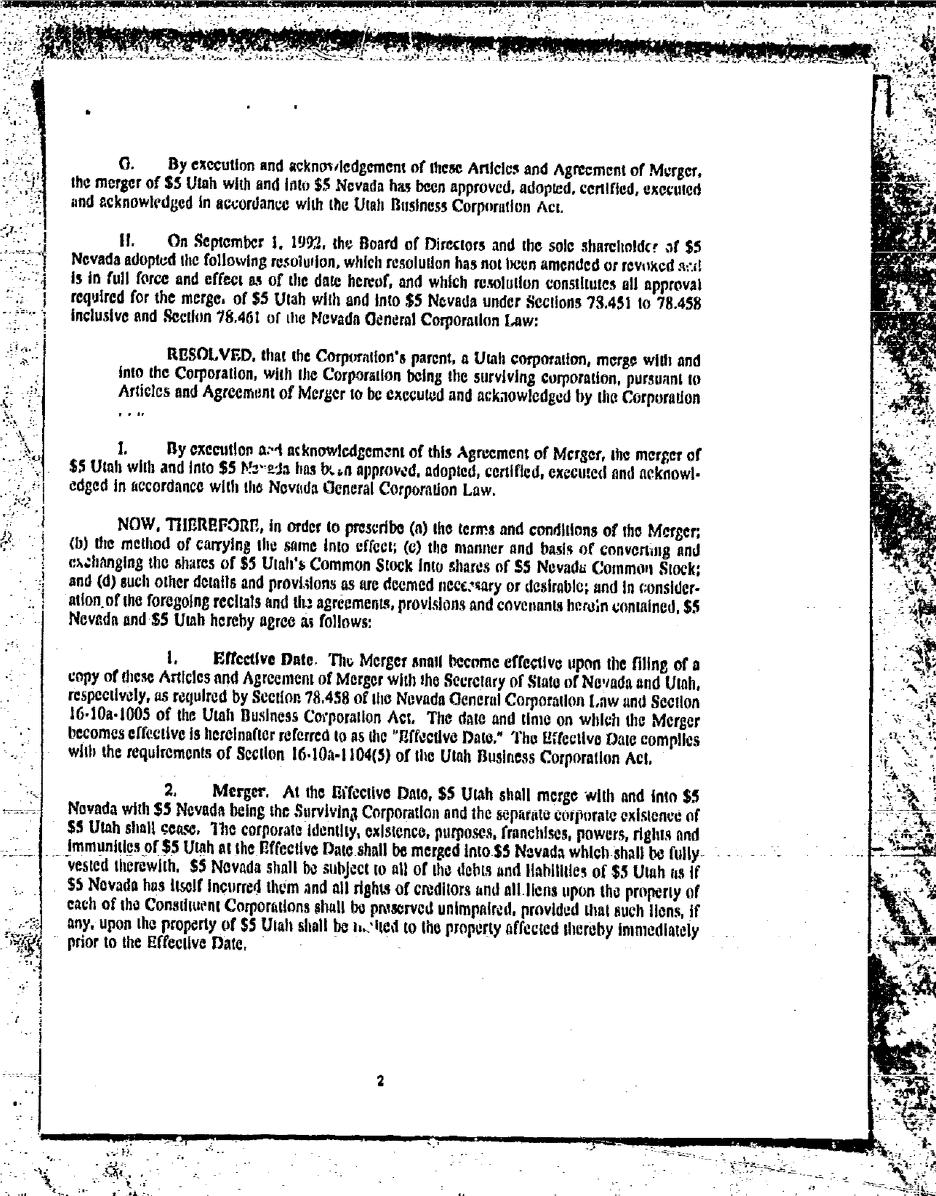
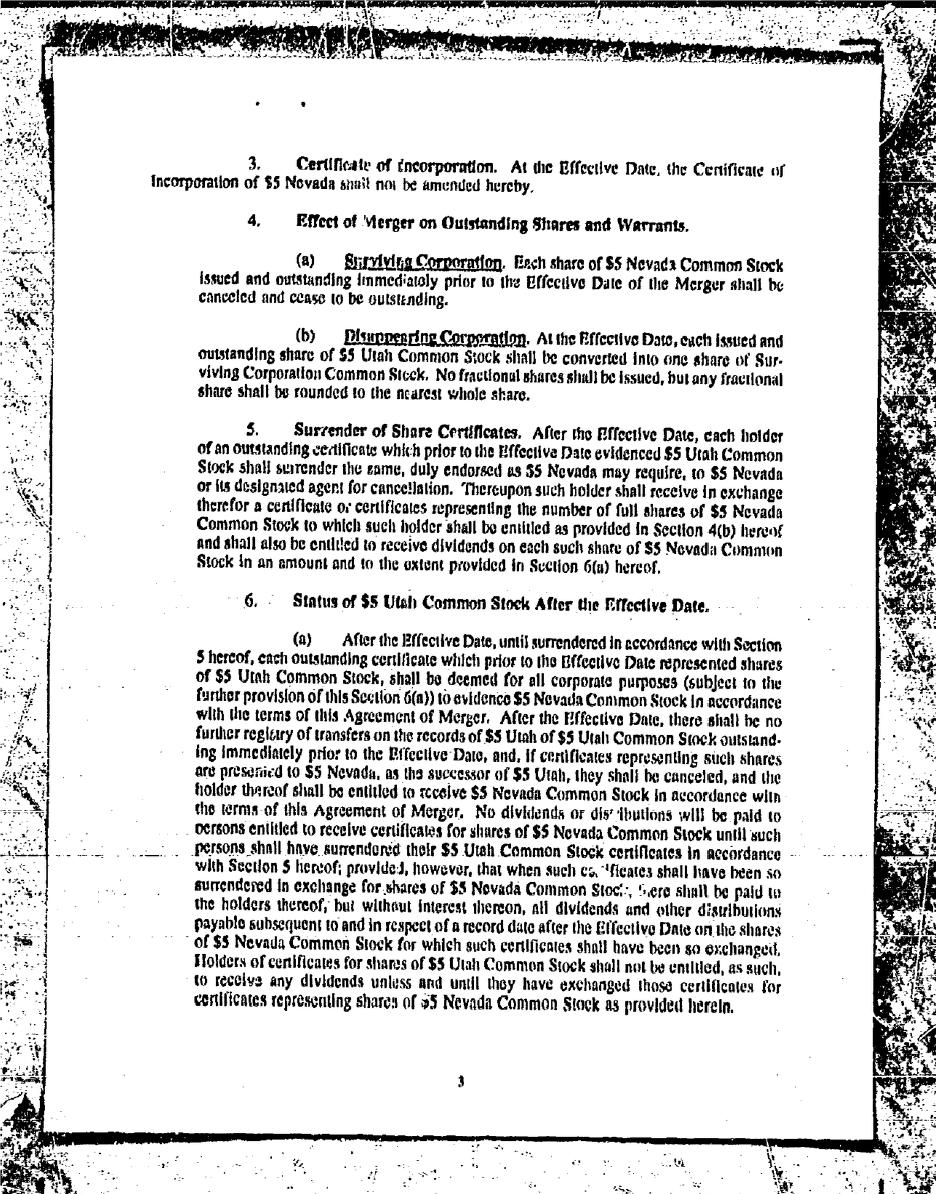
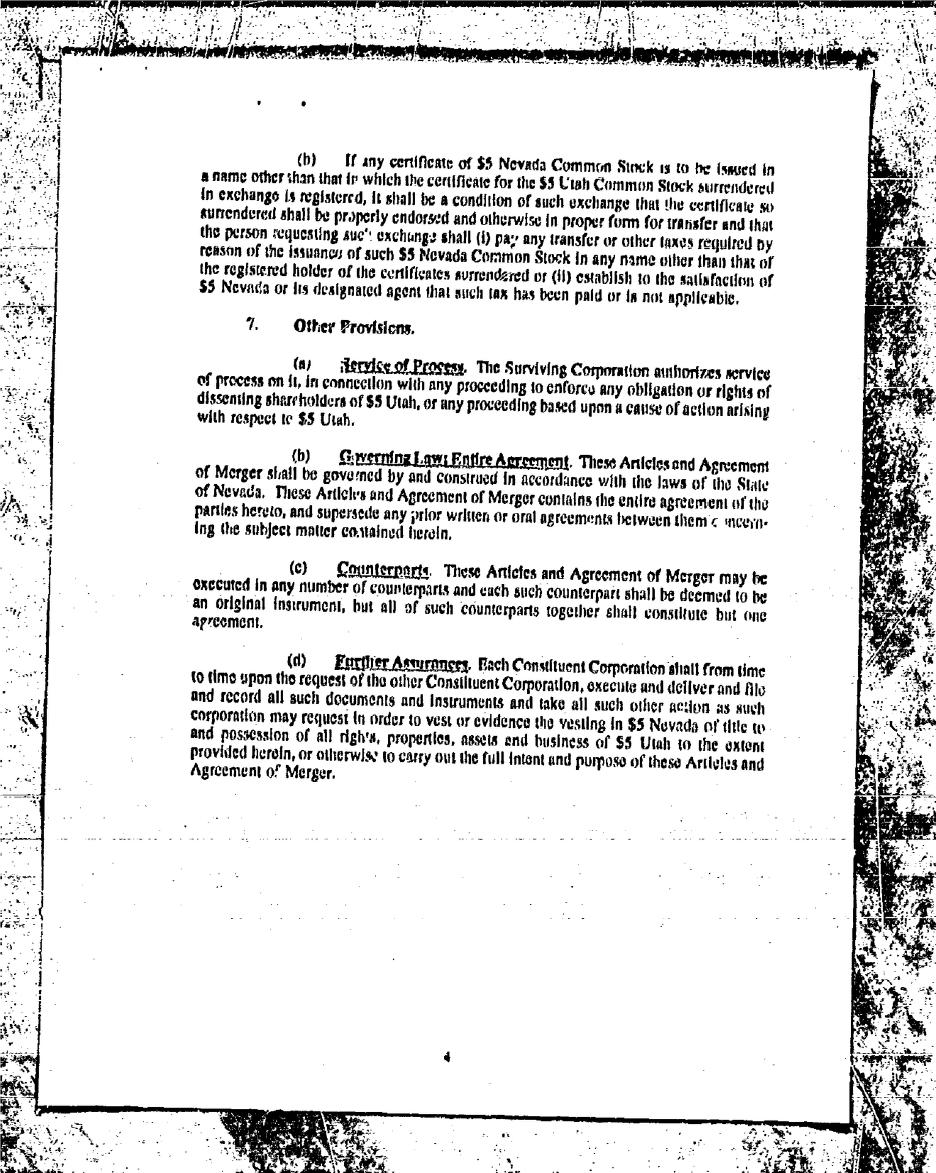
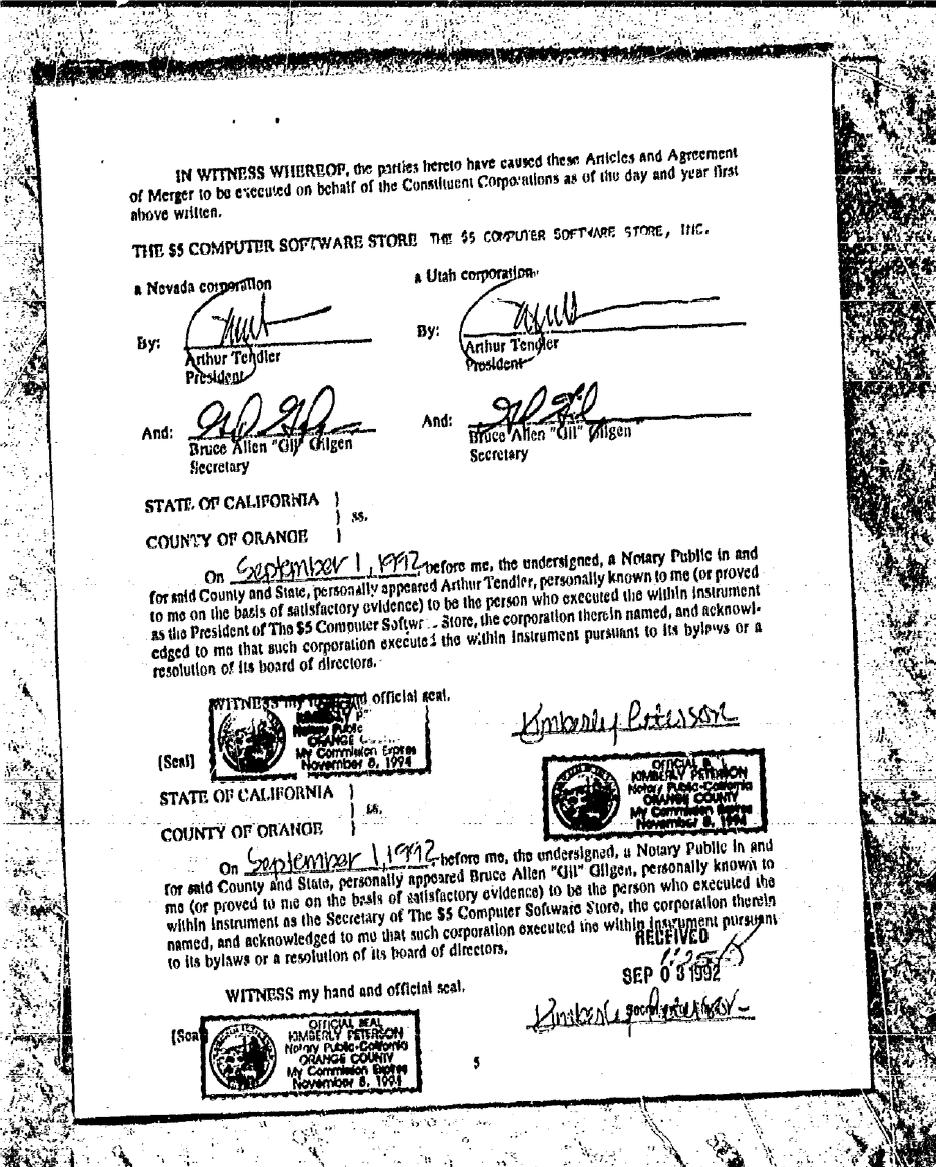
Exhibit 3.1.2
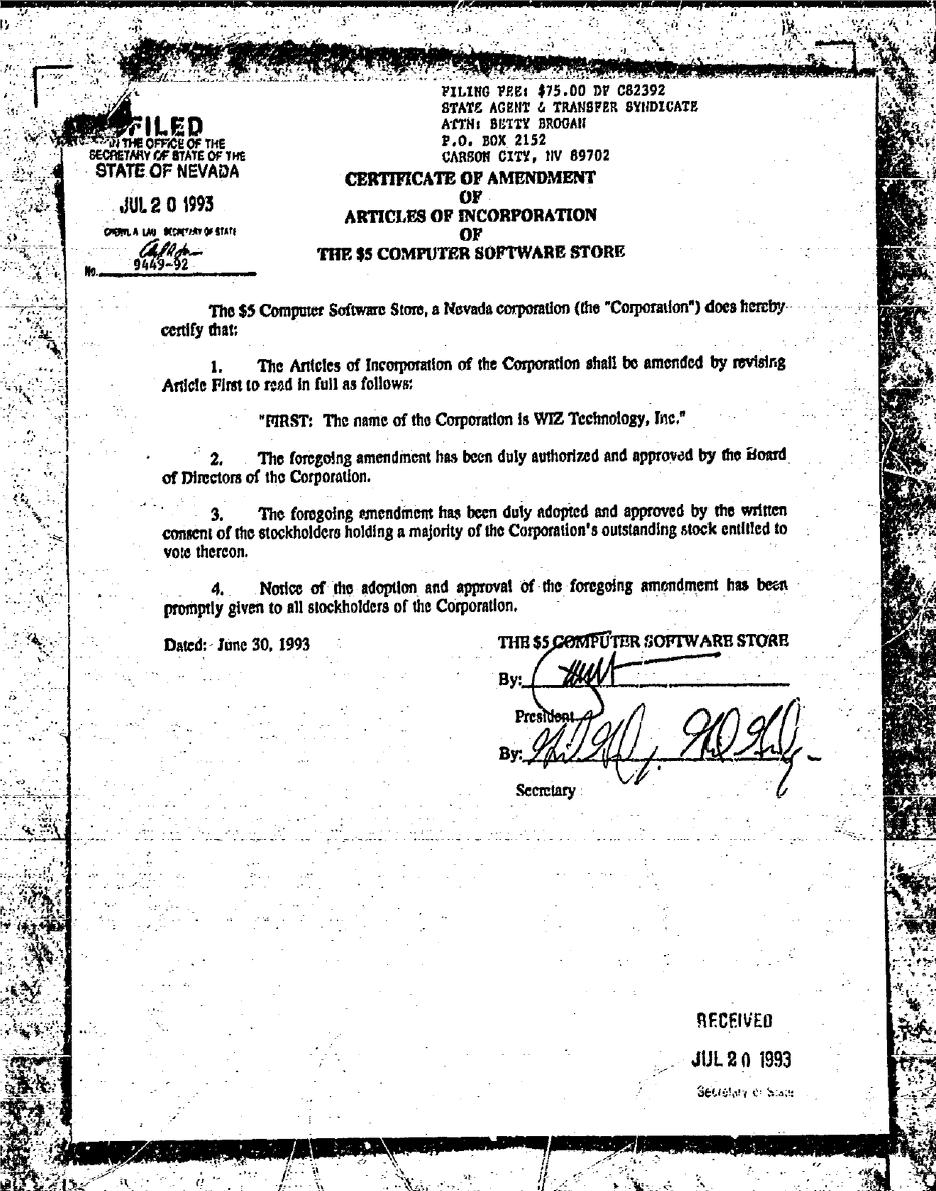
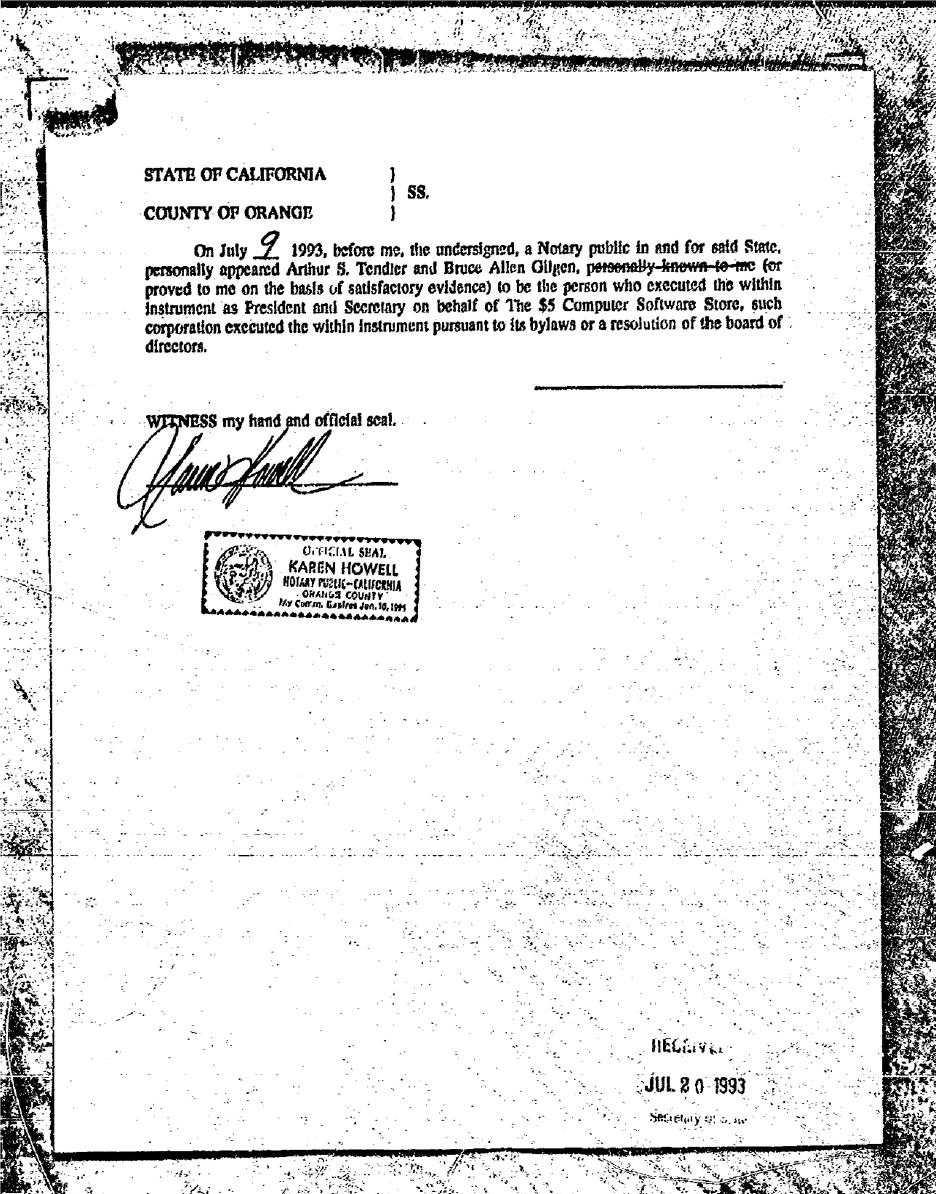
Exhibit 3.1.3
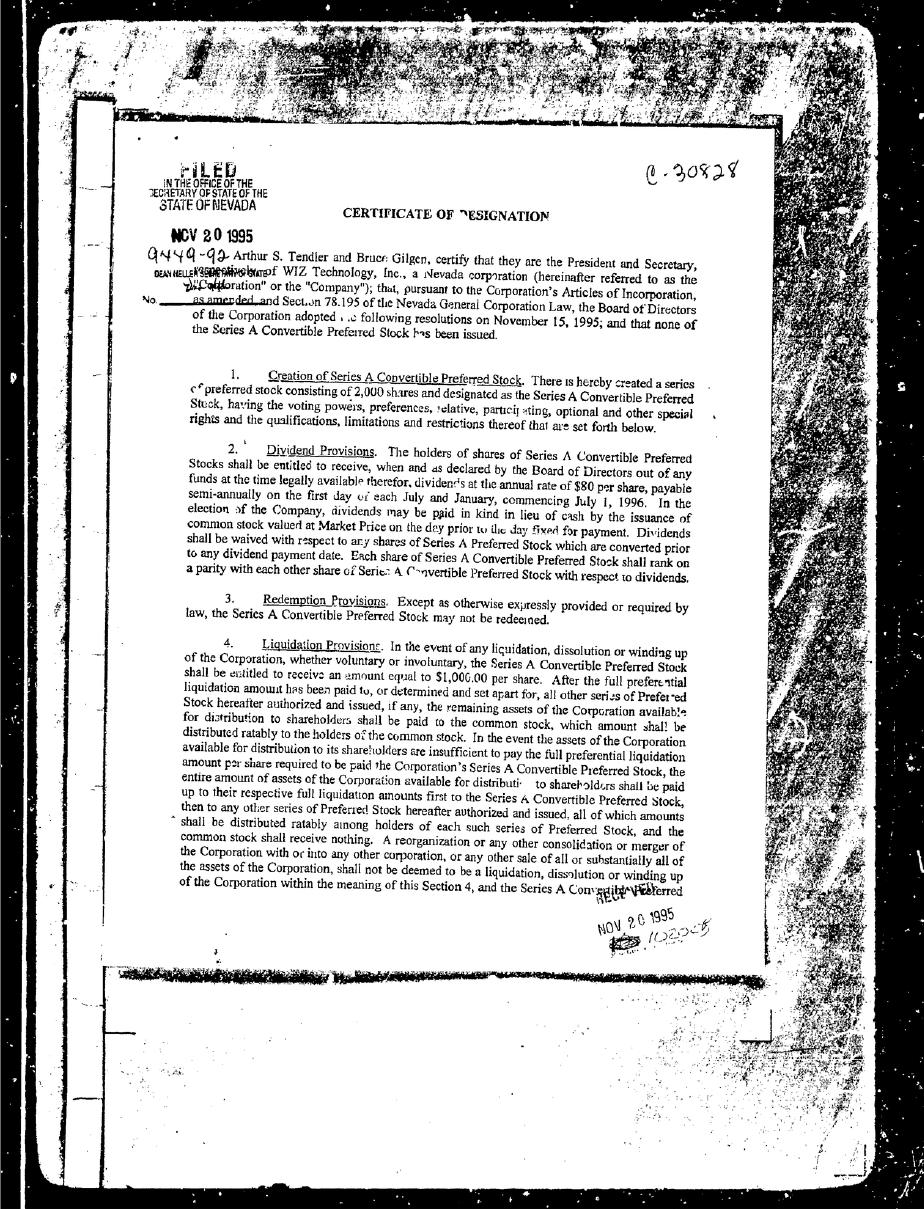
Exhibit 3.1.4
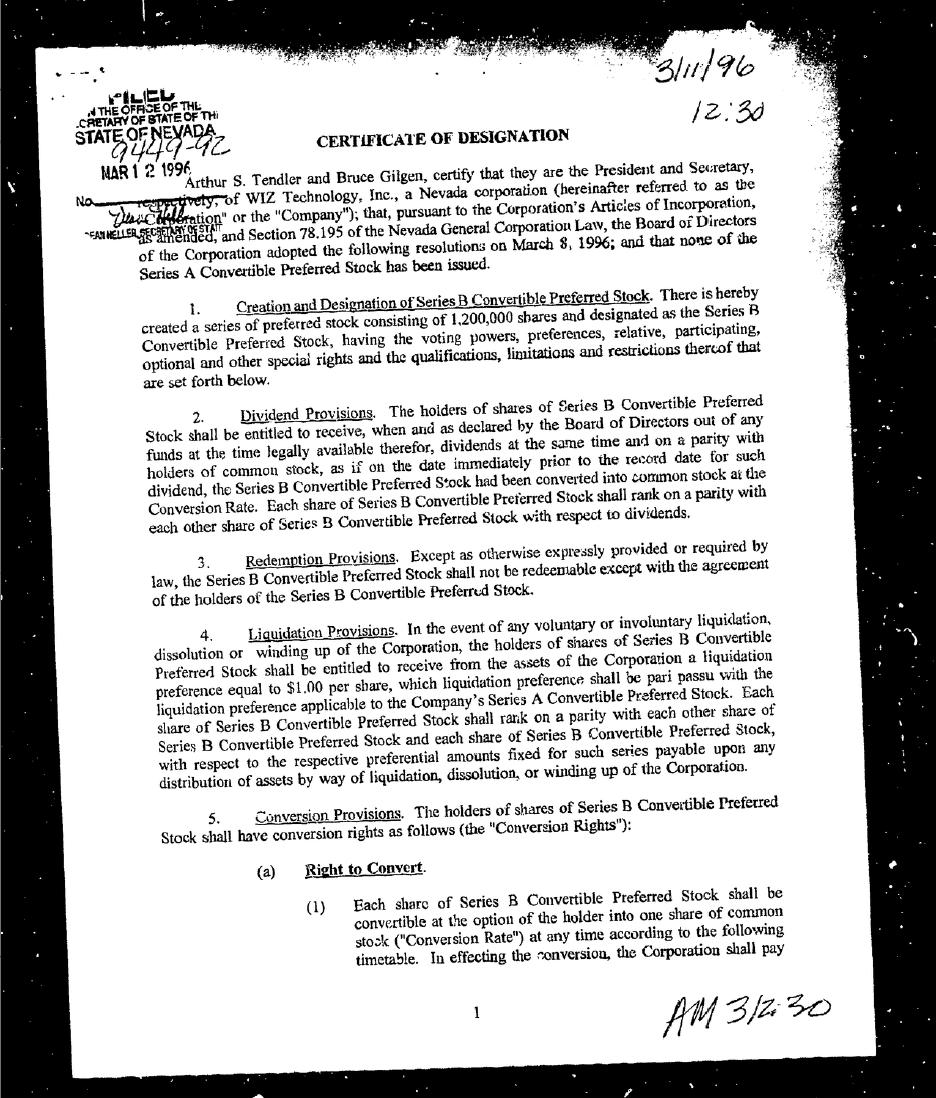
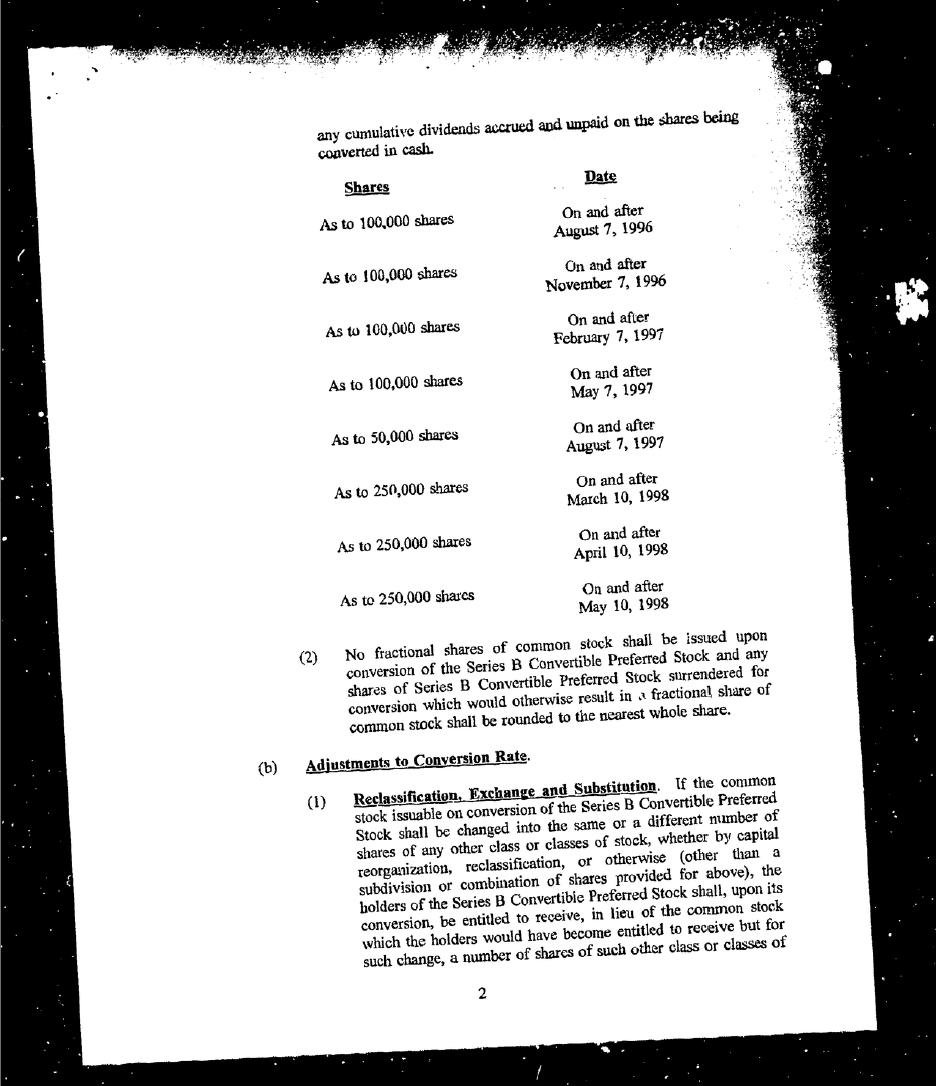
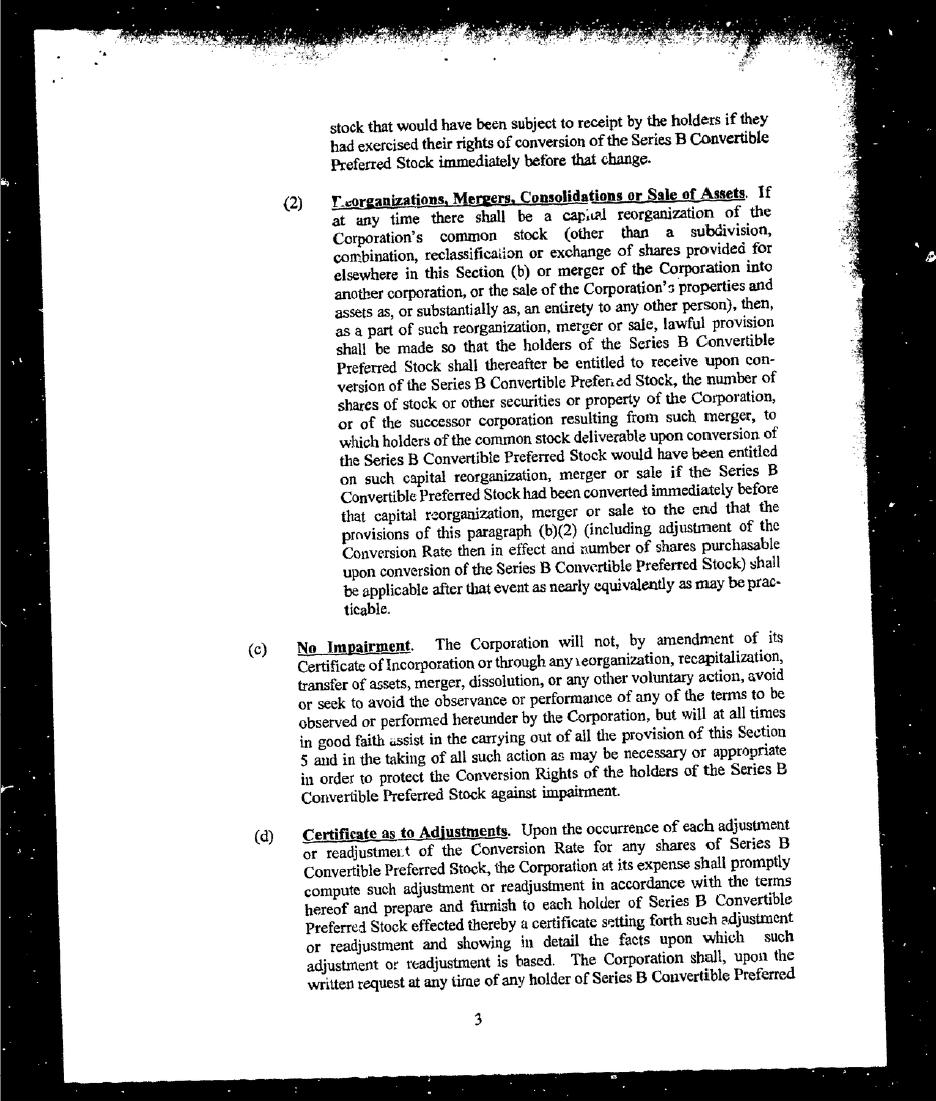
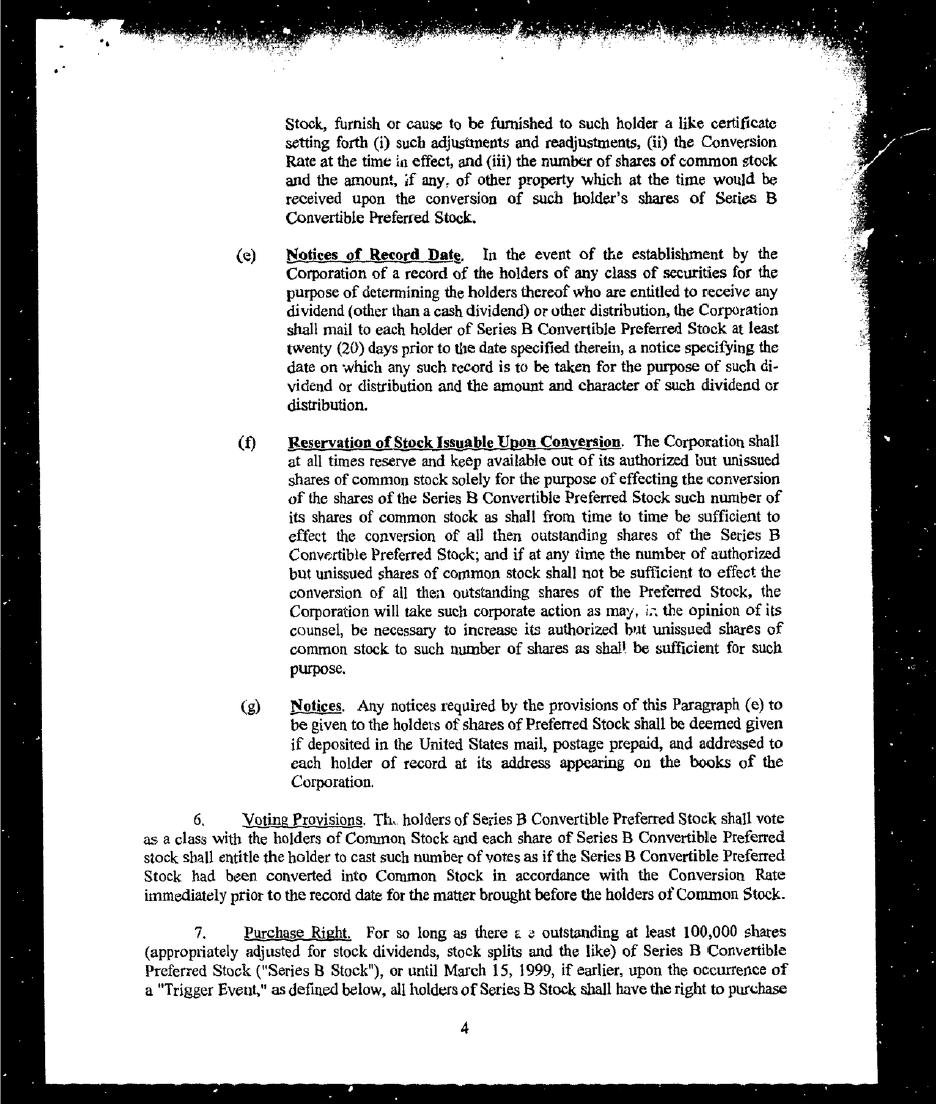
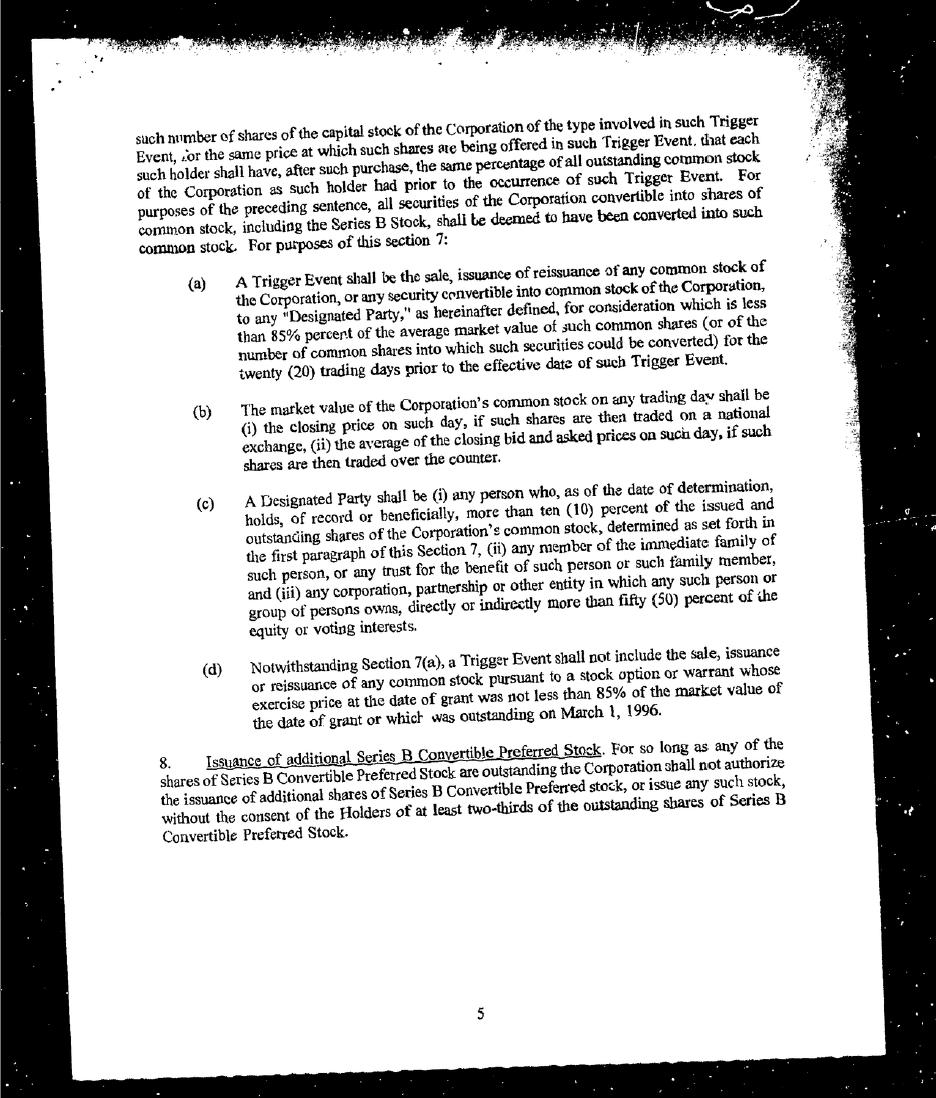
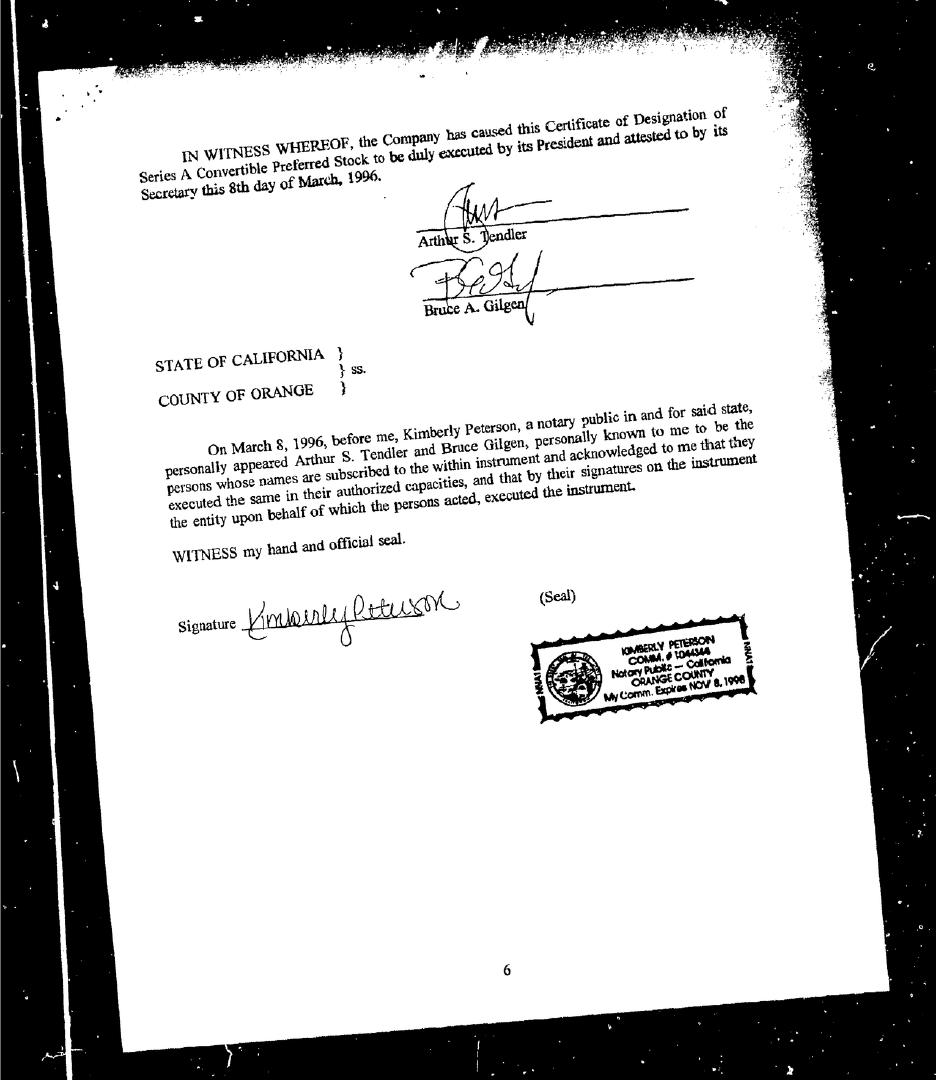
Exhibit 3.1.5
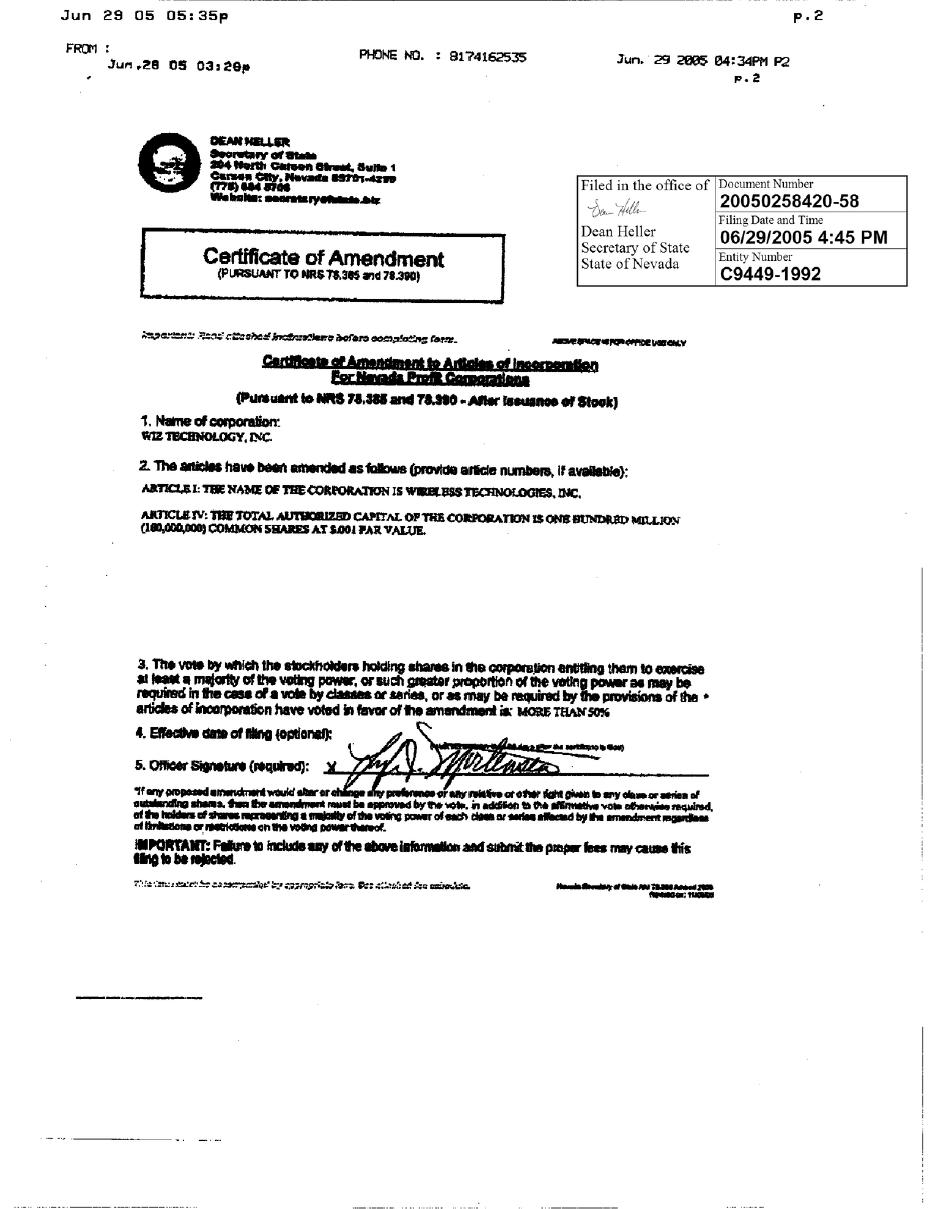
Exhibit 3.1.6
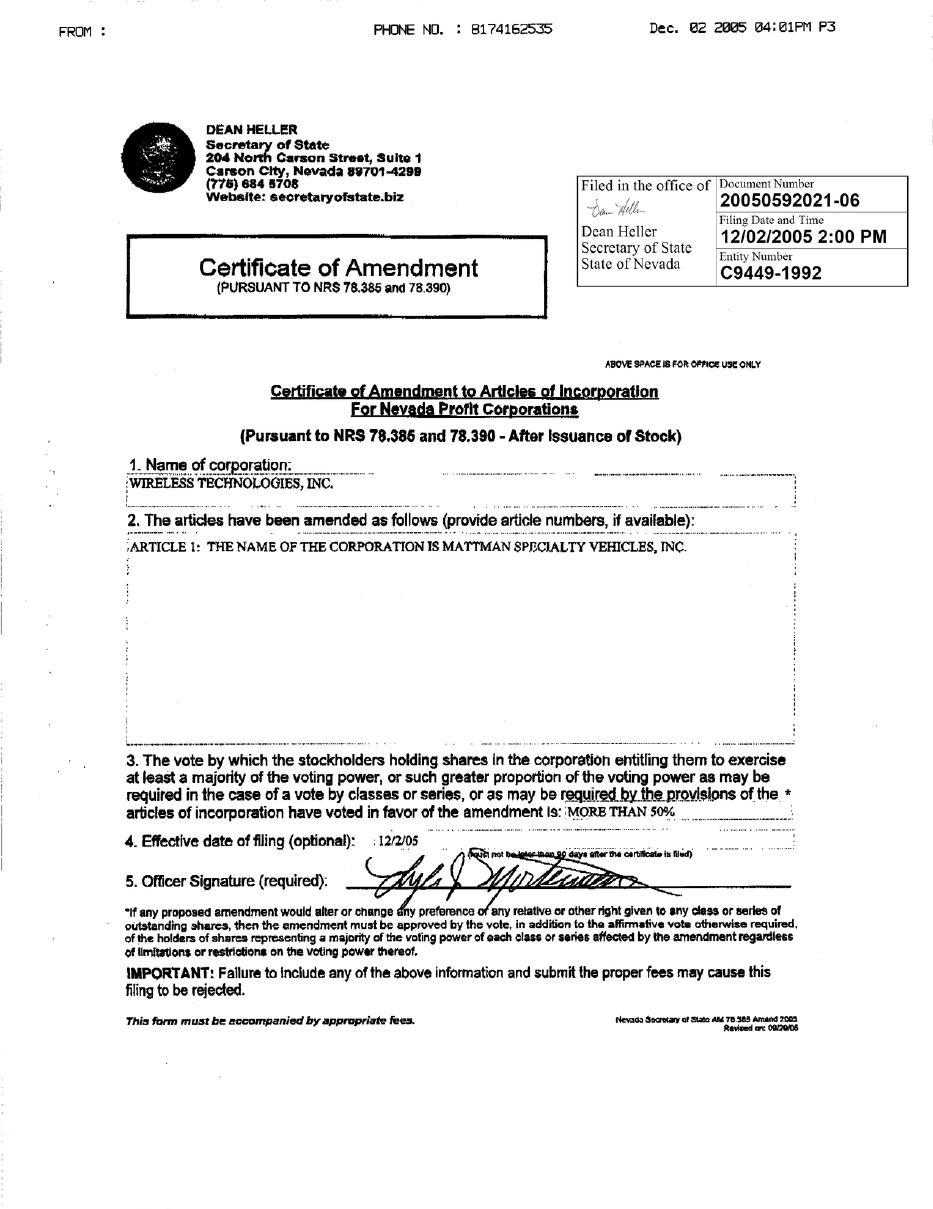
Exhibit 3.1.7
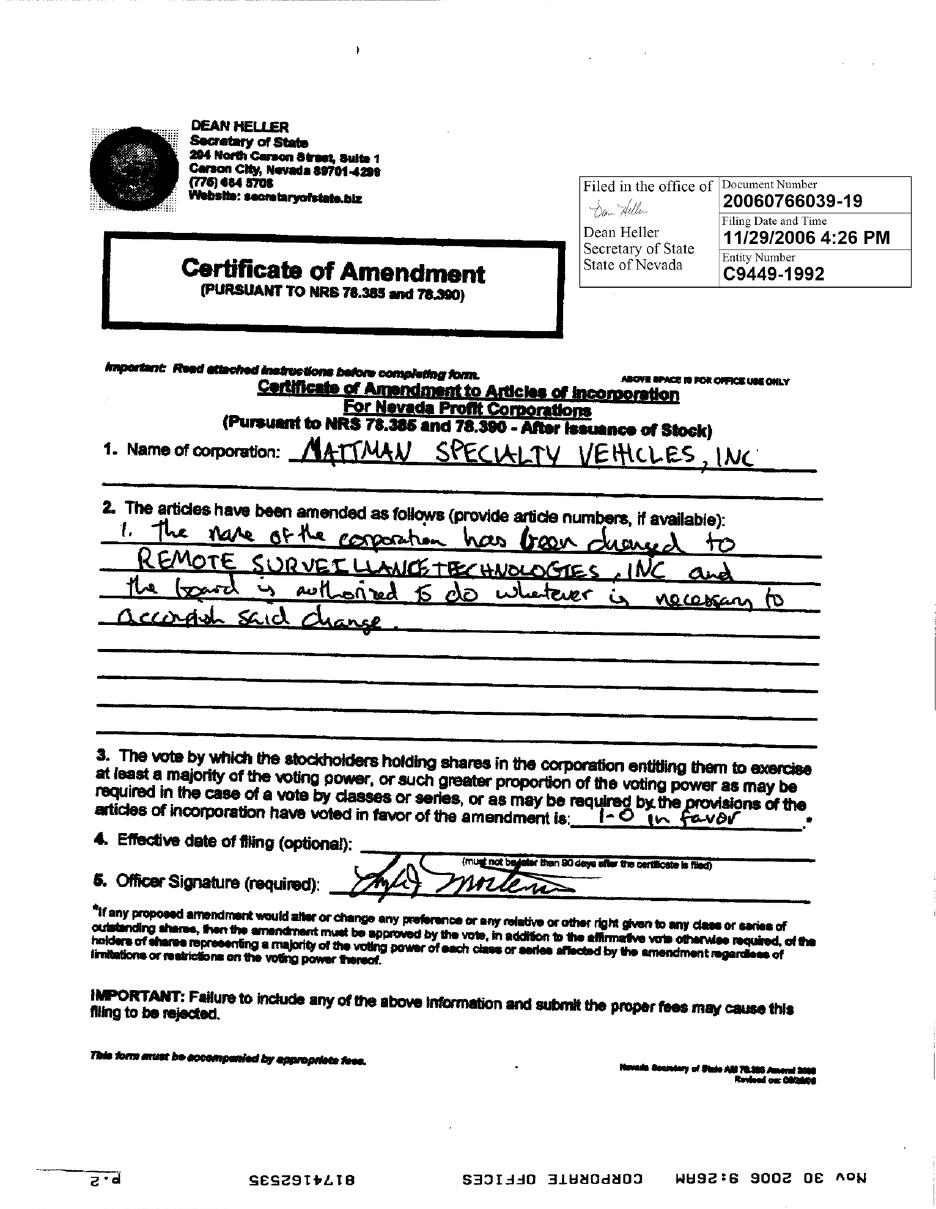
Exhibit 3.1.8
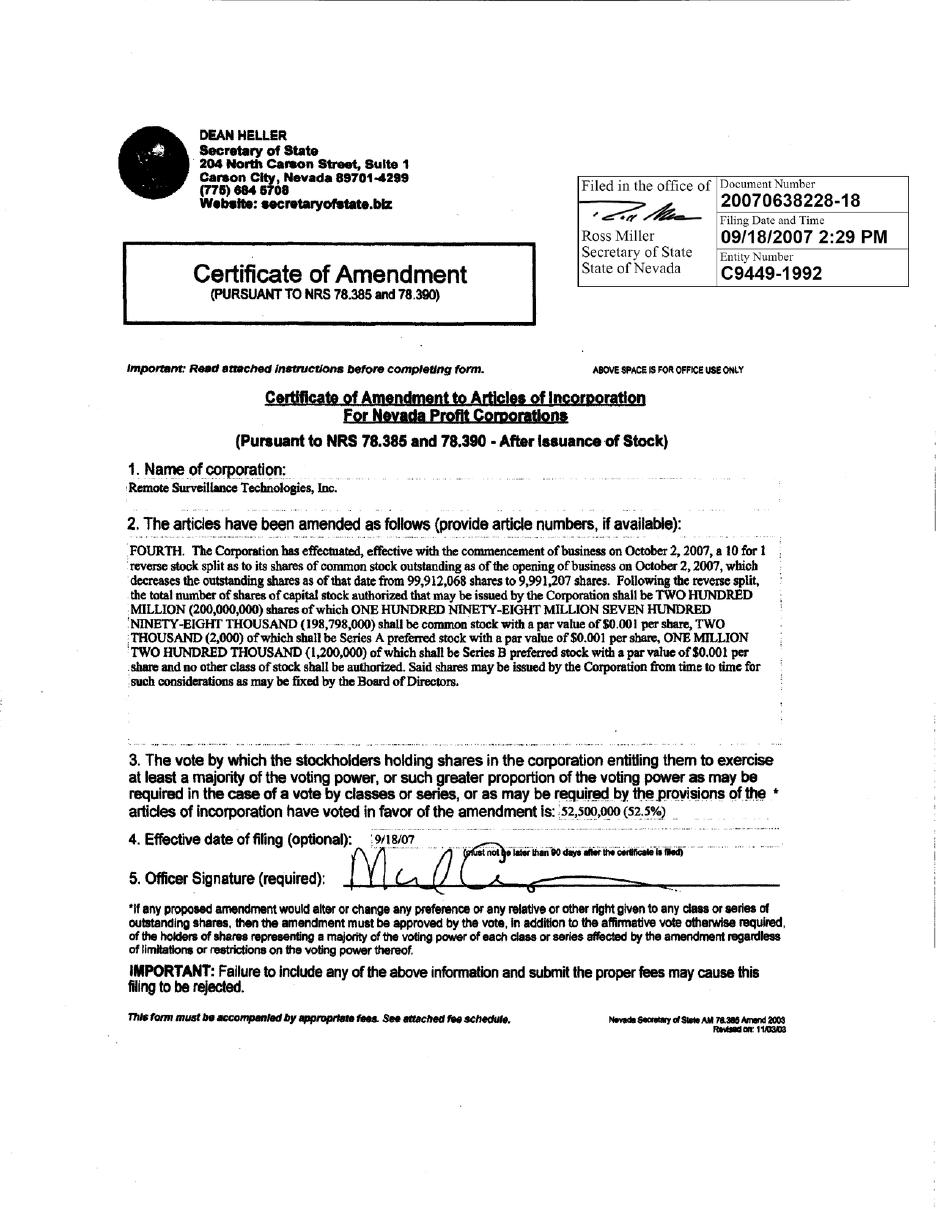
Exhibit 3.1.9
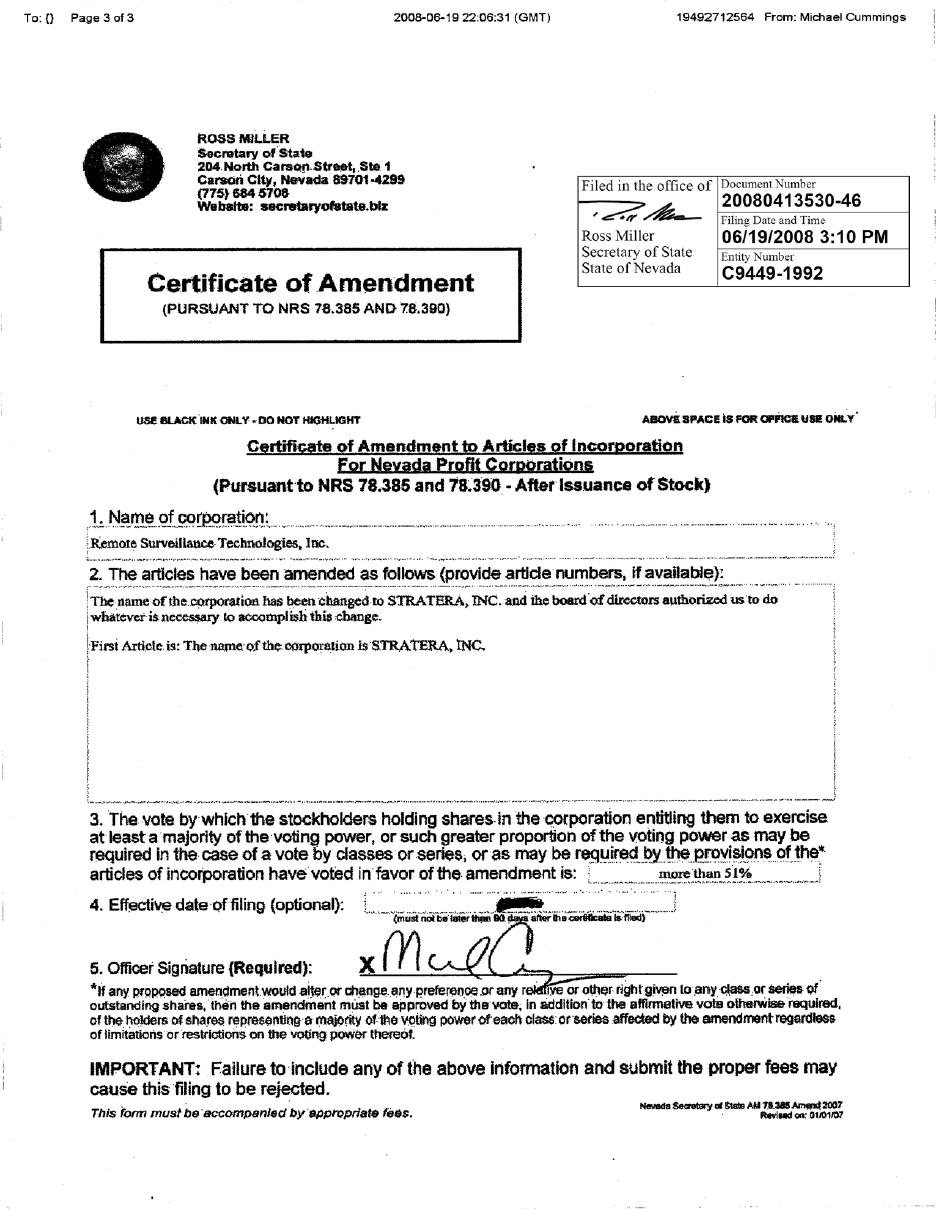
Exhibit 3.1.10
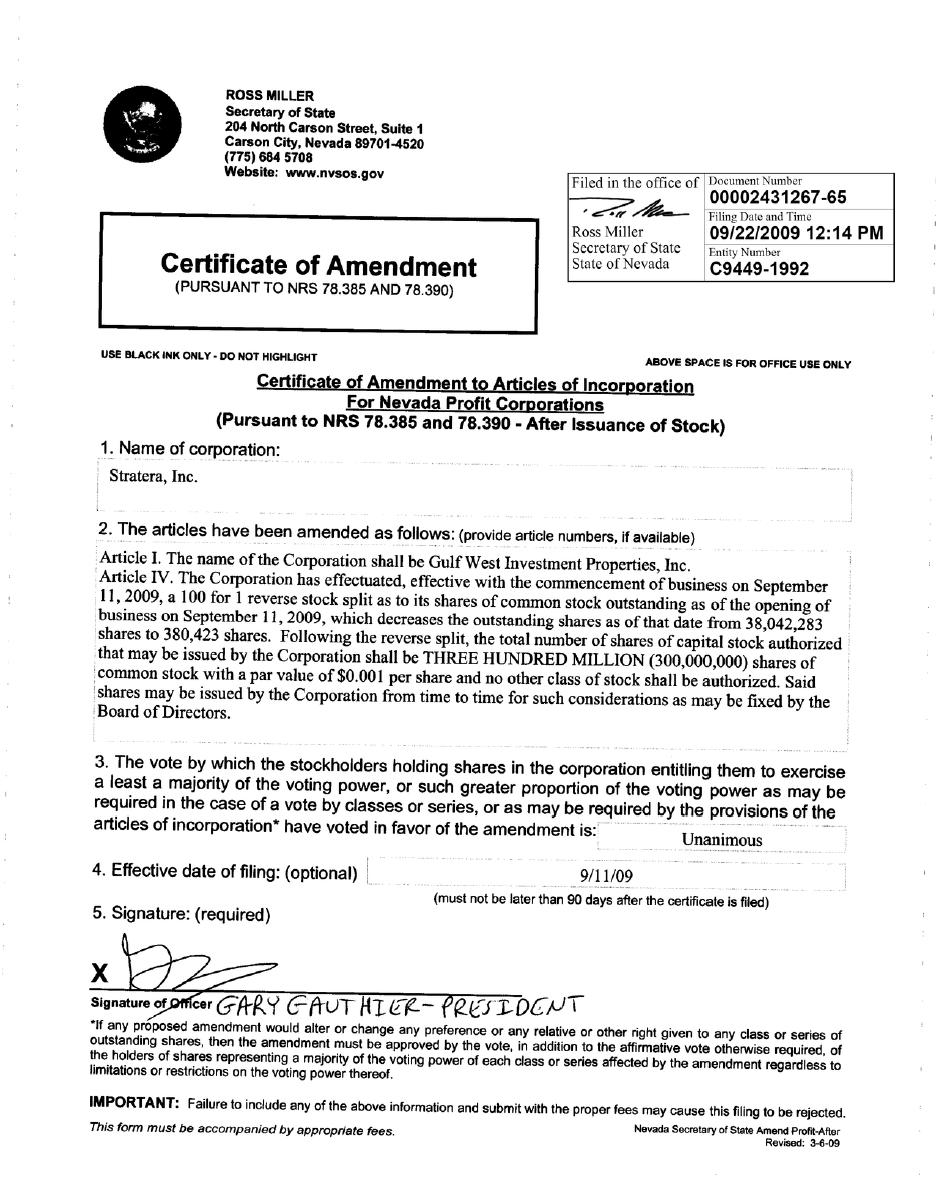
Exhibit
3.1.11
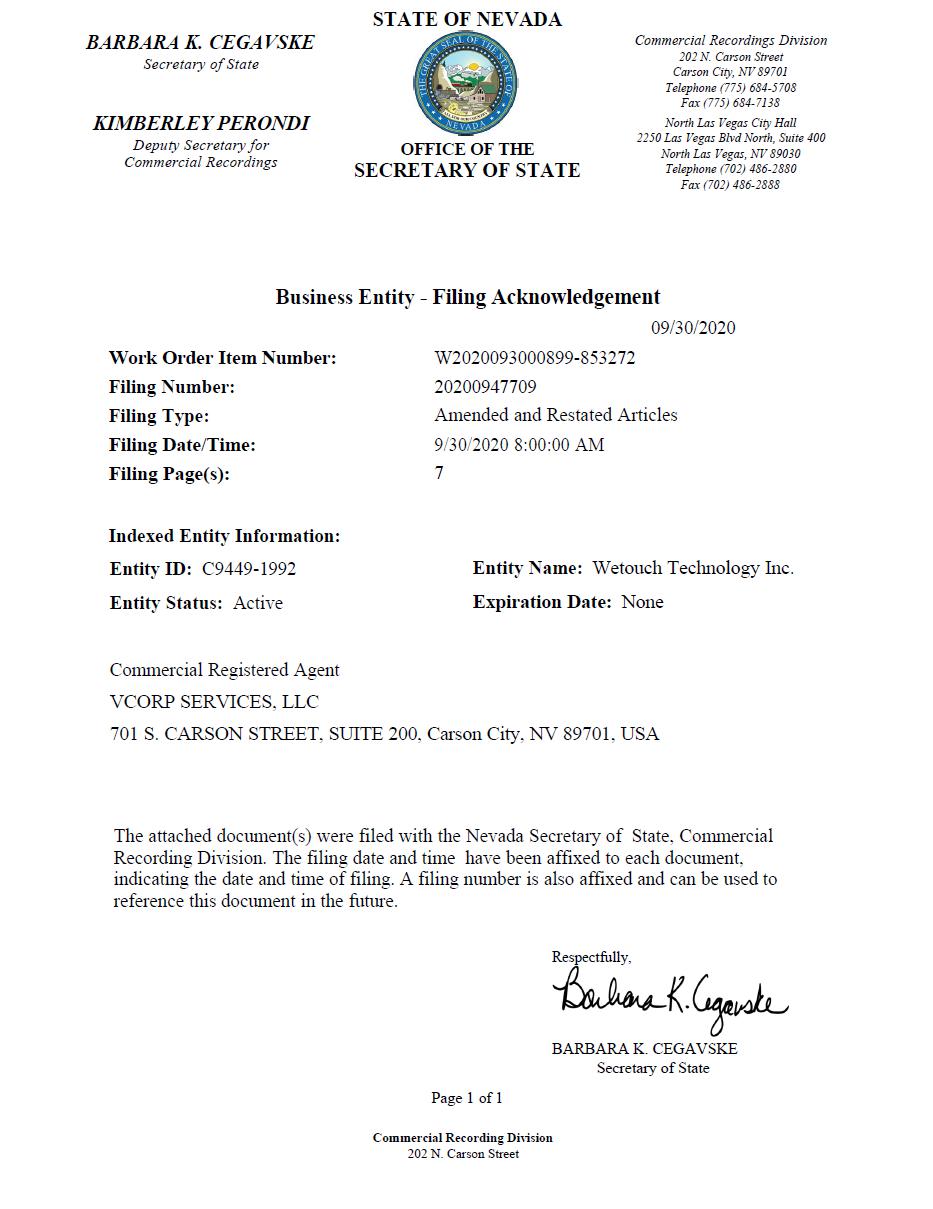
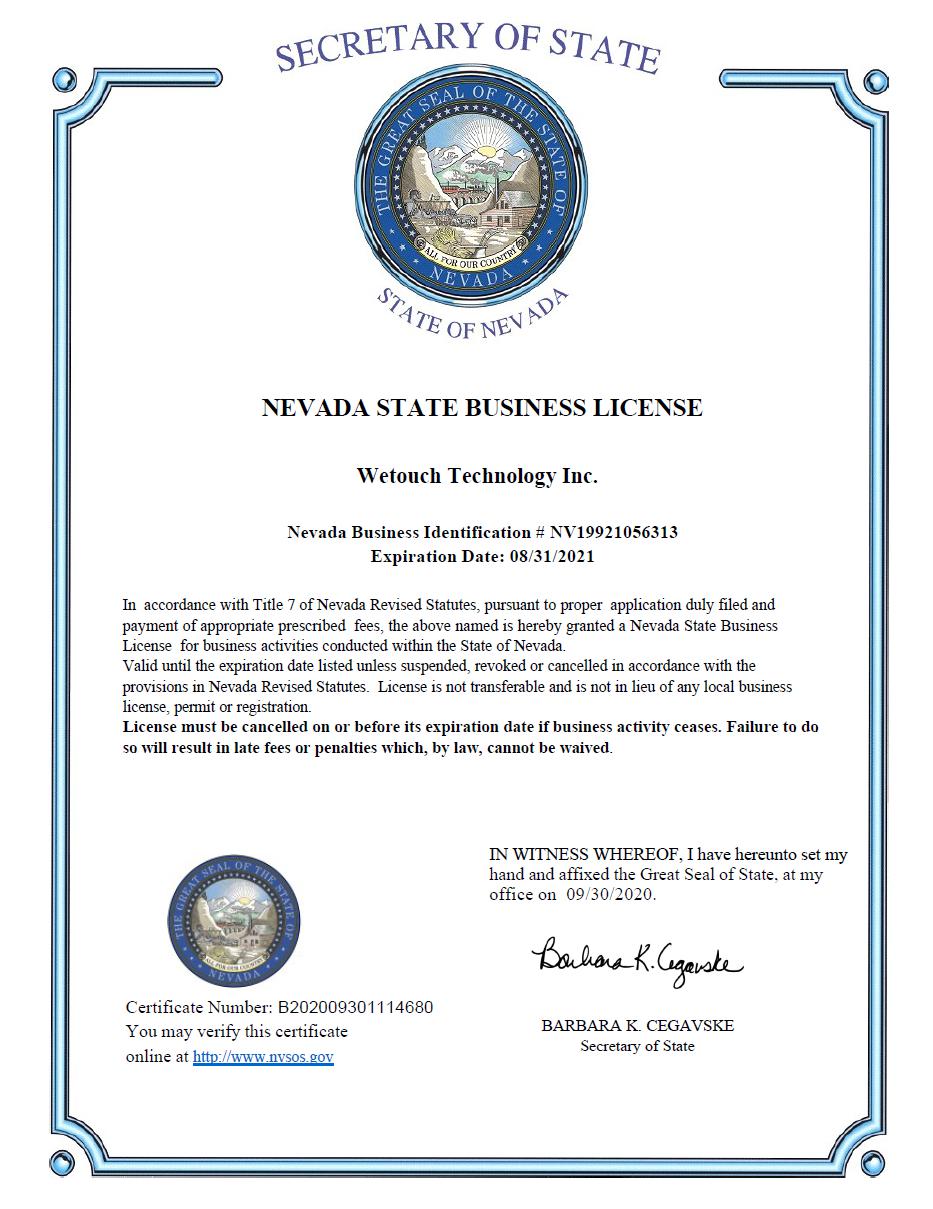
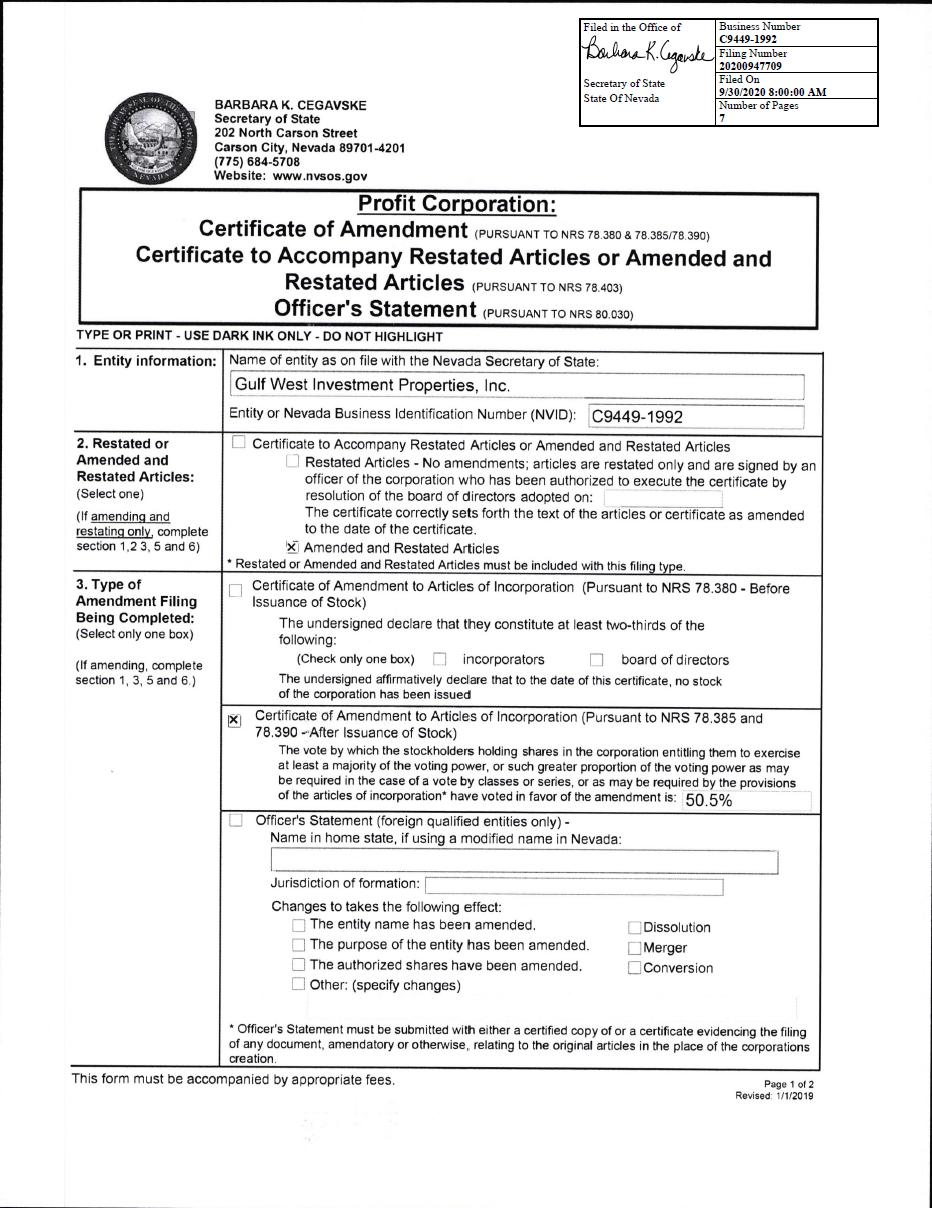
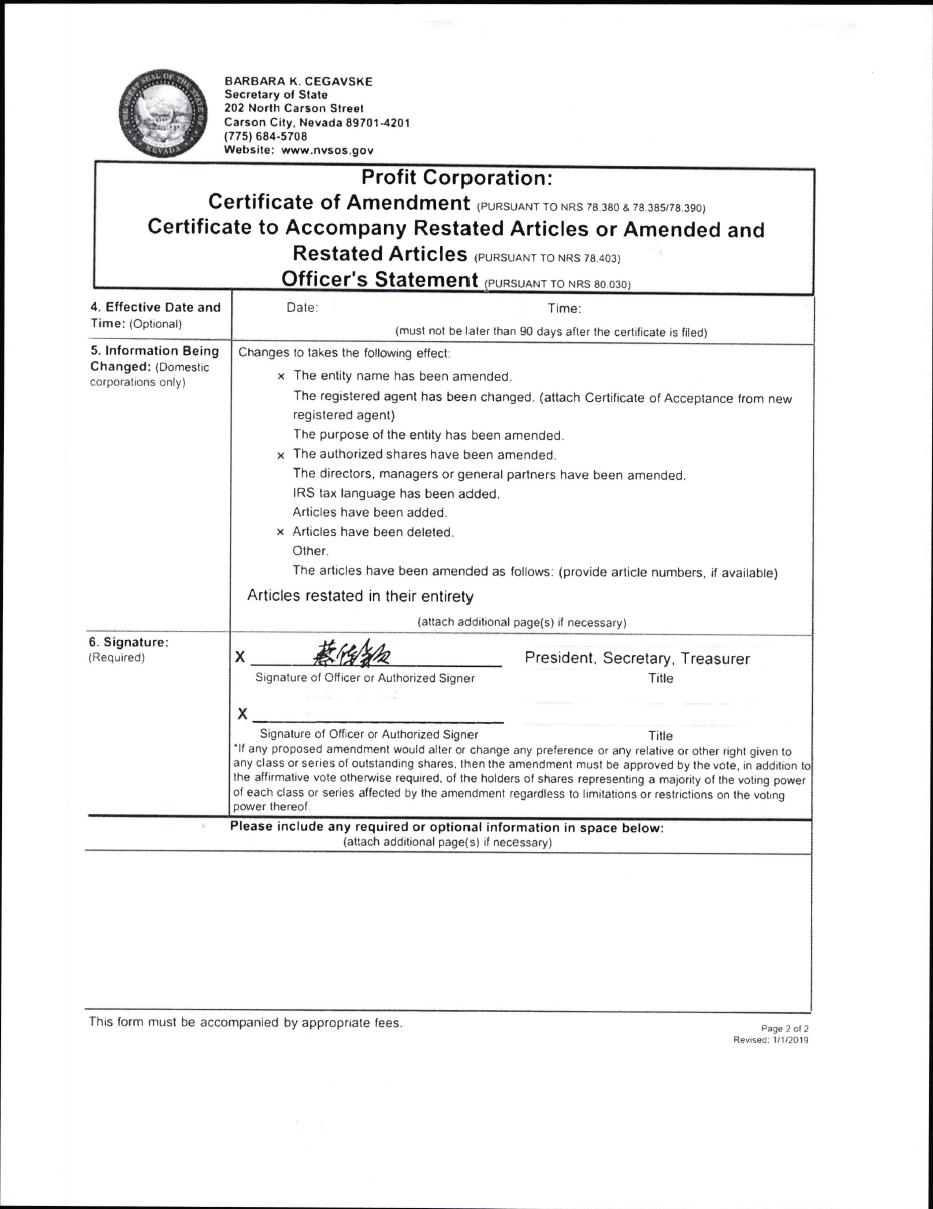
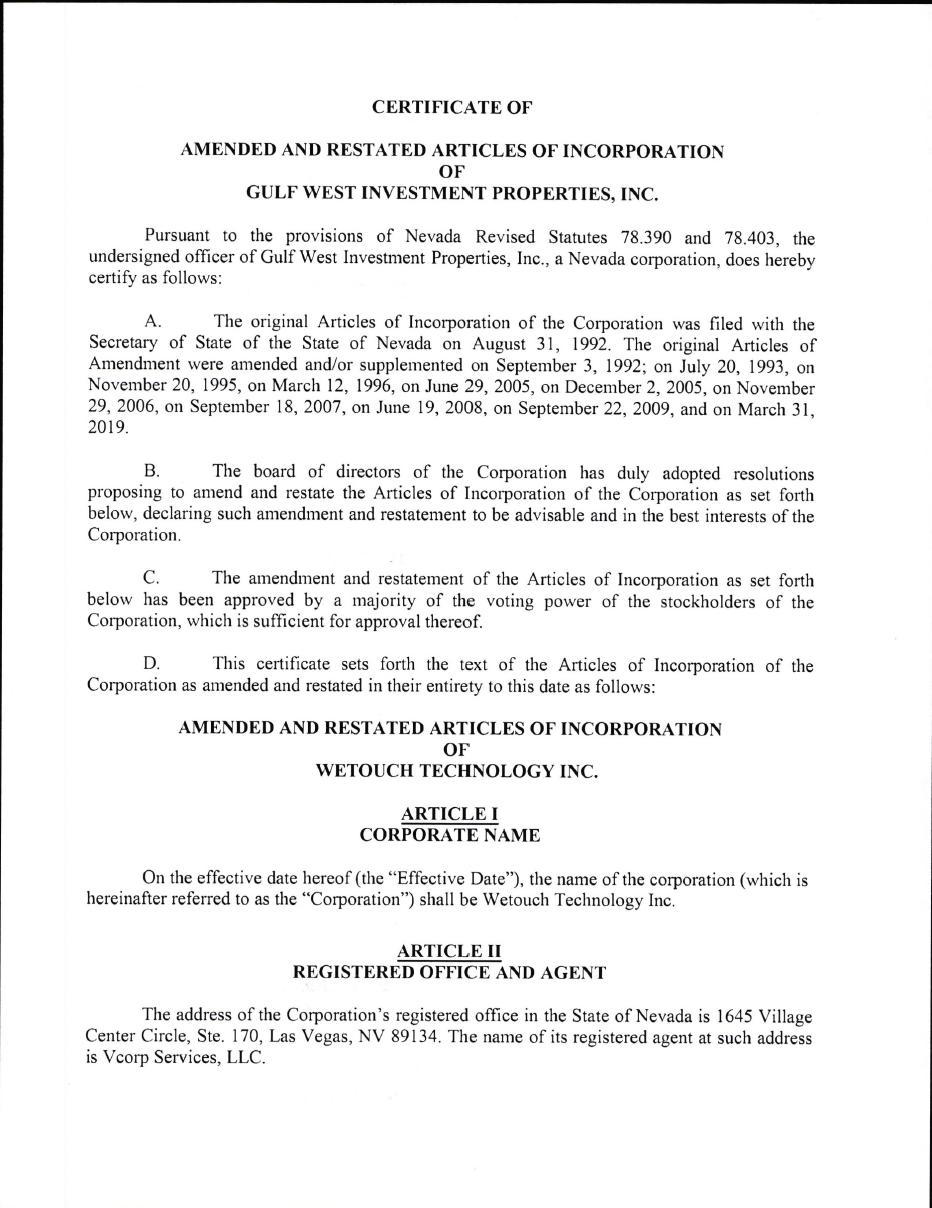
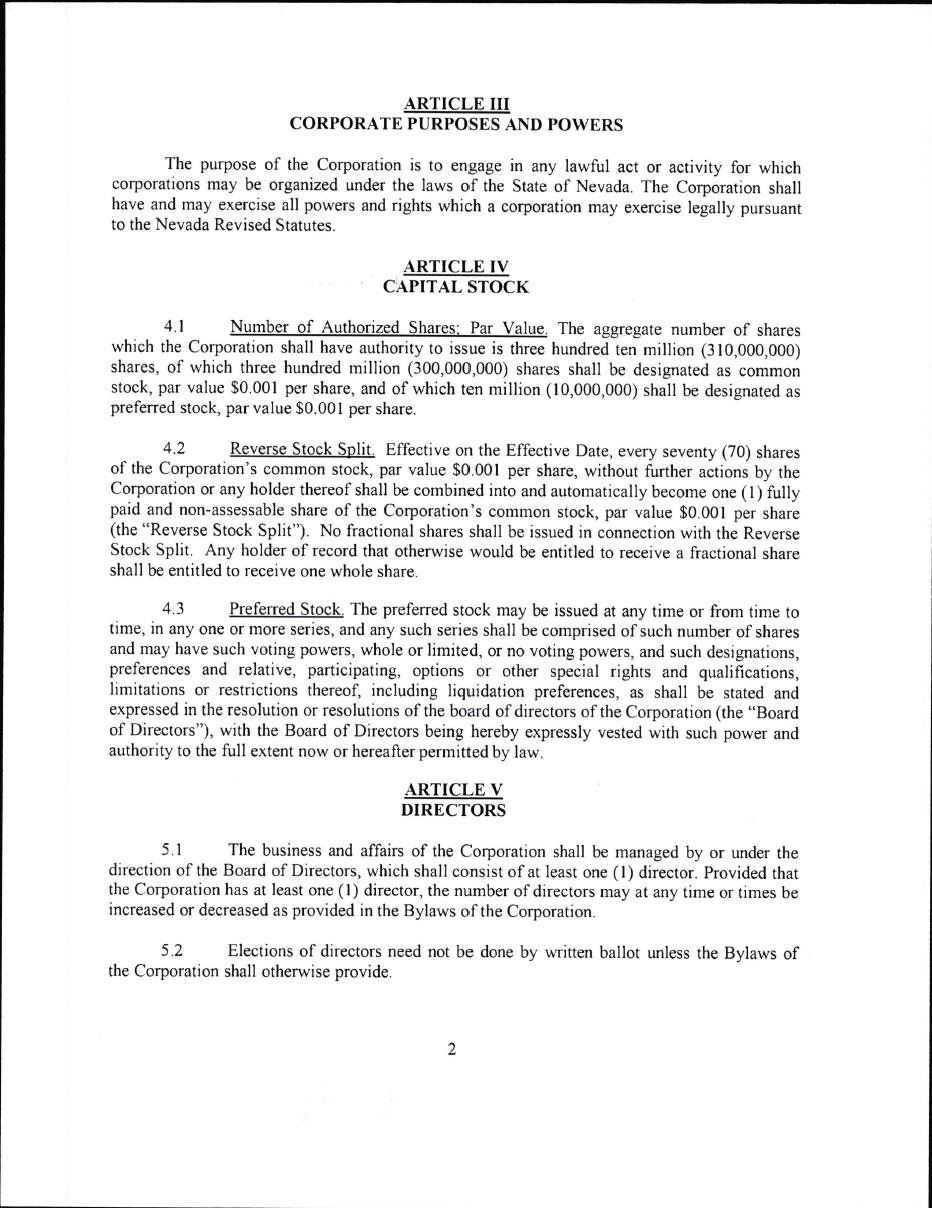
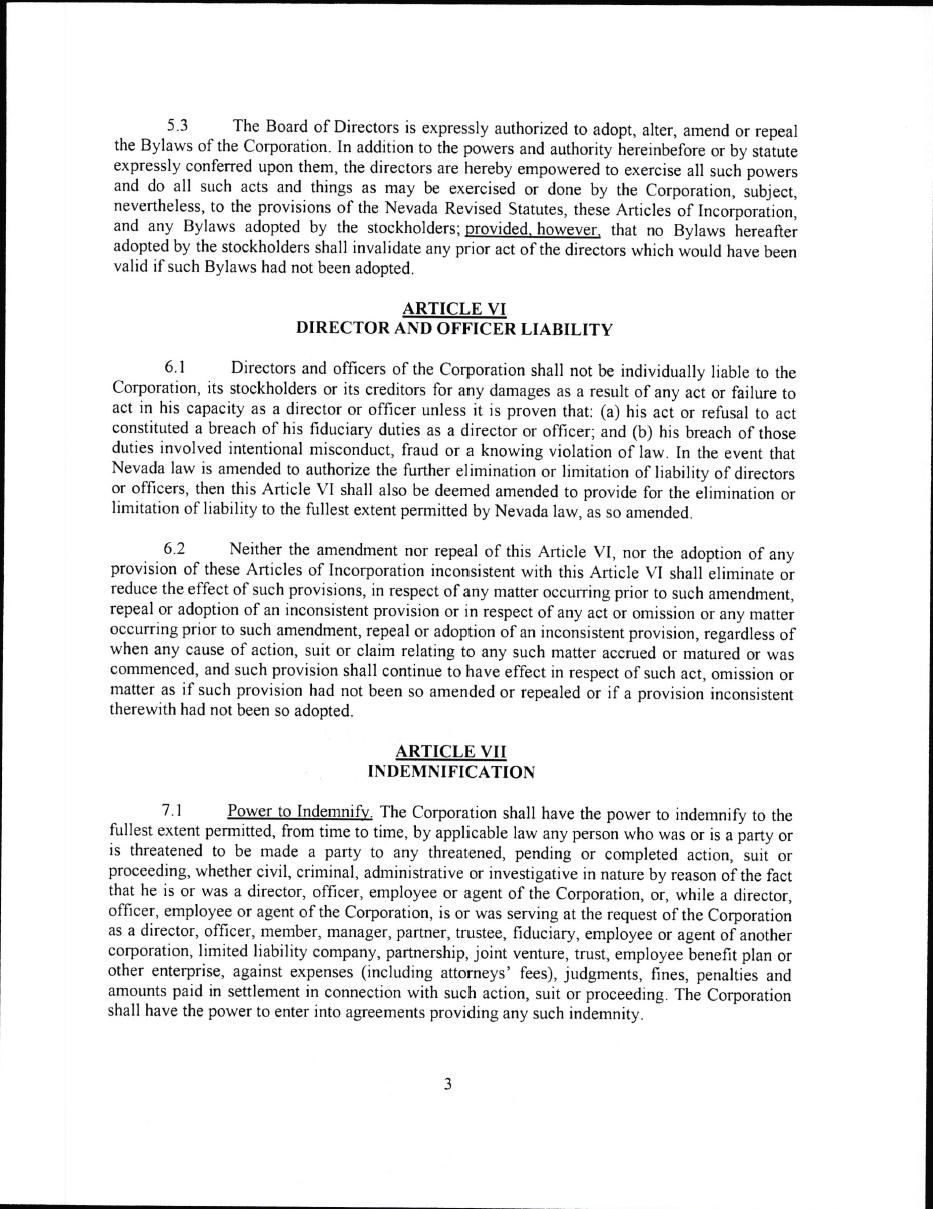
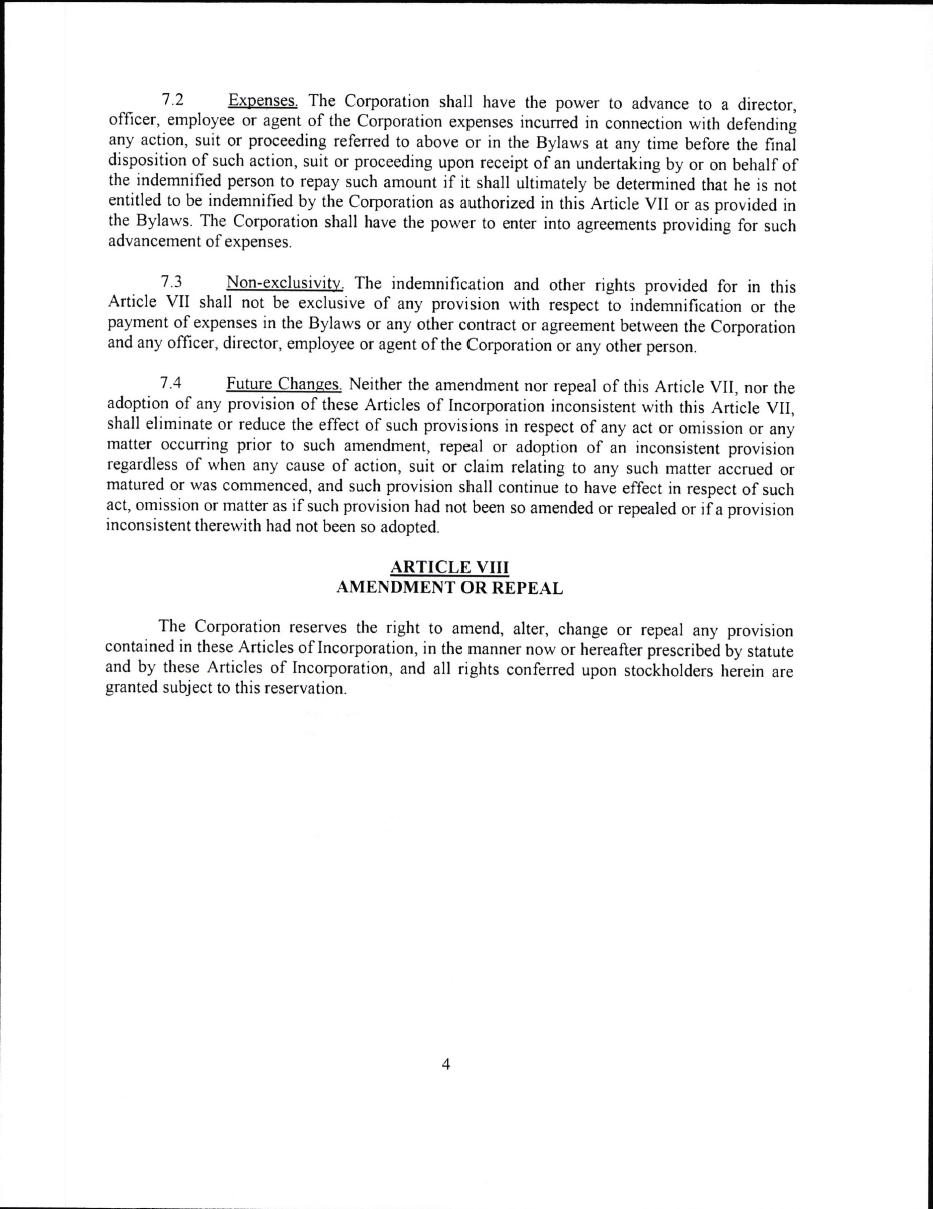

Exhibit 3.2
Wetouch Technology Inc.
Incorporated Under the Laws of the
State of Nevada
AMENDED AND RESTATED BY-LAWS
ARTICLE I
OFFICES
Wetouch Technology
Inc. (the “Corporation”) shall maintain a registered office in the State of Nevada. The Corporation may also have
other offices at such places, either within or without the State of Nevada, as the Board of Directors may from time to time designate
or the business of the Corporation may require.
ARTICLE II
STOCKHOLDERS
Section 1. Place of
Meetings. Meetings of the stockholders for the election of directors or for any other purpose shall be held on such date, at
such time and at such place, either within or without the State of Nevada, as shall be designated from time to time by the Board
of Directors and stated in the notice of the meeting or in a duly executed waiver of notice thereof. Only if so determined by the
Board of Directors, in its sole discretion, (a) stockholders may participate in a meeting of stockholders by means of a telephone
conference or similar methods of communication by which all persons participating in the meeting can hear each other and/or (b)
a meeting of stockholders may be held not at any place, but may instead be held solely by means of electronic communication, as
provided in the Nevada Private Corporations Law (Chapter 78 of the Nevada Revised Statutes) (the “NPCL”).
Section 2. Annual Meeting.
The Annual Meeting of Stockholders shall be held on such date and at such time as shall be designated from time to time by the
Board of Directors and stated in the notice of the meeting, at which meeting the stockholders shall elect a Board of Directors
and transact only such other business as is properly brought before the meeting in accordance with these By-Laws. Notice of the
Annual Meeting stating the date, time and place of the meeting shall be given as permitted by law to each stockholder entitled
to vote at such meeting not less than ten (10) nor more than sixty (60) days before the date of the meeting.
Section 3. Special Meetings.
Unless otherwise prescribed by law or the Articles of Incorporation (such Articles, as amended from time to time, including resolutions
adopted from time to time by the Board of Directors establishing the designation, rights, preferences and other terms of any class
or series of capital stock, the “Articles of Incorporation”), special meetings of the stockholders may be called by
the Chairman of the Board, if any, the Chief Executive Officer, if any, the President or the Secretary. Notice of a Special Meeting
stating the purpose or purposes for which the meeting is called and the date, time and place of the meeting, and the means of electronic
communications, if any, by which stockholders and proxies shall be deemed to be present in person and vote, shall be given not
less than ten (10) nor more than sixty (60) days before the date of the meeting to each stockholder entitled to vote at such meeting.
Only such business as is specified in the notice of special meeting shall come before such meeting.
Section 4. Quorum.
Except as otherwise provided by law or by the Articles of Incorporation, the holders of shares of capital stock issued and outstanding
entitled to vote thereat representing at least a majority of the votes entitled to be cast thereat, present in person or represented
by proxy, shall constitute a quorum at all meetings of the stockholders for the transaction of business. Whether or not a quorum
is present, the chairman of the meeting, or the stockholders entitled to vote thereat, present or represented by proxy, holding
shares representing at least a majority of the votes so present or represented and entitled to be cast thereon, shall have the
power to adjourn the meeting from time to time, without notice other than announcement at the meeting. At such adjourned meeting
at which a quorum shall be present or represented, any business may be transacted which might have been transacted at the meeting
as originally noticed. If the adjournment is for more than thirty (30) days, or if after the adjournment a new record date is fixed
for the adjourned meeting, a notice of the adjourned meeting shall be given to each stockholder entitled to vote at the meeting.
When a quorum is once present, it is not broken by the subsequent withdrawal of any stockholder.
Section 5. Appointment
of Inspectors of Election. The Board of Directors shall, in advance of sending to the stockholders any notice of a meeting
of the holders of any class of shares, appoint one or more inspectors of election (“inspectors”) to act at such meeting
or any adjournment or postponement thereof and make a written report thereof. The Board of Directors may designate one or more
persons as alternate inspectors to replace any inspector who fails to act. If no inspector or alternate is so appointed or if no
inspector or alternate is able to act, the Chairman of the Board, or if none, the Secretary shall appoint one or more inspectors
to act at such meeting. Each inspector, before entering upon the discharge of such inspector’s duties, shall take and sign
an oath faithfully to execute the duties of inspector with strict impartiality and according to the best of such inspector’s
ability. The inspectors shall not be directors, officers or employees of the Corporation.
Section 6. Voting.
Except as otherwise provided by law or by the Articles of Incorporation, each stockholder of record of any class or series of stock
other than the common stock, par value $0.0001 per share, of the Corporation (“Common Stock”) shall be entitled on
each matter submitted to a vote at each meeting of stockholders to such number of votes for each share of such stock as may be
fixed in the Articles of Incorporation, and each stockholder of record of Common Stock shall be entitled at each meeting of stockholders
to one vote for each share of such stock, in each case, registered in such stockholder’s name on the books of the Corporation
on the date fixed pursuant to Section 5 of Article VI of these By-Laws as the record date for the determination of stockholders
entitled to notice of and to vote at such meeting, or if no such record date shall have been so fixed, then at the close of business
on the day next preceding the day on which notice of such meeting is given, or if notice is waived, at the close of business on
the day next preceding the day on which the meeting is held.
Each stockholder entitled
to vote at any meeting may vote either in person or by proxy duly appointed.
At all meetings of stockholders
all matters, except as otherwise provided by law, the Articles of Incorporation or these By-Laws, shall be determined by the affirmative
vote of the stockholders present in person or represented by proxy holding shares representing at least a majority of the votes
so present or represented and entitled to be cast thereon, and where a separate vote by class is required, a majority of the votes
represented by the shares of the stockholders of such class present in person or represented by proxy and entitled to be cast thereon
shall be the act of such class.
The vote on any matter,
including the election of directors, shall be by written ballot, or, if authorized by the Board of Directors, in its sole discretion,
by electronic ballot given in accordance with a procedure set out in the notice of such meeting. Each ballot shall state the number
of shares voted.
Proxy cards shall be returned
in envelopes addressed to the inspectors, who shall receive, inspect and tabulate the proxies. Comments on proxies, consents or
ballots shall be transcribed and provided to the Secretary with the name and address of the stockholder. Nothing in this Article
II shall prohibit the inspector from making available to the Corporation, prior to, during or after any annual or special meeting,
information as to which stockholders have not voted and periodic status reports on the aggregate vote.
Except as otherwise provided
by law, the Articles of Incorporation or these By-Laws, any action required or permitted to be taken at a meeting of stockholders
may be taken without a meeting if, before or after the action, a written consent thereto is signed by stockholders holding shares
representing at least a majority of the votes entitled to vote thereon, except that if a different proportion of voting power is
required for such action at a meeting, then that proportion of written consents is required.
Section 7. List of Stockholders
Entitled to Vote. The officer of the Corporation who has charge of the stock ledger of the Corporation shall prepare and make,
at least ten (10) days before every meeting of stockholders, a complete list of the stockholders entitled to vote at the meeting,
arranged in alphabetical order and showing the address of each stockholder and the number of shares registered in the name of each
stockholder. Nothing contained in this Section shall require the Corporation to include electronic mail addresses or other electronic
contact information on such list. Such list shall be open to the examination of any stockholder, for any purpose germane to the
meeting, during ordinary business hours, for a period of at least ten (10) days prior to the meeting, either (i) on a reasonably
accessible electronic network, provided that the information required to gain access to such list is provided with the notice of
the meeting, or (ii) during ordinary business hours, at the principal place of business of the Corporation. In the event that the
Corporation determines to make the list available on an electronic network, the Corporation may take reasonable steps to ensure
that such information is available only to stockholders of the Corporation. If the meeting is to be held at a place, the list shall
also be produced and kept at the time and place of the meeting during the whole time thereof and may be inspected by any stockholder
of the Corporation who is present. If the meeting is to be held solely by means of remote communication, then the list shall also
be open to the examination of any stockholder during the whole time of the meeting on a reasonably accessible electronic network,
and the information required to access such list shall be provided with the notice of the meeting.
Section 8. Stock Ledger.
The stock ledger of the Corporation shall be the only evidence as to who are the stockholders entitled to examine the stock ledger,
the list required by Section 7 of this Article II or the books of the Corporation, or to vote in person or by proxy at any meeting
of stockholders.
Section 9. Advance Notice
of Stockholder-Proposed Business at Annual Meeting. To be properly brought before the Annual Meeting, business must be either
(a) specified in the notice of meeting (or any supplement thereto) given by or at the direction of the Board of Directors, (b)
otherwise properly brought before the meeting by or at the direction of the Board of Directors or (c) otherwise properly brought
before the meeting by a stockholder of record. For business to be properly brought before an Annual Meeting by a stockholder, the
stockholder must have given timely notice thereof in writing to the Secretary of the Corporation and must have been a stockholder
of record at such time. To be timely, a stockholder’s notice must be delivered to or mailed and received at the principal
executive offices of the Corporation not less than ninety (90) nor more than one hundred twenty (120) days prior to the one year
anniversary of the date of the Annual Meeting of the previous year; provided, however, that in the event that the Annual
Meeting is called for a date that is not within thirty (30) days before or after such anniversary date, notice by the stockholder
in order to be timely must be so received not earlier than one hundred twenty (120) days prior to such Annual Meeting and not later
than the close of business on the tenth (10th) day following the day on which notice of the date of the Annual Meeting was mailed
or public disclosure of the date of the annual meeting was made, whichever first occurs. A stockholder’s notice to the Secretary
shall set forth as to each matter the stockholder proposes to bring before the Annual Meeting (i) a brief description of the business
desired to be brought before the Annual Meeting and the reasons for conducting such business at the Annual Meeting, (ii) the name
and address, as they appear on the Corporation’s books, of the stockholder proposing such business, (iii) the class and number
of shares of the Corporation that are beneficially owned by the stockholder, (iv) any material interest of the stockholder in such
business and (v) any other information relating to the person or the proposal that is required to be disclosed pursuant to Regulation
14A under the Securities Exchange Act of 1934, as amended (or any successor provision or law) or applicable law.
Notwithstanding anything
in these By-Laws to the contrary, no business shall be conducted at an Annual Meeting except in accordance with the procedures
set forth in this Section 9; provided, however, that nothing in this Section 9 shall be deemed to preclude discussion by
any stockholder of any business properly brought before the Annual Meeting. The chairman of an Annual Meeting shall, if the facts
warrant, determine and declare to the meeting that business was not properly brought before the meeting in accordance with the
provisions of this Section 9 and if he should so determine, he shall so declare to the meeting and any such business not properly
brought before the meeting shall not be transacted.
Section 10. Nomination
of Directors; Advance Notice of Stockholder Nominations. Only persons who are nominated in accordance with the procedures set
forth in this Section 10 shall be eligible for election as directors at a meeting of stockholders. Nominations of persons for election
to the Board of Directors of the Corporation at the Annual Meeting or at any special meeting of stockholders called in the manner
set forth in Section 3 of this Article II for the purpose of electing directors may be made at a meeting of stockholders by or
at the direction of the Board of Directors, by any nominating committee or person appointed for such purpose by the Board of Directors,
or by any stockholder of record of the Corporation entitled to vote for the election of directors at the meeting who complies with
the notice procedures set forth in this Section 10. Such nominations, other than those made by, or at the direction of, or under
the authority of the Board of Directors, shall be made pursuant to timely notice in writing to the Secretary of the Corporation
by a stockholder of record at such time. To be timely, a stockholder’s notice shall be delivered to or mailed and received
at the principal executive offices of the Corporation (a) in the case of an Annual Meeting, not less than ninety (90) nor more
than one hundred twenty (120) days prior to the one year anniversary of the date of the Annual Meeting of the previous year; provided,
however, that in the event that the Annual Meeting is called for a date that is not within thirty (30) days before or after
such anniversary date, notice by the stockholder in order to be timely must be so received not earlier than one hundred twenty
(120) days prior to such Annual Meeting and not later than the close of business on the tenth (10th) day following the day on which
notice of the date of the annual meeting was mailed or public disclosure of the date of the Annual Meeting was made, whichever
first occurs; and (b) in the case of a special meeting of stockholders called in the manner set forth in Section 3 of this Article
II for the purpose of electing directors, not earlier than one hundred twenty (120) days prior to such special meeting and not
later than the close of business on the tenth (10th) day following the day on which notice of the date of the special meeting was
mailed or public disclosure of the date of the special meeting was made, whichever first occurs. Such stockholder’s notice
to the Secretary shall set forth (a) as to each person whom the stockholder proposes to nominate for election or re-election as
a director, (i) the name, age, business address and residence address of the person, (ii) the principal occupation or employment
of the person, (iii) the class and number of shares of capital stock of the Corporation, if any, which are beneficially owned by
the person and (iv) any other information relating to the person that is required to be disclosed in solicitations for proxies
for election of directors pursuant to Regulation 14A under the Securities Exchange Act of 1934, as amended (or any successor provision
or law) or applicable law; and (b) as to the stockholder giving the notice (i) the name and record address of the stockholder and
(ii) the class and number of shares of capital stock of the Corporation which are beneficially owned by the stockholder.
The chairman of the meeting
shall, if the facts warrant, determine and declare to the meeting that a nomination was not made in accordance with the foregoing
procedures and, if he should so determine, he shall so declare to the meeting and the defective nomination shall be disregarded.
ARTICLE III
DIRECTORS
Section 1. Number; Resignation;
Removal. Except as otherwise required by the Articles of Incorporation, the number of directors which shall constitute the
whole Board of Directors shall be fixed from time to time by resolution of the Board of Directors, but shall not more than eleven
(11) nor less than one (1). Except as provided in Section 2 of this Article III and in the Articles of Incorporation, a nominee
for director shall be elected to the Board of Directors by a plurality of the votes cast at the Annual Meeting of Stockholders.
A director may resign at any time upon notice to the Corporation pursuant to Section 9 of this Article III. A director may be removed,
with or without cause, by the affirmative vote of holders of shares of capital stock issued and outstanding entitled to vote at
an election of directors representing at least two-thirds of the votes entitled to be cast thereon.
Section 2. Vacancies.
Vacancies and newly created directorships resulting from any increase in the authorized number of directors may be filled by a
majority of the remaining directors then in office, though less than a quorum, or by a sole remaining director, and the directors
so elected shall hold office until the next Annual Meeting of Stockholders and until their successors are duly elected and qualified,
or until their earlier resignation or removal. If there are no directors in office, then an election of directors may be held in
the manner provided by the NPCL. No decrease in the number of directors constituting the Board of Directors shall shorten the term
of any incumbent director.
Section 3. Duties and
Powers. The business of the Corporation shall be managed by or under the direction of the Board of Directors which may exercise
all such powers of the Corporation and do all such lawful acts and things as are not by statute or by the Articles of Incorporation
or by these By-Laws directed or required to be exercised or done solely by the stockholders.
Section 4. Meetings.
The Board of Directors of the Corporation may hold meetings, both regular and special, either within or without the State of Nevada.
Regular meetings of the Board of Directors may be held without notice at such time and at such place as may from time to time be
determined by the Board of Directors. Special meetings of the Board of Directors may be called by the Chairman of the Board, if
any, the Chief Executive Officer, if any, the President or any director. Notice thereof stating the date, time and place of the
meeting shall be given to each director either (i) by mail or courier not less than forty-eight (48) hours before the date of the
meeting or (ii) by telephone, telegram or facsimile or electronic transmission, not less than twenty-four (24) hours before the
time of the meeting or on such shorter notice as the person or persons calling such meeting may deem necessary or appropriate in
the circumstances (provided that notice of any meeting need not be given to any director who shall either submit, before or after
such meeting, a waiver of notice or attend the meeting without protesting, at the beginning thereof, the lack of notice).
Section 5. Quorum.
Except as may be otherwise provided by law, the Articles of Incorporation or these By-Laws, a majority of the entire Board of Directors
shall be necessary to constitute a quorum for the transaction of business, and the vote of a majority of the directors present
at a meeting at which a quorum is present shall be the act of the Board of Directors. Whether or not a quorum is present at a meeting
of the Board of Directors, a majority of the directors present may adjourn the meeting to such time and place as they may determine
without notice other than an announcement at the meeting.
Section 6. Action without
a Meeting. Unless otherwise provided by the Articles of Incorporation or these By-Laws, any action required or permitted to
be taken by the Board of Directors or any committee thereof may be taken without a meeting if all members of the Board of Directors
or the committee consent in writing or by electronic transmission to the adoption of a resolution authorizing the action. The resolution
and the consents thereto in writing or by electronic transmission by the members of the Board of Directors or committee shall be
filed with the minutes of the proceedings of the Board of Directors or such committee.
Section 7. Participation
by Telephone. Unless otherwise provided by the Articles of Incorporation or these By-Laws, any one or more members of the Board
of Directors or any committee thereof may participate in a meeting of the Board of Directors or such committee by means of a conference
telephone or other communications equipment allowing all persons participating in the meeting to hear each other. Participation
by such means shall constitute presence in person at the meeting.
Section 8. Compensation.
The directors may be paid their expenses, if any, for attendance at each meeting of the Board of Directors or any committee thereof
and may be paid compensation as a director, committee member or chairman of any committee and for attendance at each meeting of
the Board of Directors or committee thereof. No such payment shall preclude any director from serving the Corporation in any other
capacity and receiving compensation therefore or entering into transactions otherwise permitted by the Articles of Incorporation,
these By-Laws or applicable law.
Section 9. Resignation.
Any director may resign at any time. Such resignation shall be made in writing or by electronic transmission and shall take effect
at the time specified therein, or, if no time be specified, at the time of its receipt by the Chairman of the Board, if any, the
Chief Executive Officer, if any, the President or the Secretary. The acceptance of a resignation shall not be necessary to make
it effective unless so specified therein.
ARTICLE IV
COMMITTEES
Section 1. Committees.
The Board of Directors may designate one or more committees, each committee to consist of one or more of the directors of the Corporation.
The Board of Directors may designate one or more directors as alternate members of any committee, who may replace any absent or
disqualified member at any meeting of any such committee. In the absence or disqualification of a member of a committee, and in
the absence of a designation by the Board of Directors of an alternate member to replace the absent or disqualified member, the
member or members thereof present at any meeting and not disqualified from voting, whether or not such member or member constitute
a quorum, may by unanimous vote appoint another member of the Board of Directors to act at the meeting in the place of any absent
or disqualified member. Any committee, to the extent allowed by law and provided in the resolution establishing such committee
or in these By-Laws, shall have and may exercise all the powers and authority of the Board of Directors in the management of the
business and affairs of the Corporation, including the power to adopt any articles of merger, conversion, exchange or domestication,
the authority to issue shares and the authority to declare a dividend, except as limited by the NPCL or other applicable law, but
no such committee shall have power or authority in reference to the following matters: (i) approving or adopting, or recommending
to the stockholders, any action or matter expressly required by the NPCL to be submitted to stockholders for approval. or (ii)
adopting, amending or repealing any By-Law of the Corporation. All acts done by any committee within the scope of its powers and
duties pursuant to these By-Laws and the resolutions adopted by the Board of Directors shall be deemed to be, and may be certified
as being, done or conferred under authority of the Board of Directors. The Secretary or any Assistant Secretary is empowered to
certify that any resolution duly adopted by any such committee is binding upon the Corporation and to execute and deliver such
certifications from time to time as may be necessary or proper to the conduct of the business of the Corporation.
Section 2. Resignation.
Any member of a committee may resign at any time. Such resignation shall be made in writing or by electronic transmission and shall
take effect at the time specified therein, or, if no time be specified, at the time of its receipt by the Chairman of the Board,
if any, the Chief Executive Officer, if any, the President or the Secretary. The acceptance of a resignation shall not be necessary
to make it effective unless so specified therein.
Section 3. Quorum.
A majority of the members of a committee shall constitute a quorum. The vote of a majority of the members of a committee present
at any meeting at which a quorum is present shall be the act of such committee.
Section 4. Record of
Proceedings. Each committee shall keep a record of its acts and proceedings, and shall report the same to the Board of Directors
when and as required by the Board of Directors.
Section 5. Organization,
Meetings, Notices. A committee may hold its meetings at the principal office of the Corporation, or at any other place upon
which a majority of the committee may at any time agree. Each committee may make such rules as it may deem expedient for the regulation
and carrying on of its meetings and proceedings.
ARTICLE V
OFFICERS
Section 1. General.
The officers of the Corporation shall be elected by the Board of Directors and shall consist of a President, a Secretary and a
Treasurer. The Board of Directors, in its discretion, may also elect and specifically identify as officers of the Corporation a
Chairman of the Board, a Chief Executive Officer, a Chief Financial Officer, a Controller, one or more vice presidents, assistant
secretaries and assistant treasurers, and such other officers and agents as in its judgment may be necessary or desirable. Any
number of offices may be held by the same person, unless otherwise prohibited by law, the Articles of Incorporation or these By-Laws.
The officers of the Corporation need not be stockholders or directors of the Corporation. Any office named or provided for in this
Article V (including, without limitation, Chairman of the Board, Chief Executive Officer, Chief Financial Officer, President, Secretary,
Treasurer and Controller) may, at any time and from time to time, be held by one or more persons. If an office is held by more
than one person, each person holding such office shall serve as a co-officer (with the appropriate corresponding title) and shall
have general authority, individually and without the need for any action by any other co-officer, to exercise all the powers of
the holder of such office of the Corporation specified in these By-Laws and shall perform such other duties and have such other
powers as may be prescribed by the Board of Directors or such other officer specified in this Article V.
Section 2. Election;
Removal; Remuneration. The Board of Directors at its first meeting held after each Annual Meeting of Stockholders shall elect
the officers of the Corporation who shall hold their offices for such terms and shall exercise such powers and perform such duties
as shall be determined from time to time by the Board of Directors and may elect additional officers and may fill vacancies among
the officers previously elected at any subsequent meeting of the Board of Directors; and all officers of the Corporation shall
hold office until their successors are chosen and qualified, or until their earlier resignation or removal. Any officer elected
by the Board of Directors may be removed at any time, either for or without cause, by the affirmative vote of a majority of the
Board of Directors.
Section 3. Voting Securities
Owned by the Corporation. Powers of attorney, proxies, waivers of notice of meetings, consents and other instruments relating
to securities owned by the Corporation may be executed in the name of and on behalf of the Corporation by the Chairman of the Board,
if any, the Chief Executive Officer, if any, the President or the Secretary, and any such officer may, in the name and on behalf
of the Corporation, take all such action as any such officer may deem advisable to vote in person or by proxy at any meeting of
security holders of any company, partnership or other entity in which the Corporation may own securities, or to execute written
consents in lieu thereof, and at any such meeting, or in giving any such consent, shall possess and may exercise any and all rights
and powers incident to the ownership of such securities and which, as the owner thereof, the Corporation might have exercised and
possessed if present. The Board of Directors may, by resolution, from time to time confer like powers upon any other person or
persons.
Section 4. Chairman
of the Board. The Chairman of the Board, if any, may be, but need not be, a person other than the Chief Executive Officer or
the President of the Corporation. The Chairman of the Board may be, but need not be, an officer or employee of the Corporation.
The Chairman of the Board shall preside at meetings of the Board of Directors and shall establish agendas for such meetings. In
addition, the Chairman of the Board shall assure that matters of significant interest to stockholders and the investment community
are addressed by management.
Section 5. Chief Executive
Officer. The Chief Executive Officer, if any, shall, subject to the direction of the Board of Directors, have general and active
control of the affairs and business of the Corporation and general supervision of its officers, officials, employees and agents.
The Chief Executive Officer shall preside at all meetings of the stockholders and shall preside at all meetings of the Board of
Directors and any committee thereof of which he is a member, unless the Board of Directors or such committee shall have chosen
another chairman. The Chief Executive Officer shall see that all orders and resolutions of the Board are carried into effect, and
in addition, the Chief Executive Officer shall have all the powers and perform all the duties generally appertaining to the office
of the chief executive officer of a corporation. The Chief Executive Officer shall designate the person or persons who shall exercise
his powers and perform his duties in his absence or disability and the absence or disability of the President.
Section 6. President.
The President shall have such powers and perform such duties as are prescribed by the Chief Executive Officer or the Board of Directors,
and in the absence or disability of the Chief Executive Officer, the President shall have the powers and perform the duties of
the Chief Executive Officer, except to the extent the Board of Directors shall have otherwise provided. In addition, the President
shall have such powers and perform such duties generally appertaining to the office of the president of a corporation, except to
the extent the Chief Executive Officer, if any, or the Board of Directors shall have otherwise provided.
Section 7. Vice President.
The Vice Presidents of the Corporation shall perform such duties and have such powers as may, from time to time, be assigned to
them by the Board of Directors, the Chief Executive Officer, if any, the President or these By-Laws.
Section 8. Secretary.
The Secretary shall attend all meetings of the Board of Directors and of the stockholders and record all votes and the minutes
of all proceedings in a book to be kept for that purpose, and shall perform like duties for any committee appointed by the Board
of Directors. The Secretary shall keep in safe custody the seal of the Corporation and affix it to any instrument when so authorized
by the Board of Directors. The Secretary shall give or cause to be given, notice of all meetings of stockholders and special meetings
of the Board of Directors and shall perform generally all the duties usually appertaining to the office of secretary of a corporation
and shall perform such other duties and have such other powers as may be prescribed by the Board of Directors or these By-Laws.
The Board of Directors may give general authority to any other officer to affix the seal of the Corporation and to attest the affixing
by his signature.
Section 9. Assistant
Secretary. The Assistant Secretary shall be empowered and authorized to perform all of the duties of the Secretary in the absence
or disability of the Secretary and shall perform such other duties and have such other powers as may be prescribed by the Board
of Directors, the Secretary or these By-Laws.
Section 10. Chief Financial
Officer. The Chief Financial Officer, if any, shall have responsibility for the administration of the financial affairs of
the Corporation and shall exercise supervisory responsibility for the performance of the duties of the Treasurer and the Controller,
if any. The Chief Financial Officer shall render to the Board of Directors, at its regular meetings, or when the Board of Directors
so requires, an account of all of the transactions effected by the Treasurer and the Controller and of the financial condition
of the Corporation. The Chief Financial Officer shall generally perform all the duties usually appertaining to the affairs of a
chief financial officer of a corporation and shall perform such other duties and have such other powers as may be prescribed by
the Board of Directors or these By-Laws.
Section 11. Treasurer.
The Treasurer shall have the custody of the corporate funds and securities and shall cause to be kept full and accurate accounts
of receipts and disbursements in books belonging to the Corporation and shall deposit all monies and other valuable effects in
the name and to the credit of the Corporation in such depositories as may be designated by persons authorized by the Board of Directors.
The Treasurer shall disburse the funds of the Corporation as may be ordered by the Board of Directors, taking proper vouchers for
such disbursements, and shall render to the Chairman of the Board, if any, the Chief Executive Officer, if any, the President and
the Board of Directors whenever they may require it, an account of all of the transactions effected by the Treasurer and of the
financial condition of the Corporation. The Treasurer may be required to give a bond for the faithful discharge of his or her duties.
The Treasurer shall generally perform all duties appertaining to the office of treasurer of a corporation and shall perform such
other duties and have such other powers as may be prescribed by the Board of Directors, the Chief Executive Officer, if any, the
President or these By-Laws.
Section 12. Assistant
Treasurer. The Assistant Treasurers shall be empowered and authorized to perform all the duties of the Treasurer in the absence
or disability of the Treasurer and shall perform such other duties and have such other powers as may be prescribed by the Board
of Directors, the Treasurer or these By-Laws.
Section 13. Controller.
The Controller, if any, shall prepare and have the care and custody of the books of account of the Corporation. The Controller
shall keep a full and accurate account of all monies, received and paid on account of the Corporation, and shall render a statement
of the Controller’s accounts whenever the Board of Directors shall require. The Controller shall generally perform all the
duties usually appertaining to the affairs of the controller of a corporation and shall perform such other duties and have such
other powers as may be prescribed by the Board of Directors, the Chief Financial Officer, if any, the President or these By-Laws.
The Controller may be required to give a bond for the faithful discharge of his or her duties.
Section 14. Additional
Powers and Duties. In addition to the foregoing especially enumerated duties and powers, the several officers of the Corporation
shall perform such other duties and exercise such further powers as the Board of Directors may, from time to time, determine or
as may be assigned to them by any superior officer.
Section 15. Other Officers.
The Board of Directors may designate such other officers having such duties and powers as it may specify from time to time.
ARTICLE VI
CAPITAL STOCK
Section 1. Form of Certificate;
Uncertificated Shares. The shares of the Corporation shall be represented by certificates, provided that the Board of Directors
may provide by resolution or resolutions that some or all of any or all classes or series of its stock may be uncertificated shares.
Any such resolution shall not apply to shares represented by a certificate until such certificate is surrendered to the Corporation.
Every holder of stock in the Corporation represented by a certificate shall be entitled to have a certificate signed in the name
of the Corporation (i) by the Chairman of the Board, if any, the Chief Executive Officer, if any, the President or any Vice President
and (ii) by the Treasurer or an Assistant Treasurer or the Secretary or an Assistant Secretary, representing the number of shares
registered in certificate form. Except as otherwise provided by law or these By-Laws, the rights and obligations of the holders
of uncertificated shares and the rights and obligations of the holders of certificates representing stock of the same class and
series shall be identical.
Section 2. Signatures.
Any signature required to be on a certificate may be a facsimile. In case any officer, transfer agent or registrar who has signed
or whose facsimile signature has been placed upon a certificate shall have ceased to be such officer, transfer agent or registrar
before such certificate is issued, it may be issued by the Corporation with the same effect as if he were such officer, transfer
agent or registrar at the date of issue.
Section 3. Lost, Stolen
or Destroyed Certificates. The Board of Directors may direct a new certificate to be issued in place of any certificate theretofore
issued by the Corporation alleged to have been lost, stolen or destroyed, upon the making of an affidavit of that fact by the person
claiming the certificate of stock to be lost, stolen or destroyed. When authorizing such issue of a new certificate, the Board
of Directors may, in its discretion and as a condition precedent to the issuance thereof, require the owner of such lost, stolen
or destroyed certificate, or his legal representative, to advertise the same in such manner as the Board of Directors shall require
and/or to give the Corporation a bond in such sum as it may direct as indemnity against any claim that may be made against the
Corporation with respect to the certificate alleged to have been lost, stolen or destroyed.
Section 4. Transfers.
Stock of the Corporation shall be transferable in the manner prescribed by law and in these By-Laws. Transfers of stock shall be
made on the books of the Corporation only by the holder of record or by such person’s attorney duly authorized, and upon
the surrender of properly endorsed certificates for a like number of shares (or, with respect to uncertificated shares, by delivery
of duly executed instructions or in any other manner permitted by applicable law).
Section 5. Record Date.
In order that the Corporation may determine the stockholders entitled to notice of or to vote at any meeting of stockholders or
any adjournment thereof, or entitled to express consent to corporate action, or entitled to receive payment of any dividend or
other distribution or allotment of any rights, or entitled to exercise any rights in respect of any change, conversion or exchange
of stock or for the purpose of any other lawful action, the Board of Directors may fix, in advance, a record date, which shall
not be more than sixty (60) days nor less than ten (10) days before the date of such meeting, nor more than sixty (60) days prior
to any other action. A determination of stockholders of record entitled to notice of or to vote at a meeting of stockholders shall
apply to any adjournment of the meeting, unless the Board of Directors fixes a new record date for the adjourned meeting; provided,
however, that the Board of Directors must fix a new record date if the meeting is adjourned to a date more than 60 days later
than the date set for the original meeting.
Section 6. Beneficial
Owners. The Corporation shall be entitled to recognize the exclusive right of the person registered on its books as the owner
of a share to receive dividends and to vote as such owner, and to hold liable for calls and assessments a person registered on
its books as the owner of shares, and shall not be bound to recognize any equitable or other claim to or interest in such share
or shares on the part of any other person, whether or not it shall have express or other notice thereof, except as otherwise provided
by law.
Section 7. Dividends.
Subject to the provisions of the Articles of Incorporation or applicable law, dividends upon the capital stock of the Corporation,
if any, may be declared by the Board of Directors at any regular or special meeting, and may be paid in cash, in property, or in
shares of capital stock. Before payment of any dividend, there may be set aside out of any funds of the Corporation available for
dividends such sum or sums as the Board of Directors from time to time, in its absolute discretion, deems proper as a reserve or
reserves to meet contingencies, or for equalizing dividends, or for repairing or maintaining any property of the Corporation or
for any proper purpose, and the Board of Directors may modify or abolish any such reserve.
Section 8. Common Stock.
The voting, dividend and liquidation rights of the holders of shares of Common Stock are subject to, and qualified by, the rights
of the holders of the preferred stock, if any, of the Corporation. Each share of Common Stock shall be treated identically as all
other shares of Common Stock with respect to dividends, distributions, rights in liquidation and in all other respects.
ARTICLE VII
INDEMNIFICATION
Section 1. Indemnification
Respecting Third Party Claims. The Corporation, to the full extent and in a manner permitted by Nevada law as in effect from
time to time, shall indemnify, in accordance with the provisions of this Article, any person (including the heirs, executors, administrators
or estate of any such person) who was or is made a party to or is threatened to be made a party to any threatened, pending or completed
action, suit or proceeding (including any appeal thereof), whether civil, criminal, administrative, or investigative (other than
an action by or in the right of the Corporation or by any corporation, limited liability company, partnership, joint venture, trust,
employee benefit plan or other enterprise of which the Corporation owns, directly or indirectly through one or more other entities,
a majority of the voting power or otherwise possesses a similar degree of control), by reason of the fact that such person is or
was a director, officer, employee or agent of the Corporation, or is or was serving at the request of the Corporation as a director,
officer, member, manager, partner, trustee, fiduciary, employee or agent (a “Subsidiary Officer”) of another corporation,
limited liability company, partnership, joint venture, trust, employee benefit plan or other enterprise (any such entity for which
a Subsidiary Officer so serves, an “Associated Entity”), against expenses, including attorneys’ fees and disbursements,
judgments, fines and amounts paid in settlement actually and reasonably incurred by such person in connection with such action,
suit or proceeding if such person is not liable pursuant to NPCL 78.138, or acted in good faith and in a manner such person reasonably
believed to be in or not opposed to the best interests of the Corporation, and, with respect to any criminal action or proceeding,
had no reasonable cause to believe his conduct was unlawful; provided, however, that (i) the Corporation shall not be obligated
to indemnify a person who is or was a director, officer employee or agent of the Corporation or a Subsidiary Officer of an Associated
Entity against expenses incurred in connection with an action, suit, proceeding or investigation to which such person is threatened
to be made a party but does not become a party unless the incurring of such expenses was authorized by or under the authority of
the Board of Directors and (ii) the Corporation shall not be obligated to indemnify against any amount paid in settlement unless
the Board of Directors has consented to such settlement. The termination of any action, suit or proceeding by judgment, order,
settlement or conviction or upon a plea of nolo contendere or its equivalent shall not, of itself, create a presumption
that the person (i) is liable pursuant to NPCL 78.138 or (ii) did not act in good faith and in a manner which such person reasonably
believed to be in or not opposed to the best interests of the Corporation, or with respect to any criminal action or proceeding,
that such person had reasonable cause to believe that his conduct was unlawful. Notwithstanding anything to the contrary in the
foregoing provisions of this Section 1, a person shall not be entitled, as a matter of right, to indemnification pursuant to this
Section 1 against costs or expenses incurred in connection with any action, suit or proceeding commenced by such person against
the Corporation or any Associated Entity or any person who is or was a director, officer, fiduciary, employee or agent of the Corporation
or a Subsidiary Officer of any Associated Entity (including, without limitation, any action, suit or proceeding commenced by such
person to enforce such person’s rights under this Article, unless and only to the extent that such person is successful on
the merits of such claim), but such indemnification may be provided by the Corporation in a specific case as permitted by Section
7 below in this Article.
Section 2. Indemnification
Respecting Derivative Claims. The Corporation, to the full extent and in a manner permitted by Nevada law as in effect from
time to time, shall indemnify, in accordance with the provisions of this Article, any person (including the heirs, executors, administrators
or estate of any such person) who was or is made a party to or is threatened to be made a party to any threatened, pending or completed
action or suit (including any appeal thereof) brought in the right of the Corporation to procure a judgment in its favor by reason
of the fact that such person is or was a director, officer, employee or agent of the Corporation, or is or was serving at the request
of the Corporation as a Subsidiary Officer of an Associated Entity, against expenses (including attorneys’ fees and disbursements)
and costs actually and reasonably incurred by such person in connection with the defense or settlement of such action or suit if
such person is not liable pursuant to NPCL 78.138, or acted in good faith and in a manner such person reasonably believed to be
in or not opposed to the best interests of the Corporation, except that no indemnification shall be made in respect of any claim,
issue or matter as to which such person shall have been adjudged by a court of competent jurisdiction after exhaustion of all appeals
therefrom to be liable to the Corporation unless, and only to the extent that the court in which such action or suit was brought
or other court of competent jurisdiction determines that, in view of all the circumstances of the case, such person is fairly and
reasonably entitled to indemnity for such expenses and costs as a court of competent jurisdiction or such other court shall deem
proper; provided, however, that the Corporation shall not be obligated to indemnify a director, officer, employee or agent
of the Corporation or a Subsidiary Officer of an Associated Entity against expenses incurred in connection with an action or suit
to which such person is threatened to be made a party but does not become a party unless the incurrence of such expenses was authorized
by or under the authority of the Board of Directors. Notwithstanding anything to the contrary in the foregoing provisions of this
Section 2, a person shall not be entitled, as a matter of right, to indemnification pursuant to this Section 2 against costs and
expenses incurred in connection with any action or suit in the right of the Corporation commenced by such person, but such indemnification
may be provided by the Corporation in any specific case as permitted by Section 7 below in this Article.
Section 3. Determination
of Entitlement to Indemnification. Any indemnification to be provided under either of Section 1 or 2 above in this Article
(unless ordered by a court of competent jurisdiction or advanced as provided in Section 5 of this Article) shall be made by the
Corporation only as authorized in the specific case upon a determination that indemnification of the director, officer, employee
or agent is proper under the circumstances. Such determination must be made (a) by the stockholders, (b) by the board of directors
by majority vote of a quorum consisting of directors who were not parties to the action, suit or proceeding, (c) if a majority
vote of a quorum consisting of directors who were not parties to the action, suit or proceeding so orders, by independent legal
counsel in a written opinion, or (d) if a quorum consisting of directors who were not parties to the action, suit or proceeding
cannot be obtained, by independent legal counsel in a written opinion. In the event a request for indemnification is made by any
person referred to in Section 1 or 2 above in this Article, the Corporation shall use its reasonable best efforts to cause such
determination to be made not later than sixty (60) days after such request is made after the final disposition of such action,
suit or proceeding.
Section 4. Right to
Indemnification upon Successful Defense and for Service as a Witness. (a) Notwithstanding the other provisions of this Article,
to the extent that a present or former director or officer has been successful on the merits or otherwise in defense of any action,
suit or proceeding referred to in either of Section 1 or 2 above in this Article, or in defense of any claim, issue or matter therein,
such person shall be indemnified against expenses (including attorneys’ fees and disbursements) and costs actually and reasonably
incurred by such person in connection therewith.
(b) To the extent any person
who is or was a director, officer, employee or agent of the Corporation or a Subsidiary Officer of an Associated Entity has served
or prepared to serve as a witness in, but is not a party to, any action, suit or proceeding (whether civil, criminal, administrative,
regulatory or investigative in nature), including any investigation by any legislative or regulatory body or by any securities
or commodities exchange of which the Corporation or an Associated Entity is a member or to the jurisdiction of which it is subject,
by reason of his or her services as a director, officer, employee or agent of the Corporation, or his or her service as a Subsidiary
Officer of an Associated Entity (assuming such person is or was serving at the request of the Corporation as a Subsidiary Officer
of such Associated Entity), the Corporation may indemnify such person against expenses (including attorneys’ fees and disbursements)
and out-of-pocket costs actually and reasonably incurred by such person in connection therewith and, if the Corporation has determined
to so indemnify such person, shall use its reasonable best efforts to provide such indemnity within sixty (60) days after receipt
by the Corporation from such person of a statement requesting such indemnification, averring such service and reasonably evidencing
such expenses and costs; it being understood, however, that the Corporation shall have no obligation under this Article to compensate
such person for such person’s time or efforts so expended.
Section 5. Advance of
Expenses. Expenses incurred by any present or former director or officer of the Corporation in defending a civil or criminal
action, suit or proceeding shall, to the extent permitted by law, be paid by the Corporation in advance of the final disposition
of such action, suit or proceeding upon receipt of an undertaking in writing by or on behalf of such person to repay such amount
if it shall ultimately be determined by a court of competent jurisdiction that such person is not entitled to be indemnified by
the Corporation as authorized by this Article.
(b) Expenses and costs
incurred by any other person referred to in Section 1 or 2 above in this Article in defending a civil, criminal, administrative,
regulatory or investigative action, suit or proceeding may be paid by the Corporation in advance of the final disposition of such
action, suit or proceeding as authorized by or under the authority of the Board of Directors upon receipt of an undertaking in
writing by or on behalf of such person to repay such amount if it shall ultimately be determined that such person is not entitled
to be indemnified by the Corporation in respect of such costs and expenses as authorized by this Article and subject to any limitations
or qualifications provided by or under the authority of the Board of Directors.
Section 6. Notice of
Action; Assumption of the Defense. Promptly after receipt by any person referred to in Section 1, 2 or 5 above in this Article
of notice of the commencement of any action, suit or proceeding in respect of which indemnification or advancement of expenses
may be sought under any such Section, such person (the “Indemnitee”) shall notify the Corporation thereof. The Corporation
shall be entitled to participate in the defense of any such action, suit or proceeding and, to the extent that it may wish, except
in the case of a criminal action or proceeding, to assume the defense thereof with counsel chosen by it. If the Corporation shall
have notified the Indemnitee of its election so to assume the defense, it shall be a condition of any further obligation of the
Corporation under such Sections to indemnify the Indemnitee with respect to such action, suit or proceeding that the Indemnitee
shall have provided an undertaking in writing to repay all legal or other costs and expenses subsequently incurred by the Corporation
in conducting such defense if it shall ultimately be determined that the Indemnitee is not entitled to be indemnified in respect
of the costs and expenses of such action, suit or proceeding by the Corporation as authorized by this Article. Notwithstanding
anything in this Article to the contrary, after the Corporation shall have notified the Indemnitee of its election so to assume
the defense, the Corporation shall not be liable under such Sections for any legal or other costs or expenses subsequently incurred
by the Indemnitee in connection with the defense of such action, suit or proceeding, unless (a) the parties thereto include both
(i) the Corporation and the Indemnitee, or (ii) the Indemnitee and other persons who may be entitled to seek indemnification or
advancement of expenses under any such Section and with respect to whom the Corporation shall have elected to assume the defense,
and (b) the counsel chosen by the Corporation to conduct the defense shall have determined, in their sole discretion, that, under
applicable standards of professional conduct, a conflict of interest exists that would prevent them from representing both (i)
the Corporation and the Indemnitee, or (ii) the Indemnitee and such other persons, as the case may be, in which case the Indemnitee
may retain separate counsel at the expense of the Corporation to the extent provided in such Sections and Section 3 above in this
Article.
Section 7. Indemnification
Not Exclusive. The provision of indemnification to or the advancement of expenses and costs to any person under this Article,
or the entitlement of any person to indemnification or advancement of expenses and costs under this Article does not exclude any
other rights to which a person seeking indemnification or advancement of expenses may be entitled under the articles of incorporation
or any bylaw, agreement, vote of stockholders or disinterested directors or otherwise, for either an action in his official capacity
or an action in another capacity while holding his office, except that indemnification, unless ordered by a court pursuant to NPCL
78.7502 or for the advancement of expenses made pursuant to Section 5 of this Article may not be made to or on behalf of any director
or officer if a final adjudication establishes that his acts or omissions involved intentional misconduct, fraud or a knowing violation
of the law and was material to the cause of action.
Section 8. Corporate
Obligations; Reliance. The provisions of Sections 1, 2, 4(a) and 5(a) above of this Article shall be deemed to create a binding
obligation on the part of the Corporation to the directors, officers, employees and agents of the Corporation, and the persons
who are serving at the request of the Corporation as Subsidiary Officers of Associated Entities, on the effective date of this
Article and persons thereafter elected as directors and officers or retained as employees or agents, or serving at the request
of the Corporation as Subsidiary Officers of Associated Entities (including persons who served as directors, officers, employees
and agents, or served at the request of the Corporation as Subsidiary Officers of Associated Entities, on or after such date but
who are no longer so serving at the time they present claims for advancement of expenses or indemnity), and such persons in acting
in their capacities as directors, officers, employees or agents of the Corporation, or serving at the request of the Corporation
as Subsidiary Officers of any Associated Entity, shall be entitled to rely on such provisions of this Article.
Section 9. Further Changes.
Neither the amendment nor repeal of this Article, nor the adoption of any provision of the Articles of Incorporation inconsistent
with this Article, shall eliminate or reduce the effect of such provisions in respect of any act or omission or any matter occurring
prior to such amendment, repeal or adoption of an inconsistent provision regardless of when any cause of action, suit or claim
relating to any such matter accrued or matured or was commenced, and such provision shall continue to have effect in respect of
such act, omission or matter as if such provision had not been so amended or repealed or if a provision inconsistent therewith
had not been so adopted.
Section 10. Successors.
The right, if any, of any person who is or was a director, officer, employee or agent of the Corporation, or is or was serving
at the request of the Corporation as a Subsidiary Officer of an Associated Entity, to indemnification or advancement of expenses
under Sections 1 through 9 above in this Article shall continue after he shall have ceased to be a director, officer, employee
or agent or a Subsidiary Officer of an Associated Entity and shall inure to the benefit of the heirs, distributees, executors,
administrators and other legal representatives of such person.
Section 11. Insurance.
(a) The Corporation may purchase and maintain insurance or make other financial arrangements on behalf of any person who is or
was a director, officer, employee or agent of the Corporation, or is or was serving at the request of the Corporation as a Subsidiary
Officer of any Associated Entity, against any liability asserted against such person and liability and expenses incurred by such
person in any such capacity, or arising out of such person’s status as such, whether or not the Corporation would have the
power to indemnify such person against such liability and expenses.
(b) The other financial arrangements
made by the Corporation pursuant to subsection (a) may include the following: (i) the creation of a trust fund; (ii) the establishment
of a program of self-insurance; (iii) the securing of its obligation of indemnification by granting a security interest or other
lien on any assets of the Corporation; and (iv) the establishment of a letter of credit, guaranty or surety. No financial arrangement
made pursuant to this subsection may provide protection for a person adjudged by a court of competent jurisdiction, after exhaustion
of all appeals therefrom, to be liable for intentional misconduct, fraud or a knowing violation of law, except with respect to
the advancement of expenses or indemnification ordered by a court.
(c) Any insurance or other
financial arrangement made on behalf of a person pursuant to this section may be provided by the Corporation or any other person
approved by the board of directors, even if all or part of the other person’s stock or other securities is owned by the Corporation.
(d) In the absence of
fraud: (i) the decision of the Board of Directors as to the propriety of the terms and conditions of any insurance or other
financial arrangement made pursuant to this Section and the choice of the person to provide the insurance or other financial
arrangement is conclusive; and (ii) the insurance or other financial arrangement (A) is not void or voidable, and (B) does
not subject any director approving it to personal liability for his action, even if, in either case, a director approving the
insurance or other financial arrangement is a beneficiary of the insurance or other financial arrangement.
Section 12. Definitions
of Certain Terms. For purposes of this Article, references to “fines” shall include any excise taxes assessed on
a person with respect to any employee benefit plan; references to “serving at the request of the Corporation” shall
include any service as a director, officer employee or agent of the Corporation or as a Subsidiary Officer of any Associated Entity
which service imposes duties on, or involves services by, such person with respect to any employee benefit plan, its participants,
or beneficiaries; and a person who acted in good faith and in a manner such person reasonably believed to be in the interest of
the participants and beneficiaries of an employee benefit plan shall be deemed to have acted in a manner “not opposed to
the best interests of the Corporation” as referred to in this Article.
ARTICLE VIII
GENERAL
Section 1. Fiscal Year.
The fiscal year of the Corporation shall be such date as shall be fixed by resolution of the Board of Directors from time to time.
Section 2. Corporate
Seal. The corporate seal shall have inscribed thereon the name of the Corporation, the year of its organization and the words
“Corporate Seal, Nevada” The seal may be used by causing it or a facsimile thereof to be impressed or affixed or reproduced
or otherwise upon any paper, certificate or document.
Section 3. Disbursements.
All checks, drafts or demands for money out of the funds of the Corporation and all notes and other evidences of indebtedness of
the Corporation shall be signed by such officer or officers or such other person or persons as the Board of Directors may from
time to time designate.
Section 4. Amendments.
These By-Laws may be altered, amended or repealed, in whole or in part, or new By-Laws may be adopted by the stockholders or by
the Board of Directors at any meeting thereof; provided, however, that notice of such alteration, amendment, repeal or adoption
of new By-Laws shall be contained in the notice of such meeting of stockholders or in a notice of such meeting of the Board of
Directors, as the case may be. Unless a higher percentage is required by law or by the Articles of Incorporation as to any matter
which is the subject of these By-Laws, all such amendments must be approved by either the affirmative vote of holders of shares
of capital stock issued and outstanding entitled to vote thereon representing at least a majority of the votes entitled to be cast
thereon or by majority vote of the directors present at any board meeting at which a quorum is present.
Section 5. Forum for
Adjudication of Disputes. Unless the Corporation consents in writing to the selection of an alternative forum, the appropriate
state and federal courts sitting in the State of Nevada shall be the sole and exclusive forum for (a) any derivative action or
proceeding brought on behalf of the Corporation, (b) any action asserting a claim of breach of a fiduciary duty owed by any director,
officer or other employee of the Corporation to the Corporation or the Corporation’s stockholders, (c) any action asserting
a claim arising pursuant to any provision of the Nevada Revised Statutes, or (d) any action asserting a claim governed by the internal
affairs doctrine. Any person or entity purchasing or otherwise acquiring any interest in shares of capital stock of the Corporation
shall be deemed to have notice of and consented to the provisions of this Section.
Section 6. Definitions.
As used in this Article and in these By-Laws generally, the term “entire Board of Directors” means the total number
of directors which the Corporation would have if there were no vacancies.
Exhibit 3.3
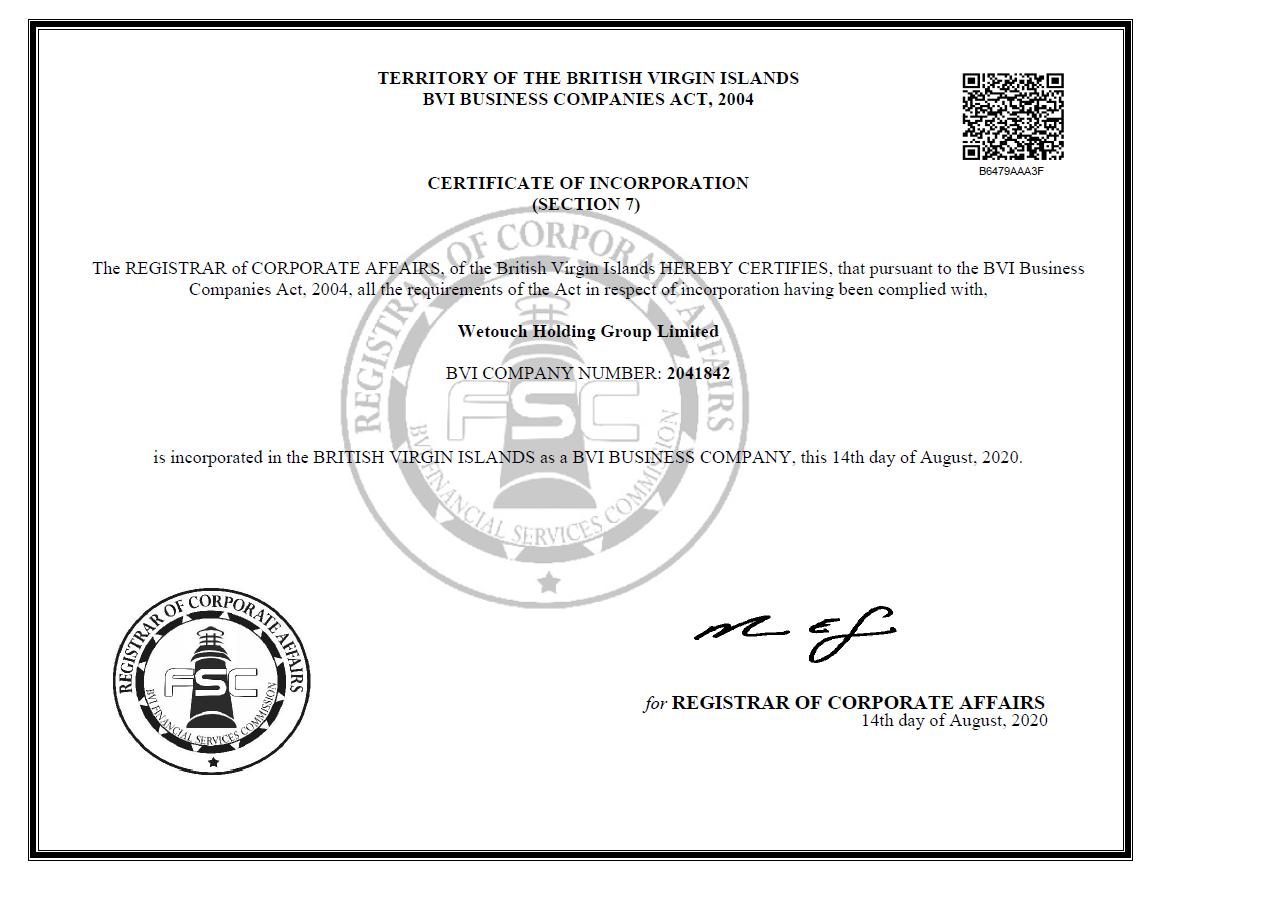
Exhibit 3.4
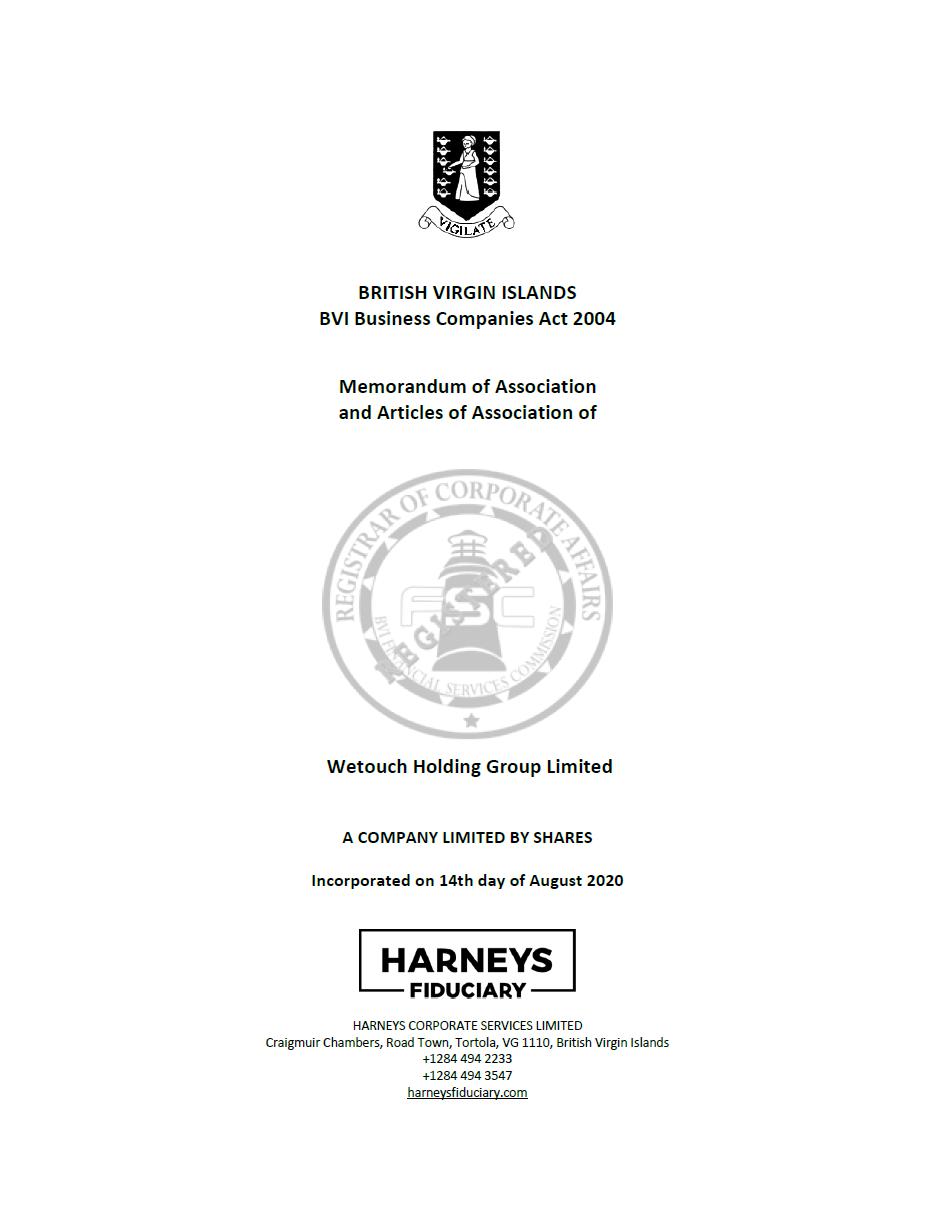
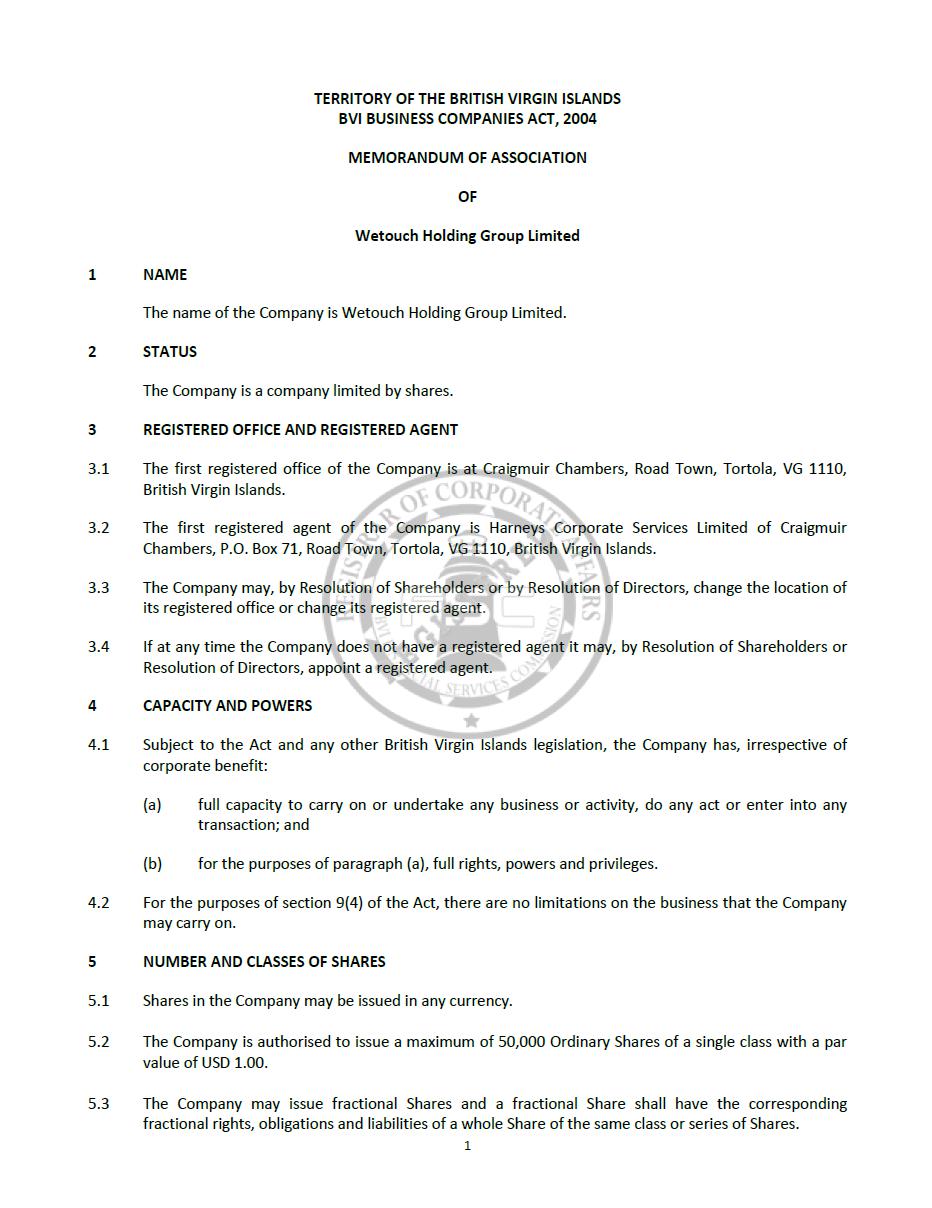
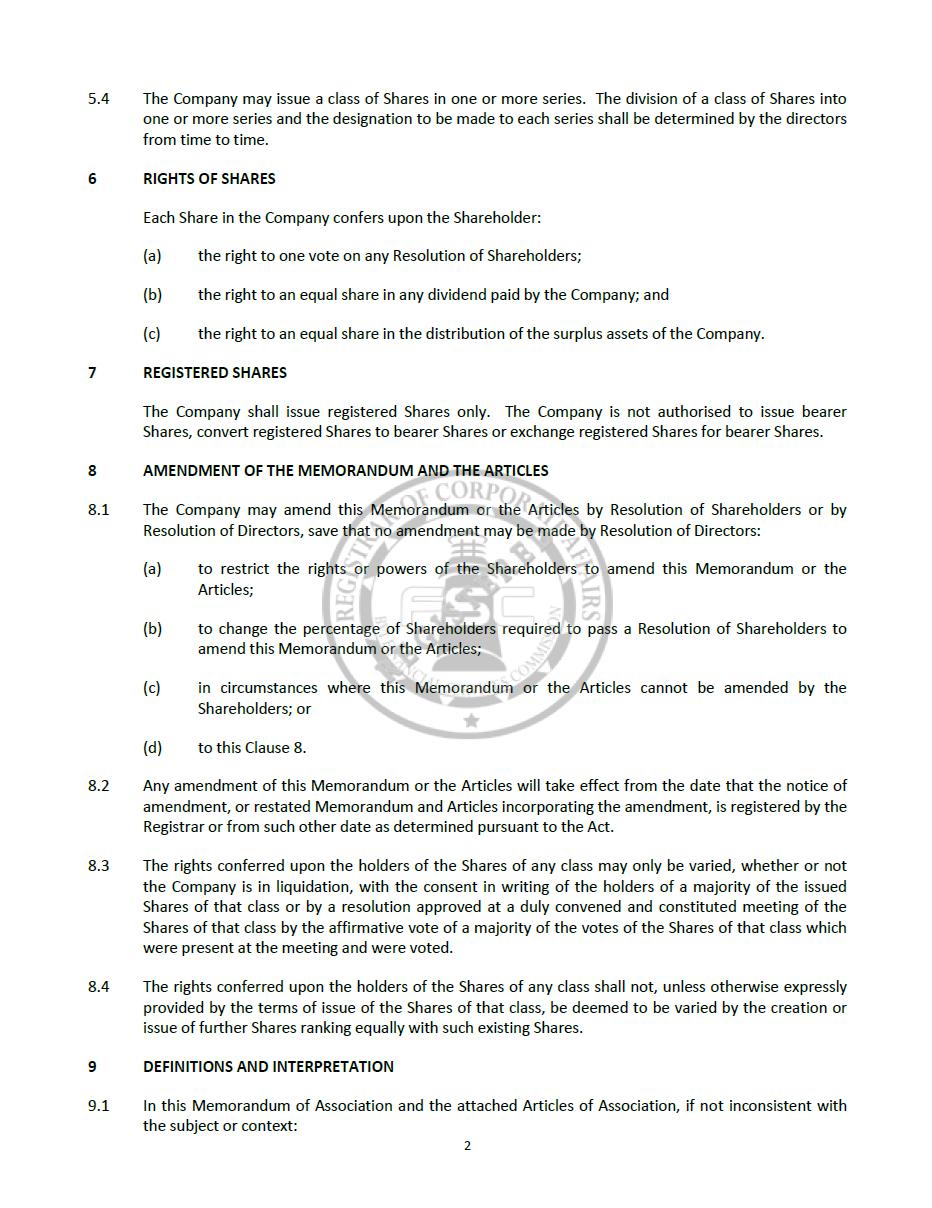
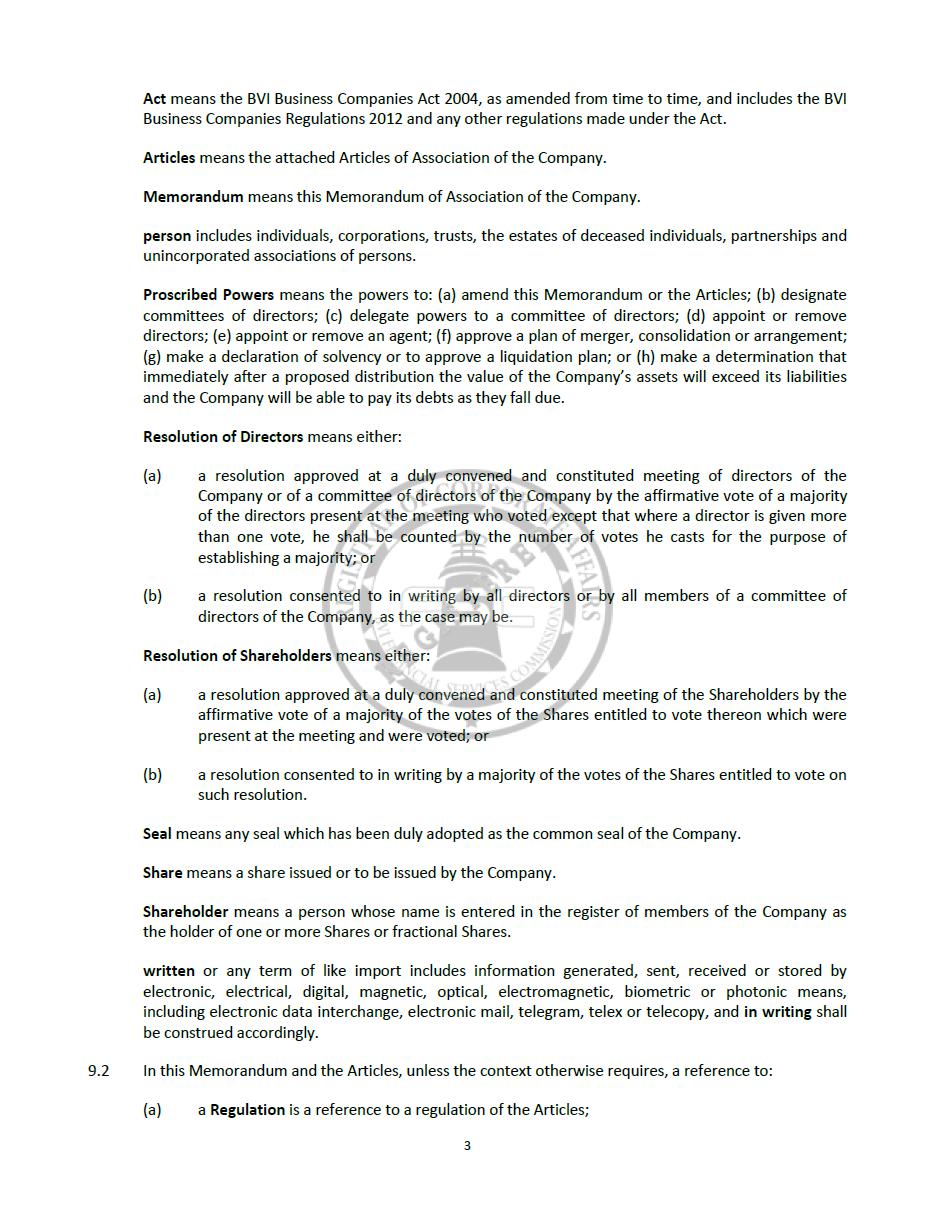
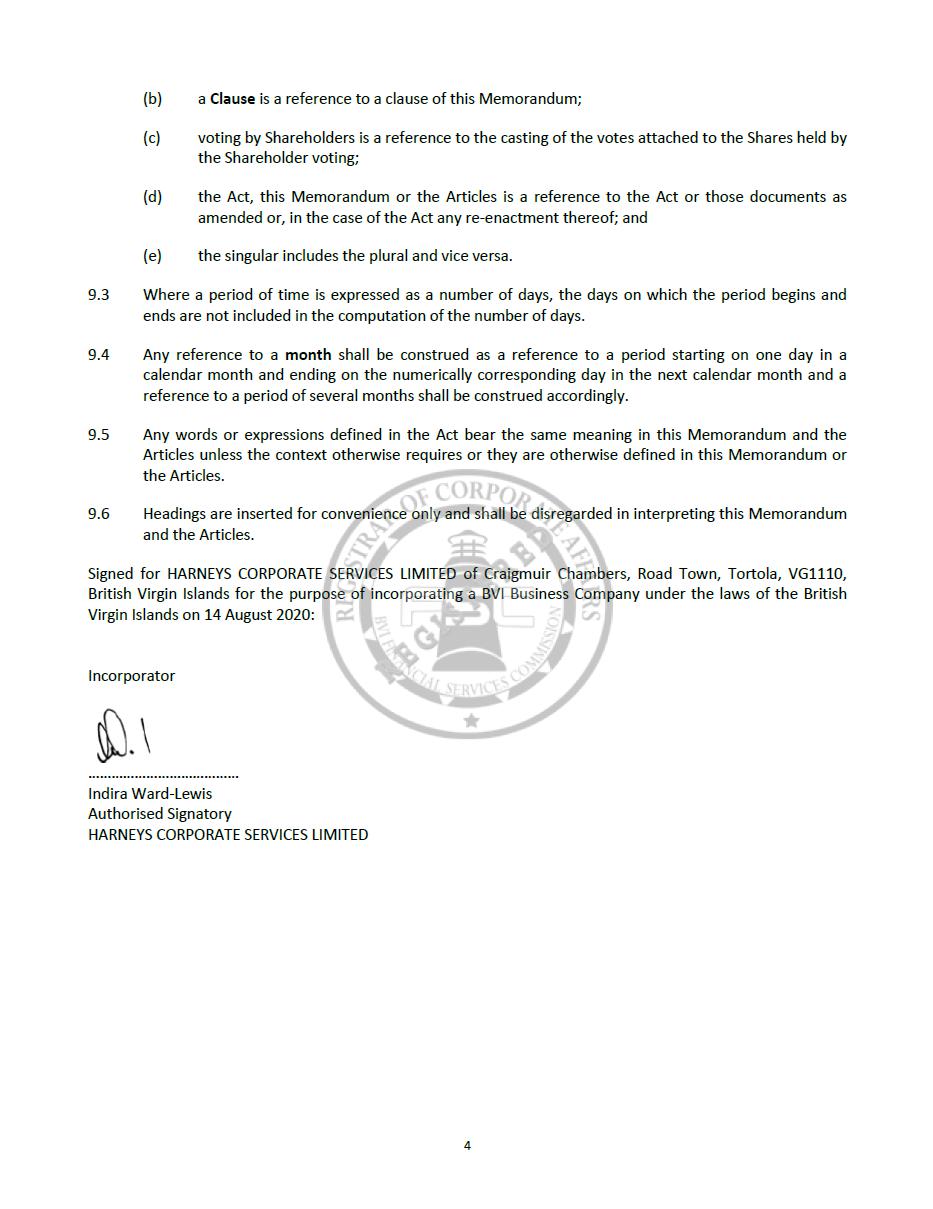
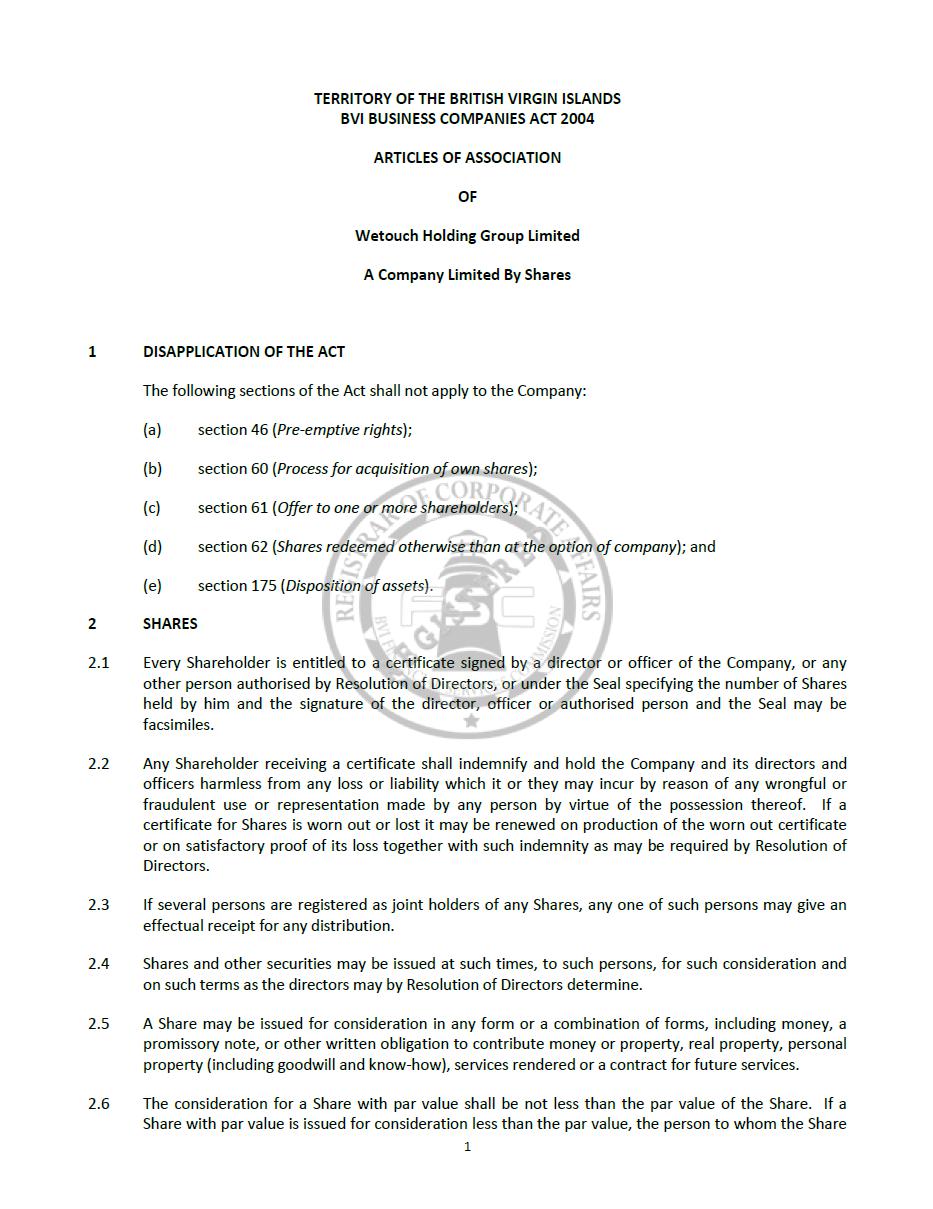
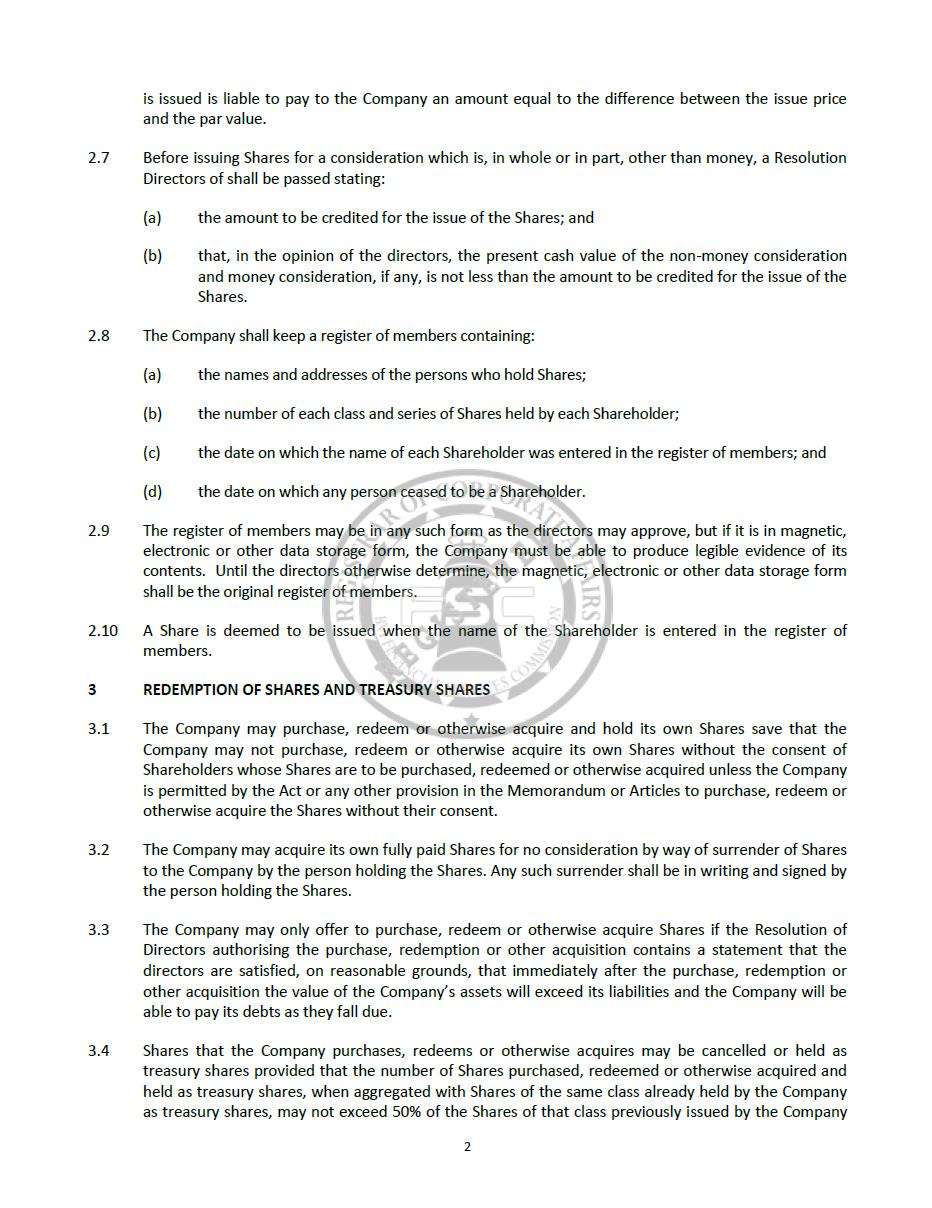
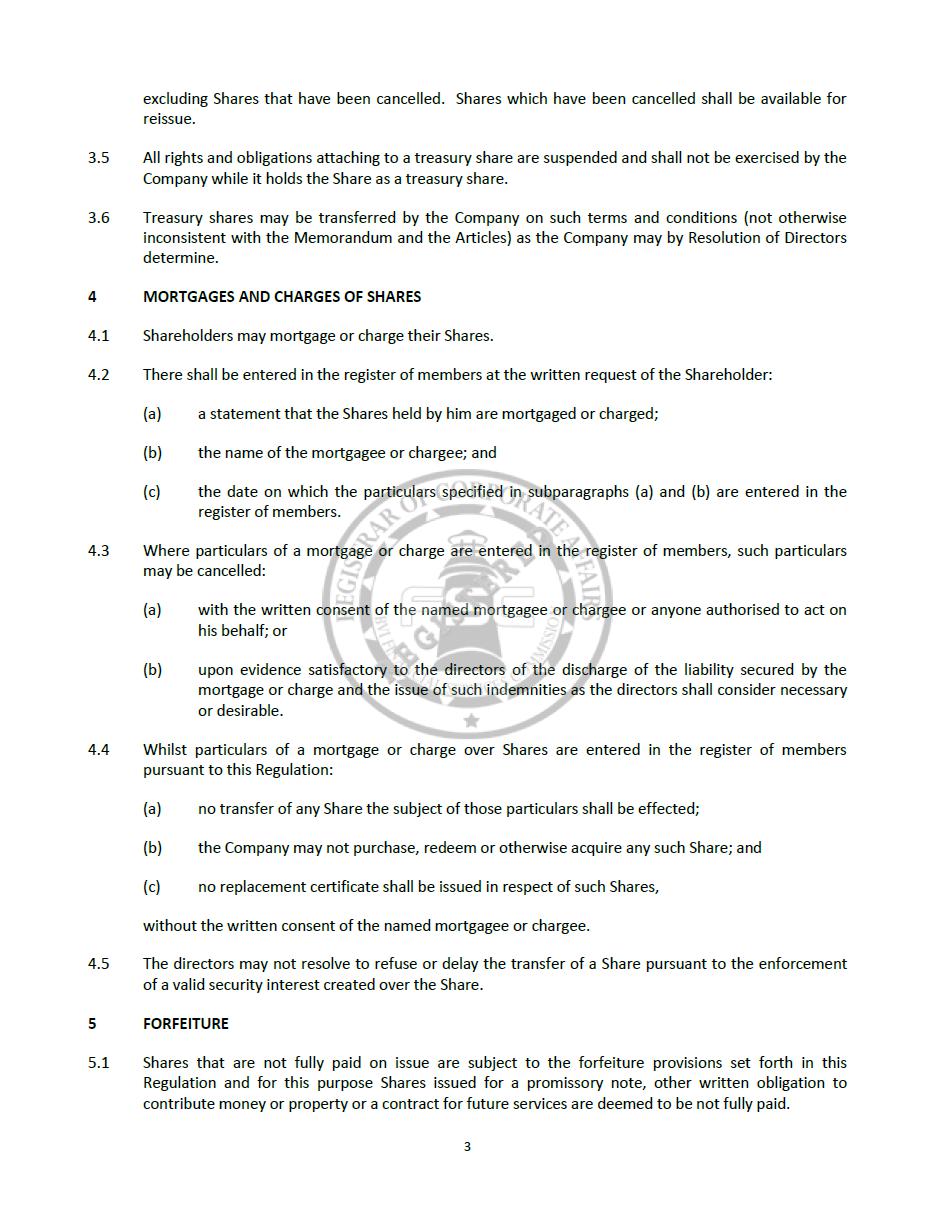
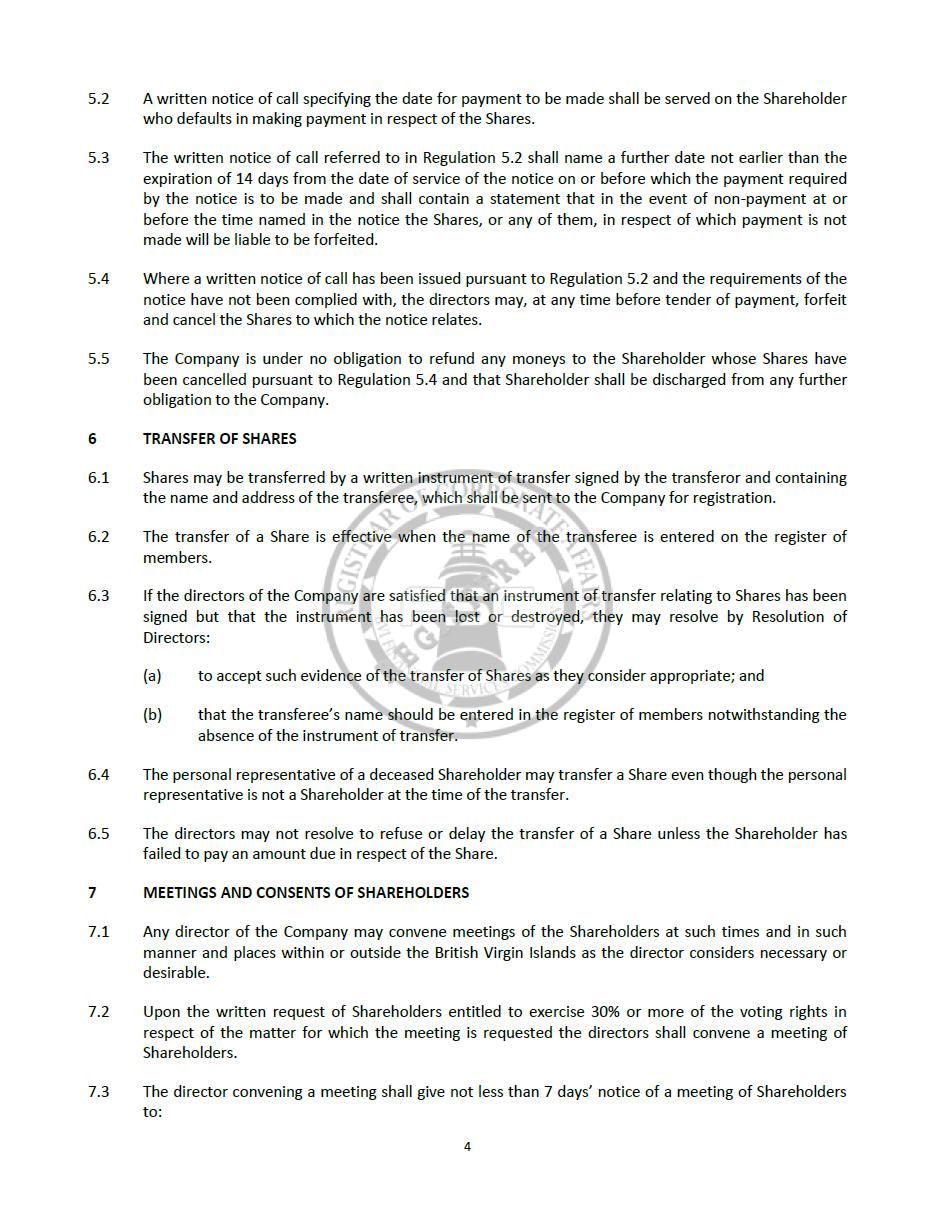
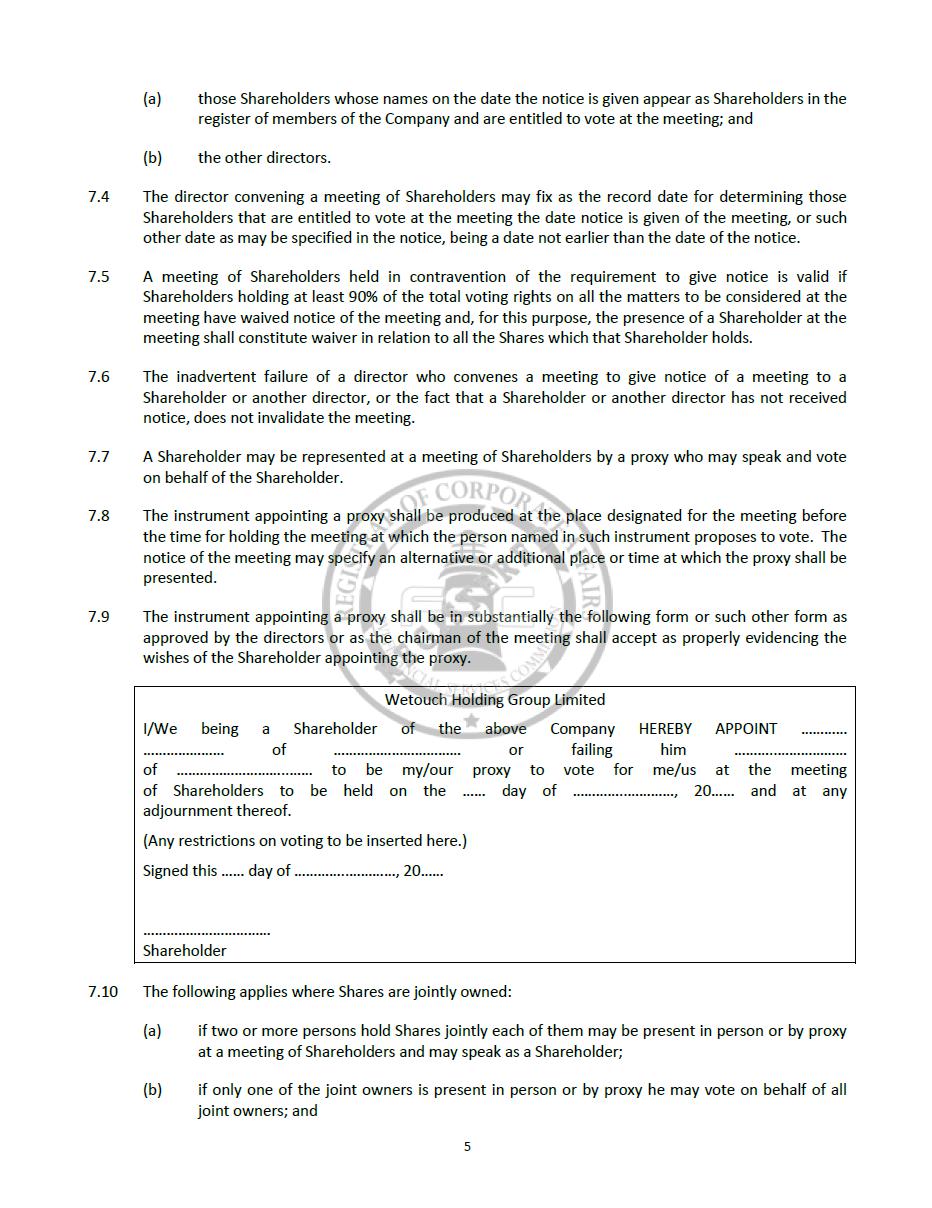
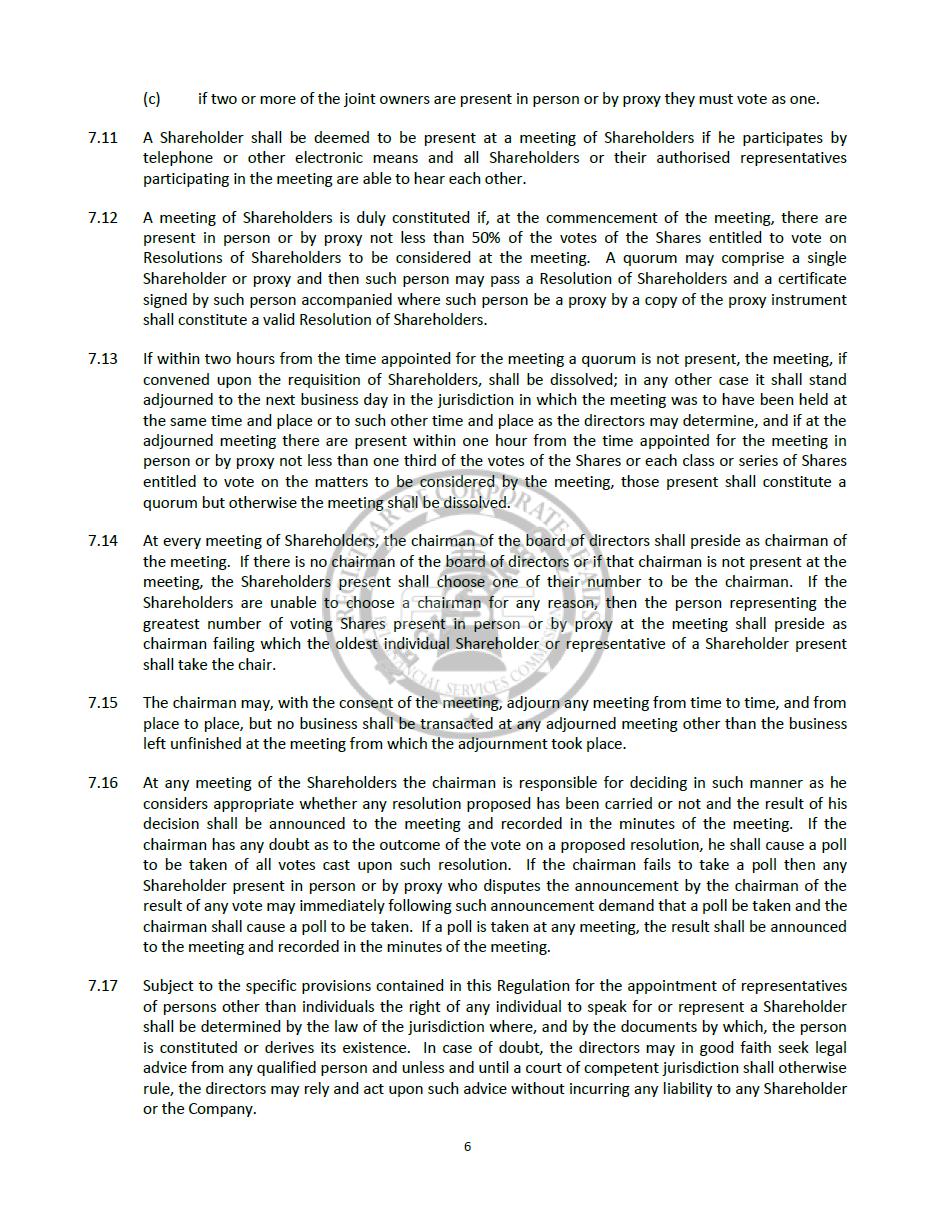
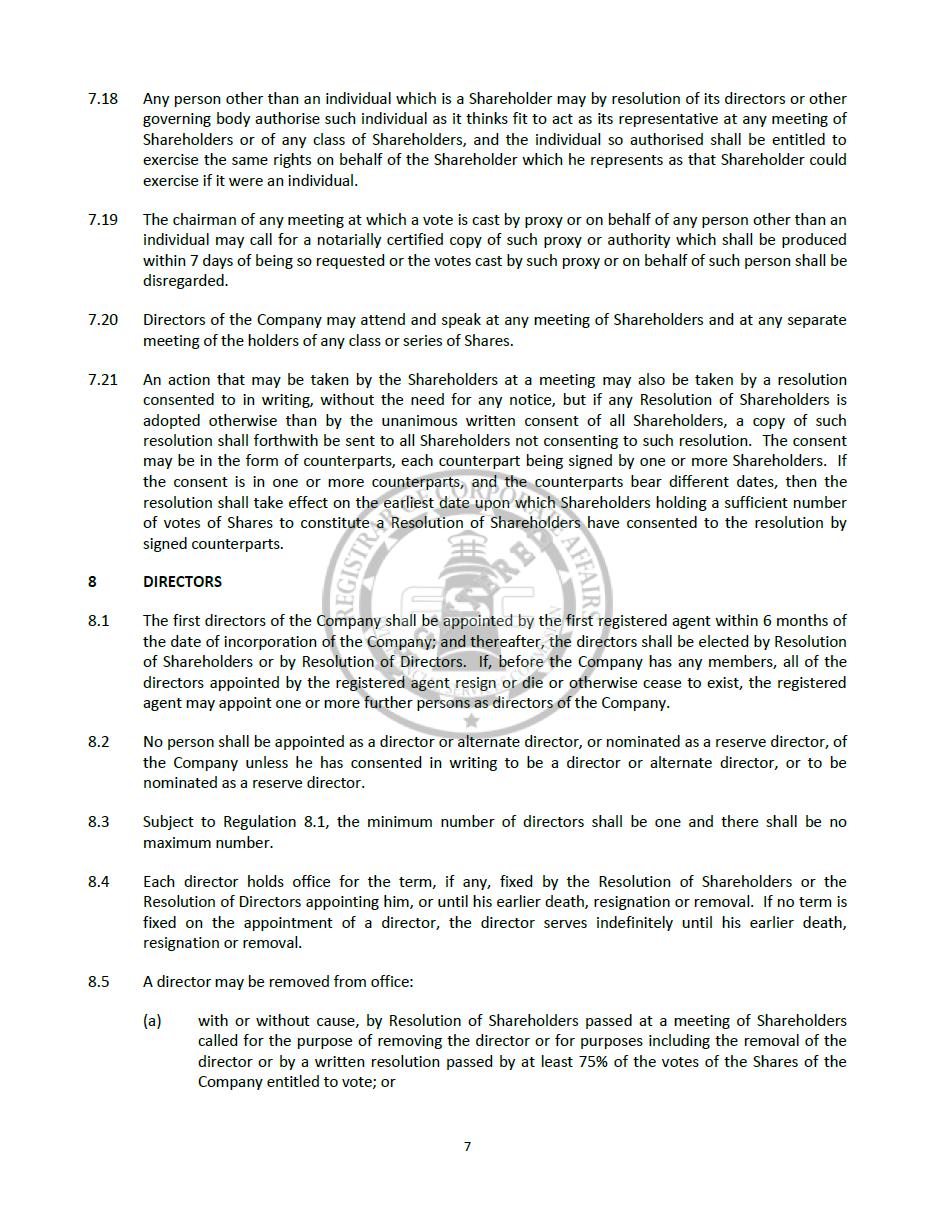
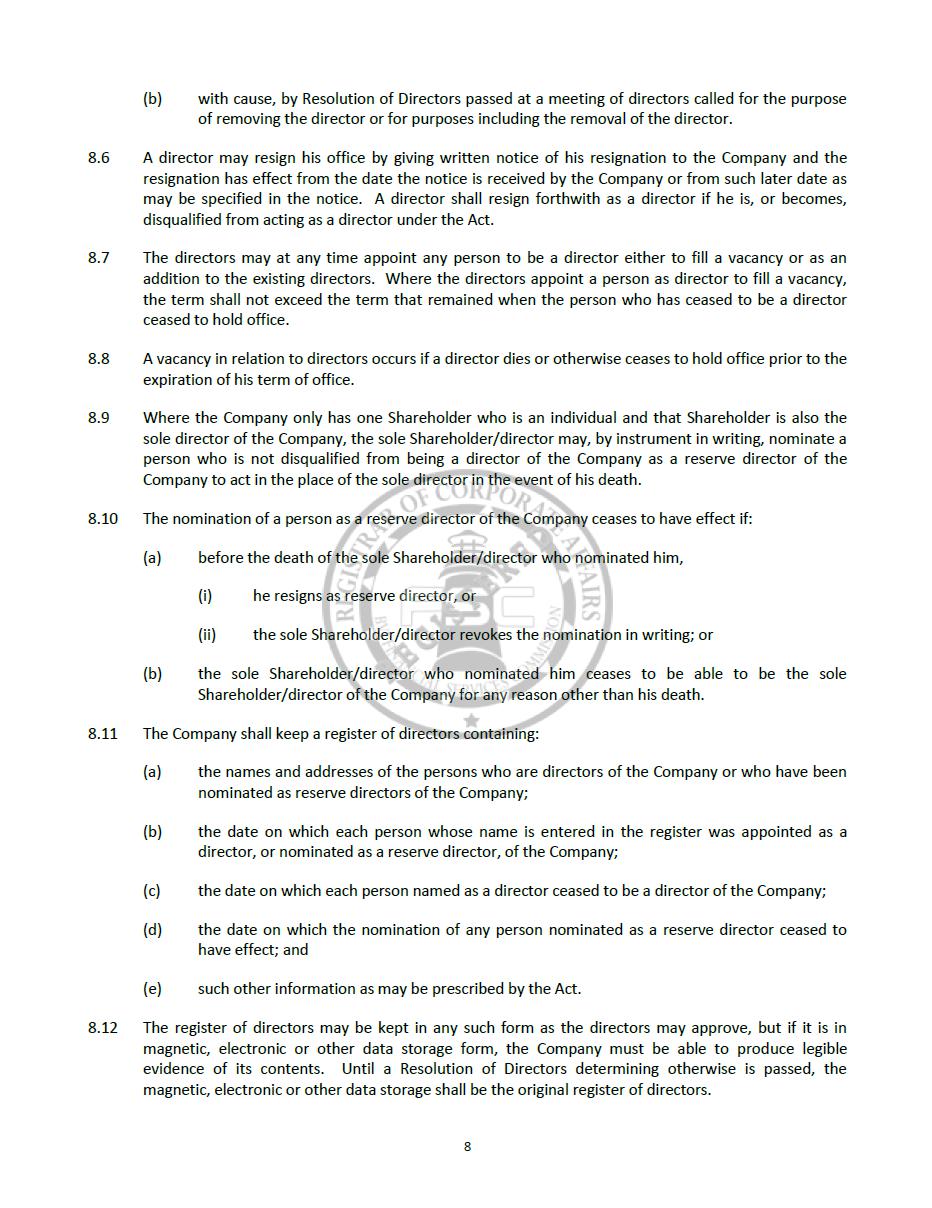
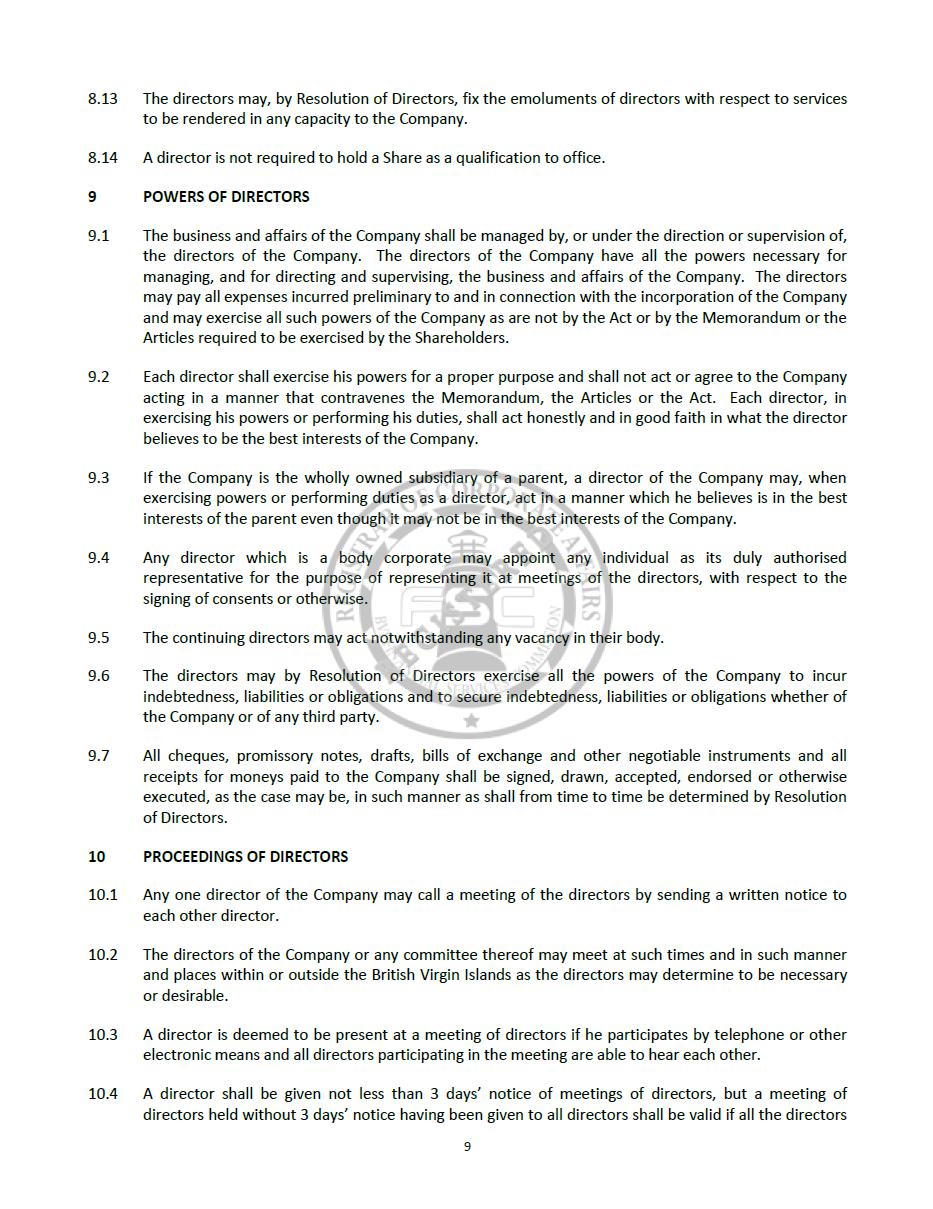
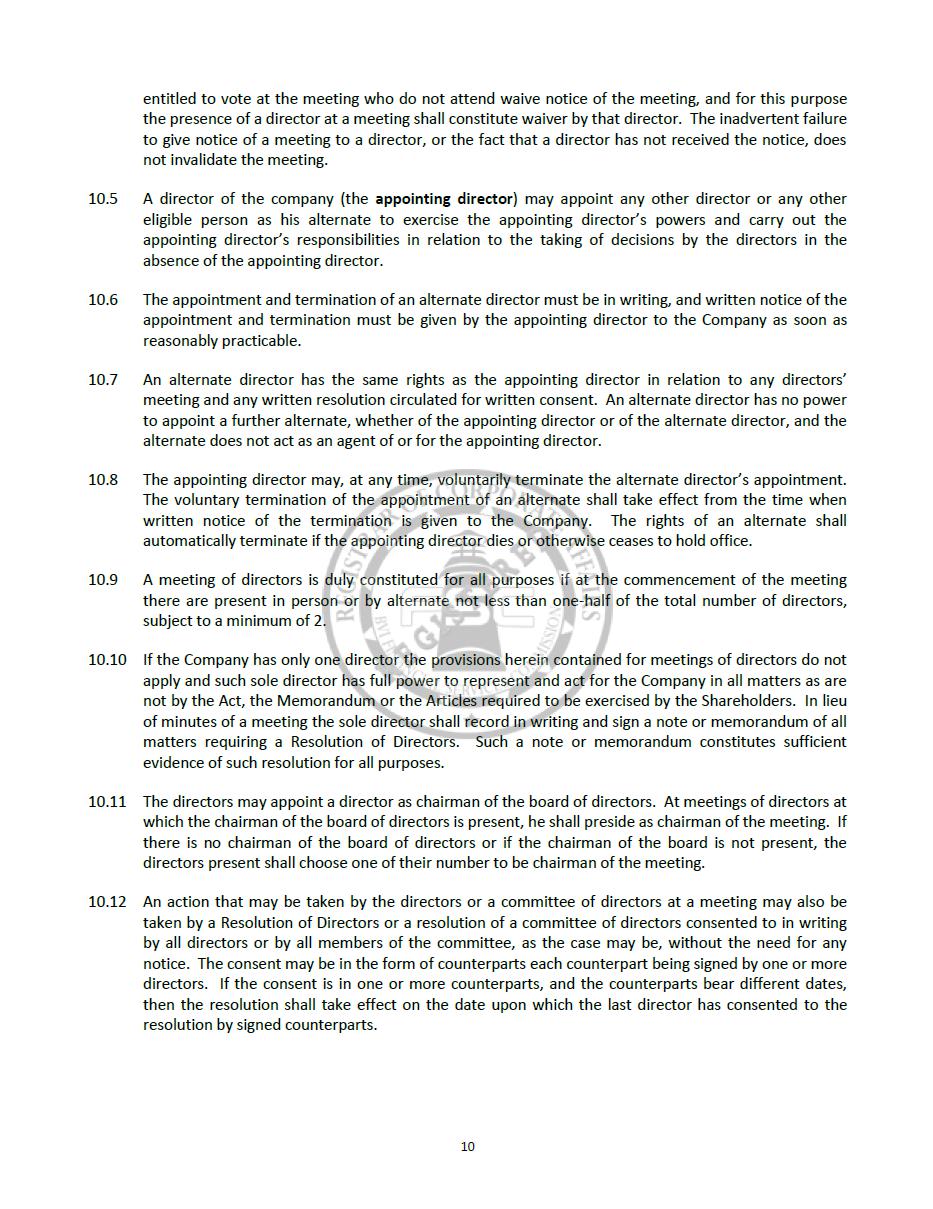
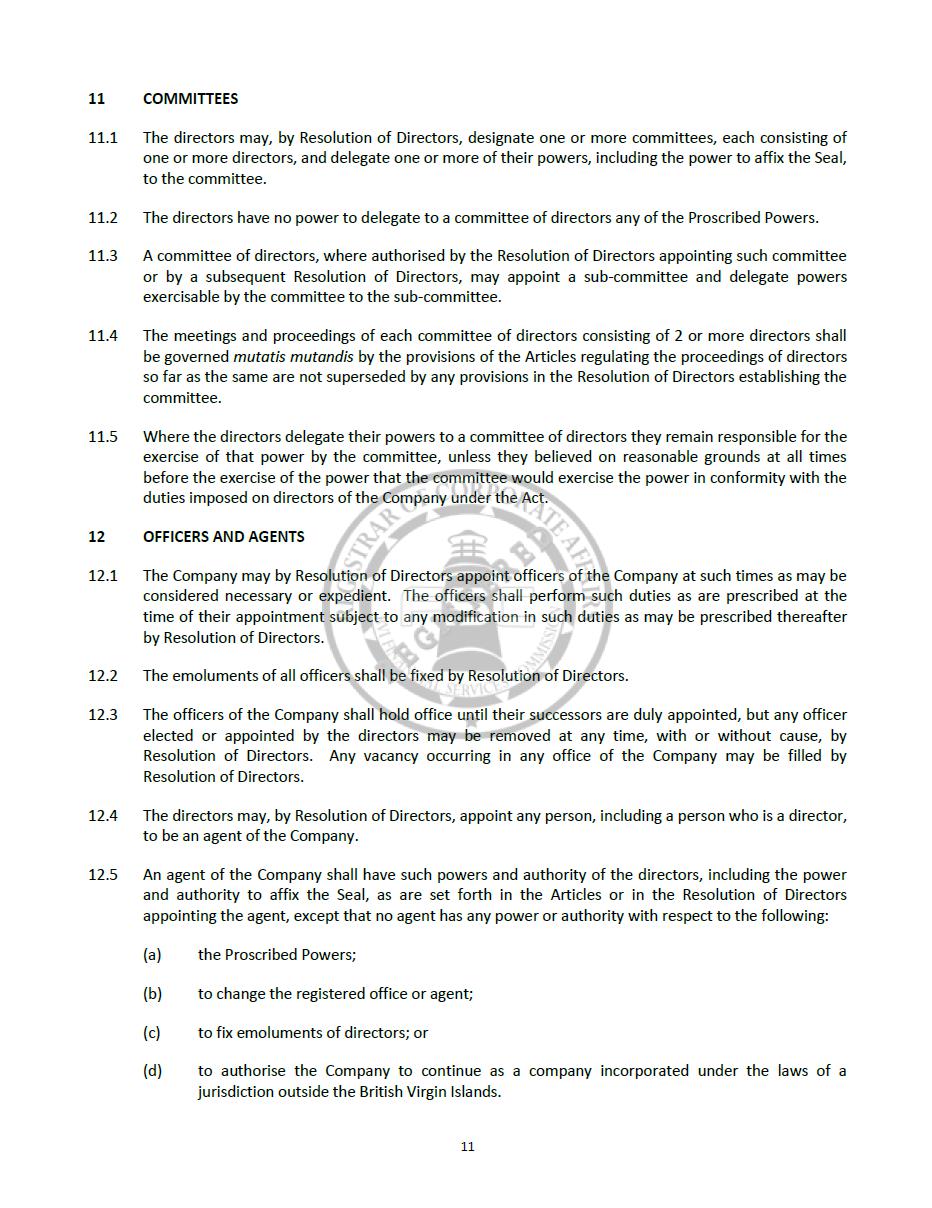
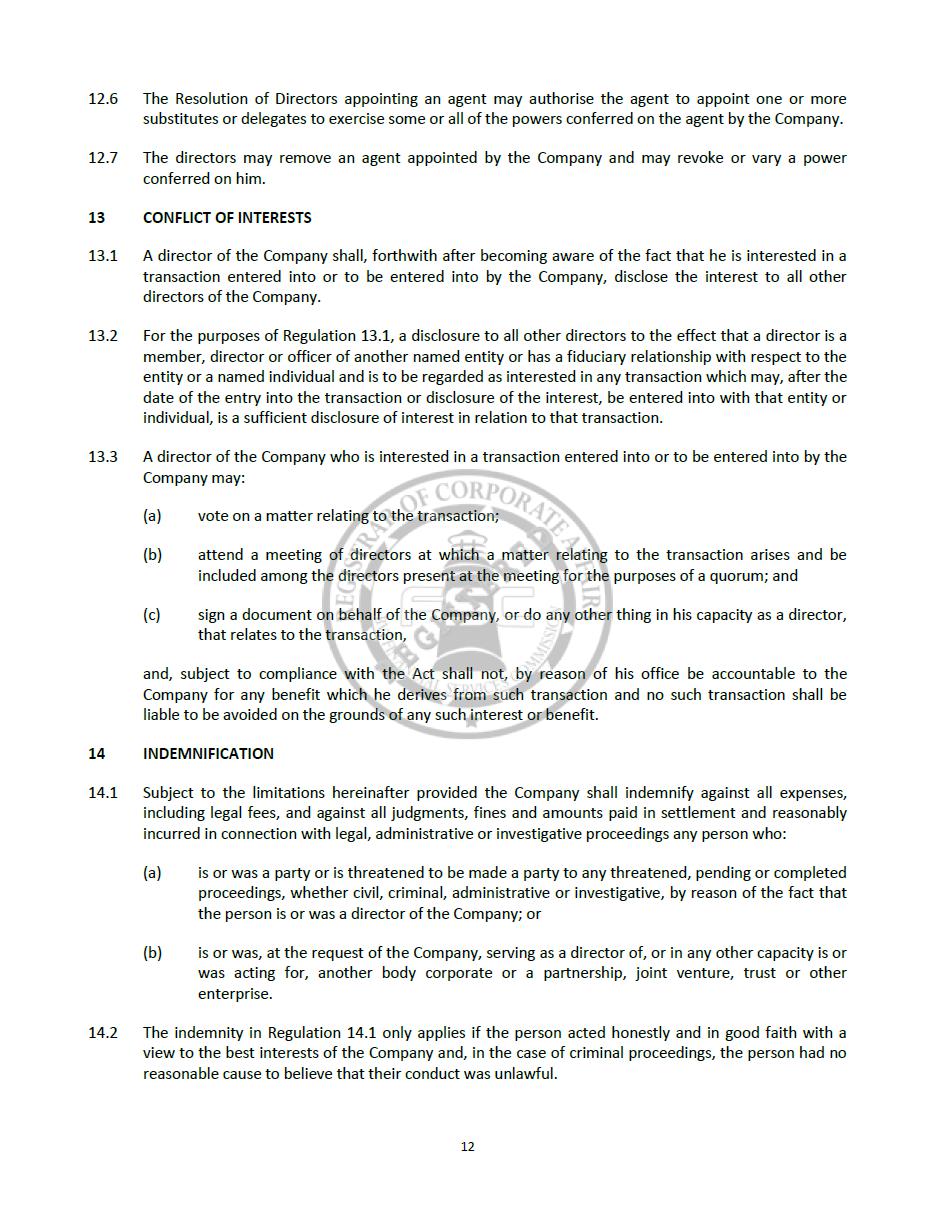
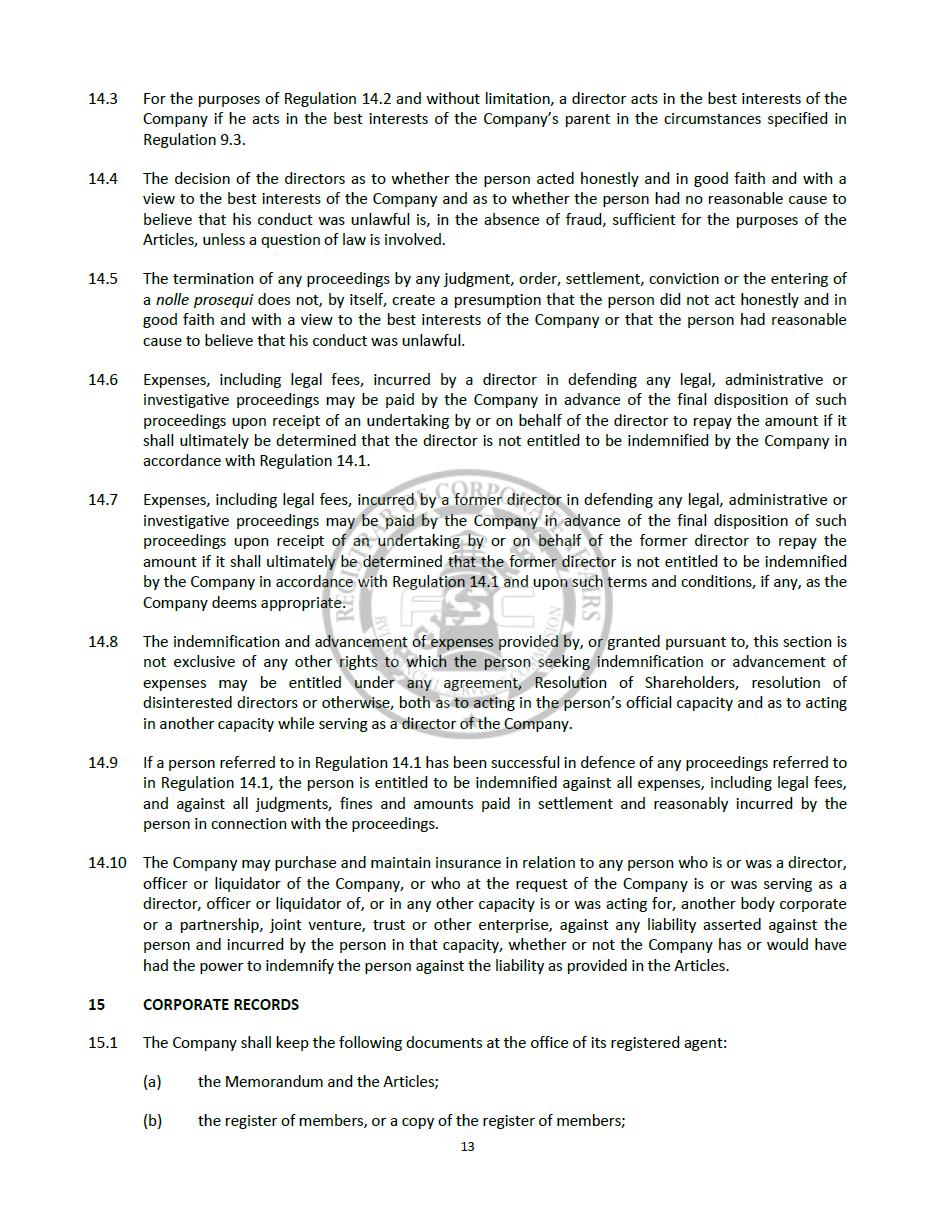
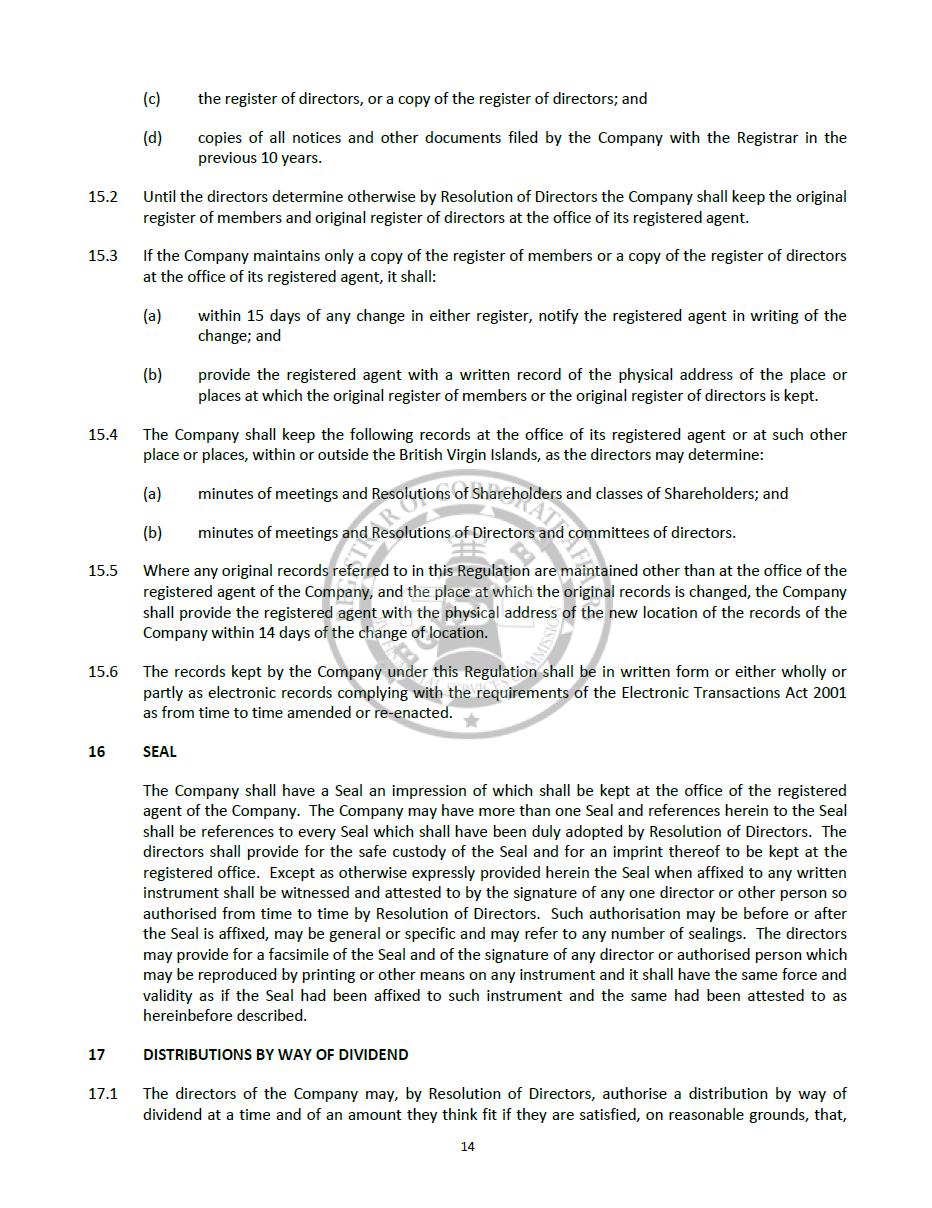
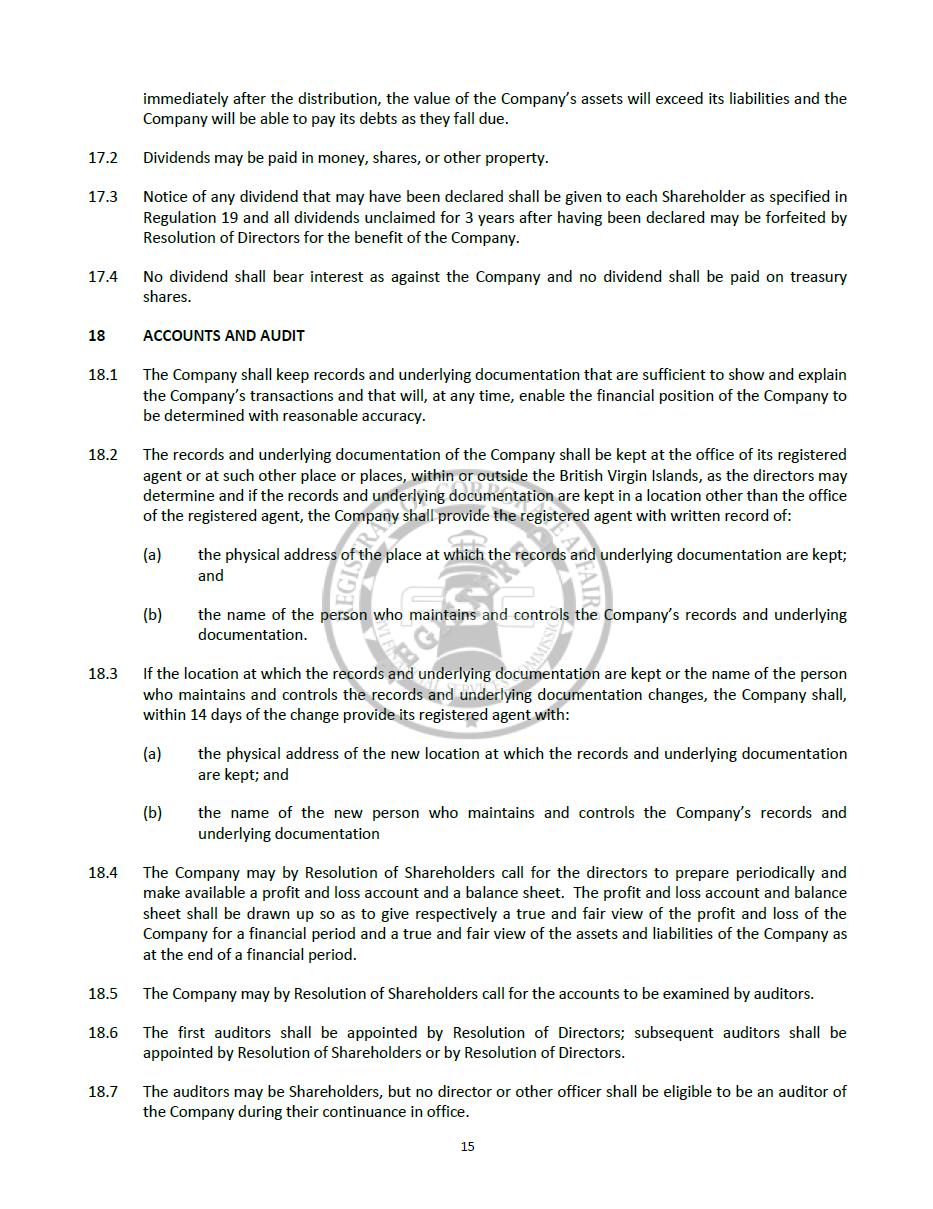
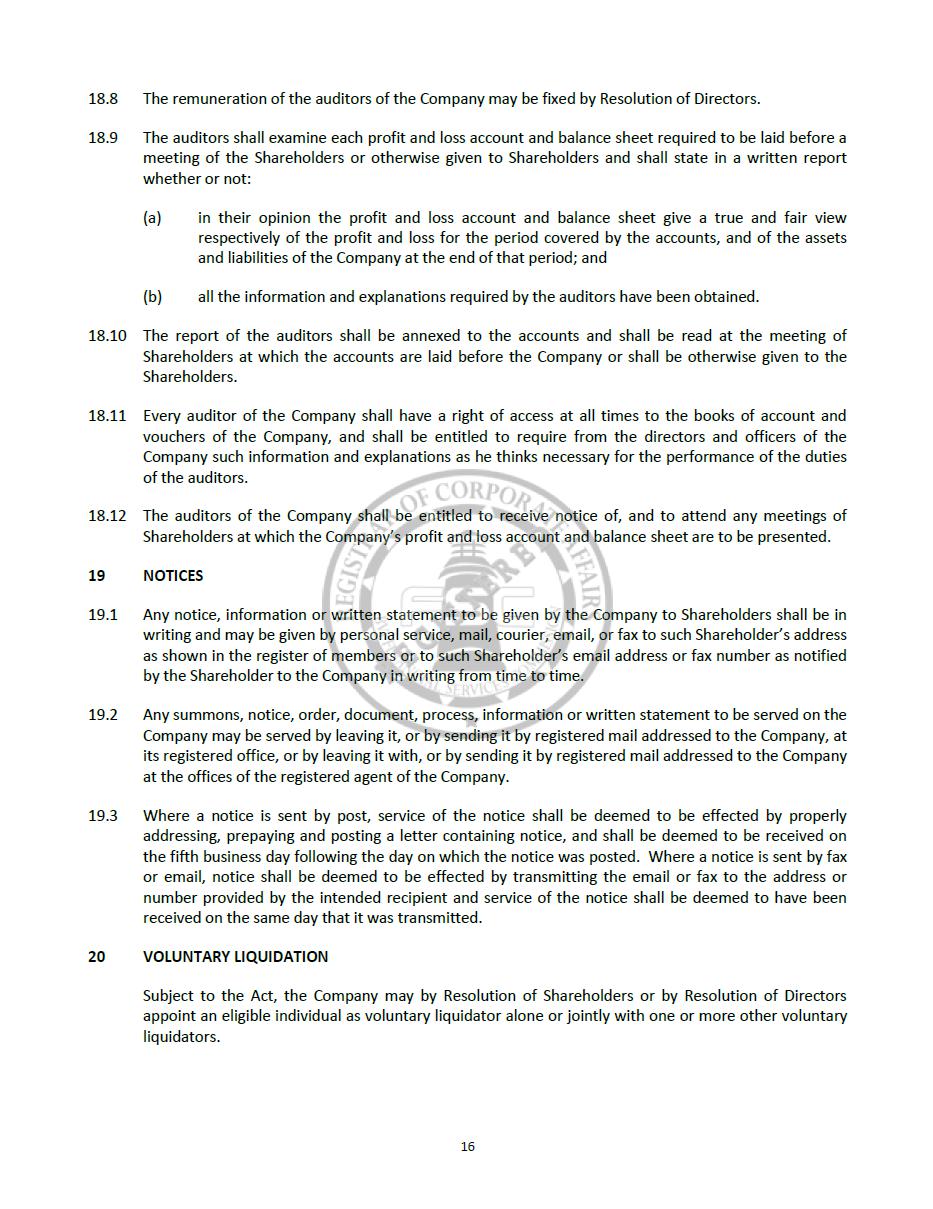
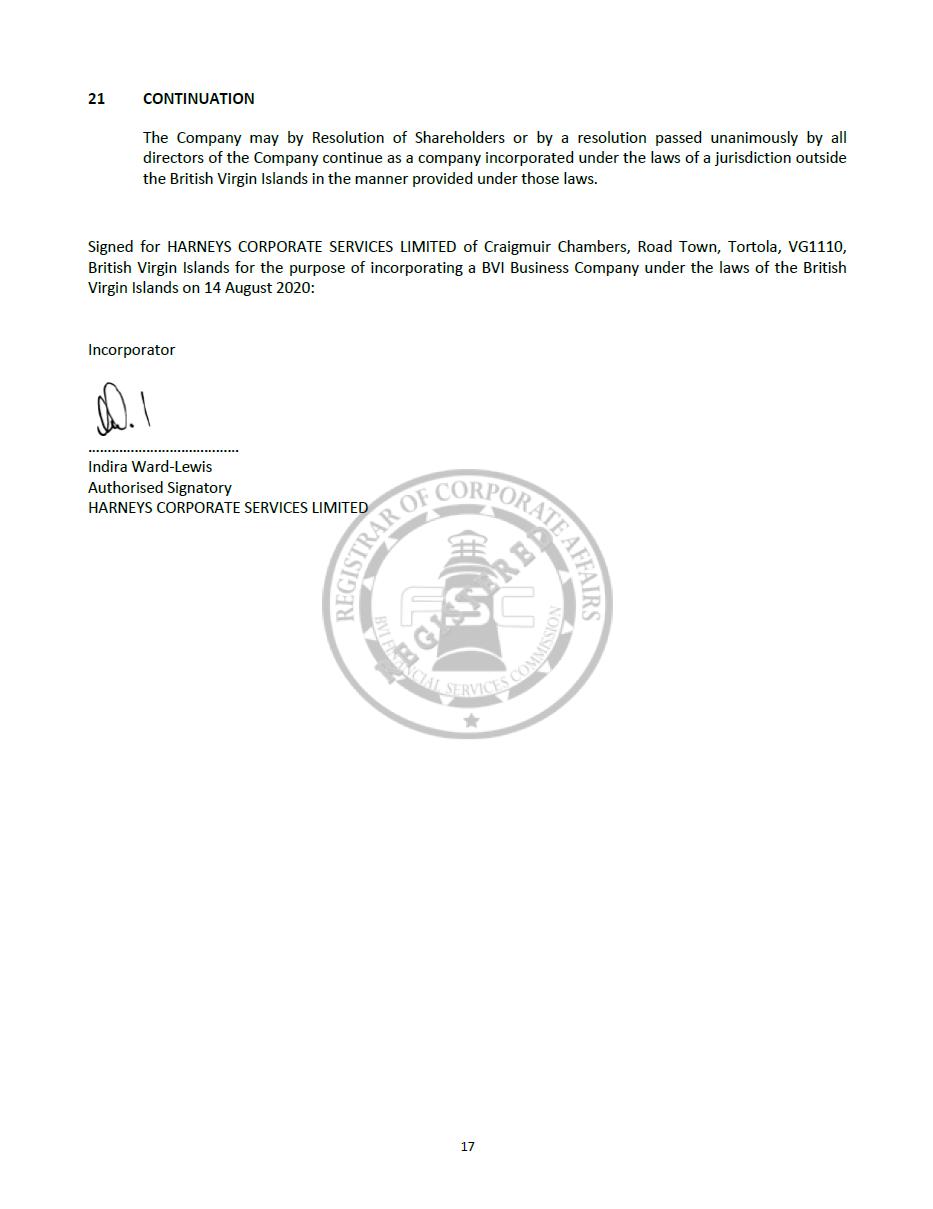
Exhibit 3.5.1
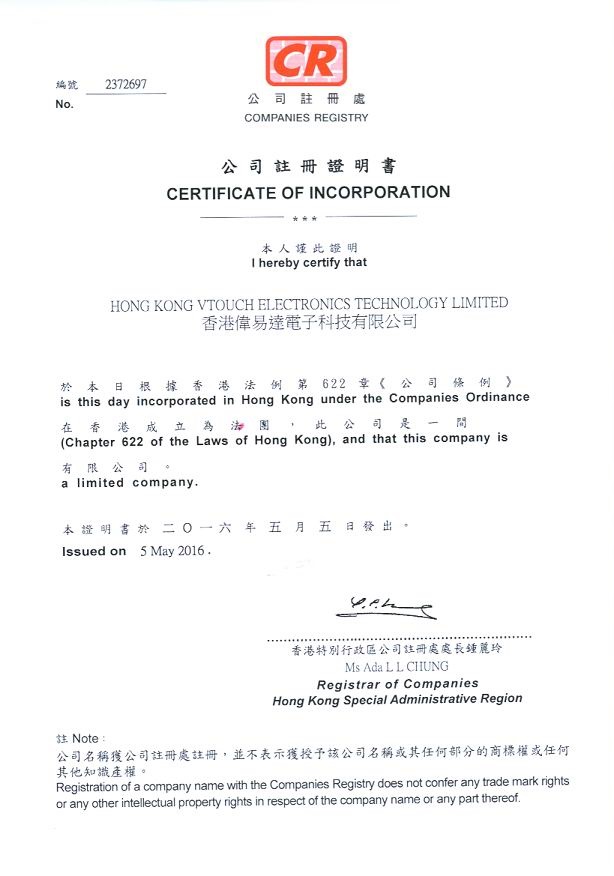
Exhibit 3.5.2
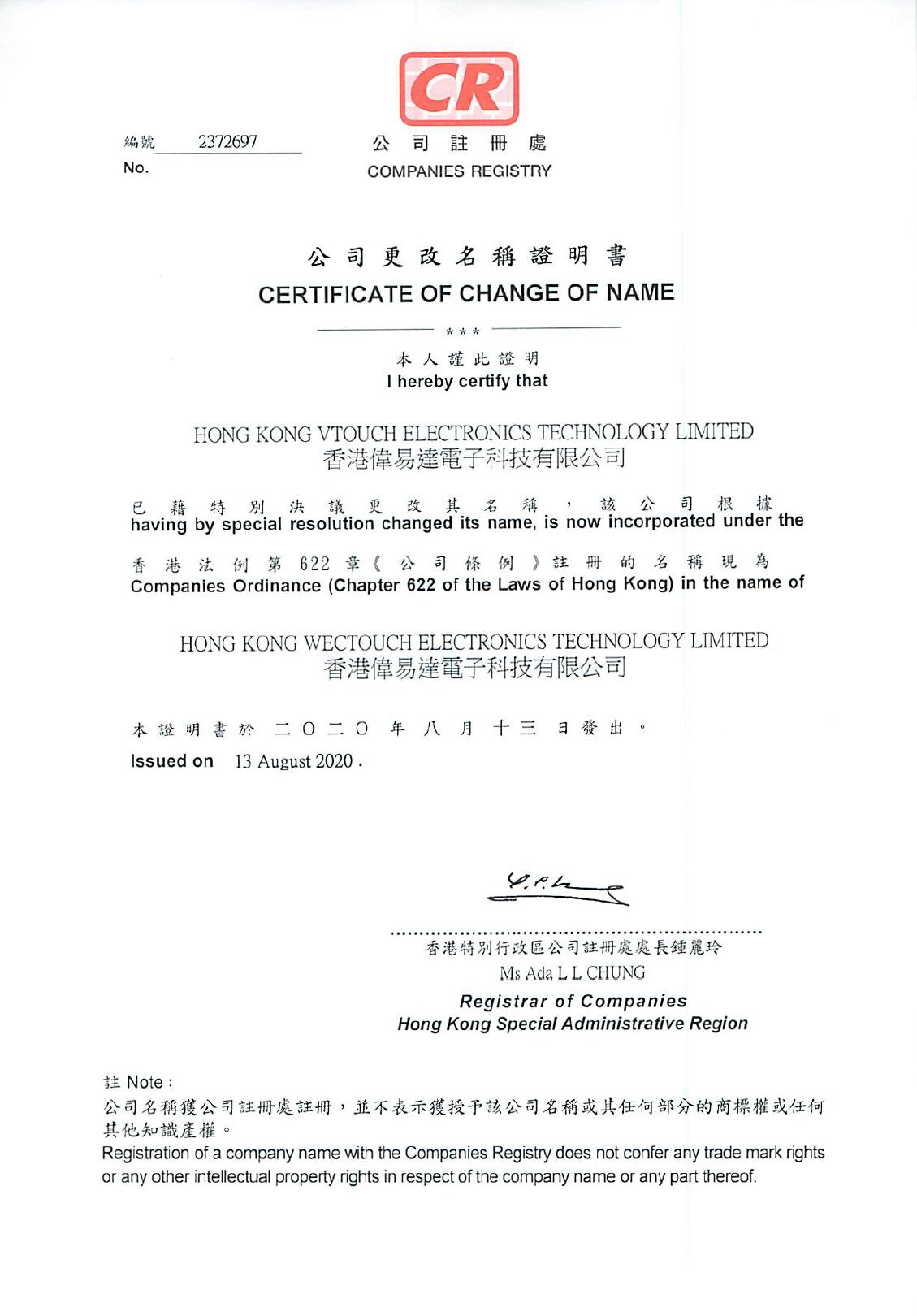
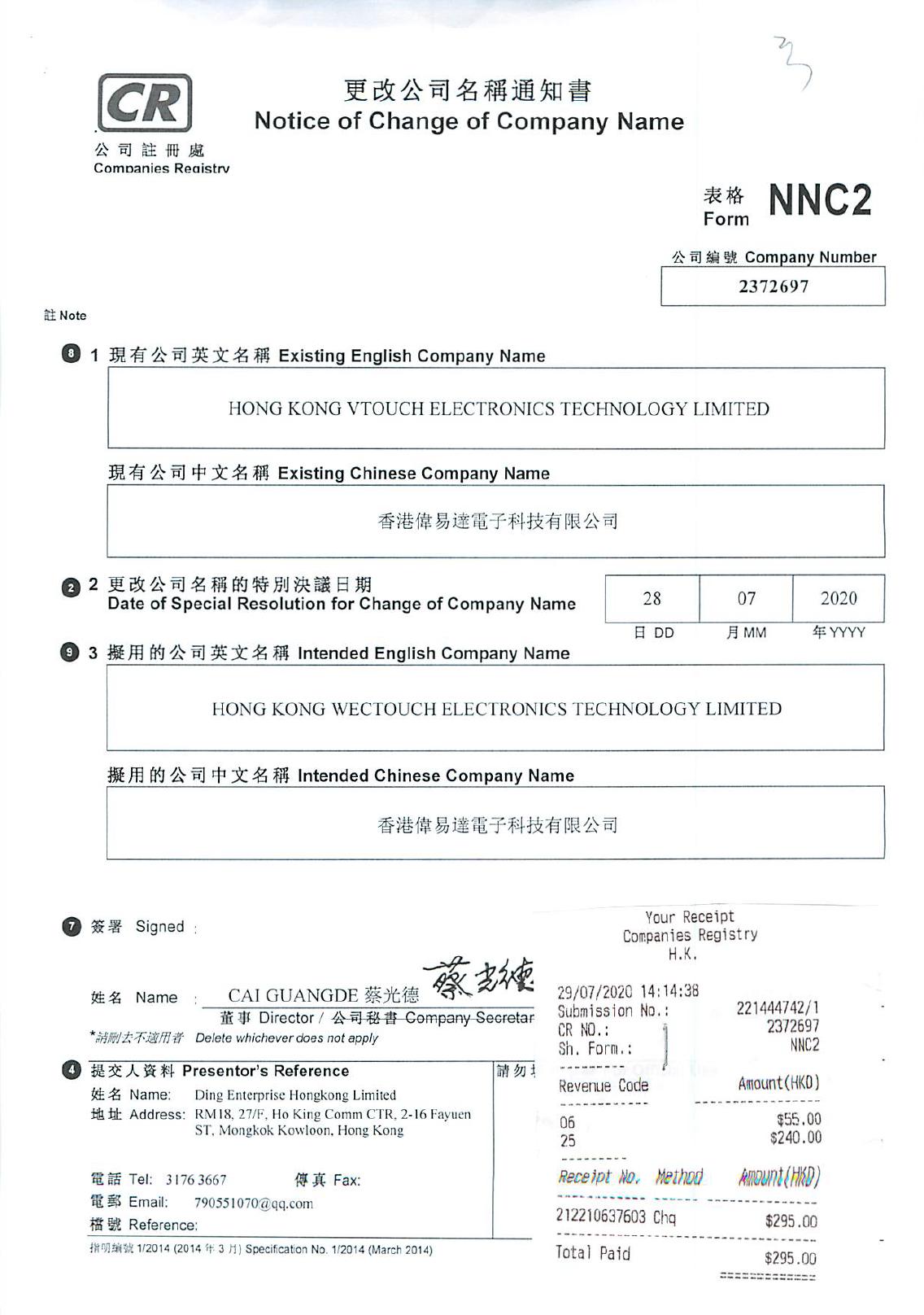
Exhibit 3.5.3
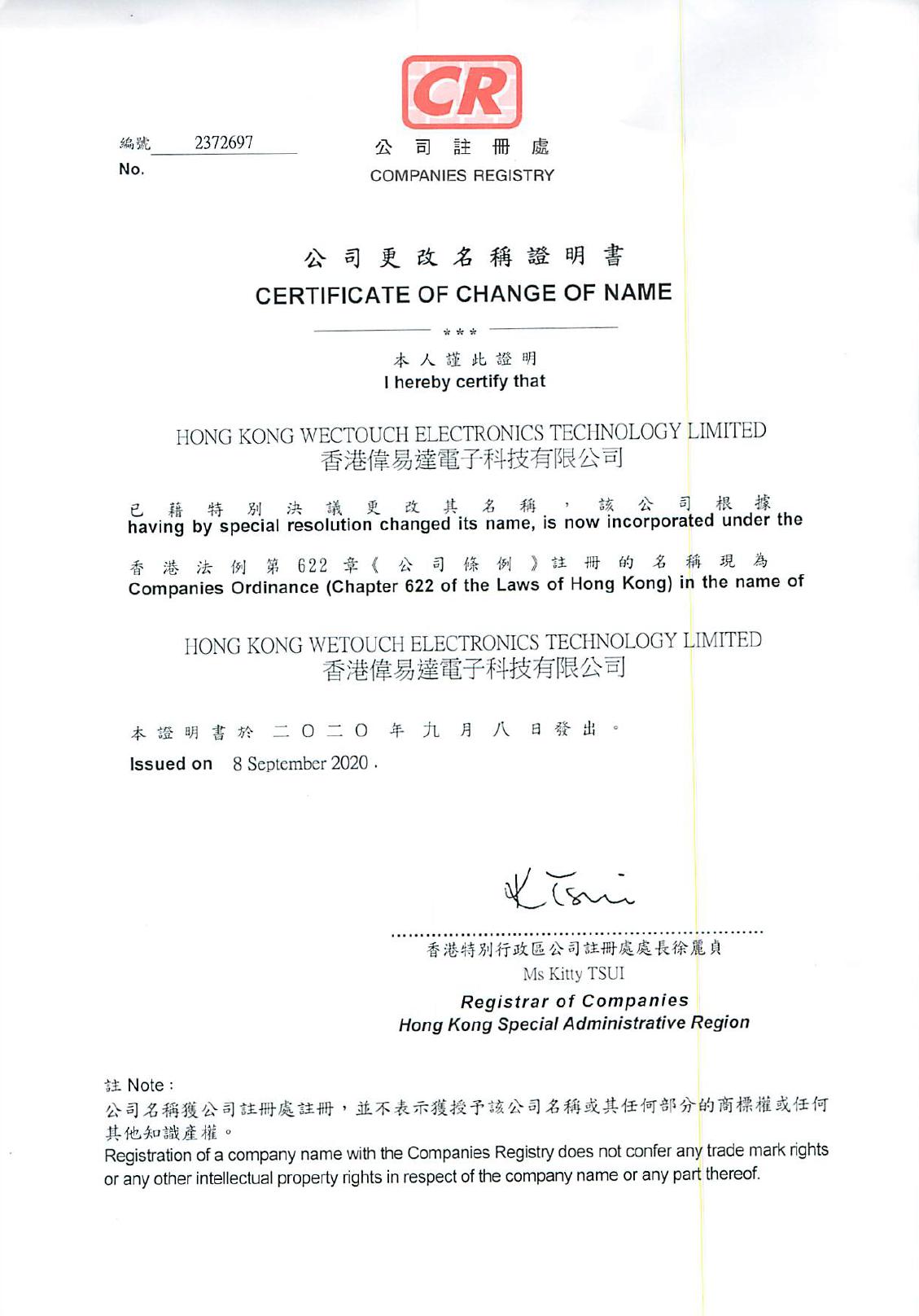
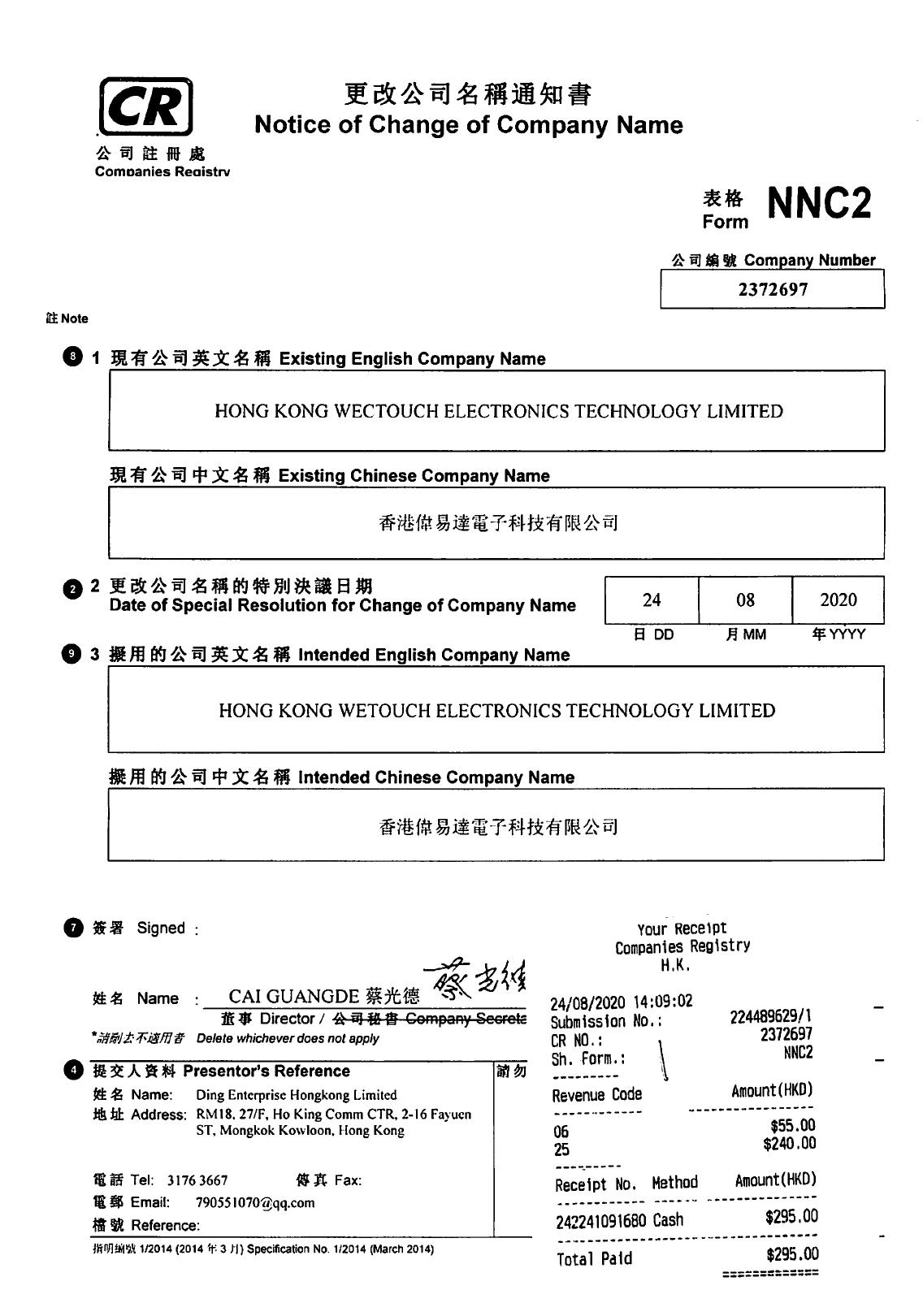
Exhibit 3.6.1
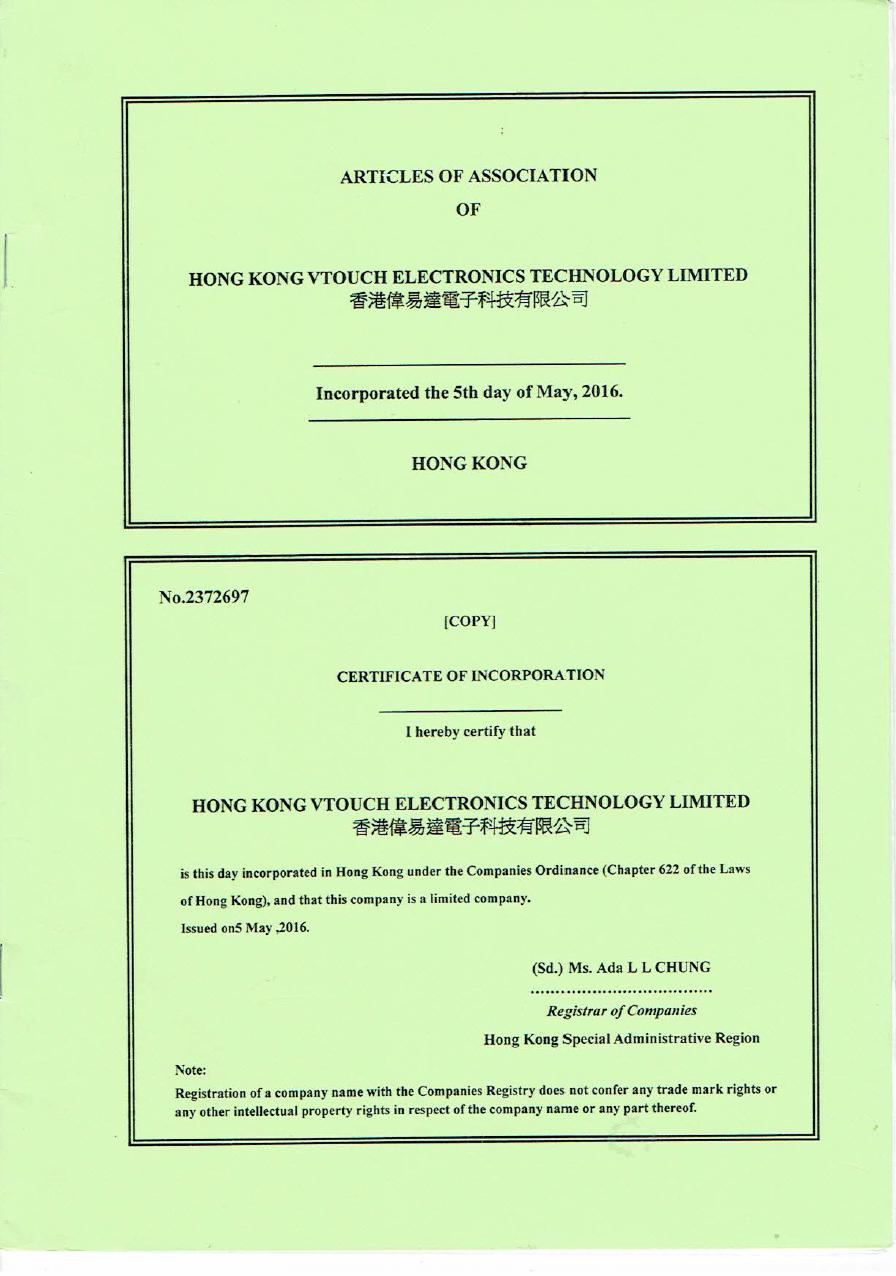
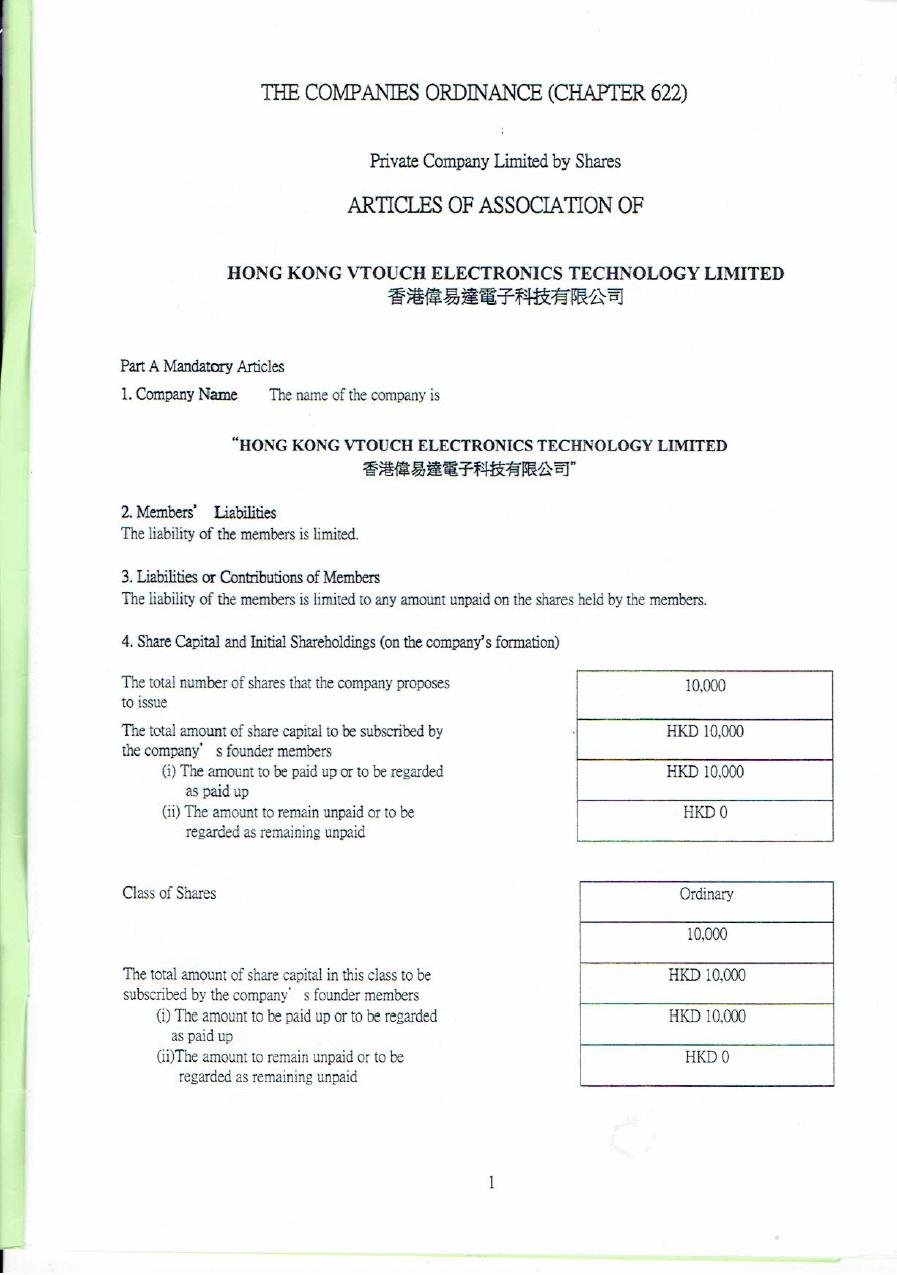
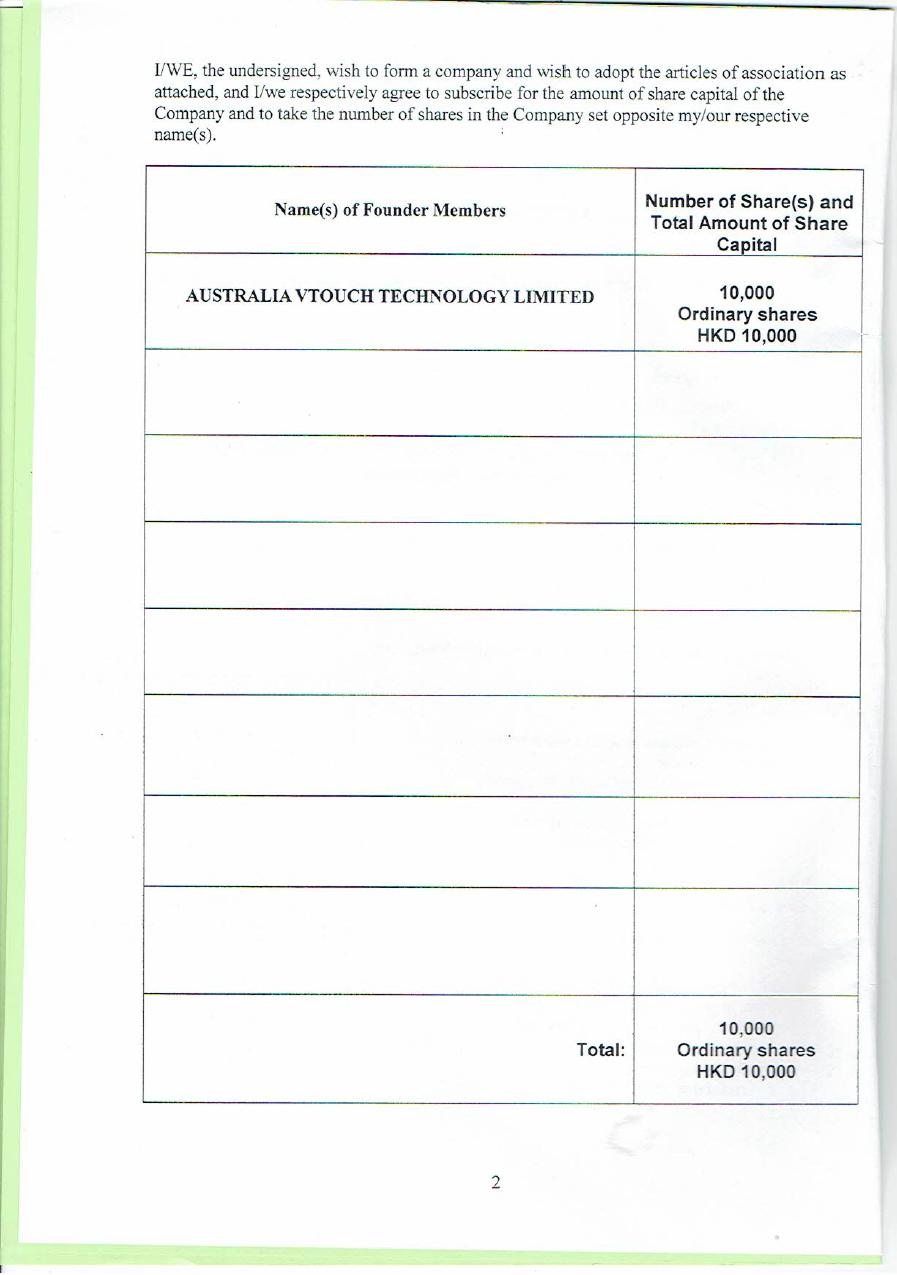
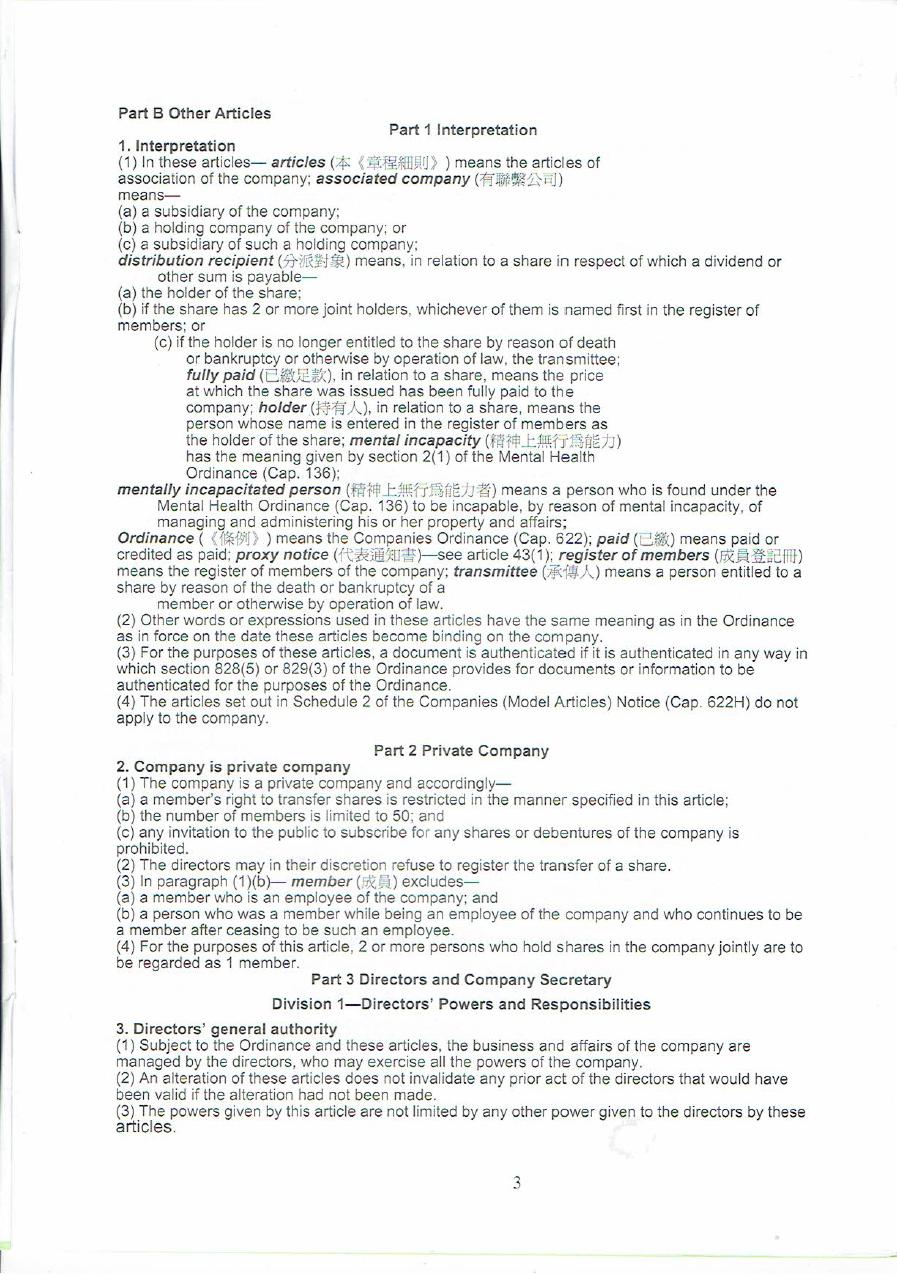
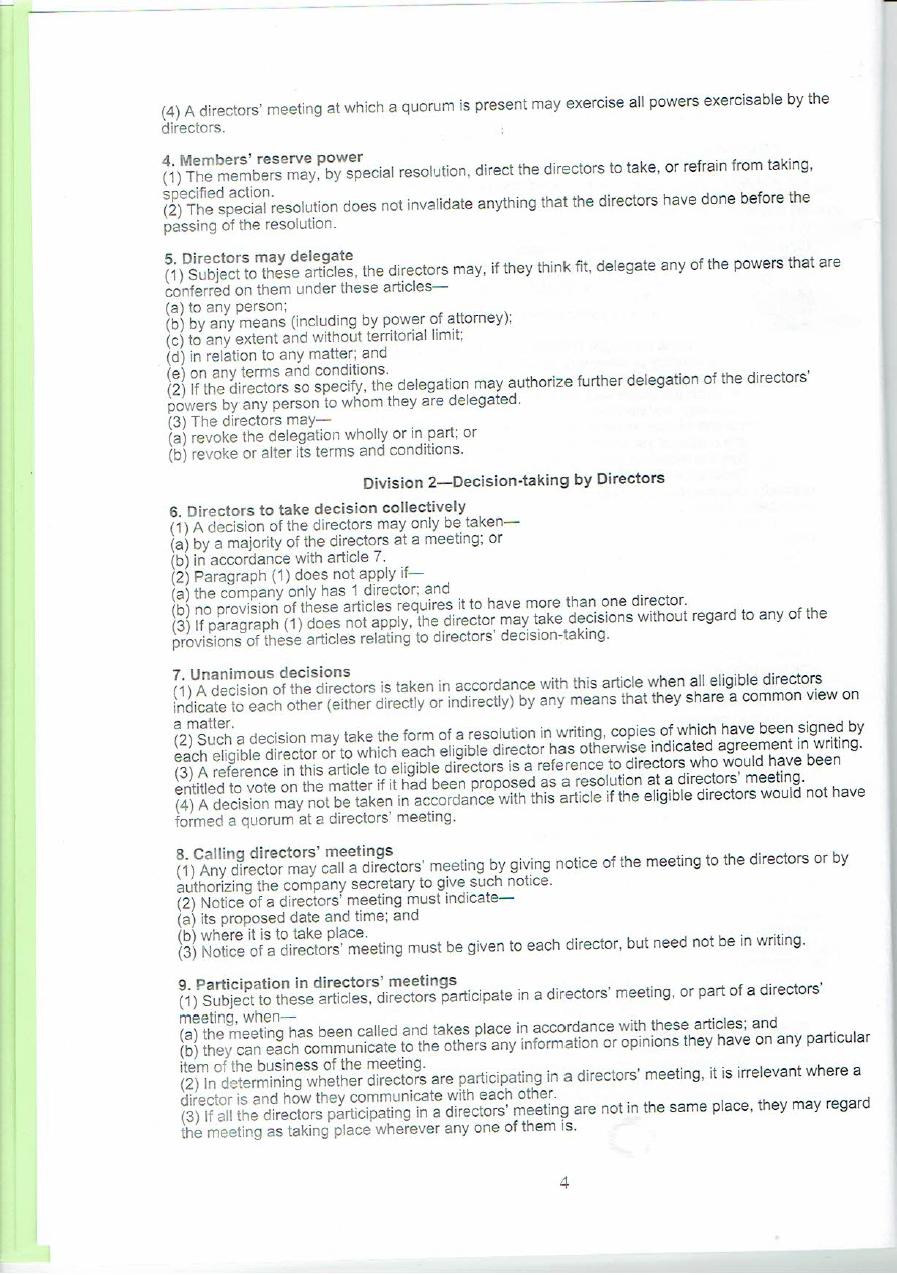
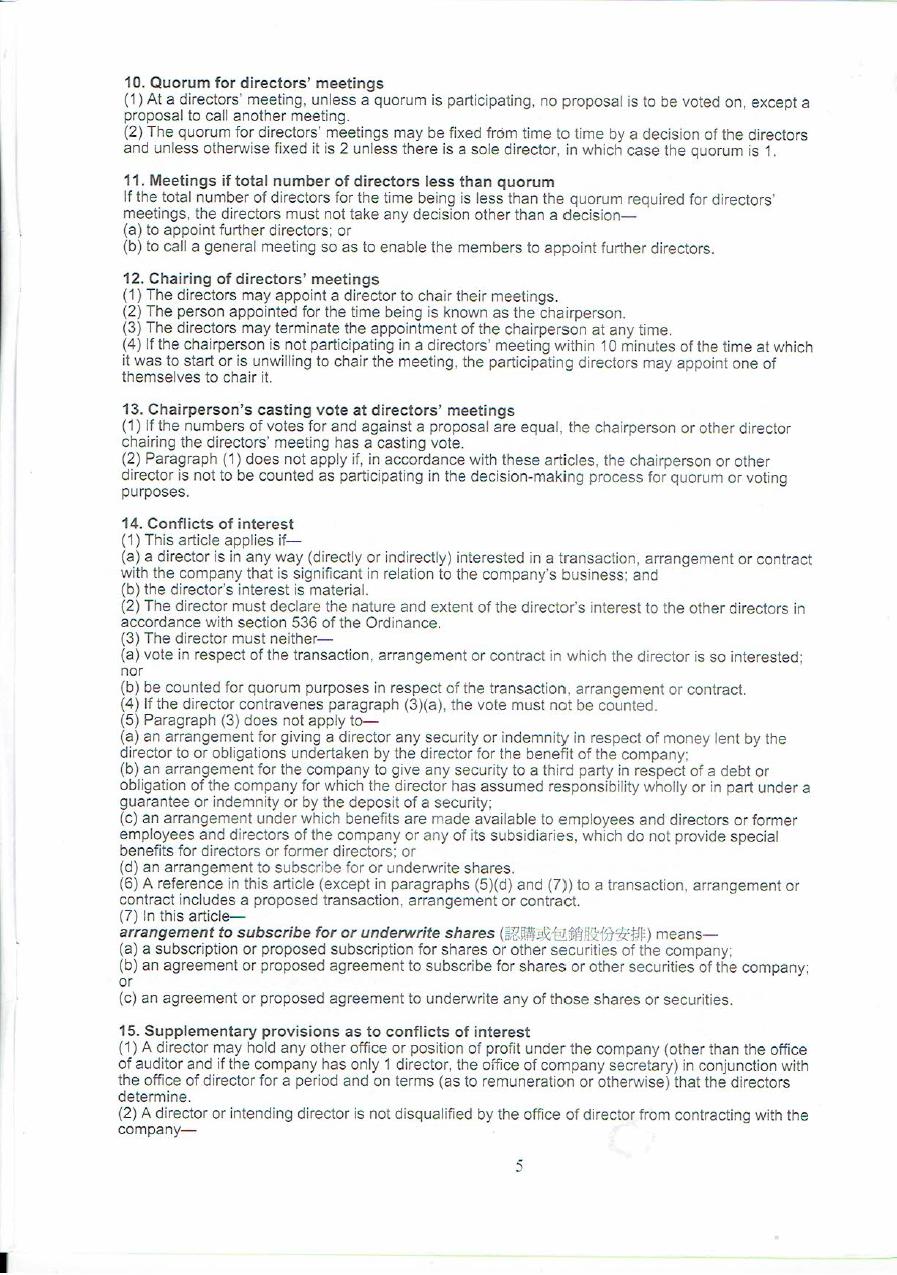
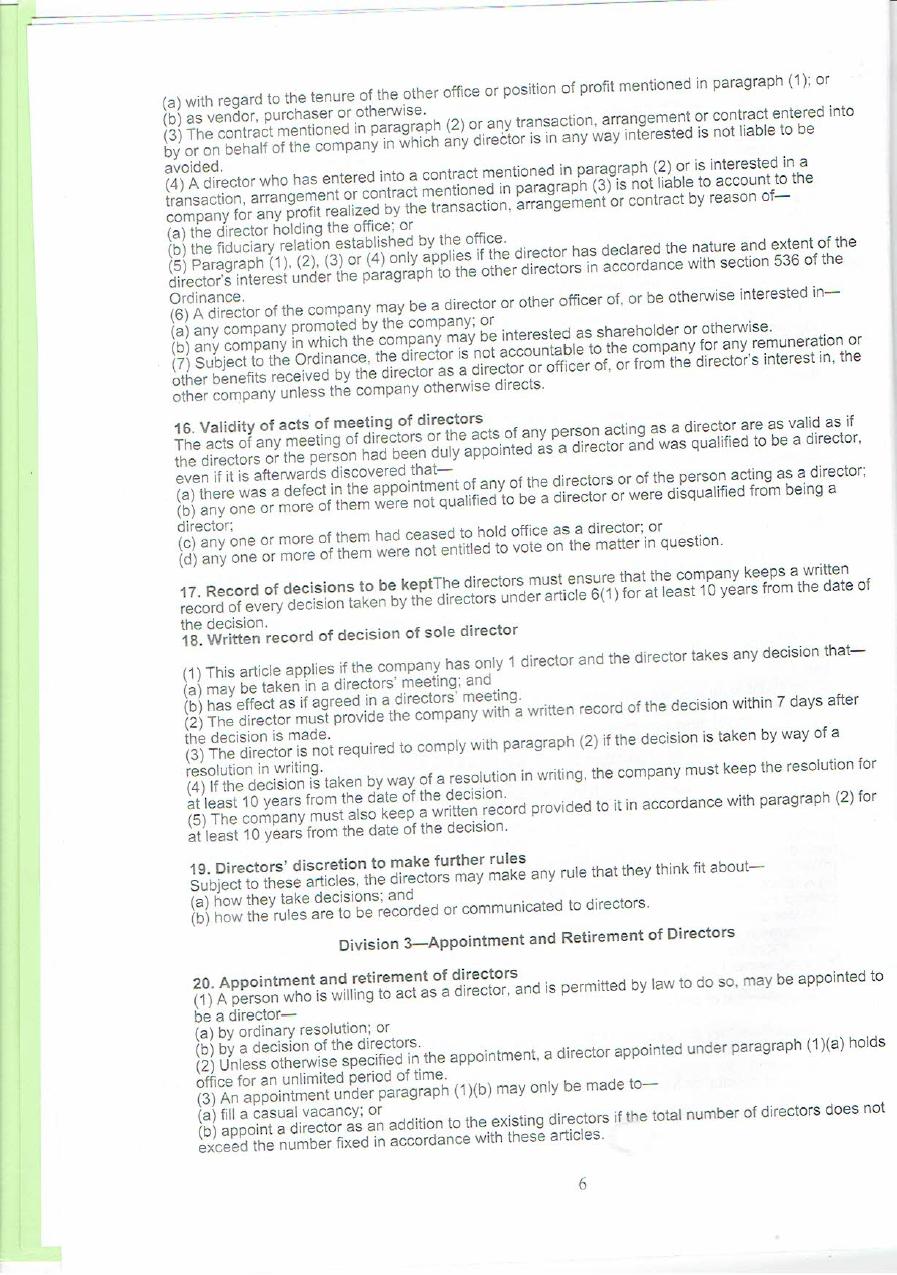
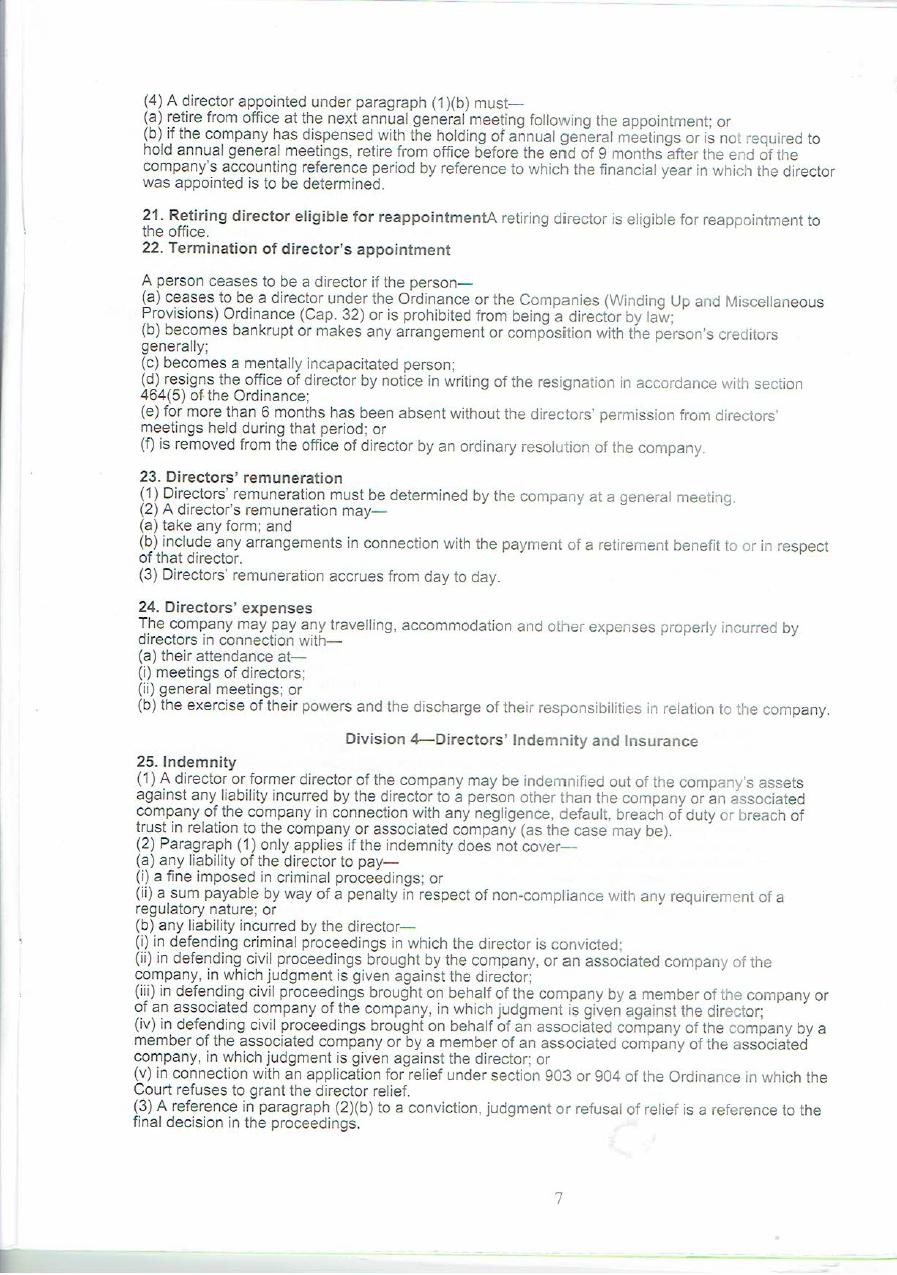
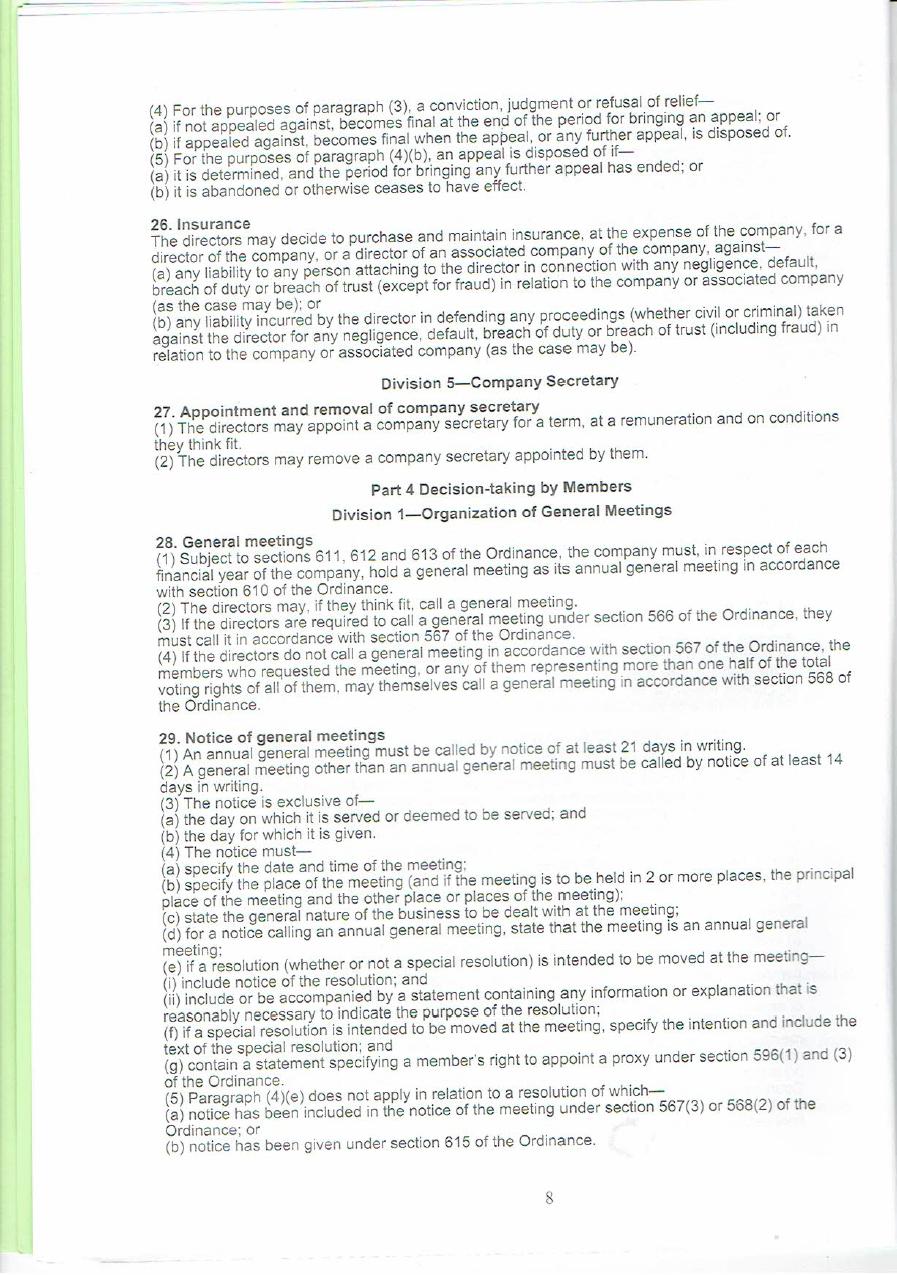
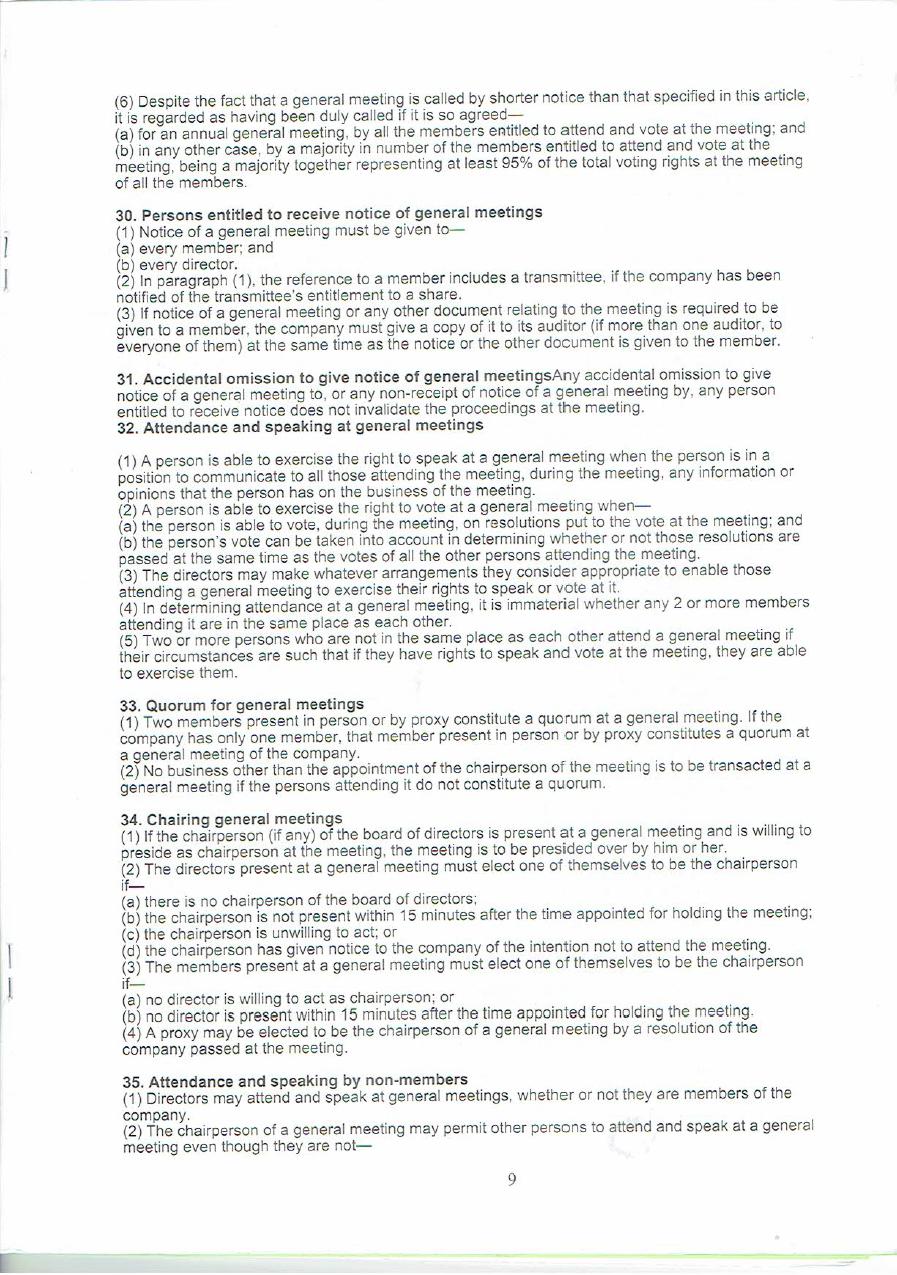
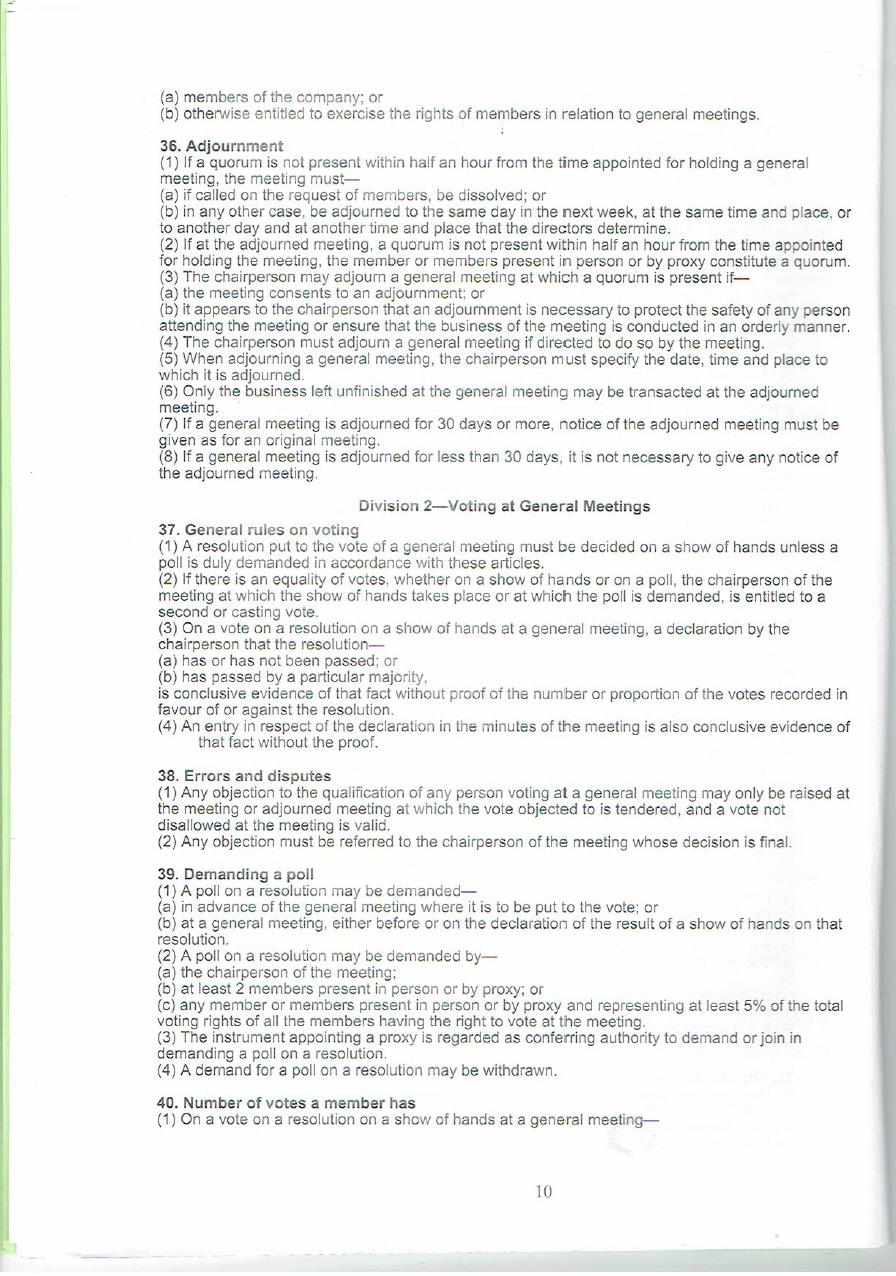
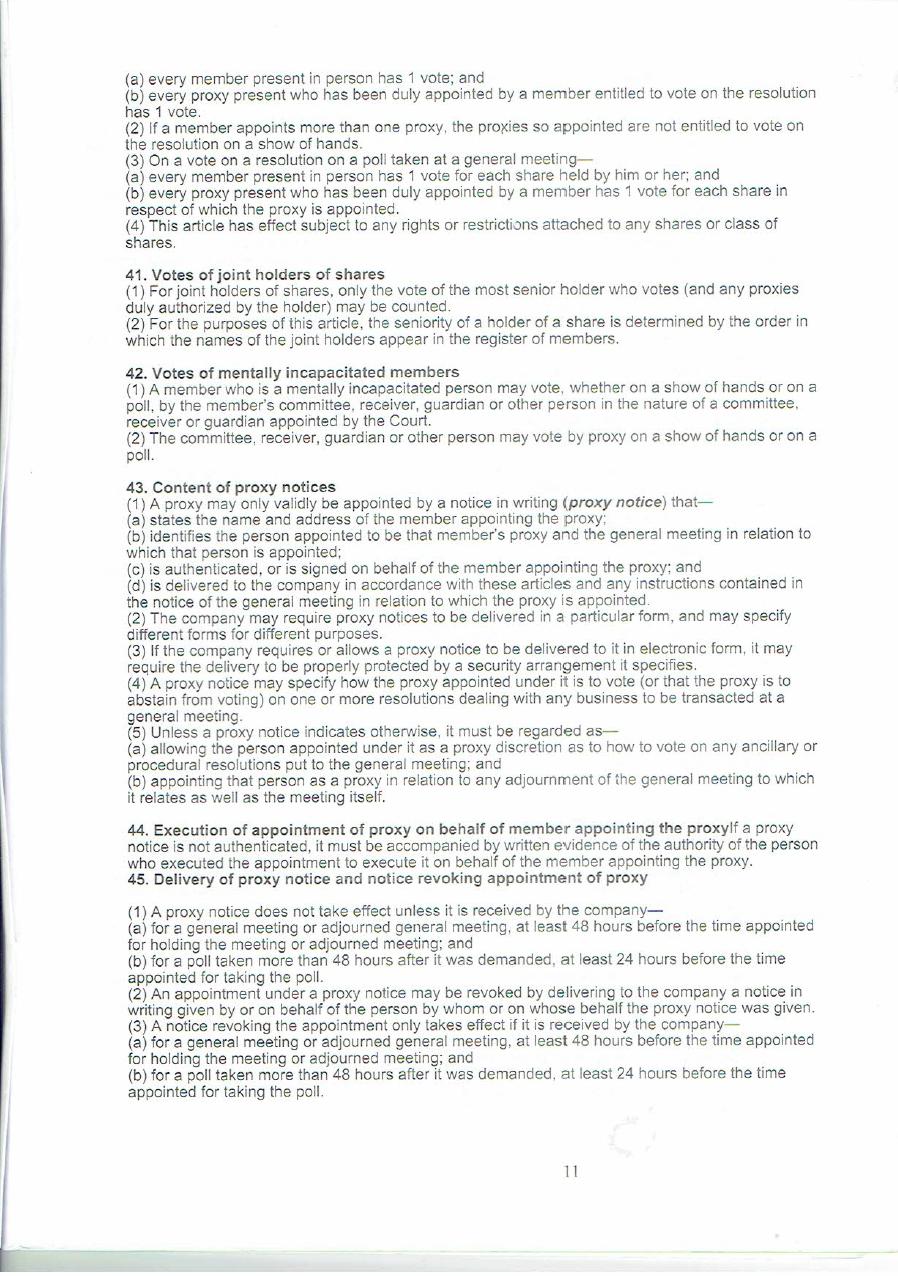
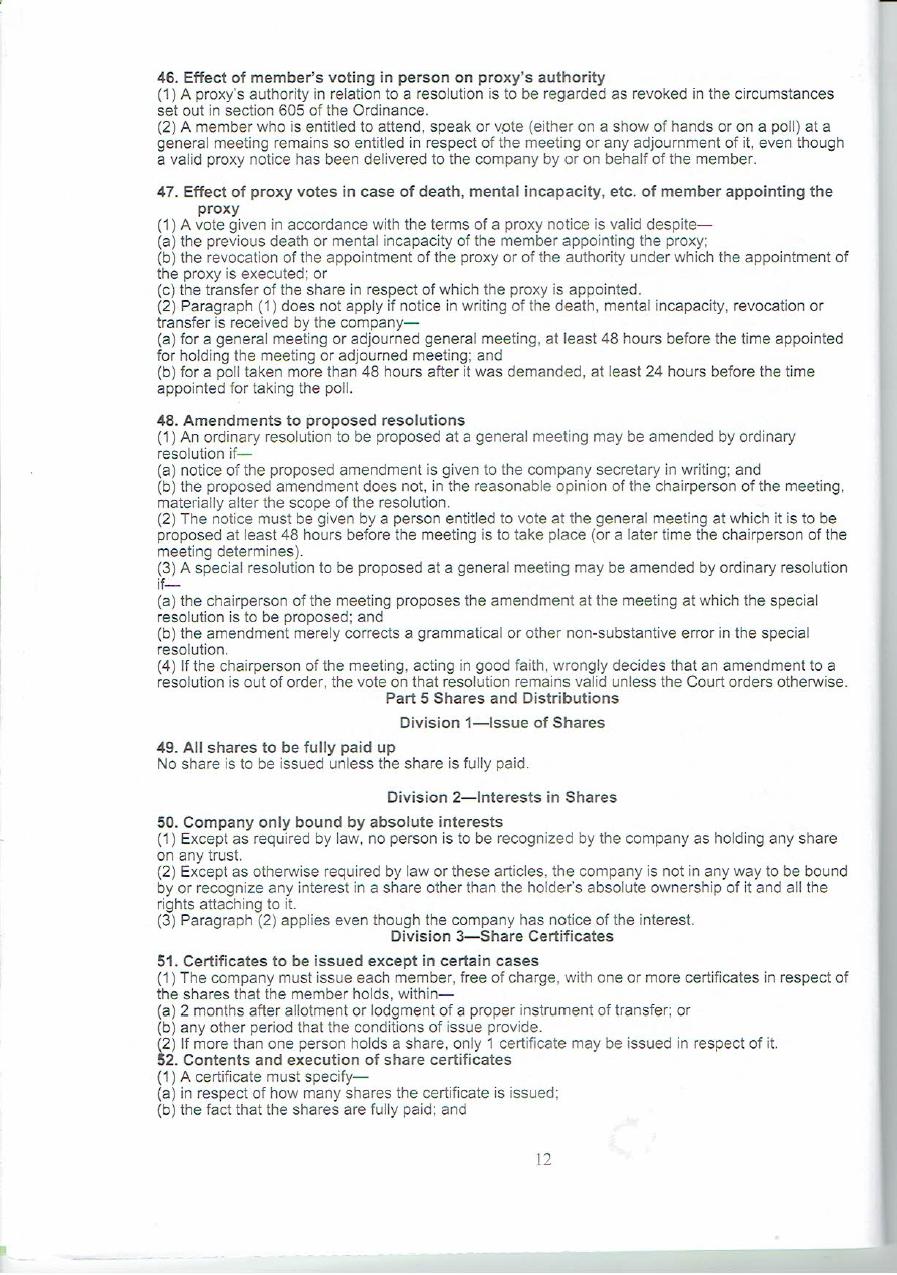
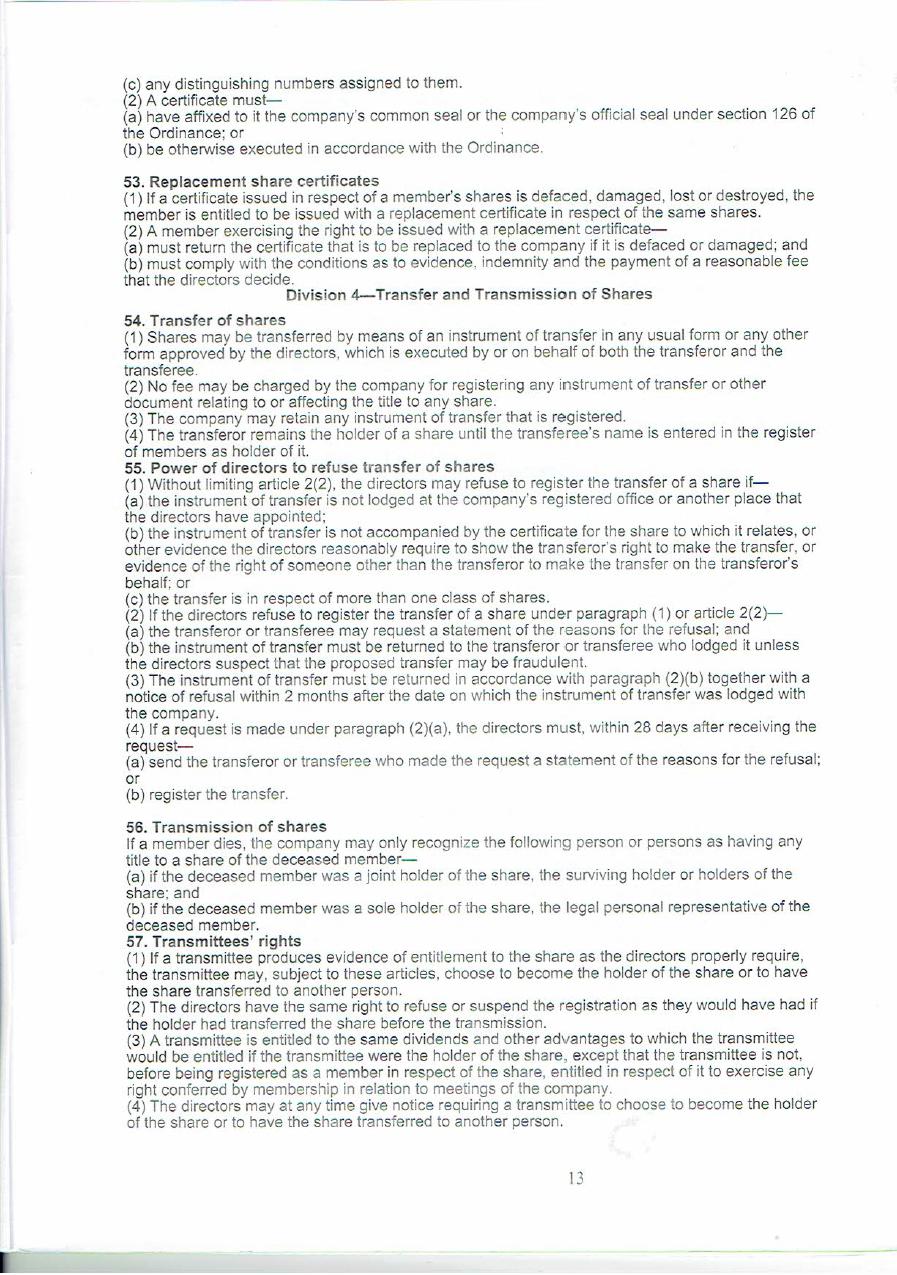
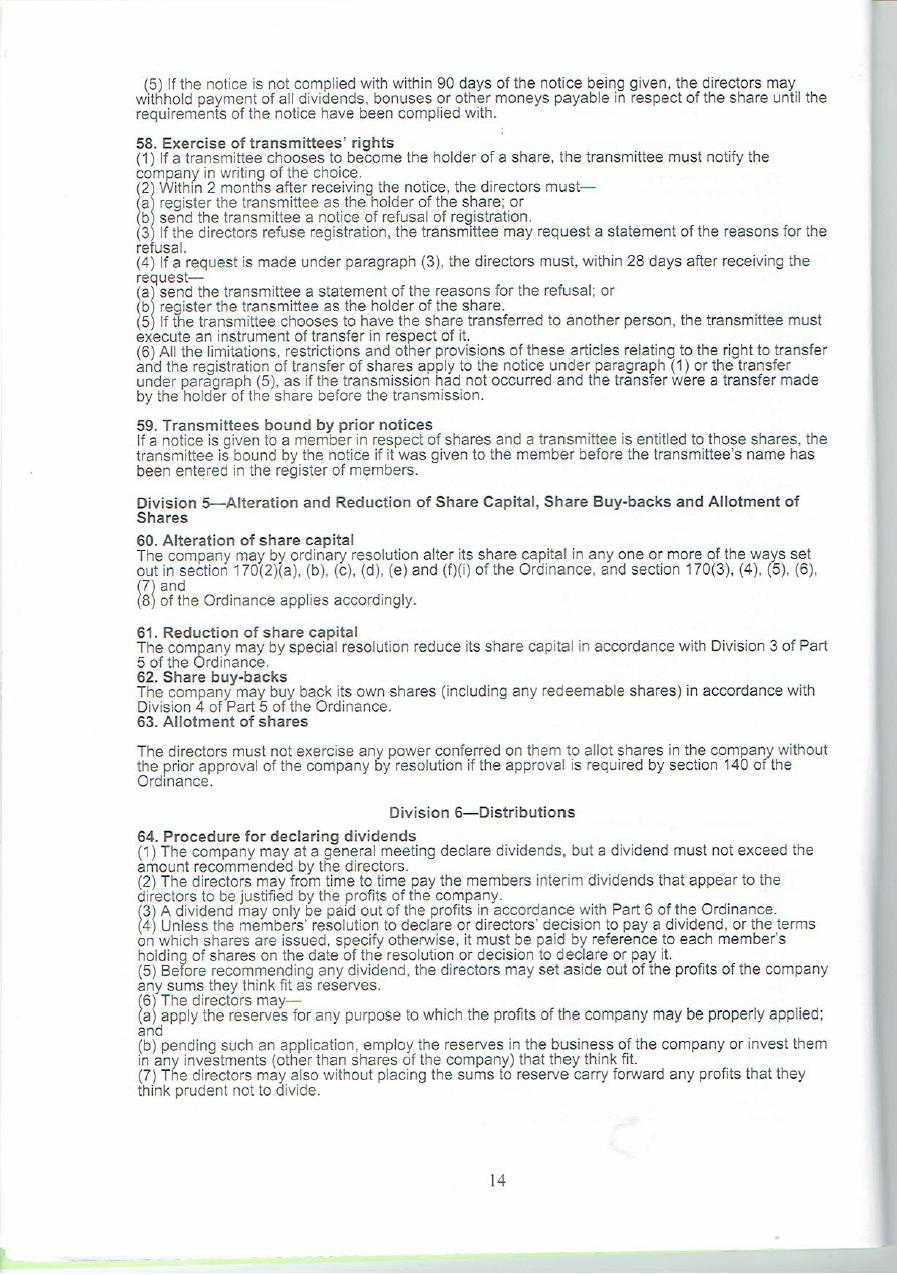
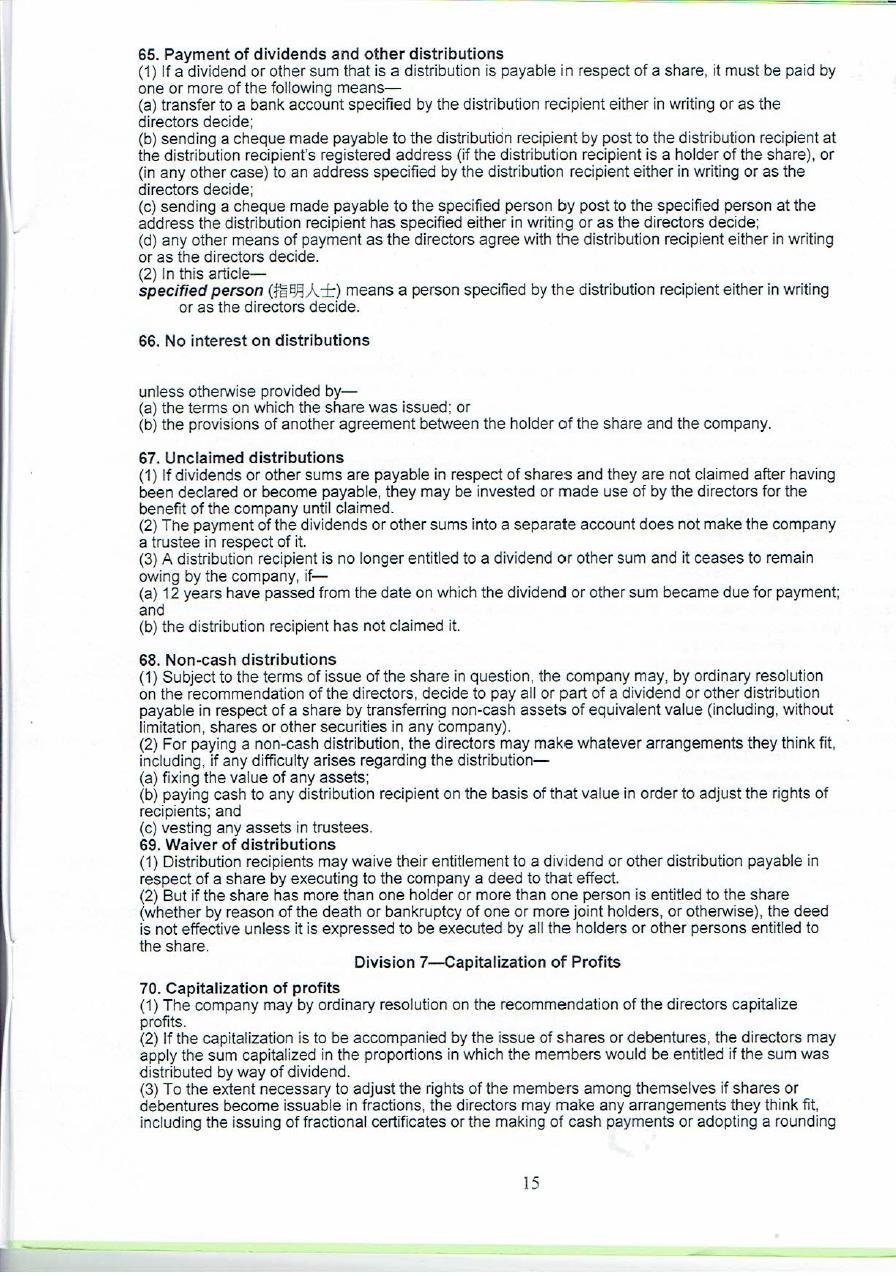
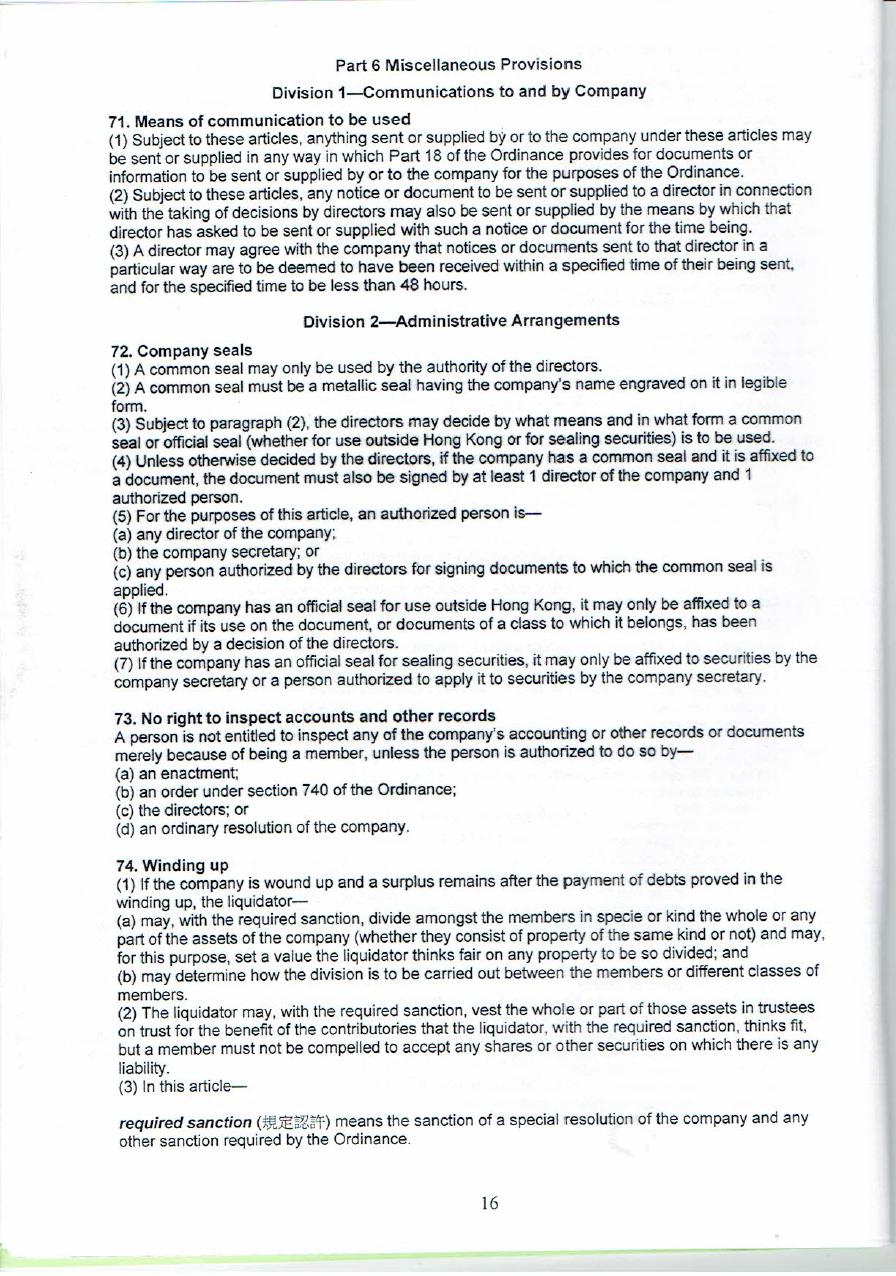
Exhibit
3.6.2
THE
COMPANIES ORDINANCE (CHAPTER 622)
Private
Company Limited by Shares
ARTICLES
OF ASSOCIATION
OF
HONG
KONG WETOUCH ELECTRONICS TECHNOLOGY LIMITED
香港偉易達電子科技有限公司
Part
A Mandatory Articles
1.
Company Name The name of the company is
“HONG
KONG WETOUCH ELECTRONICS TECHNOLOGY LIMITED
香港偉易達電子科技有限公司”
2.
Members’ Liabilities
The
liability of the members is limited.
3.
Liabilities or Contributions of Members
The
liability of the members is limited to any amount unpaid on the shares held by the members.
4.
Share Capital and Initial Shareholdings (on the company’s formation)
| The total number of shares that the company proposes to issue |
10,000 | ||
| The total amount of share capital to be subscribed by the company’s founder members |
HKD10,000 | ||
| (i) | The amount to be paid up or to be regarded as paid up |
HKD10,000 | |
| (ii) | The amount to remain unpaid or to be regarded as remaining unpaid |
HKD0 | |
|
Class |
Ordinary | ||
| The total number of shares in this class that the company proposes to issue |
10,000 | ||
| The total amount of share capital in this class to be subscribed by the company’s founder members |
HKD10,000 | ||
| (i) | The amount to be paid up or to be regarded as paid up |
HKD10,000 | |
| (ii) | The amount to remain unpaid or to be regarded as remaining unpaid |
HKD0 | |
I/WE,
the undersigned, wish to form a company and wish to adopt the articles of association as attached, and I/we respectively agree
to subscribe for the amount of share capital of the Company and to take the number of shares in the Company set opposite my/our
respective name(s).
| Name(s) of Founder Members |
Number of Share(s) and Total Amount of Share Capital |
|
| Wetouch Holding Group Limited |
10,000 Ordinary shares |
|
| Craigmuir Chambers, Road Town, Tortola, VG 1110, British Virgin Islands |
HKD10,000 | |
| Total: | 10,000 Ordinary shares HKD10,000 |
Part
B Other Articles
Part
1
Interpretation
articles
(本《章程細則》) means the articles of association of the company;
associated
company (有聯繫公司) means—
| (a) | a subsidiary of the company; |
|
| (b) | a holding company of the company; or |
|
| (c) | a subsidiary of such a holding company; |
distribution
recipient (分派對象) means, in relation to a share in respect of which a dividend or other sum
is payable—
| (a) | the holder of the share; |
|
| (b) | if the share has 2 or more joint holders, whichever of them is named first in the register of members; or |
|
| (c) | if the holder is no longer entitled to the share by reason of death or bankruptcy or otherwise by operation of law, the transmittee; |
fully
paid (已繳足款), in relation to a share, means the price at which the share was issued has been
fully paid to the company;
holder
(持有人), in relation to a share, means the person whose name is entered in the register of members
as the holder of the share;
mental
incapacity (精神上無行為能力) has the meaning given by section 2(1) of
the Mental Health Ordinance (Cap. 136);
mentally
incapacitated person (精神上無行為能力者) means a person who is
found under the Mental Health Ordinance (Cap. 136) to be incapable, by reason of mental incapacity, of managing and administering
his or her property and affairs;
Ordinance
(《條例》) means the Companies Ordinance (Cap. 622);
paid
(已繳) means paid or credited as paid;
proxy
notice (代表通知書)—see article 43(1);
register
of members (成員登記冊) means the register of members of the company;
transmittee
(承傳人) means a person entitled to a share by reason of the death or bankruptcy of a member or otherwise
by operation of law.
| (2) | Other words or expressions used in these articles have the same meaning as in the Ordinance as in force on the date these articles become binding on the company. |
| (3) | For the purposes of these articles, a document is authenticated if it is authenticated in any way in which section 828(5) or 829(3) of the Ordinance provides for documents or information to be authenticated for the purposes of the Ordinance. |
| (4) | The articles set out in Schedule 2 of the Companies (Model Articles) Notice (Cap. 622H) do not apply to the company. |
Part
2
Private
Company
| 2. | Company is private company |
|
| (1) | The company is a private company and accordingly— |
|
| (a) | a member’s right to transfer shares is restricted in the manner specified in this article; |
|
| (b) | the number of members is limited to 50; and |
|
| (c) | any invitation to the public to subscribe for any shares or debentures of the company is prohibited. |
|
| (2) | The directors may in their discretion refuse to register the transfer of a share. |
|
| (3) | In paragraph (1)(b)— |
|
member
(成員) excludes—
| (a) | a member who is an employee of the company; and |
|
| (b) | a person who was a member while being an employee of the company and who continues to be a member after ceasing to be such an employee. |
| (4) | For the purposes of this article, 2 or more persons who hold shares in the company jointly are to be regarded as 1 member. |
Part
3
Directors
and Company Secretary
Division
1—Directors’ Powers and Responsibilities
| 3. | Directors’ general authority |
| (1) | Subject to the Ordinance and these articles, the business and affairs of the company are managed by the directors, who may exercise all the powers of the company. |
| (2) | An alteration of these articles does not invalidate any prior act of the directors that would have been valid if the alteration had not been made. |
| (3) | The powers given by this article are not limited by any other power given to the directors by these articles. |
| (4) | A directors’ meeting at which a quorum is present may exercise all powers exercisable by the directors. |
| 4. | Members’ reserve power |
| (1) | The members may, by special resolution, direct the directors to take, or refrain from taking, specified action. |
| (2) | The special resolution does not invalidate anything that the directors have done before the passing of the resolution. |
| 5. | Directors may delegate |
| (1) | Subject to these articles, the directors may, if they think fit, delegate any of the powers that are conferred on them under these articles— |
|
| (a) | to any person; |
|
| (b) | by any means (including by power of attorney); |
|
| (c) | to any extent and without territorial limit; |
|
| (d) | in relation to any matter; and |
|
| (e) | on any terms and conditions. |
|
| (2) | If the directors so specify, the delegation may authorize further delegation of the directors’ powers by any person to whom they are delegated. |
|
| (3) | The directors may— |
|
| (a) | revoke the delegation wholly or in part; or |
|
| (b) | revoke or alter its terms and conditions. |
|
Division
2—Decision-taking by Directors
| 6. | Directors to take decision collectively |
| (1) | A decision of the directors may only be taken— |
|
| (a) | by a majority of the directors at a meeting; or |
|
| (b) | in accordance with article 7. |
|
| (2) | Paragraph (1) does not apply if— |
|
| (a) | the company only has 1 director; and |
|
| (b) | no provision of these articles requires it to have more than one director. |
|
| (3) | If paragraph (1) does not apply, the director may take decisions without regard to any of the provisions of these articles relating to directors’ decision-taking. |
|
| (1) | A decision of the directors is taken in accordance with this article when all eligible directors indicate to each other (either directly or indirectly) by any means that they share a common view on a matter. |
| (2) | Such a decision may take the form of a resolution in writing, copies of which have been signed by each eligible director or to which each eligible director has otherwise indicated agreement in writing. |
| (3) | A reference in this article to eligible directors is a reference to directors who would have been entitled to vote on the matter if it had been proposed as a resolution at a directors’ meeting. |
| (4) | A decision may not be taken in accordance with this article if the eligible directors would not have formed a quorum at a directors’ meeting. |
| 8. | Calling directors’ meetings |
| (1) | Any director may call a directors’ meeting by giving notice of the meeting to the directors or by authorizing the company secretary to give such notice. |
|
| (2) | Notice of a directors’ meeting must indicate— |
|
| (a) | its proposed date and time; and |
|
| (b) | where it is to take place. |
|
| (3) | Notice of a directors’ meeting must be given to each director, but need not be in writing. |
|
| 9. | Participation in directors’ meetings |
| (1) | Subject to these articles, directors participate in a directors’ meeting, or part of a directors’ meeting, when— |
|
| (a) | the meeting has been called and takes place in accordance with these articles; and |
|
| (b) | they can each communicate to the others any information or opinions they have on any particular item of the business of the meeting. |
|
| (2) | In determining whether directors are participating in a directors’ meeting, it is irrelevant where a director is and how they communicate with each other. |
|
| (3) | If all the directors participating in a directors’ meeting are not in the same place, they may regard the meeting as taking place wherever any one of them is. |
|
| 10. | Quorum for directors’ meetings |
| (1) | At a directors’ meeting, unless a quorum is participating, no proposal is to be voted on, except a proposal to call another meeting. |
| (2) | The quorum for directors’ meetings may be fixed from time to time by a decision of the directors and unless otherwise fixed it is 2 unless there is a sole director, in which case the quorum is 1. |
| 11. | Meetings if total number of directors less than quorum |
If
the total number of directors for the time being is less than the quorum required for directors’ meetings, the directors
must not take any decision other than a decision—
| (a) | to appoint further directors; or |
|
| (b) | to call a general meeting so as to enable the members to appoint further directors. |
| 12. | Chairing of directors’ meetings |
| (1) | The directors may appoint a director to chair their meetings. |
| (2) | The person appointed for the time being is known as the chairperson. |
| (3) | The directors may terminate the appointment of the chairperson at any time. |
| (4) | If the chairperson is not participating in a directors’ meeting within 10 minutes of the time at which it was to start or is unwilling to chair the meeting, the participating directors may appoint one of themselves to chair it. |
| 13. | Chairperson’s casting vote at directors’ meetings |
| (1) | If the numbers of votes for and against a proposal are equal, the chairperson or other director chairing the directors’ meeting has a casting vote. |
| (2) | Paragraph (1) does not apply if, in accordance with these articles, the chairperson or other director is not to be counted as participating in the decision-making process for quorum or voting purposes. |
| 14. | Conflicts of interest |
| (1) | This article applies if— |
|
| (a) | a director is in any way (directly or indirectly) interested in a transaction, arrangement or contract with the company that is significant in relation to the company’s business; and |
|
| (b) | the director’s interest is material. |
|
| (2) | The director must declare the nature and extent of the director’s interest to the other directors in accordance with section 536 of the Ordinance. |
|
| (3) | The director must neither— |
|
| (a) | vote in respect of the transaction, arrangement or contract in which the director is so interested; nor |
|
| (b) | be counted for quorum purposes in respect of the transaction, arrangement or contract. |
|
| (4) | If the director contravenes paragraph (3)(a), the vote must not be counted. |
|
| (5) | Paragraph (3) does not apply to— |
|
| (a) | an arrangement for giving a director any security or indemnity in respect of money lent by the director to or obligations undertaken by the director for the benefit of the company; |
|
| (b) | an arrangement for the company to give any security to a third party in respect of a debt or obligation of the company for which the director has assumed responsibility wholly or in part under a guarantee or indemnity or by the deposit of a security; |
|
| (c) | an arrangement under which benefits are made available to employees and directors or former employees and directors of the company or any of its subsidiaries, which do not provide special benefits for directors or former directors; or |
|
| (d) | an arrangement to subscribe for or underwrite shares. |
|
| (6) | A reference in this article (except in paragraphs (5)(d) and (7)) to a transaction, arrangement or contract includes a proposed transaction, arrangement or contract. |
|
| (7) | In this article— |
|
arrangement
to subscribe for or underwrite shares (認購或包銷股份安排) means—
| (a) | a subscription or proposed subscription for shares or other securities of the company; |
|
| (b) | an agreement or proposed agreement to subscribe for shares or other securities of the company; or |
|
| (c) | an agreement or proposed agreement to underwrite any of those shares or securities. |
| 15. | Supplementary provisions as to conflicts of interest |
| (1) | A director may hold any other office or position of profit under the company (other than the office of auditor and if the company has only 1 director, the office of company secretary) in conjunction with the office of director for a period and on terms (as to remuneration or otherwise) that the directors determine. |
|
| (2) | A director or intending director is not disqualified by the office of director from contracting with the company— |
|
| (a) with regard to the tenure of the other office or position of profit mentioned in paragraph (1); or |
||
| (b) | as vendor, purchaser or otherwise. |
|
| (3) | The contract mentioned in paragraph (2) or any transaction, arrangement or contract entered into by or on behalf of the company in which any director is in any way interested is not liable to be avoided. |
|
| (4) | A director who has entered into a contract mentioned in paragraph (2) or is interested in a transaction, arrangement or contract mentioned in paragraph (3) is not liable to account to the company for any profit realized by the transaction, arrangement or contract by reason of— |
|
| (a) | the director holding the office; or |
|
| (b) | the fiduciary relation established by the office. |
|
| (5) | Paragraph (1), (2), (3) or (4) only applies if the director has declared the nature and extent of the director’s interest under the paragraph to the other directors in accordance with section 536 of the Ordinance. |
|
| (6) | A director of the company may be a director or other officer of, or be otherwise interested in— |
|
| (a) | any company promoted by the company; or |
|
| (b) | any company in which the company may be interested as shareholder or otherwise. |
|
| (7) | Subject to the Ordinance, the director is not accountable to the company for any remuneration or other benefits received by the director as a director or officer of, or from the director’s interest in, the other company unless the company otherwise directs. |
|
| 16. | Validity of acts of meeting of directors |
The
acts of any meeting of directors or the acts of any person acting as a director are as valid as if the directors or the person
had been duly appointed as a director and was qualified to be a director, even if it is afterwards discovered that—
| (a) | there was a defect in the appointment of any of the directors or of the person acting as a director; |
|
| (b) | any one or more of them were not qualified to be a director or were disqualified from being a director; |
|
| (c) | any one or more of them had ceased to hold office as a director; or |
|
| (d) | any one or more of them were not entitled to vote on the matter in question. |
| 17. | Record of decisions to be kept |
The
directors must ensure that the company keeps a written record of every decision taken by the directors under article 6(1) for
at least 10 years from the date of the decision.
| 18. | Written record of decision of sole director |
| (1) | This article applies if the company has only 1 director and the director takes any decision that— |
|
| (a) | may be taken in a directors’ meeting; and |
|
| (b) | has effect as if agreed in a directors’ meeting. |
|
| (2) | The director must provide the company with a written record of the decision within 7 days after the decision is made. |
|
| (3) | The director is not required to comply with paragraph (2) if the decision is taken by way of a resolution in writing. |
|
| (4) | If the decision is taken by way of a resolution in writing, the company must keep the resolution for at least 10 years from the date of the decision. |
|
| (5) | The company must also keep a written record provided to it in accordance with paragraph (2) for at least 10 years from the date of the decision. |
|
| 19. | Directors’ discretion to make further rules |
Subject
to these articles, the directors may make any rule that they think fit about—
| (a) | how they take decisions; and |
|
| (b) | how the rules are to be recorded or communicated to directors. |
Division
3—Appointment and Retirement of Directors
| 20. | Appointment and retirement of directors |
|
| (1) | A person who is willing to act as a director, and is permitted by law to do so, may be appointed to be a director— |
|
| (a) | by ordinary resolution; or |
|
| (b) | by a decision of the directors. |
|
| (2) | Unless otherwise specified in the appointment, a director appointed under paragraph (1)(a) holds office for an unlimited period of time. |
|
| (3) | An appointment under paragraph (1)(b) may only be made to— |
|
| (a) | fill a casual vacancy; or |
|
| (b) | appoint a director as an addition to the existing directors if the total number of directors does not exceed the number fixed in accordance with these articles. |
|
| (4) | A director appointed under paragraph (1)(b) must— |
|
| (a) | retire from office at the next annual general meeting following the appointment; or |
|
| (b) | if the company has dispensed with the holding of annual general meetings or is not required to hold annual general meetings, retire from office before the end of 9 months after the end of the company’s accounting reference period by reference to which the financial year in which the director was appointed is to be determined. |
|
| 21. | Retiring director eligible for reappointment |
A
retiring director is eligible for reappointment to the office.
| 22. | Termination of director’s appointment |
A
person ceases to be a director if the person—
| (a) | ceases to be a director under the Ordinance or the Companies (Winding Up and Miscellaneous Provisions) Ordinance (Cap. 32) or is prohibited from being a director by law; |
|
| (b) | becomes bankrupt or makes any arrangement or composition with the person’s creditors generally; |
|
| (c) | becomes a mentally incapacitated person; |
|
| (d) | resigns the office of director by notice in writing of the resignation in accordance with section 464(5) of the Ordinance; |
|
| (e) | for more than 6 months has been absent without the directors’ permission from directors’ meetings held during that period; or |
|
| (f) | is removed from the office of director by an ordinary resolution of the company. |
| 23. | Directors’ remuneration |
| (1) | Directors’ remuneration must be determined by the company at a general meeting. |
|
| (2) | A director’s remuneration may— |
|
| (a) | take any form; and |
|
| (b) | include any arrangements in connection with the payment of a retirement benefit to or in respect of that director. |
|
| (3) | Directors’ remuneration accrues from day to day. |
|
| 24. | Directors’ expenses |
The
company may pay any travelling, accommodation and other expenses properly incurred by directors in connection with—
| (a) | their attendance at— |
||
| (i) | meetings of directors; |
||
| (ii) | general meetings; or |
||
| (b) | the exercise of their powers and the discharge of their responsibilities in relation to the company. |
||
Division
4—Directors’ Indemnity and Insurance
| (1) | A director or former director of the company may be indemnified out of the company’s assets against any liability incurred by the director to a person other than the company or an associated company of the company in connection with any negligence, default, breach of duty or breach of trust in relation to the company or associated company (as the case may be). |
||
| (2) | Paragraph (1) only applies if the indemnity does not cover— |
||
| (a) | any liability of the director to pay— |
||
| (i) | a fine imposed in criminal proceedings; or |
||
| (ii) | a sum payable by way of a penalty in respect of non-compliance with any requirement of a regulatory nature; or |
||
| (b) | any liability incurred by the director— |
||
| (i) | in defending criminal proceedings in which the director is convicted; |
||
| (ii) | in defending civil proceedings brought by the company, or an associated company of the company, in which judgment is given against the director; |
||
| (iii) | in defending civil proceedings brought on behalf of the company by a member of the company or of an associated company of the company, in which judgment is given against the director; |
||
| (iv) | in defending civil proceedings brought on behalf of an associated company of the company by a member of the associated company or by a member of an associated company of the associated company, in which judgment is given against the director; or |
||
| (v) | in connection with an application for relief under section 903 or 904 of the Ordinance in which the Court refuses to grant the director relief. |
||
| (3) | A reference in paragraph (2)(b) to a conviction, judgment or refusal of relief is a reference to the final decision in the proceedings. |
||
| (4) | For the purposes of paragraph (3), a conviction, judgment or refusal of relief— |
||
| (a) | if not appealed against, becomes final at the end of the period for bringing an appeal; or |
||
| (b) | if appealed against, becomes final when the appeal, or any further appeal, is disposed of. |
||
| (5) | For the purposes of paragraph (4)(b), an appeal is disposed of if— |
||
| (a) | it is determined, and the period for bringing any further appeal has ended; or |
||
| (b) | it is abandoned or otherwise ceases to have effect. |
||
The
directors may decide to purchase and maintain insurance, at the expense of the company, for a director of the company, or a director
of an associated company of the company, against—
| (a) | any liability to any person attaching to the director in connection with any negligence, default, breach of duty or breach of trust (except for fraud) in relation to the company or associated company (as the case may be); or |
|
| (b) | any liability incurred by the director in defending any proceedings (whether civil or criminal) taken against the director for any negligence, default, breach of duty or breach of trust (including fraud) in relation to the company or associated company (as the case may be). |
Division
5—Company Secretary
| 27. | Appointment and removal of company secretary |
| (1) | The directors may appoint a company secretary for a term, at a remuneration and on conditions they think fit. |
| (2) | The directors may remove a company secretary appointed by them. |
Part
4
Decision-taking
by Members
Division
1—Organization of General Meetings
| (1) | Subject to sections 611, 612 and 613 of the Ordinance, the company must, in respect of each financial year of the company, hold a general meeting as its annual general meeting in accordance with section 610 of the Ordinance. |
| (2) | The directors may, if they think fit, call a general meeting. |
| (3) | If the directors are required to call a general meeting under section 566 of the Ordinance, they must call it in accordance with section 567 of the Ordinance. |
| (4) | If the directors do not call a general meeting in accordance with section 567 of the Ordinance, the members who requested the meeting, or any of them representing more than one half of the total voting rights of all of them, may themselves call a general meeting in accordance with section 568 of the Ordinance. |
| 29. | Notice of general meetings |
| (1) | An annual general meeting must be called by notice of at least 21 days in writing. |
|
| (2) | A general meeting other than an annual general meeting must be called by notice of at least 14 days in writing. |
|
| (3) | The notice is exclusive of— |
|
| (a) | the day on which it is served or deemed to be served; and |
|
| (b) | the day for which it is given. |
|
| (a) | specify the date and time of the meeting; |
|
| (b) | specify the place of the meeting (and if the meeting is to be held in 2 or more places, the principal place of the meeting and the other place or places of the meeting); |
|
| (c) | state the general nature of the business to be dealt with at the meeting; |
|
| (d) | for a notice calling an annual general meeting, state that the meeting is an annual general meeting; |
|
| (e) | if a resolution (whether or not a special resolution) is intended to be moved at the meeting— |
| (i) | include notice of the resolution; and |
|
| (ii) | include or be accompanied by a statement containing any information or explanation that is reasonably necessary to indicate the purpose of the resolution; |
| (f) | if a special resolution is intended to be moved at the meeting, specify the intention and include the text of the special resolution; and |
|
| (g) | contain a statement specifying a member’s right to appoint a proxy under section 596(1) and (3) of the Ordinance. |
| (5) | Paragraph (4)(e) does not apply in relation to a resolution of which— |
| (a) | notice has been included in the notice of the meeting under section 567(3) or 568(2) of the Ordinance; or |
|
| (b) | notice has been given under section 615 of the Ordinance. |
| (6) | Despite the fact that a general meeting is called by shorter notice than that specified in this article, it is regarded as having been duly called if it is so agreed— |
| (a) | for an annual general meeting, by all the members entitled to attend and vote at the meeting; and |
|
| (b) | in any other case, by a majority in number of the members entitled to attend and vote at the meeting, being a majority together representing at least 95% of the total voting rights at the meeting of all the members. |
| 30. | Persons entitled to receive notice of general meetings |
| (1) | Notice of a general meeting must be given to— |
| (a) | every member; and |
|
| (b) | every director. |
| (2) | In paragraph (1), the reference to a member includes a transmittee, if the company has been notified of the transmittee’s entitlement to a share. |
| (3) | If notice of a general meeting or any other document relating to the meeting is required to be given to a member, the company must give a copy of it to its auditor (if more than one auditor, to everyone of them) at the same time as the notice or the other document is given to the member. |
| 31. | Accidental omission to give notice of general meetings |
Any
accidental omission to give notice of a general meeting to, or any non-receipt of notice of a general meeting by, any person entitled
to receive notice does not invalidate the proceedings at the meeting.
| 32. | Attendance and speaking at general meetings |
| (1) | A person is able to exercise the right to speak at a general meeting when the person is in a position to communicate to all those attending the meeting, during the meeting, any information or opinions that the person has on the business of the meeting. |
| (2) | A person is able to exercise the right to vote at a general meeting when— |
| (a) | the person is able to vote, during the meeting, on resolutions put to the vote at the meeting; and |
|
| (b) | the person’s vote can be taken into account in determining whether or not those resolutions are passed at the same time as the votes of all the other persons attending the meeting. |
| (3) | The directors may make whatever arrangements they consider appropriate to enable those attending a general meeting to exercise their rights to speak or vote at it. |
| (4) | In determining attendance at a general meeting, it is immaterial whether any 2 or more members attending it are in the same place as each other. |
| (5) | Two or more persons who are not in the same place as each other attend a general meeting if their circumstances are such that if they have rights to speak and vote at the meeting, they are able to exercise them. |
| 33. | Quorum for general meetings |
| (1) | Two members present in person or by proxy constitute a quorum at a general meeting. If the company has only one member, that member present in person or by proxy constitutes a quorum at a general meeting of the company. |
| (2) | No business other than the appointment of the chairperson of the meeting is to be transacted at a general meeting if the persons attending it do not constitute a quorum. |
| 34. | Chairing general meetings |
| (1) | If the chairperson (if any) of the board of directors is present at a general meeting and is willing to preside as chairperson at the meeting, the meeting is to be presided over by him or her. |
| (2) | The directors present at a general meeting must elect one of themselves to be the chairperson if— |
| (a) | there is no chairperson of the board of directors; |
|
| (b) | the chairperson is not present within 15 minutes after the time appointed for holding the meeting; |
|
| (c) | the chairperson is unwilling to act; or |
|
| (d) | the chairperson has given notice to the company of the intention not to attend the meeting. |
| (3) | The members present at a general meeting must elect one of themselves to be the chairperson if— |
| (a) | no director is willing to act as chairperson; or |
|
| (b) | no director is present within 15 minutes after the time appointed for holding the meeting. |
| (4) | A proxy may be elected to be the chairperson of a general meeting by a resolution of the company passed at the meeting. |
| 35. | Attendance and speaking by non-members |
| (1) | Directors may attend and speak at general meetings, whether or not they are members of the company. |
| (2) | The chairperson of a general meeting may permit other persons to attend and speak at a general meeting even though they are not— |
| (a) | members of the company; or |
|
| (b) | otherwise entitled to exercise the rights of members in relation to general meetings. |
| (1) | If a quorum is not present within half an hour from the time appointed for holding a general meeting, the meeting must— |
| (a) | if called on the request of members, be dissolved; or |
|
| (b) | in any other case, be adjourned to the same day in the next week, at the same time and place, or to another day and at another time and place that the directors determine. |
| (2) | If at the adjourned meeting, a quorum is not present within half an hour from the time appointed for holding the meeting, the member or members present in person or by proxy constitute a quorum. |
| (3) | The chairperson may adjourn a general meeting at which a quorum is present if— |
| (a) | the meeting consents to an adjournment; or |
|
| (b) | it appears to the chairperson that an adjournment is necessary to protect the safety of any person attending the meeting or ensure that the business of the meeting is conducted in an orderly manner. |
| (4) | The chairperson must adjourn a general meeting if directed to do so by the meeting. |
| (5) | When adjourning a general meeting, the chairperson must specify the date, time and place to which it is adjourned. |
| (6) | Only the business left unfinished at the general meeting may be transacted at the adjourned meeting. |
| (7) | If a general meeting is adjourned for 30 days or more, notice of the adjourned meeting must be given as for an original meeting. |
| (8) | If a general meeting is adjourned for less than 30 days, it is not necessary to give any notice of the adjourned meeting. |
Division
2—Voting at General Meetings
| 37. | General rules on voting |
| (1) | A resolution put to the vote of a general meeting must be decided on a show of hands unless a poll is duly demanded in accordance with these articles. |
| (2) | If there is an equality of votes, whether on a show of hands or on a poll, the chairperson of the meeting at which the show of hands takes place or at which the poll is demanded, is entitled to a second or casting vote. |
| (3) | On a vote on a resolution on a show of hands at a general meeting, a declaration by the chairperson that the resolution— |
| (a) | has or has not been passed; or |
|
| (b) | has passed by a particular majority, is conclusive evidence of that fact without proof of the number or proportion of the votes recorded in favour of or against the resolution. |
| (4) | An entry in respect of the declaration in the minutes of the meeting is also conclusive evidence of that fact without the proof. |
| (1) | Any objection to the qualification of any person voting at a general meeting may only be raised at the meeting or adjourned meeting at which the vote objected to is tendered, and a vote not disallowed at the meeting is valid. |
| (2) | Any objection must be referred to the chairperson of the meeting whose decision is final. |
| (1) | A poll on a resolution may be demanded— |
| (a) | in advance of the general meeting where it is to be put to the vote; or |
|
| (b) | at a general meeting, either before or on the declaration of the result of a show of hands on that resolution. |
| (2) | A poll on a resolution may be demanded by— |
| (a) | the chairperson of the meeting; |
|
| (b) | at least 2 members present in person or by proxy; or |
|
| (c) | any member or members present in person or by proxy and representing at least 5% of the total voting rights of all the members having the right to vote at the meeting. |
| (3) | The instrument appointing a proxy is regarded as conferring authority to demand or join in demanding a poll on a resolution. |
| (4) | A demand for a poll on a resolution may be withdrawn. |
| 40. | Number of votes a member has |
| (1) | On a vote on a resolution on a show of hands at a general meeting— |
| (a) | every member present in person has 1 vote; and |
|
| (b) | every proxy present who has been duly appointed by a member entitled to vote on the resolution has 1 vote. |
| (2) | If a member appoints more than one proxy, the proxies so appointed are not entitled to vote on the resolution on a show of hands. |
| (3) | On a vote on a resolution on a poll taken at a general meeting— |
| (a) | every member present in person has 1 vote for each share held by him or her; and |
|
| (b) | every proxy present who has been duly appointed by a member has 1 vote for each share in respect of which the proxy is appointed. |
| (4) | This article has effect subject to any rights or restrictions attached to any shares or class of shares. |
| 41. | Votes of joint holders of shares |
| (1) | For joint holders of shares, only the vote of the most senior holder who votes (and any proxies duly authorized by the holder) may be counted. |
| (2) | For the purposes of this article, the seniority of a holder of a share is determined by the order in which the names of the joint holders appear in the register of members. |
| 42. | Votes of mentally incapacitated members |
| (1) | A member who is a mentally incapacitated person may vote, whether on a show of hands or on a poll, by the member’s committee, receiver, guardian or other person in the nature of a committee, receiver or guardian appointed by the Court. |
| (2) | The committee, receiver, guardian or other person may vote by proxy on a show of hands or on a poll. |
| 43. | Content of proxy notices |
| (1) | A proxy may only validly be appointed by a notice in writing (proxy notice) that— |
| (a) | states the name and address of the member appointing the proxy; |
|
| (b) | identifies the person appointed to be that member’s proxy and the general meeting in relation to which that person is appointed; |
|
| (c) | is authenticated, or is signed on behalf of the member appointing the proxy; and |
|
| (d) | is delivered to the company in accordance with these articles and any instructions contained in the notice of the general meeting in relation to which the proxy is appointed. |
| (2) | The company may require proxy notices to be delivered in a particular form, and may specify different forms for different purposes. |
| (3) | If the company requires or allows a proxy notice to be delivered to it in electronic form, it may require the delivery to be properly protected by a security arrangement it specifies. |
| (4) | A proxy notice may specify how the proxy appointed under it is to vote (or that the proxy is to abstain from voting) on one or more resolutions dealing with any business to be transacted at a general meeting. |
| (5) | Unless a proxy notice indicates otherwise, it must be regarded as— |
| (a) | allowing the person appointed under it as a proxy discretion as to how to vote on any ancillary or procedural resolutions put to the general meeting; and |
|
| (b) | appointing that person as a proxy in relation to any adjournment of the general meeting to which it relates as well as the meeting itself. |
| 44. | Execution of appointment of proxy on behalf of member appointing the proxy |
If
a proxy notice is not authenticated, it must be accompanied by written evidence of the authority of the person who executed the
appointment to execute it on behalf of the member appointing the proxy.
| 45. | Delivery of proxy notice and notice revoking appointment of proxy |
| (1) | A proxy notice does not take effect unless it is received by the company— |
| (a) | for a general meeting or adjourned general meeting, at least 48 hours before the time appointed for holding the meeting or adjourned meeting; and |
|
| (b) | for a poll taken more than 48 hours after it was demanded, at least 24 hours before the time appointed for taking the poll. |
| (2) | An appointment under a proxy notice may be revoked by delivering to the company a notice in writing given by or on behalf of the person by whom or on whose behalf the proxy notice was given. |
| (3) | A notice revoking the appointment only takes effect if it is received by the company— |
| (a) | for a general meeting or adjourned general meeting, at least 48 hours before the time appointed for holding the meeting or adjourned meeting; and |
|
| (b) | for a poll taken more than 48 hours after it was demanded, at least 24 hours before the time appointed for taking the poll. |
| 46. | Effect of member’s voting in person on proxy’s authority |
| (1) | A proxy’s authority in relation to a resolution is to be regarded as revoked in the circumstances set out in section 605 of the Ordinance. |
| (2) | A member who is entitled to attend, speak or vote (either on a show of hands or on a poll) at a general meeting remains so entitled in respect of the meeting or any adjournment of it, even though a valid proxy notice has been delivered to the company by or on behalf of the member. |
| 47. | Effect of proxy votes in case of death, mental incapacity, etc. of member appointing the proxy |
| (1) | A vote given in accordance with the terms of a proxy notice is valid despite— |
| (a) | the previous death or mental incapacity of the member appointing the proxy; |
|
| (b) | the revocation of the appointment of the proxy or of the authority under which the appointment of the proxy is executed; or |
|
| (c) | the transfer of the share in respect of which the proxy is appointed. |
| (2) | Paragraph (1) does not apply if notice in writing of the death, mental incapacity, revocation or transfer is received by the company— |
| (a) | for a general meeting or adjourned general meeting, at least 48 hours before the time appointed for holding the meeting or adjourned meeting; and |
|
| (b) | for a poll taken more than 48 hours after it was demanded, at least 24 hours before the time appointed for taking the poll. |
| 48. | Amendments to proposed resolutions |
| (1) | An ordinary resolution to be proposed at a general meeting may be amended by ordinary resolution if— |
| (a) | notice of the proposed amendment is given to the company secretary in writing; and |
|
| (b) | the proposed amendment does not, in the reasonable opinion of the chairperson of the meeting, materially alter the scope of the resolution. |
| (2) | The notice must be given by a person entitled to vote at the general meeting at which it is to be proposed at least 48 hours before the meeting is to take place (or a later time the chairperson of the meeting determines). |
| (3) | A special resolution to be proposed at a general meeting may be amended by ordinary resolution if— |
| (a) | the chairperson of the meeting proposes the amendment at the meeting at which the special resolution is to be proposed; and |
|
| (b) | the amendment merely corrects a grammatical or other non-substantive error in the special resolution. |
| (4) | If the chairperson of the meeting, acting in good faith, wrongly decides that an amendment to a resolution is out of order, the vote on that resolution remains valid unless the Court orders otherwise. |
Part
5
Shares
and Distributions
Division
1—Issue of Shares
| 49. | All shares to be fully paid up |
No
share is to be issued unless the share is fully paid.
Division
2—Interests in Shares
| 50. | Company only bound by absolute interests |
| (1) | Except as required by law, no person is to be recognized by the company as holding any share on any trust. |
| (2) | Except as otherwise required by law or these articles, the company is not in any way to be bound by or recognize any interest in a share other than the holder’s absolute ownership of it and all the rights attaching to it. |
| (3) | Paragraph (2) applies even though the company has notice of the interest. |
Division
3—Share Certificates
| 51. | Certificates to be issued except in certain cases |
| (1) | The company must issue each member, free of charge, with one or more certificates in respect of the shares that the member holds, within— |
| (a) | 2 months after allotment or lodgment of a proper instrument of transfer; or |
|
| (b) | any other period that the conditions of issue provide. |
| (2) | If more than one person holds a share, only 1 certificate may be issued in respect of it. |
| 52. | Contents and execution of share certificates |
| (1) | A certificate must specify— |
| (a) | in respect of how many shares the certificate is issued; |
|
| (b) | the fact that the shares are fully paid; and |
|
| (c) | any distinguishing numbers assigned to them. |
| (2) | A certificate must— |
| (a) | have affixed to it the company’s common seal or the company’s official seal under section 126 of the Ordinance; or |
|
| (b) | be otherwise executed in accordance with the Ordinance. |
| 53. | Replacement share certificates |
| (1) | If a certificate issued in respect of a member’s shares is defaced, damaged, lost or destroyed, the member is entitled to be issued with a replacement certificate in respect of the same shares. |
| (2) | A member exercising the right to be issued with a replacement certificate— |
| (a) | must return the certificate that is to be replaced to the company if it is defaced or damaged; and |
|
| (b) | must comply with the conditions as to evidence, indemnity and the payment of a reasonable fee that the directors decide. |
Division
4—Transfer and Transmission of Shares
| (1) | Shares may be transferred by means of an instrument of transfer in any usual form or any other form approved by the directors, which is executed by or on behalf of both the transferor and the transferee. |
| (2) | No fee may be charged by the company for registering any instrument of transfer or other document relating to or affecting the title to any share. |
| (3) | The company may retain any instrument of transfer that is registered. |
| (4) | The transferor remains the holder of a share until the transferee’s name is entered in the register of members as holder of it. |
| 55. | Power of directors to refuse transfer of shares |
| (1) | Without limiting article 2(2), the directors may refuse to register the transfer of a share if— |
| (a) | the instrument of transfer is not lodged at the company’s registered office or another place that the directors have appointed; |
|
| (b) | the instrument of transfer is not accompanied by the certificate for the share to which it relates, or other evidence the directors reasonably require to show the transferor’s right to make the transfer, or evidence of the right of someone other than the transferor to make the transfer on the transferor’s behalf; or |
|
| (c) | the transfer is in respect of more than one class of shares. |
| (2) | If the directors refuse to register the transfer of a share under paragraph (1) or article 2(2)— |
| (a) | the transferor or transferee may request a statement of the reasons for the refusal; and |
|
| (b) | the instrument of transfer must be returned to the transferor or transferee who lodged it unless the directors suspect that the proposed transfer may be fraudulent. |
| (3) | The instrument of transfer must be returned in accordance with paragraph (2)(b) together with a notice of refusal within 2 months after the date on which the instrument of transfer was lodged with the company. |
| (4) | If a request is made under paragraph (2)(a), the directors must, within 28 days after receiving the request— |
| (a) | send the transferor or transferee who made the request a statement of the reasons for the refusal; or |
|
| (b) | register the transfer. |
| 56. | Transmission of shares |
If
a member dies, the company may only recognize the following person or persons as having any title to a share of the deceased member—
| (a) | if the deceased member was a joint holder of the share, the surviving holder or holders of the share; and |
|
| (b) | if the deceased member was a sole holder of the share, the legal personal representative of the deceased member. |
| 57. | Transmittees’ rights |
| (1) | If a transmittee produces evidence of entitlement to the share as the directors properly require, the transmittee may, subject to these articles, choose to become the holder of the share or to have the share transferred to another person. |
| (2) | The directors have the same right to refuse or suspend the registration as they would have had if the holder had transferred the share before the transmission. |
| (3) | A transmittee is entitled to the same dividends and other advantages to which the transmittee would be entitled if the transmittee were the holder of the share, except that the transmittee is not, before being registered as a member in respect of the share, entitled in respect of it to exercise any right conferred by membership in relation to meetings of the company. |
| (4) | The directors may at any time give notice requiring a transmittee to choose to become the holder of the share or to have the share transferred to another person. |
| (5) | If the notice is not complied with within 90 days of the notice being given, the directors may withhold payment of all dividends, bonuses or other moneys payable in respect of the share until the requirements of the notice have been complied with. |
| 58. | Exercise of transmittees’ rights |
| (1) | If a transmittee chooses to become the holder of a share, the transmittee must notify the company in writing of the choice. |
| (2) | Within 2 months after receiving the notice, the directors must— |
| (a) | register the transmittee as the holder of the share; or |
|
| (b) | send the transmittee a notice of refusal of registration. |
| (3) | If the directors refuse registration, the transmittee may request a statement of the reasons for the refusal. |
| (4) | If a request is made under paragraph (3), the directors must, within 28 days after receiving the request— |
| (a) | send the transmittee a statement of the reasons for the refusal; or |
|
| (b) | register the transmittee as the holder of the share. |
| (5) | If the transmittee chooses to have the share transferred to another person, the transmittee must execute an instrument of transfer in respect of it. |
| (6) | All the limitations, restrictions and other provisions of these articles relating to the right to transfer and the registration of transfer of shares apply to the notice under paragraph (1) or the transfer under paragraph (5), as if the transmission had not occurred and the transfer were a transfer made by the holder of the share before the transmission. |
| 59. | Transmittees bound by prior notices |
If
a notice is given to a member in respect of shares and a transmittee is entitled to those shares, the transmittee is bound by
the notice if it was given to the member before the transmittee’s name has been entered in the register of members.
Division
5—Alteration and Reduction of Share Capital, Share Buy-backs and Allotment of Shares
| 60. | Alteration of share capital |
The
company may by ordinary resolution alter its share capital in any one or more of the ways set out in section 170(2)(a), (b), (c),
(d), (e) and (f)(i) of the Ordinance, and section 170(3), (4), (5), (6), (7) and (8) of the Ordinance applies accordingly.
| 61. | Reduction of share capital |
The
company may by special resolution reduce its share capital in accordance with Division 3 of Part 5 of the Ordinance.
The
company may buy back its own shares (including any redeemable shares) in accordance with Division 4 of Part 5 of the Ordinance.
The
directors must not exercise any power conferred on them to allot shares in the company without the prior approval of the company
by resolution if the approval is required by section 140 of the Ordinance.
Division
6—Distributions
| 64. | Procedure for declaring dividends |
| (1) | The company may at a general meeting declare dividends, but a dividend must not exceed the amount recommended by the directors. |
| (2) | The directors may from time to time pay the members interim dividends that appear to the directors to be justified by the profits of the company. |
| (3) | A dividend may only be paid out of the profits in accordance with Part 6 of the Ordinance. |
| (4) | Unless the members’ resolution to declare or directors’ decision to pay a dividend, or the terms on which shares are issued, specify otherwise, it must be paid by reference to each member’s holding of shares on the date of the resolution or decision to declare or pay it. |
| (5) | Before recommending any dividend, the directors may set aside out of the profits of the company any sums they think fit as reserves. |
| (6) | The directors may— |
| (a) | apply the reserves for any purpose to which the profits of the company may be properly applied; and |
|
| (b) | pending such an application, employ the reserves in the business of the company or invest them in any investments (other than shares of the company) that they think fit. |
| (7) | The directors may also without placing the sums to reserve carry forward any profits that they think prudent not to divide. |
| 65. | Payment of dividends and other distributions |
| (1) | If a dividend or other sum that is a distribution is payable in respect of a share, it must be paid by one or more of the following means— |
| (a) | transfer to a bank account specified by the distribution recipient either in writing or as the directors decide; |
|
| (b) | sending a cheque made payable to the distribution recipient by post to the distribution recipient at the distribution recipient’s registered address (if the distribution recipient is a holder of the share), or (in any other case) to an address specified by the distribution recipient either in writing or as the directors decide; |
|
| (c) | sending a cheque made payable to the specified person by post to the specified person at the address the distribution recipient has specified either in writing or as the directors decide; |
|
| (d) | any other means of payment as the directors agree with the distribution recipient either in writing or as the directors decide. |
specified
person (指明人士) means a person specified by the distribution recipient either in writing or
as the directors decide.
| 66. | No interest on distributions |
The
company may not pay interest on any dividend or other sum payable in respect of a share unless otherwise provided by—
| (a) | the terms on which the share was issued; or |
|
| (b) | the provisions of another agreement between the holder of the share and the company. |
| 67. | Unclaimed distributions |
| (1) | If dividends or other sums are payable in respect of shares and they are not claimed after having been declared or become payable, they may be invested or made use of by the directors for the benefit of the company until claimed. |
| (2) | The payment of the dividends or other sums into a separate account does not make the company a trustee in respect of it. |
| (3) | A distribution recipient is no longer entitled to a dividend or other sum and it ceases to remain owing by the company, if— |
| (a) | 12 years have passed from the date on which the dividend or other sum became due for payment; and |
|
| (b) | the distribution recipient has not claimed it. |
| 68. | Non-cash distributions |
| (1) | Subject to the terms of issue of the share in question, the company may, by ordinary resolution on the recommendation of the directors, decide to pay all or part of a dividend or other distribution payable in respect of a share by transferring non-cash assets of equivalent value (including, without limitation, shares or other securities in any company). |
| (2) | For paying a non-cash distribution, the directors may make whatever arrangements they think fit, including, if any difficulty arises regarding the distribution— |
| (a) | fixing the value of any assets; |
|
| (b) | paying cash to any distribution recipient on the basis of that value in order to adjust the rights of recipients; and |
|
| (c) | vesting any assets in trustees. |
| 69. | Waiver of distributions |
| (1) | Distribution recipients may waive their entitlement to a dividend or other distribution payable in respect of a share by executing to the company a deed to that effect. |
| (2) | But if the share has more than one holder or more than one person is entitled to the share (whether by reason of the death or bankruptcy of one or more joint holders, or otherwise), the deed is not effective unless it is expressed to be executed by all the holders or other persons entitled to the share. |
Division
7—Capitalization of Profits
| 70. | Capitalization of profits |
| (1) | The company may by ordinary resolution on the recommendation of the directors capitalize profits. |
| (2) | If the capitalization is to be accompanied by the issue of shares or debentures, the directors may apply the sum capitalized in the proportions in which the members would be entitled if the sum was distributed by way of dividend. |
| (3) | To the extent necessary to adjust the rights of the members among themselves if shares or debentures become issuable in fractions, the directors may make any arrangements they think fit, including the issuing of fractional certificates or the making of cash payments or adopting a rounding policy. |
Part
6
Miscellaneous Provisions
Division
1—Communications to and by Company
| 71. | Means of communication to be used |
| (1) | Subject to these articles, anything sent or supplied by or to the company under these articles may be sent or supplied in any way in which Part 18 of the Ordinance provides for documents or information to be sent or supplied by or to the company for the purposes of the Ordinance. |
| (2) | Subject to these articles, any notice or document to be sent or supplied to a director in connection with the taking of decisions by directors may also be sent or supplied by the means by which that director has asked to be sent or supplied with such a notice or document for the time being. |
| (3) | A director may agree with the company that notices or documents sent to that director in a particular way are to be deemed to have been received within a specified time of their being sent, and for the specified time to be less than 48 hours. |
Division
2—Administrative Arrangements
| (1) | A common seal may only be used by the authority of the directors. |
| (2) | A common seal must be a metallic seal having the company’s name engraved on it in legible form. |
| (3) | Subject to paragraph (2), the directors may decide by what means and in what form a common seal or official seal (whether for use outside Hong Kong or for sealing securities) is to be used. |
| (4) | Unless otherwise decided by the directors, if the company has a common seal and it is affixed to a document, the document must also be signed by at least 1 director of the company and 1 authorized person. |
| (5) | For the purposes of this article, an authorized person is— |
| (a) | any director of the company; |
|
| (b) | the company secretary; or |
|
| (c) | any person authorized by the directors for signing documents to which the common seal is applied. |
| (6) | If the company has an official seal for use outside Hong Kong, it may only be affixed to a document if its use on the document, or documents of a class to which it belongs, has been authorized by a decision of the directors. |
| (7) | If the company has an official seal for sealing securities, it may only be affixed to securities by the company secretary or a person authorized to apply it to securities by the company secretary. |
| 73. | No right to inspect accounts and other records |
A
person is not entitled to inspect any of the company’s accounting or other records or documents merely because of being
a member, unless the person is authorized to do so by—
| (a) | an enactment; |
|
| (b) | an order under section 740 of the Ordinance; |
|
| (c) | the directors; or |
|
| (d) | an ordinary resolution of the company. |
| (1) | If the company is wound up and a surplus remains after the payment of debts proved in the winding up, the liquidator— |
| (a) | may, with the required sanction, divide amongst the members in specie or kind the whole or any part of the assets of the company (whether they consist of property of the same kind or not) and may, for this purpose, set a value the liquidator thinks fair on any property to be so divided; and |
|
| (b) | may determine how the division is to be carried out between the members or different classes of members. |
| (2) | The liquidator may, with the required sanction, vest the whole or part of those assets in trustees on trust for the benefit of the contributories that the liquidator, with the required sanction, thinks fit, but a member must not be compelled to accept any shares or other securities on which there is any liability. |
| (3) | In this article— |
required
sanction (規定認許) means the sanction of a special resolution of the company and any other sanction
required by the Ordinance.
Exhibit 3.7
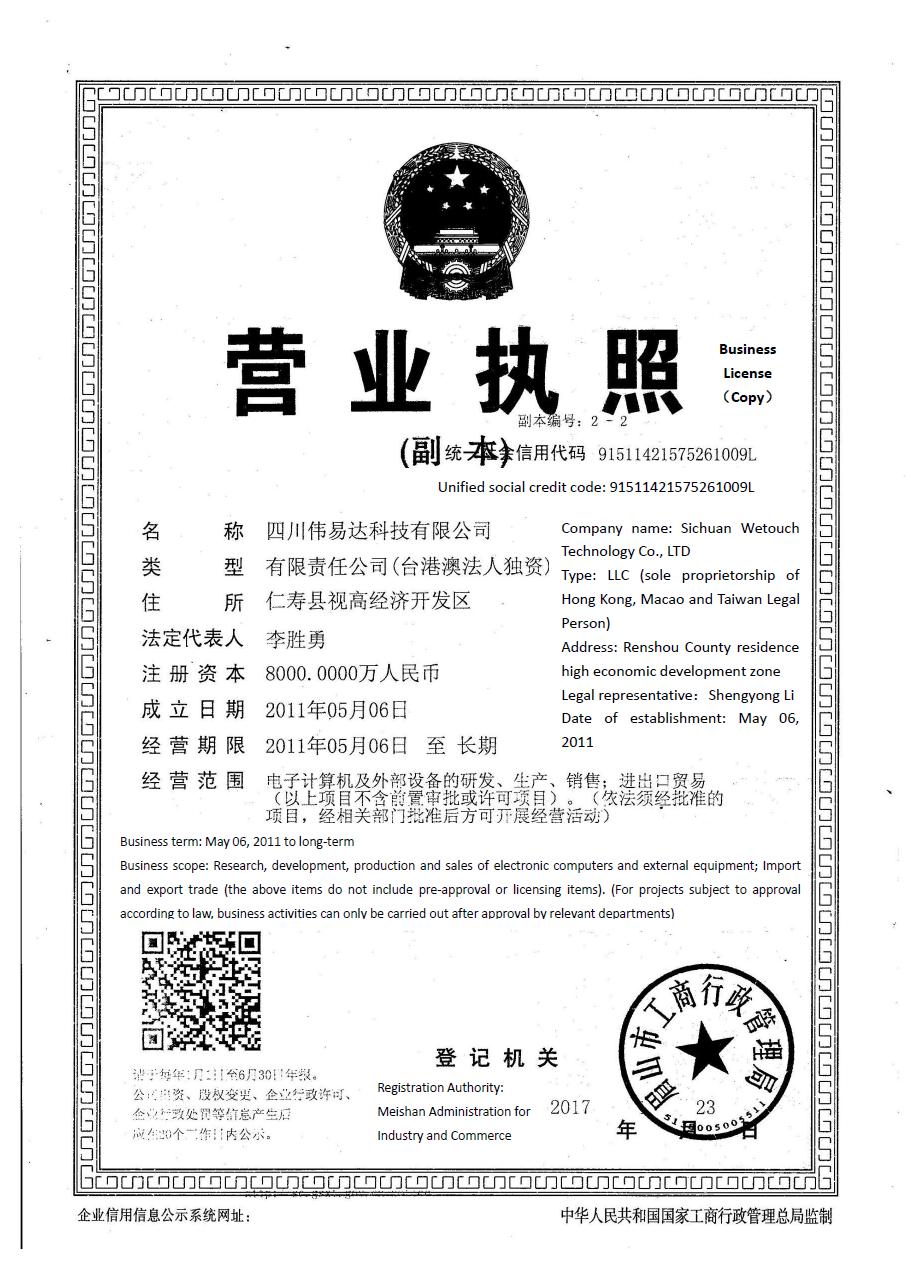
Exhibit 3.8
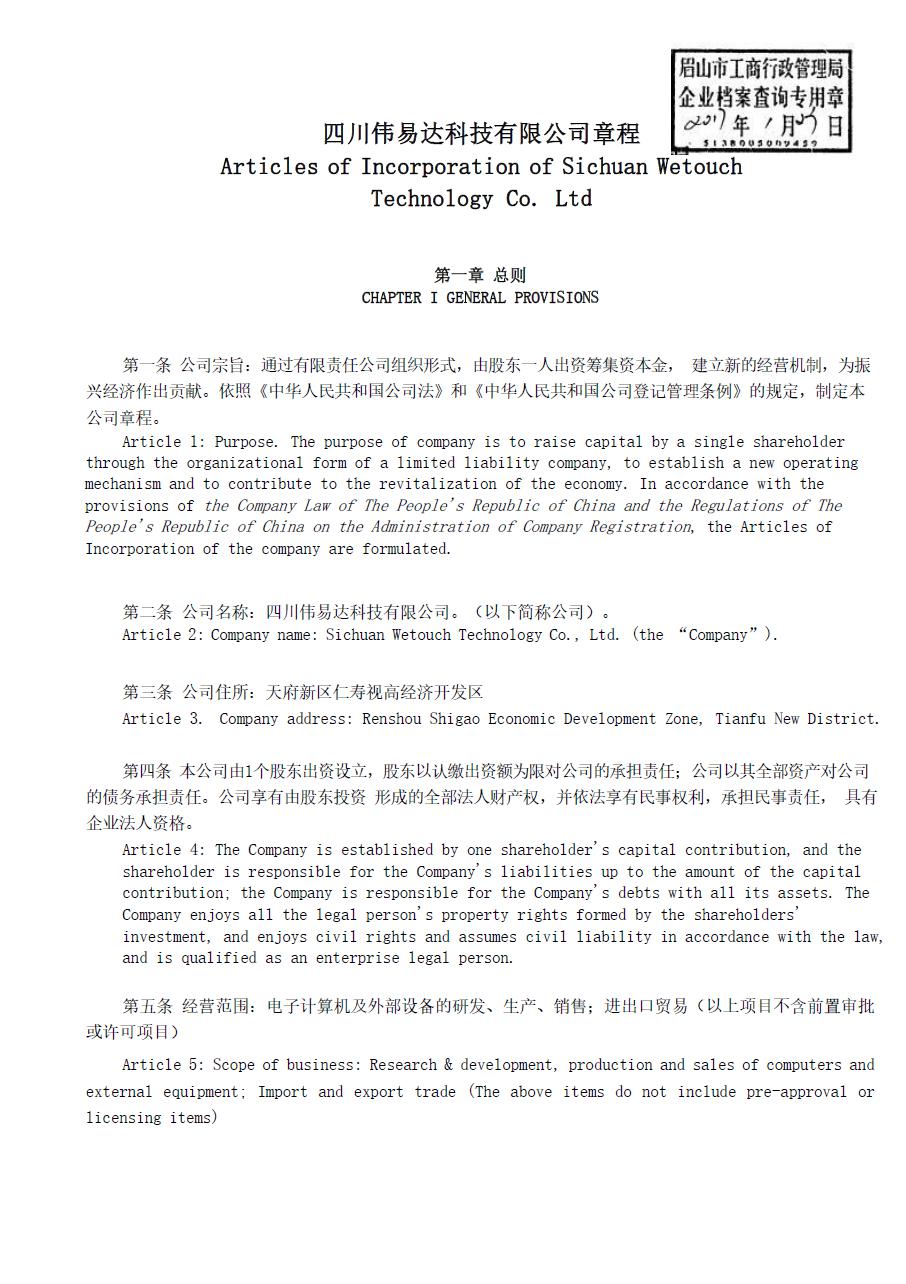
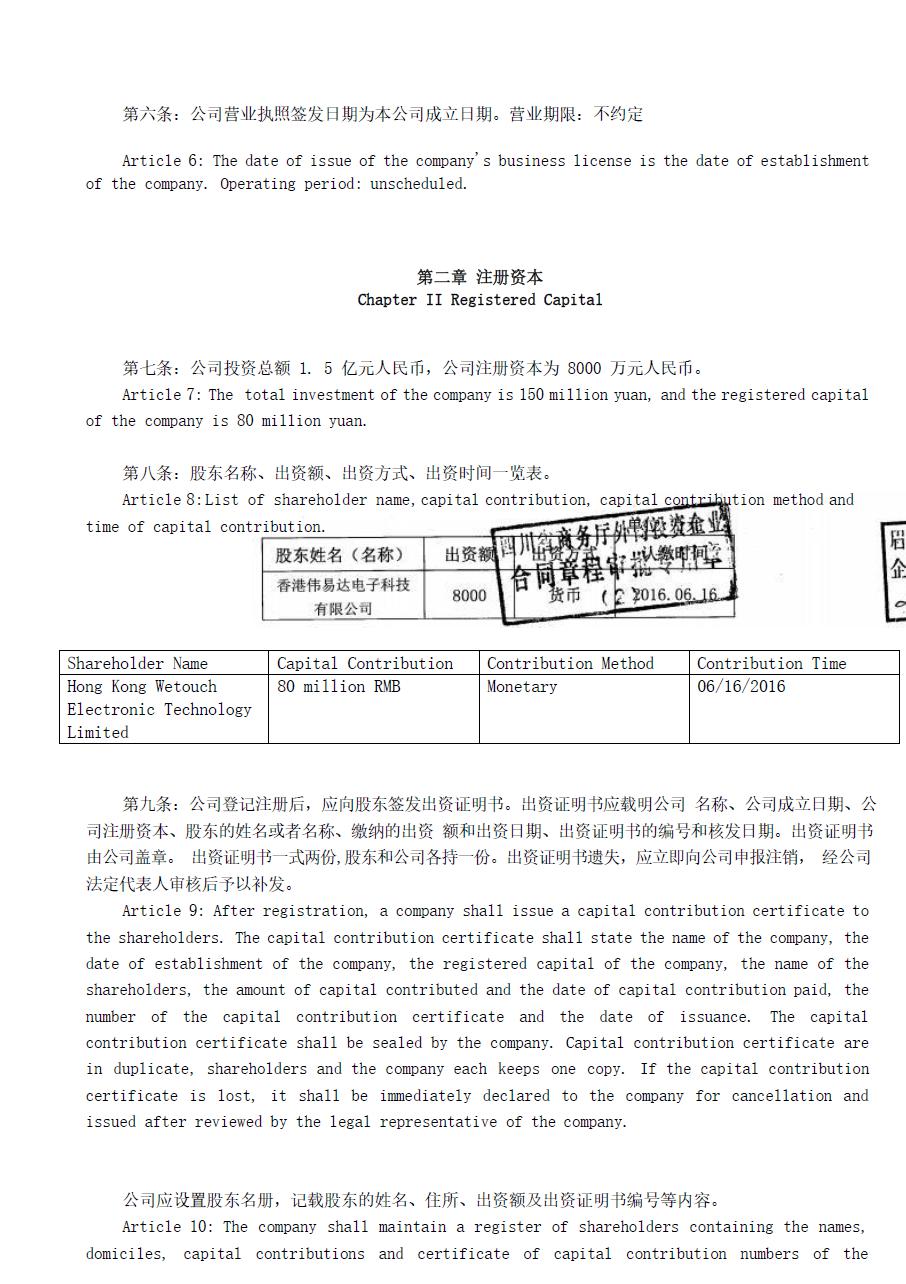
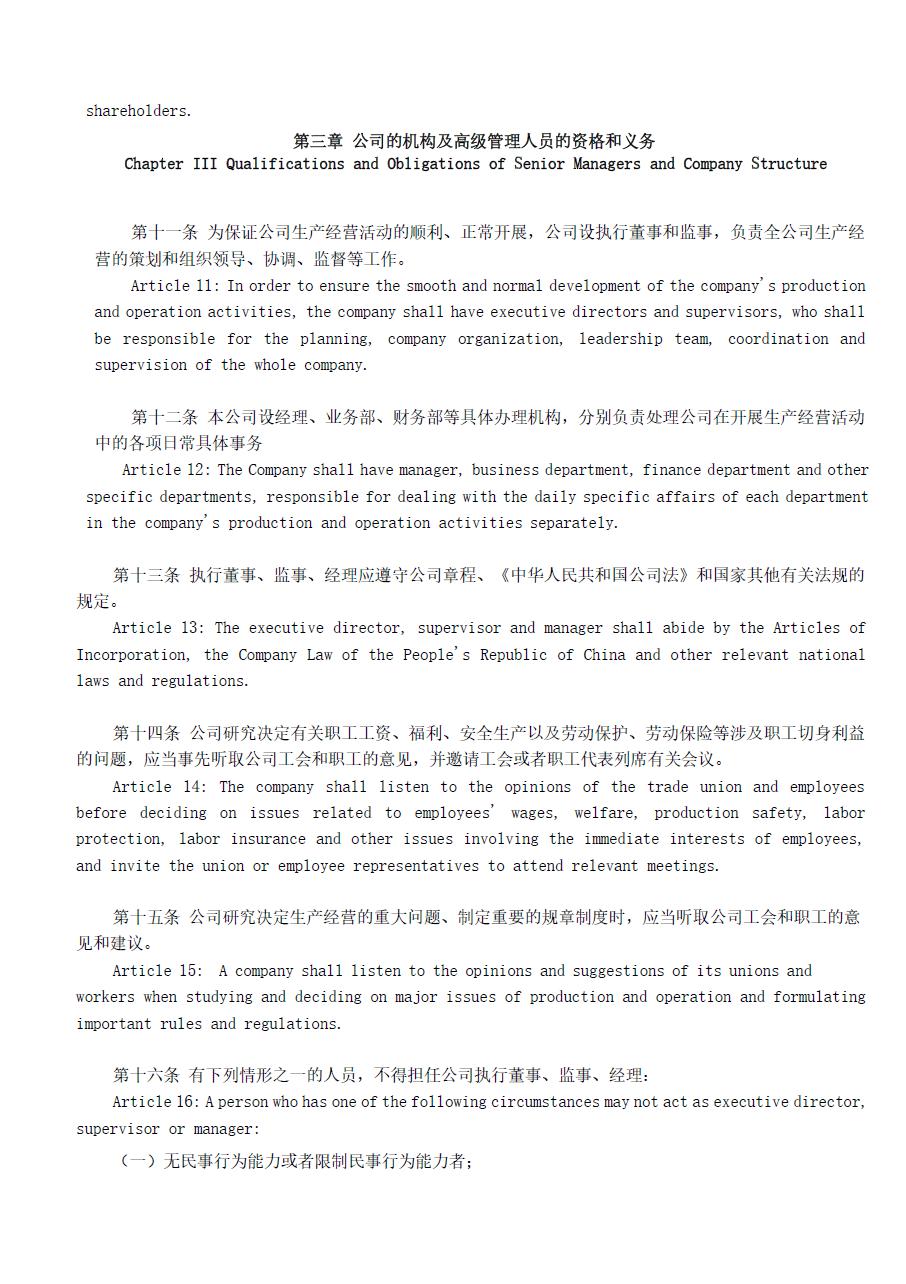
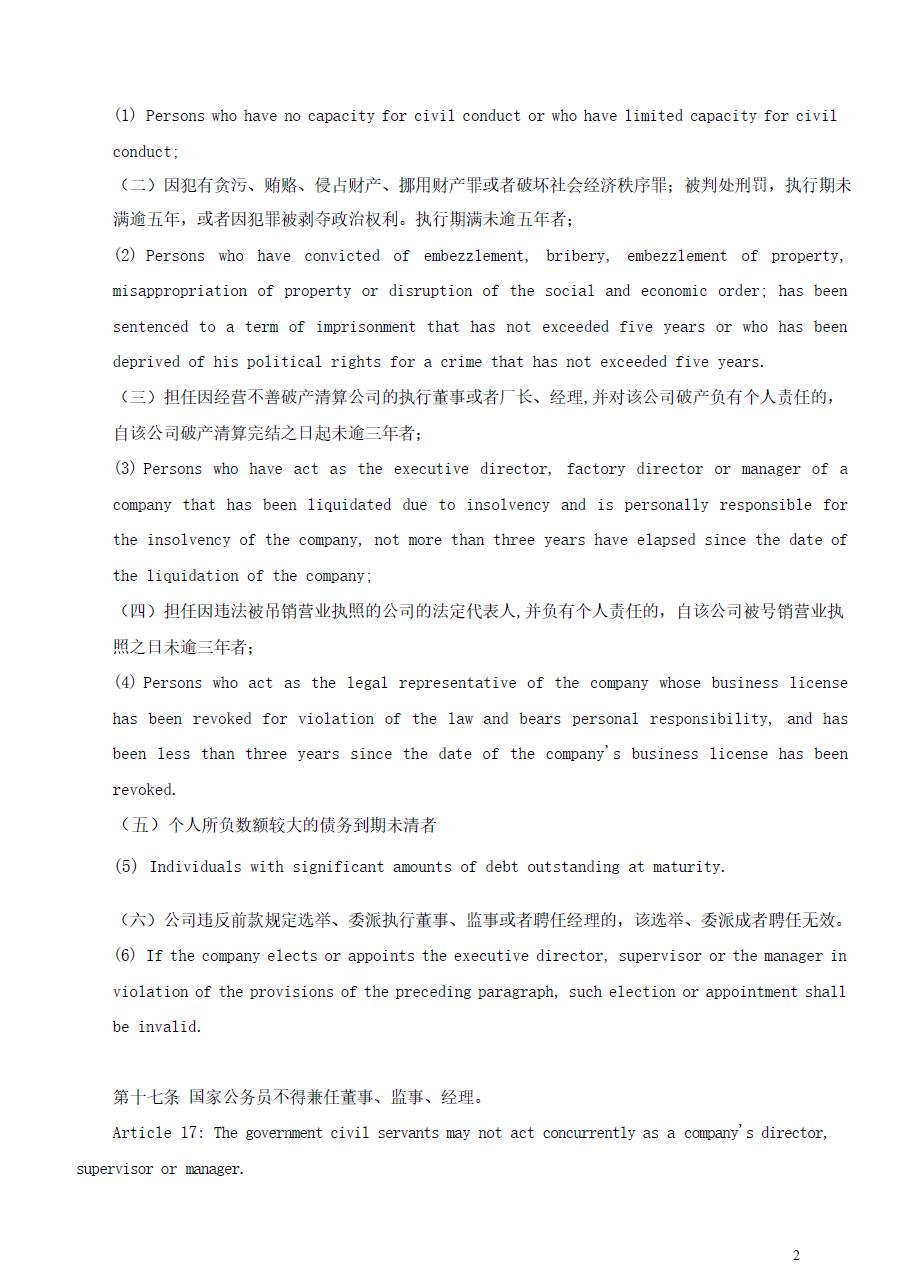
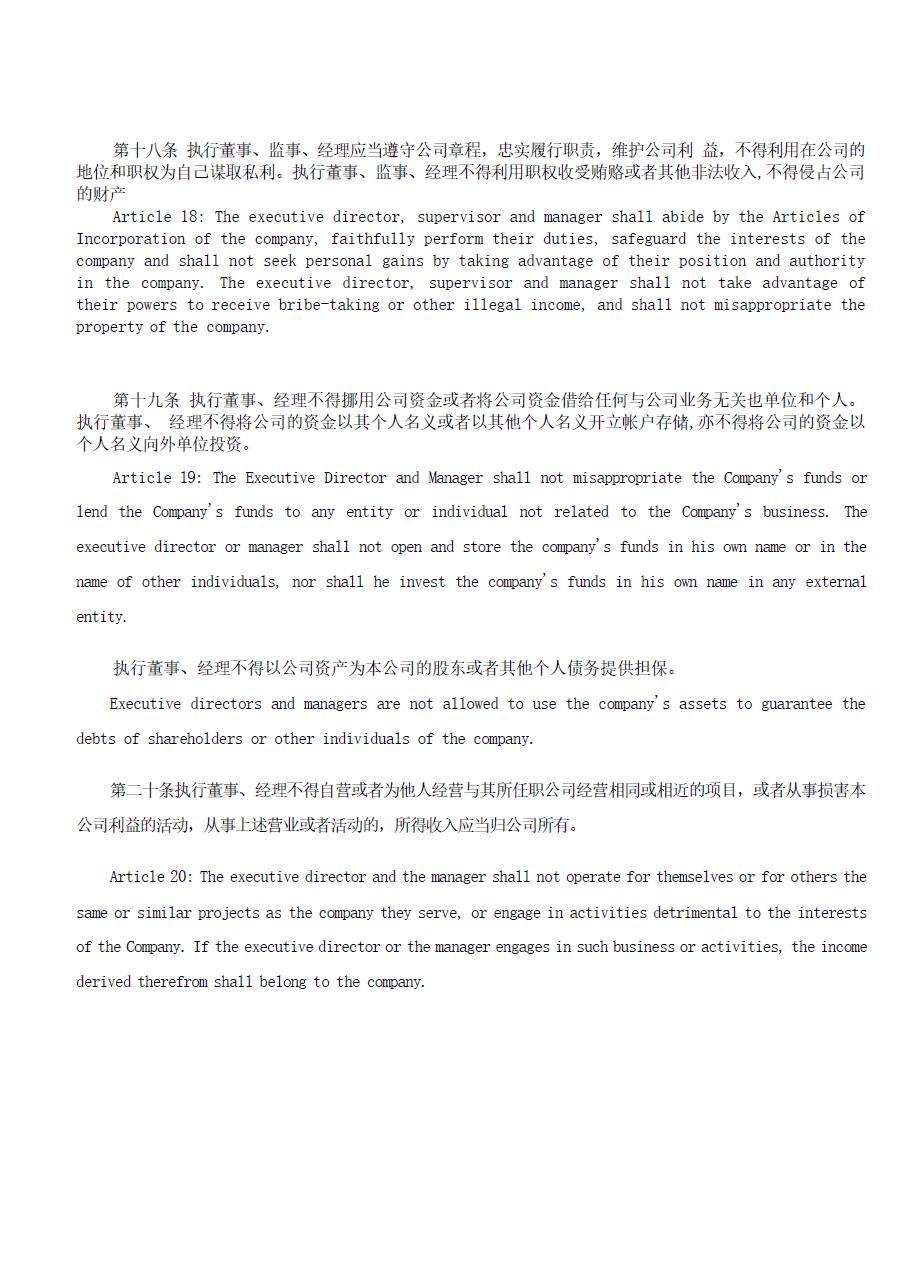
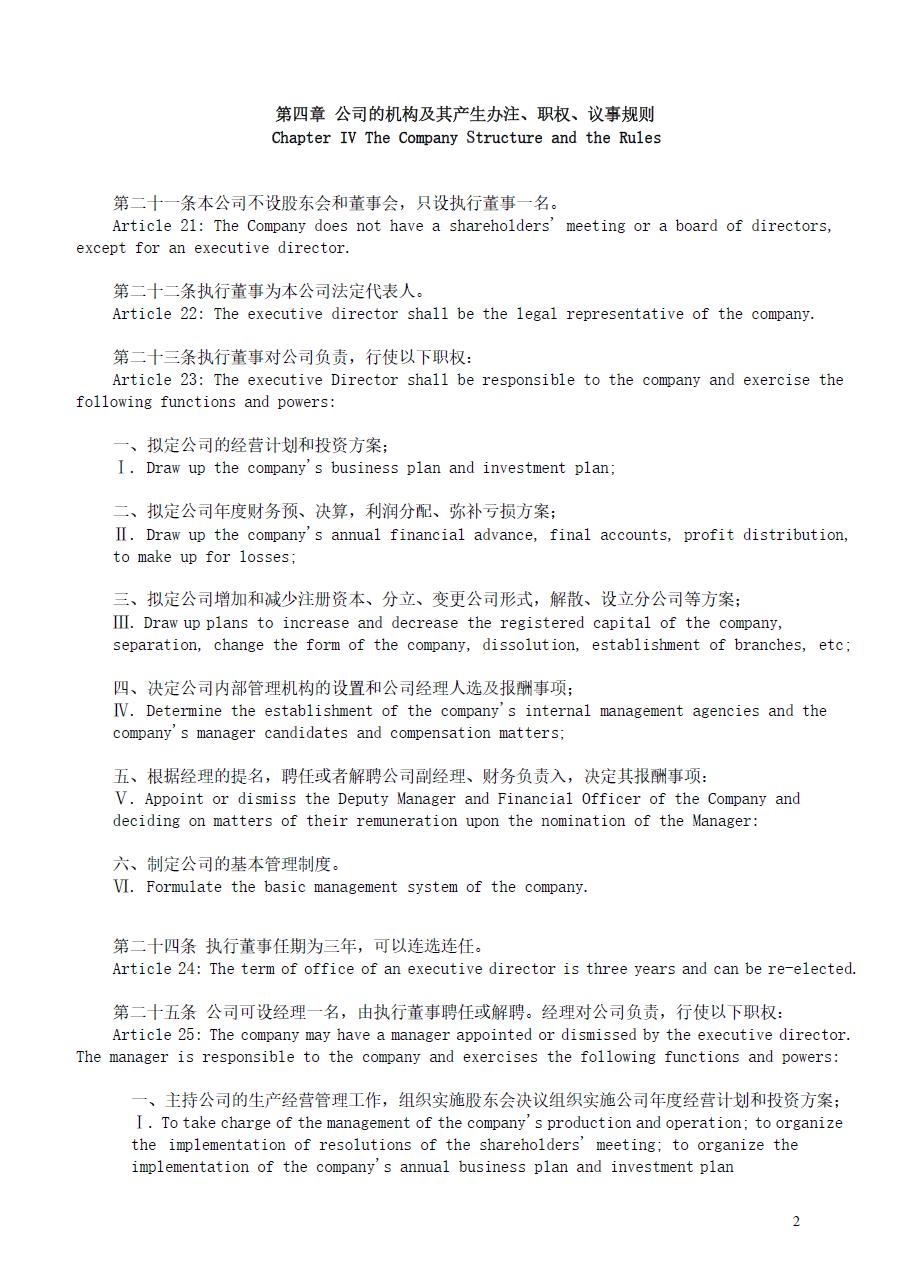
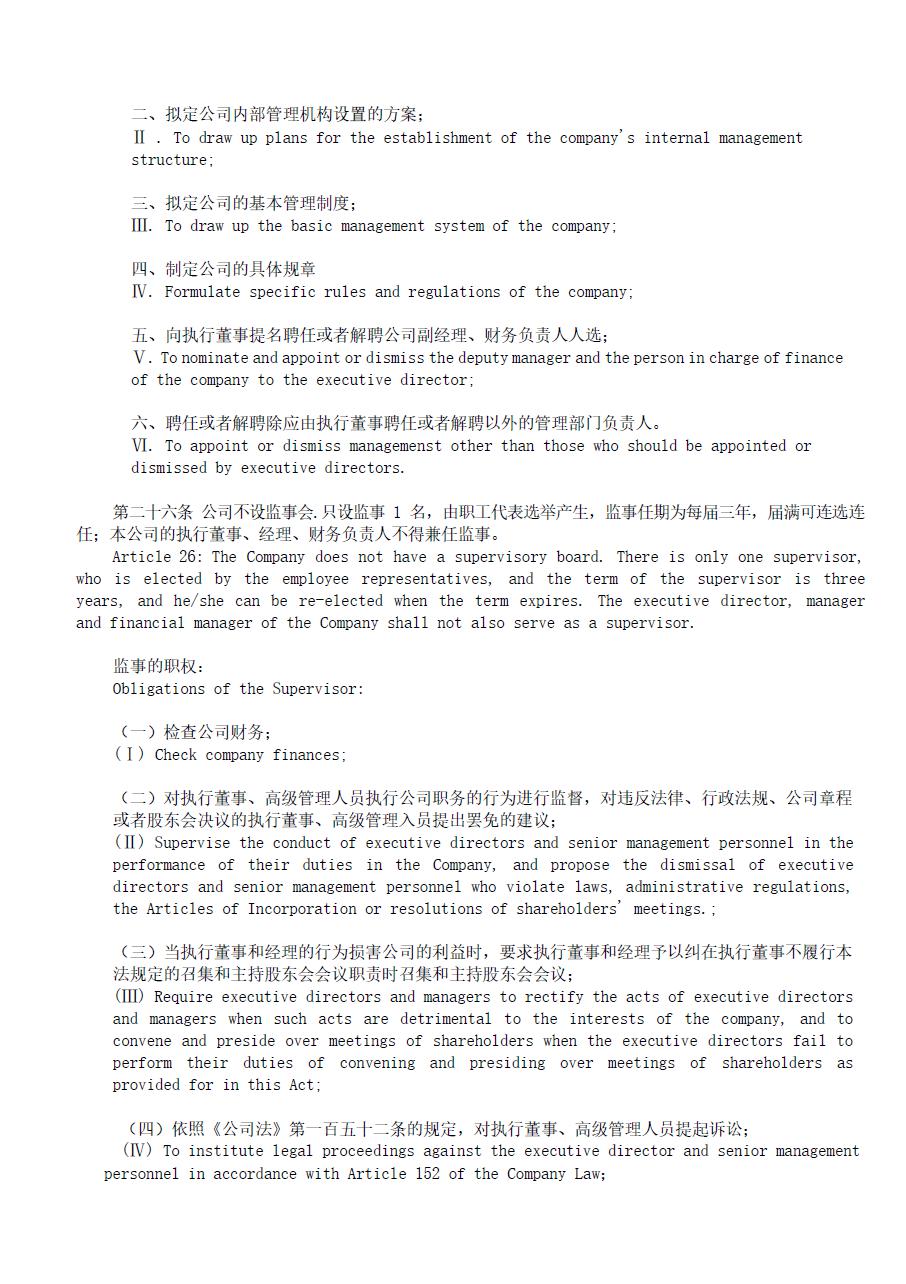
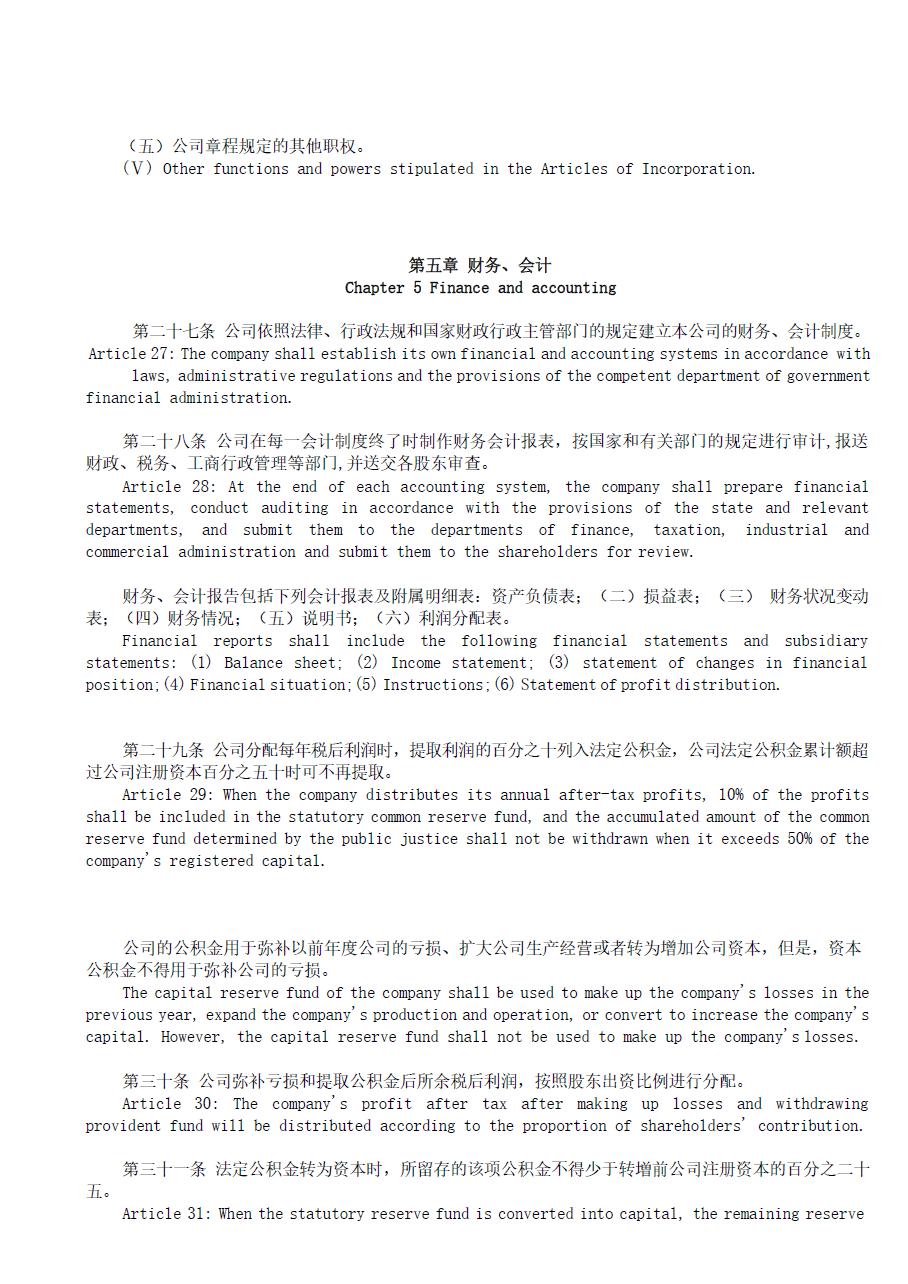
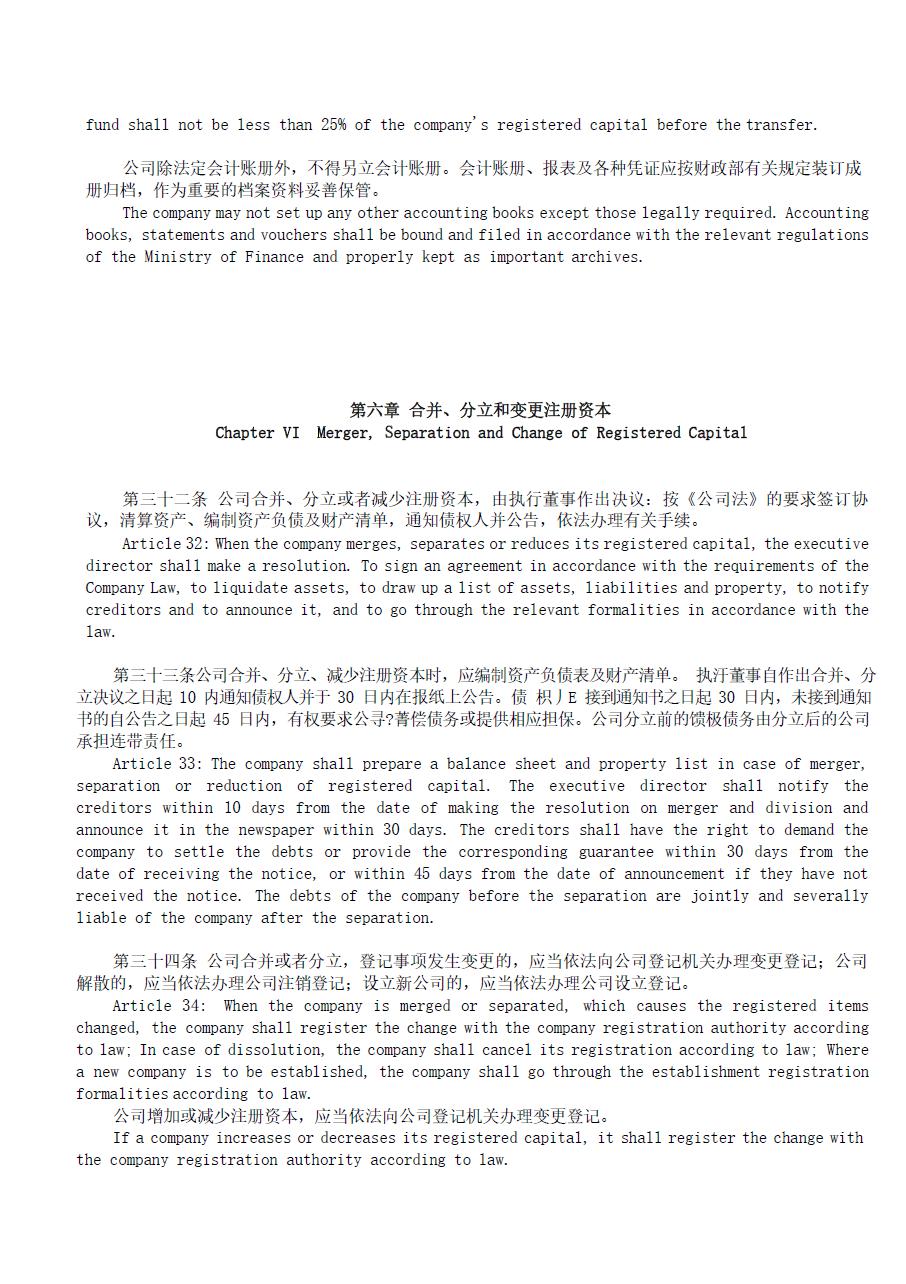
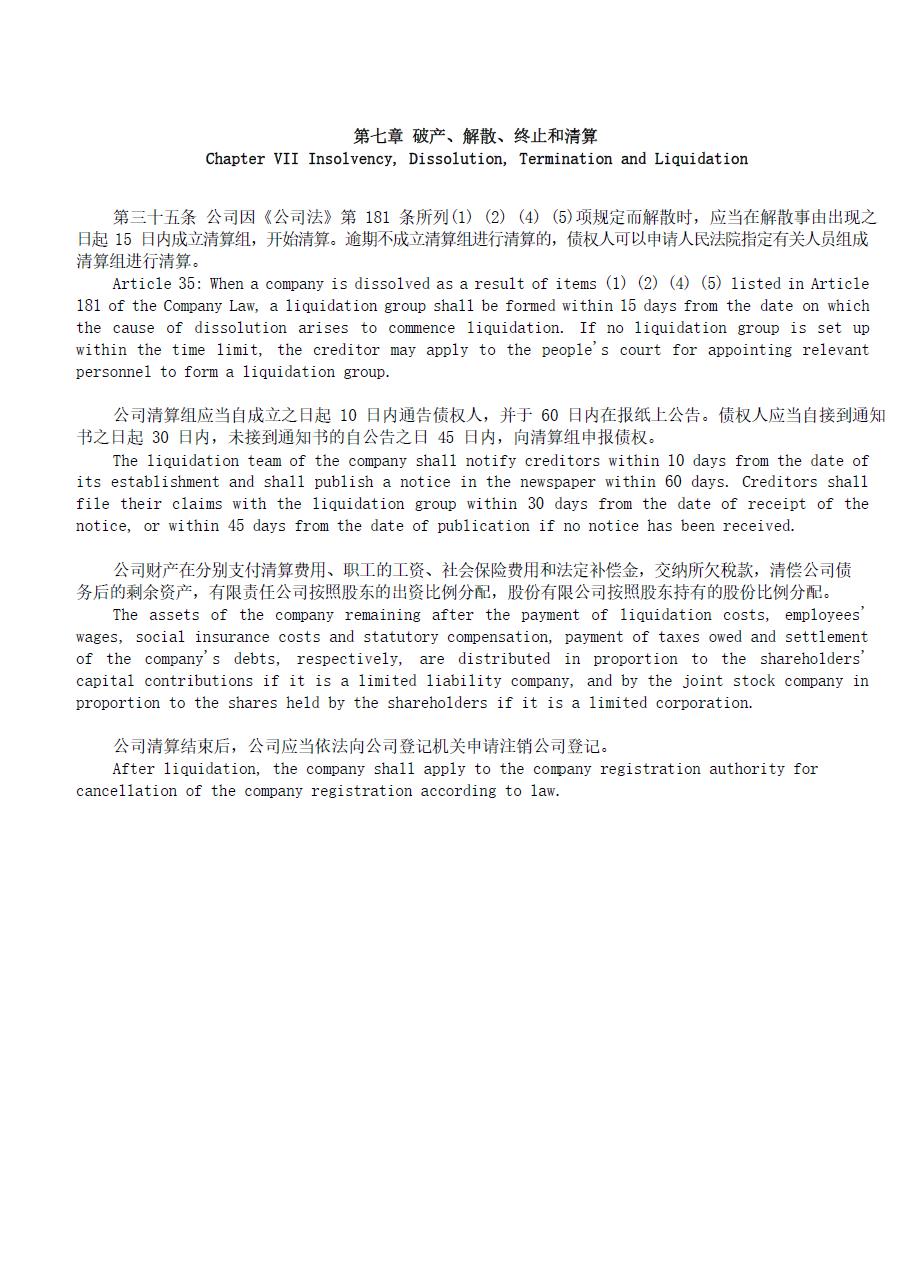
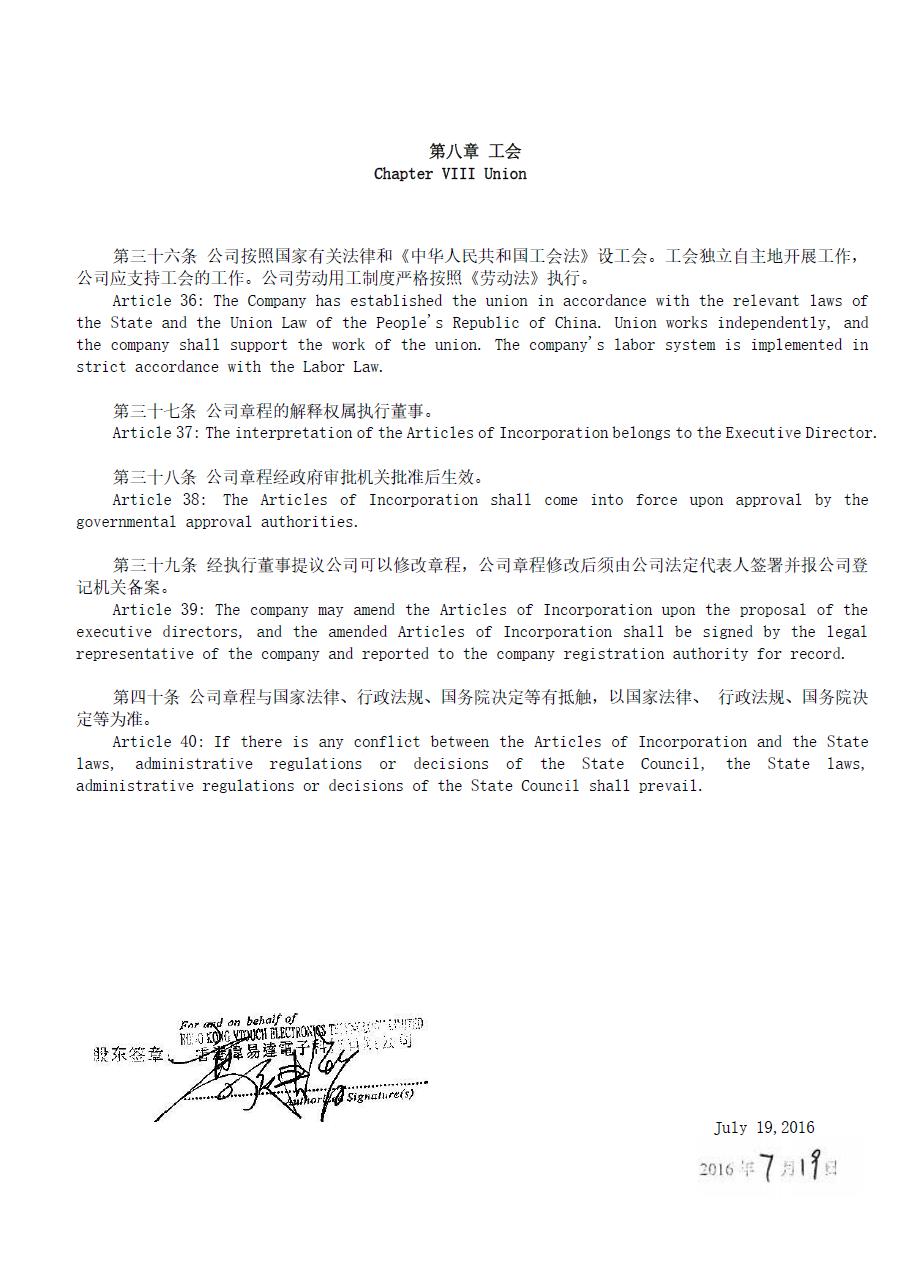
Exhibit 10.1.1
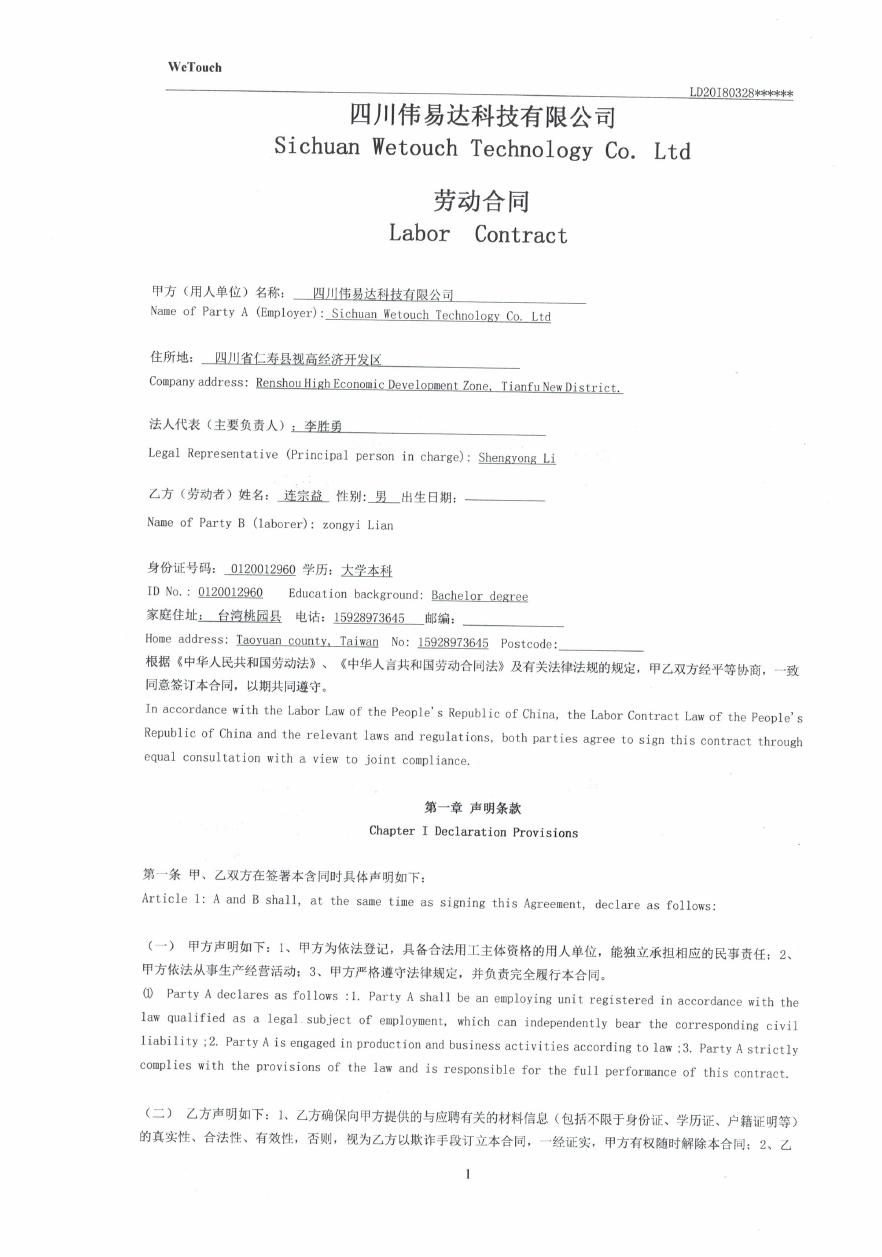
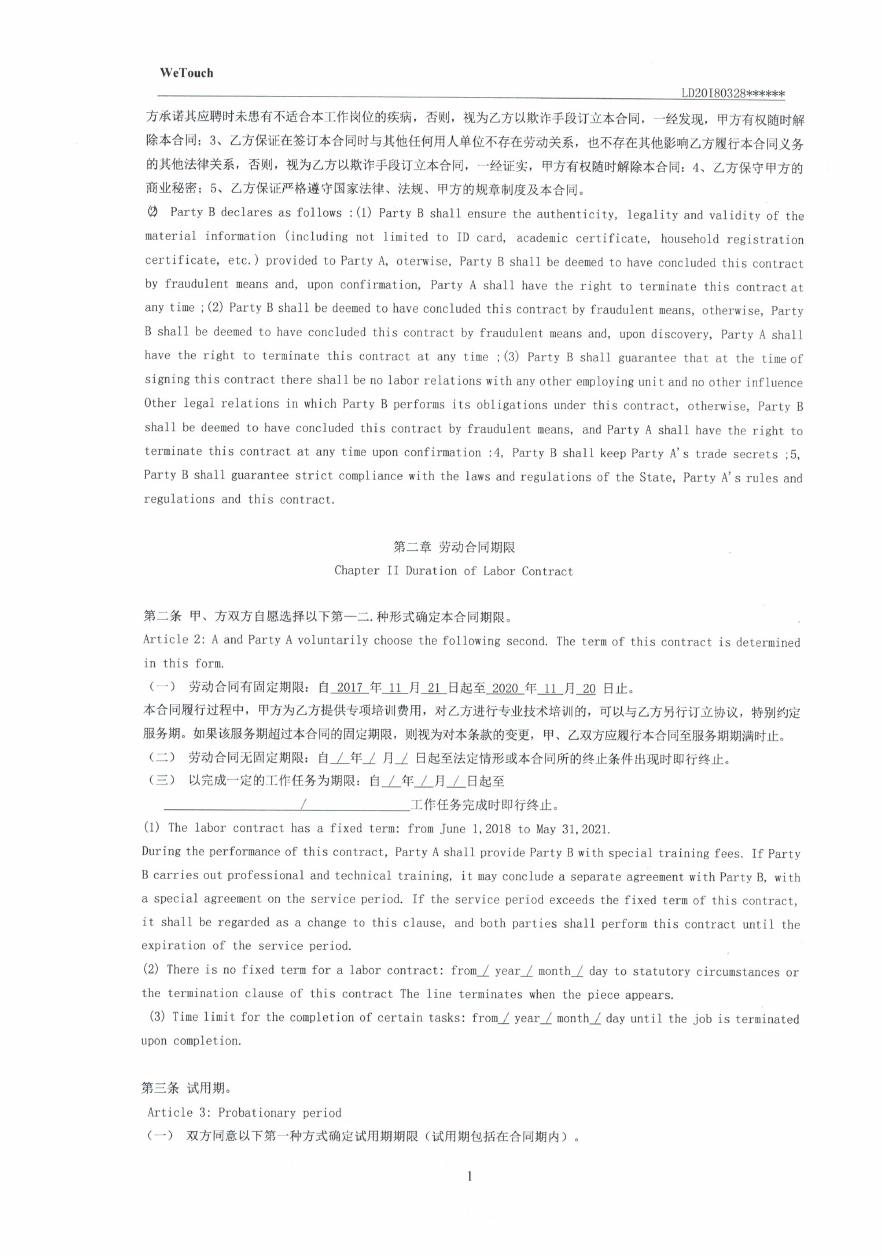
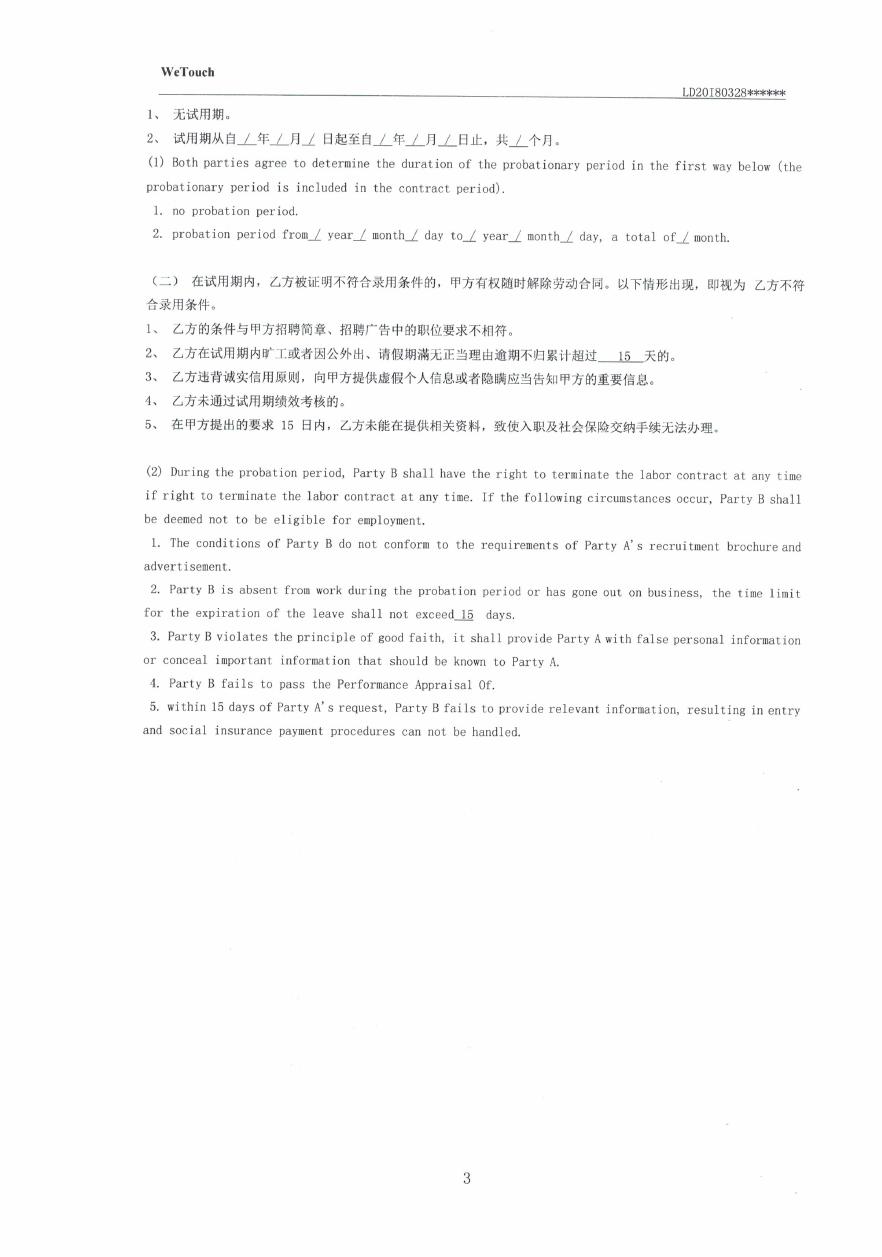
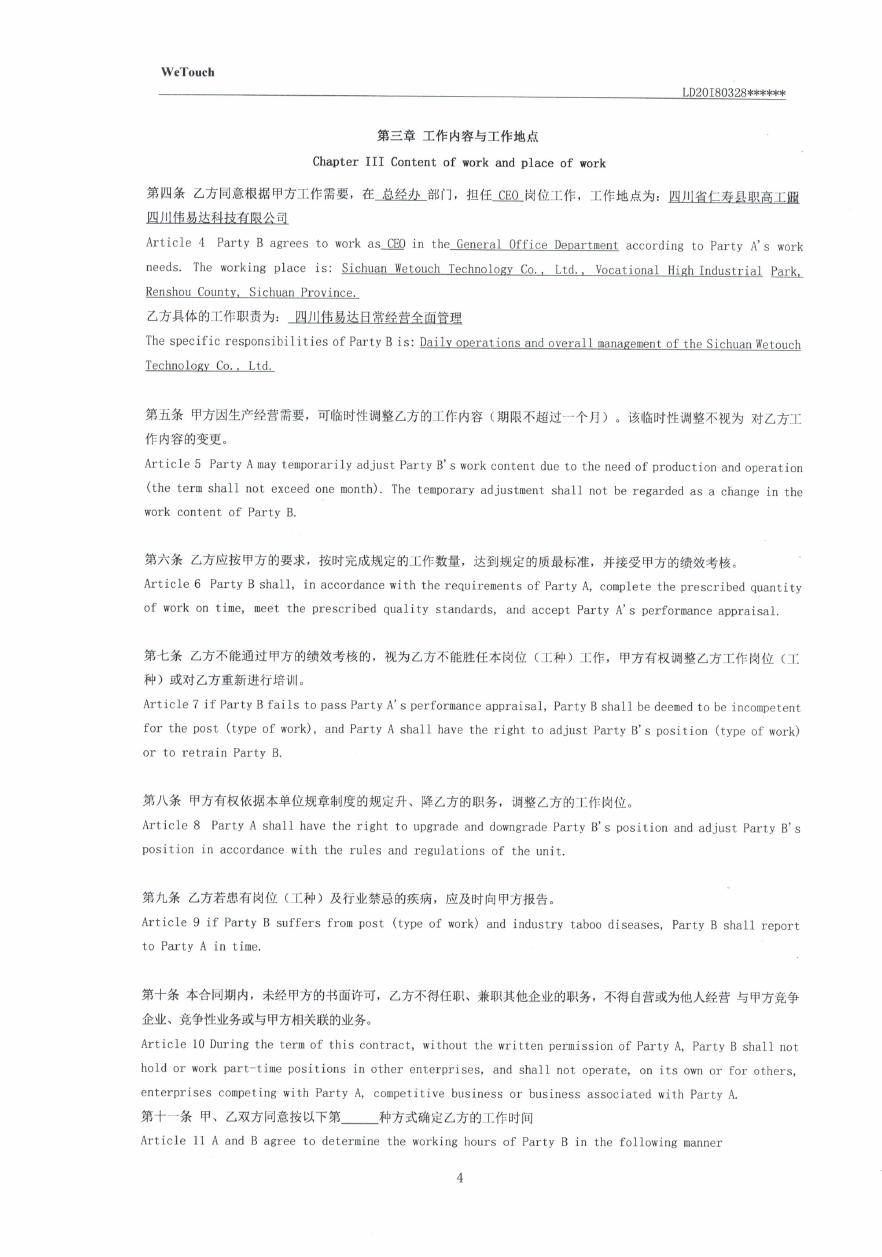
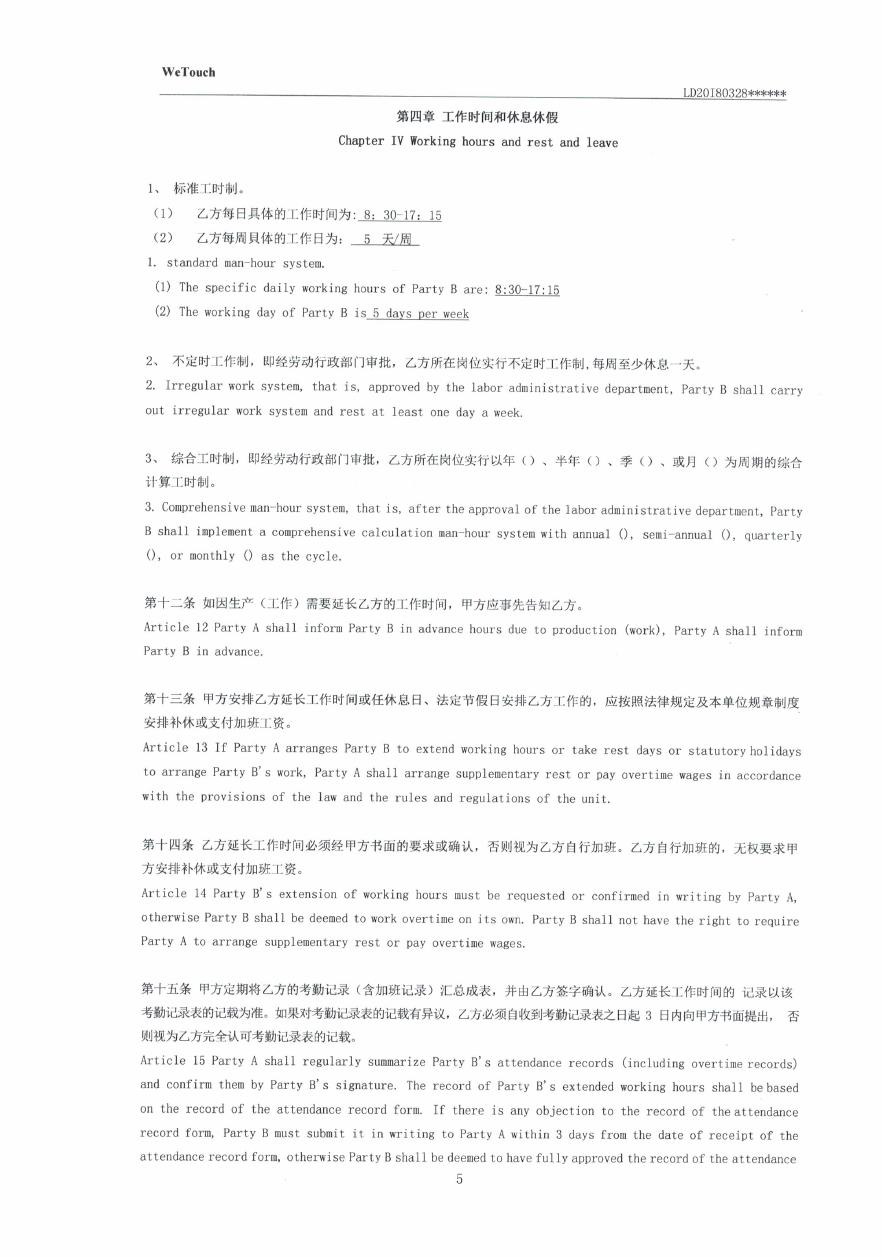
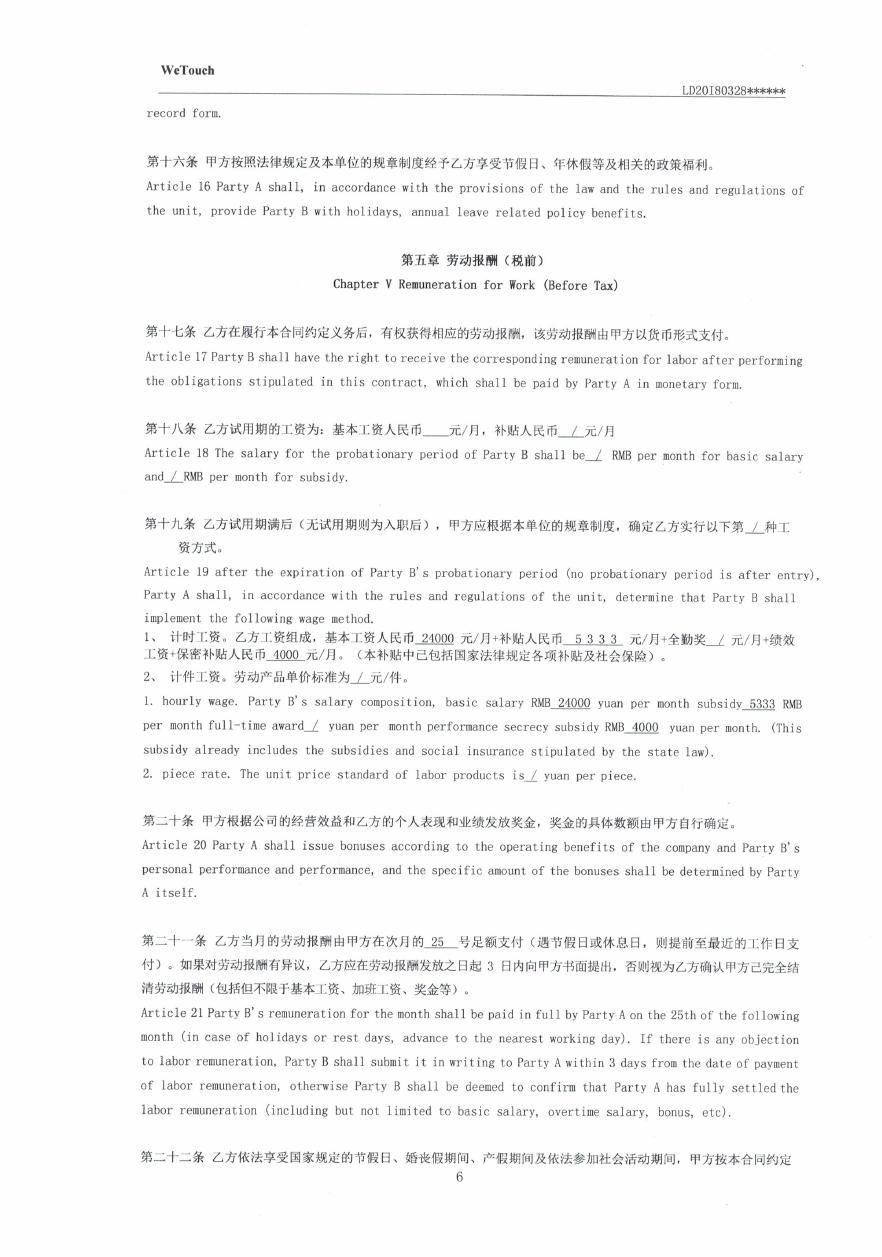
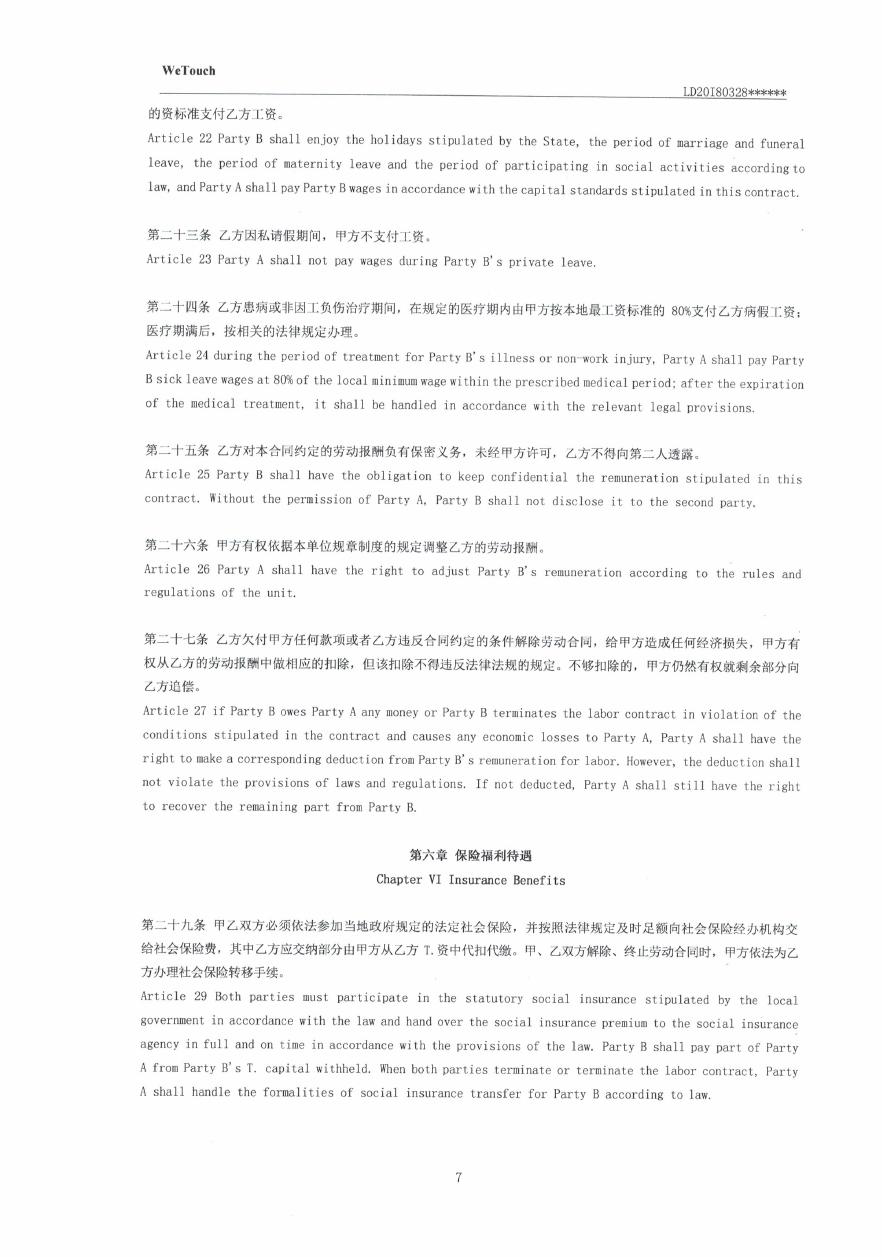
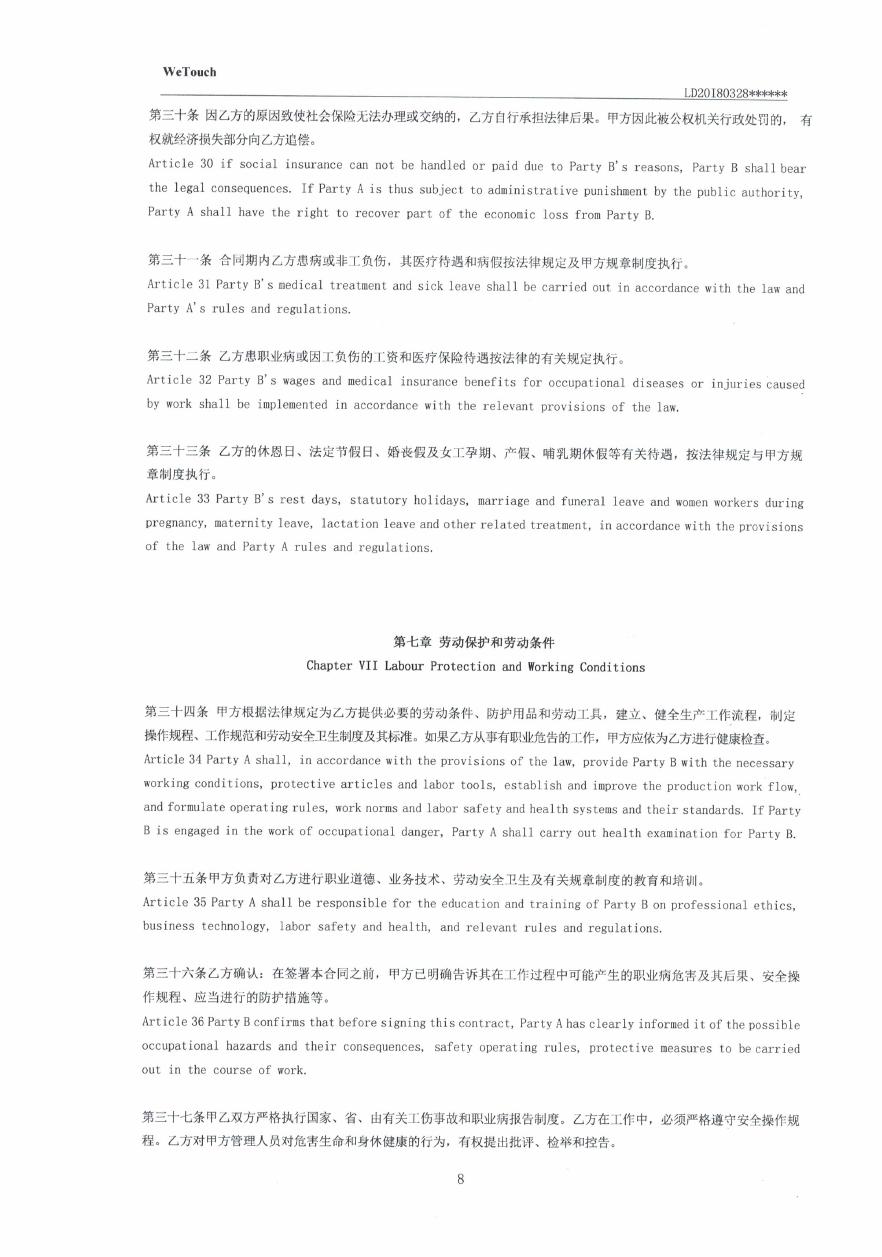
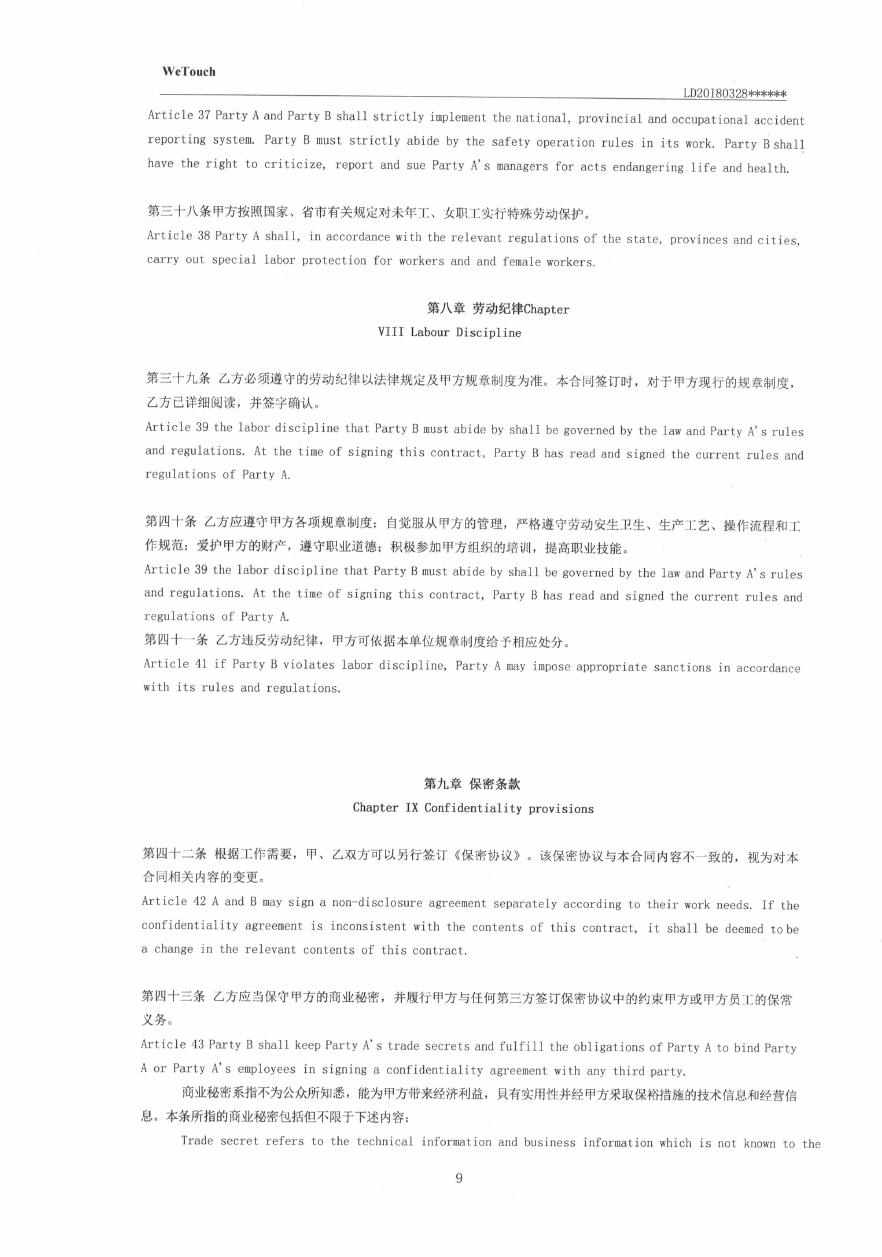
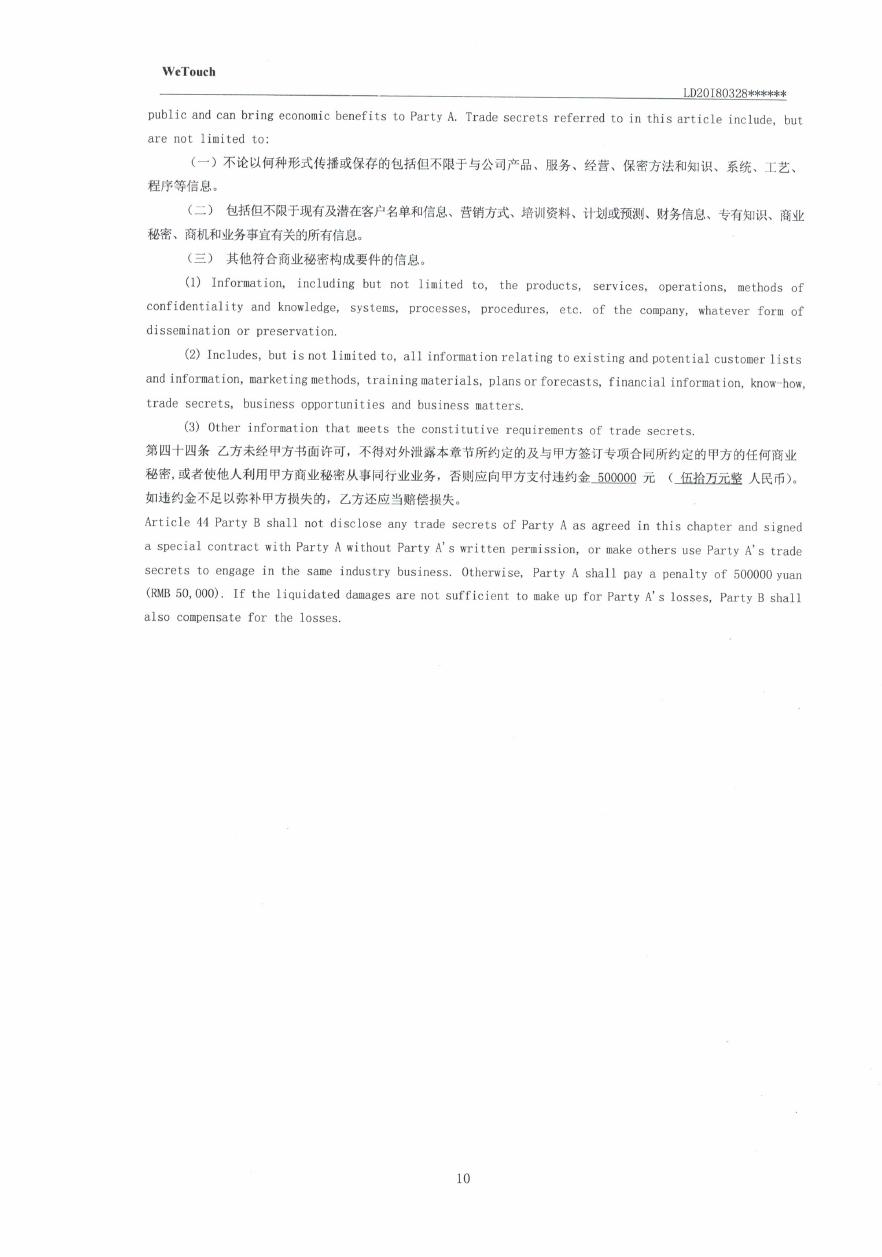
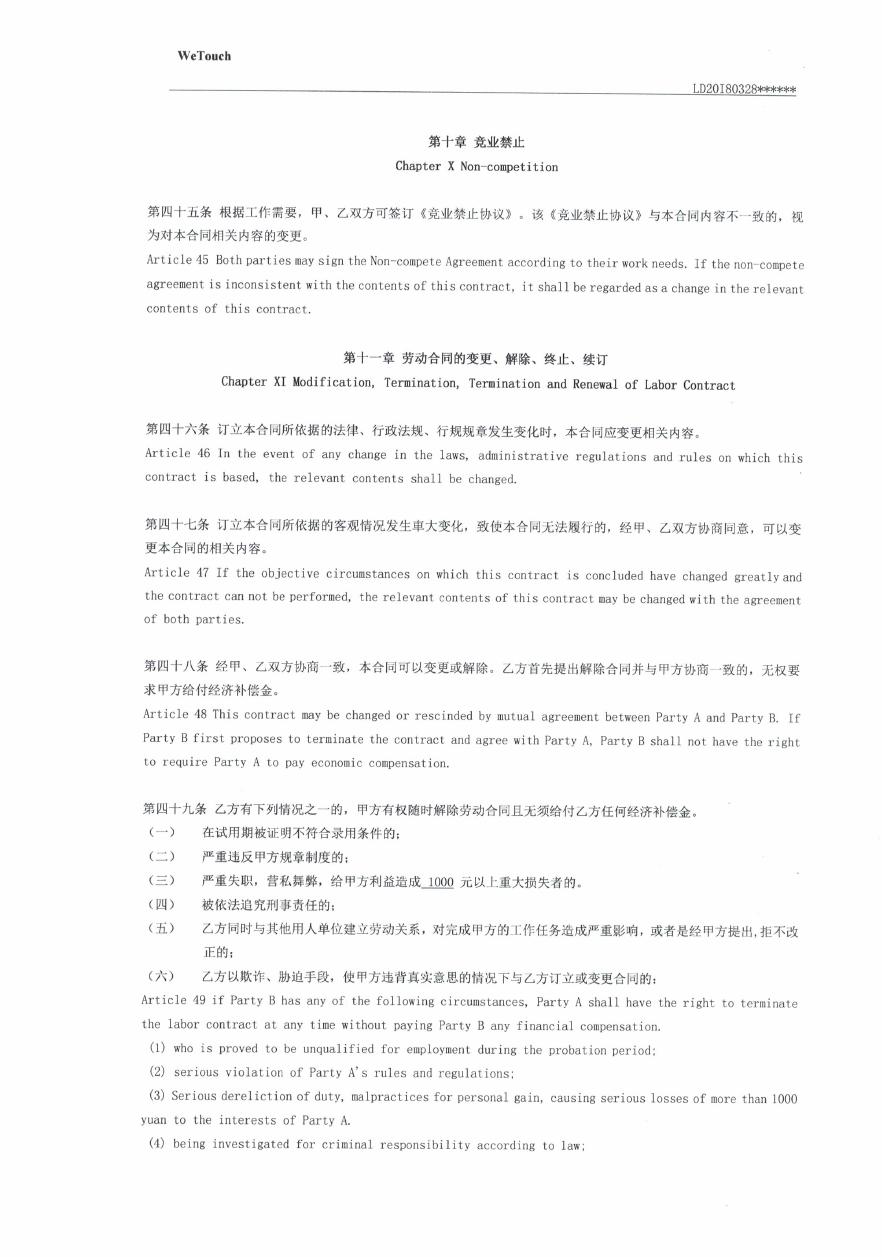
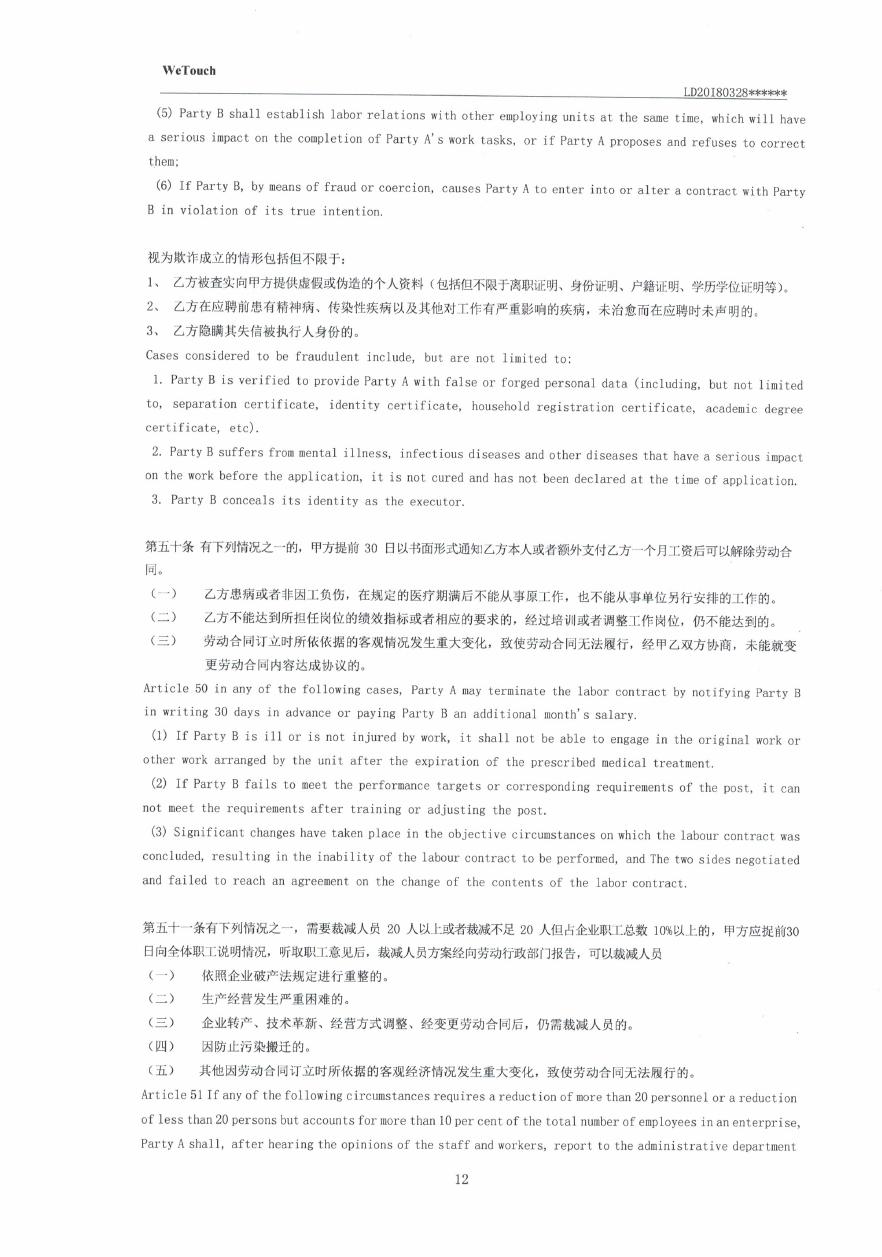
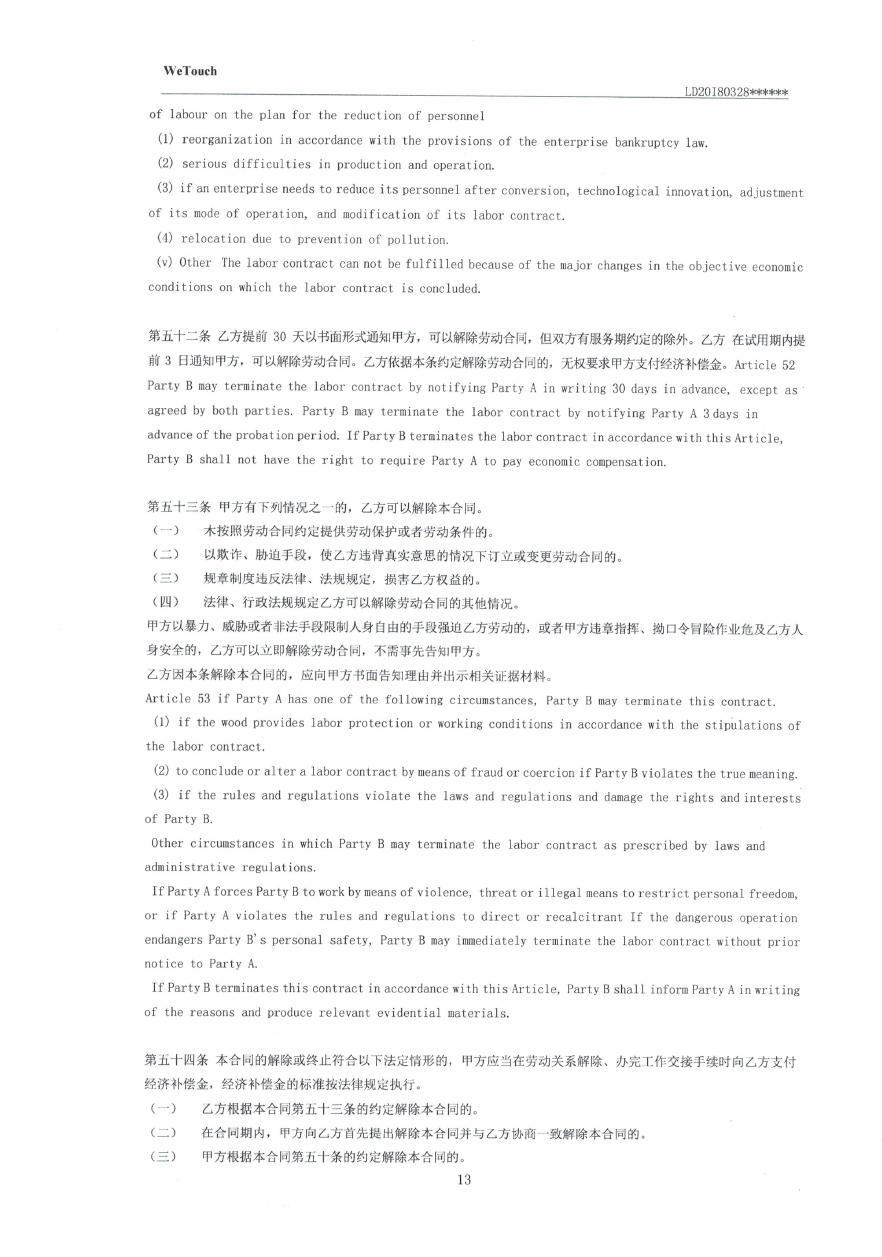
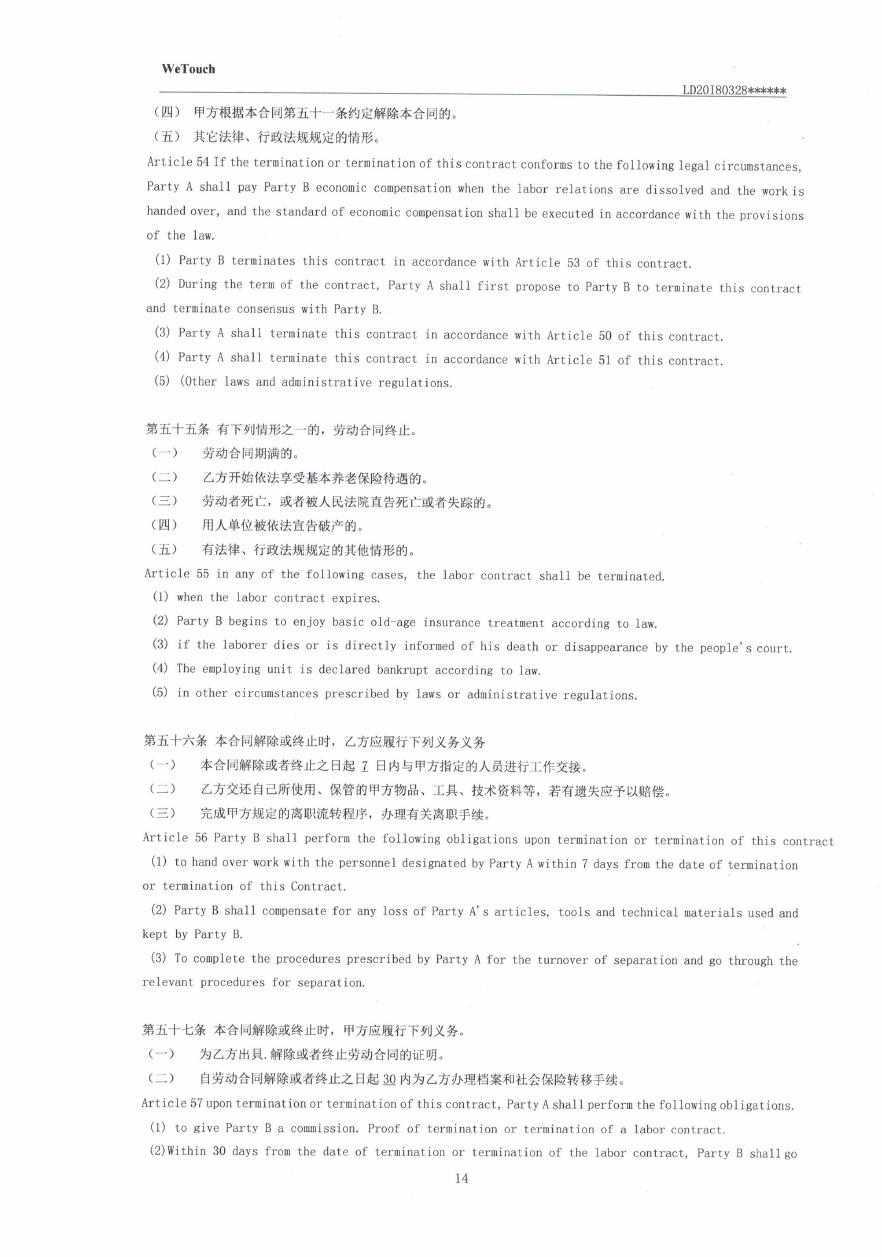
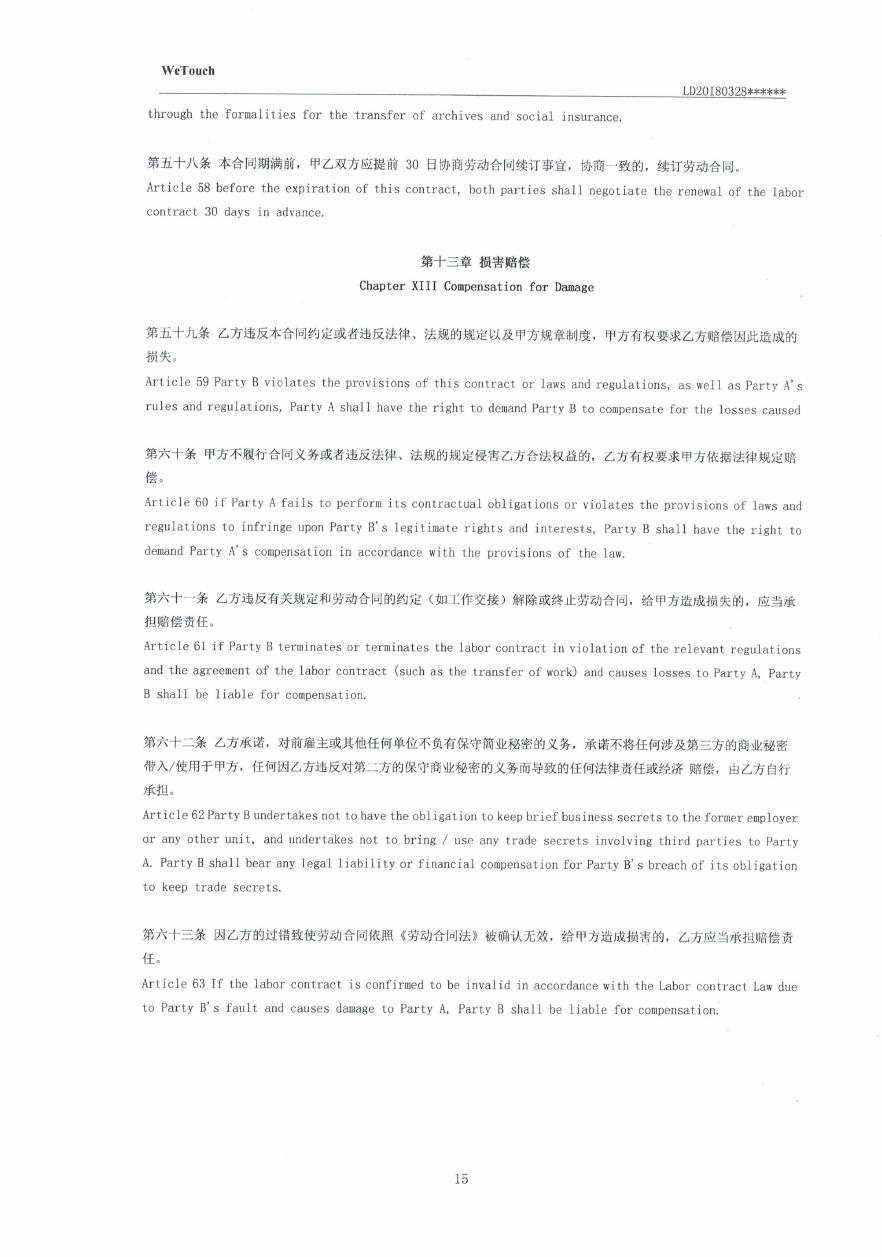
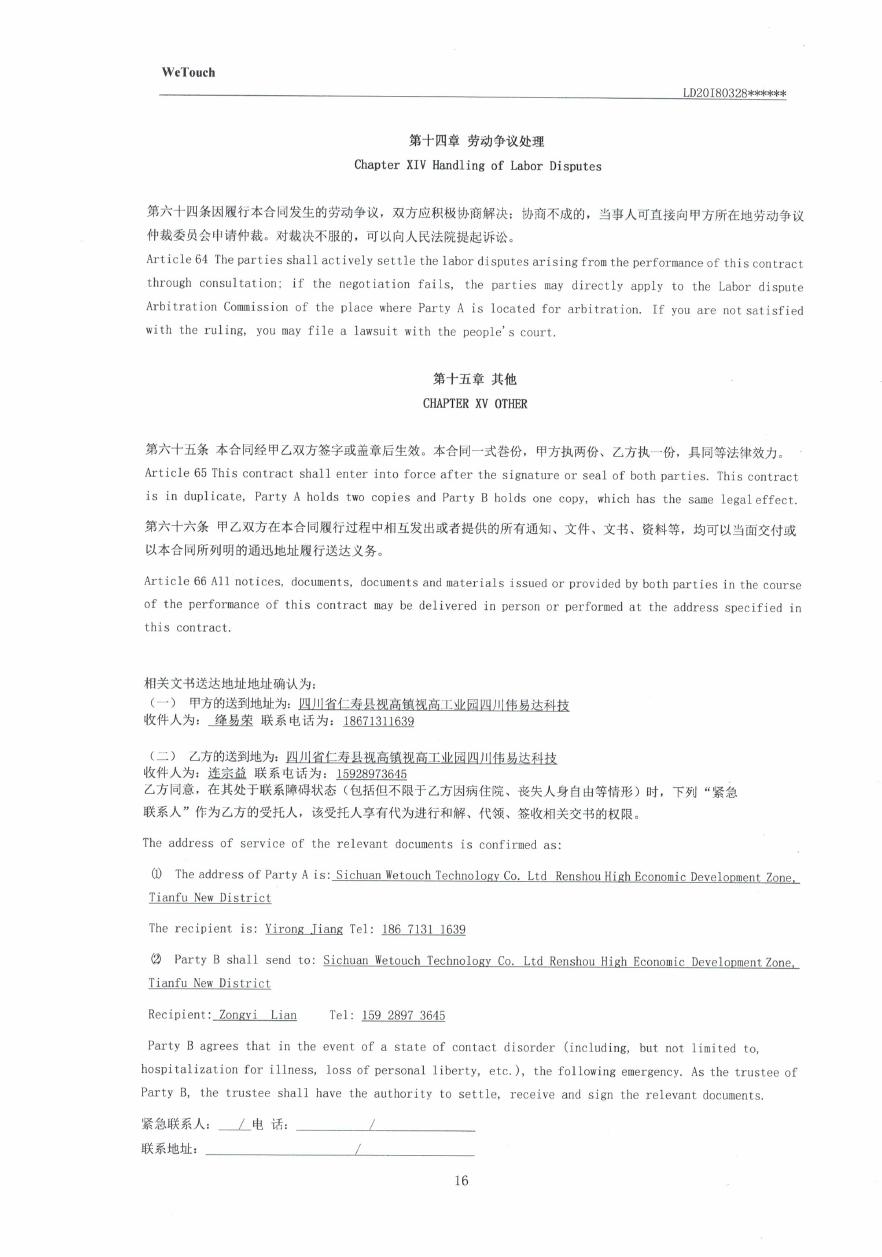
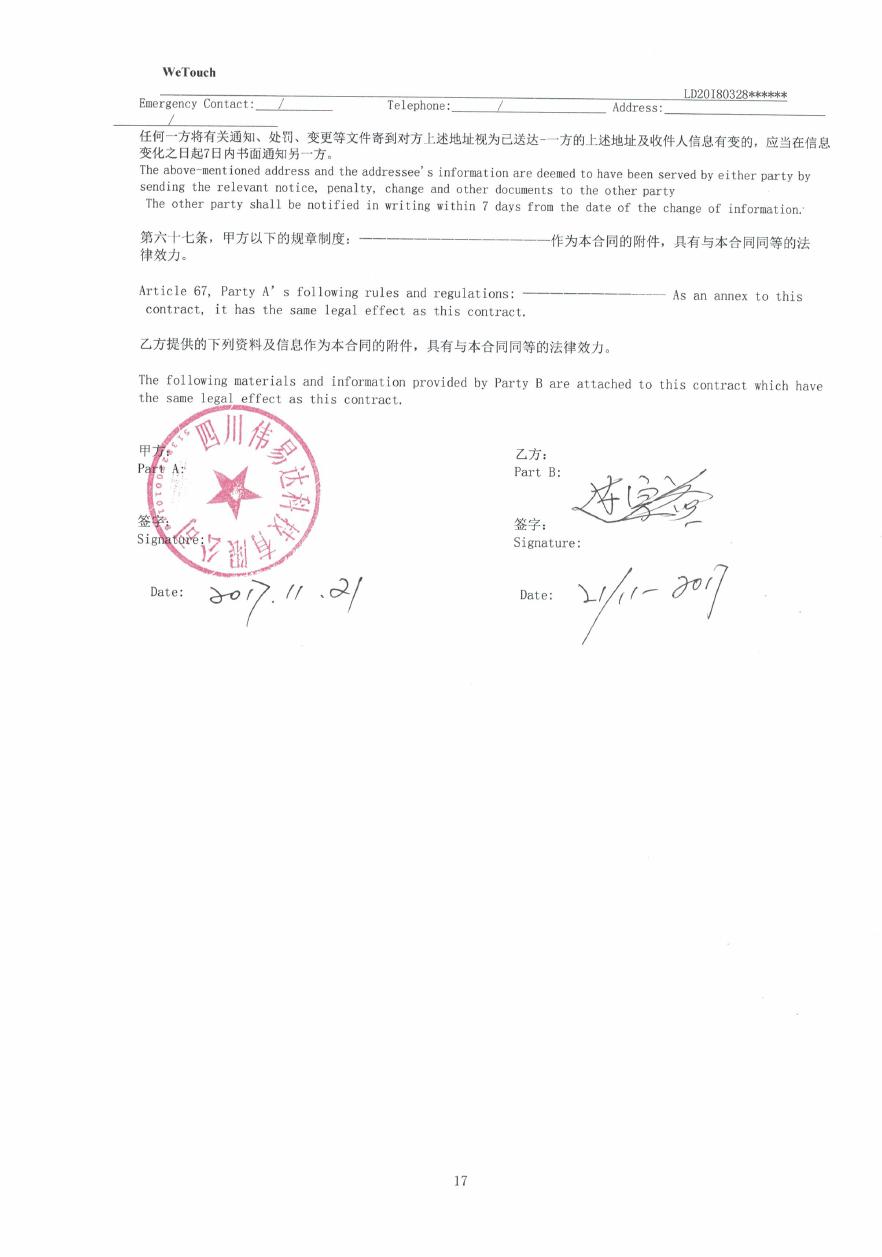
Exhibit 10.1.2
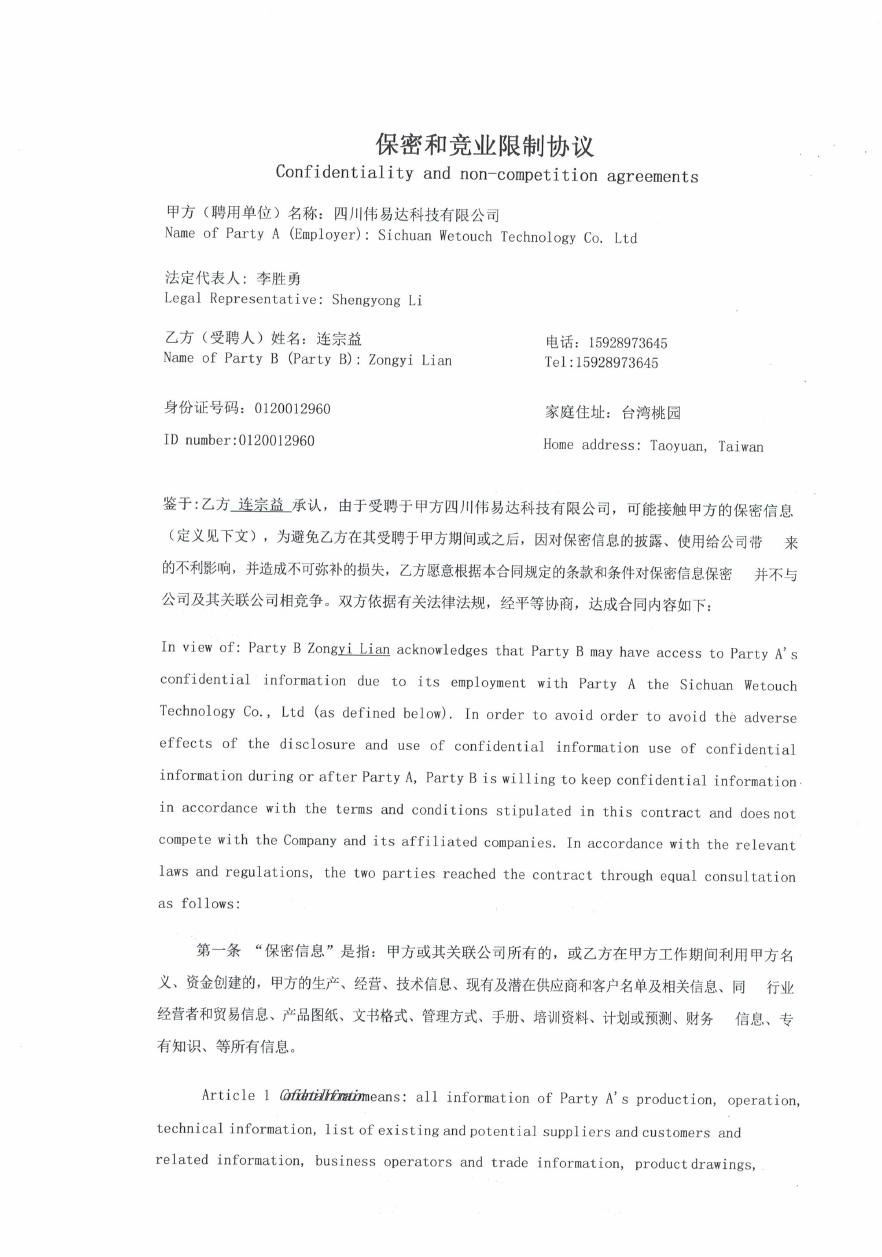
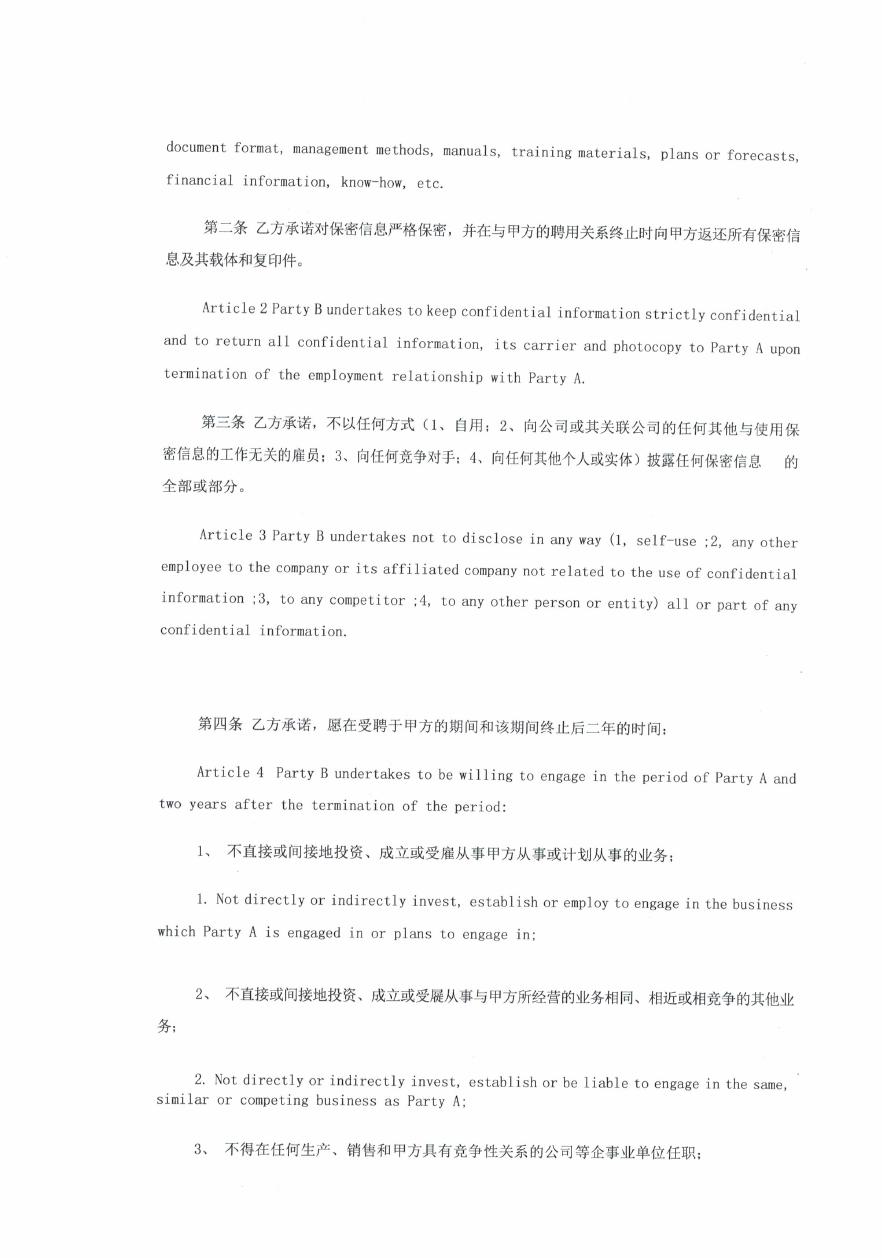
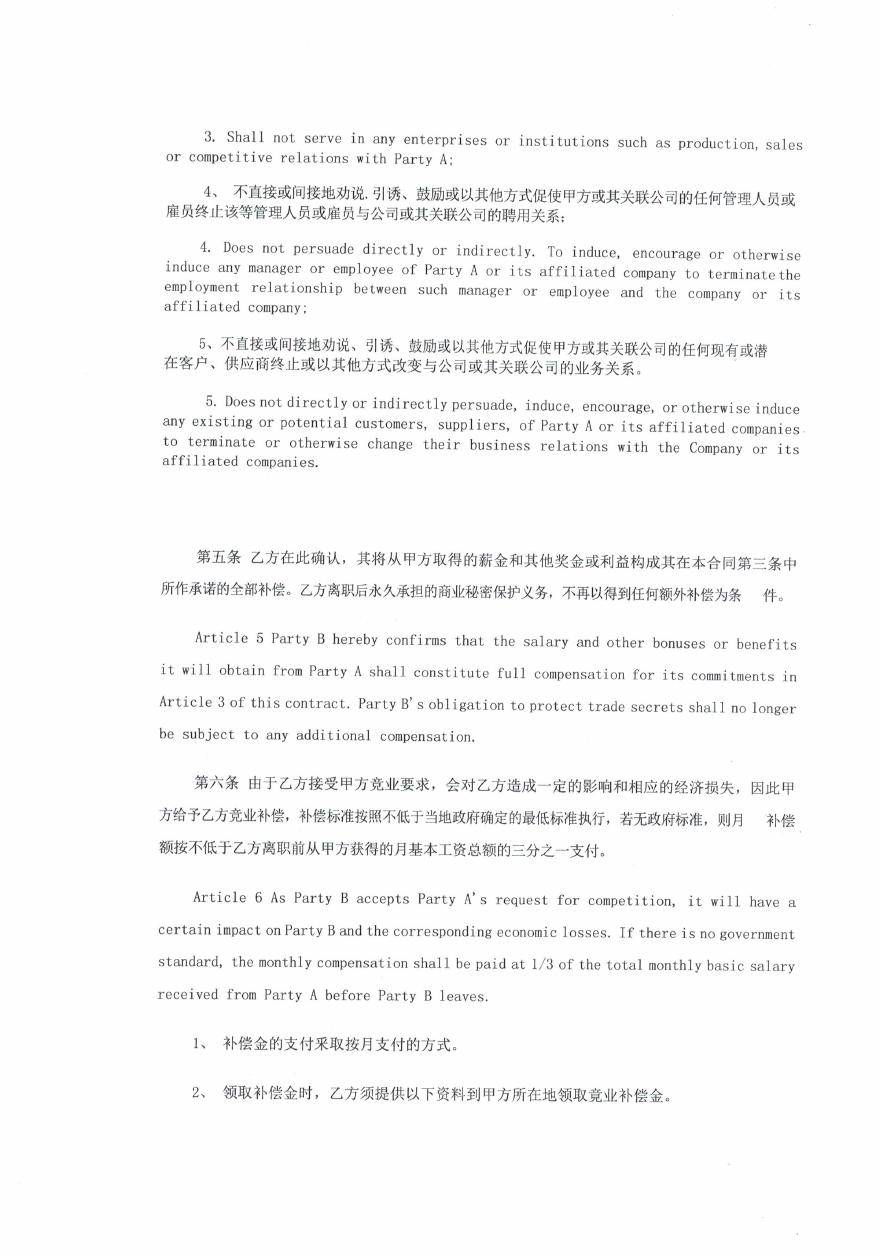
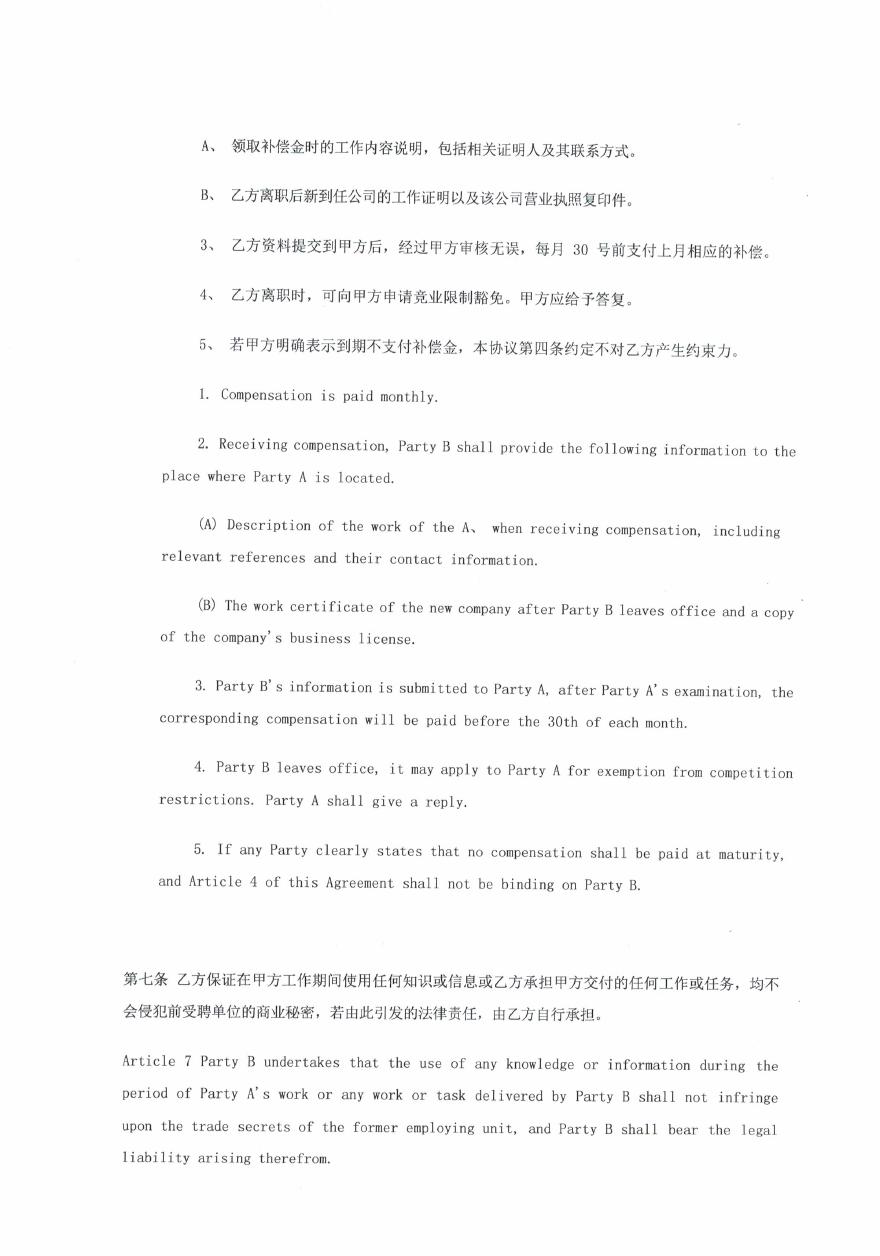
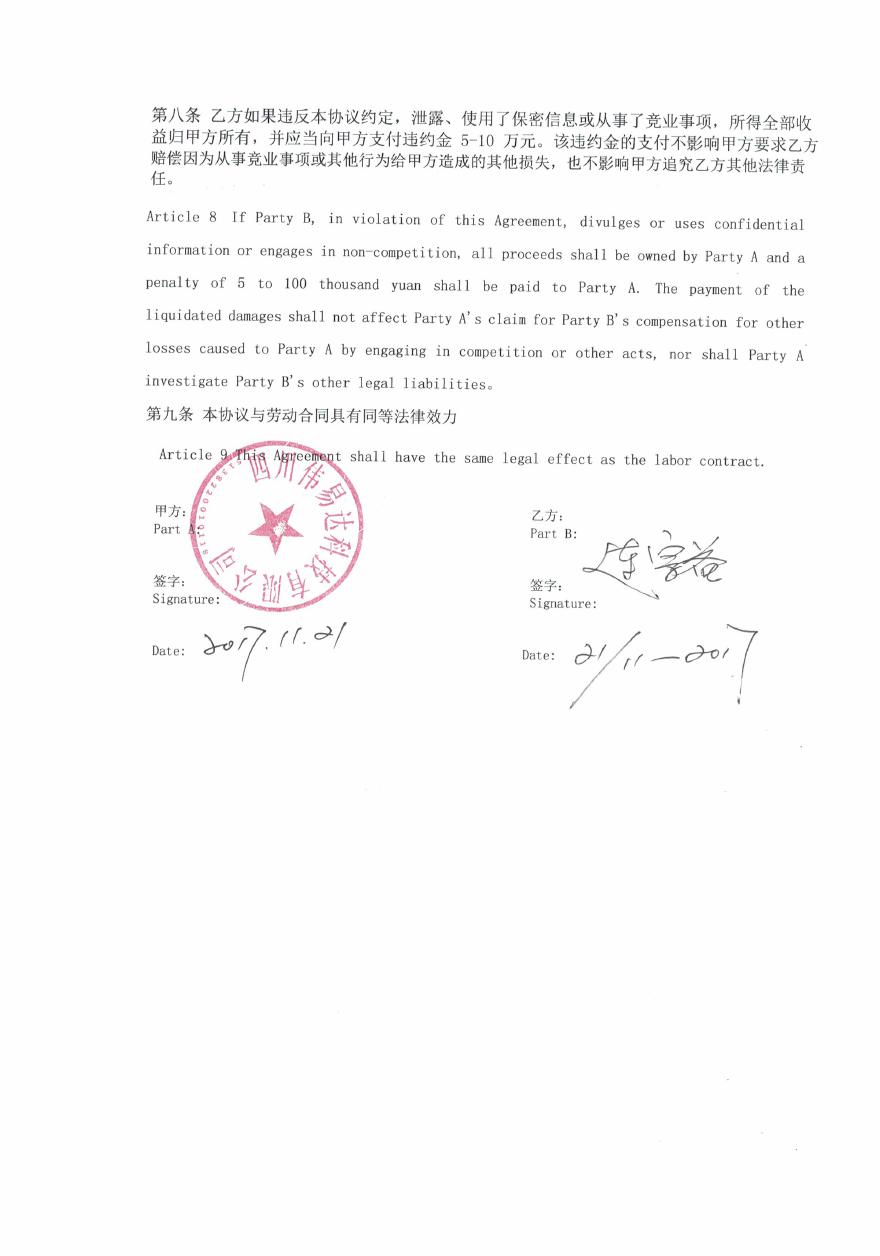
Exhibit 10.2.1
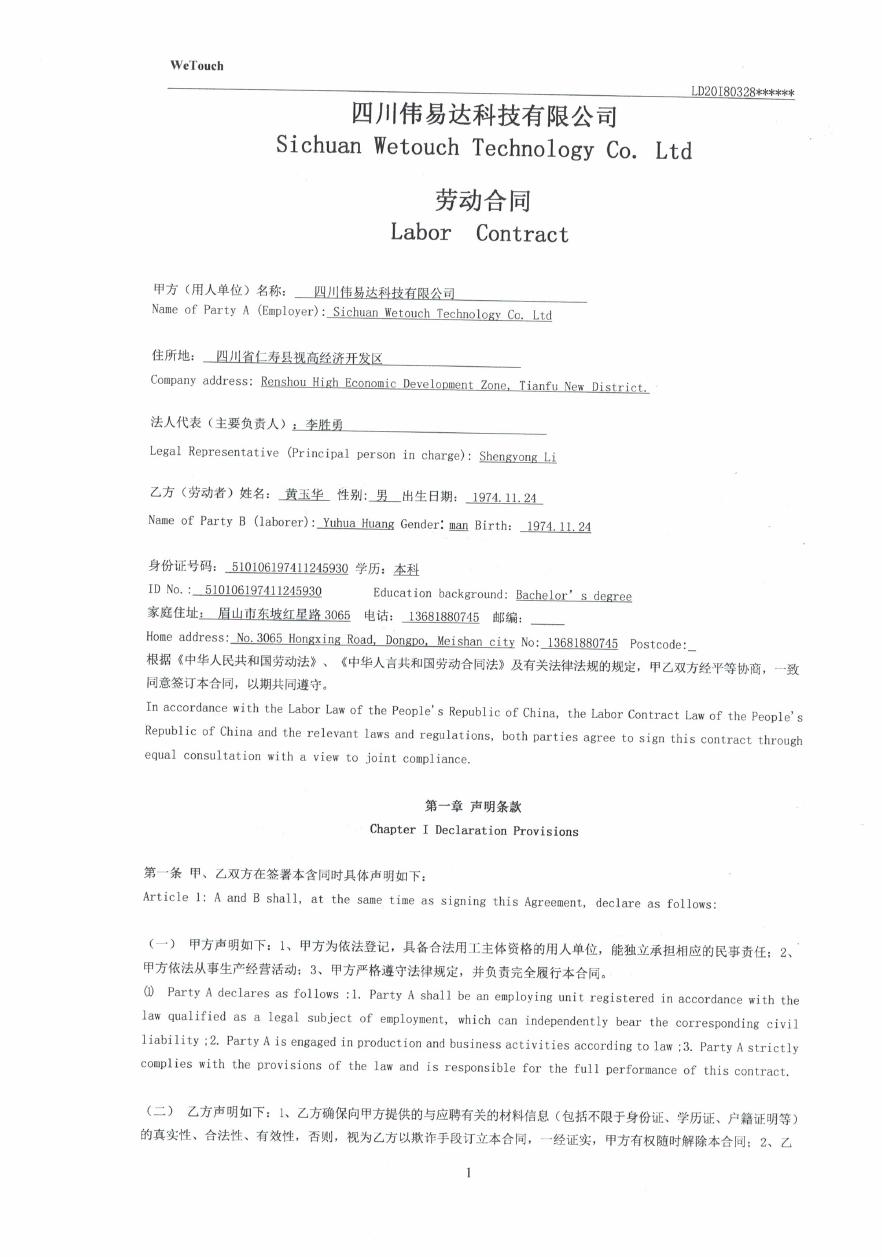
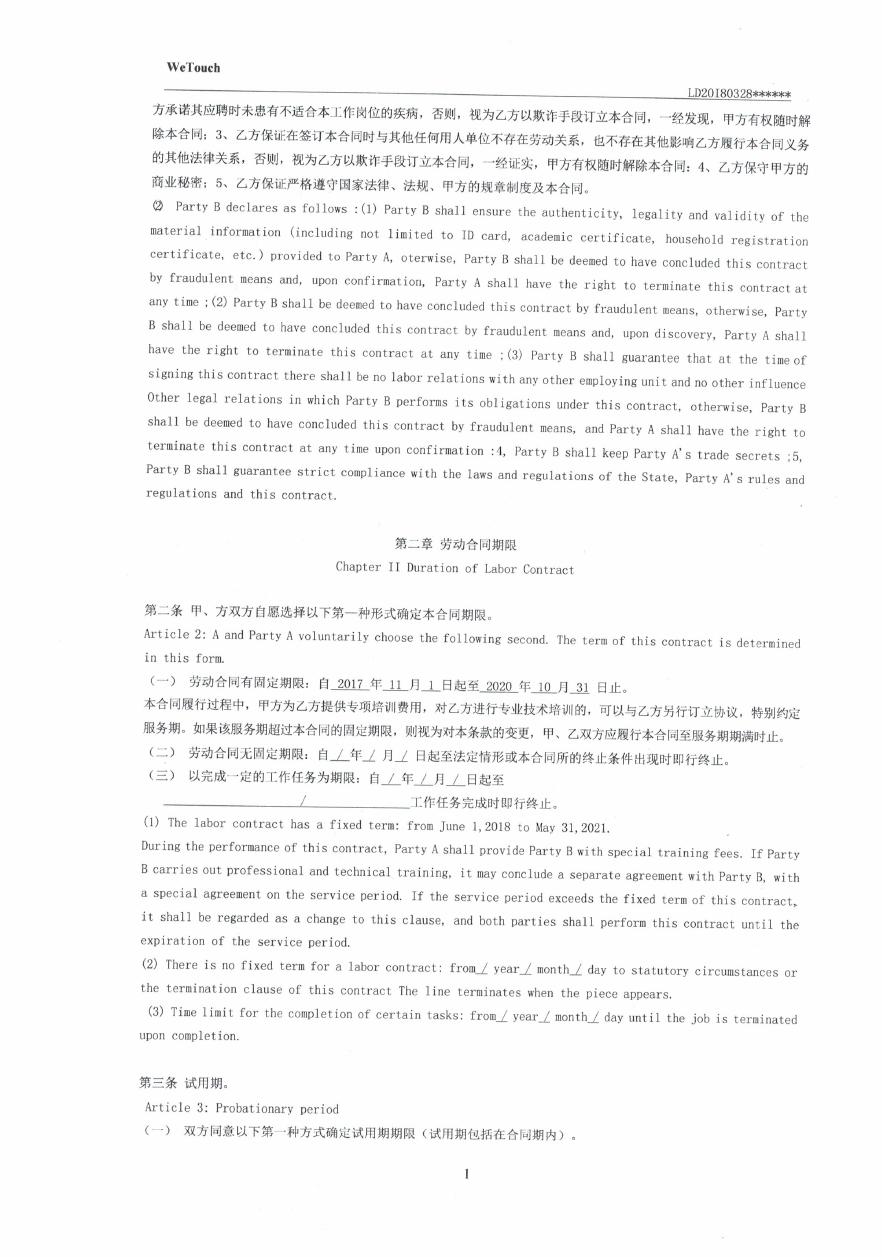
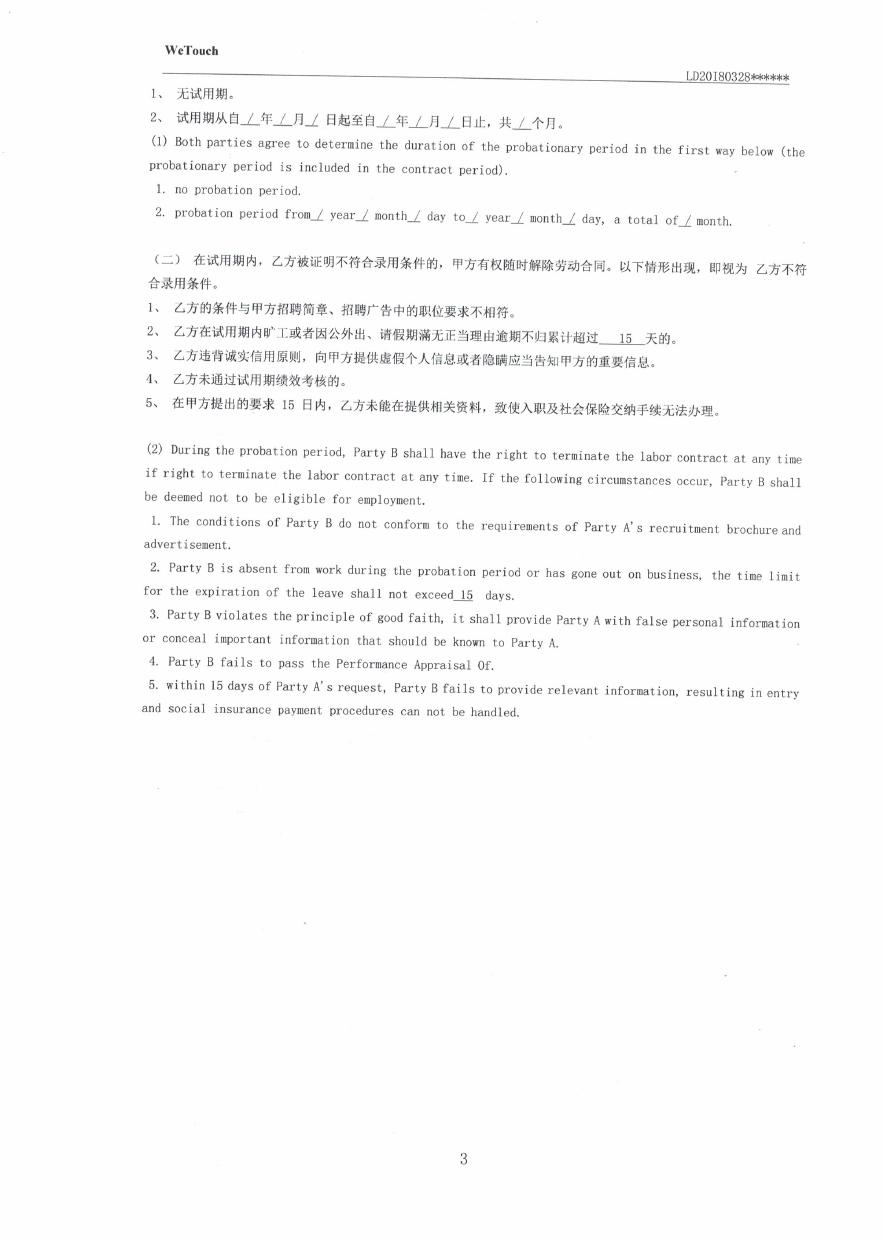
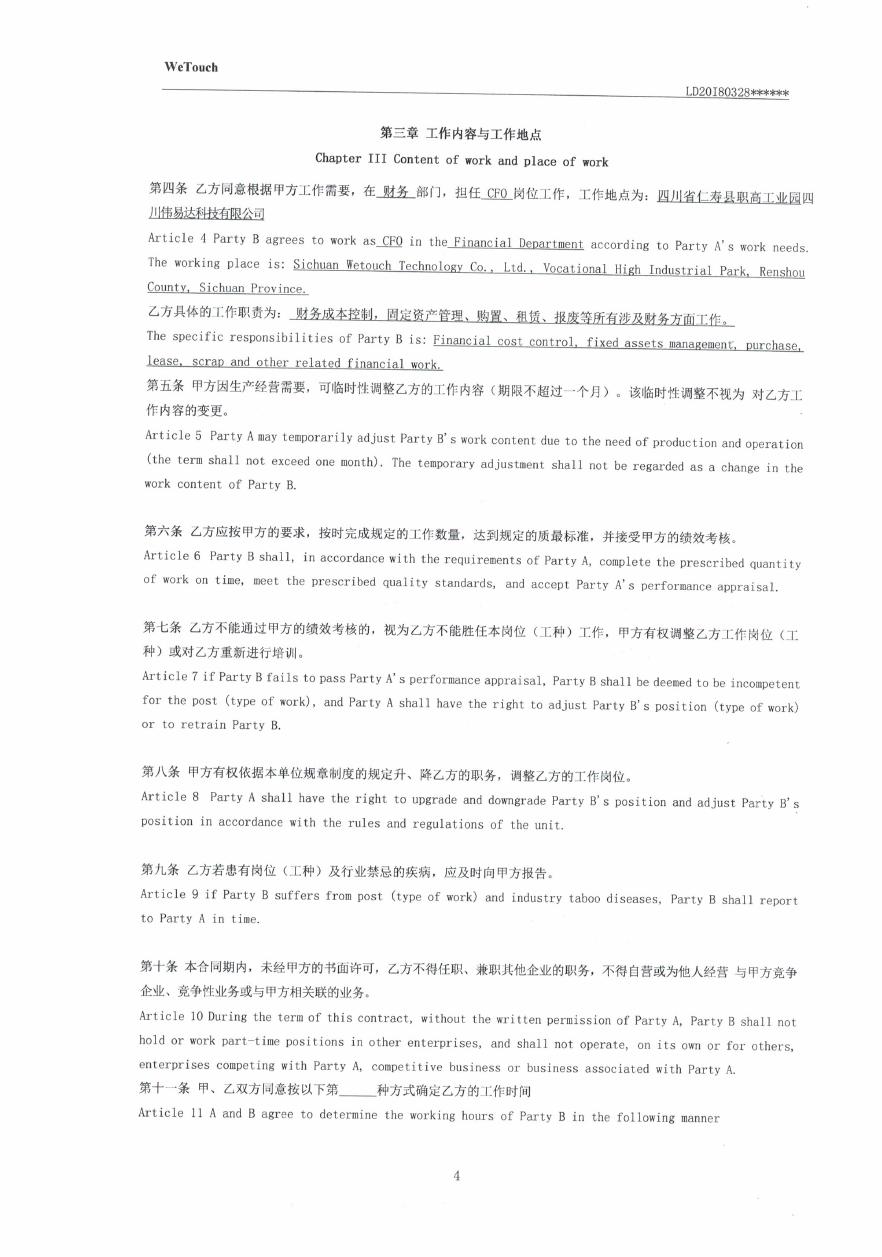
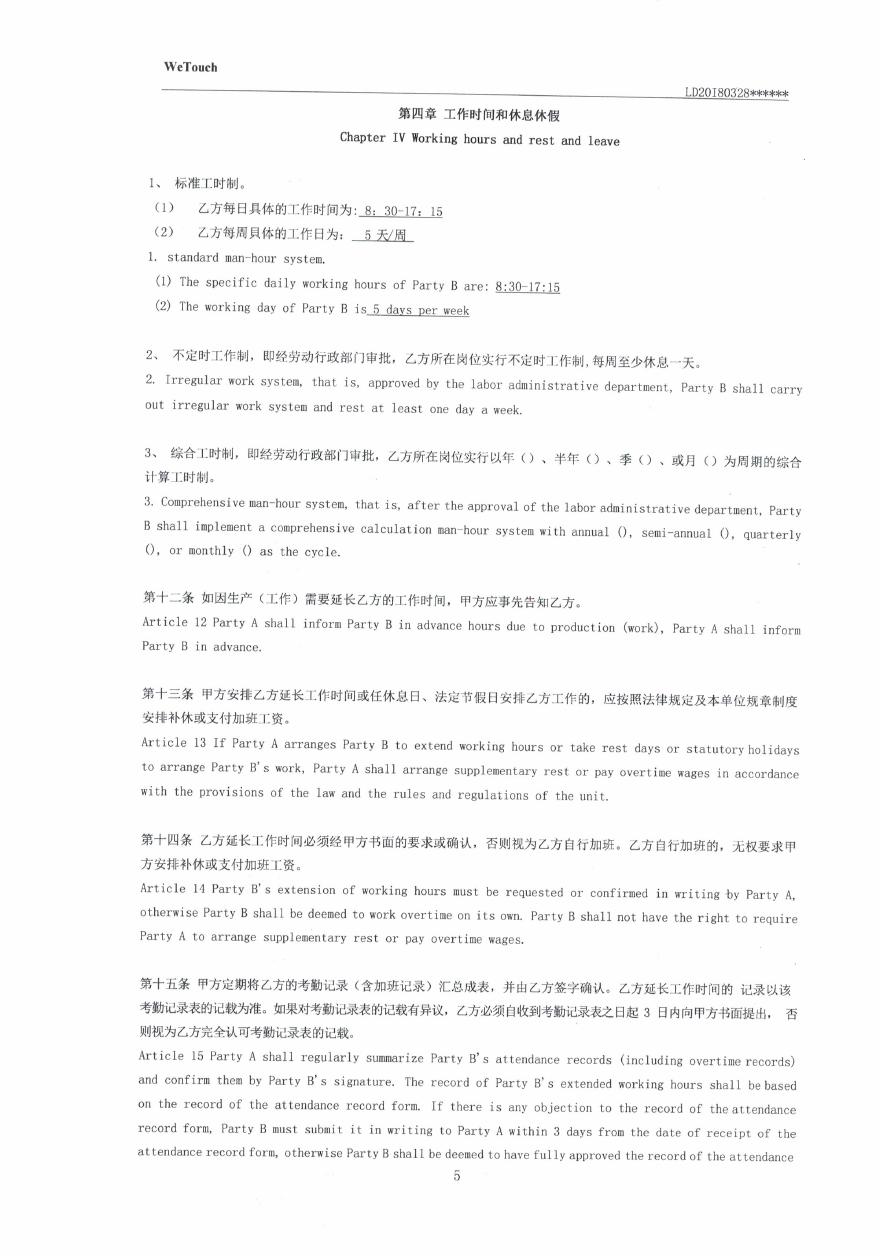
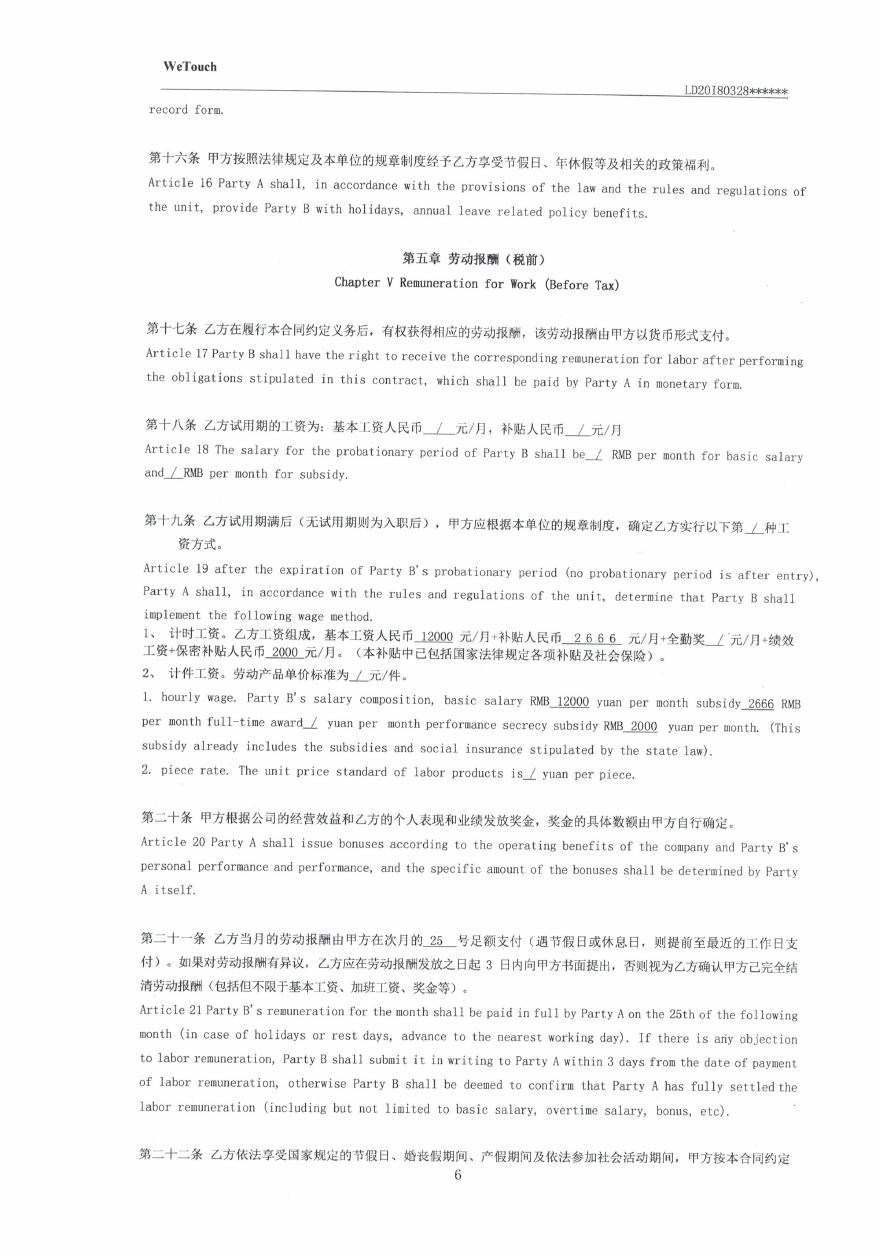
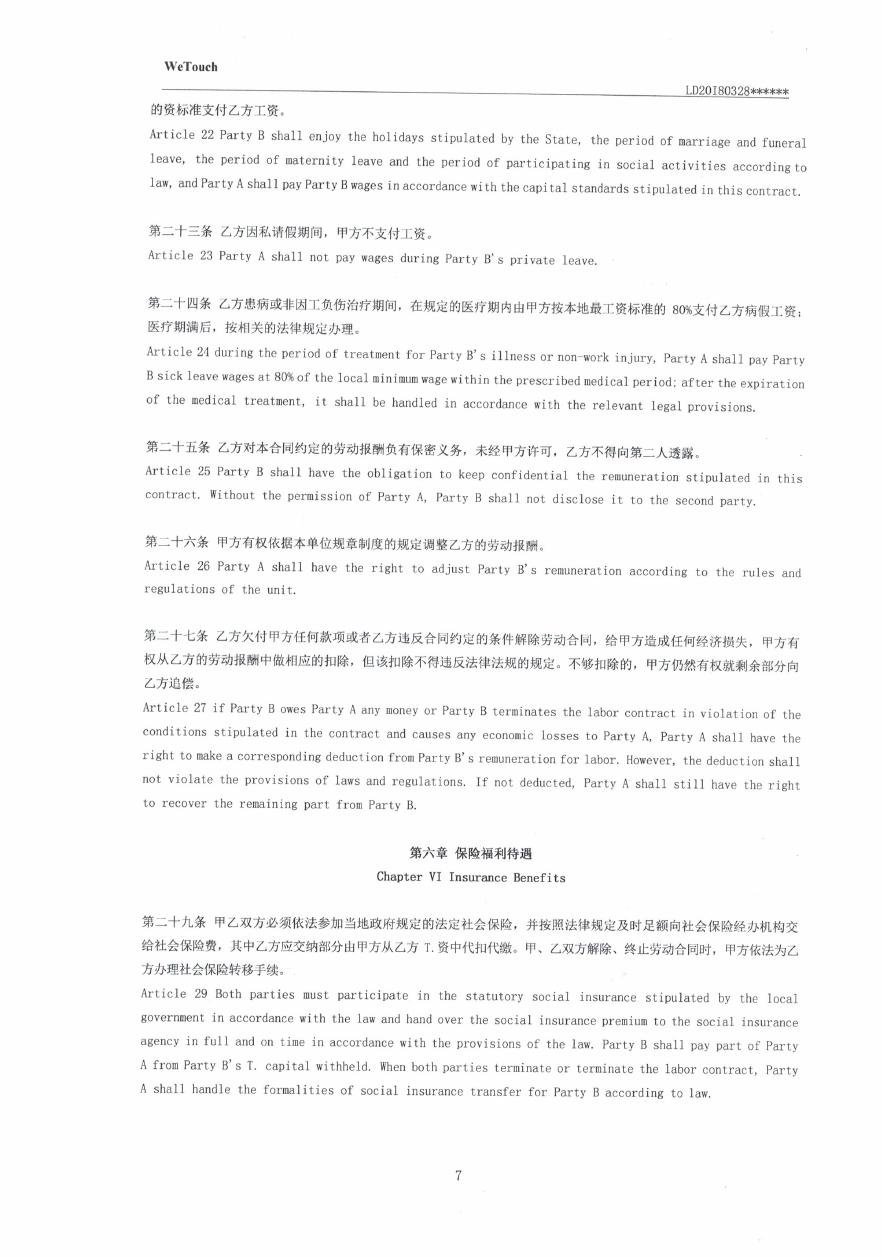
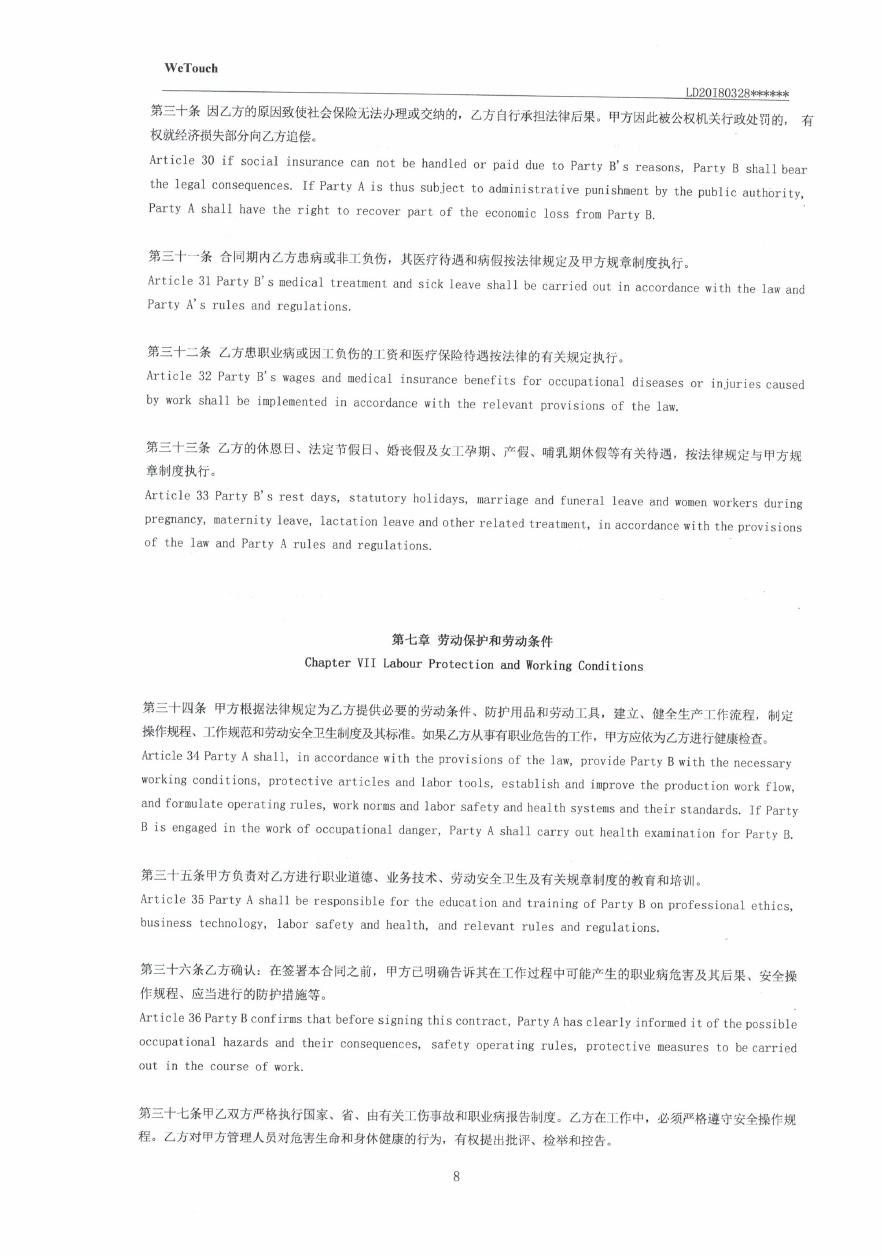
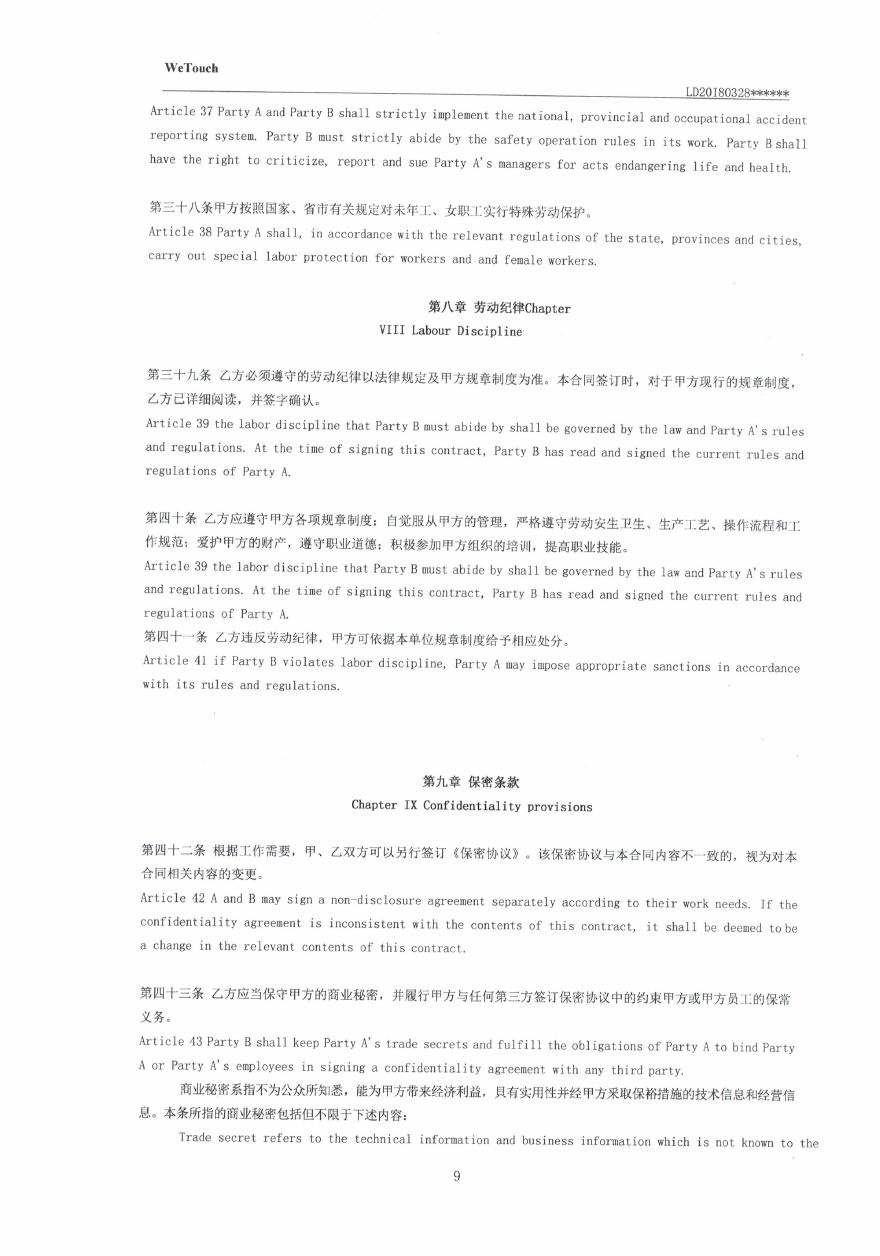
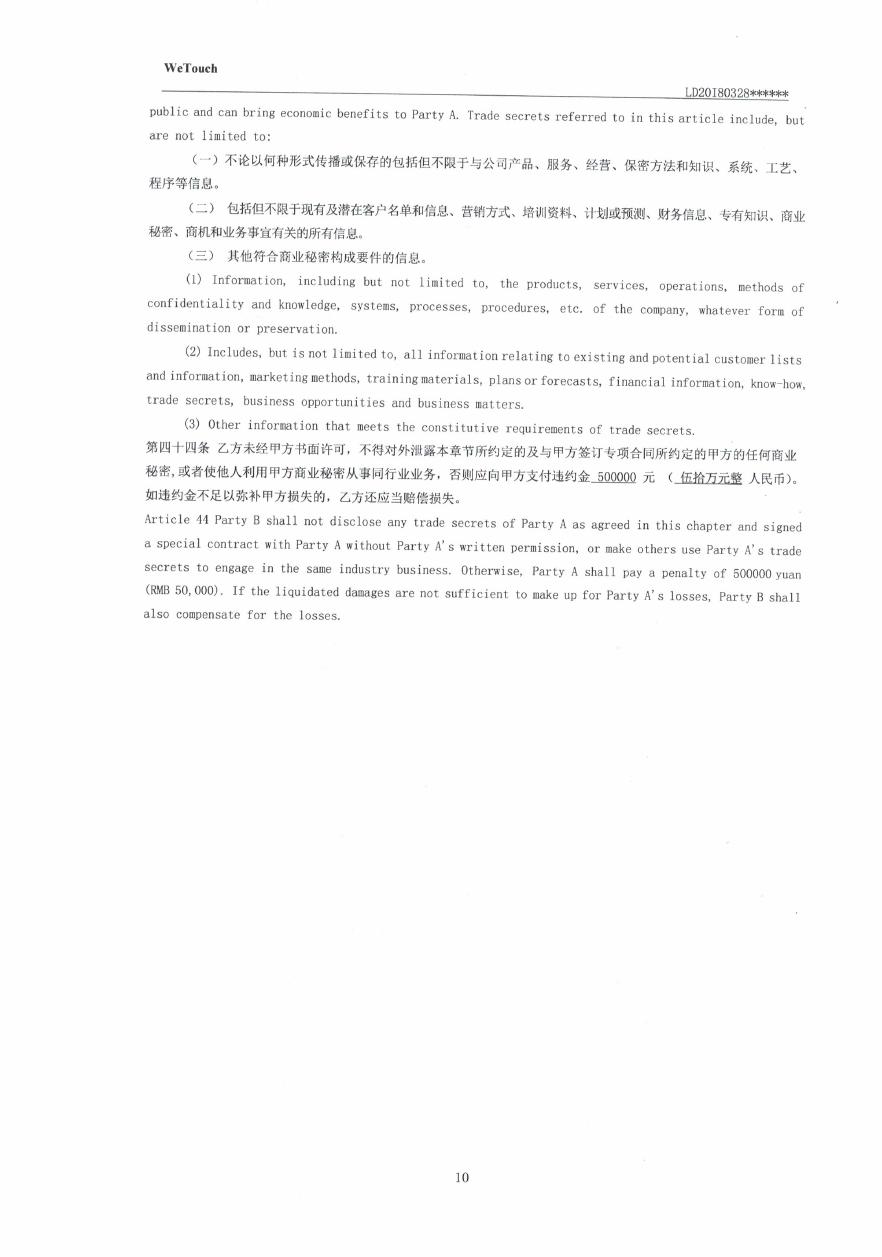
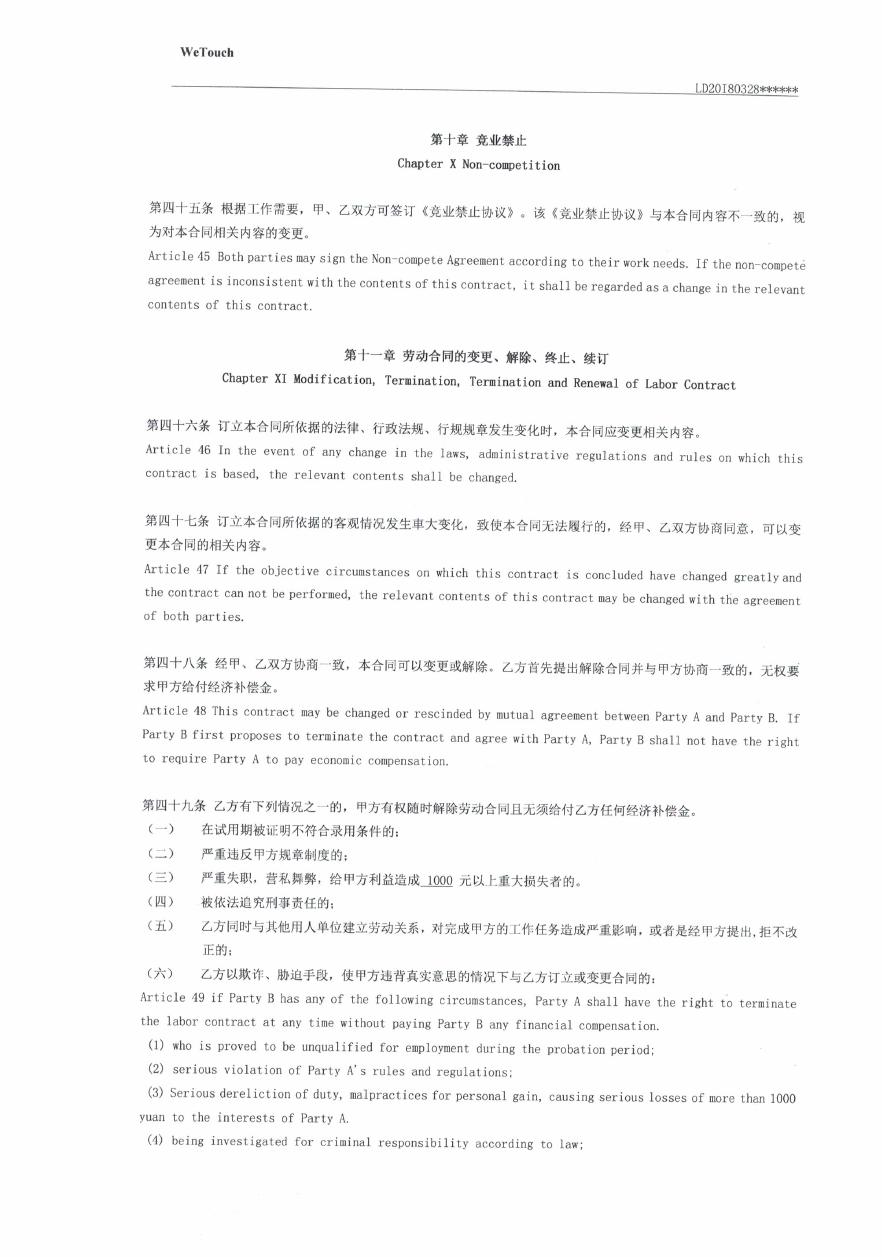

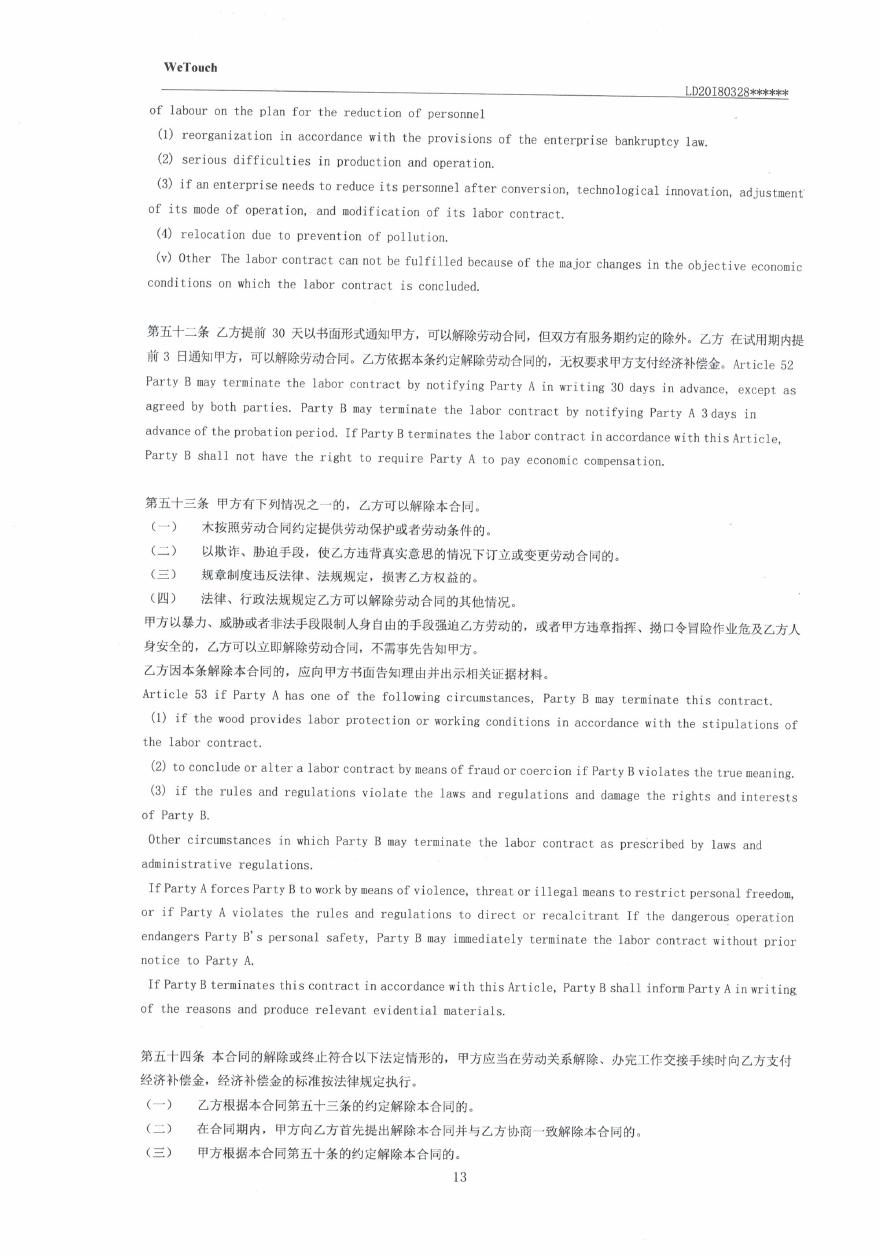
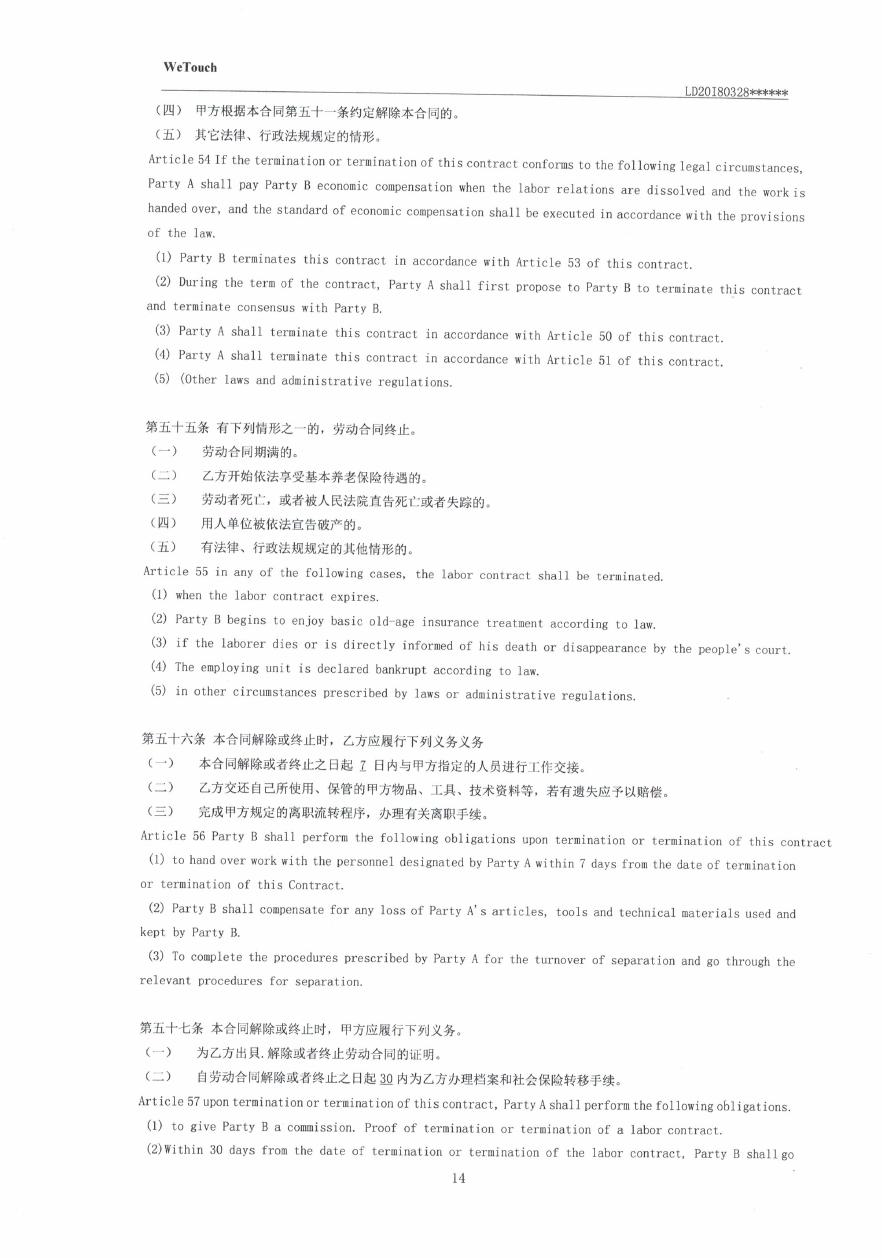
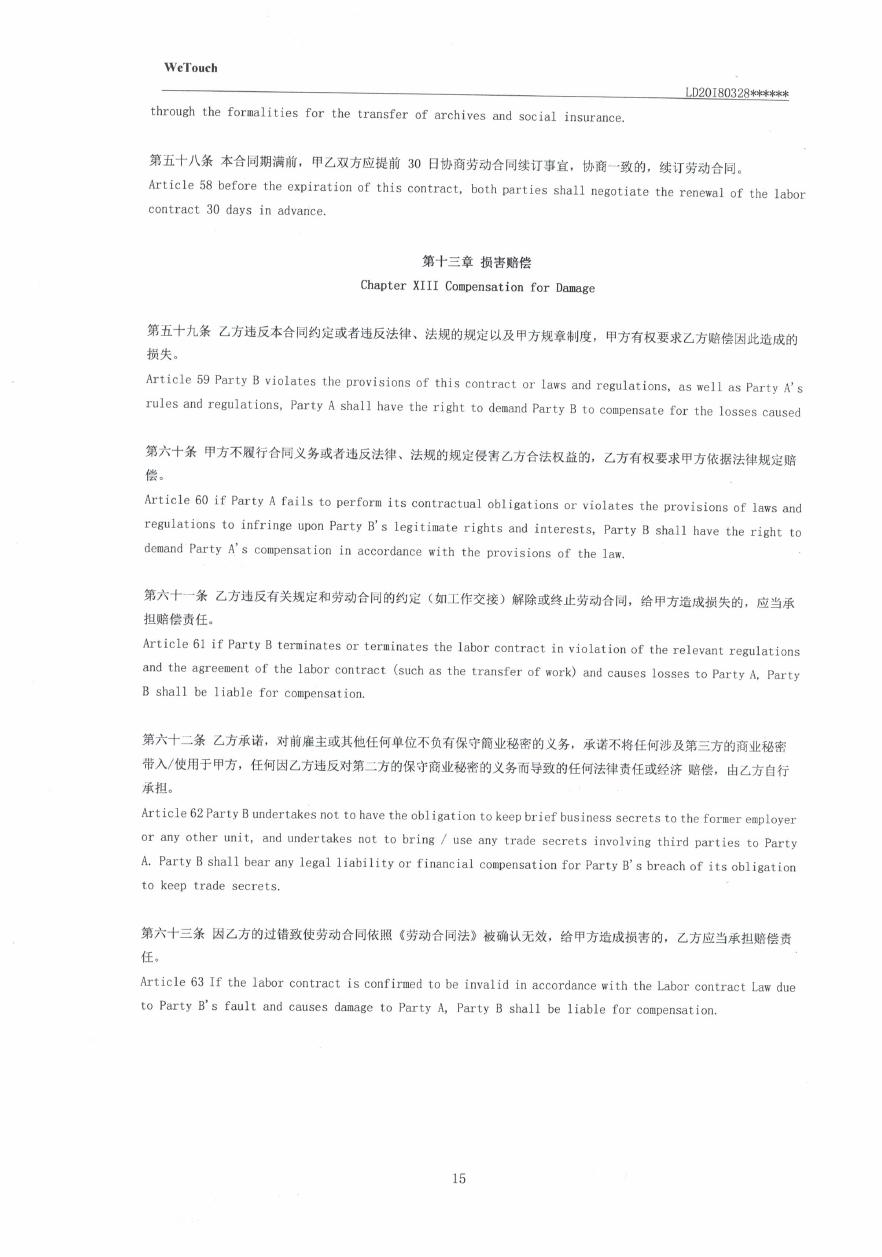
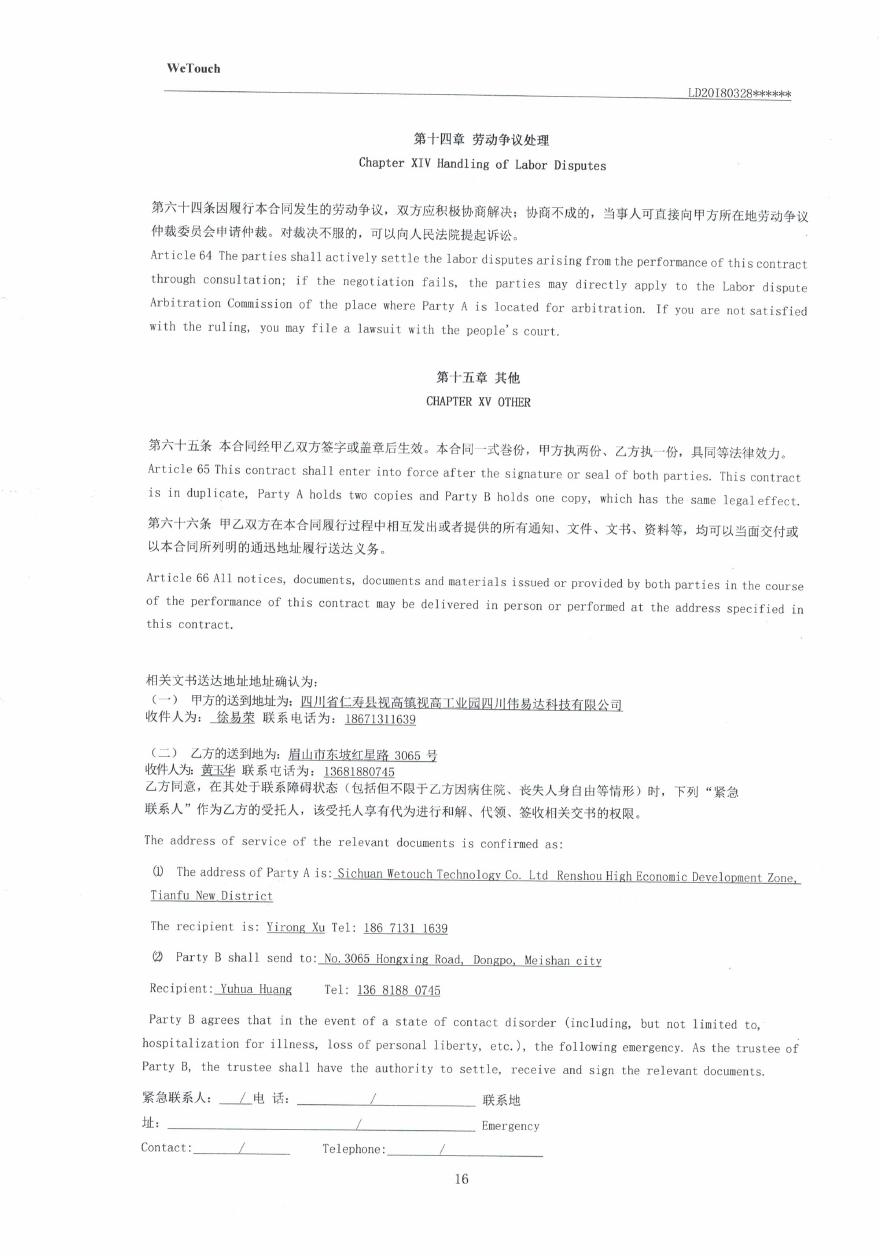
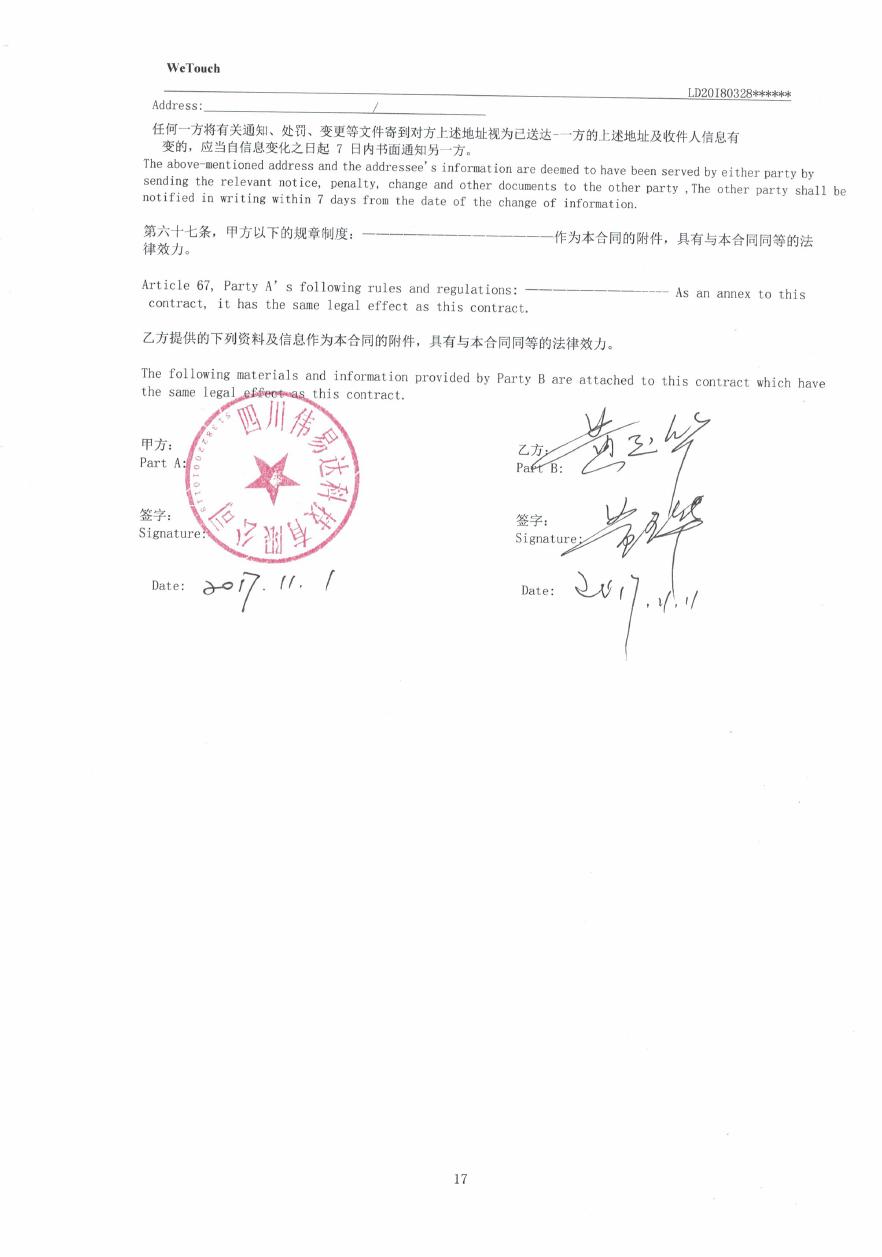
Exhibit 10.2.2
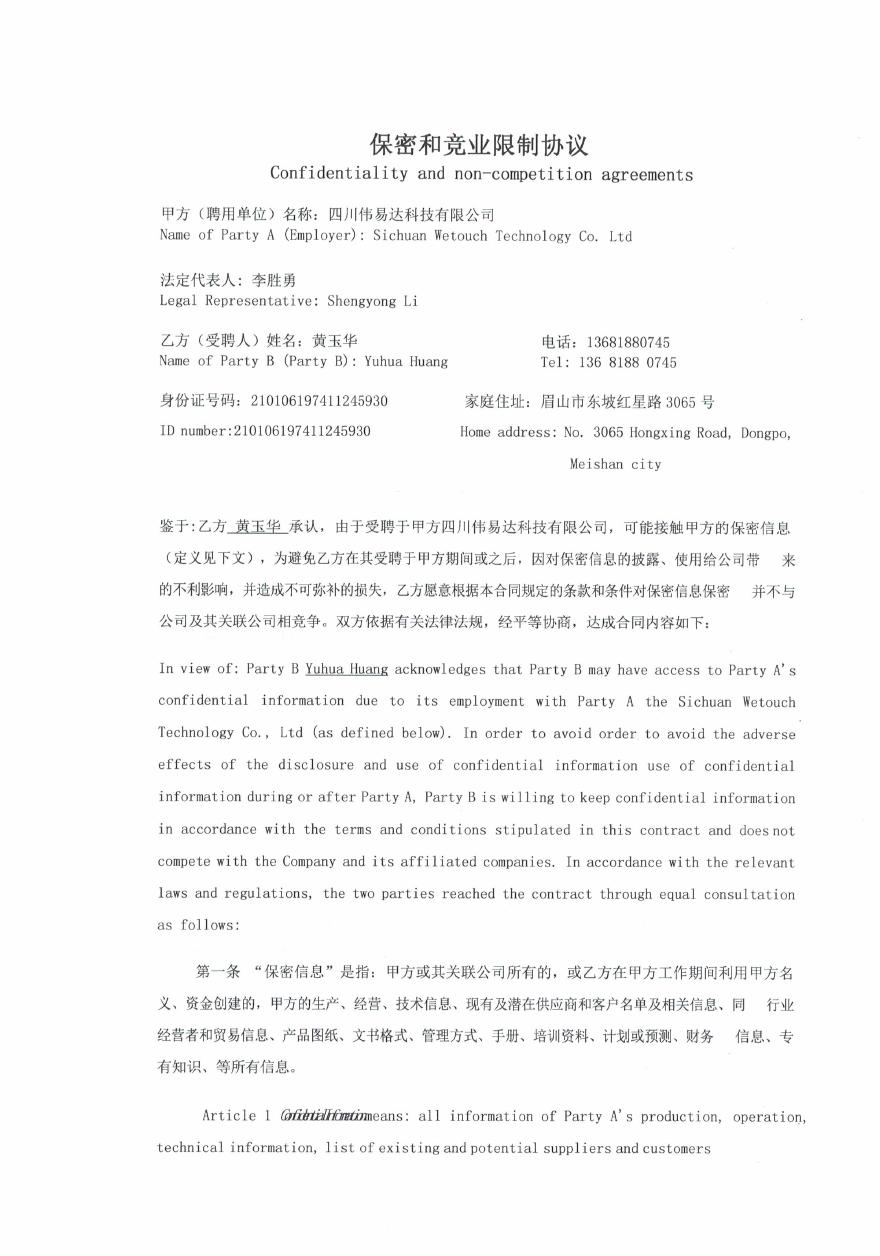
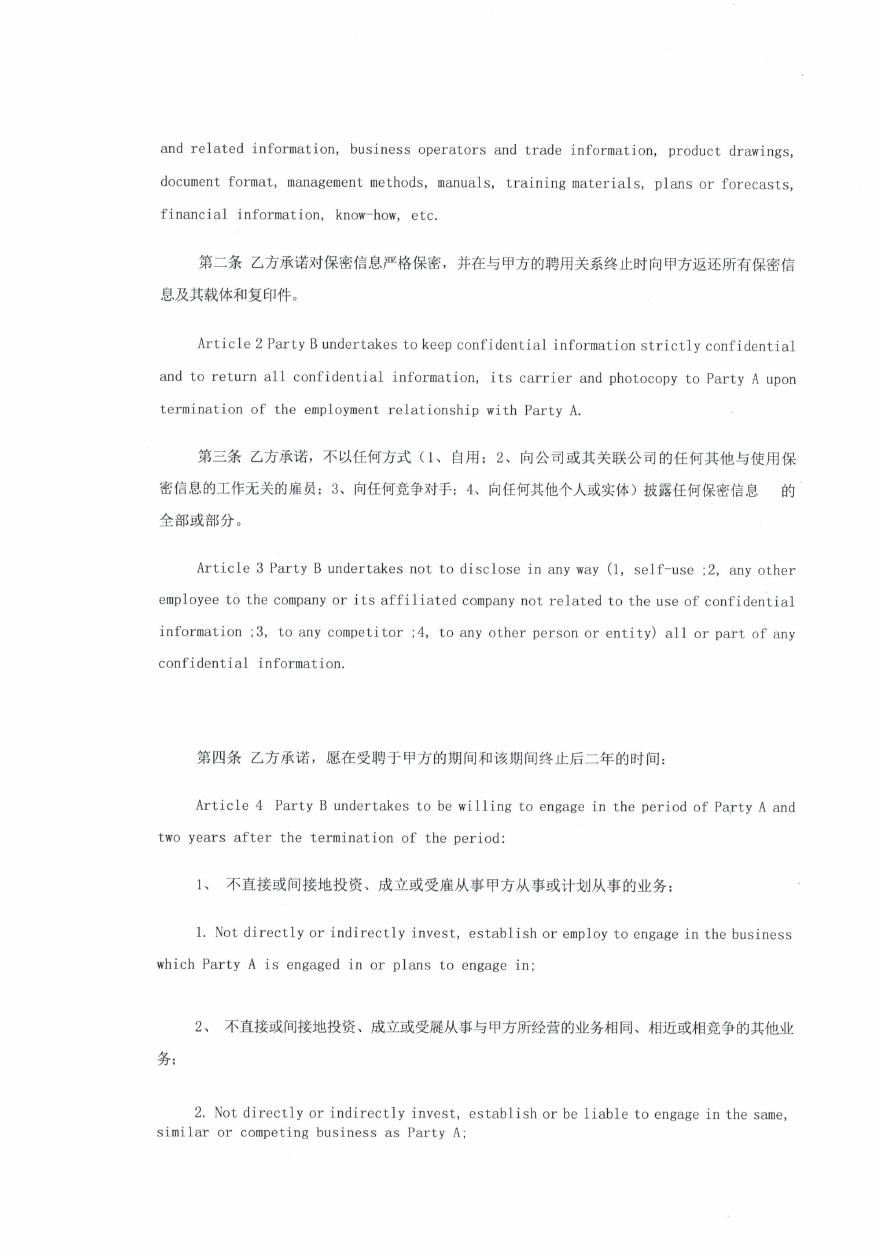
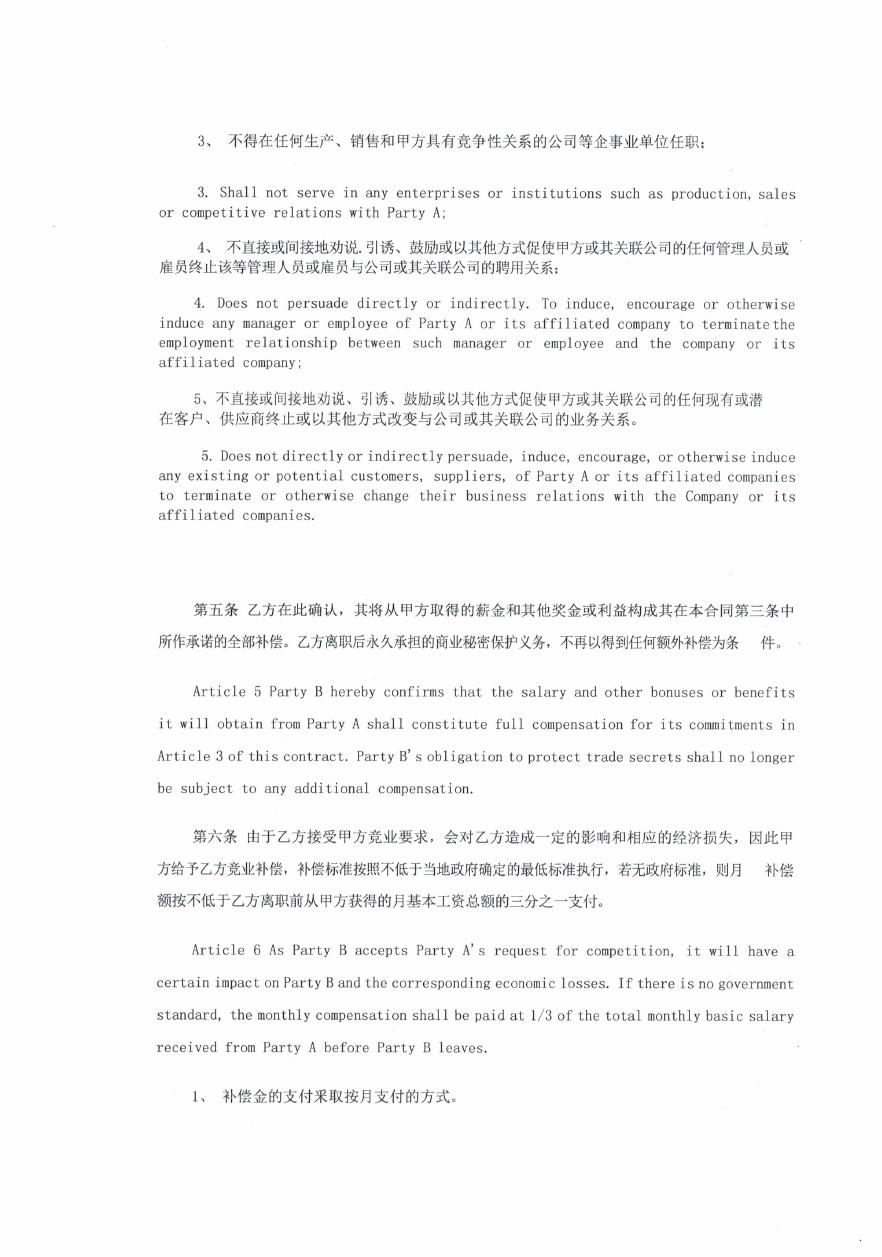
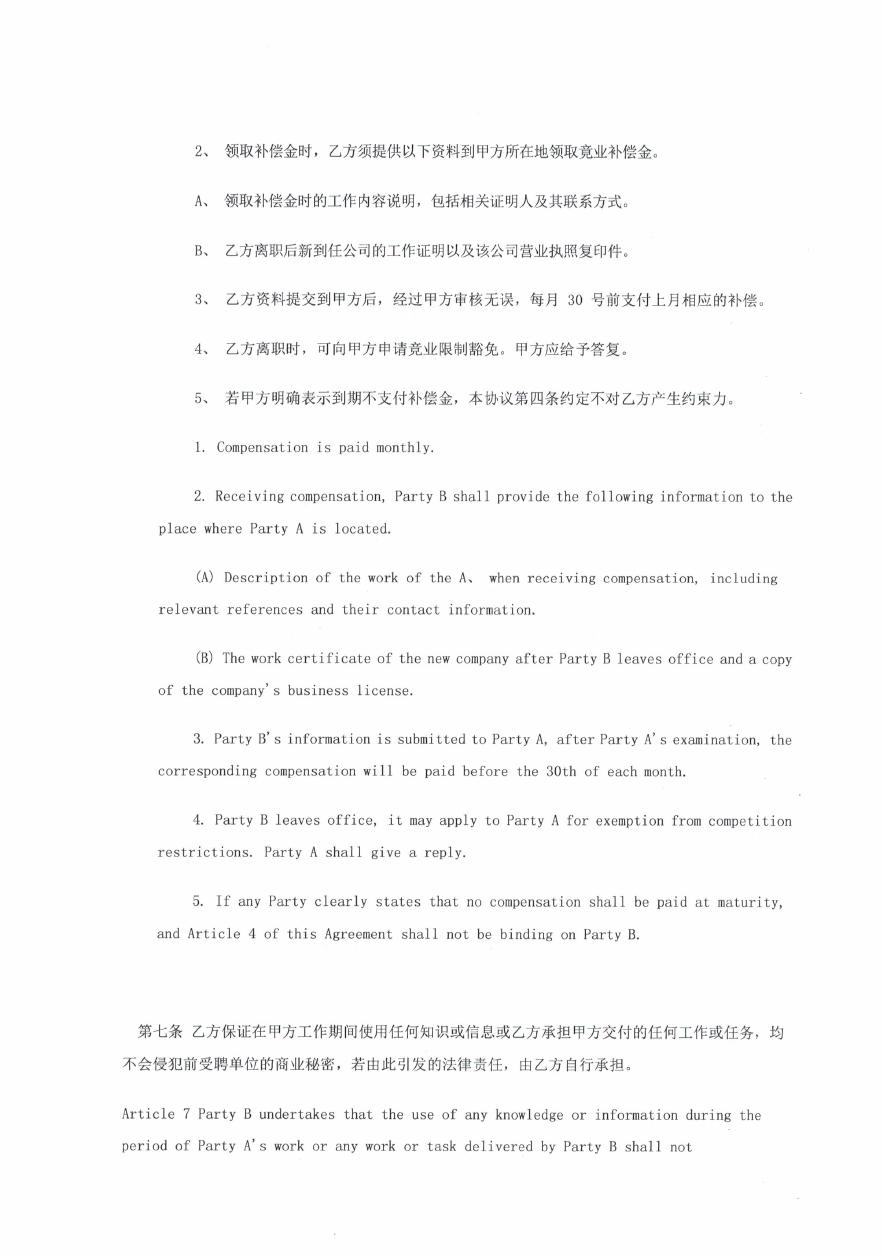
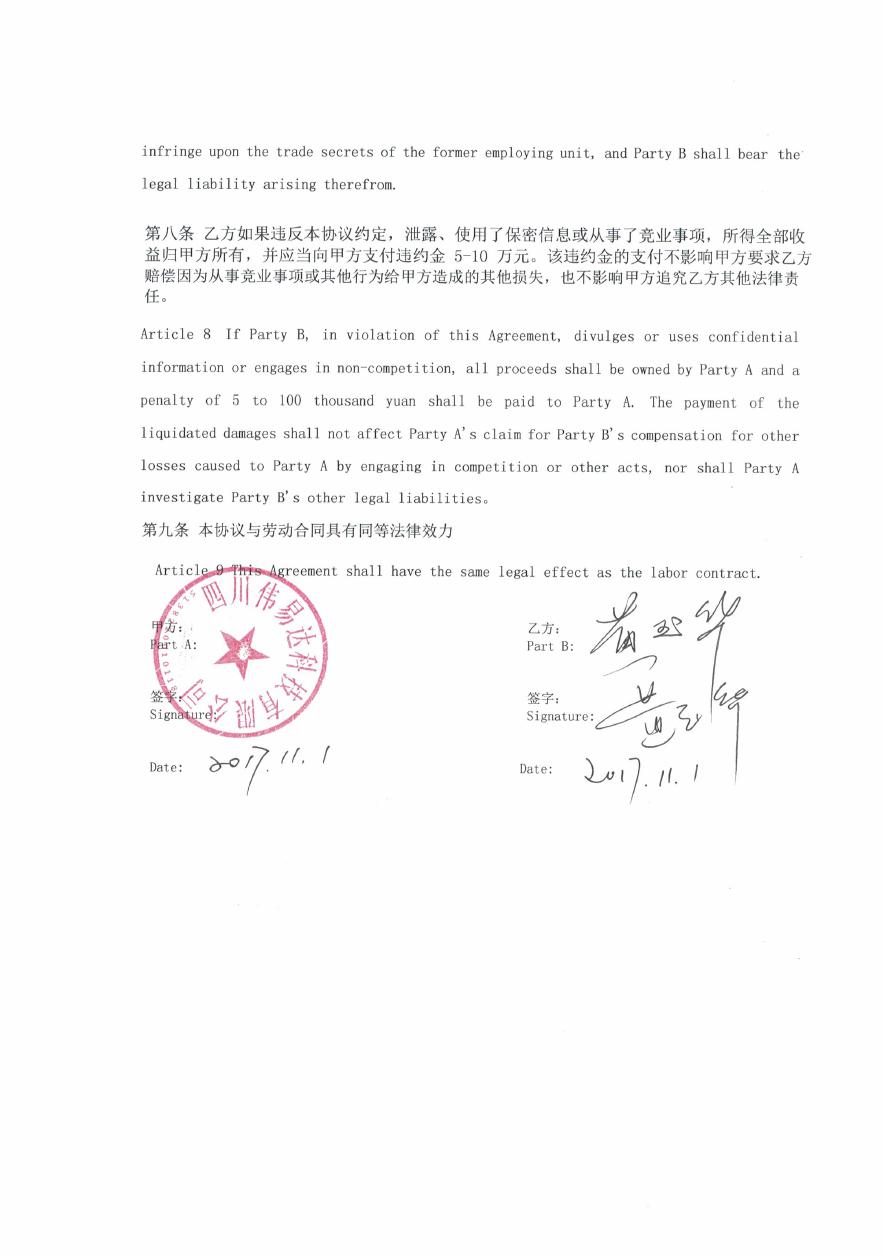
Exhibit 10.3.1
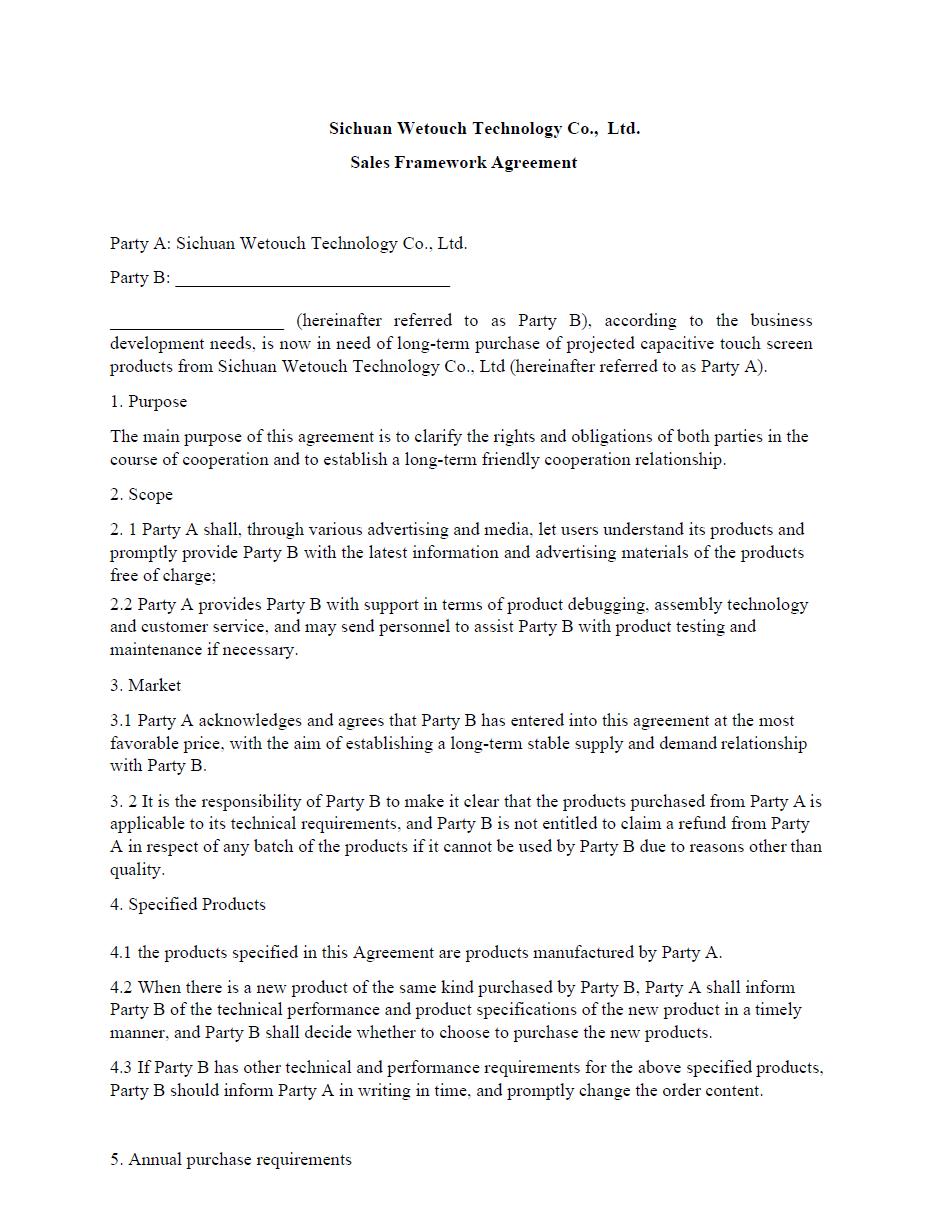
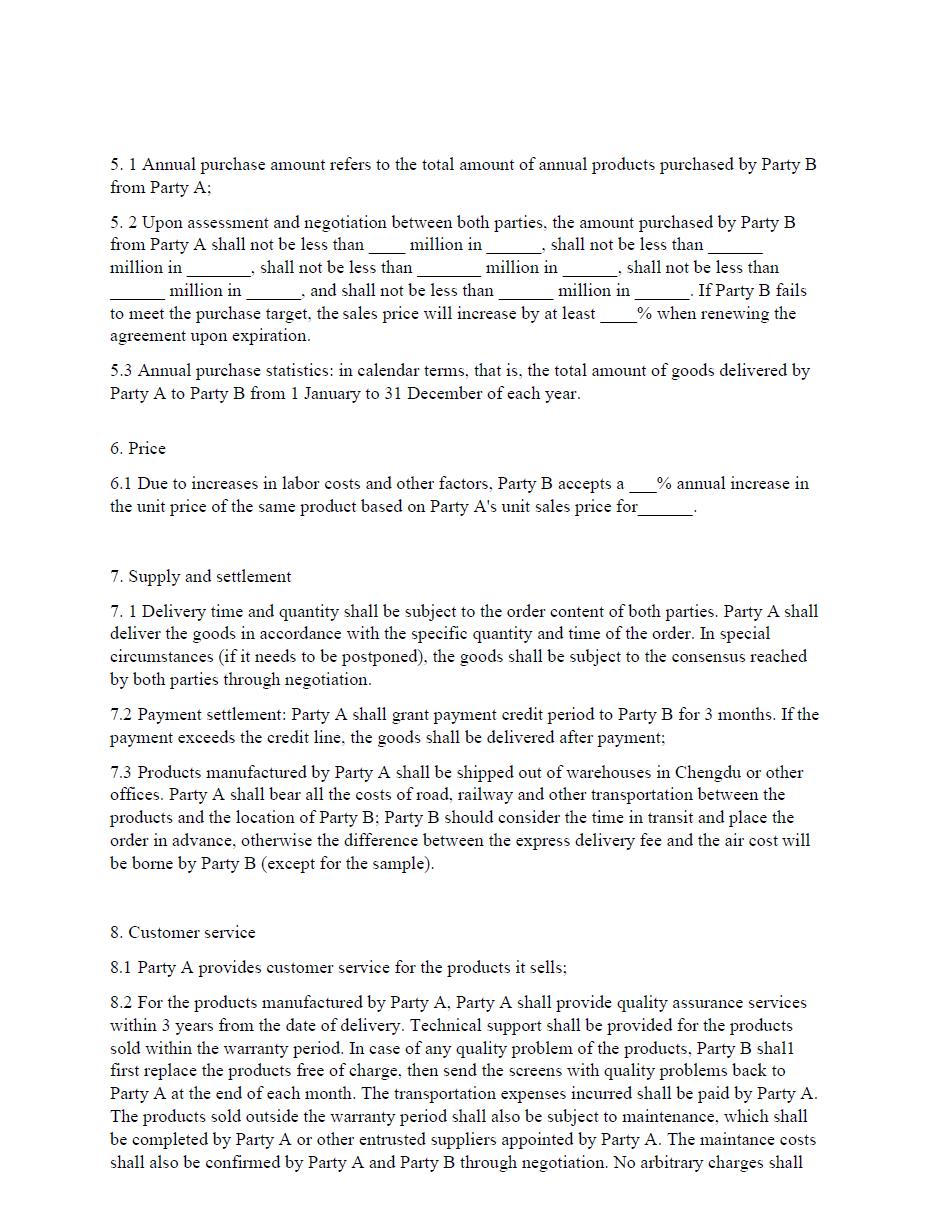
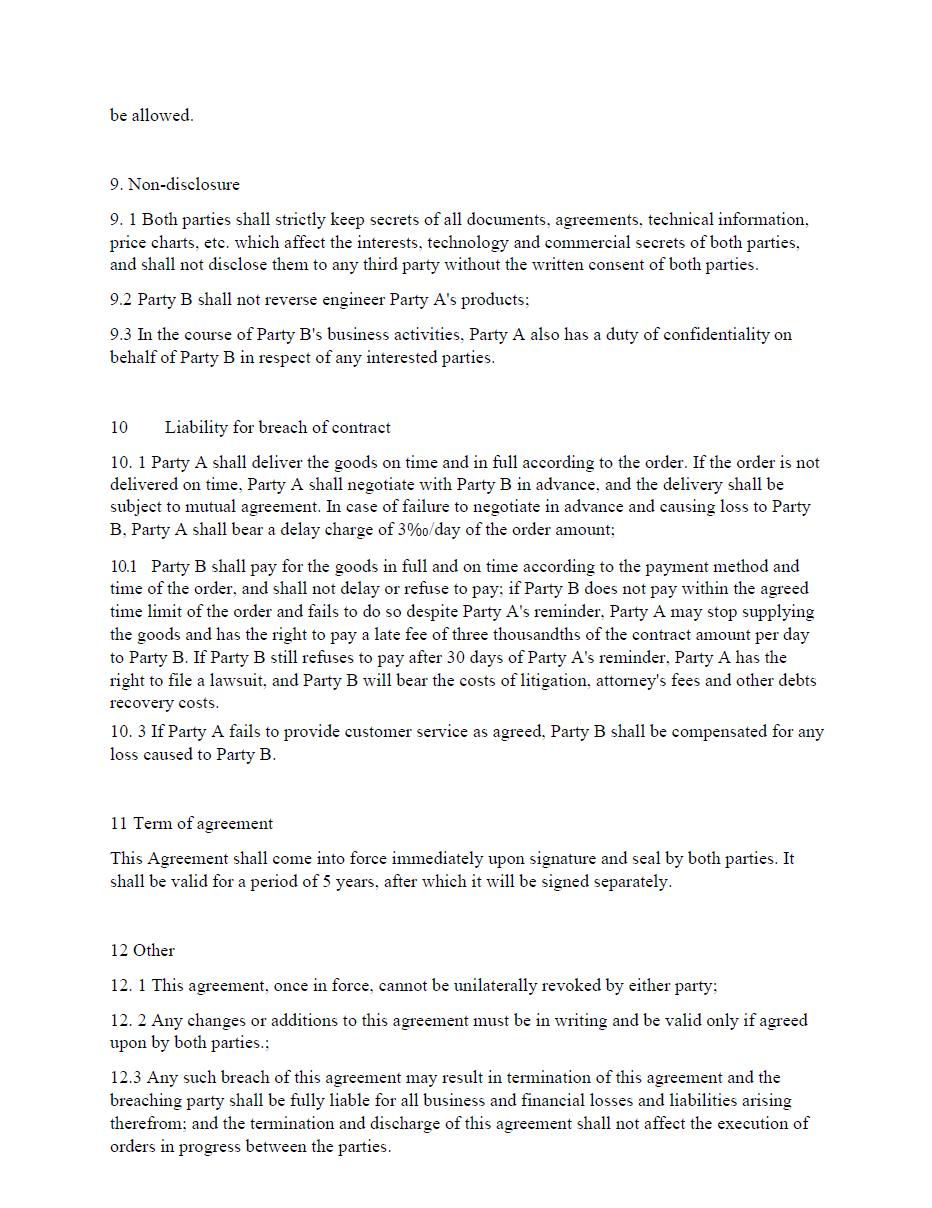
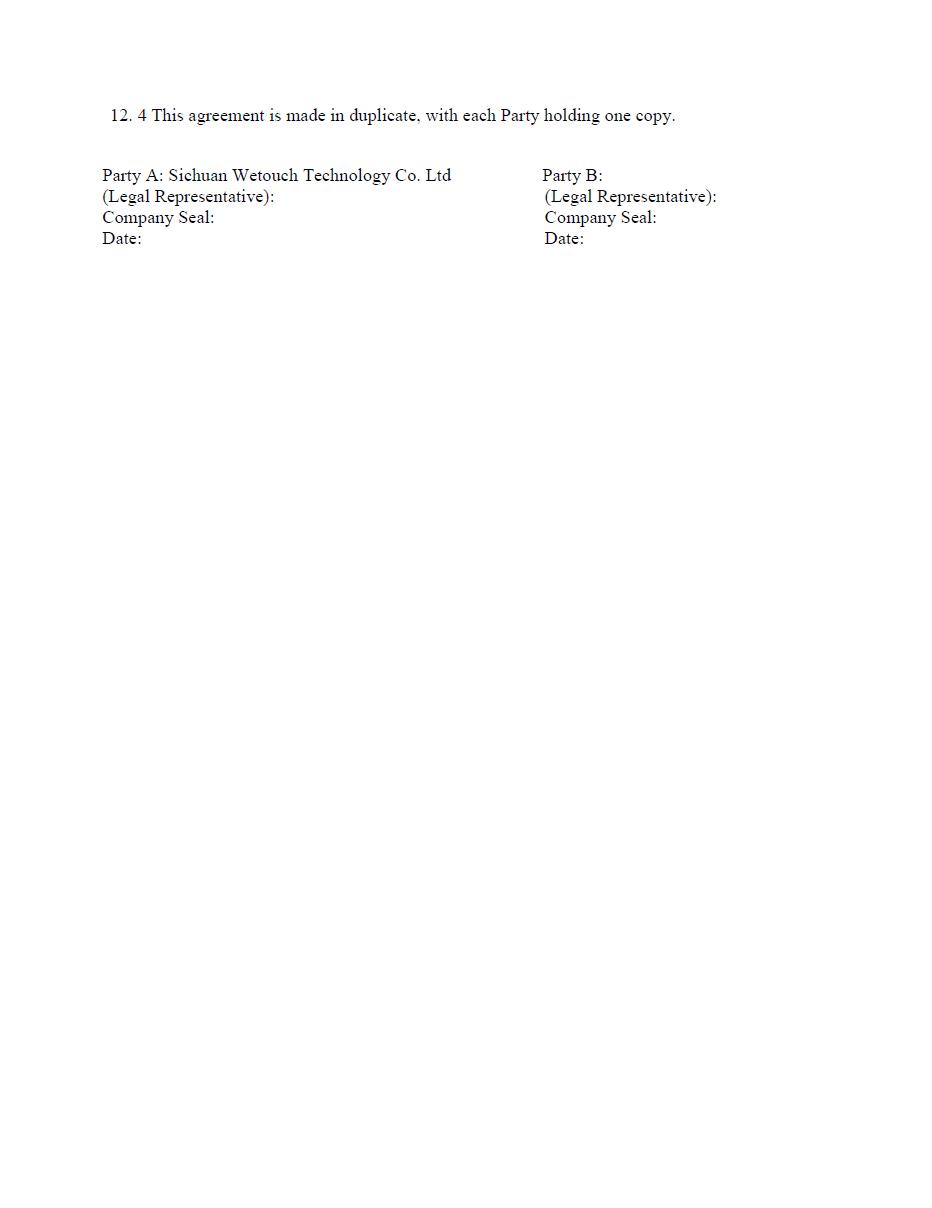
Exhibit
10.4
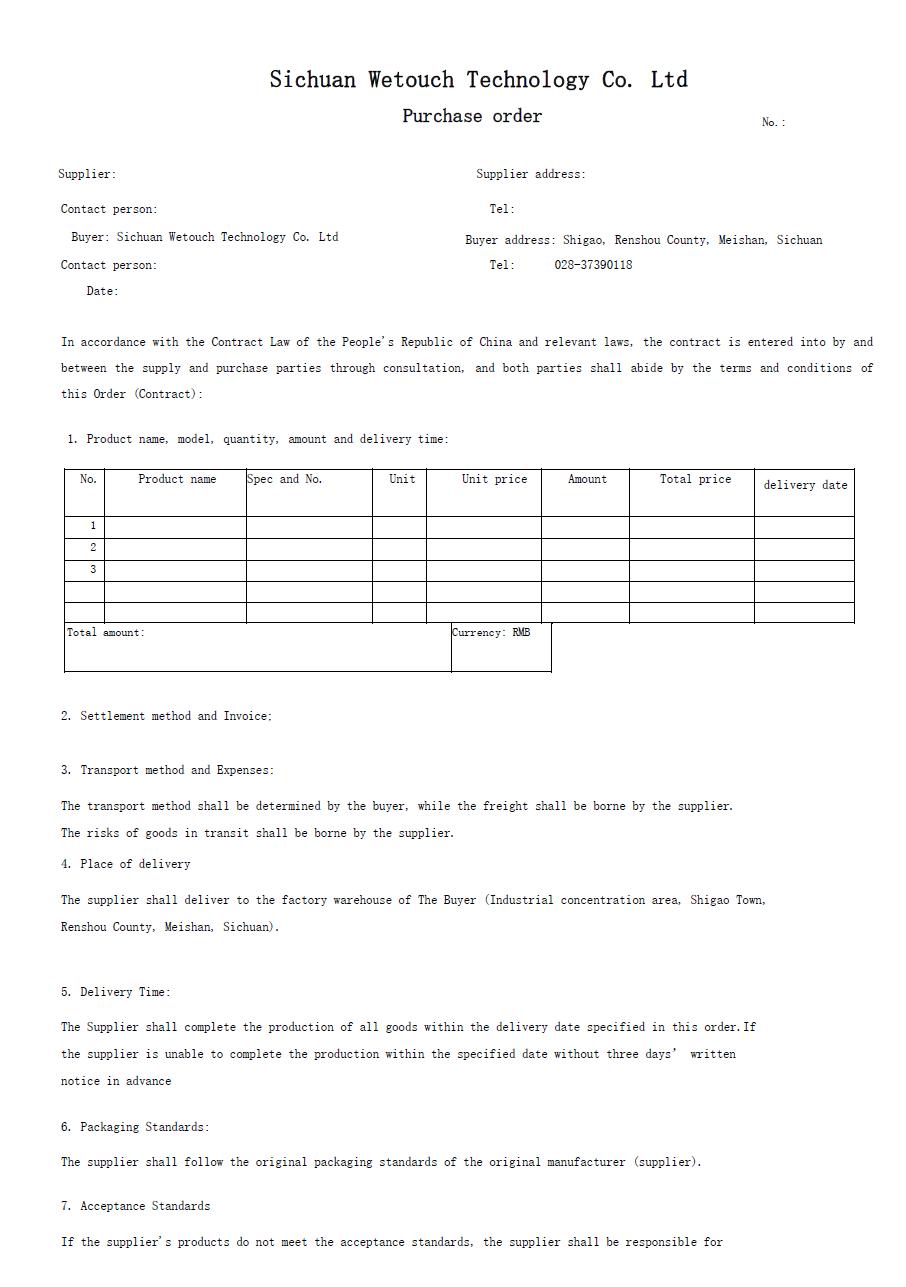
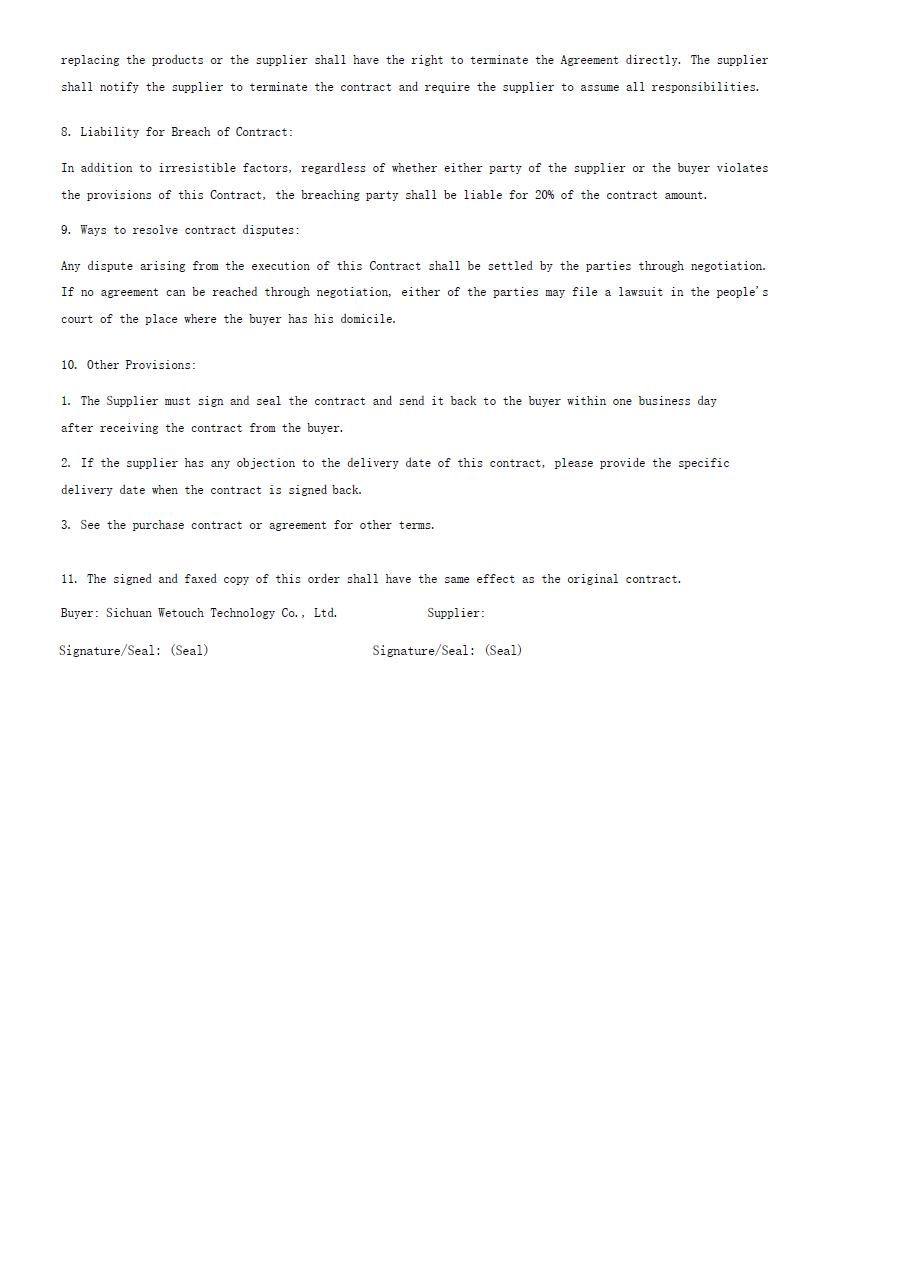
Exhibit
21.1
List
of Subsidiaries of Wetouch Technology Inc.
| Name of Subsidiaries |
Jurisdiction | |
| Wetouch Holding Group Limited |
British Virgin Islands | |
| Hong Kong Wetouch Electronics Technology Limited |
Hong Kong | |
| Sichuan Wetouch Technology Co., Ltd |
The People’s Republic of China |




